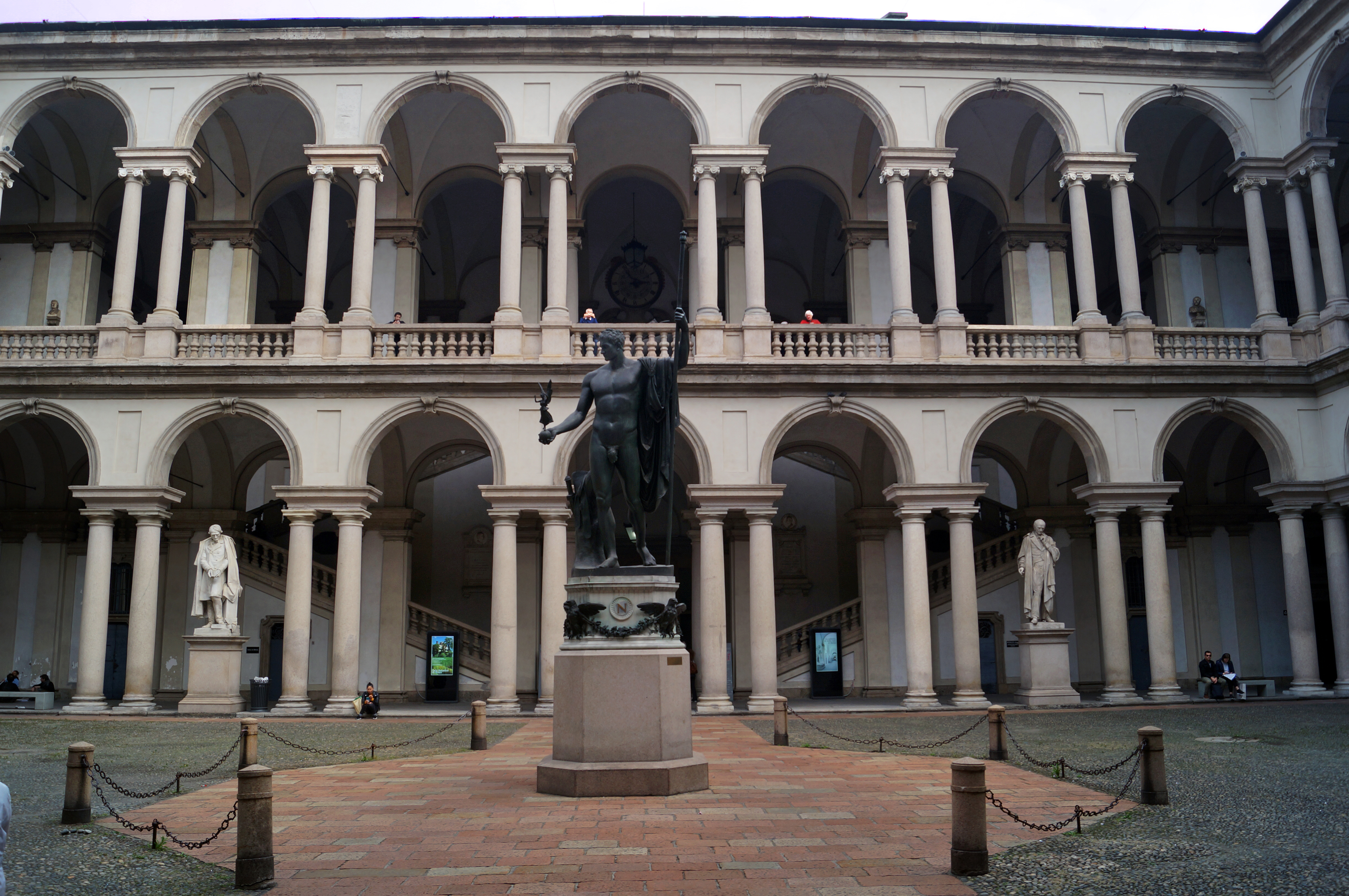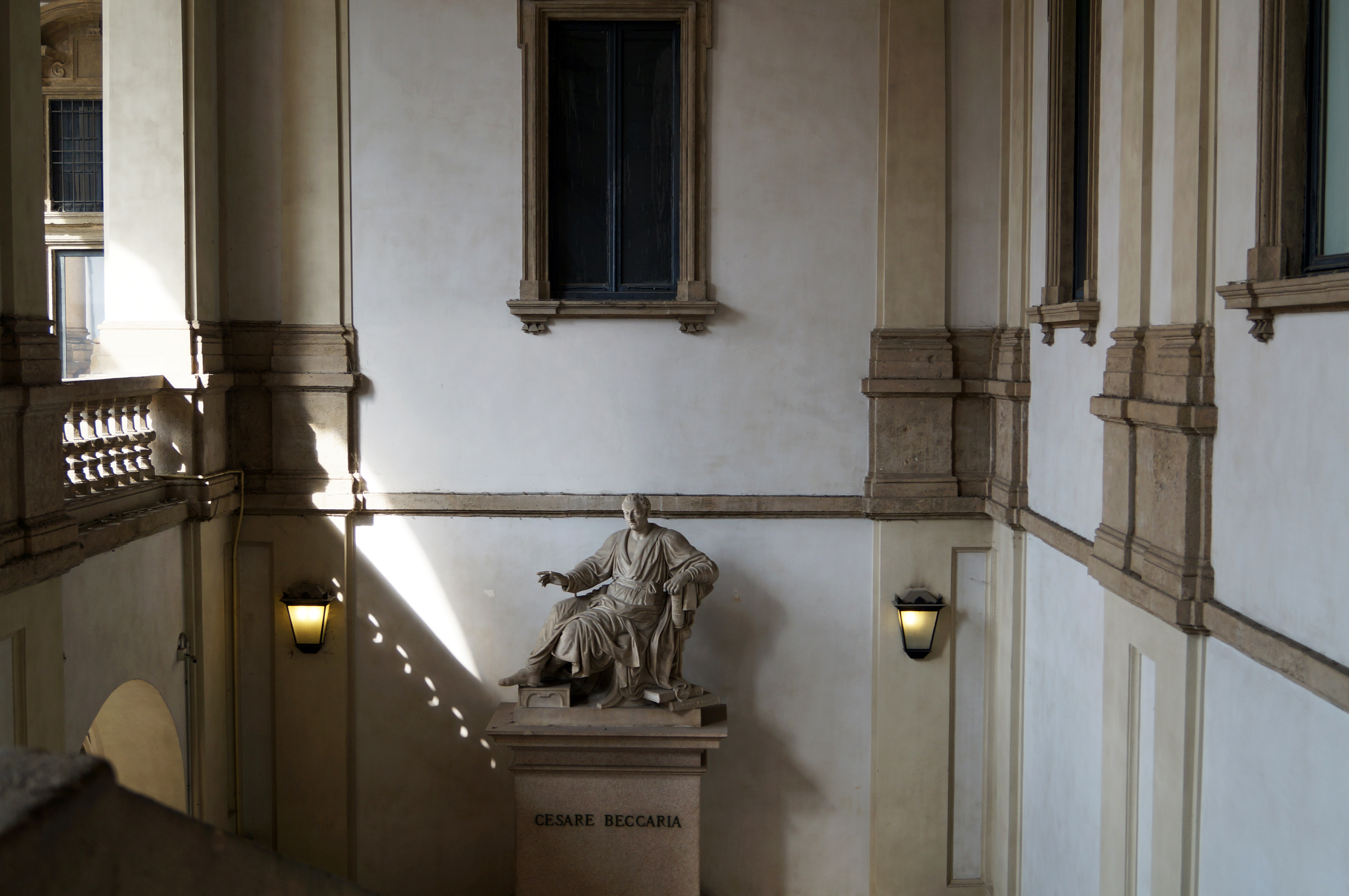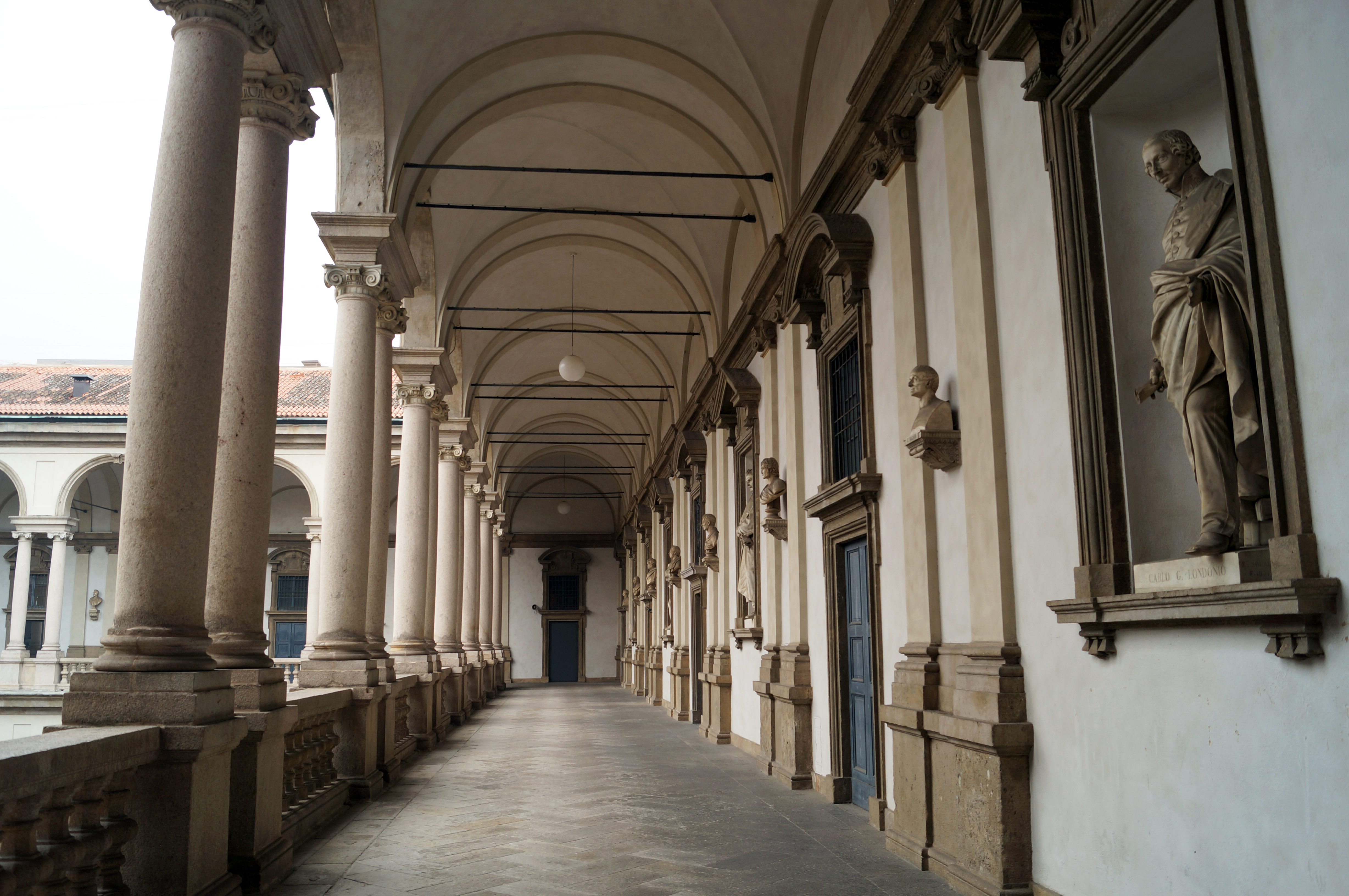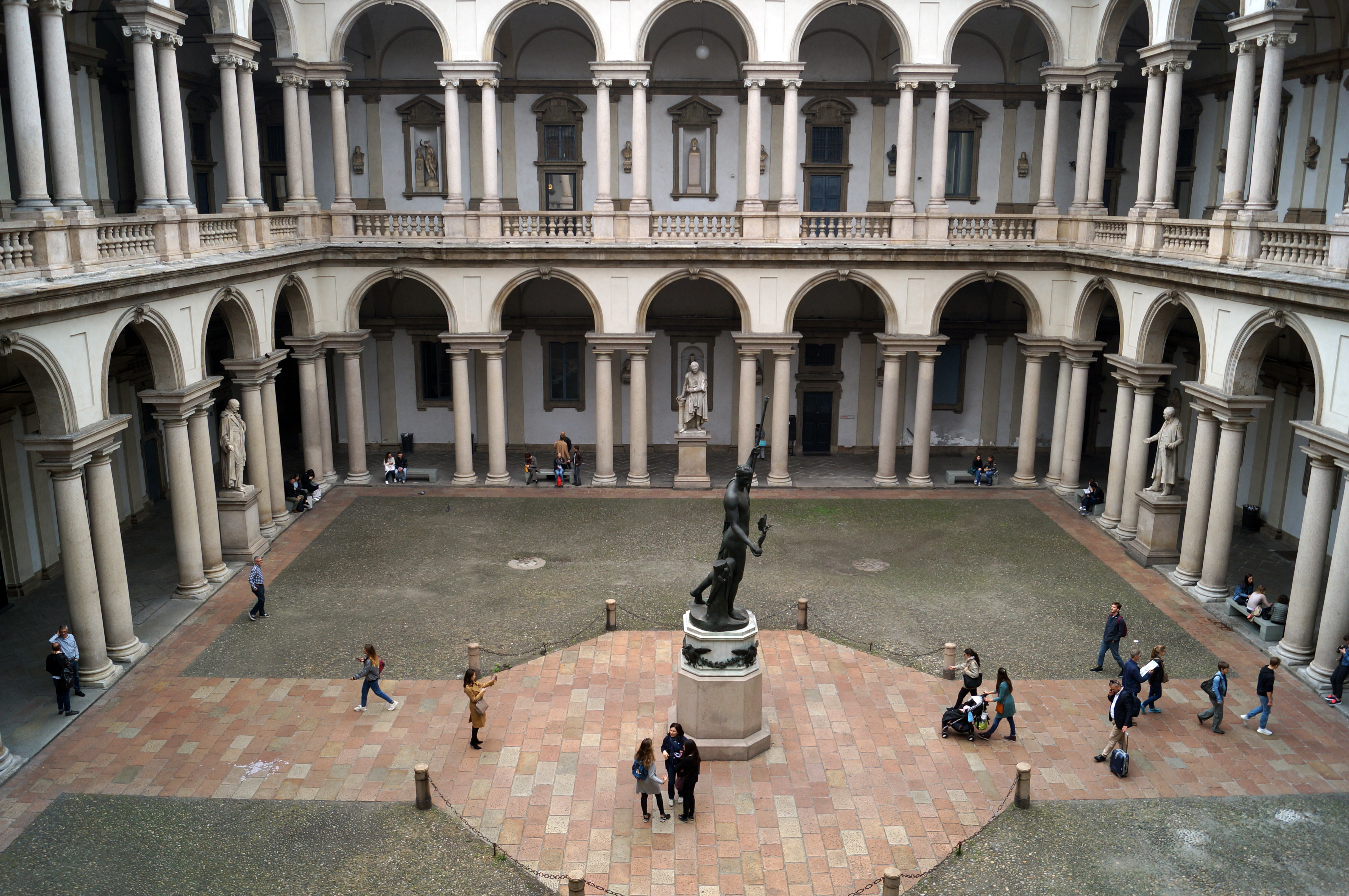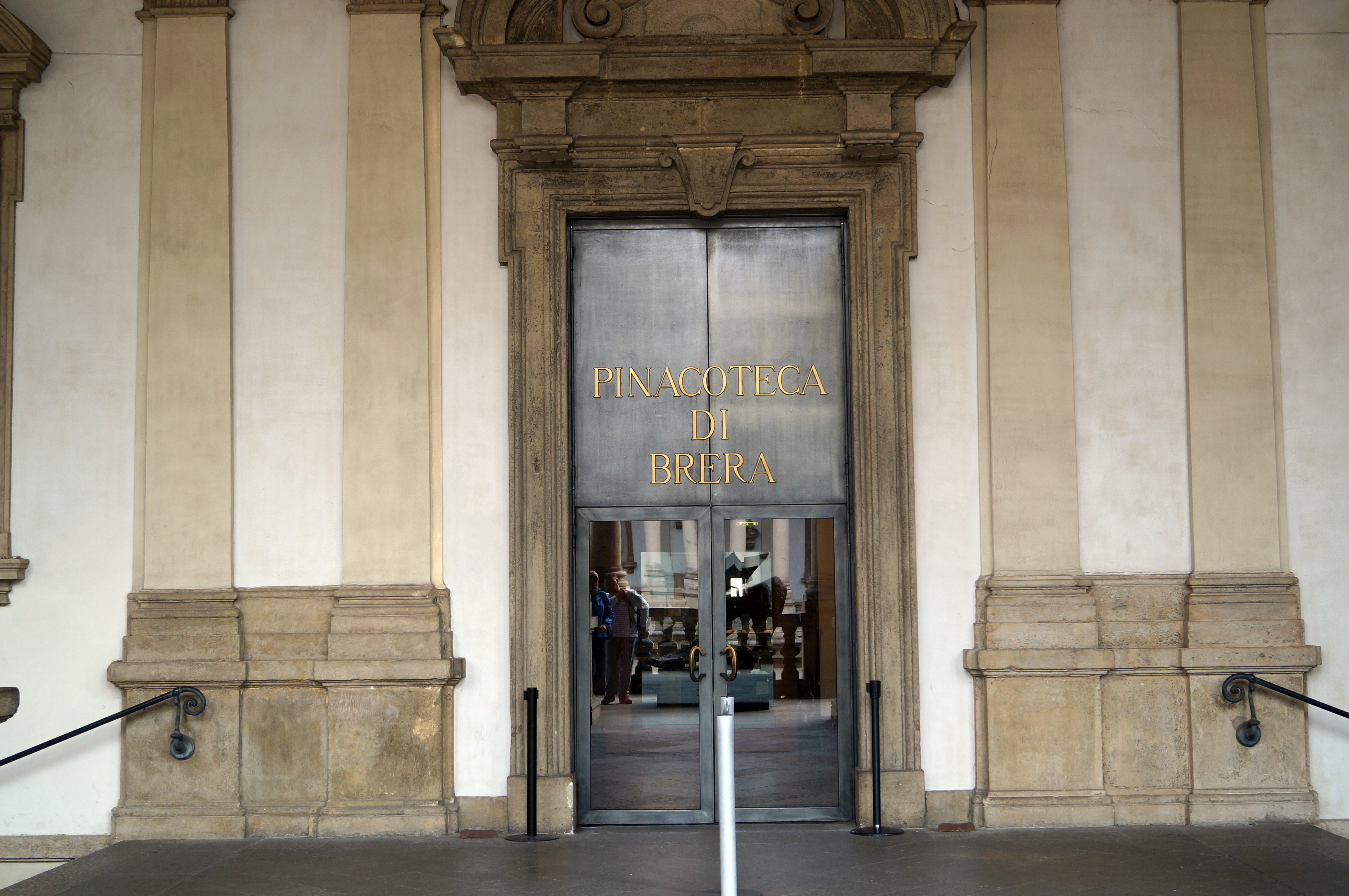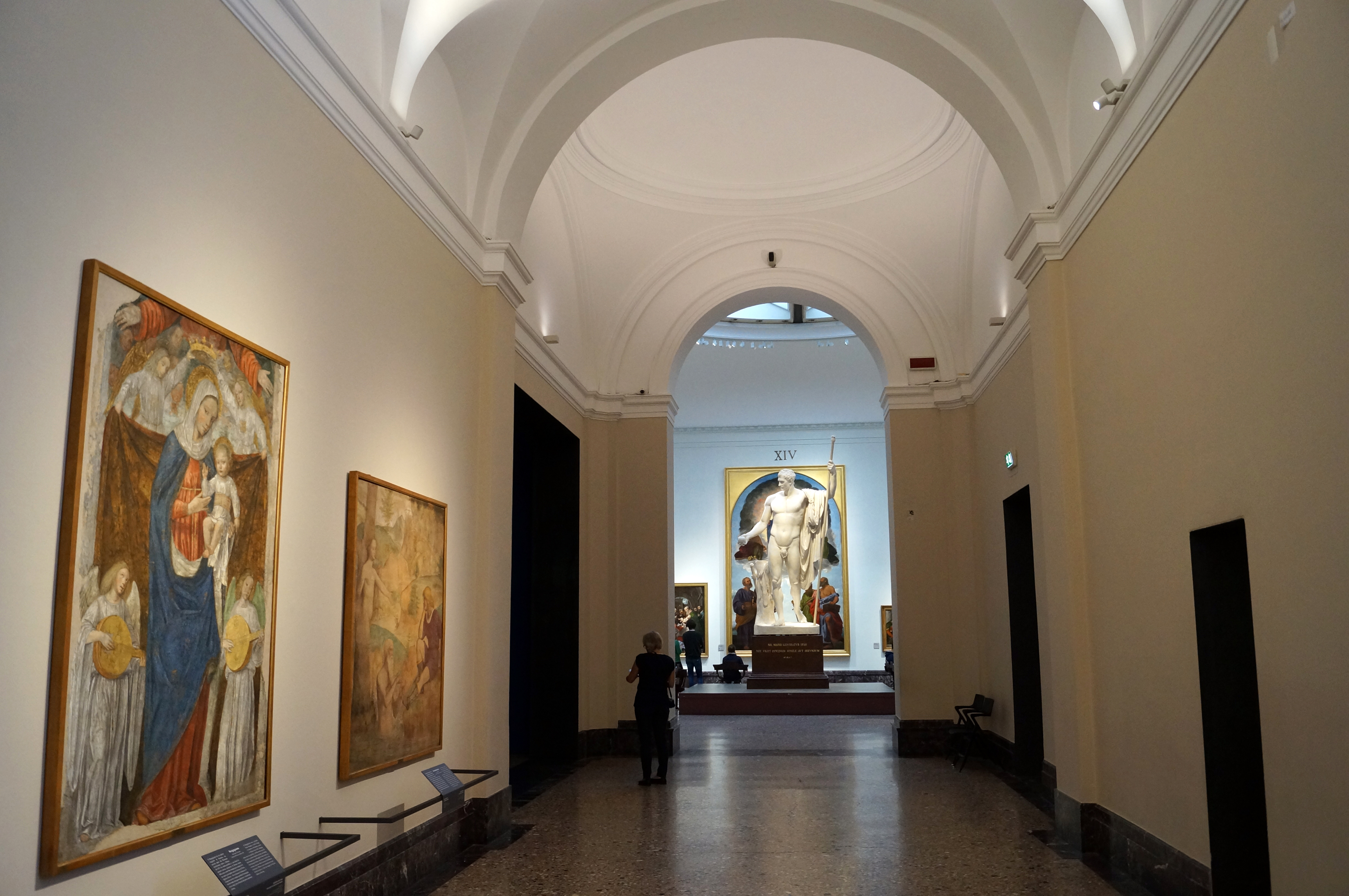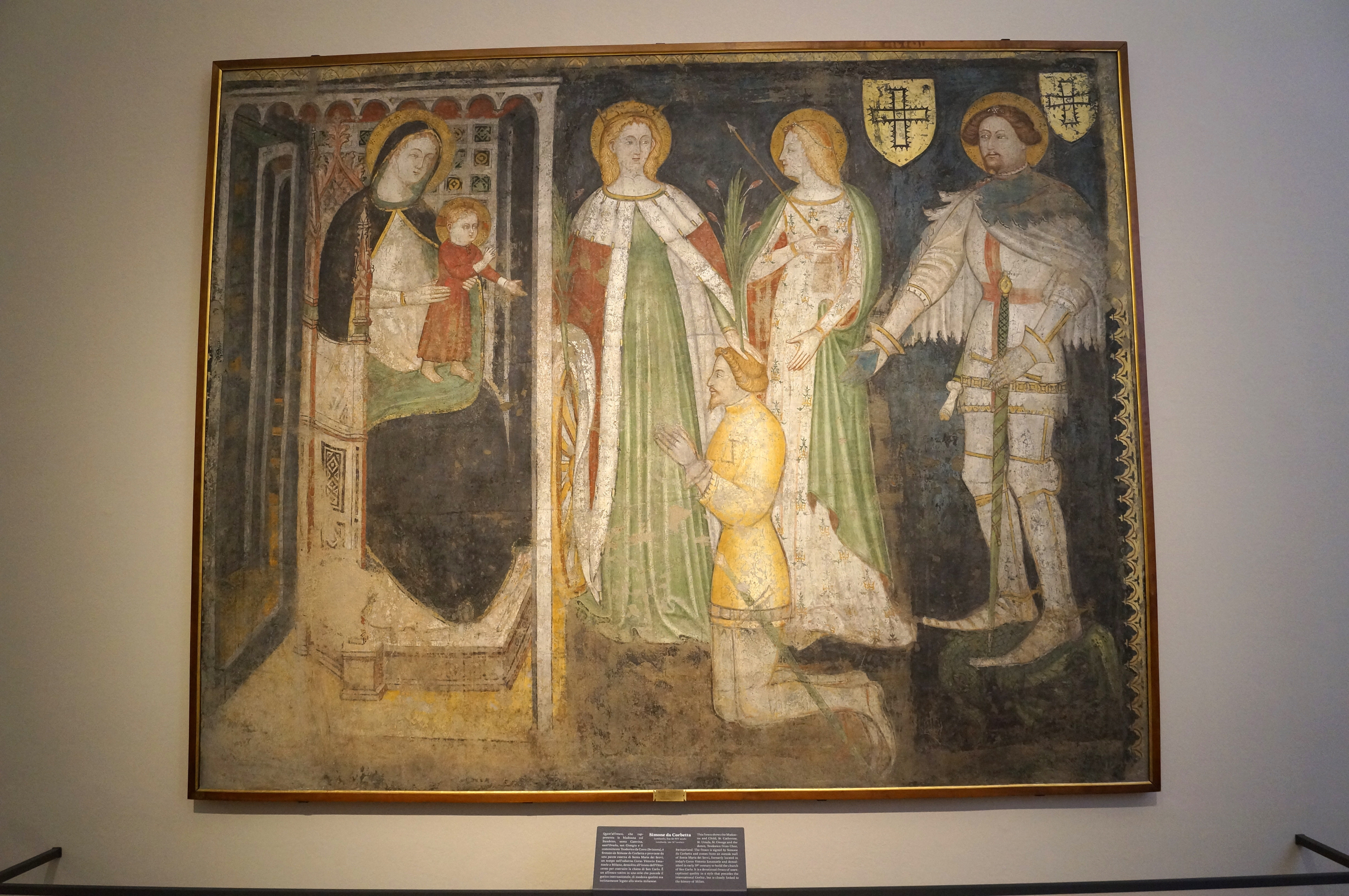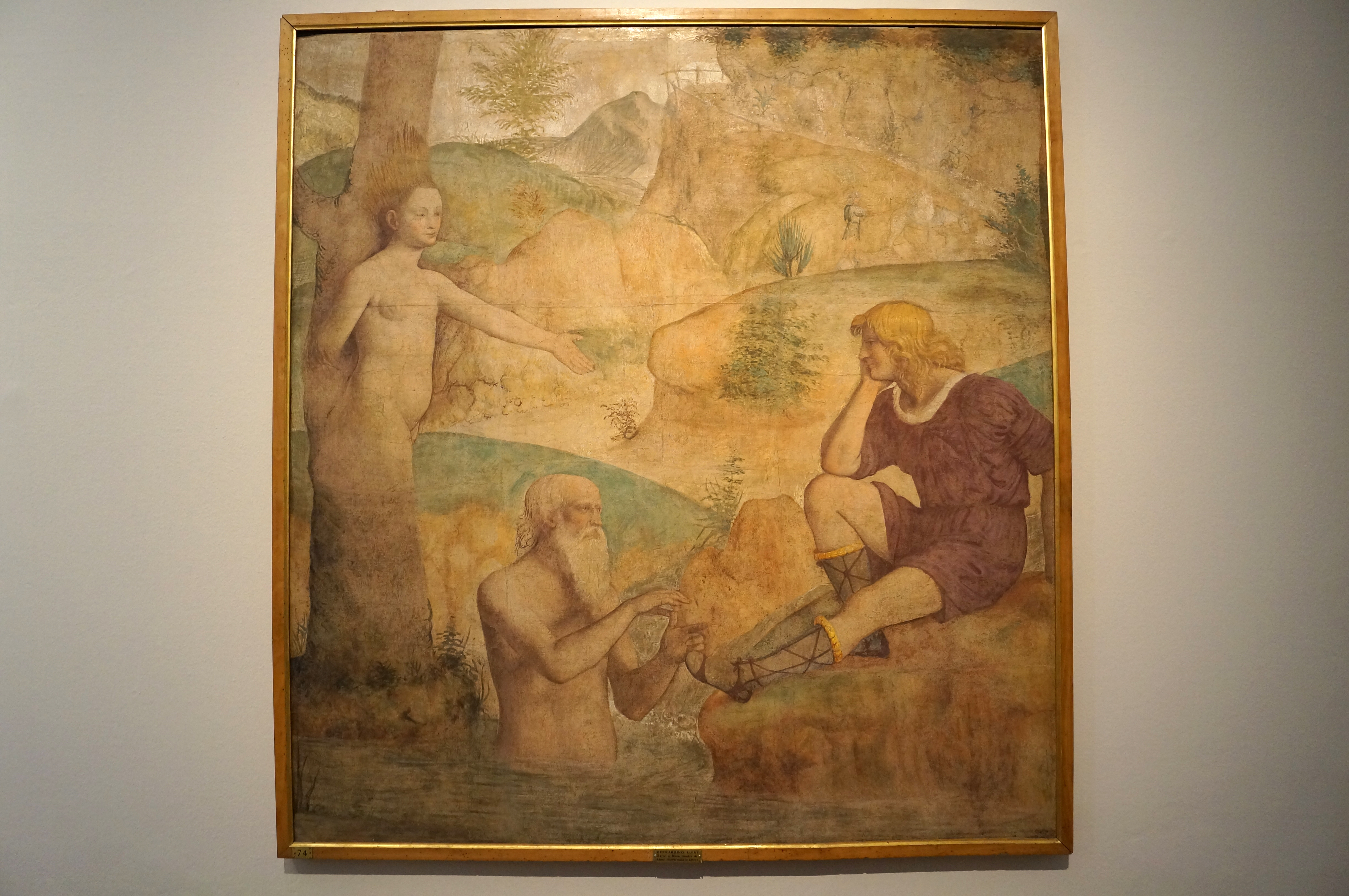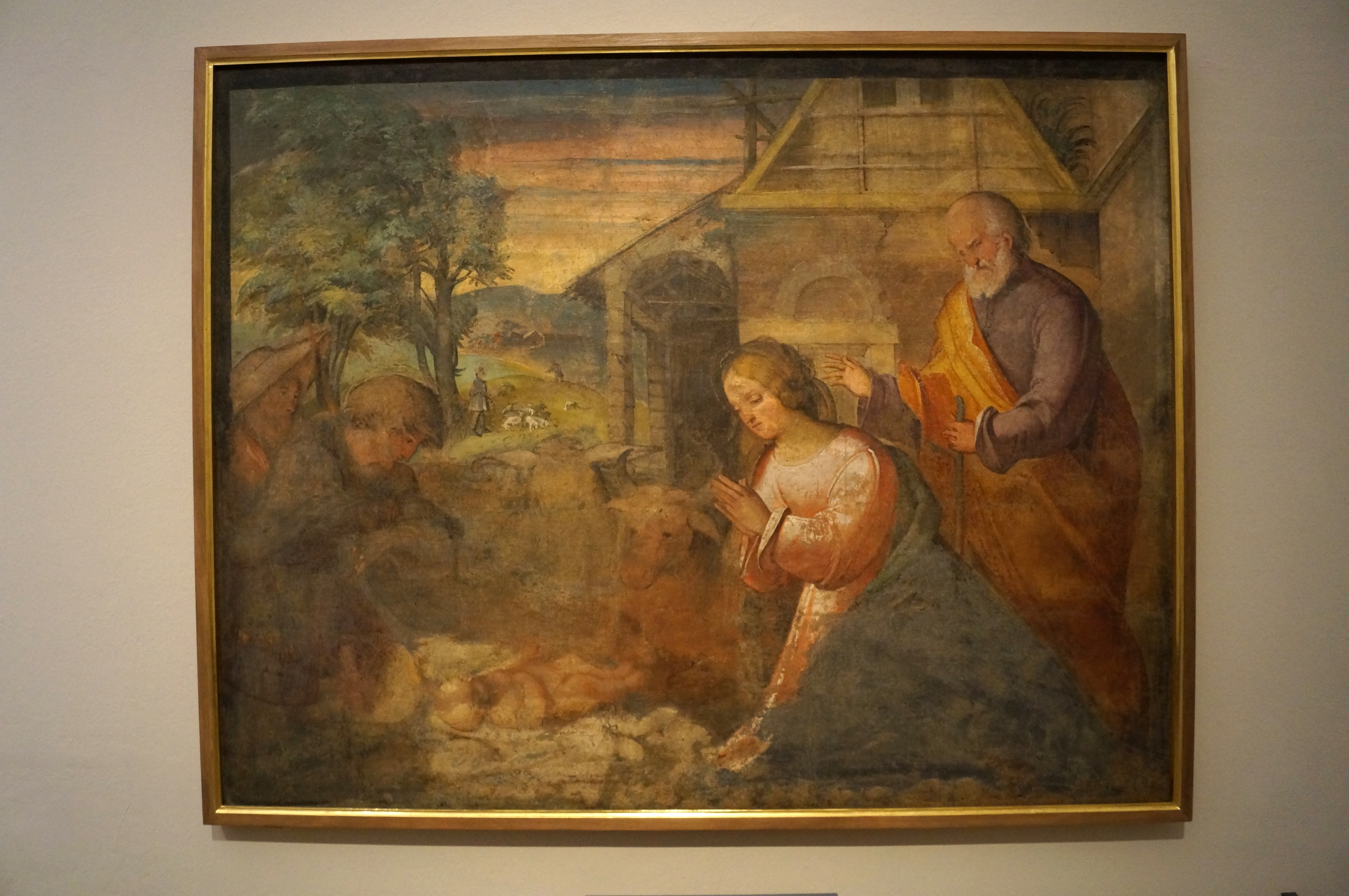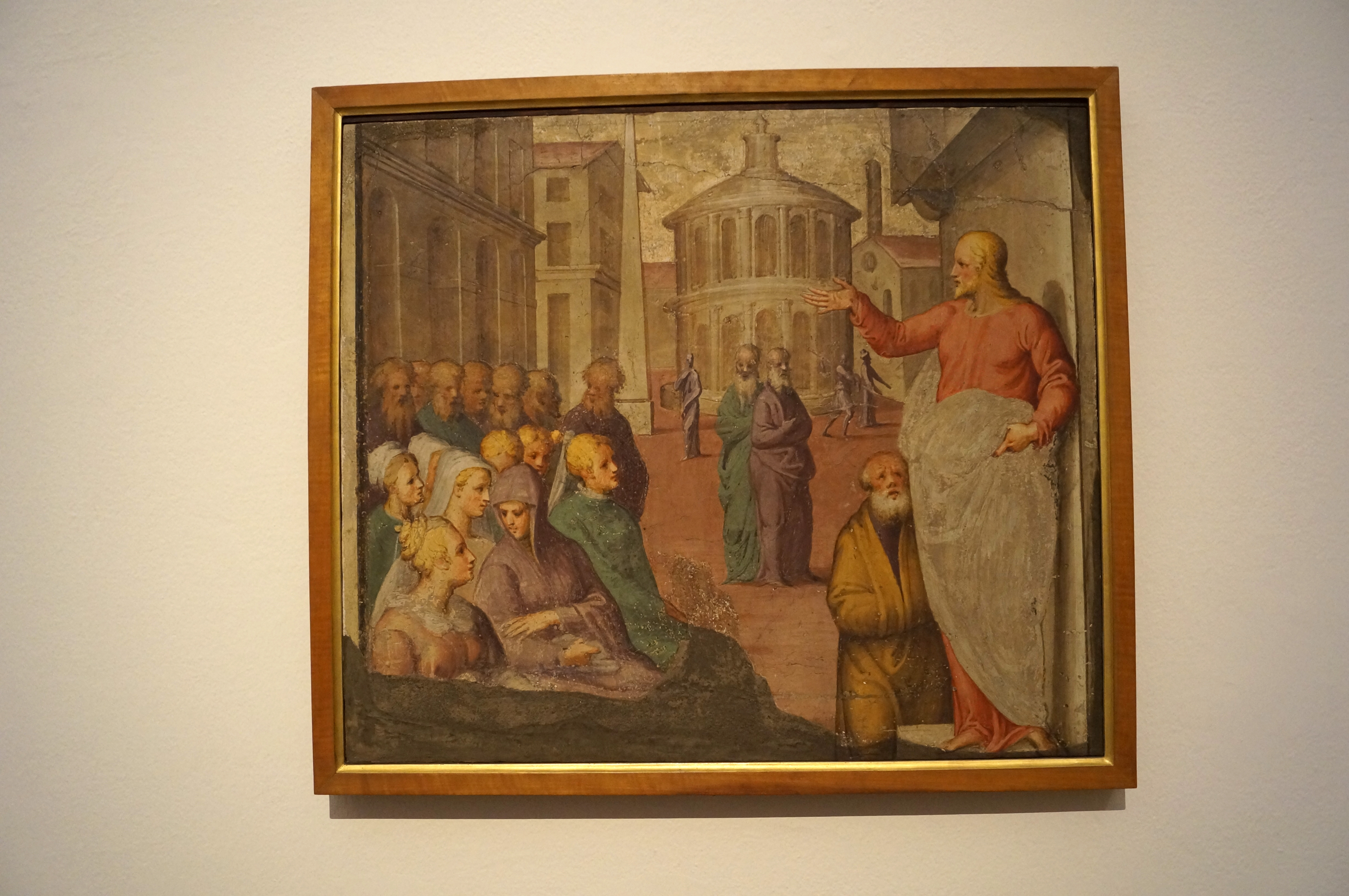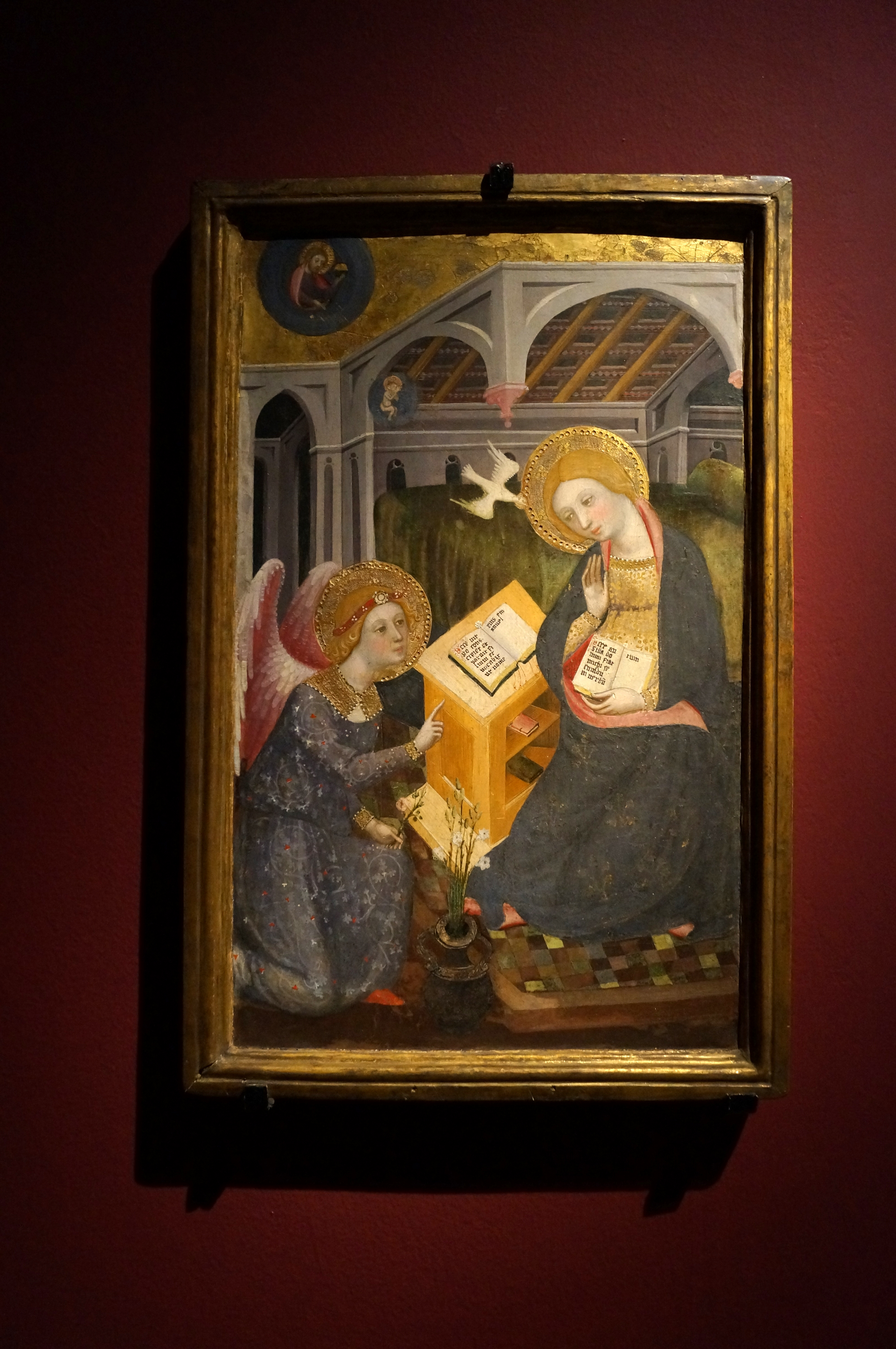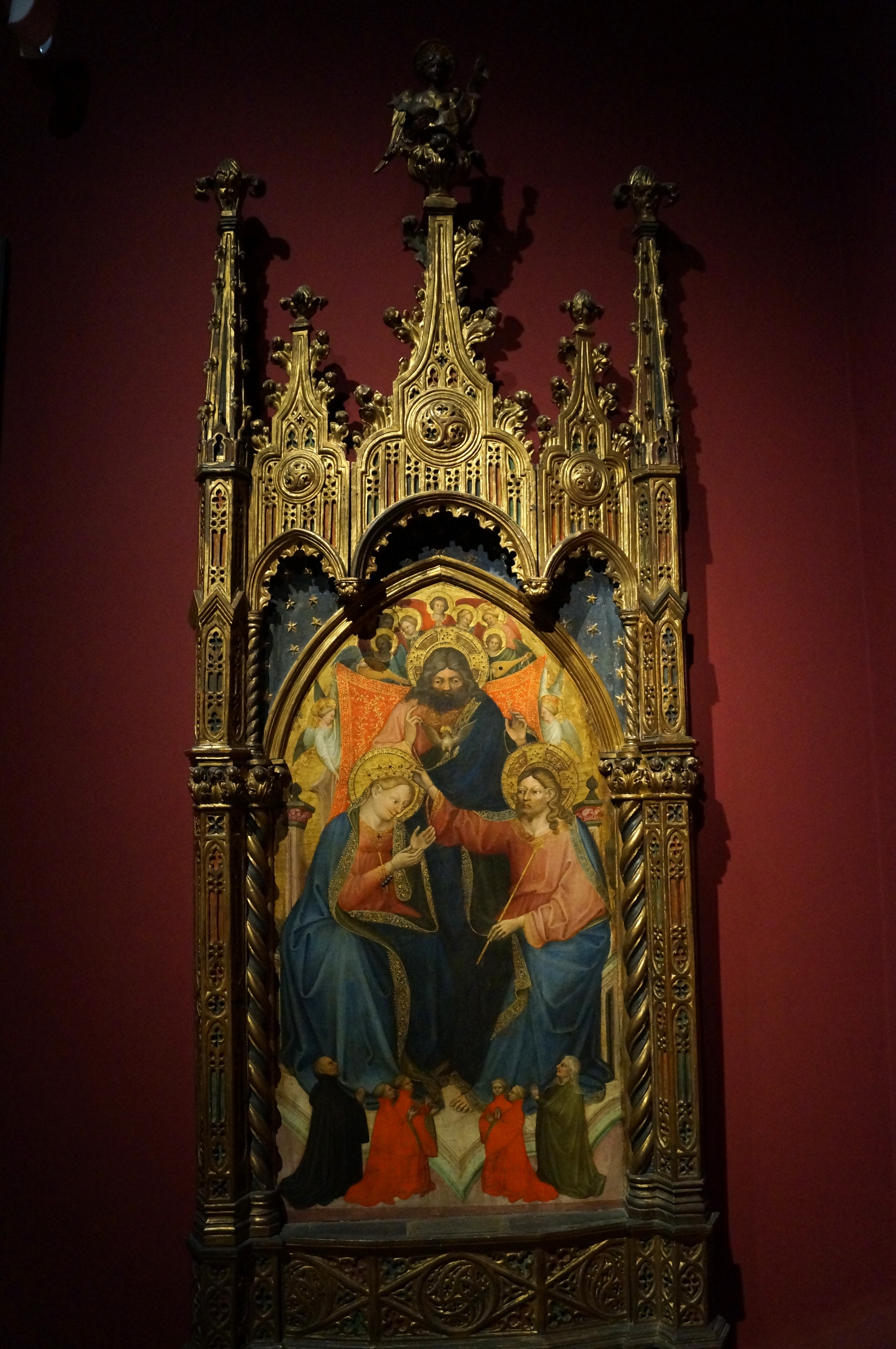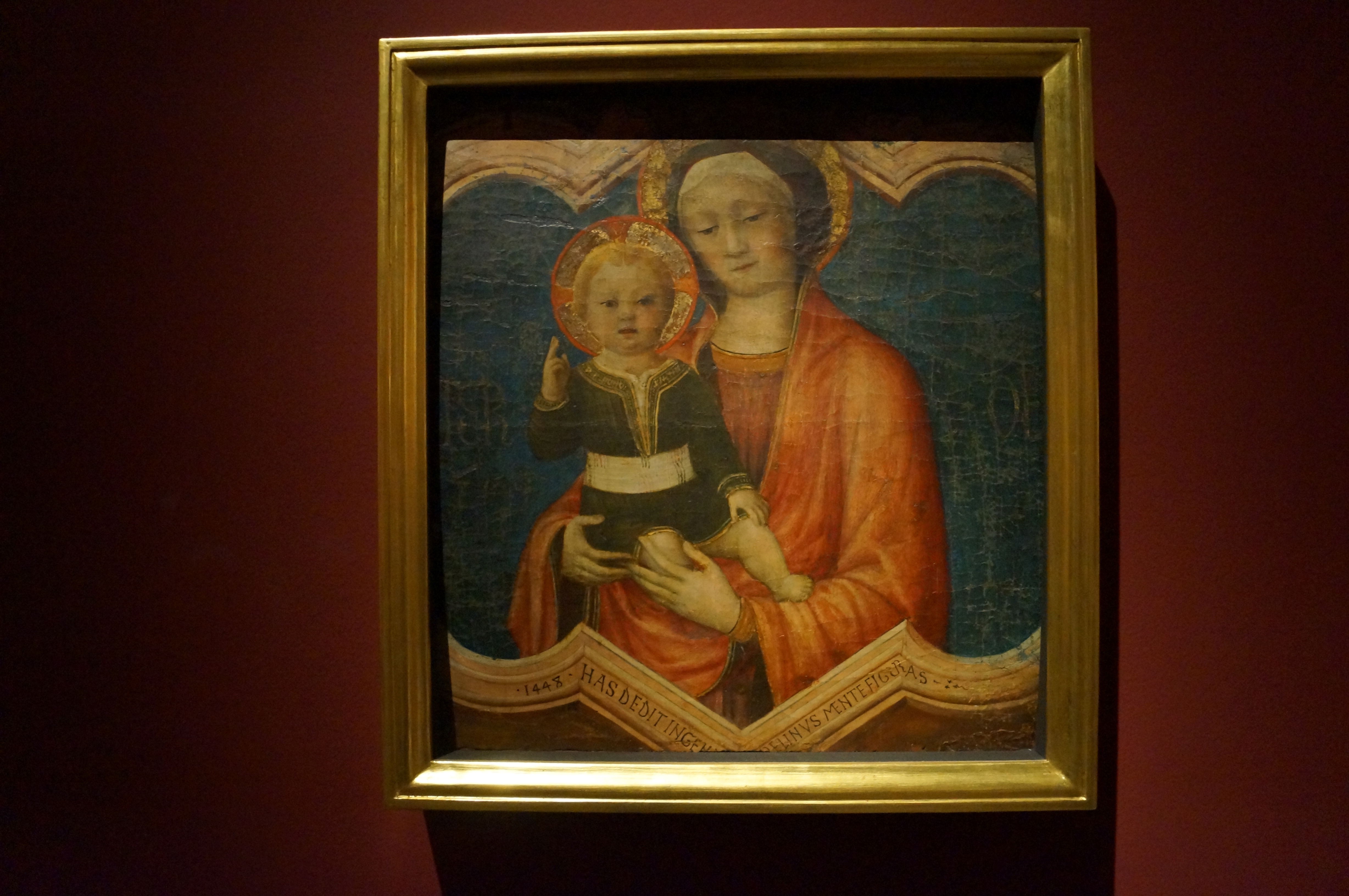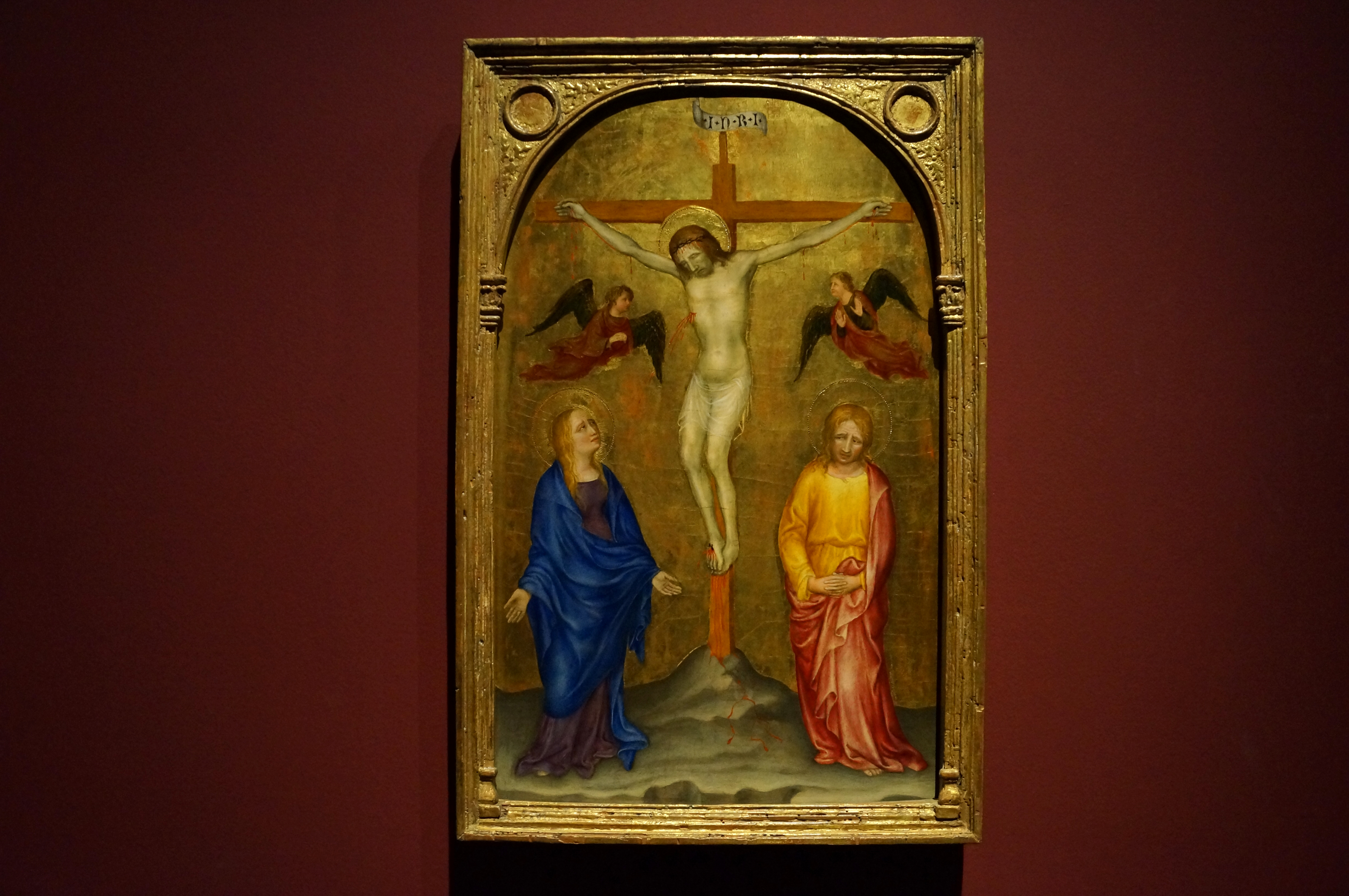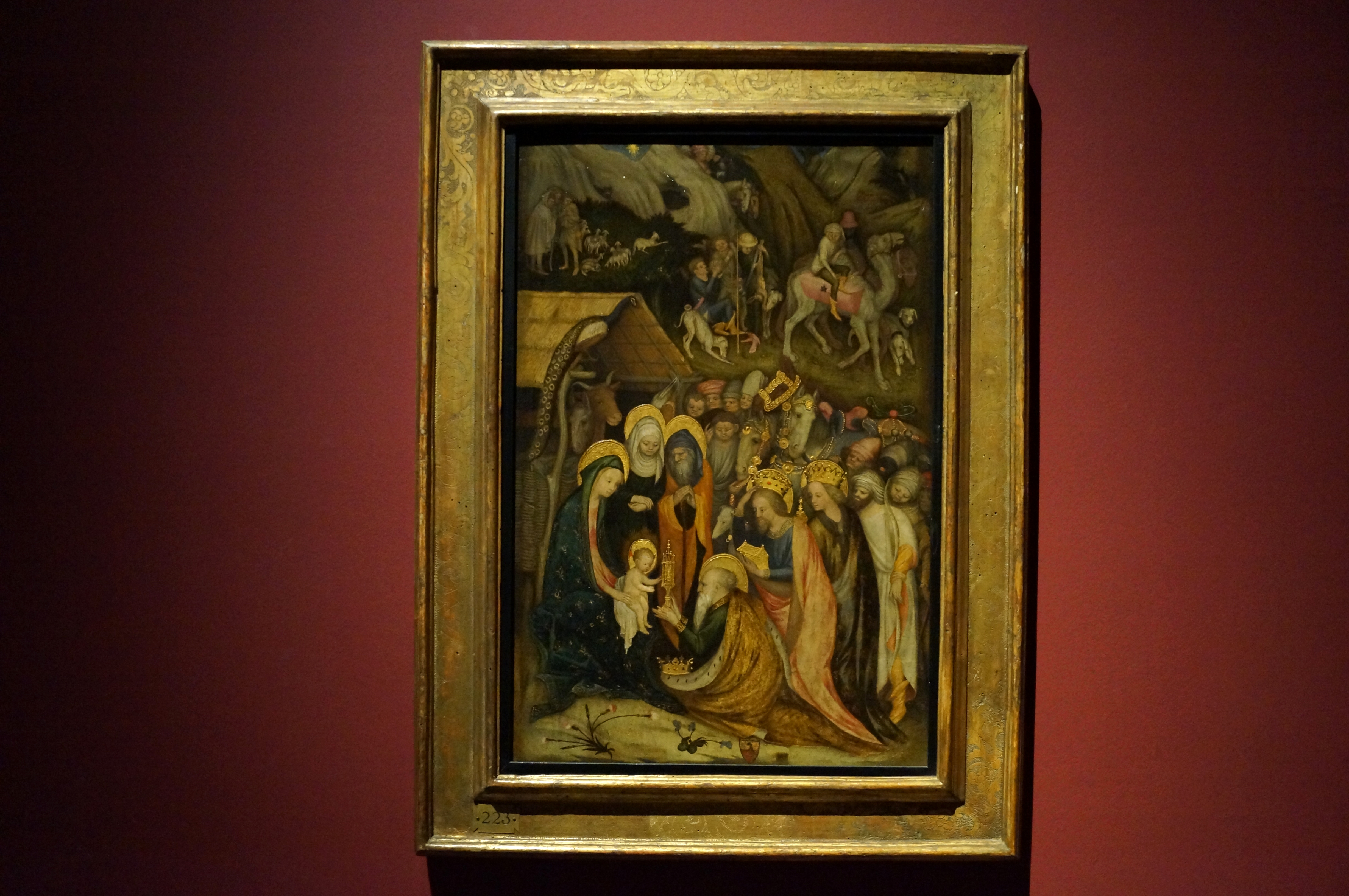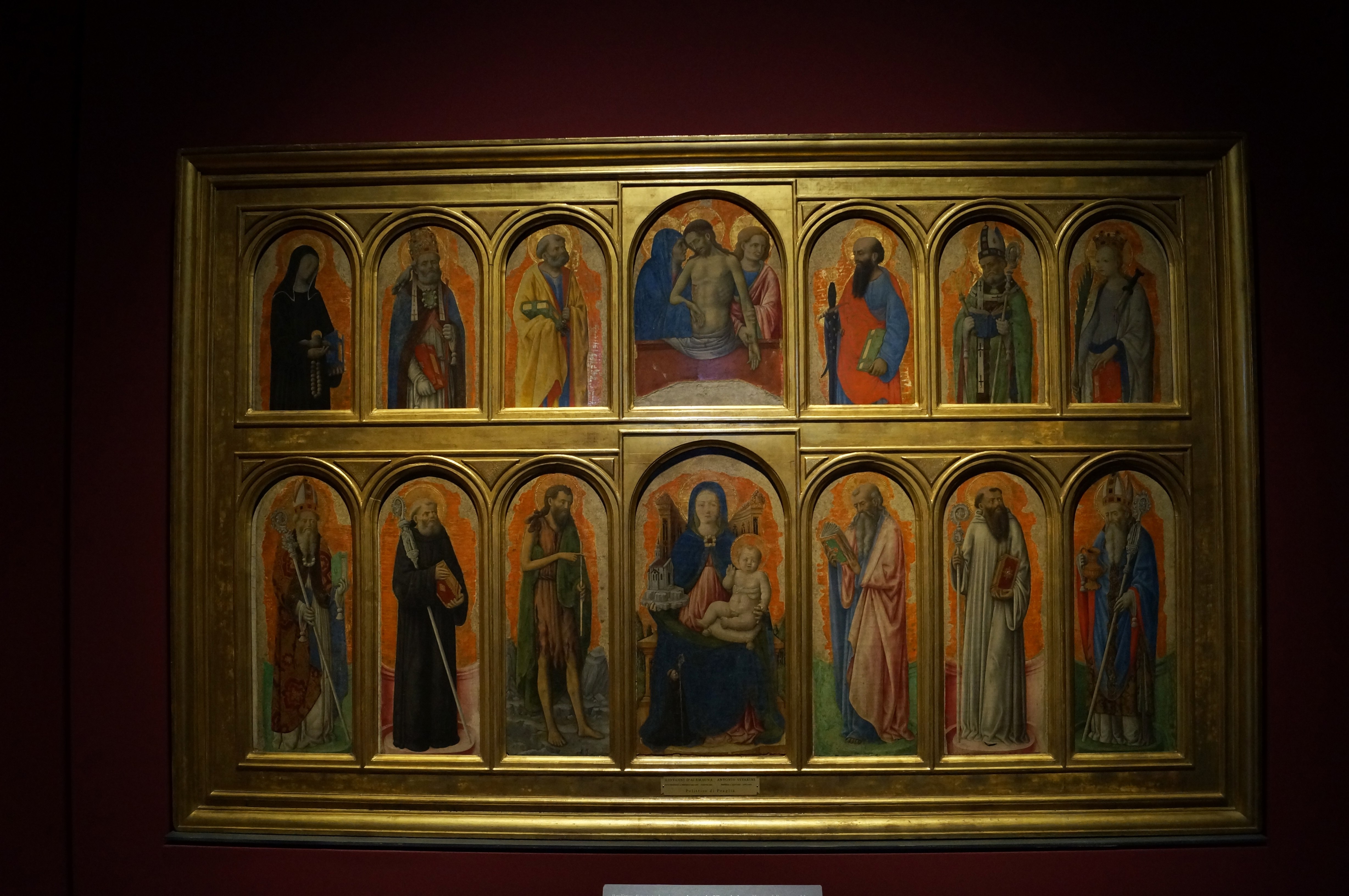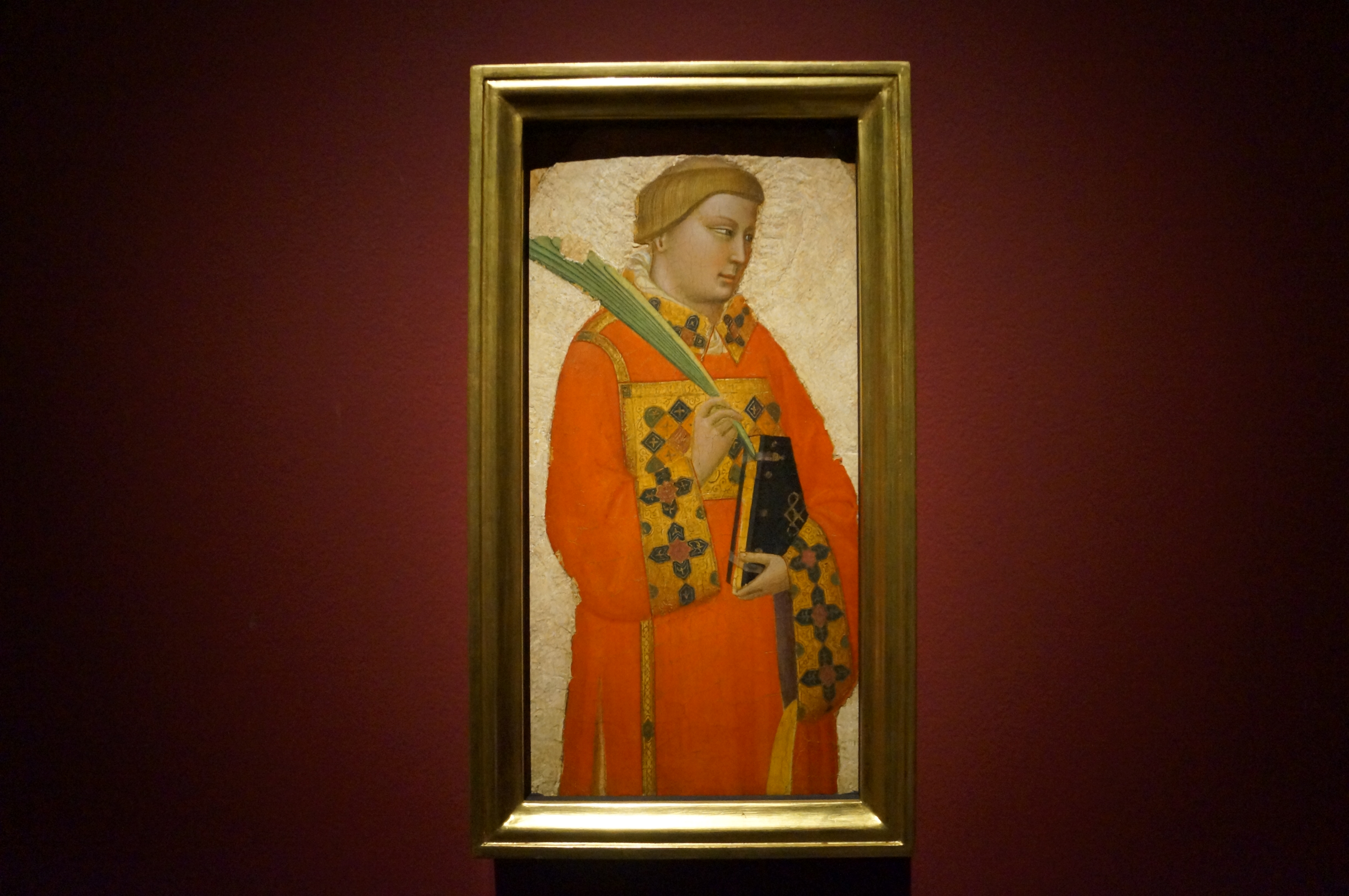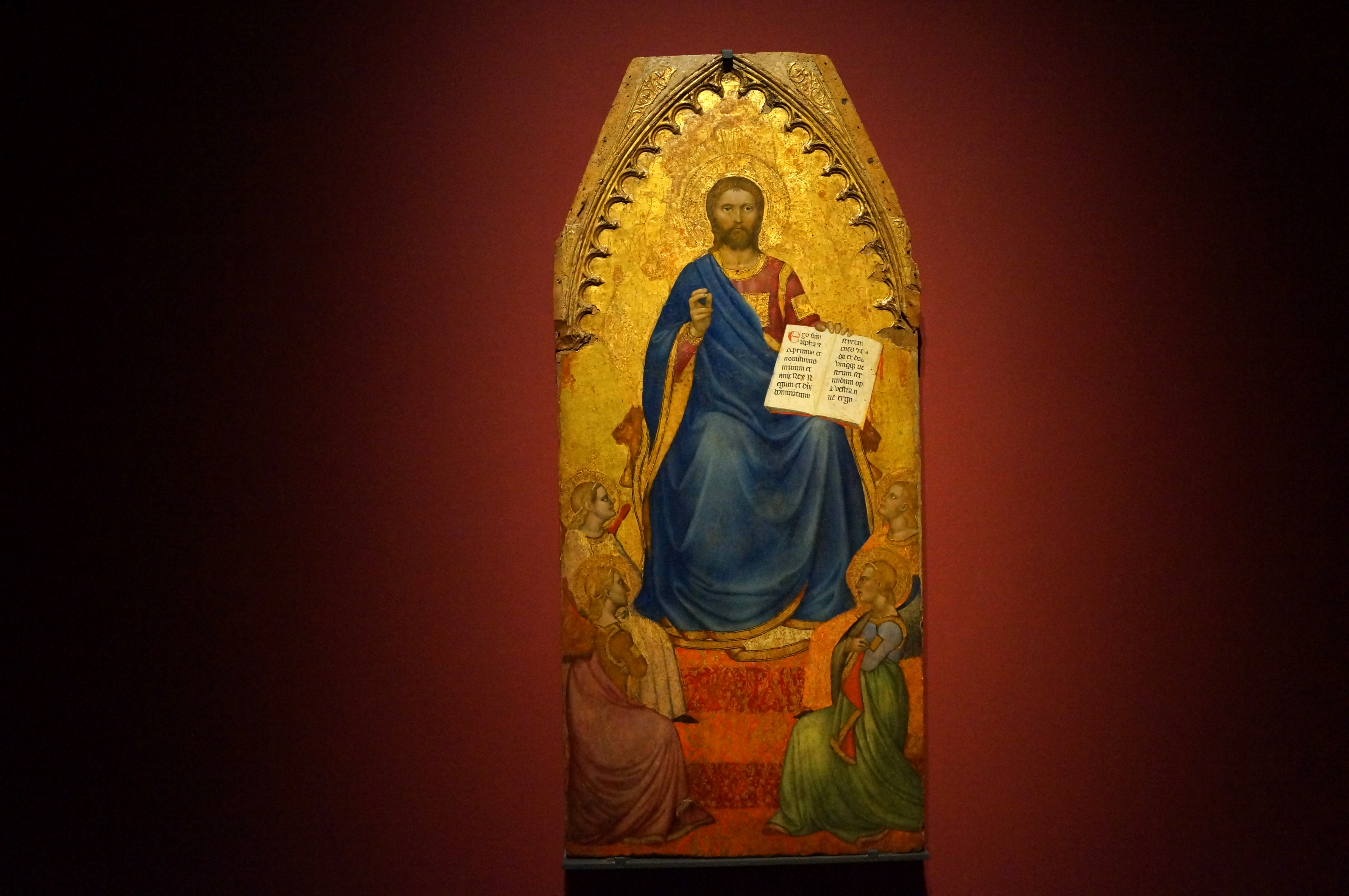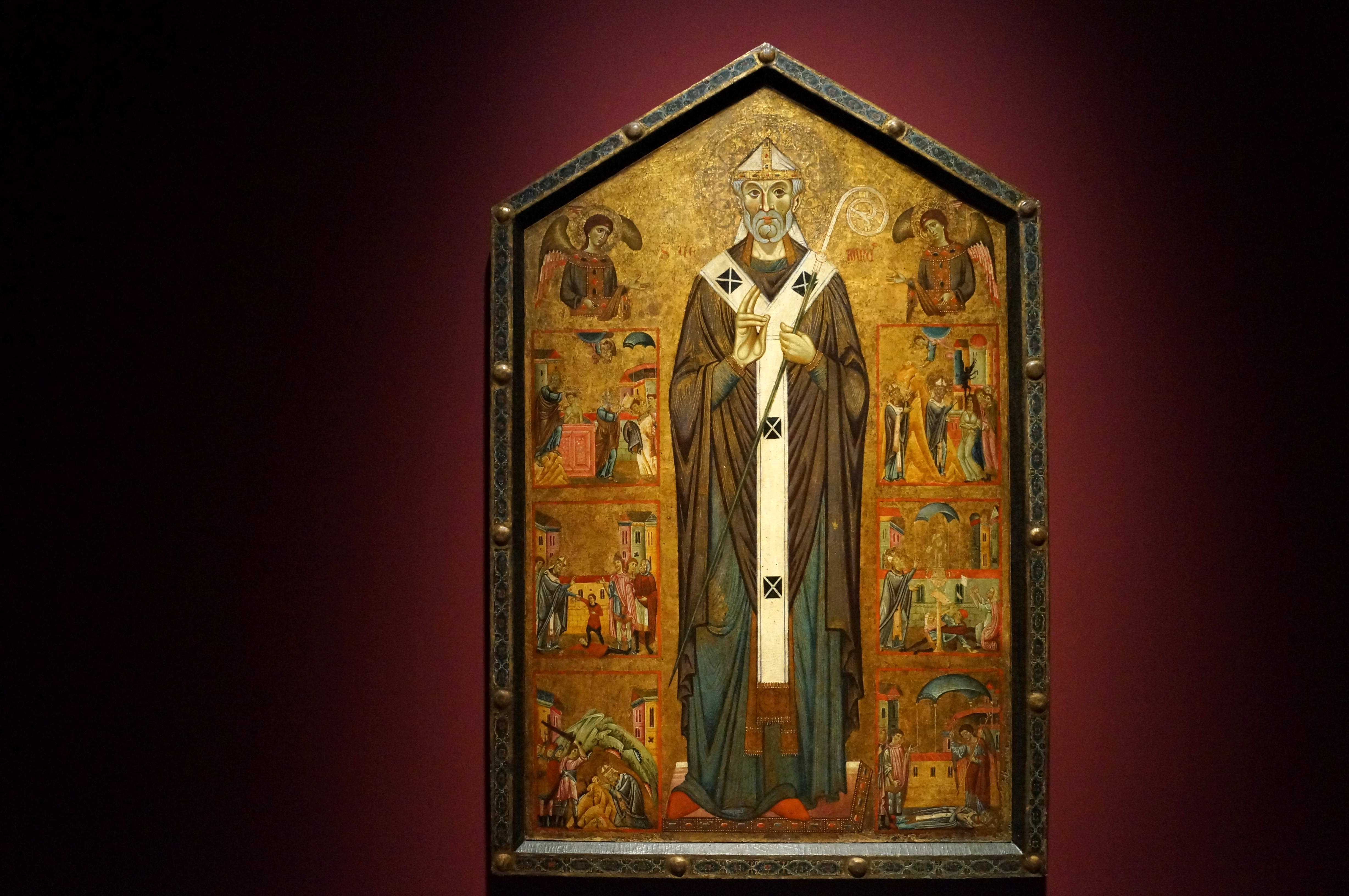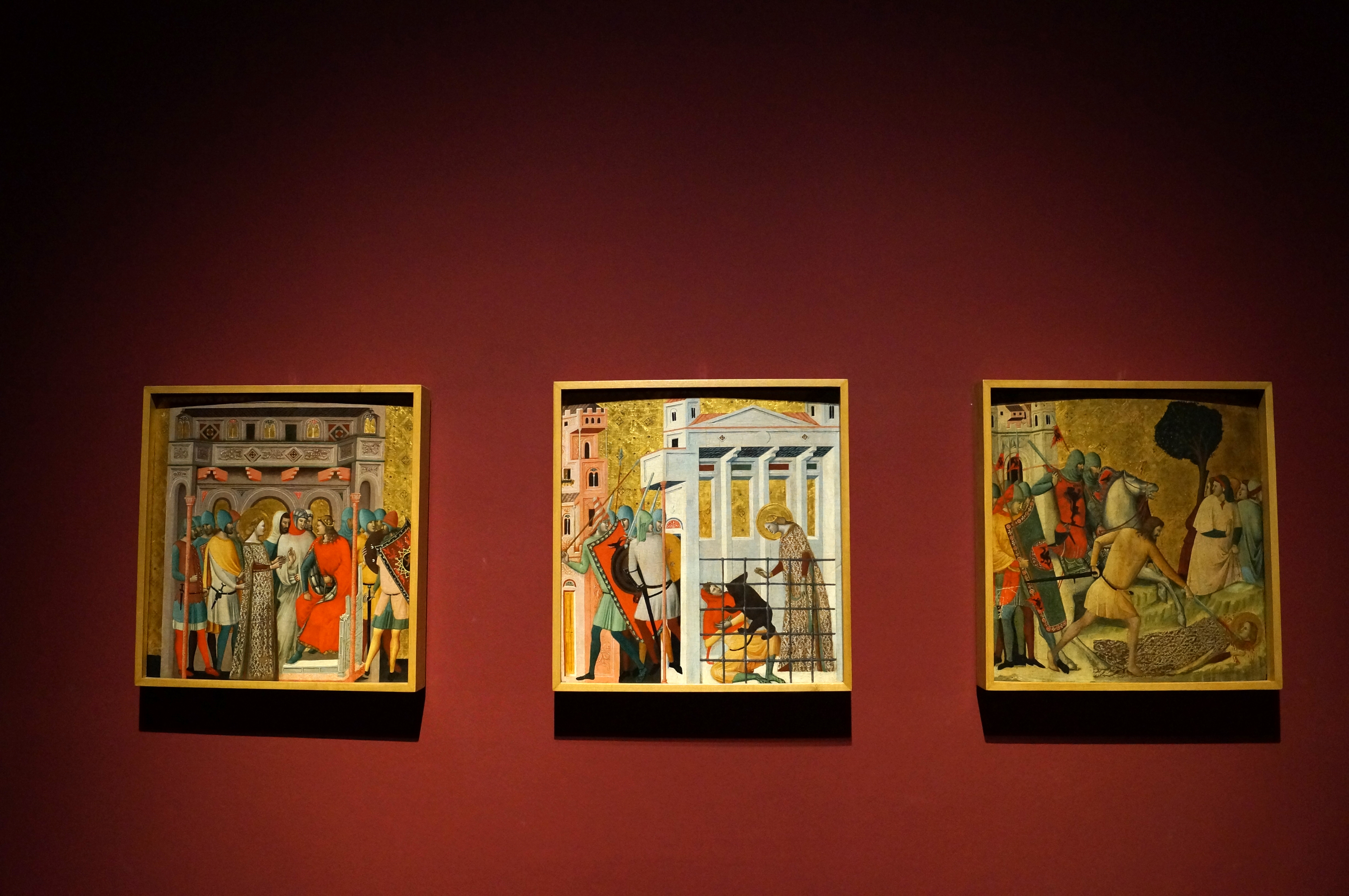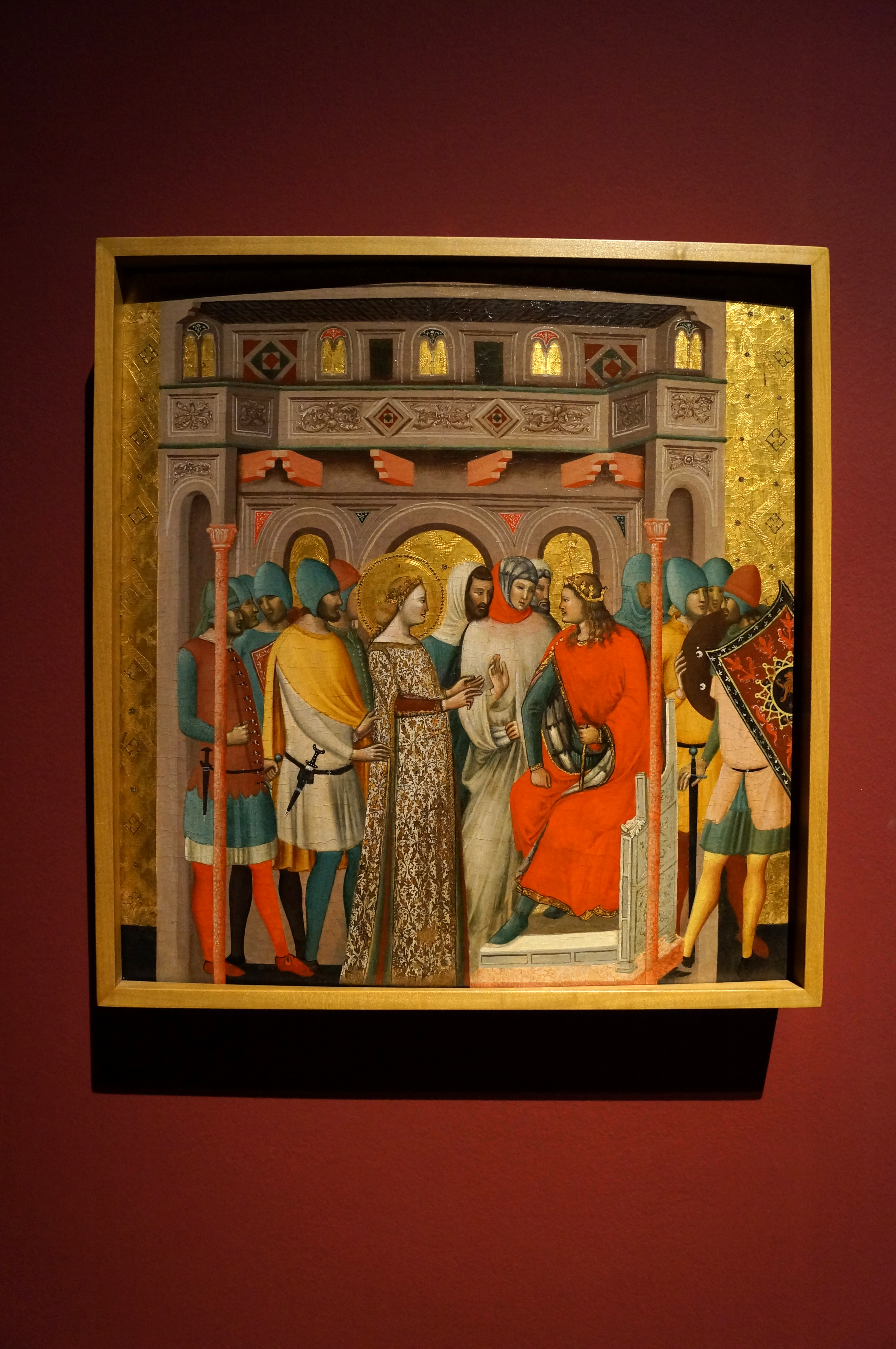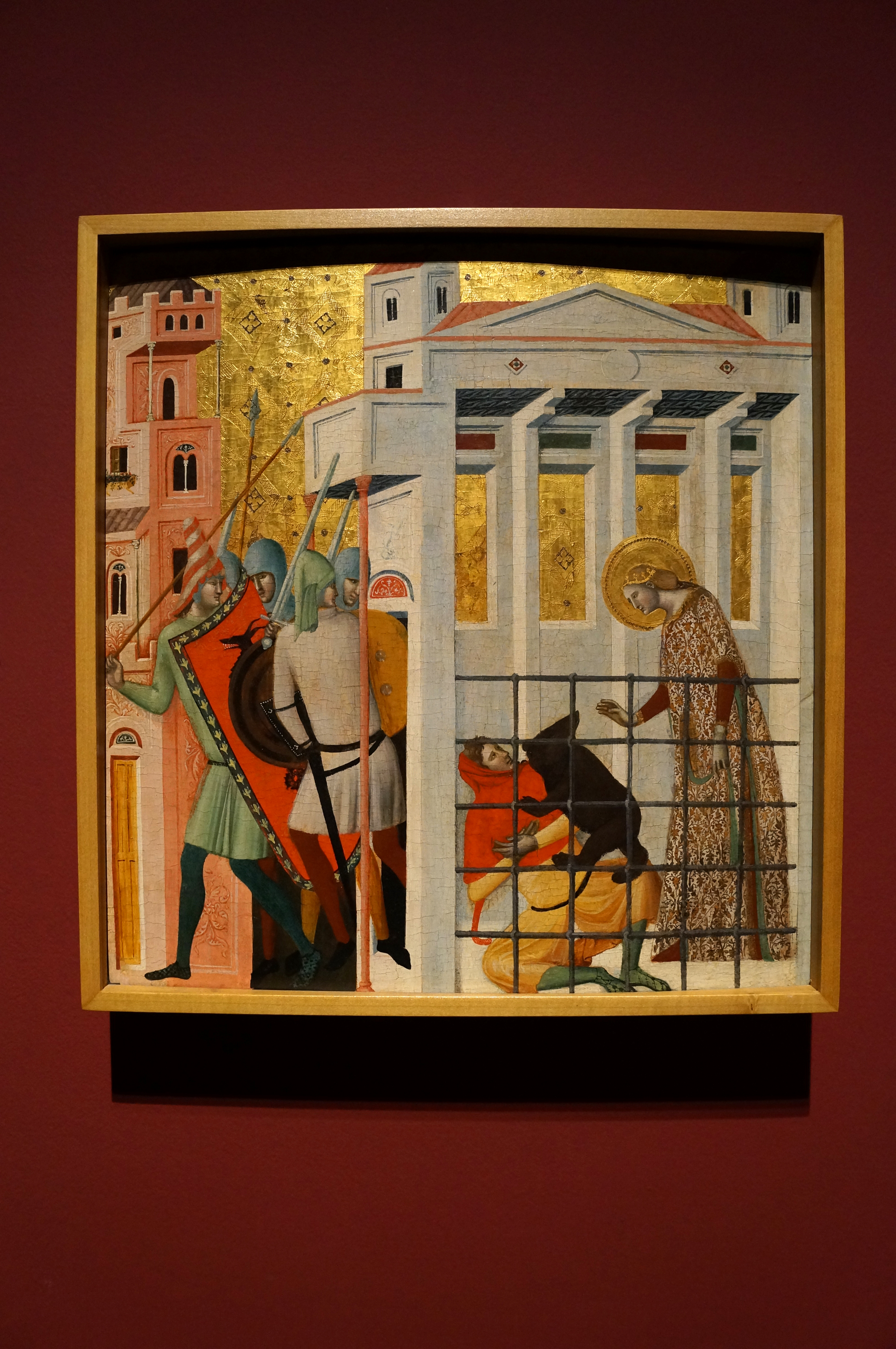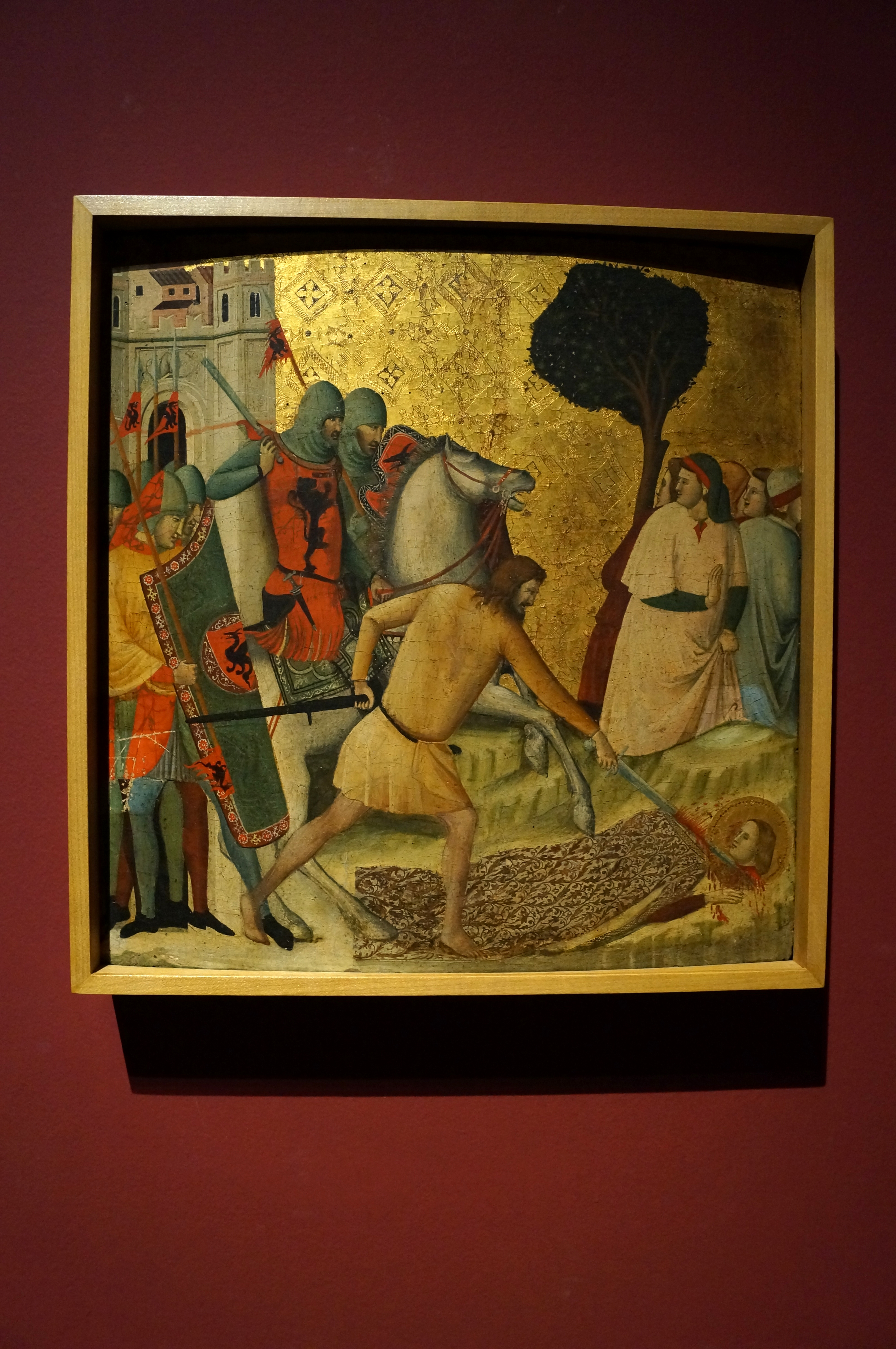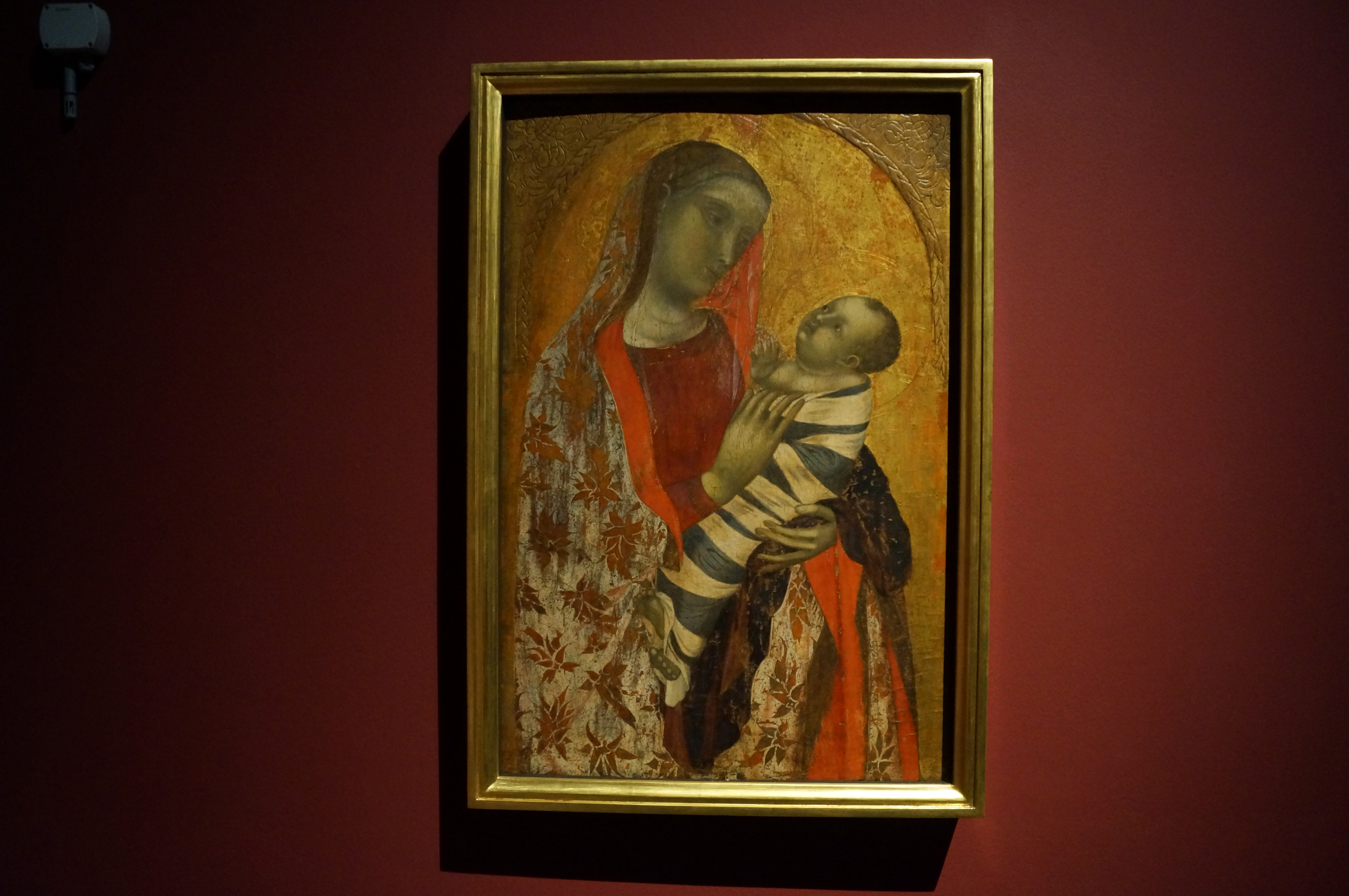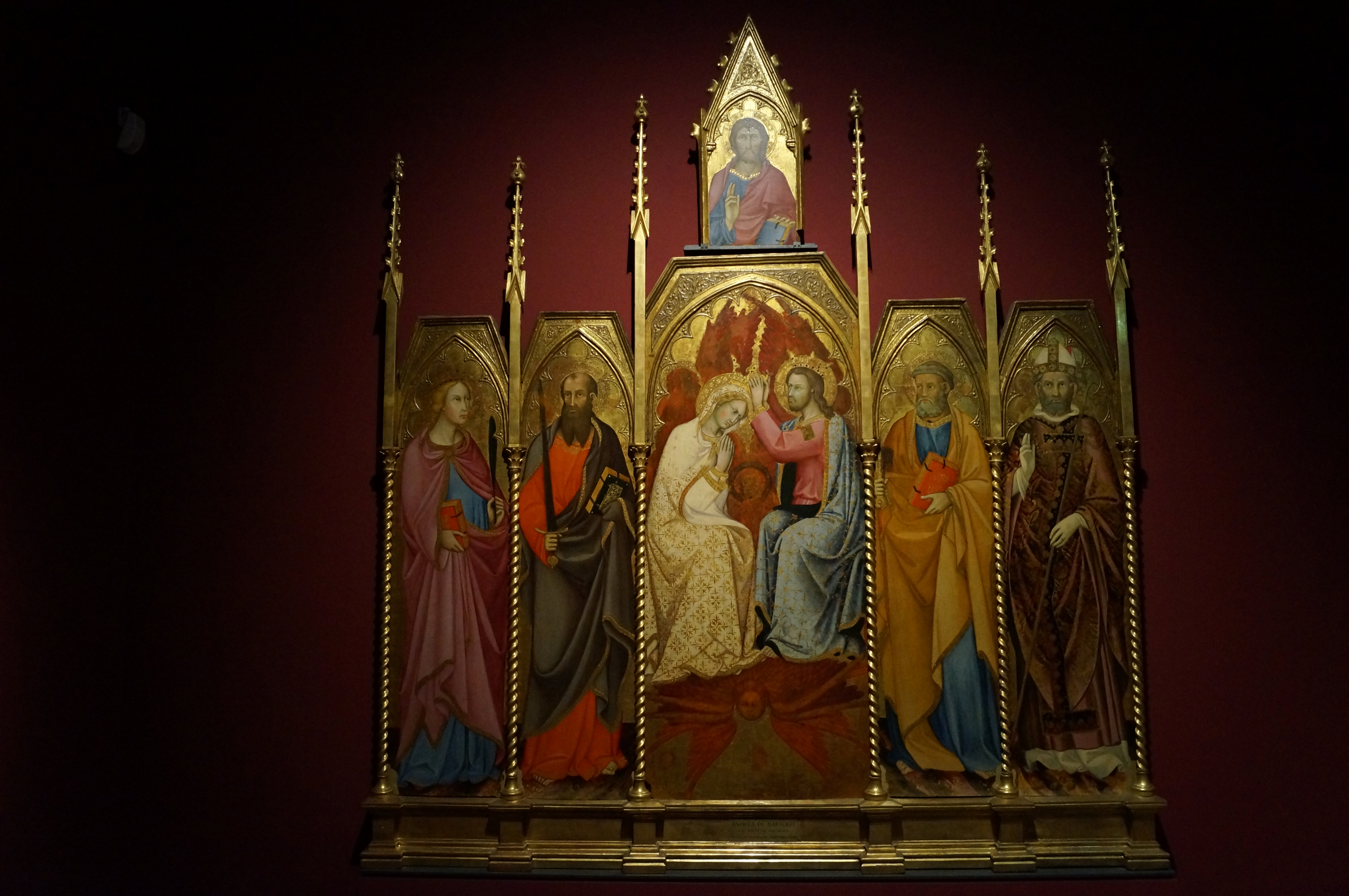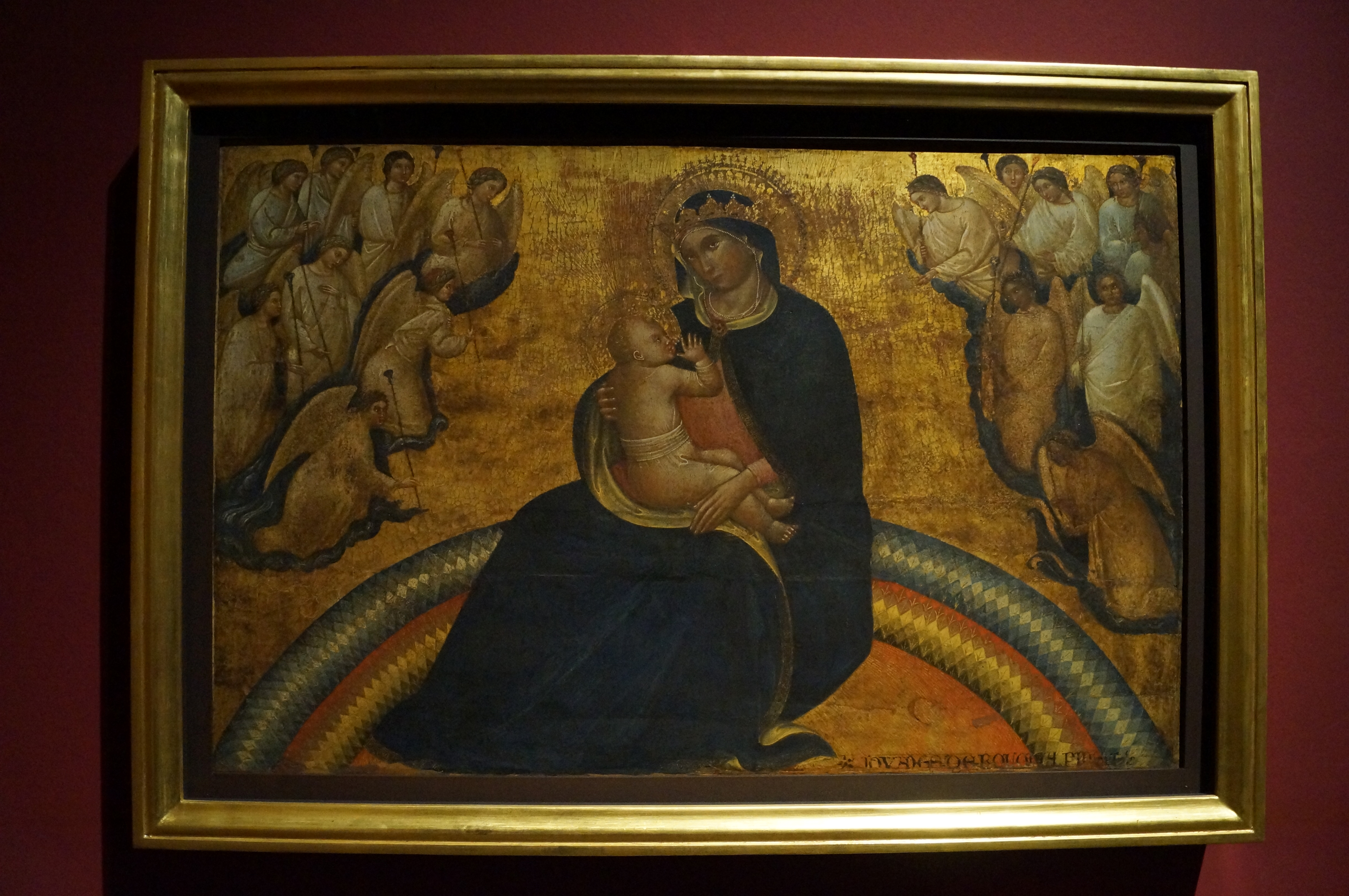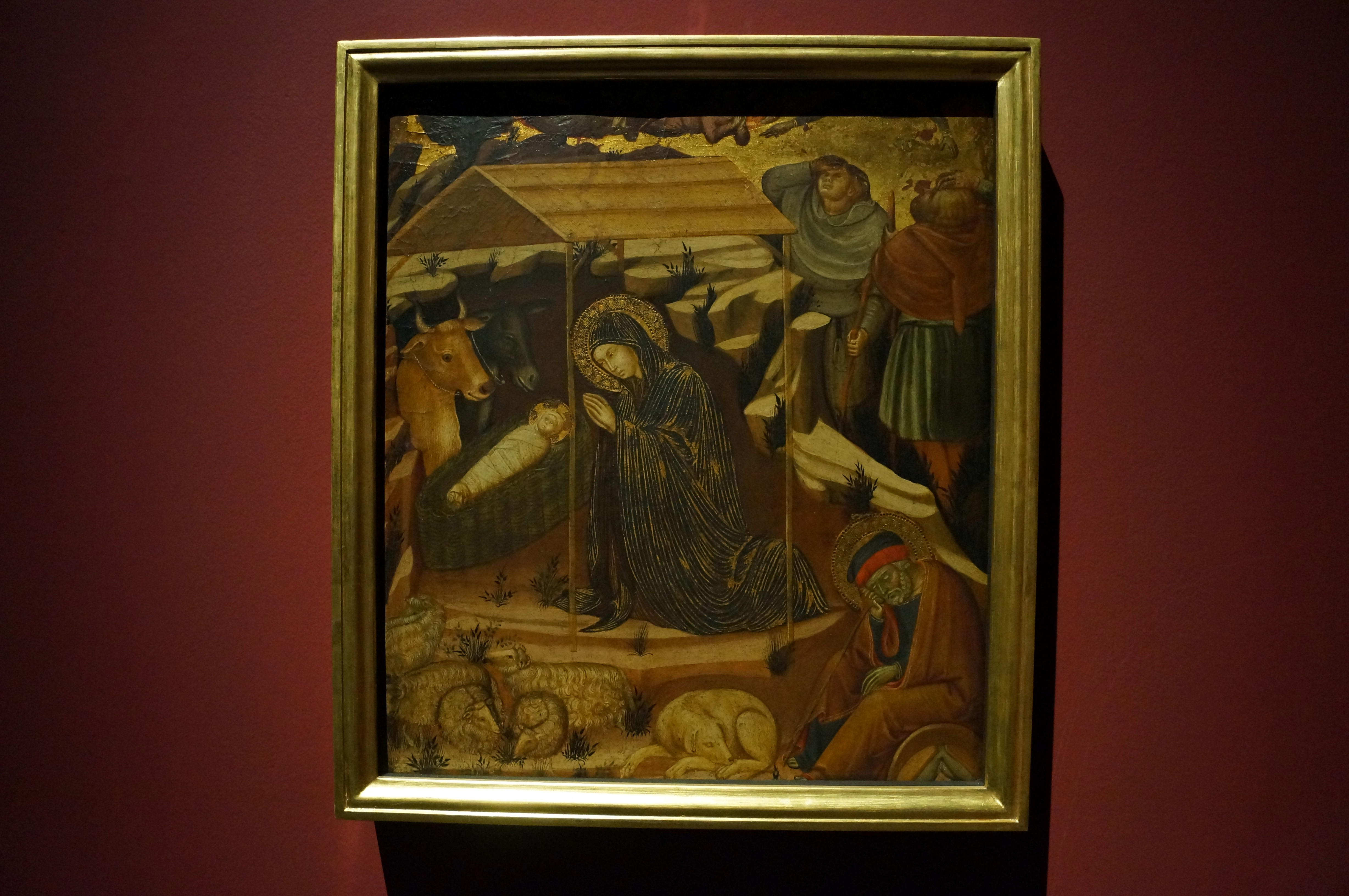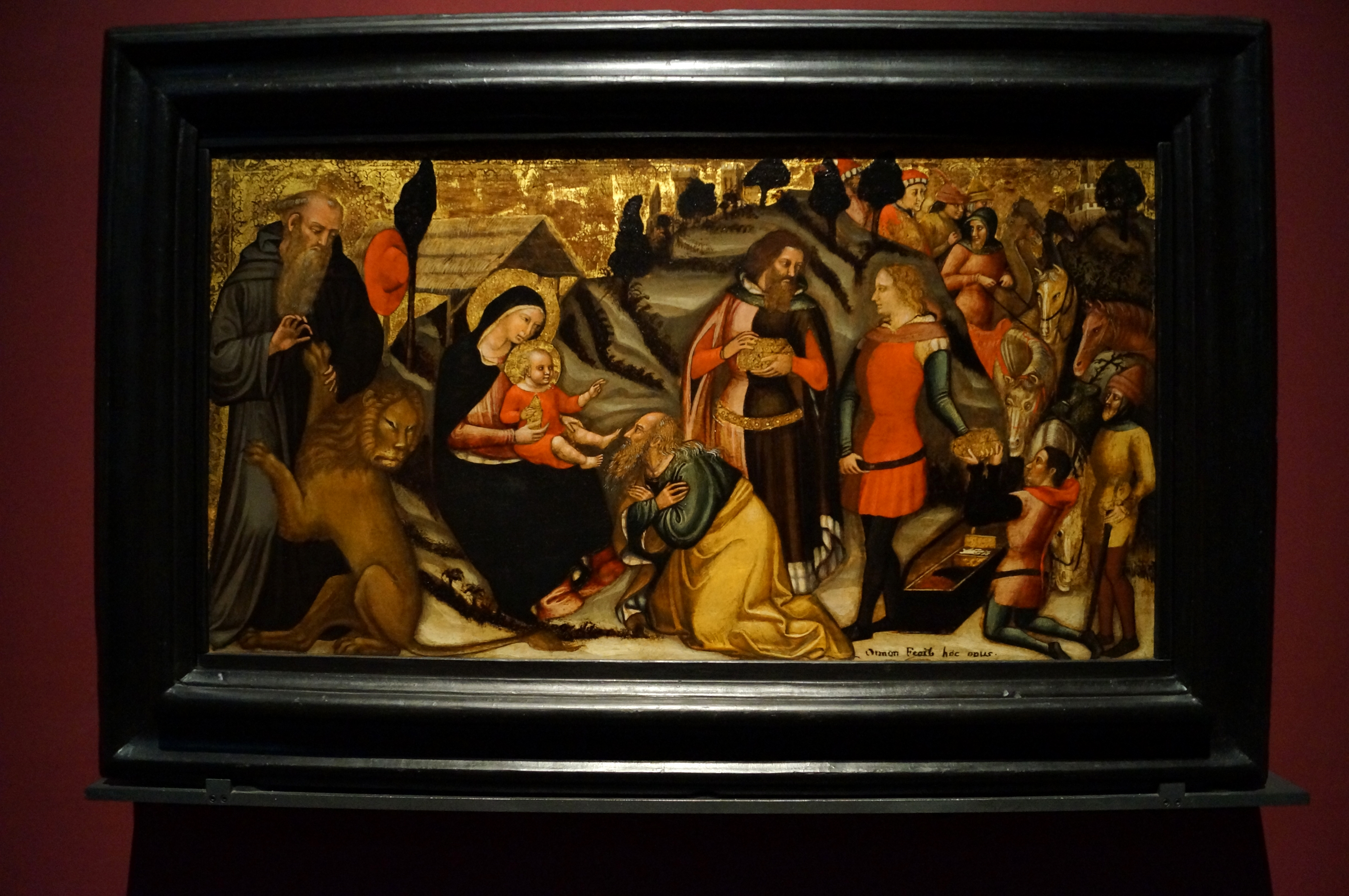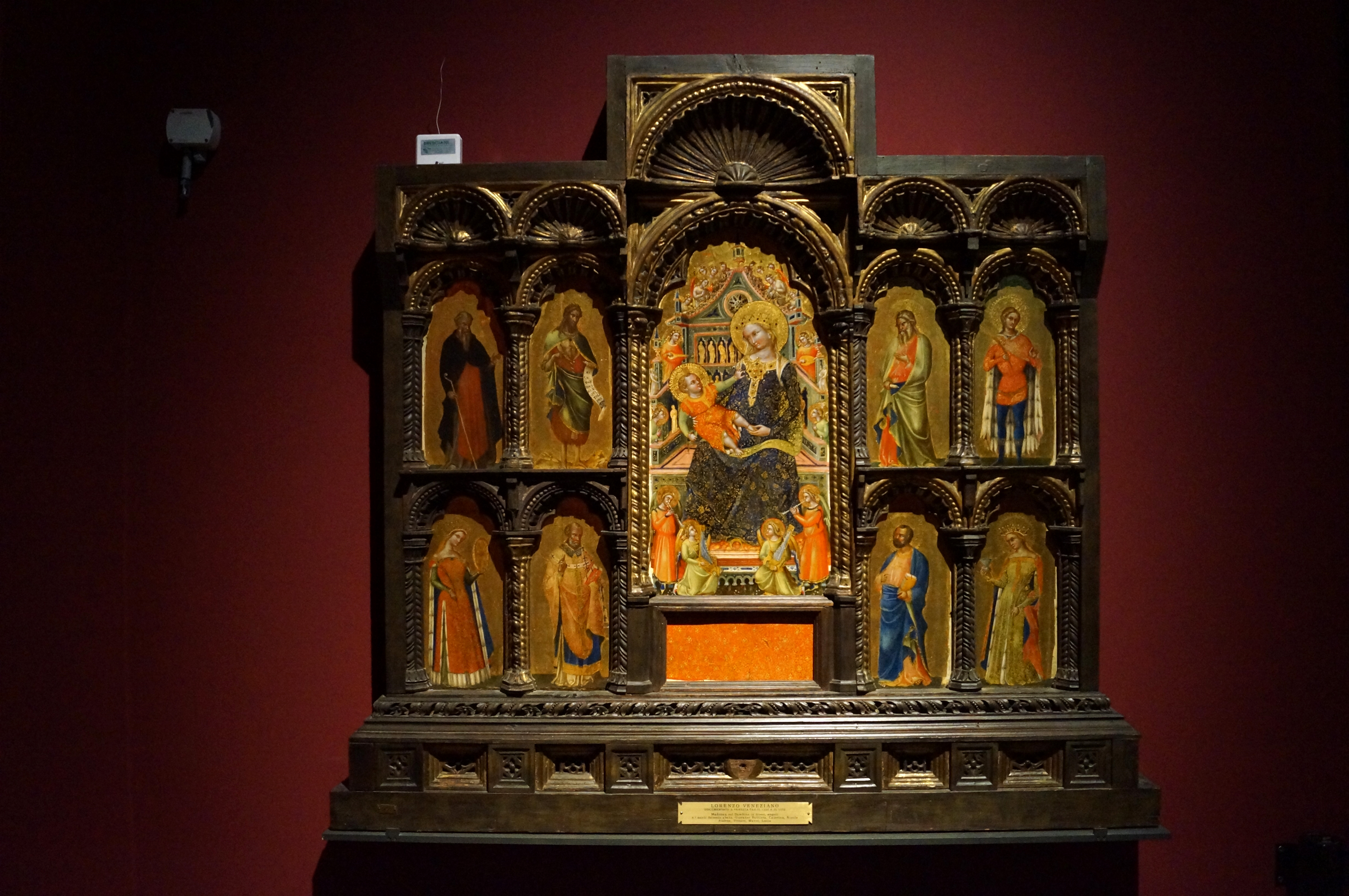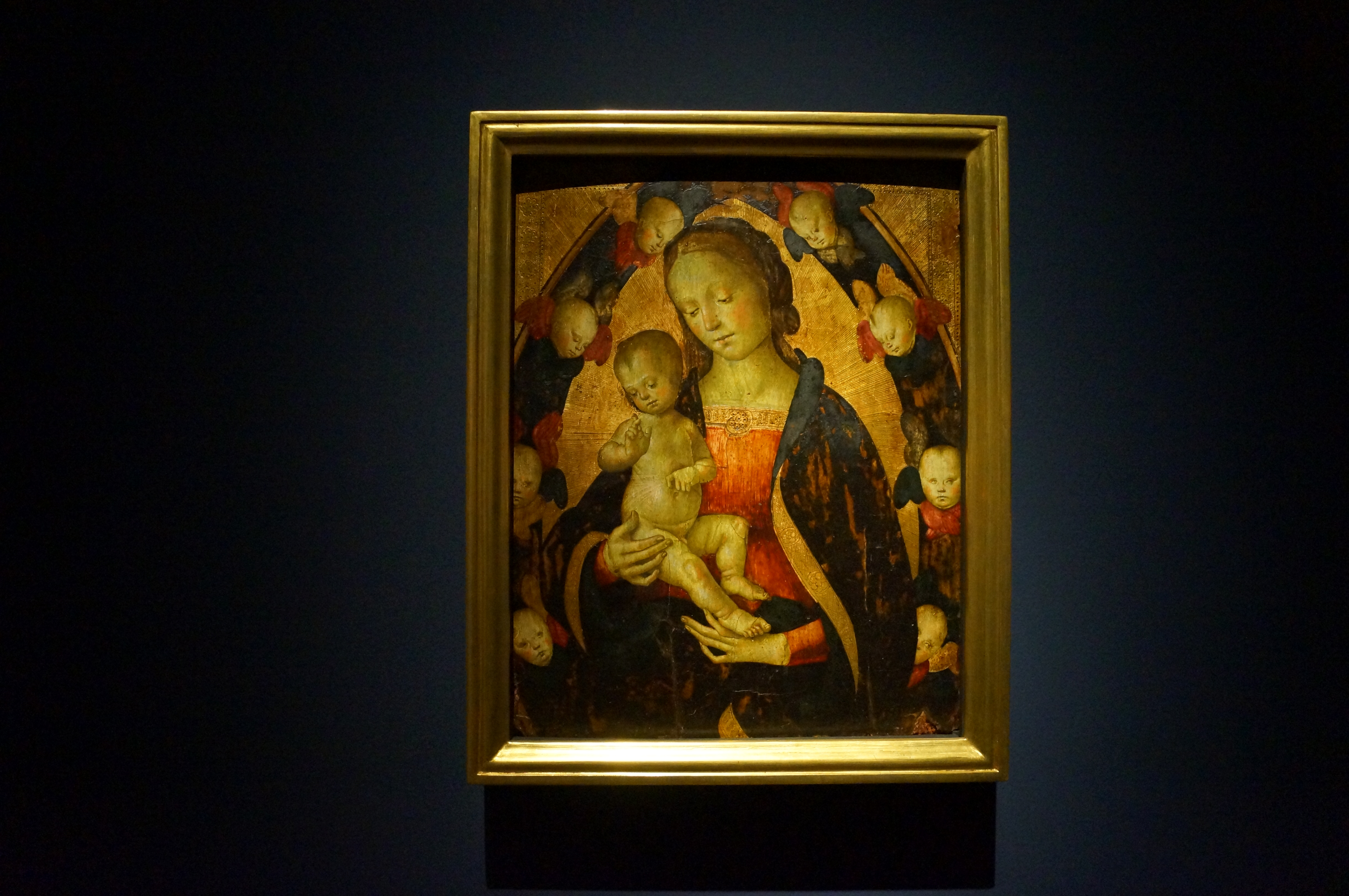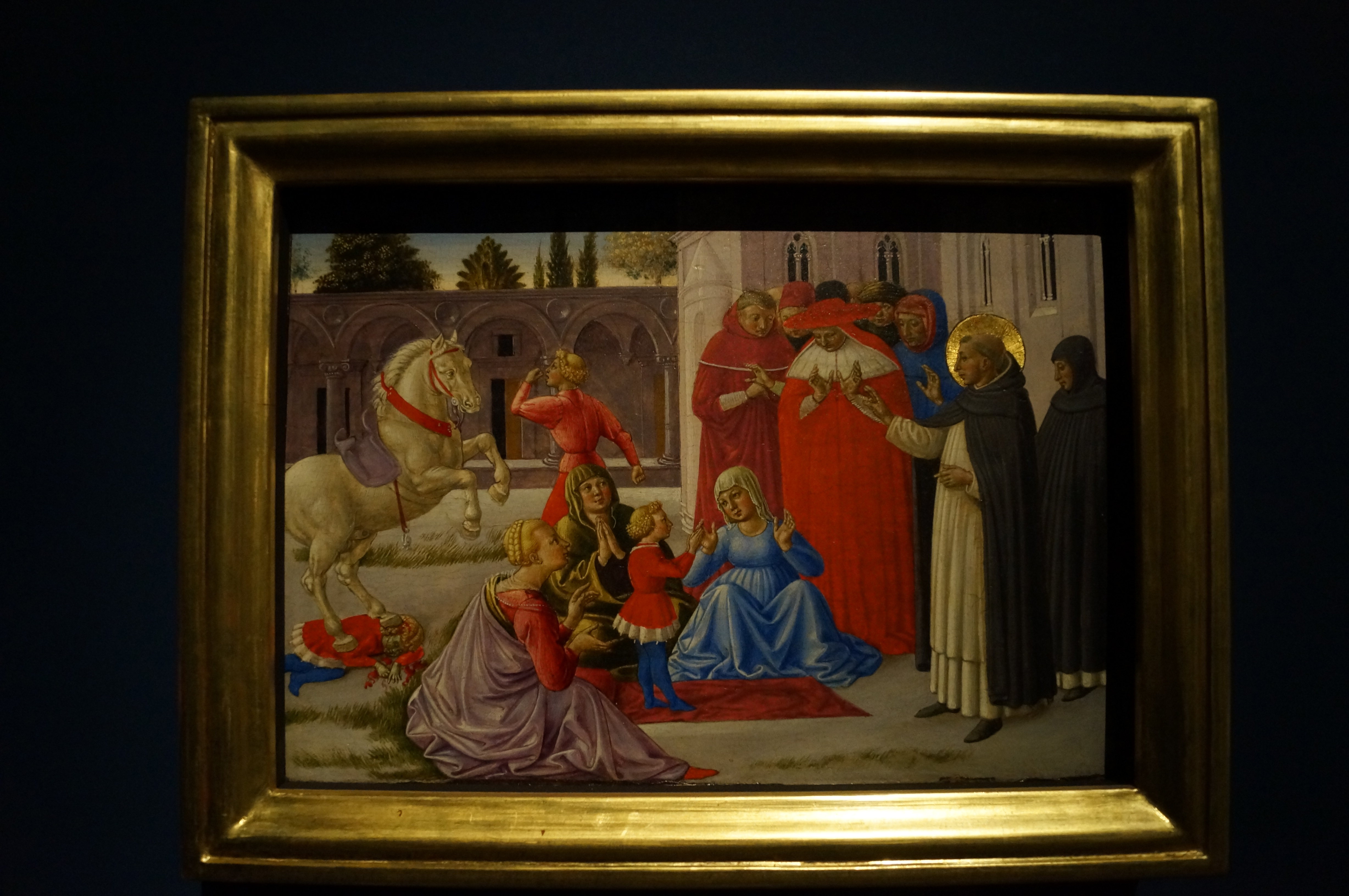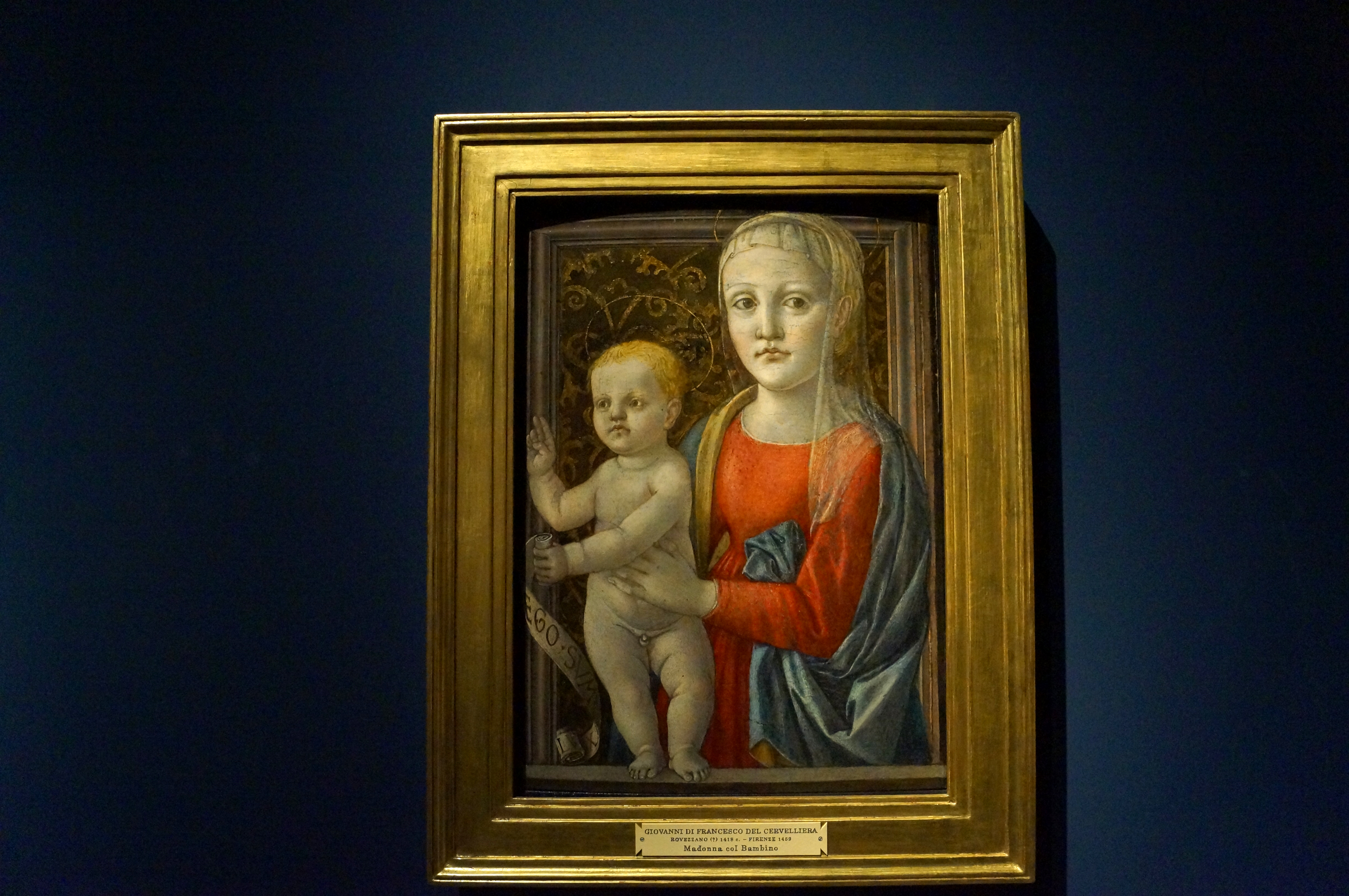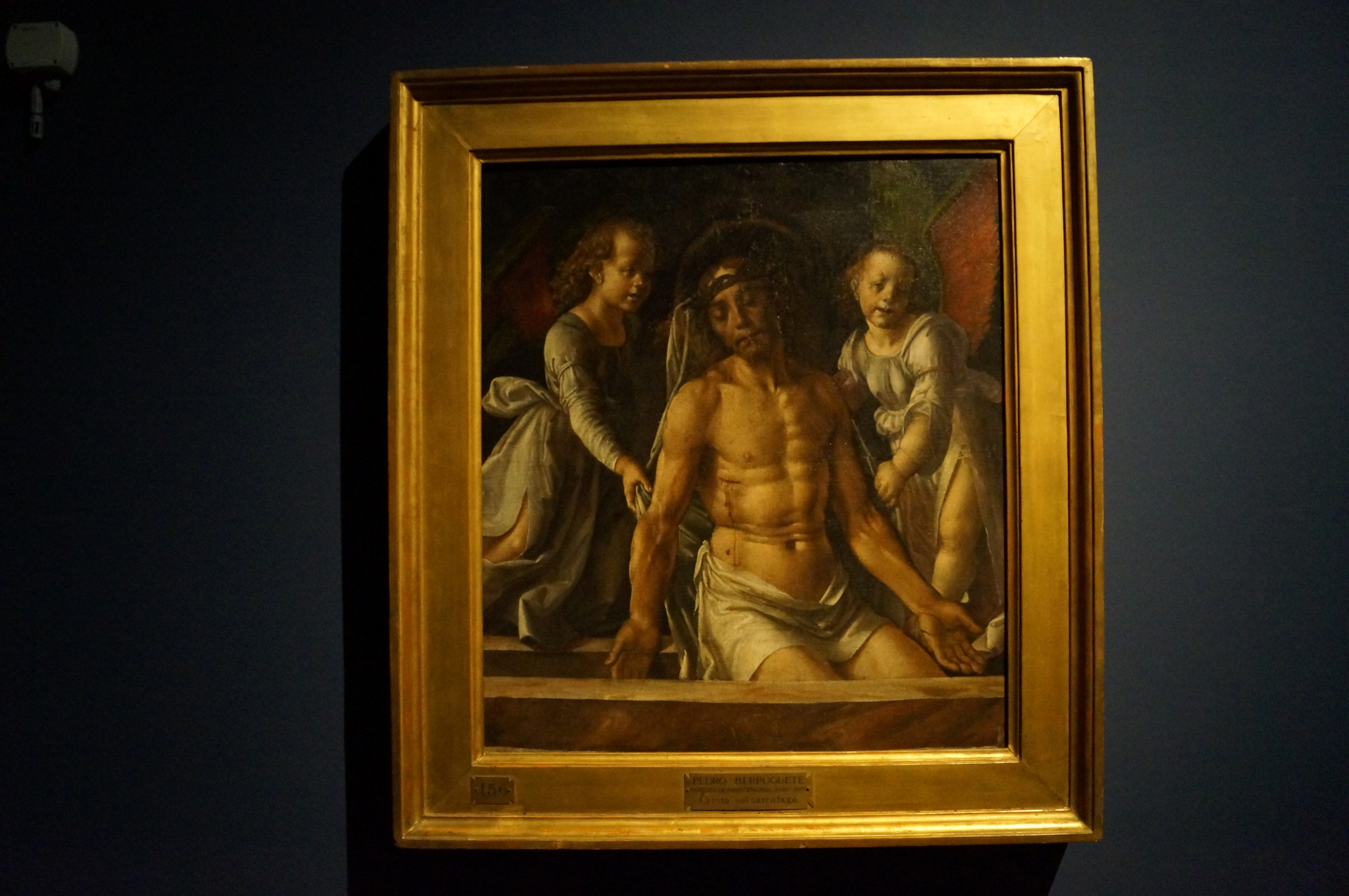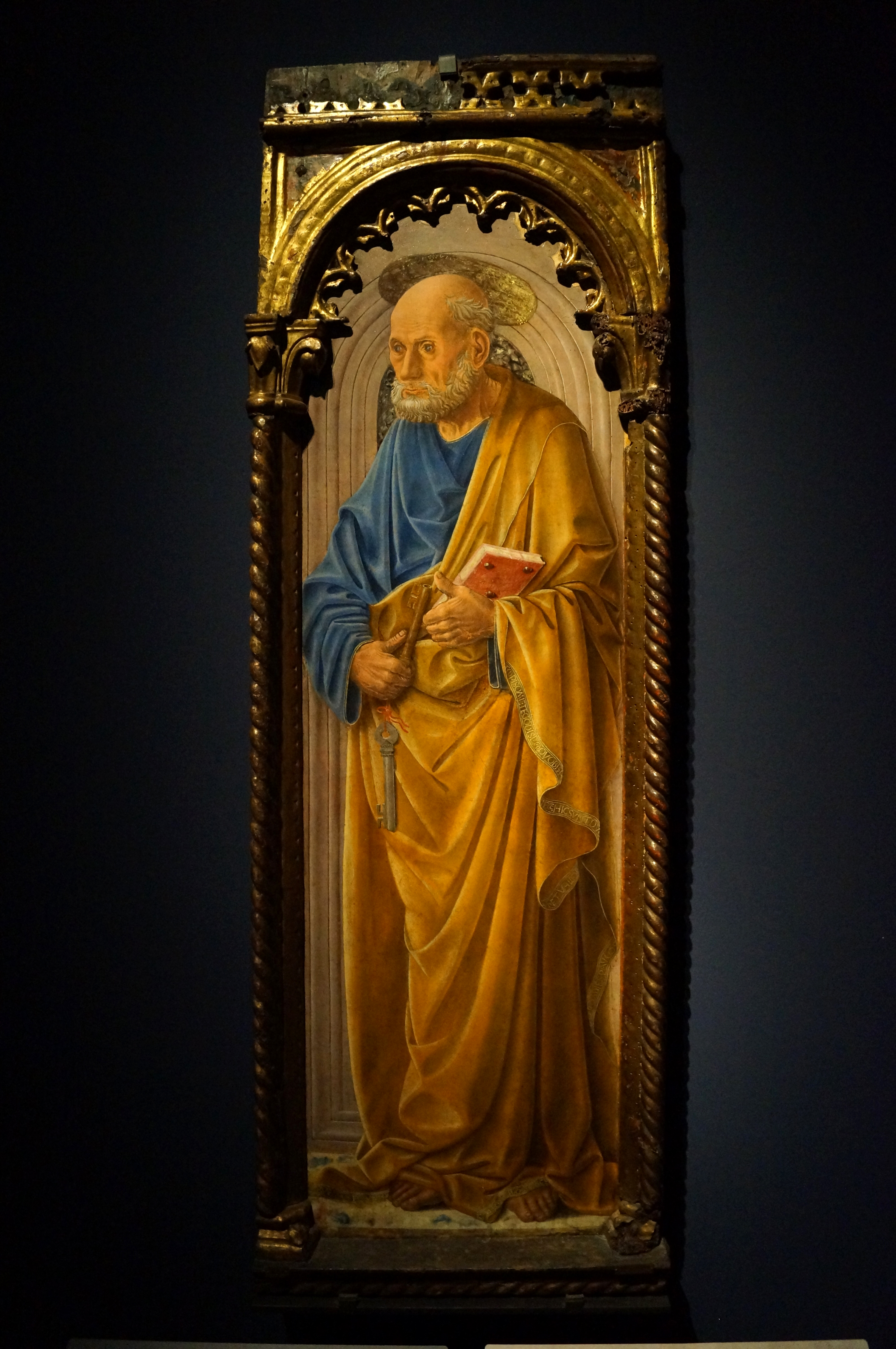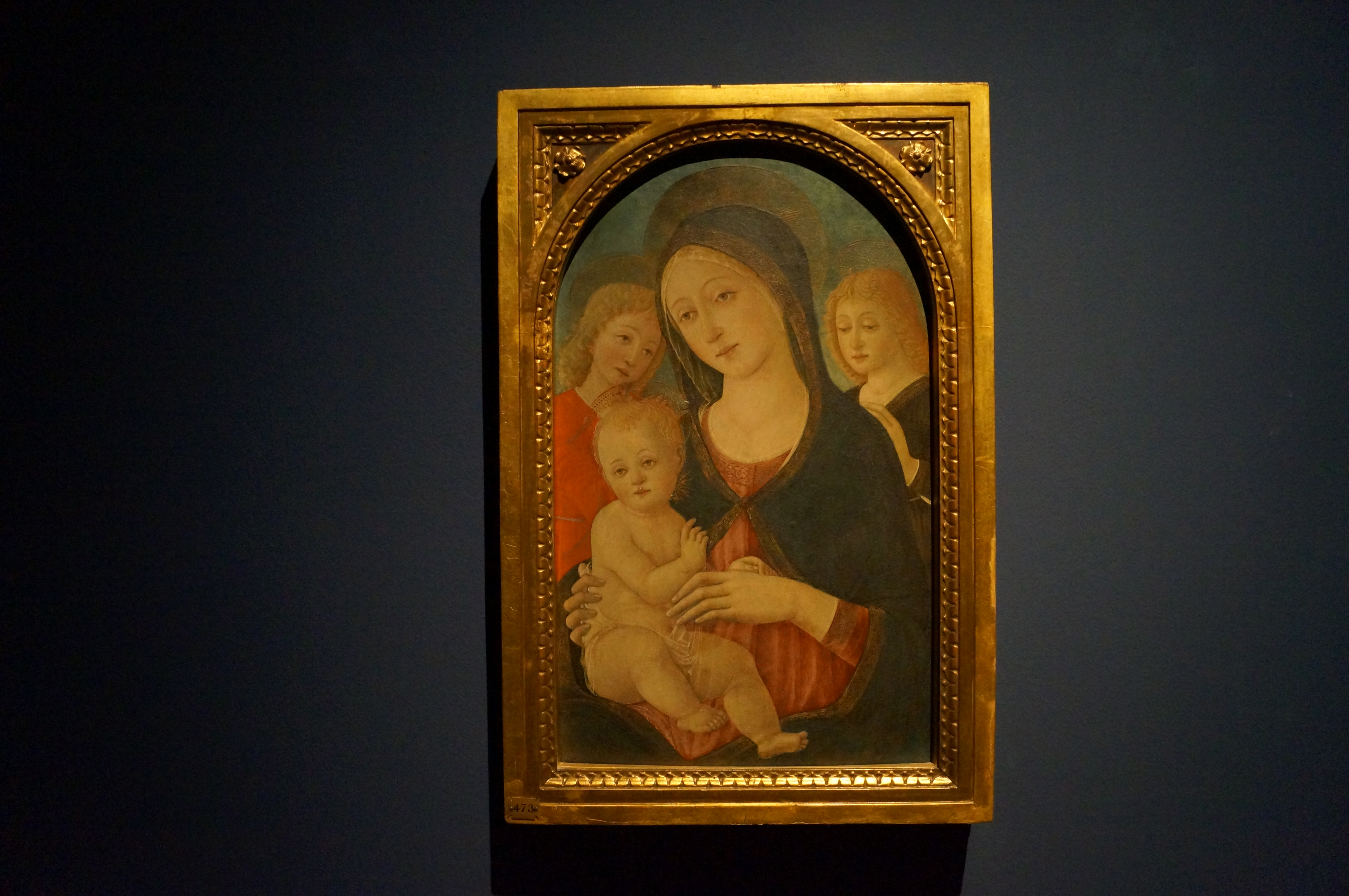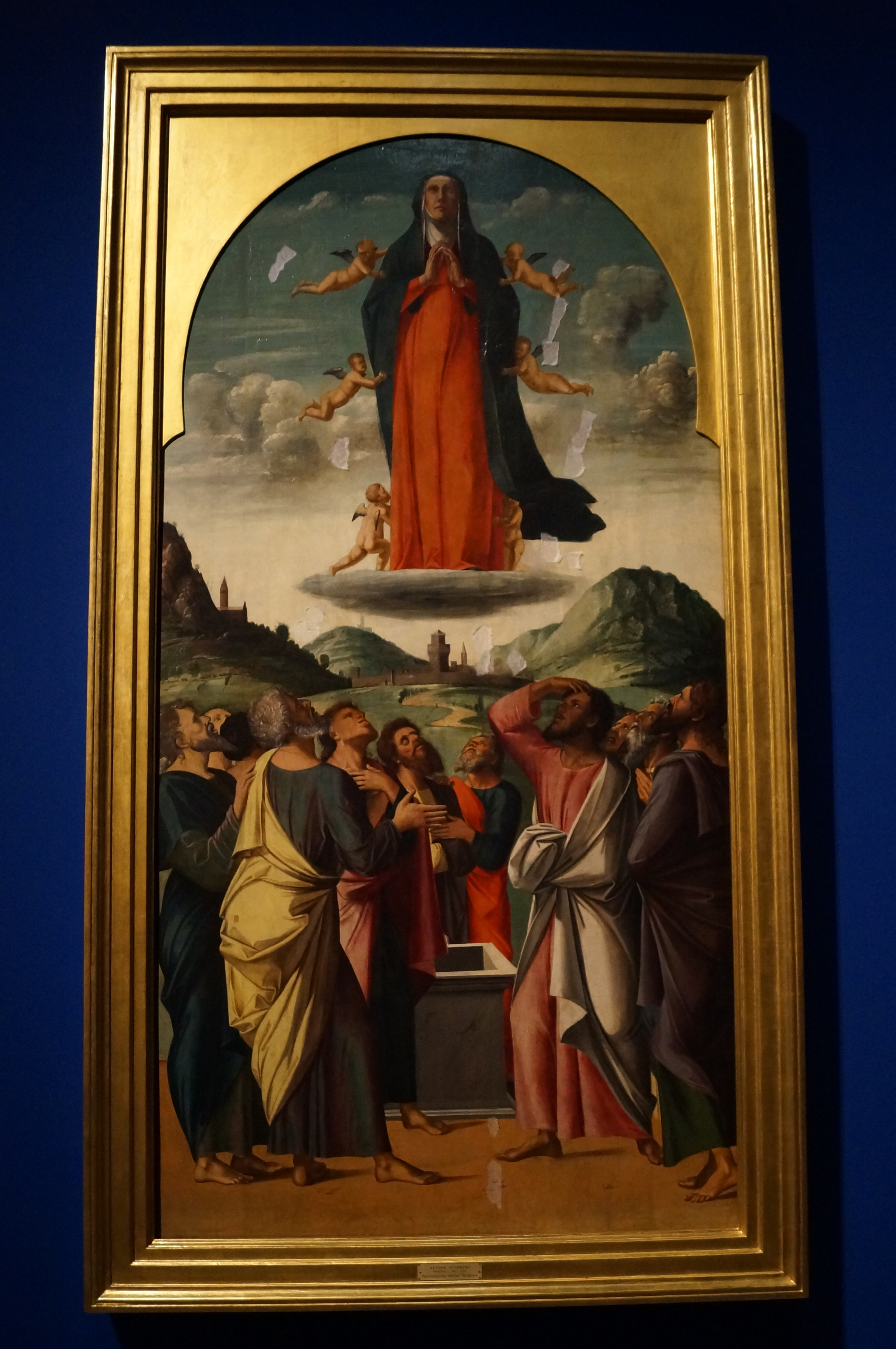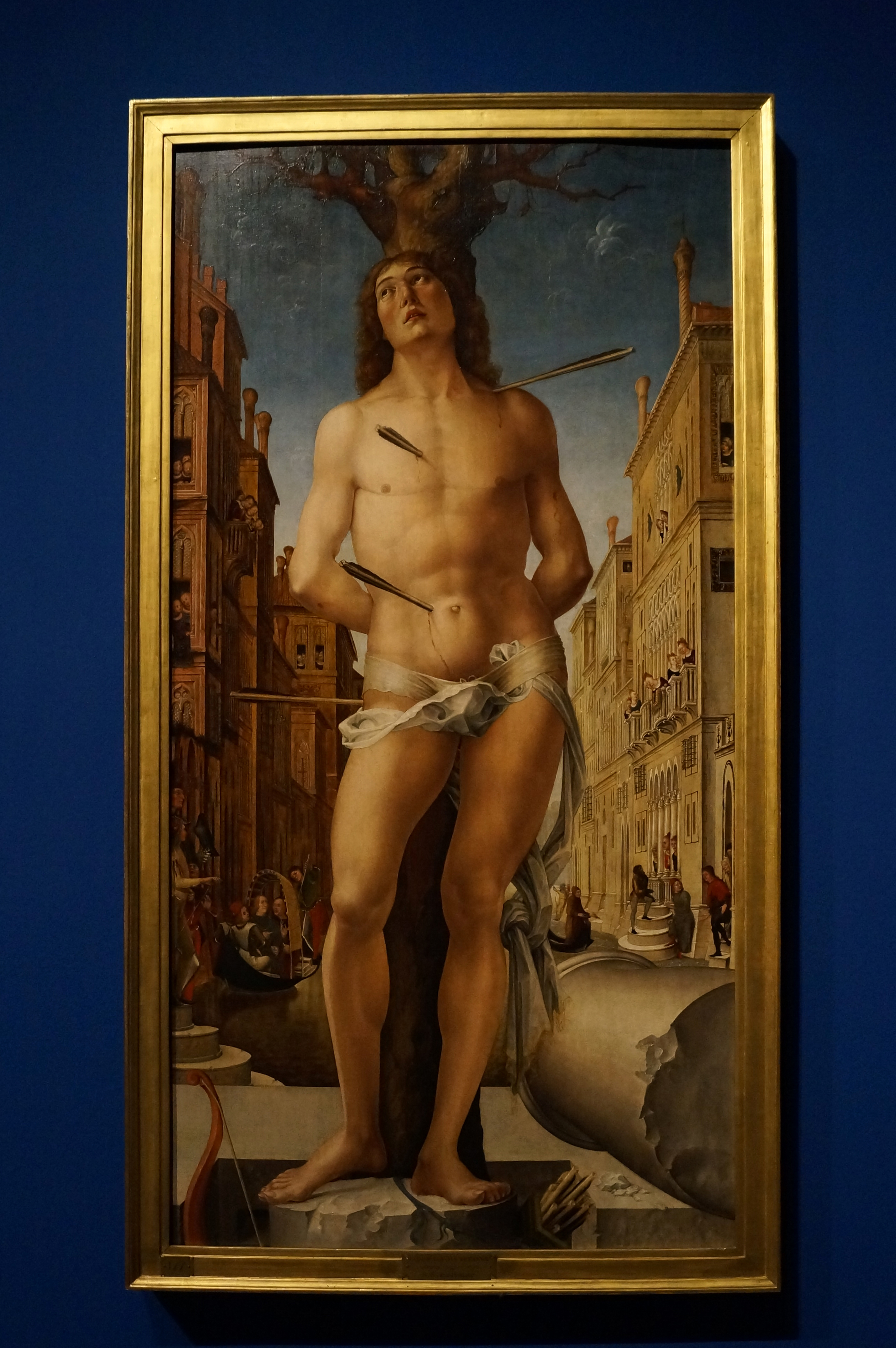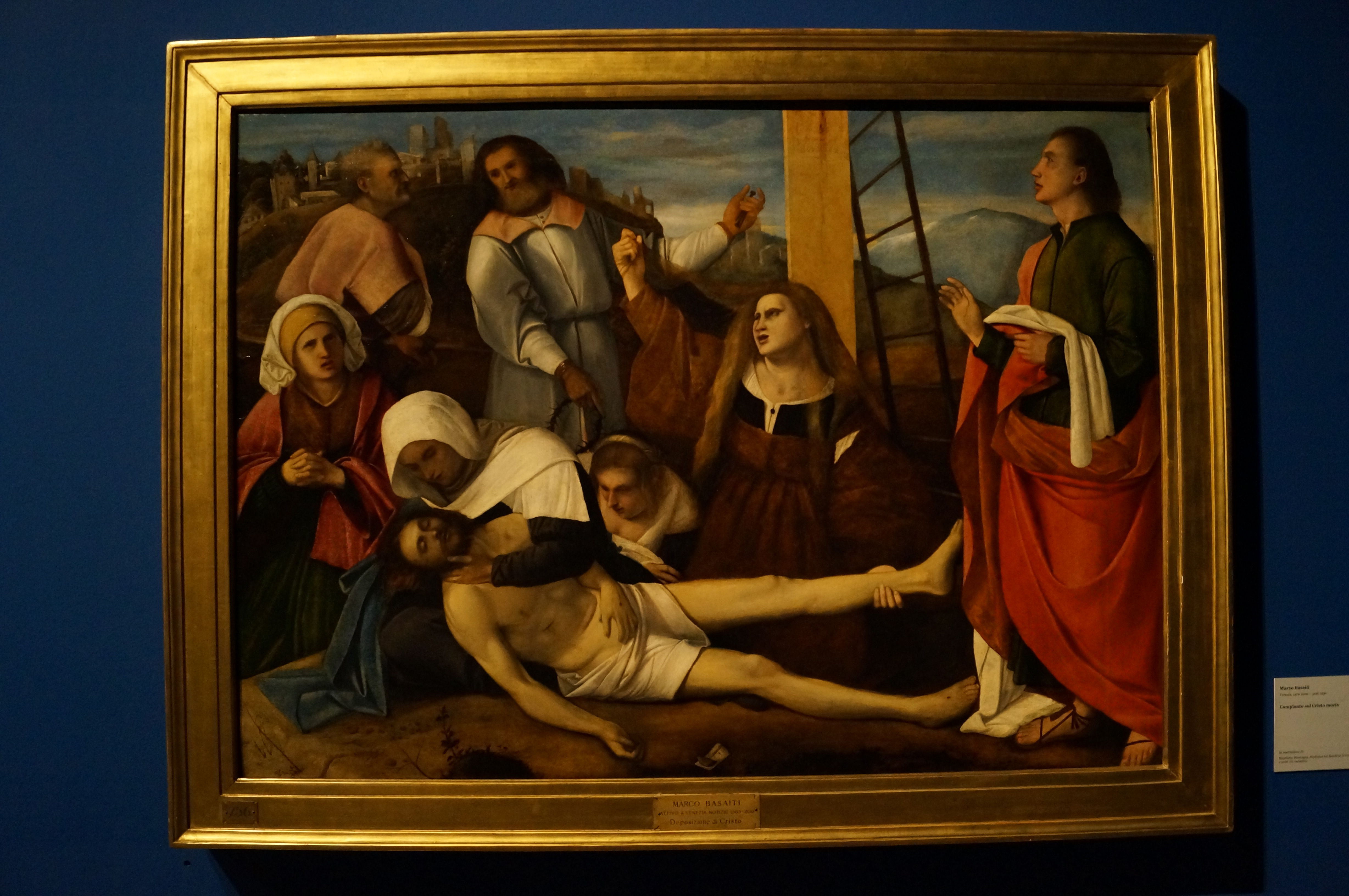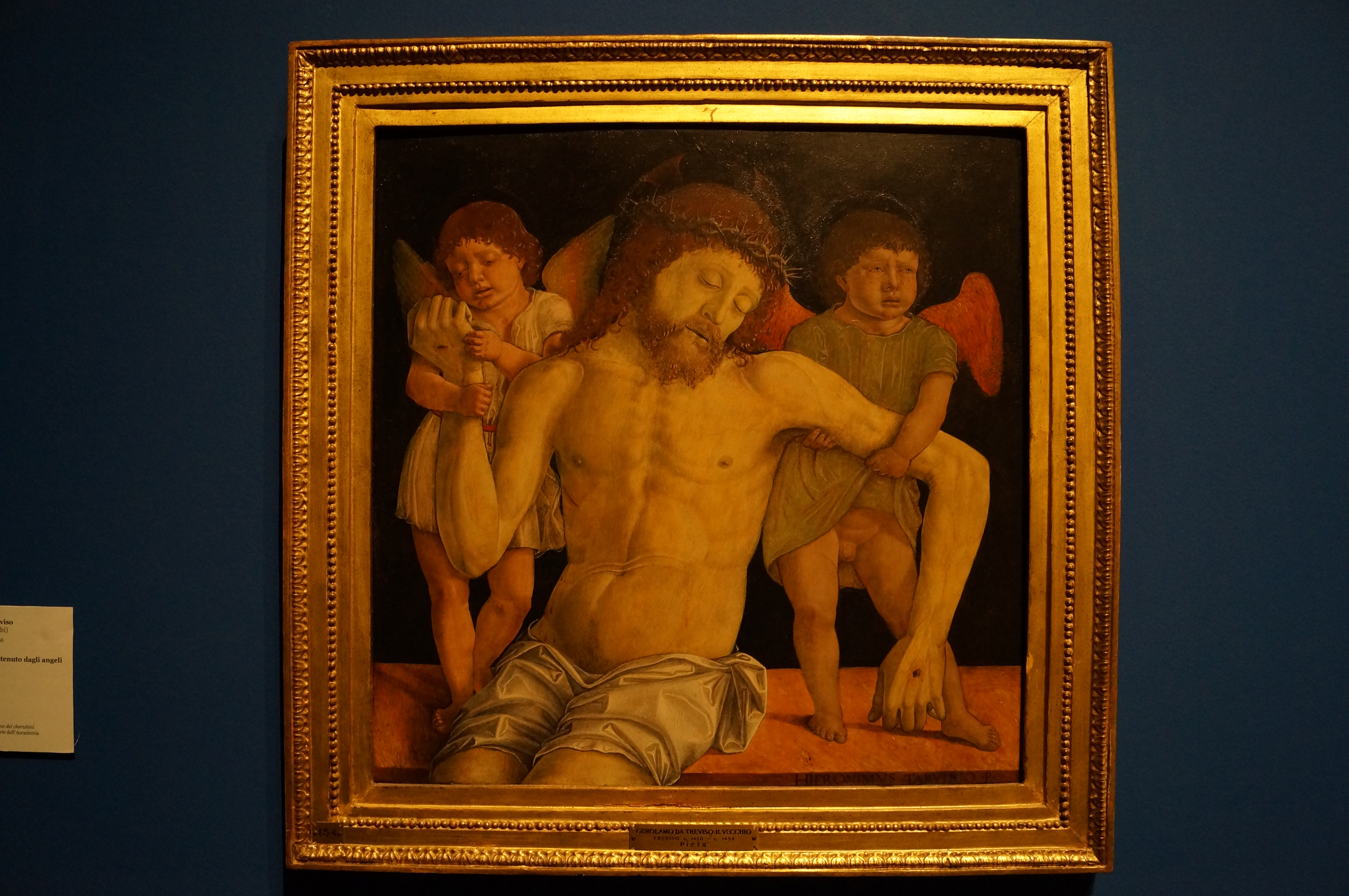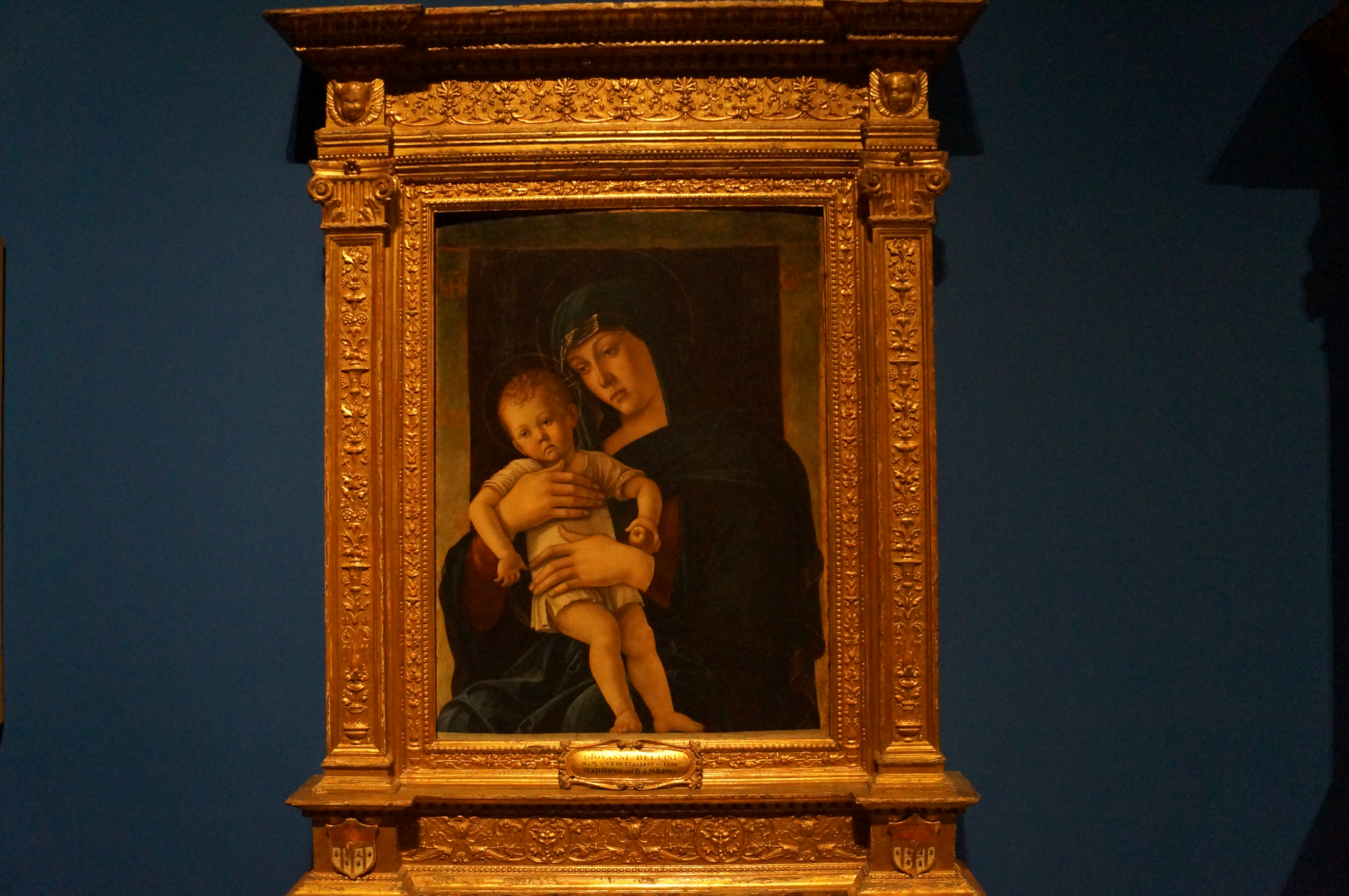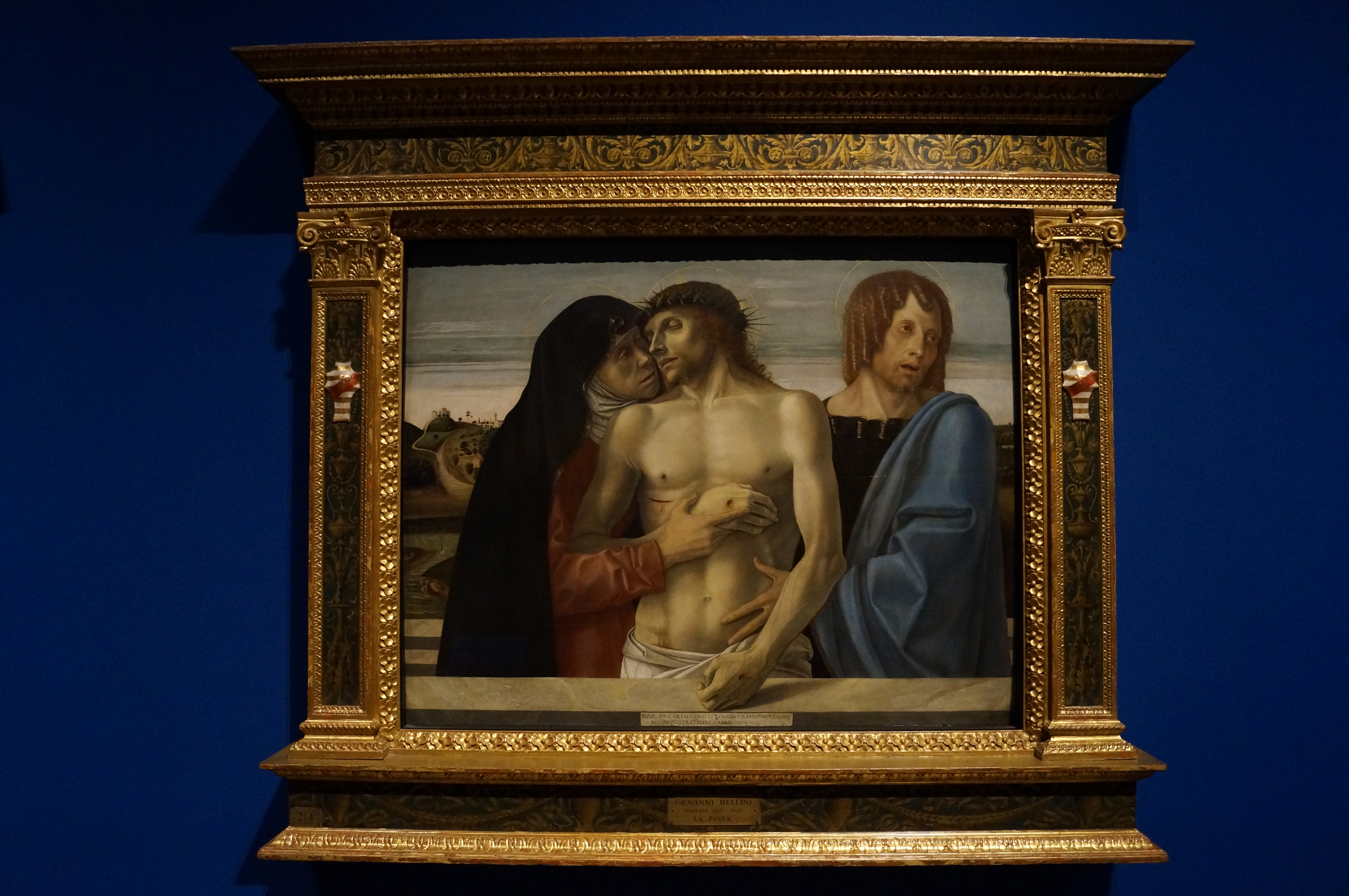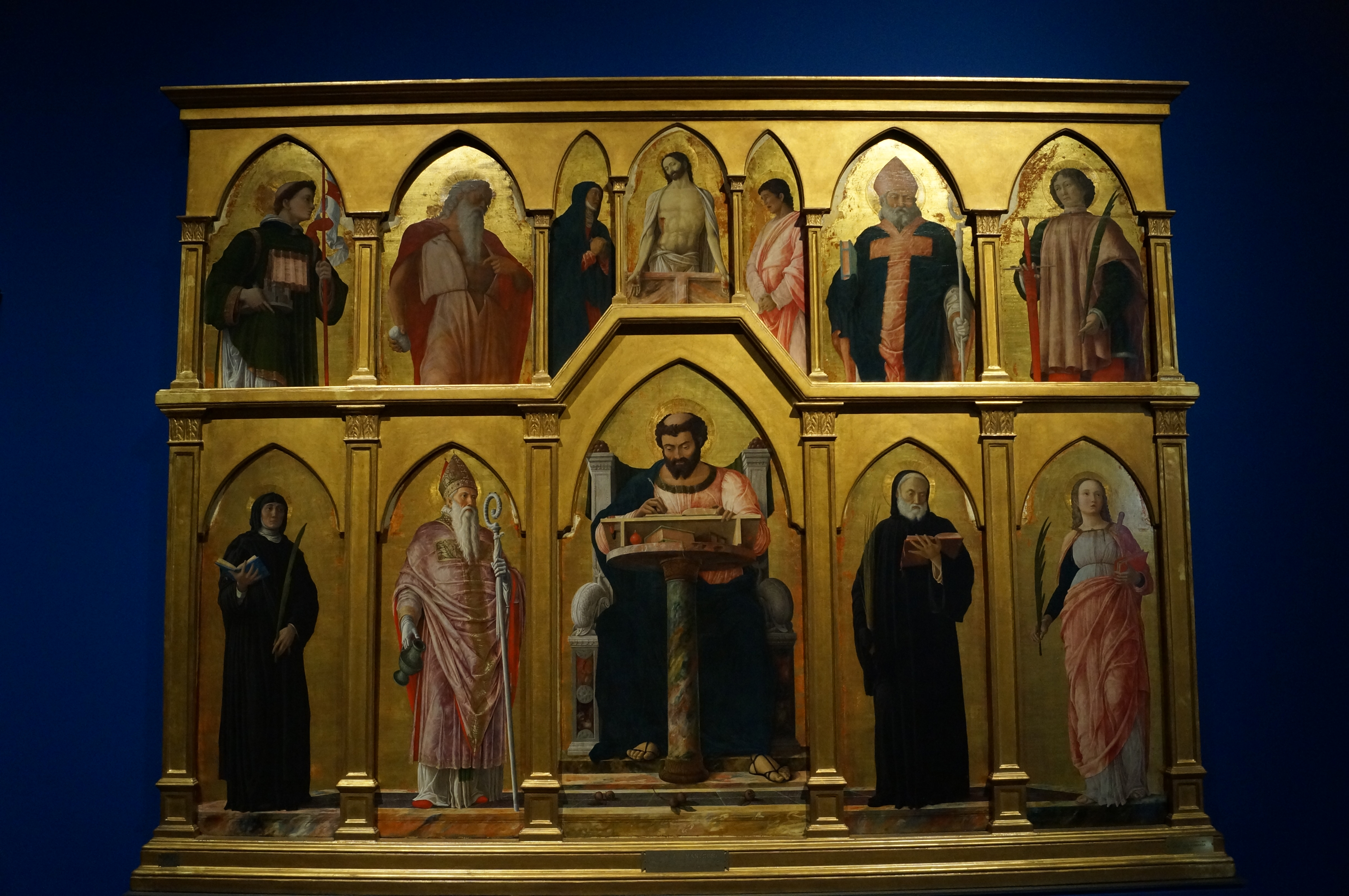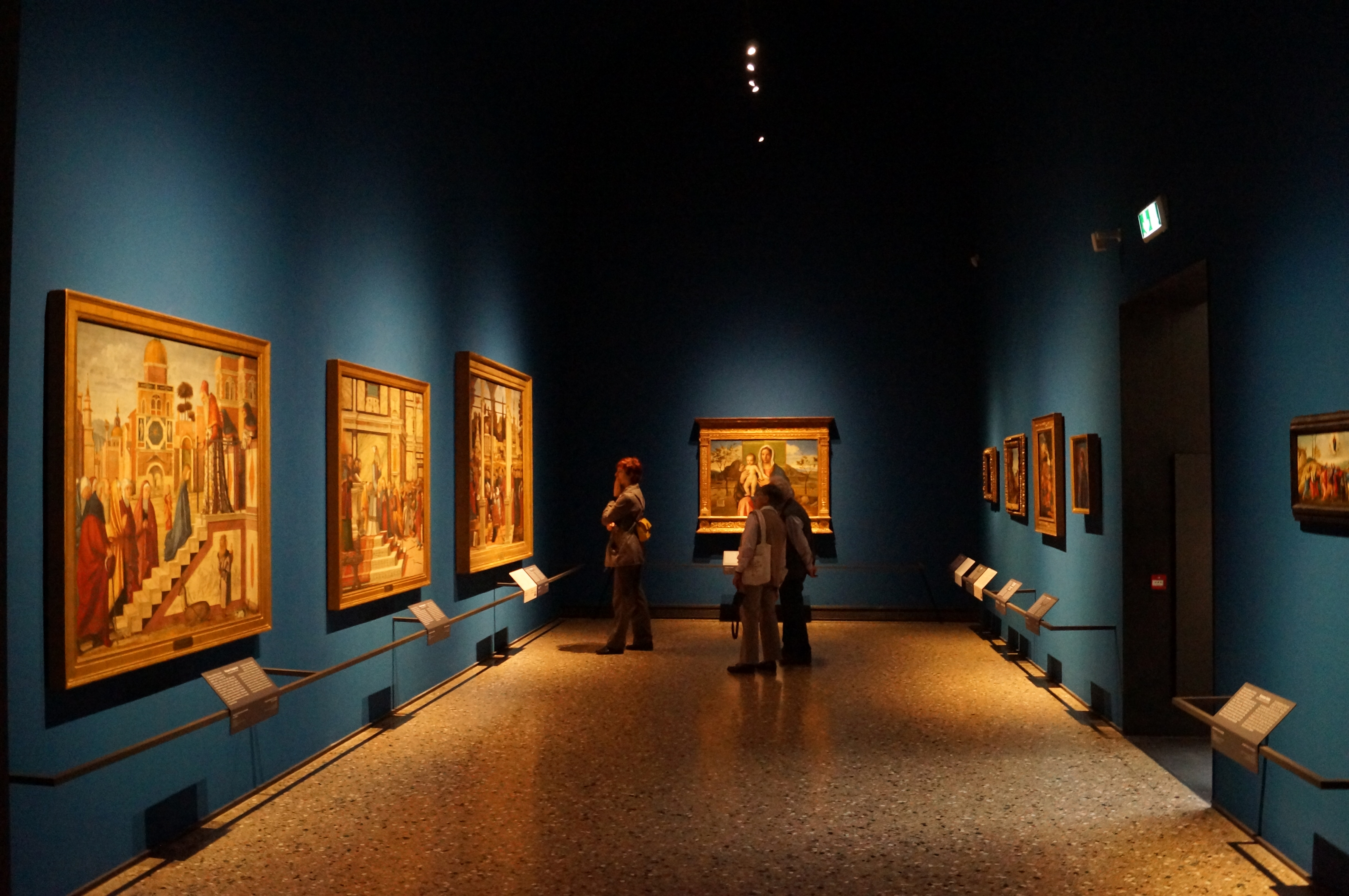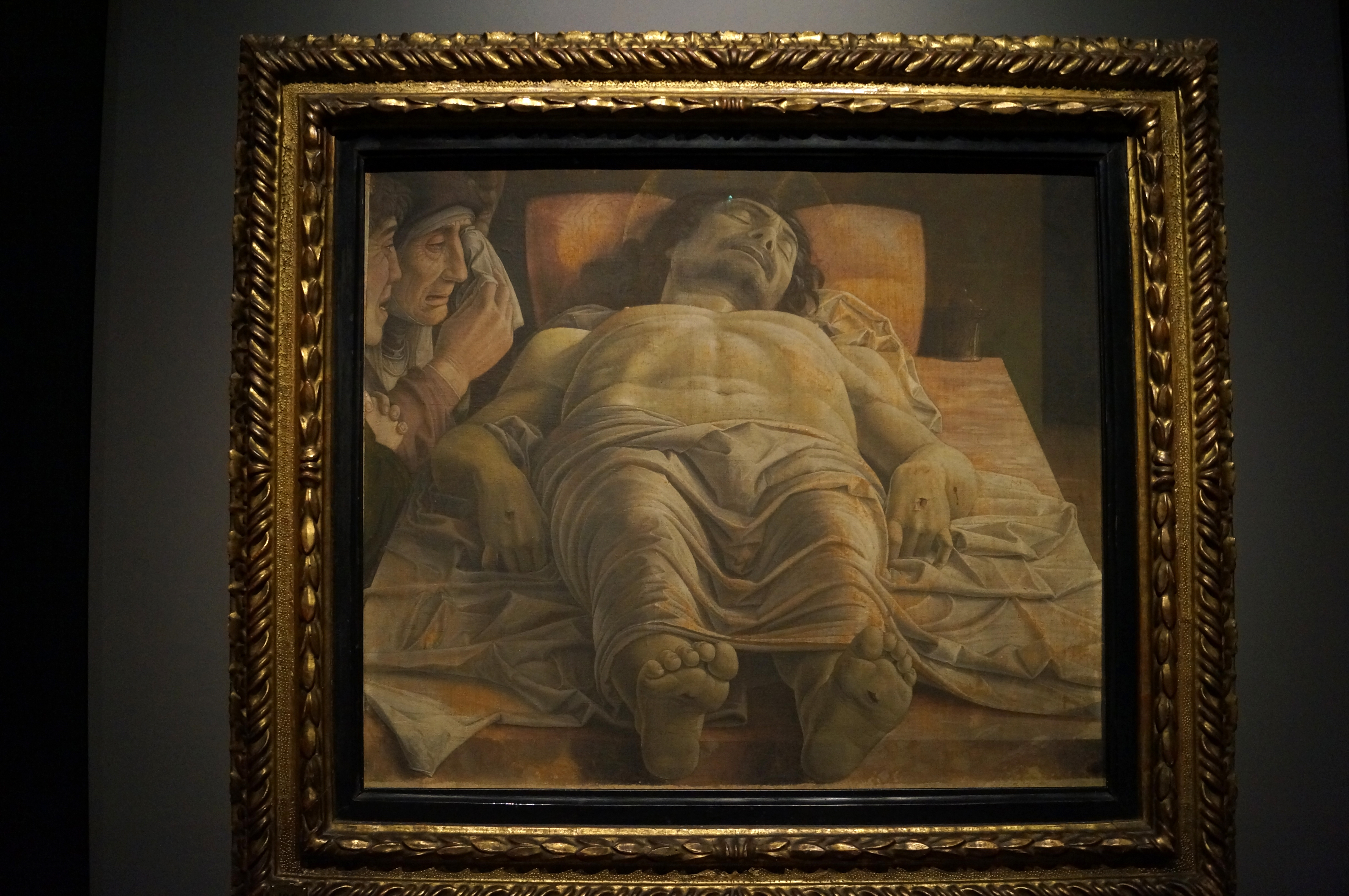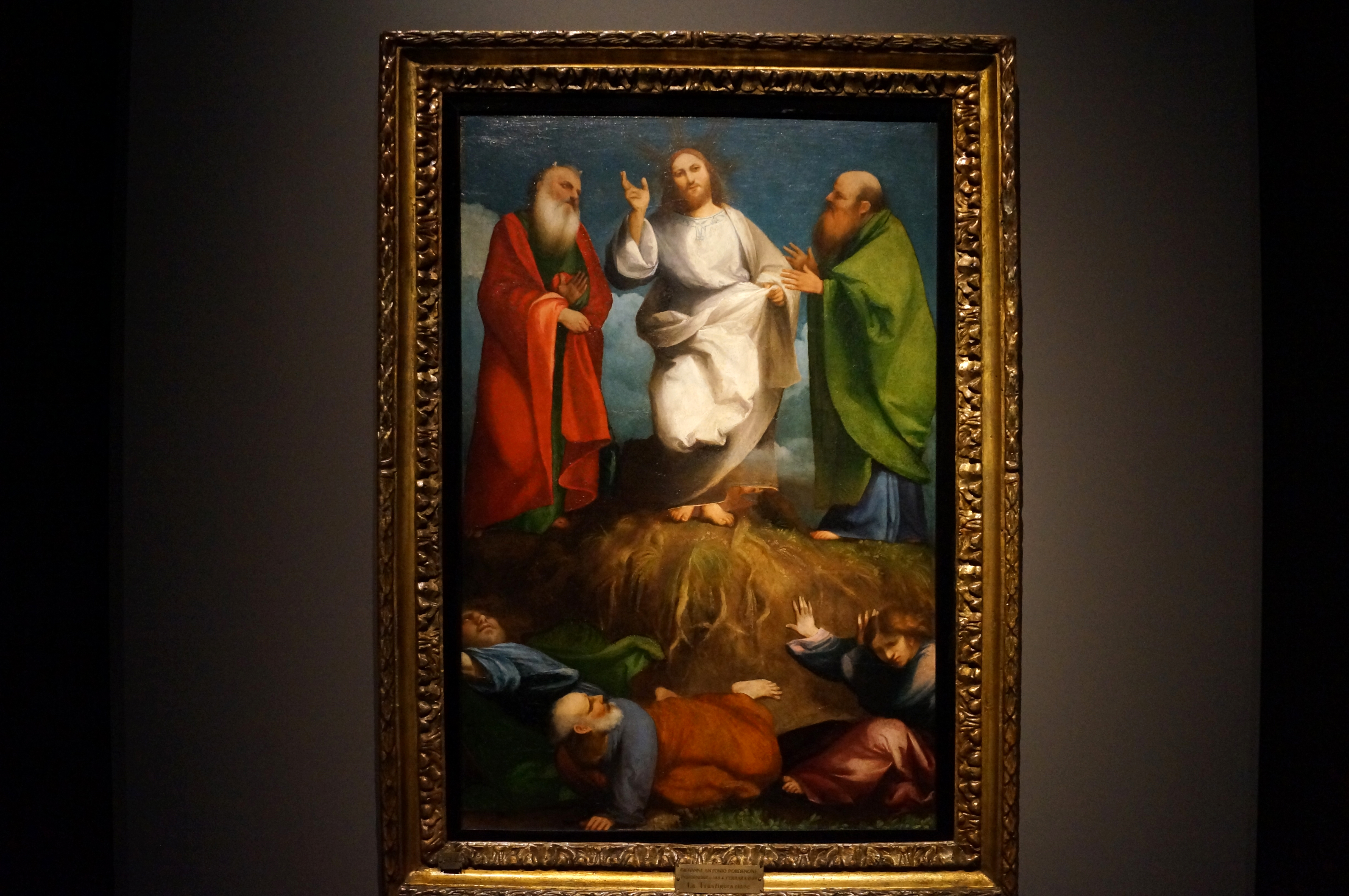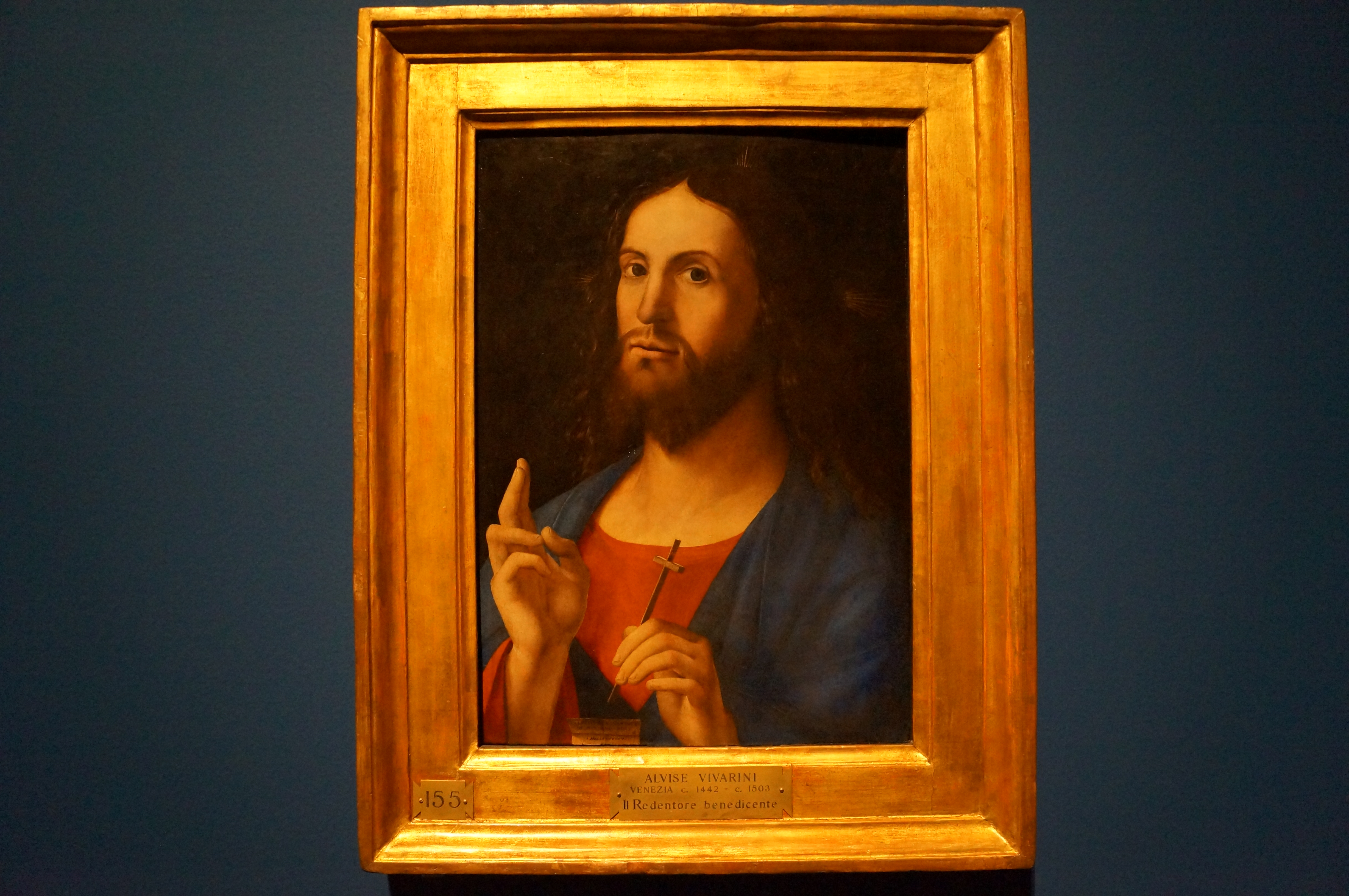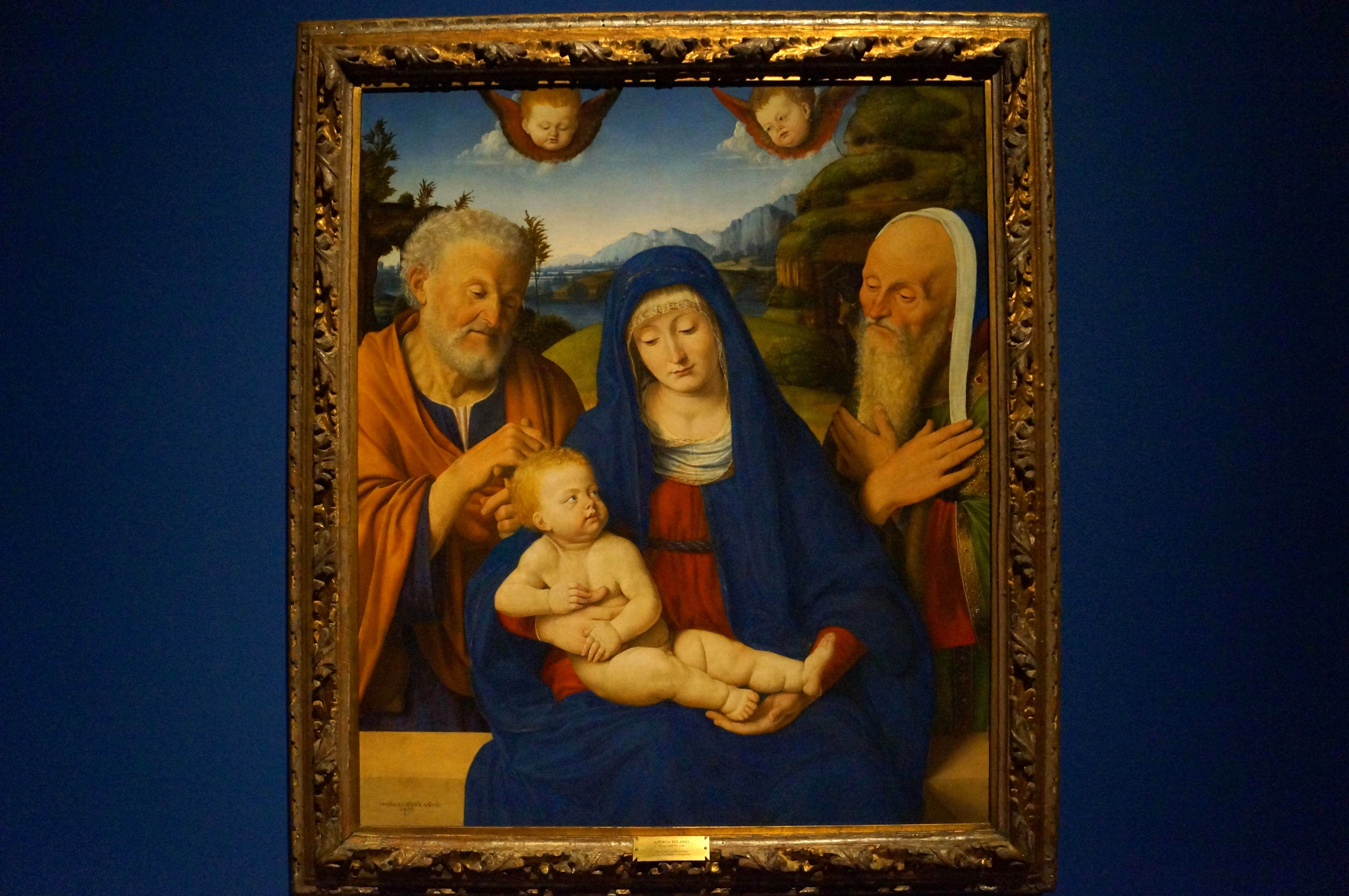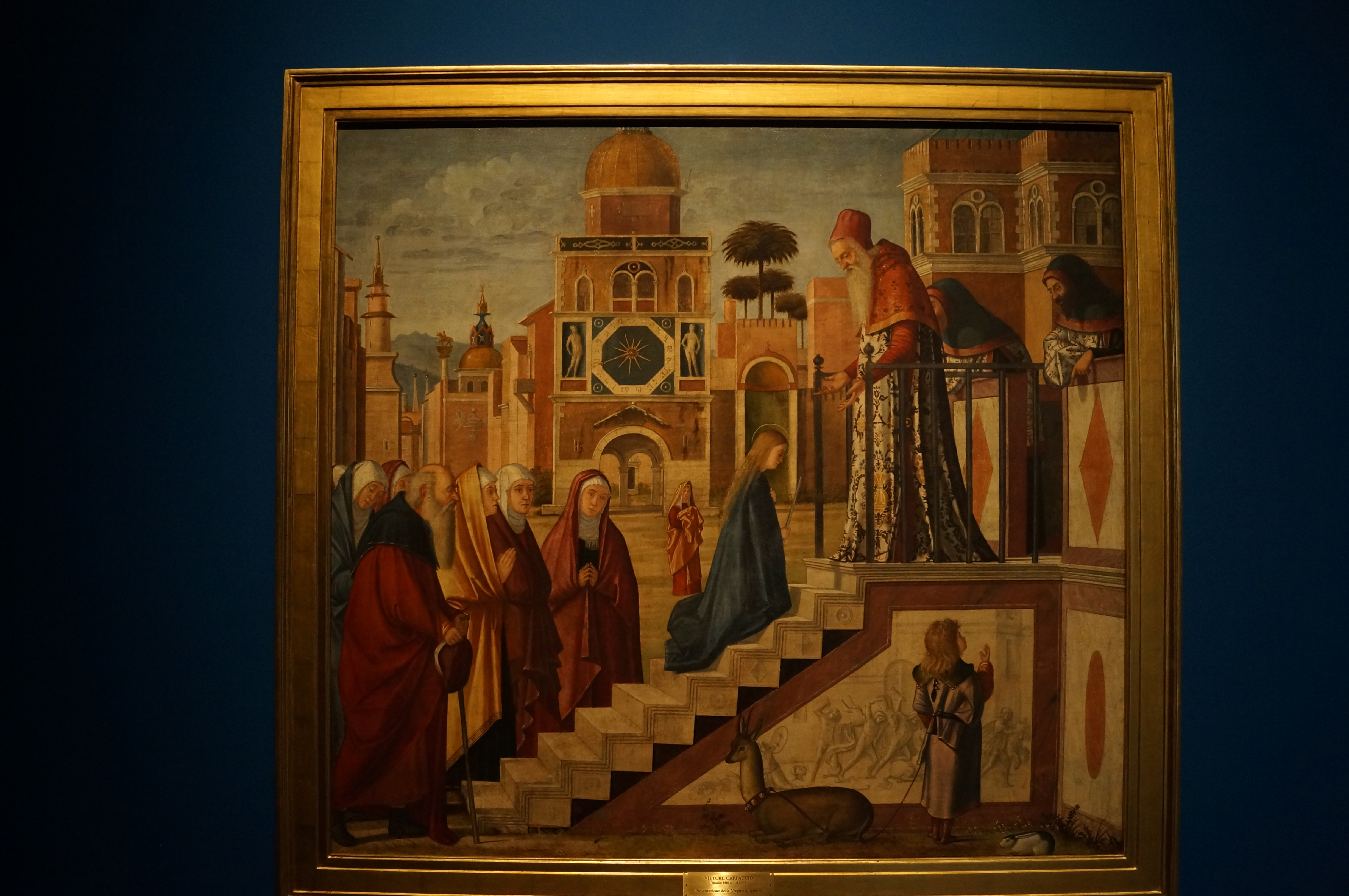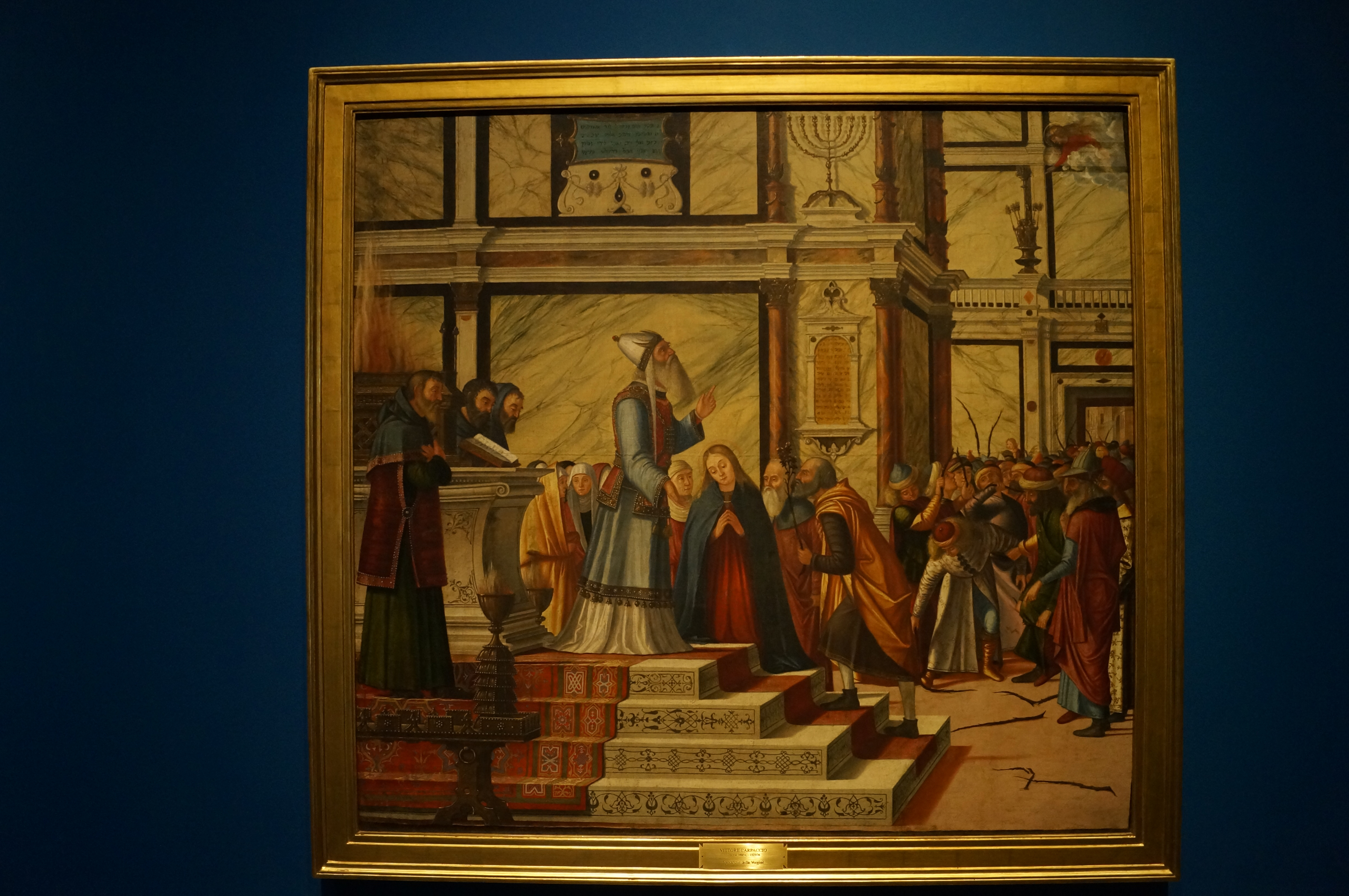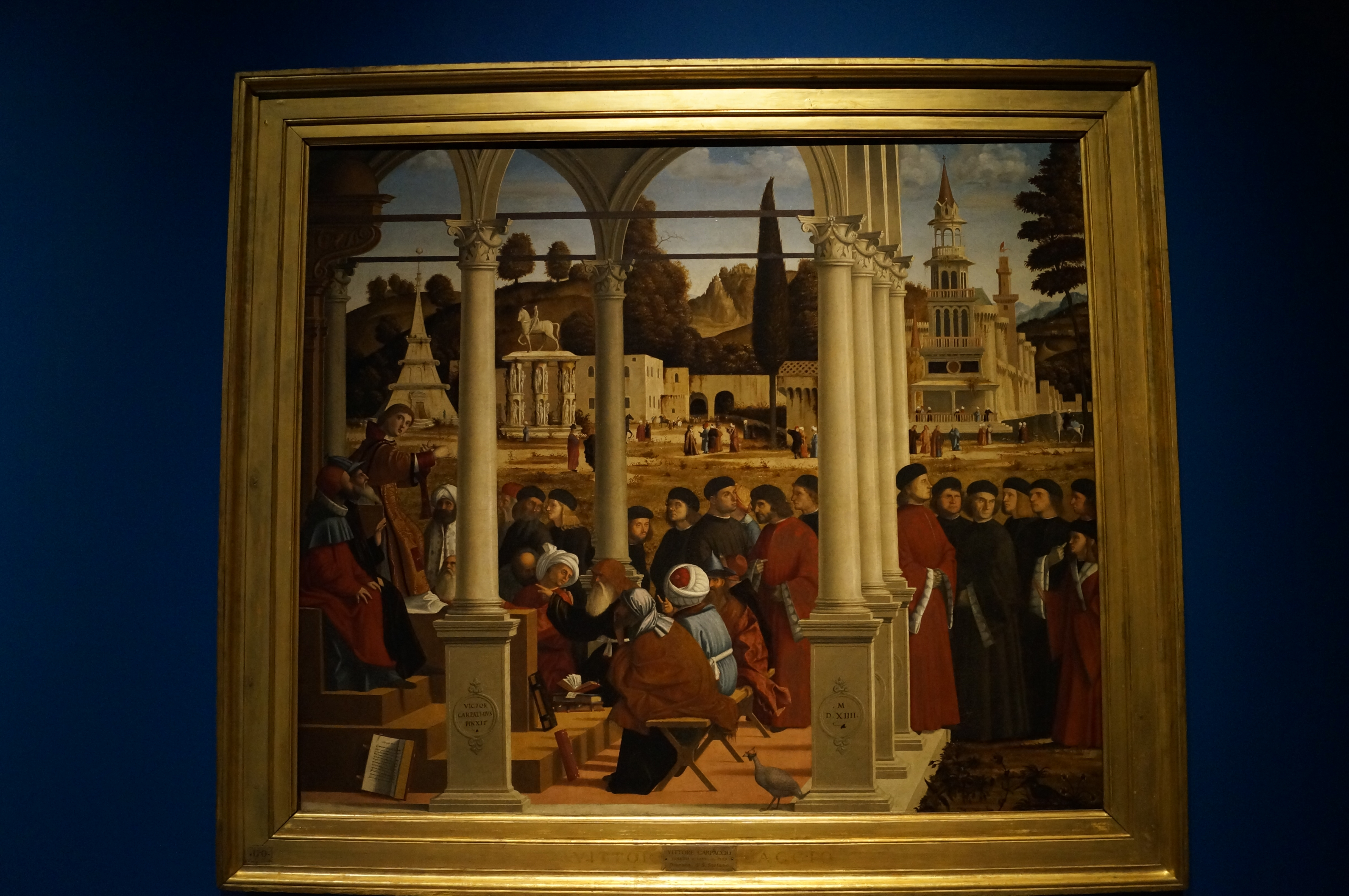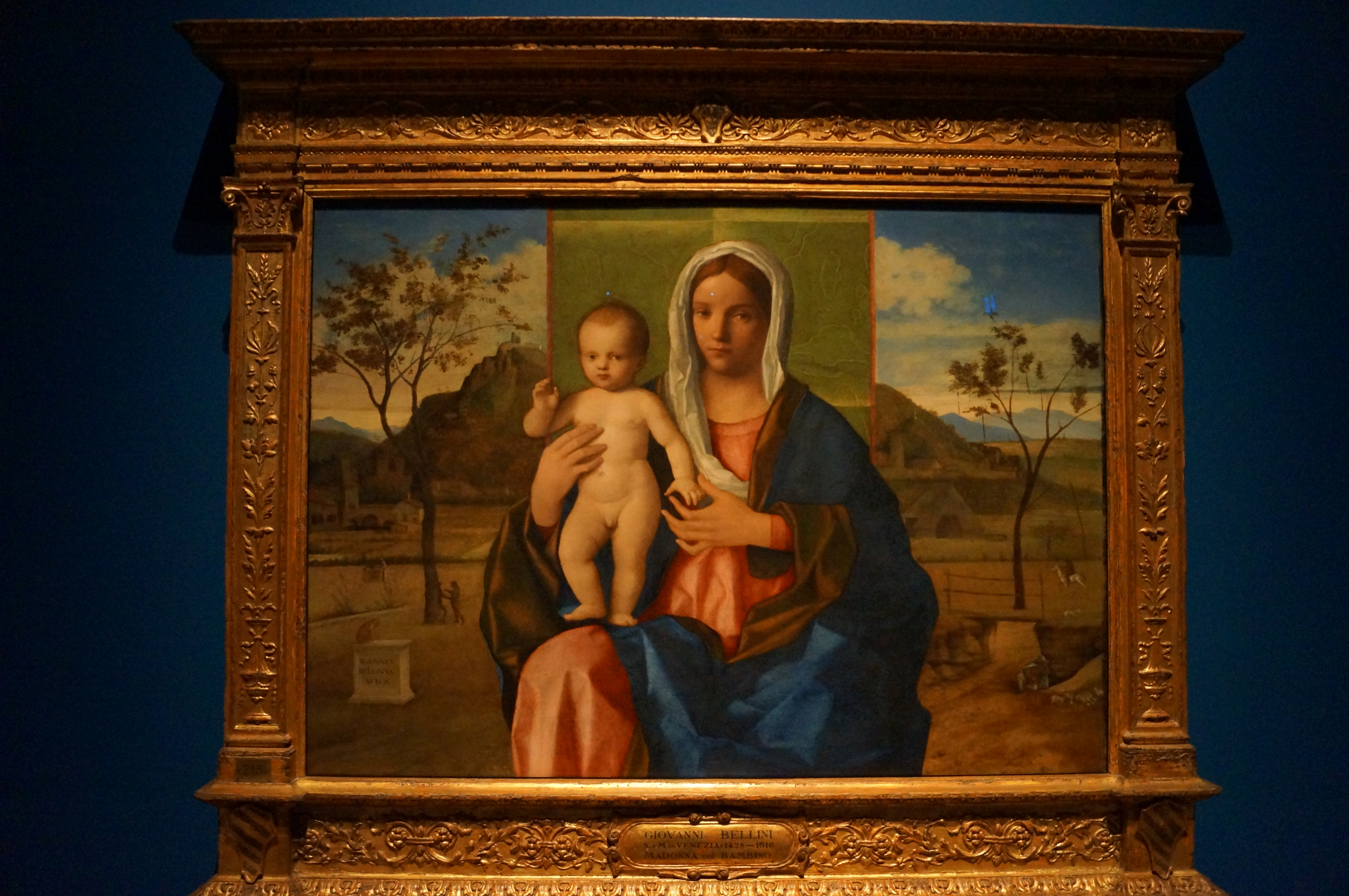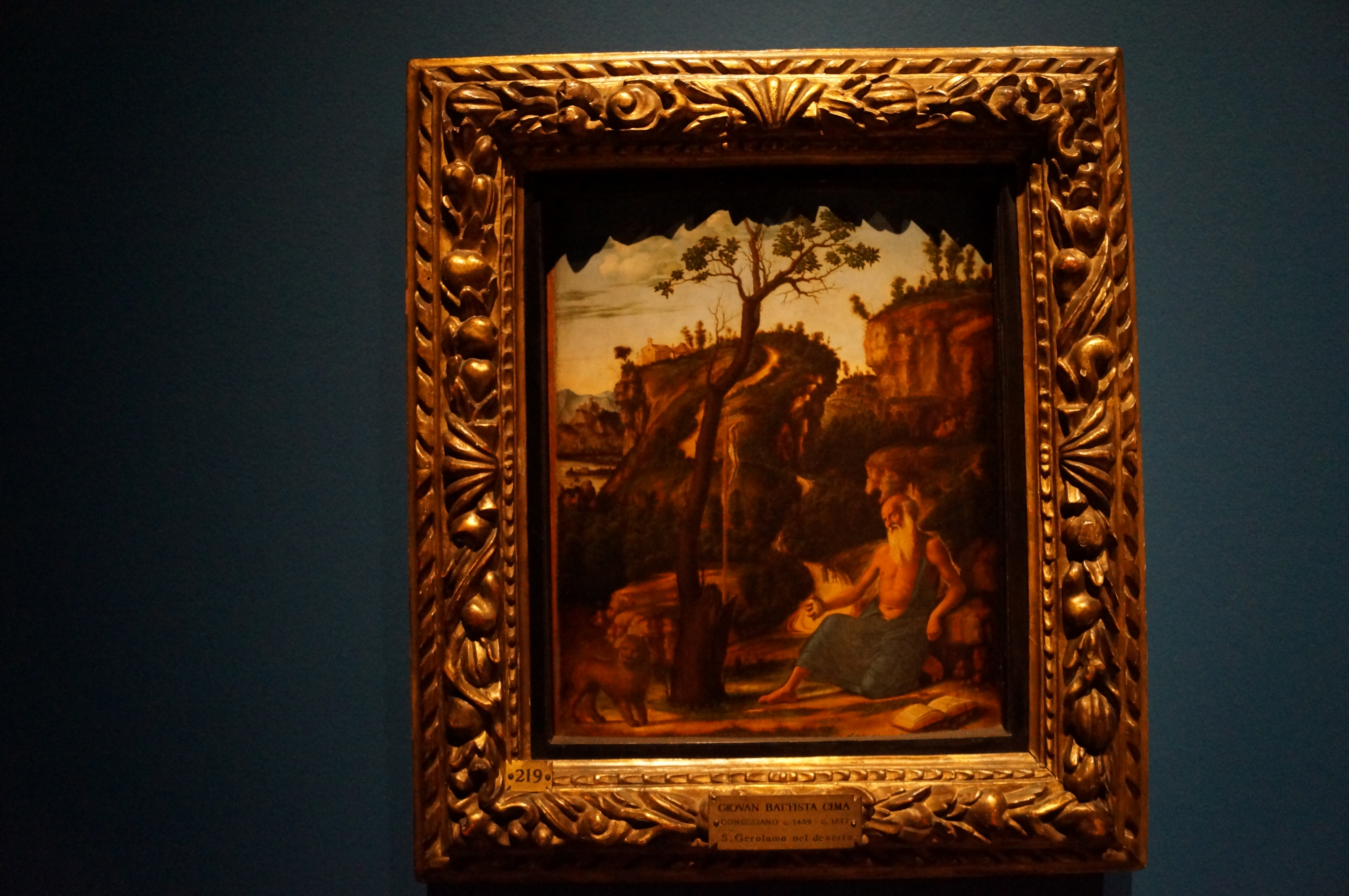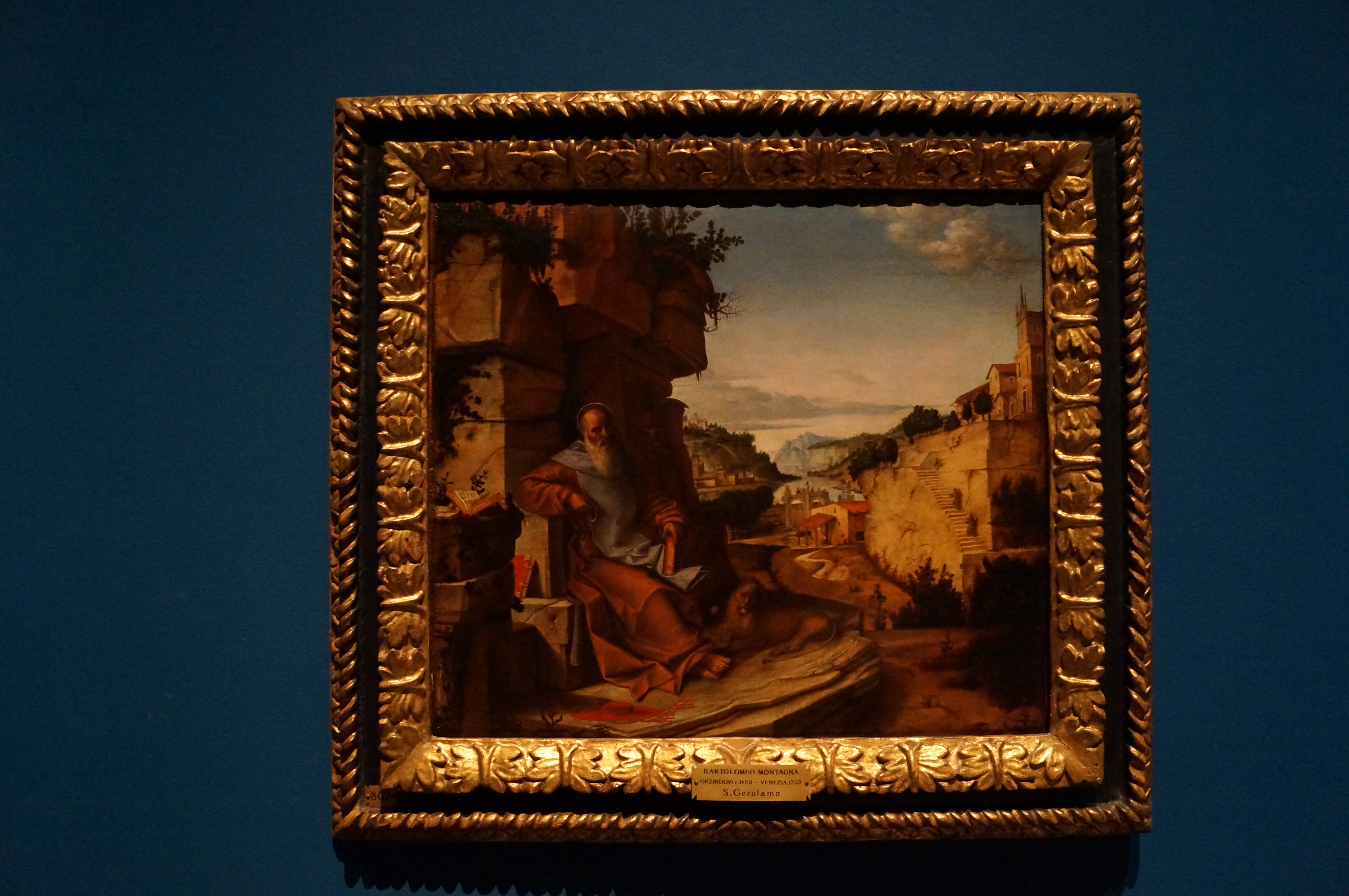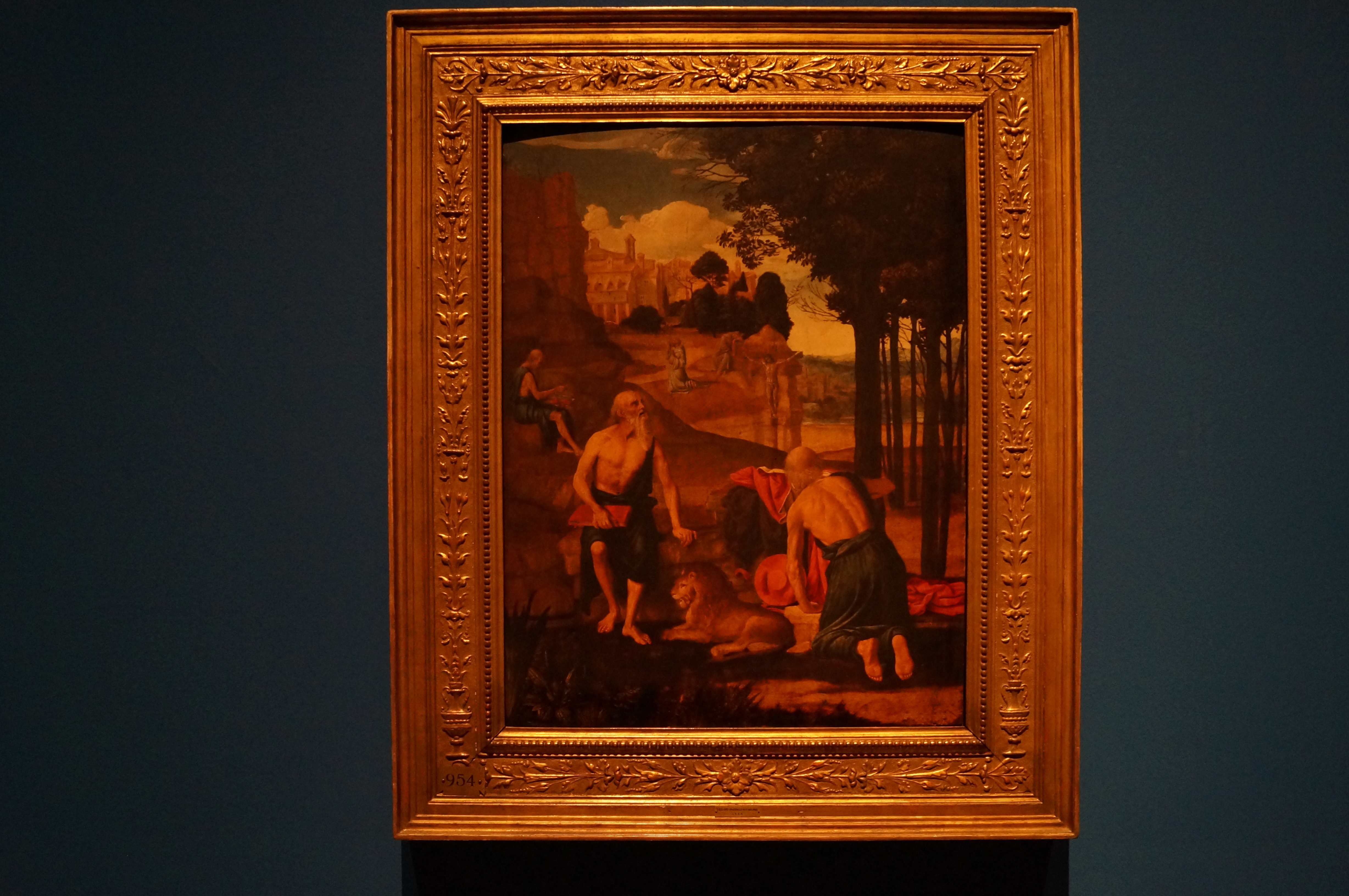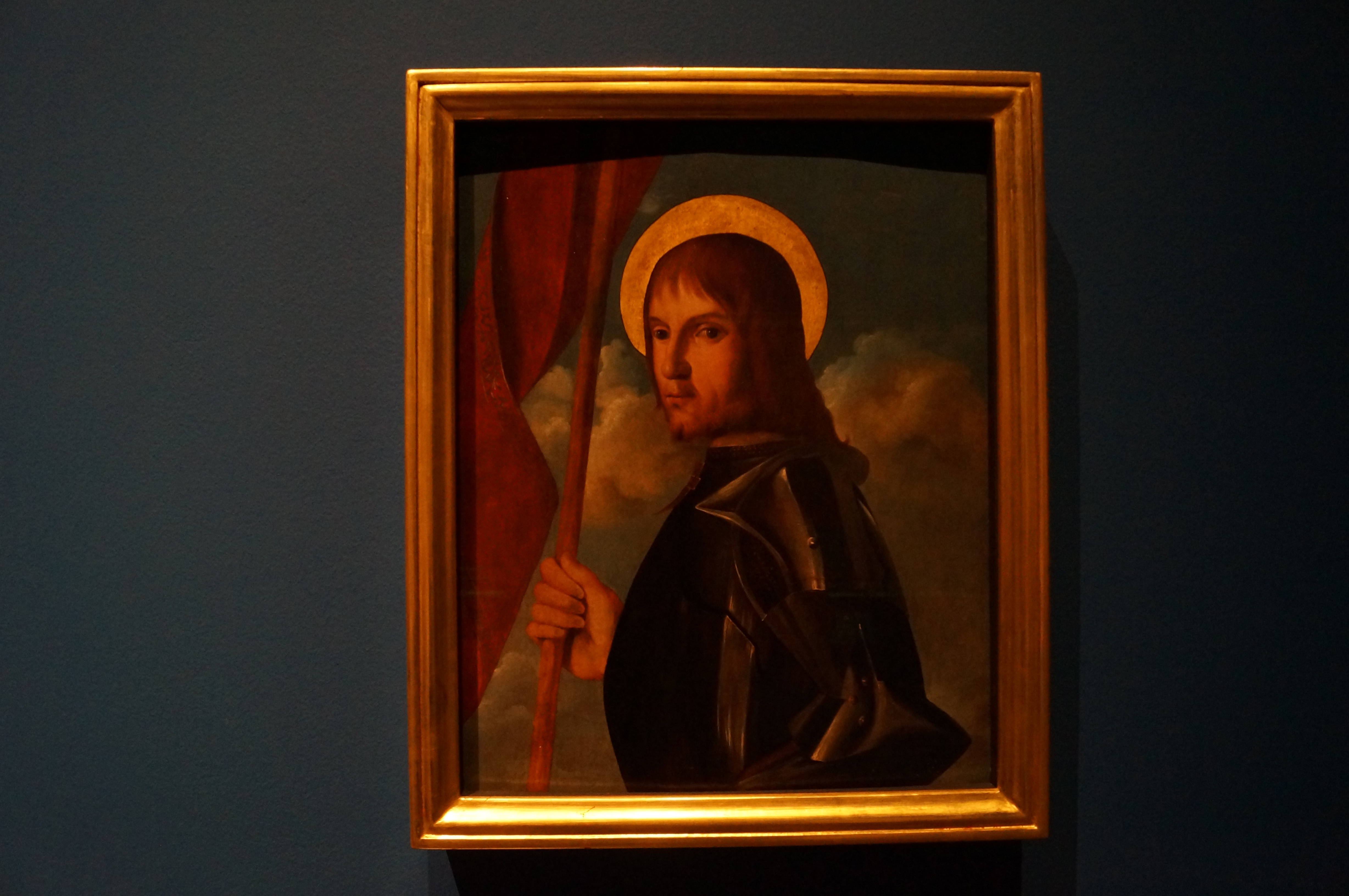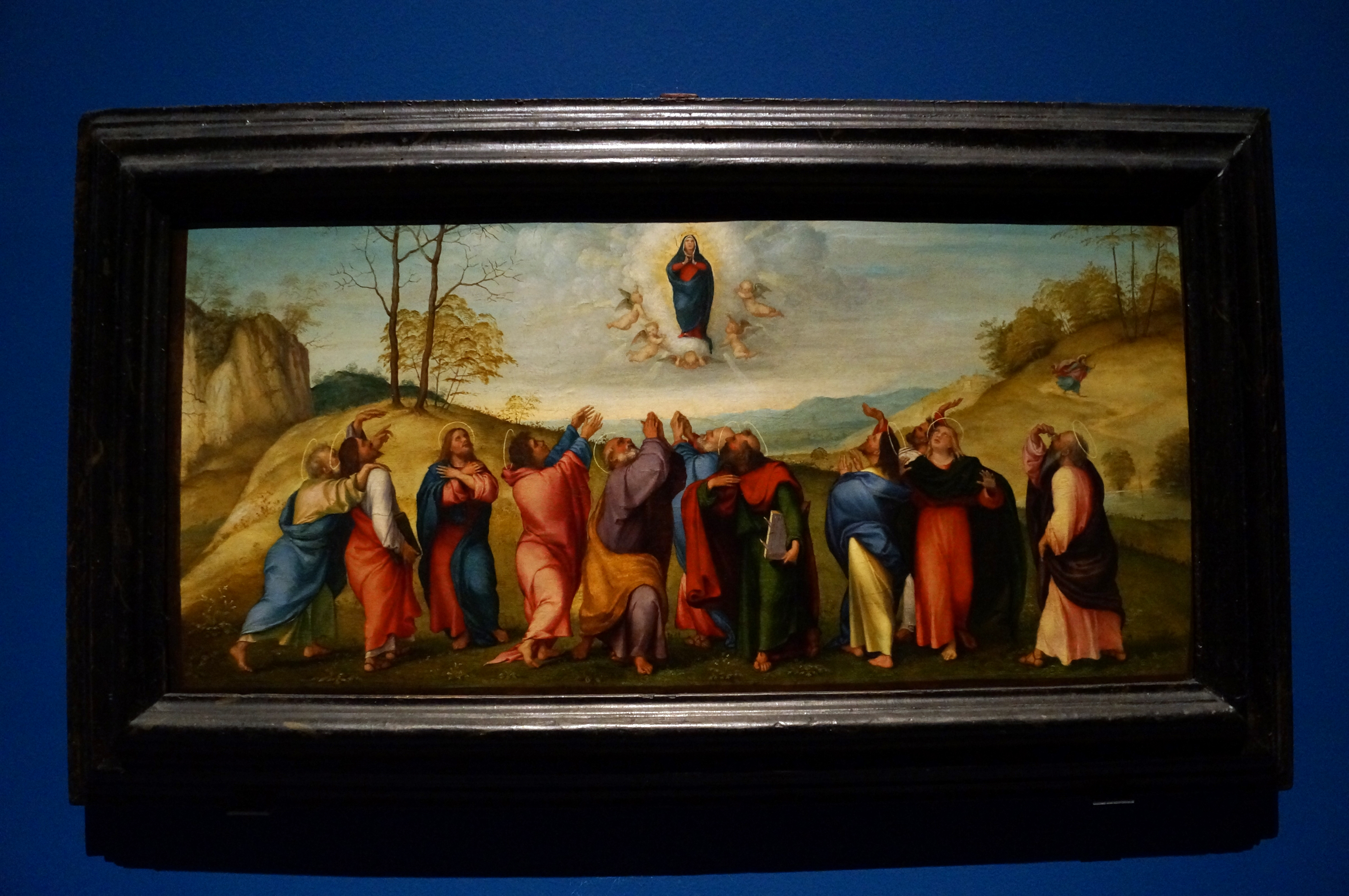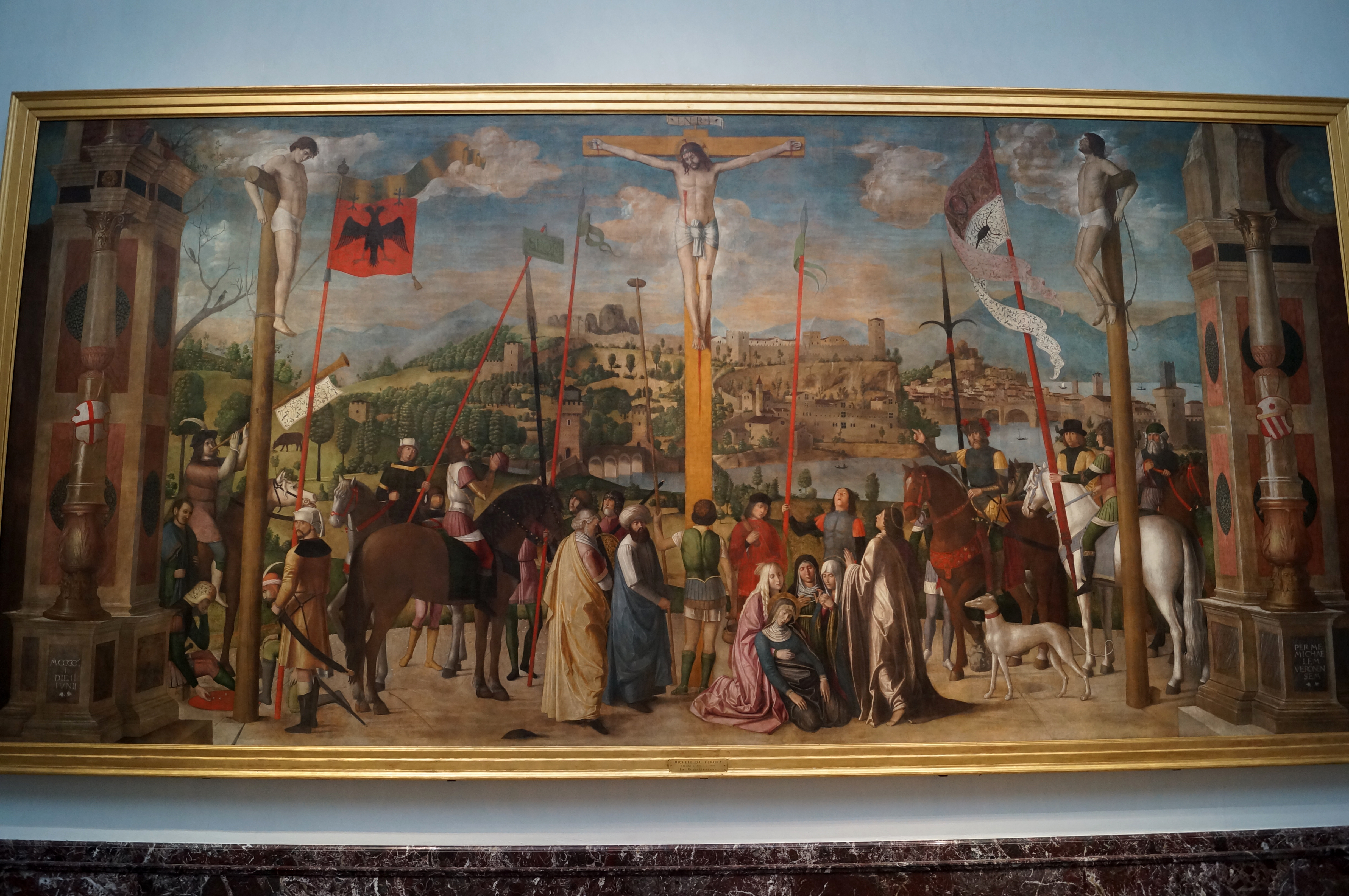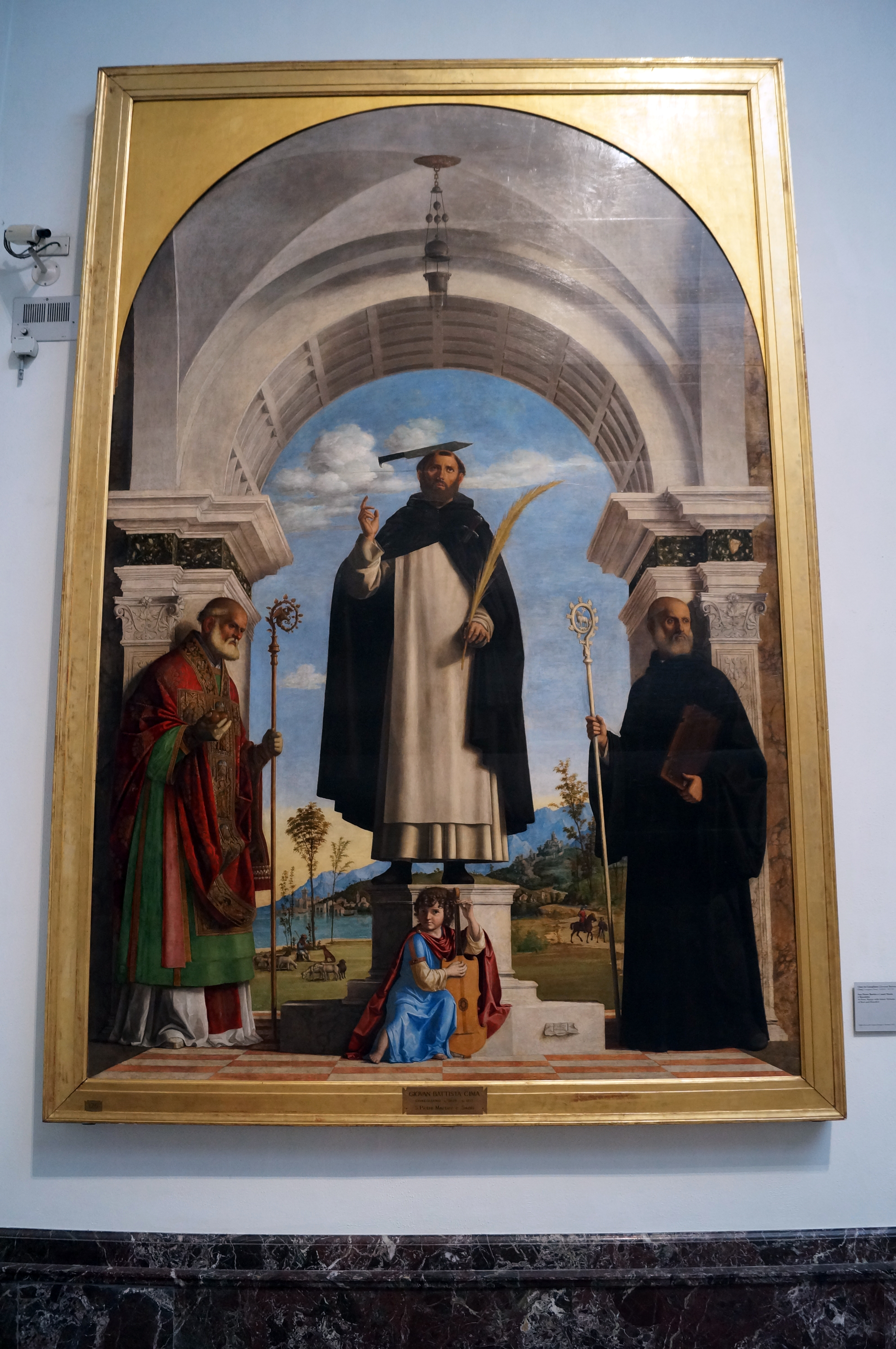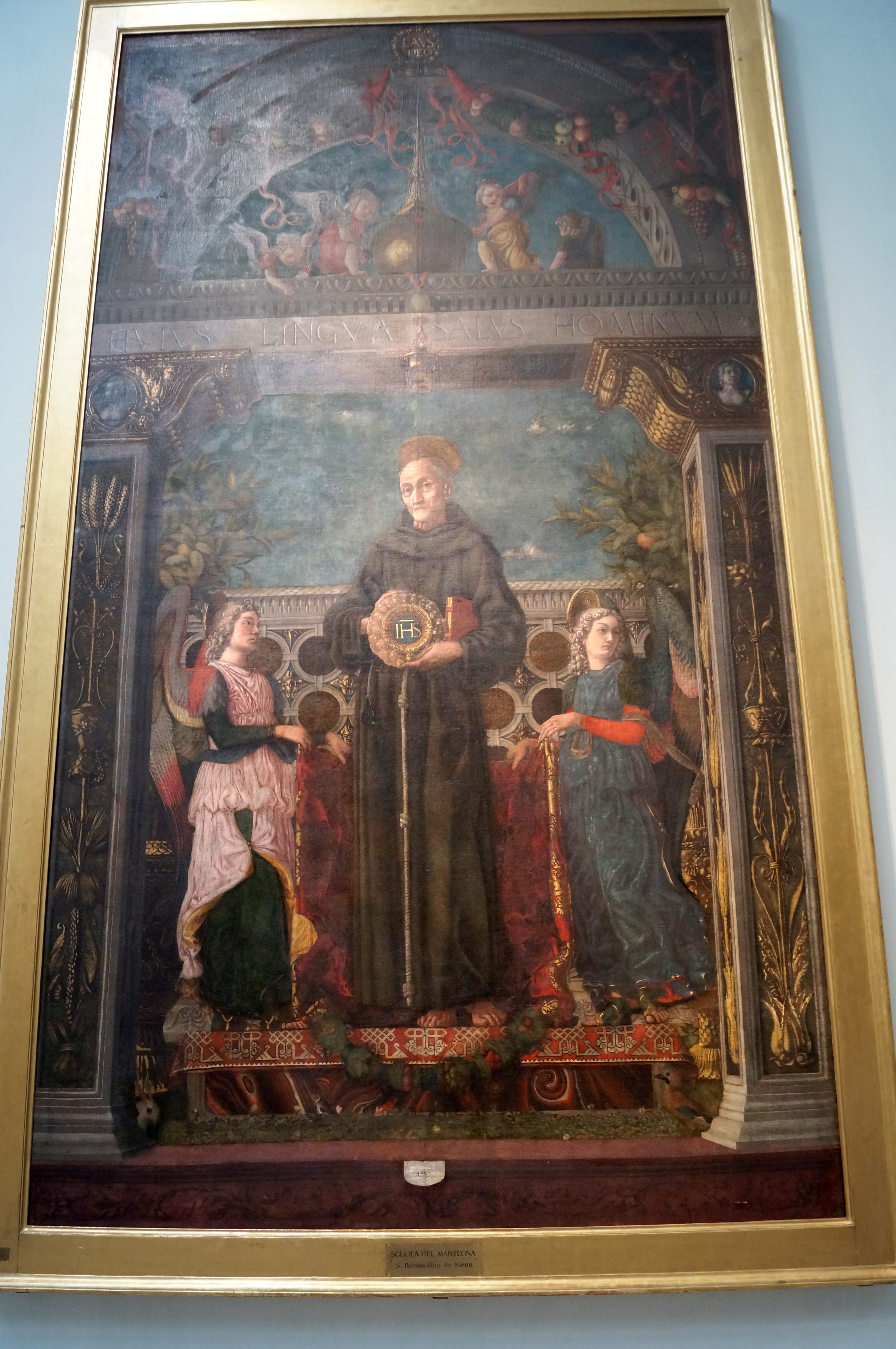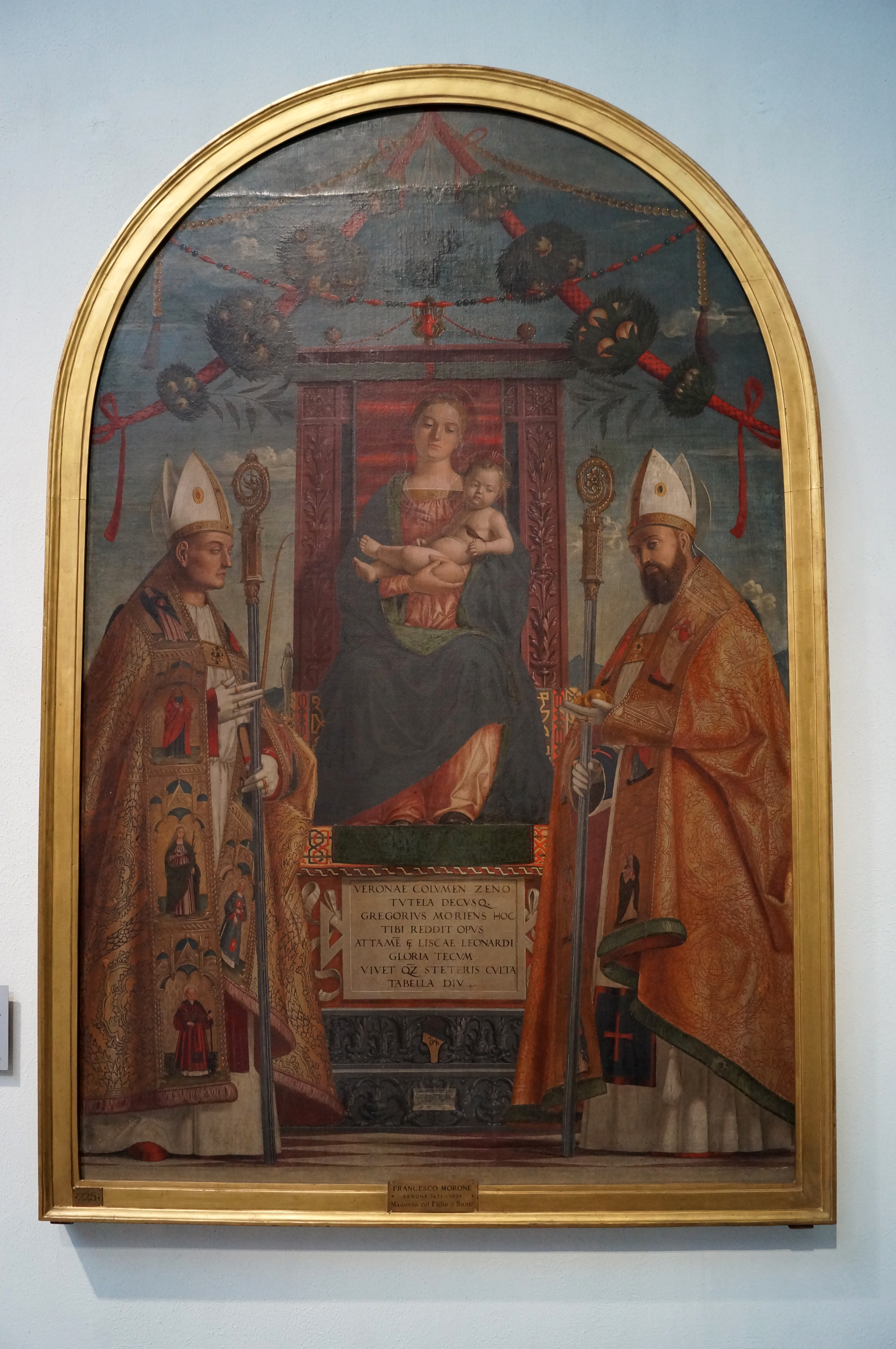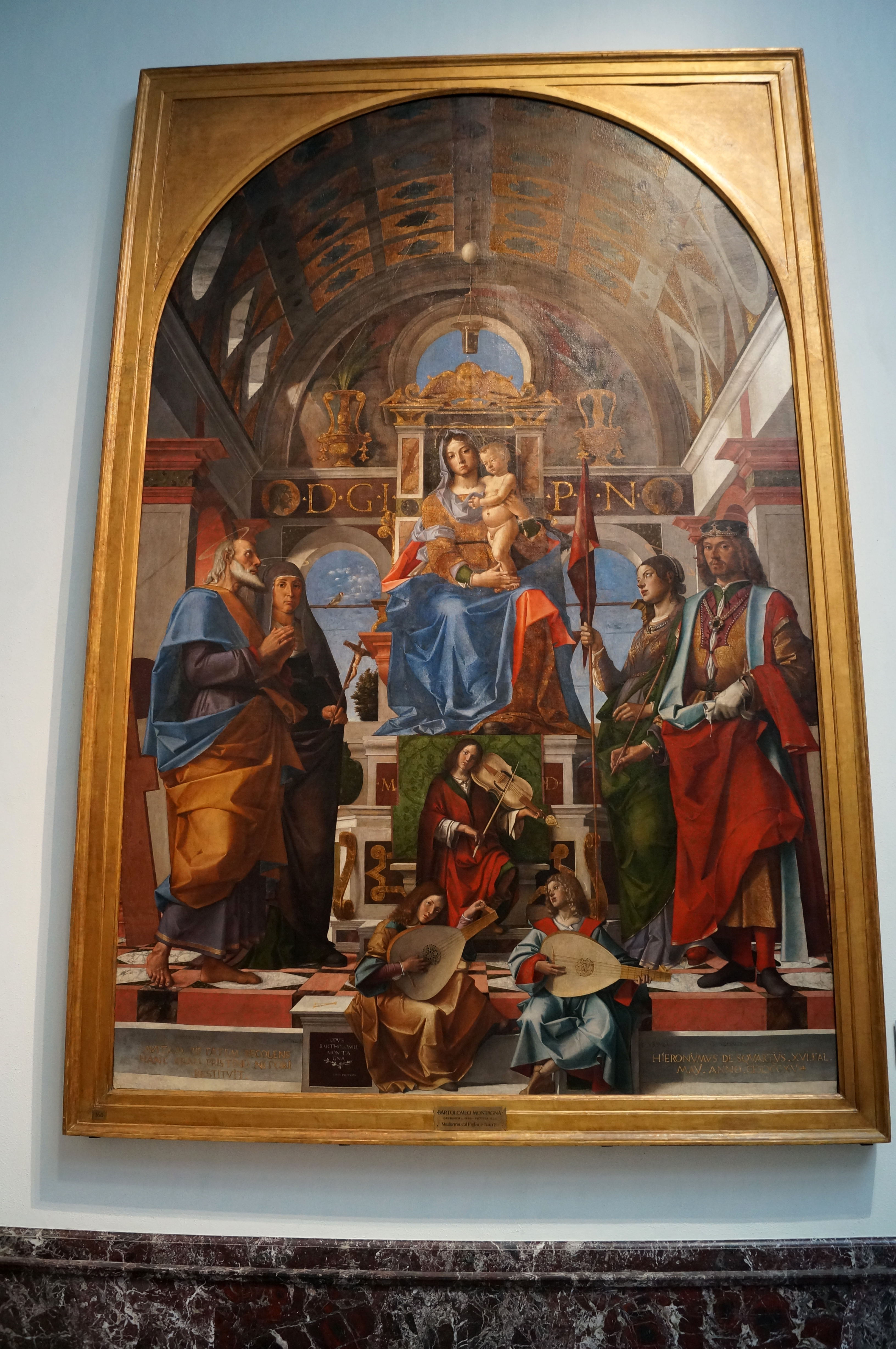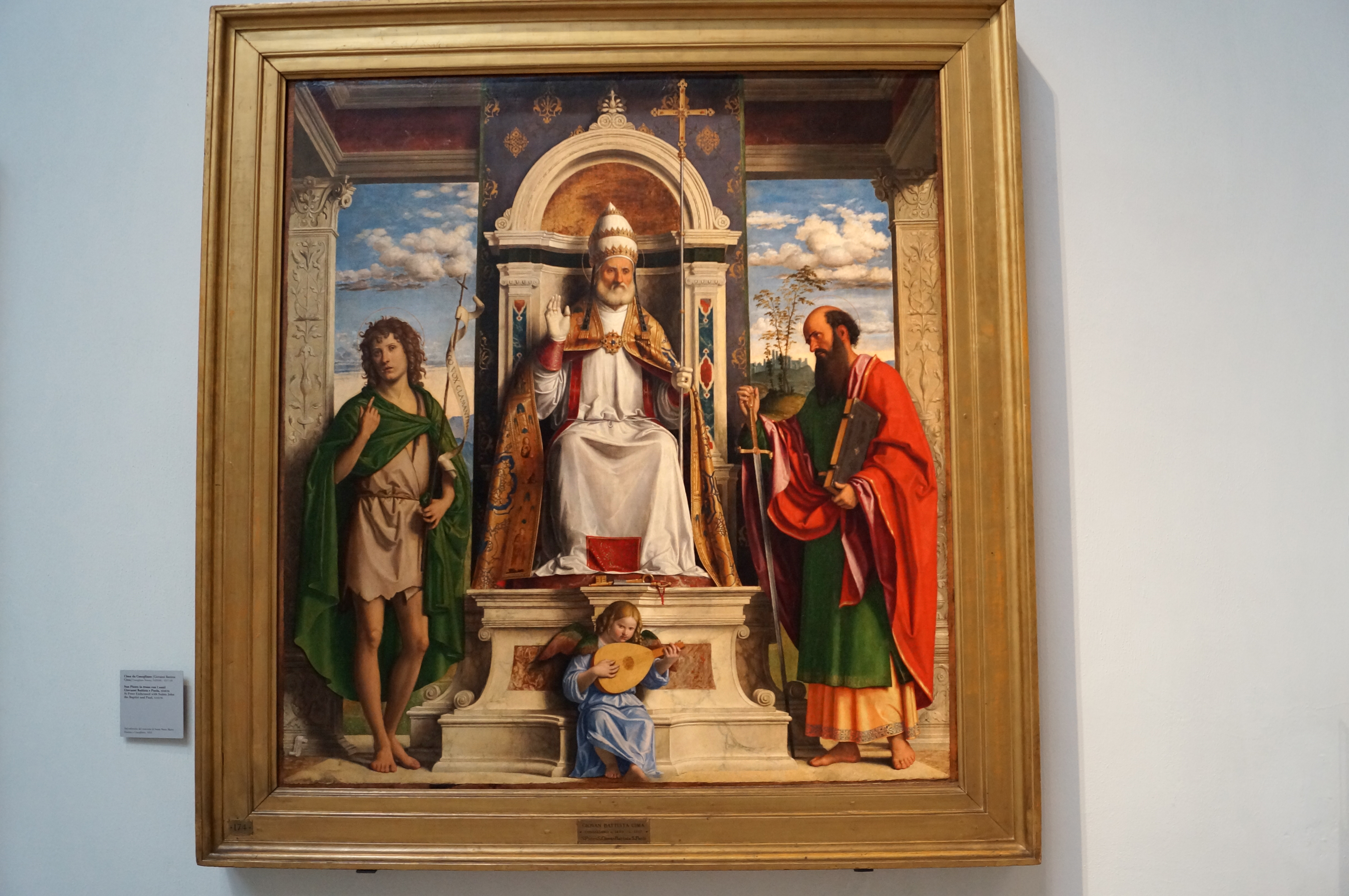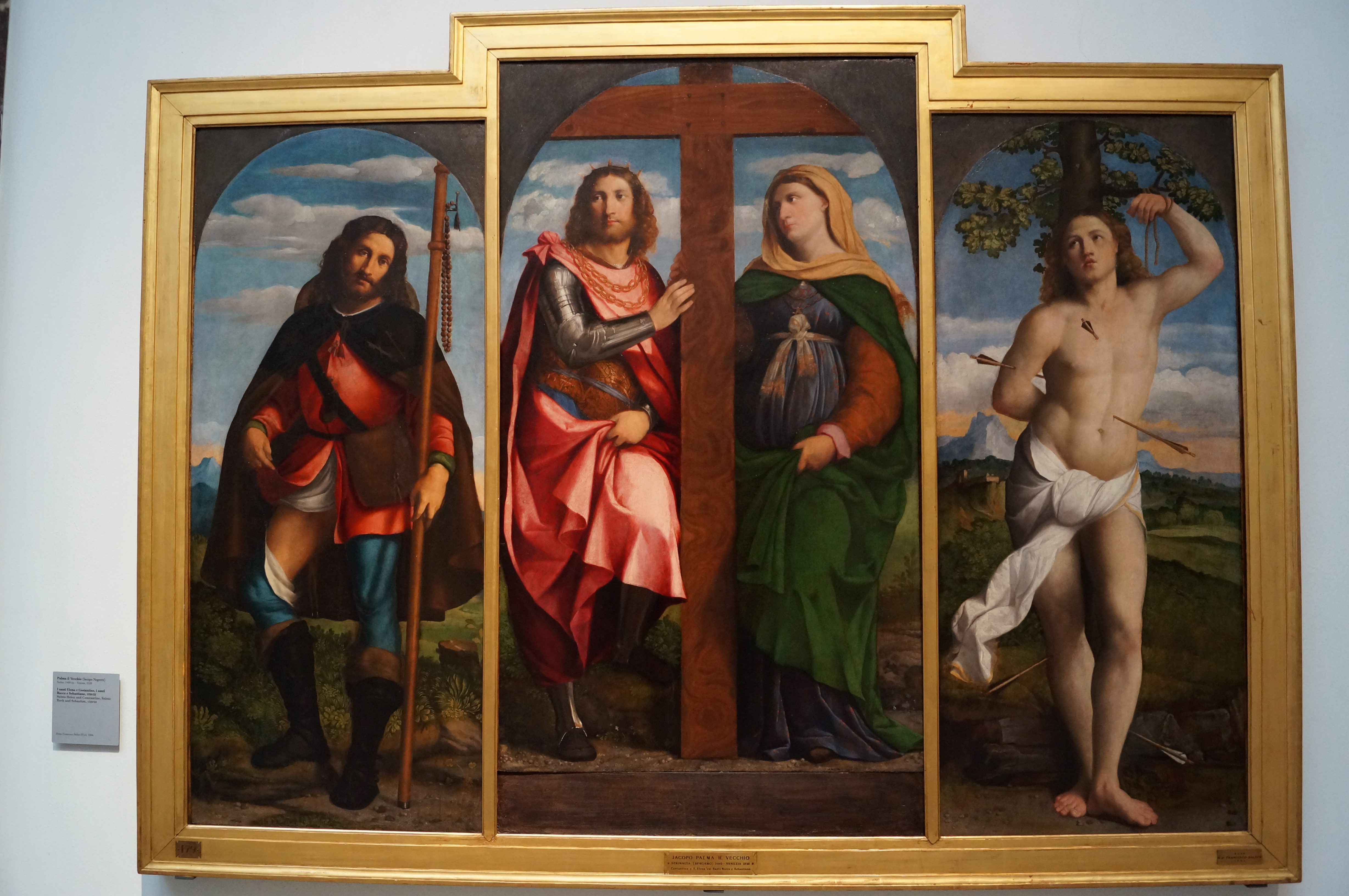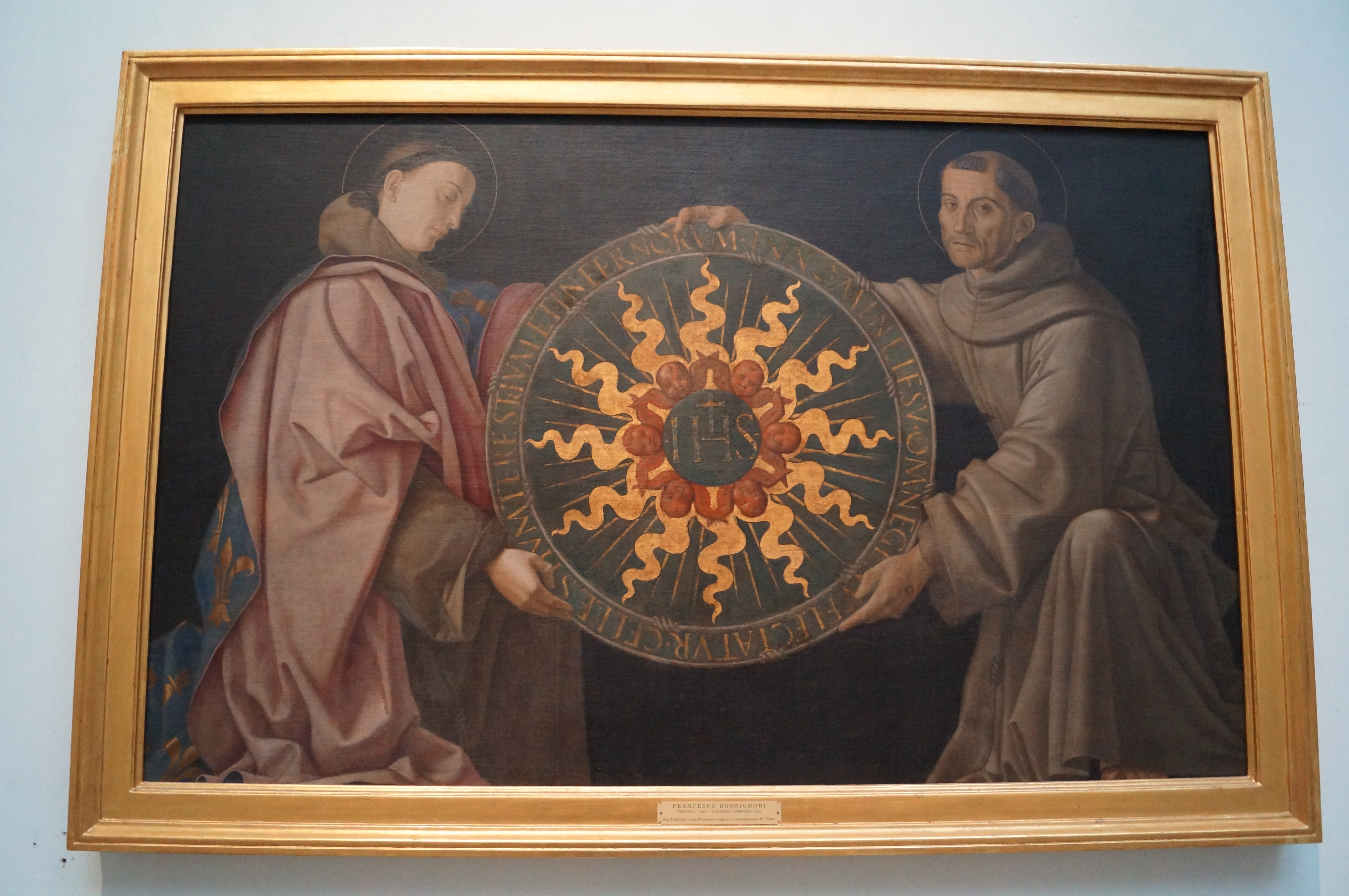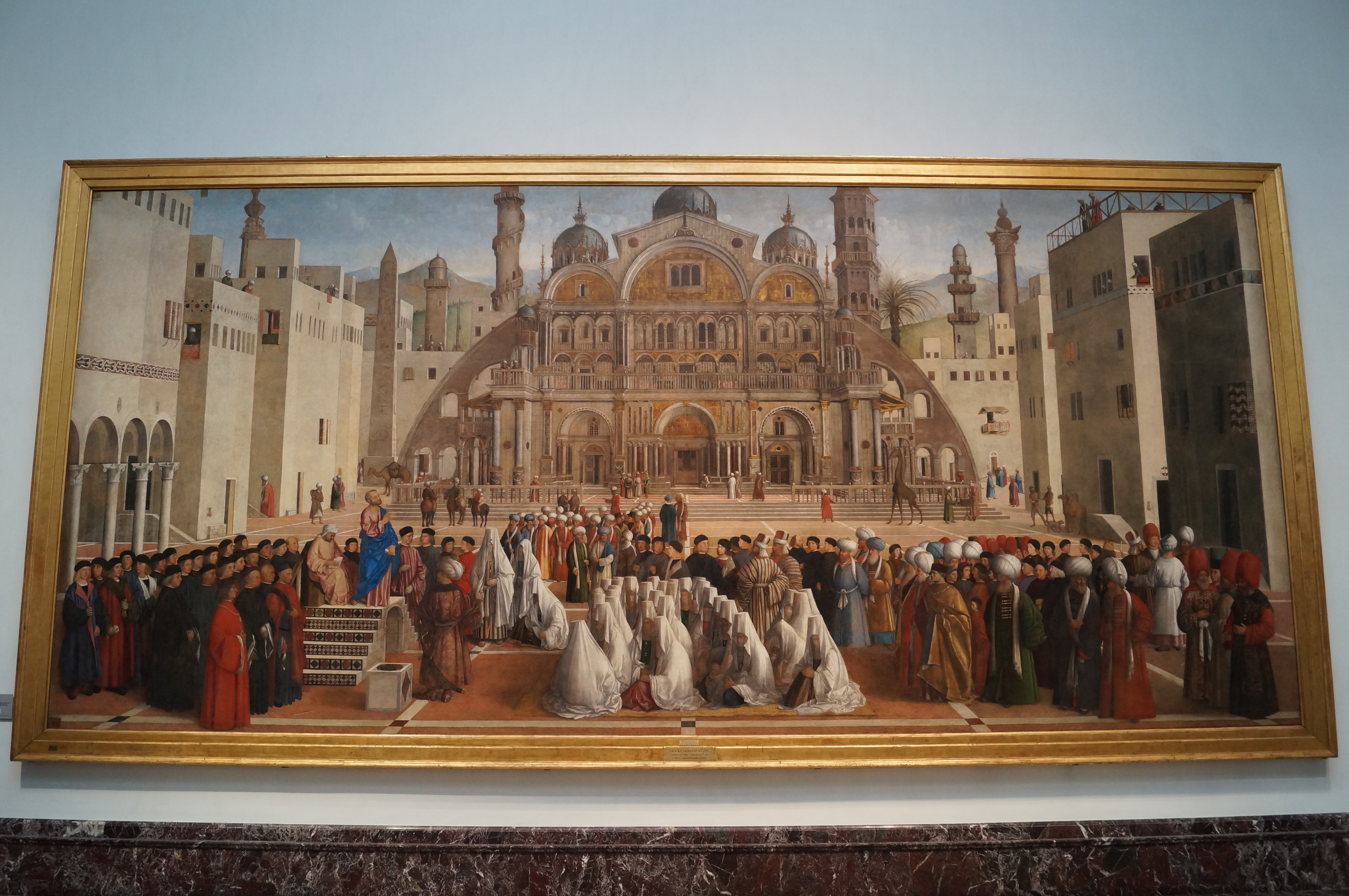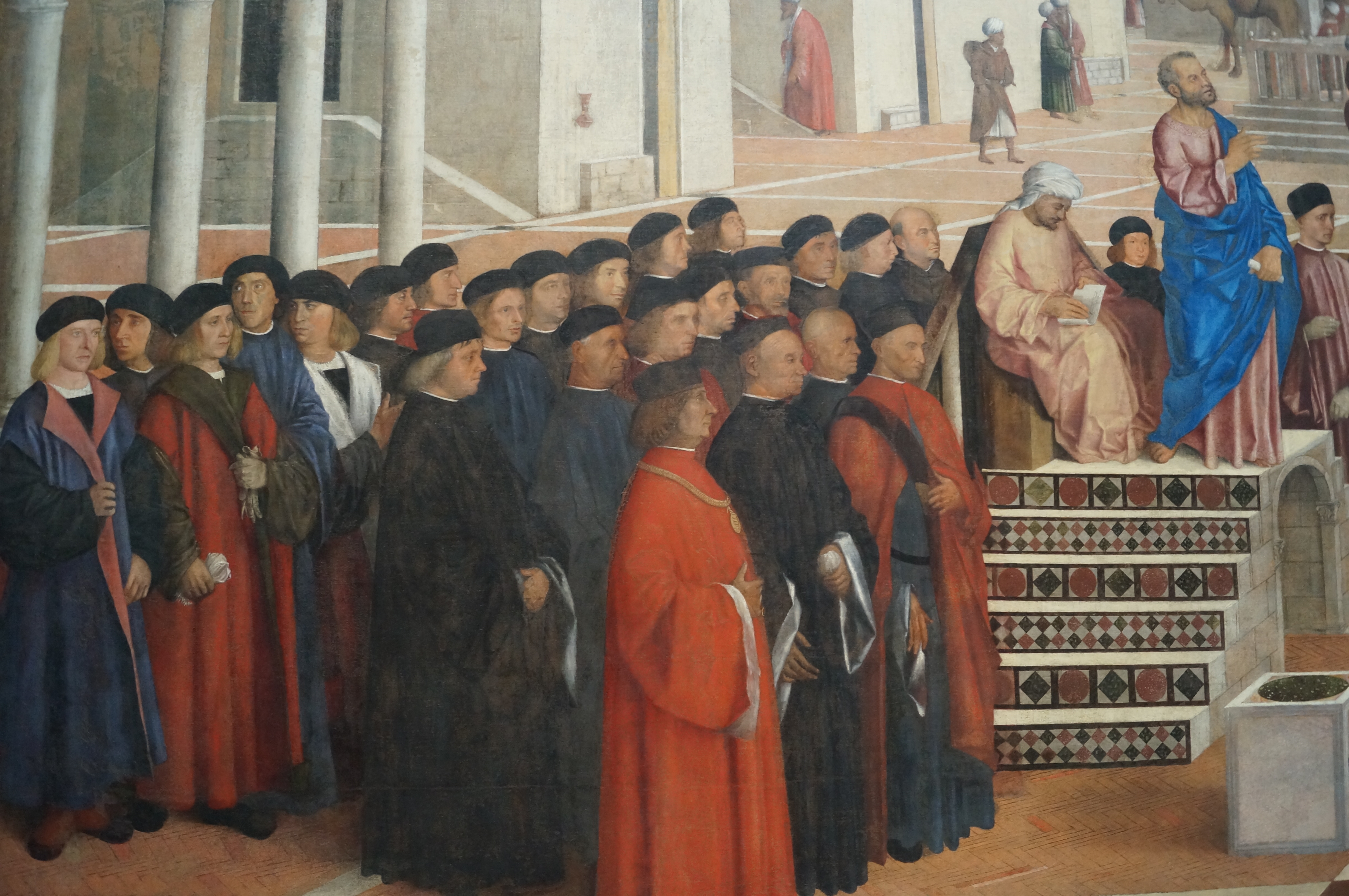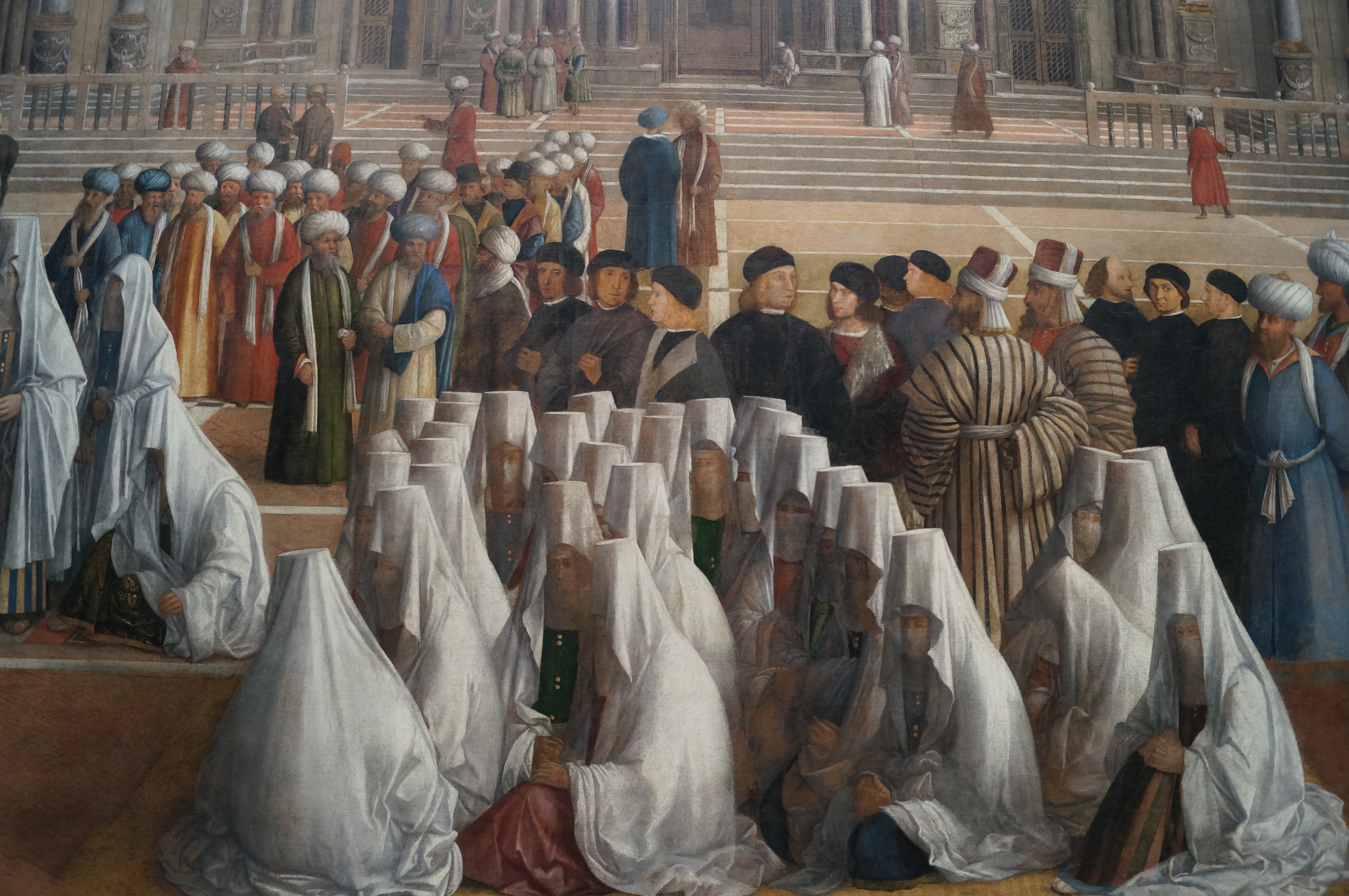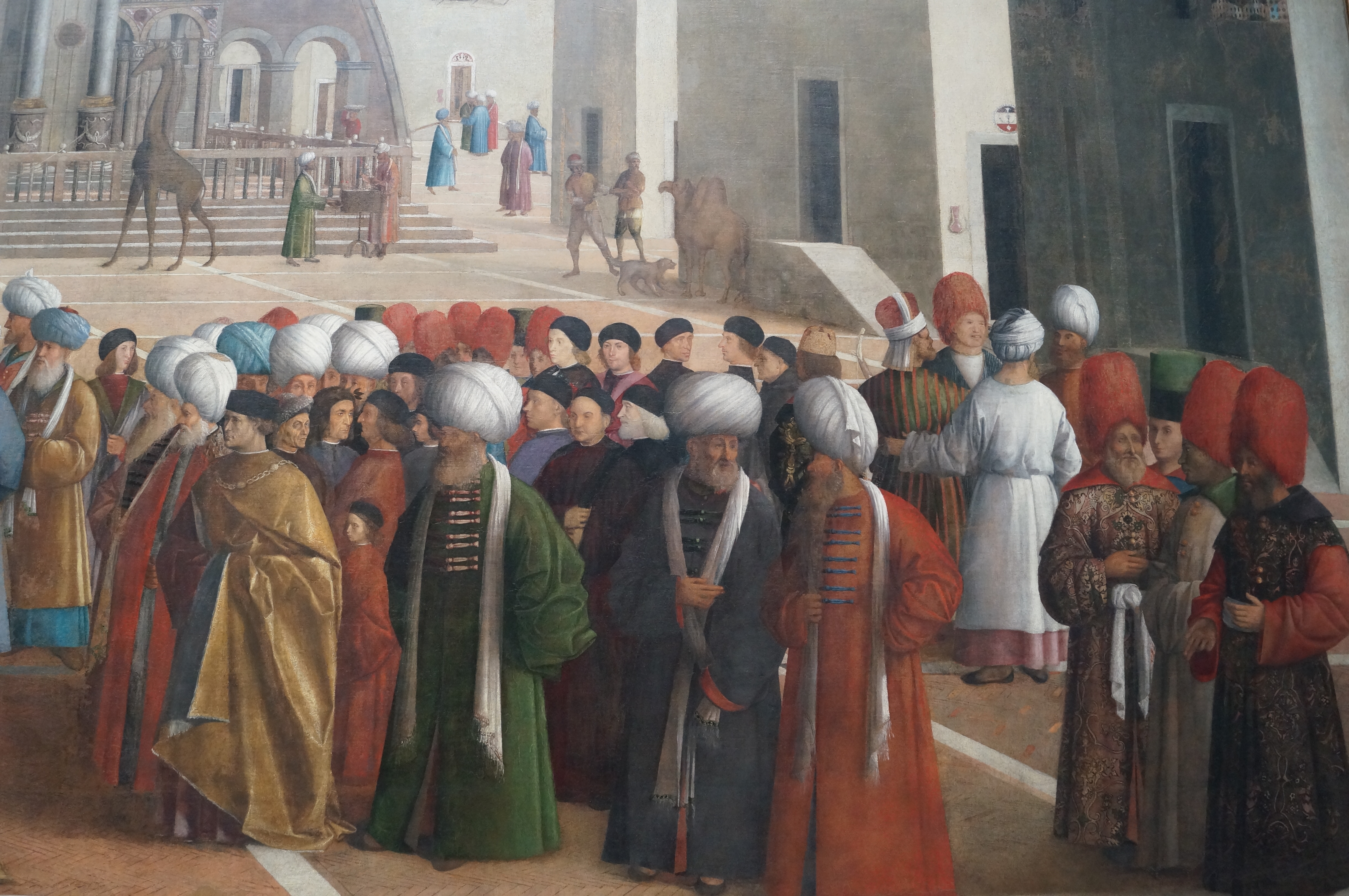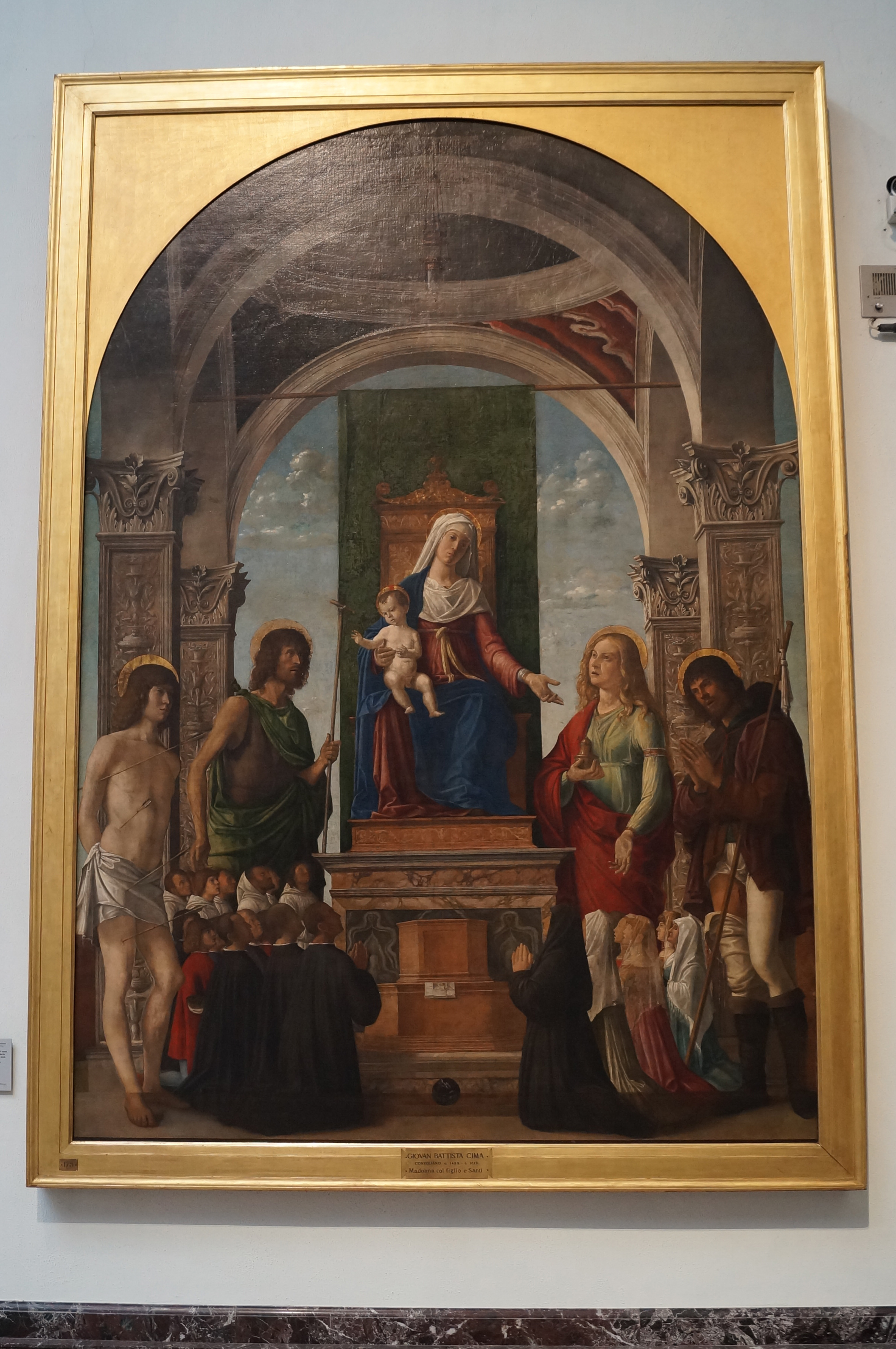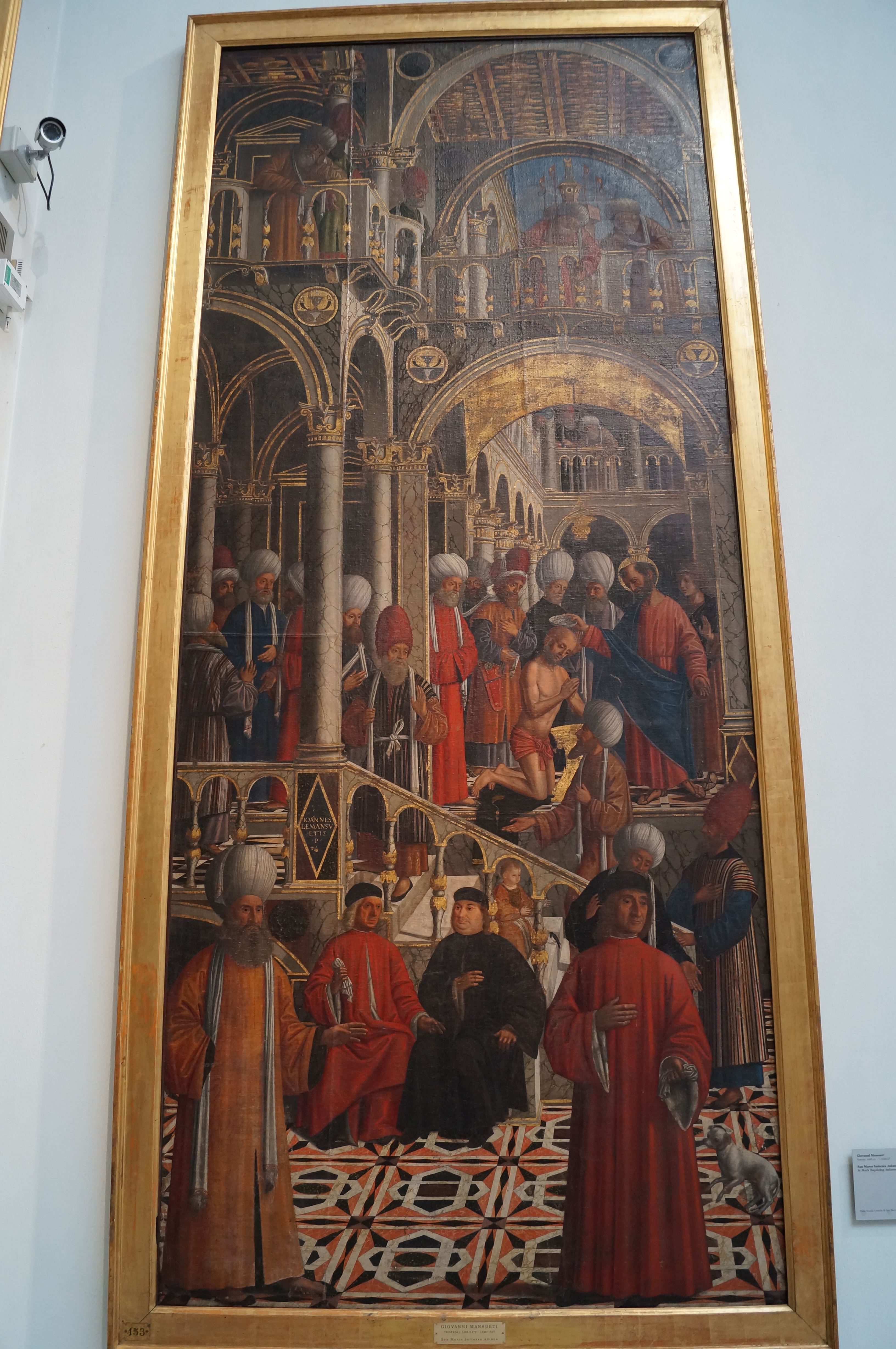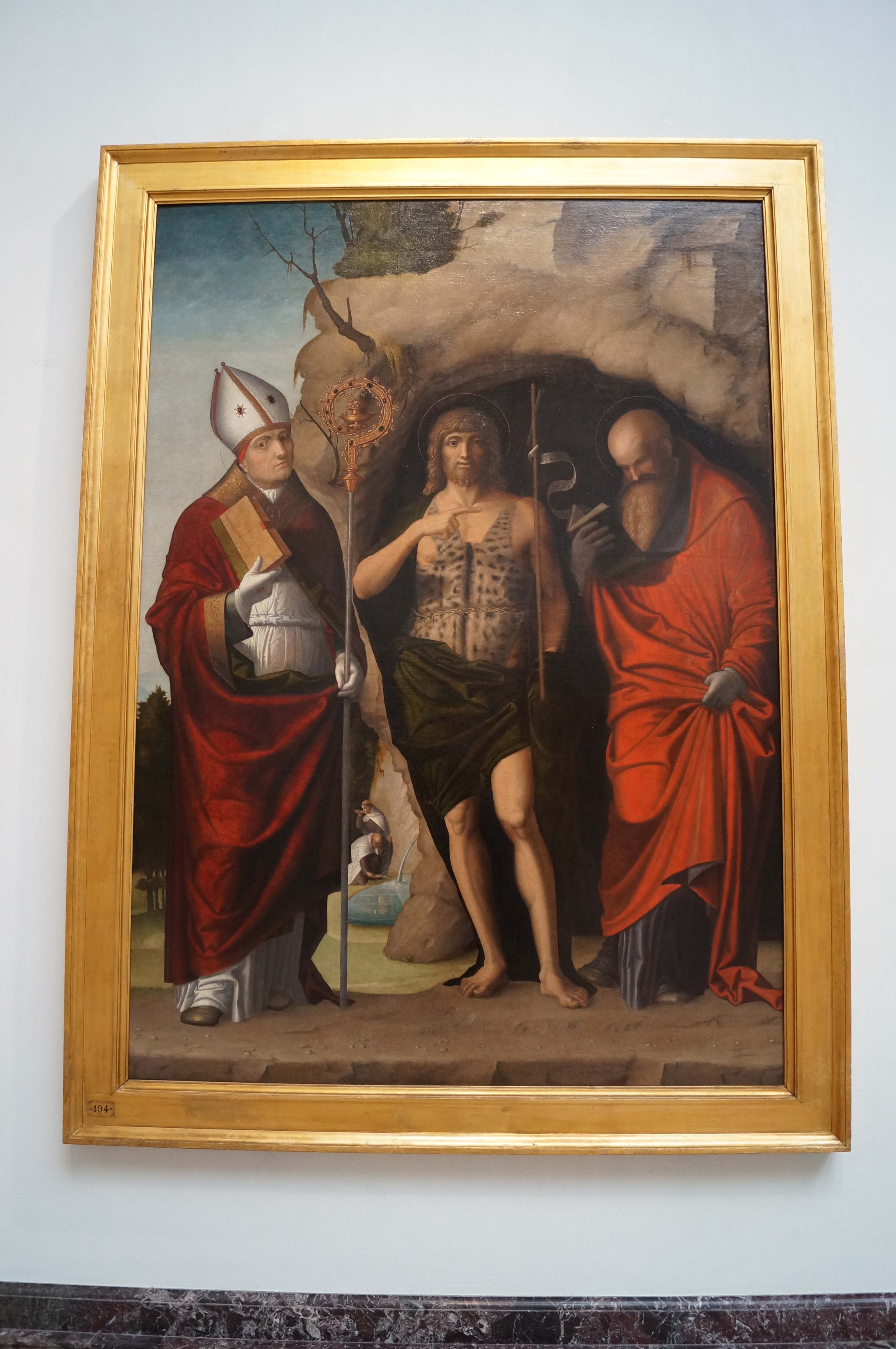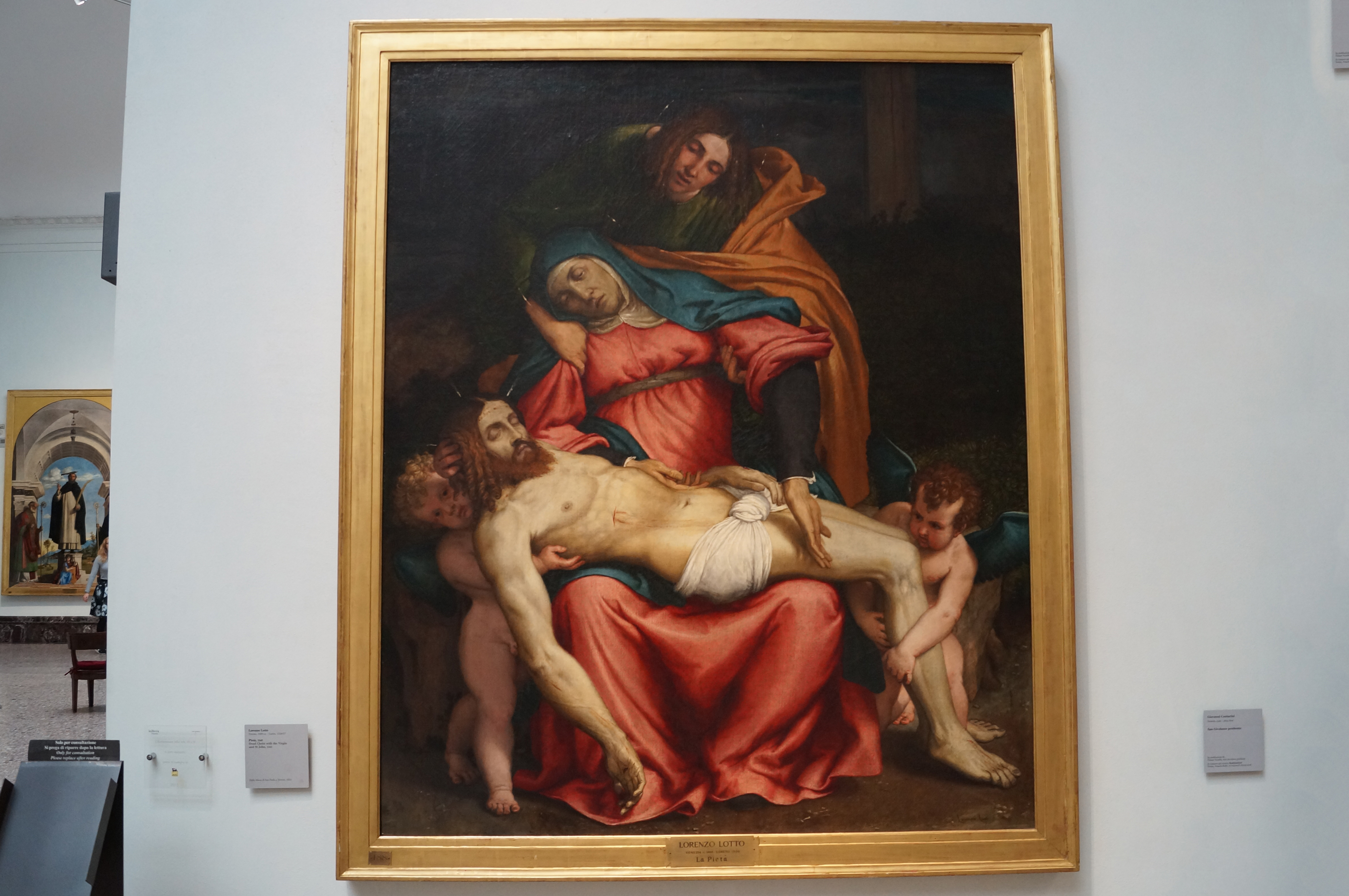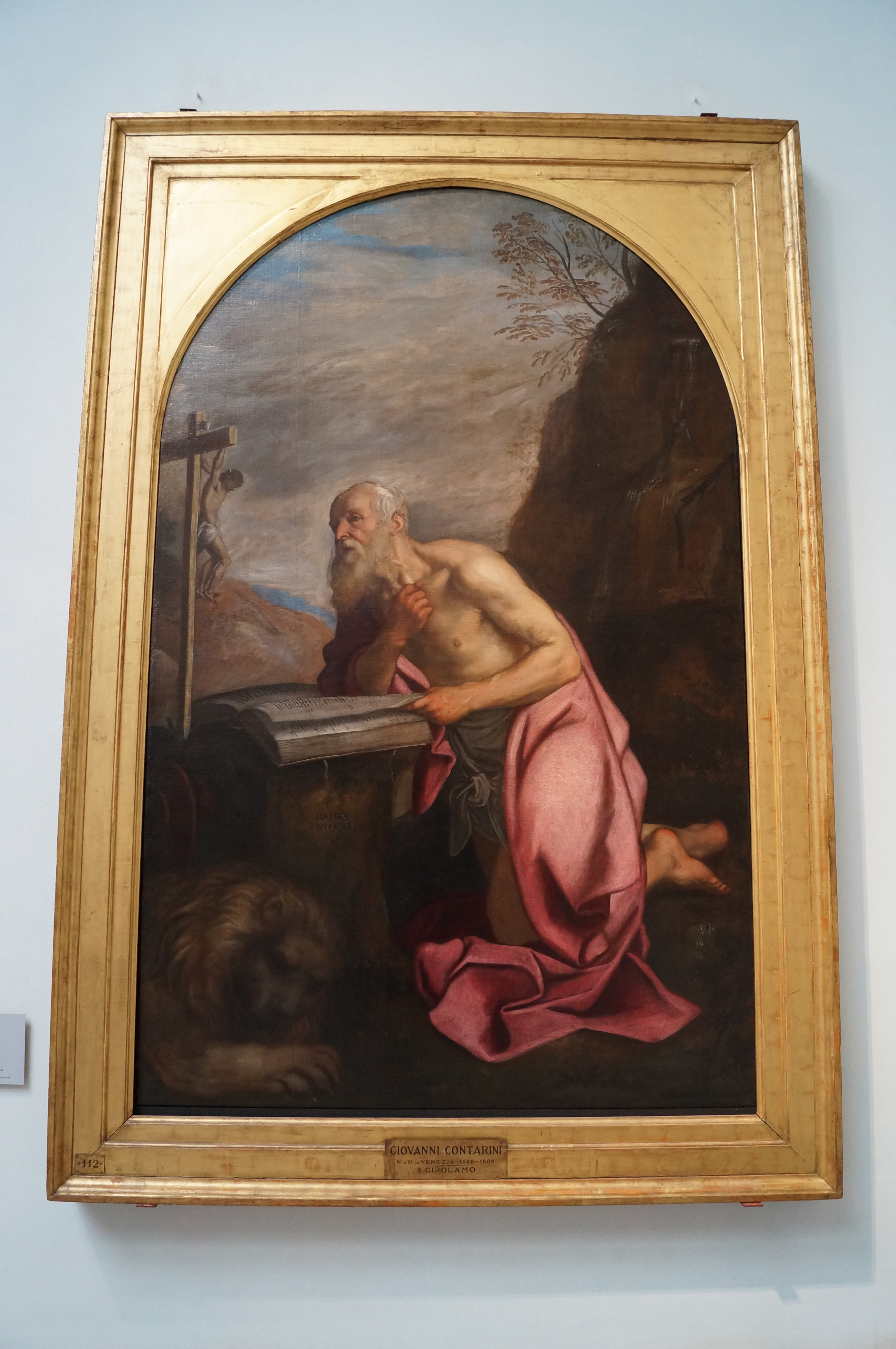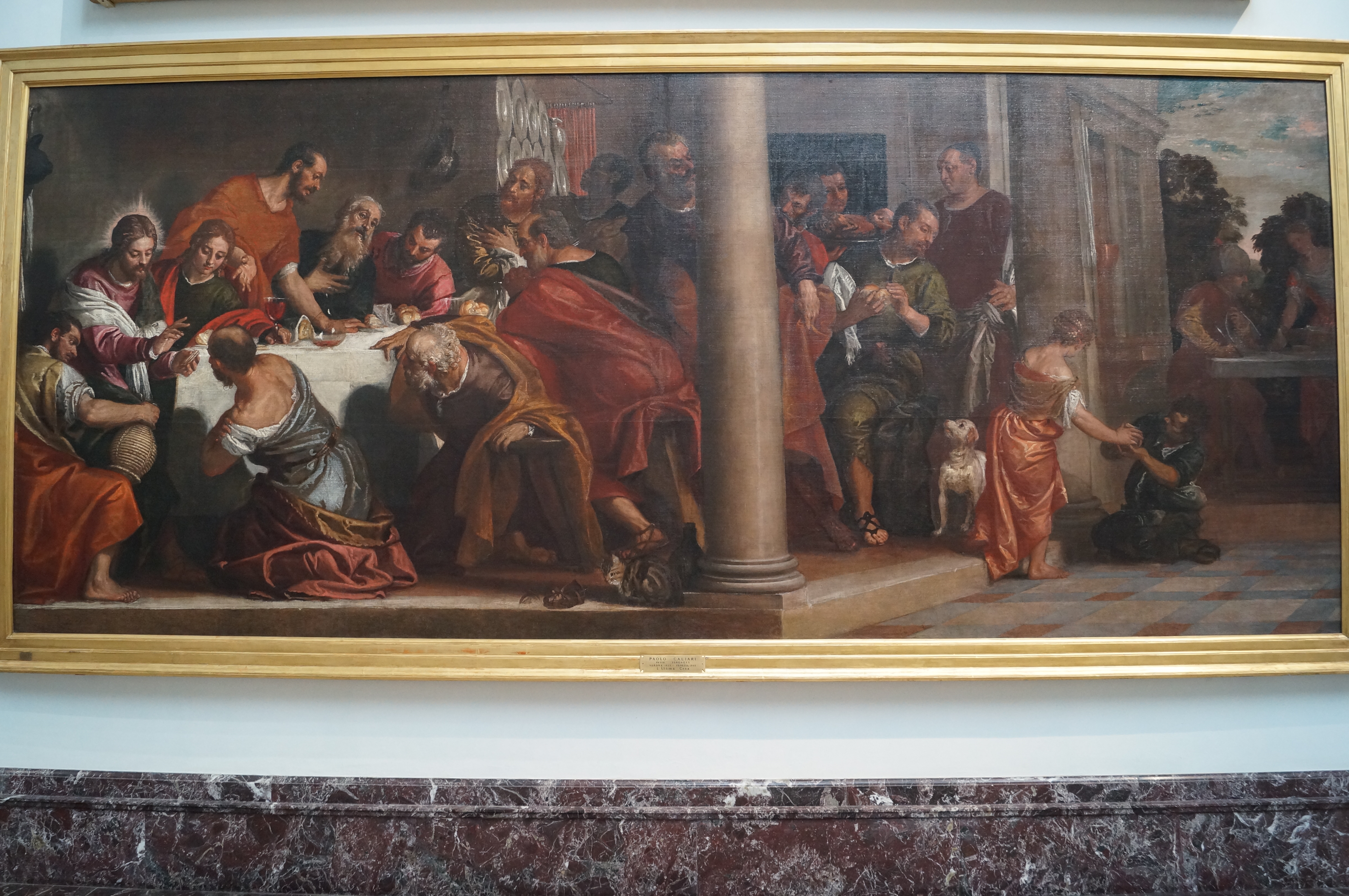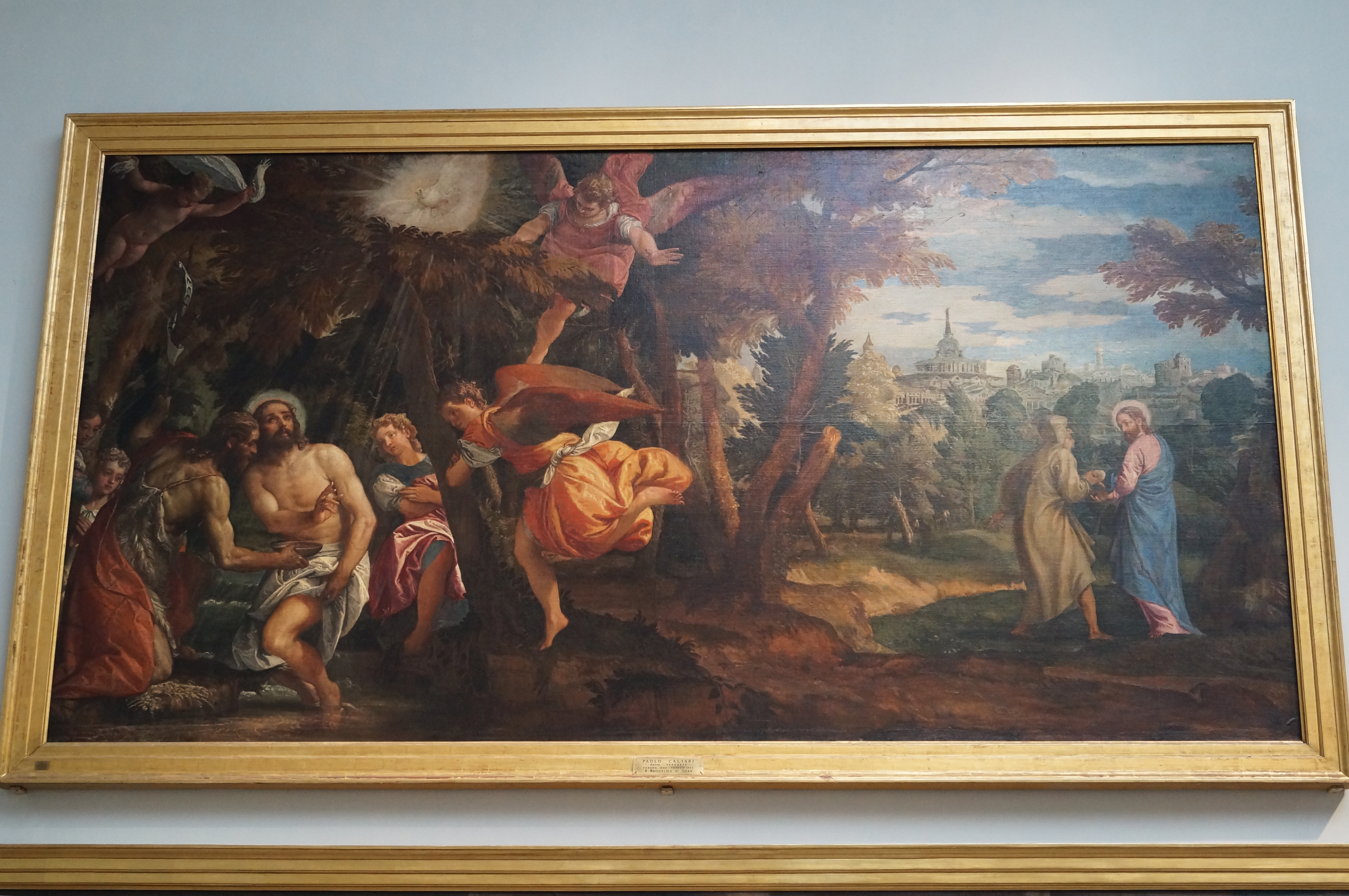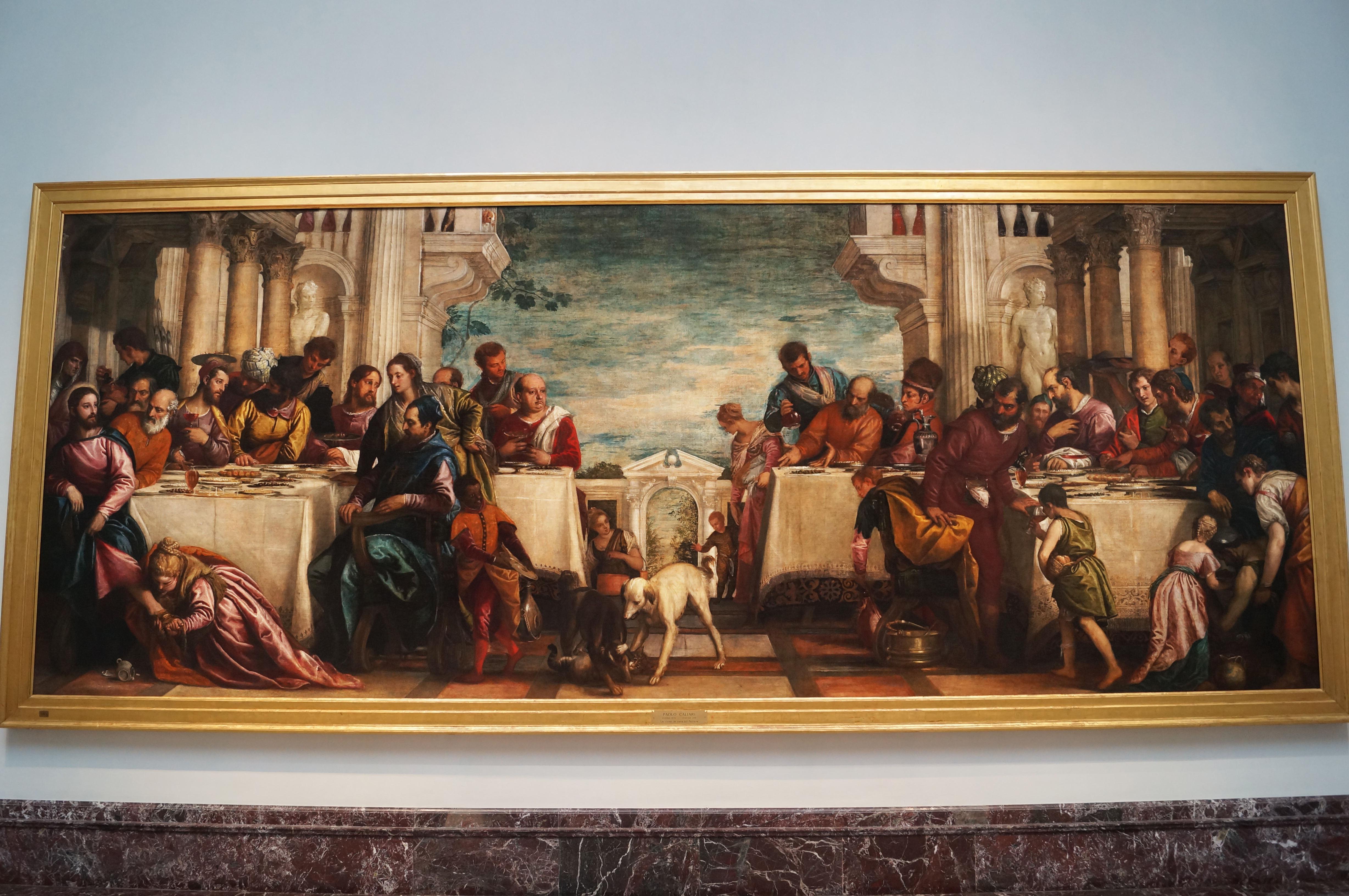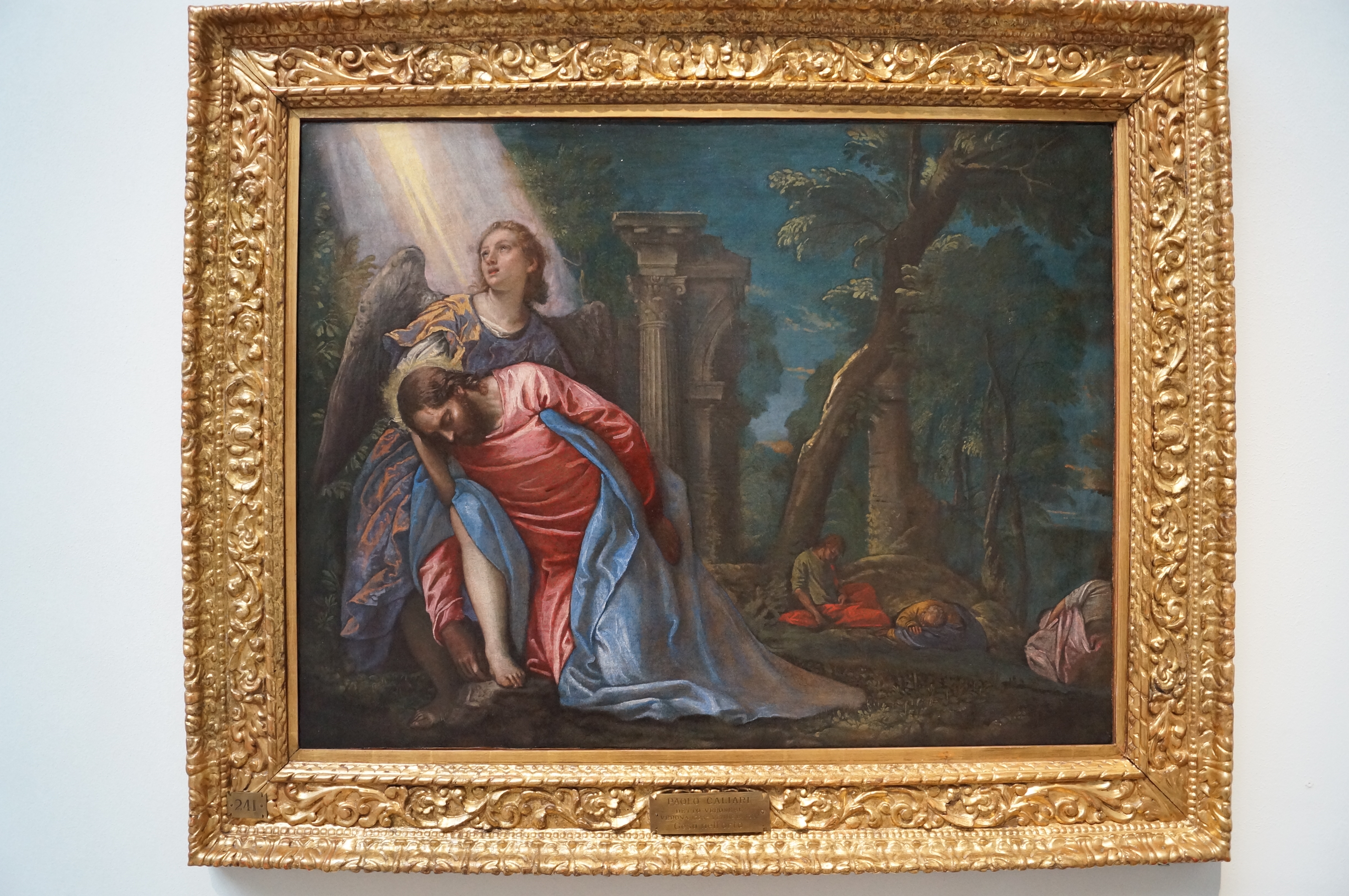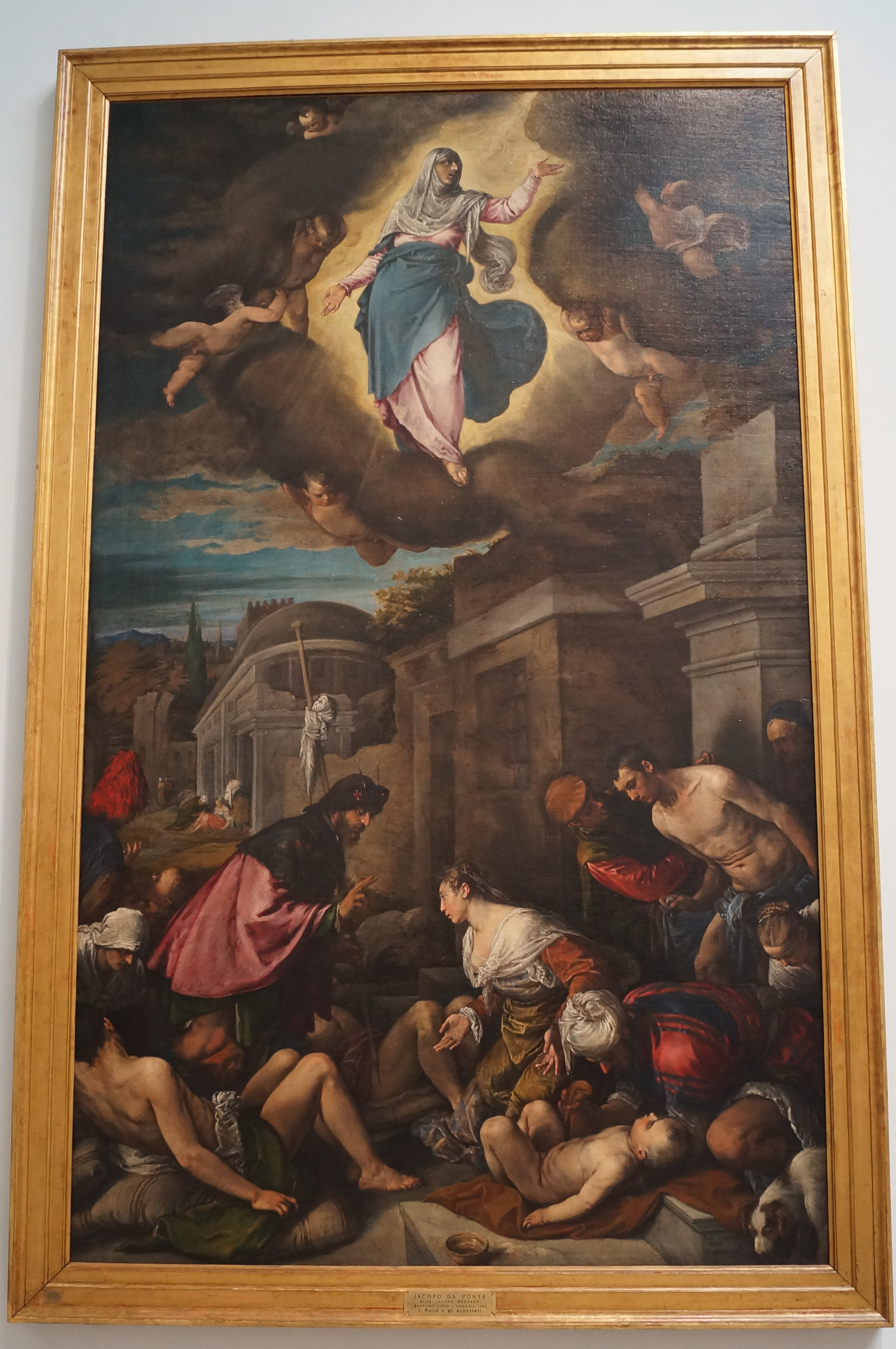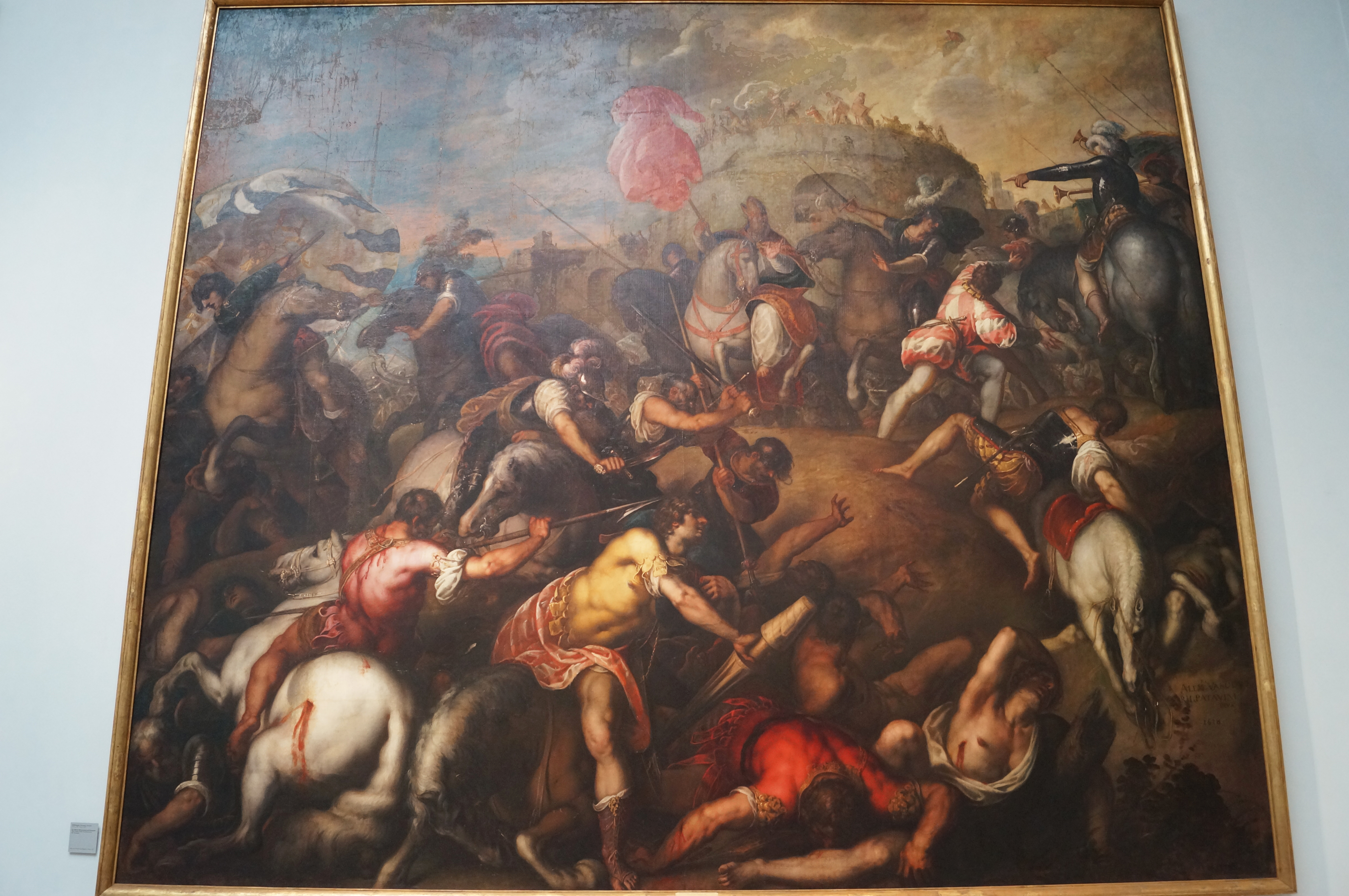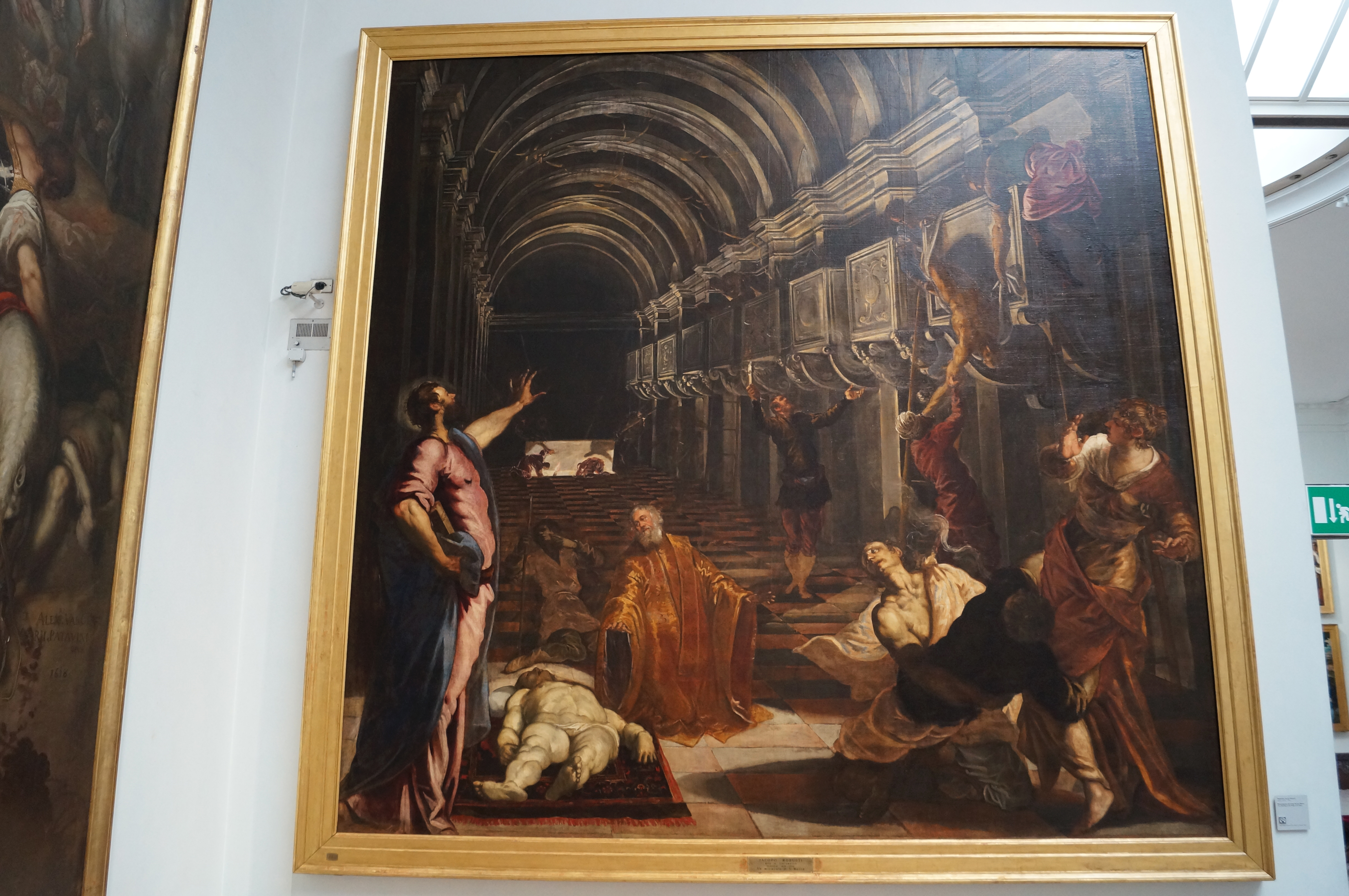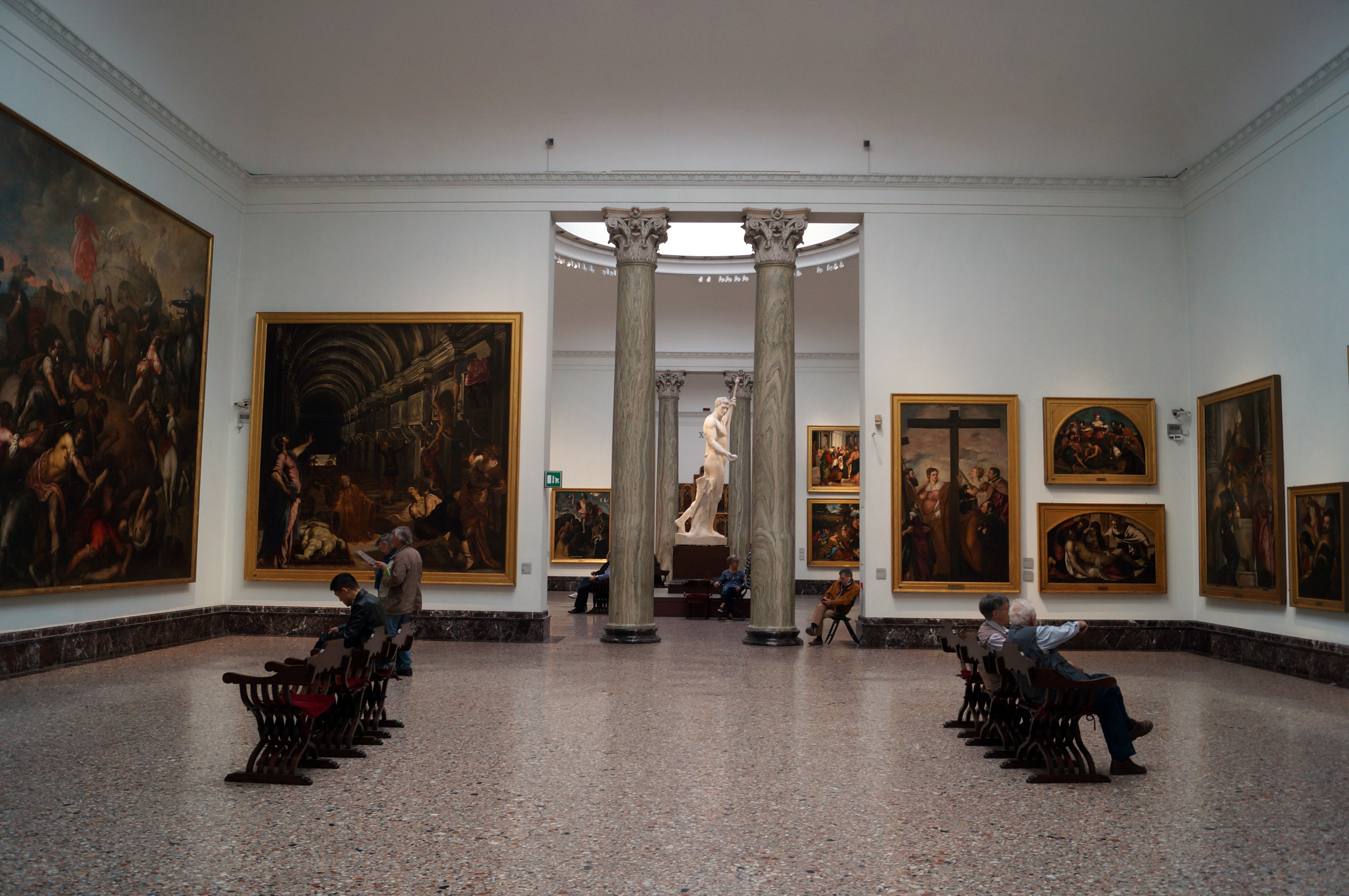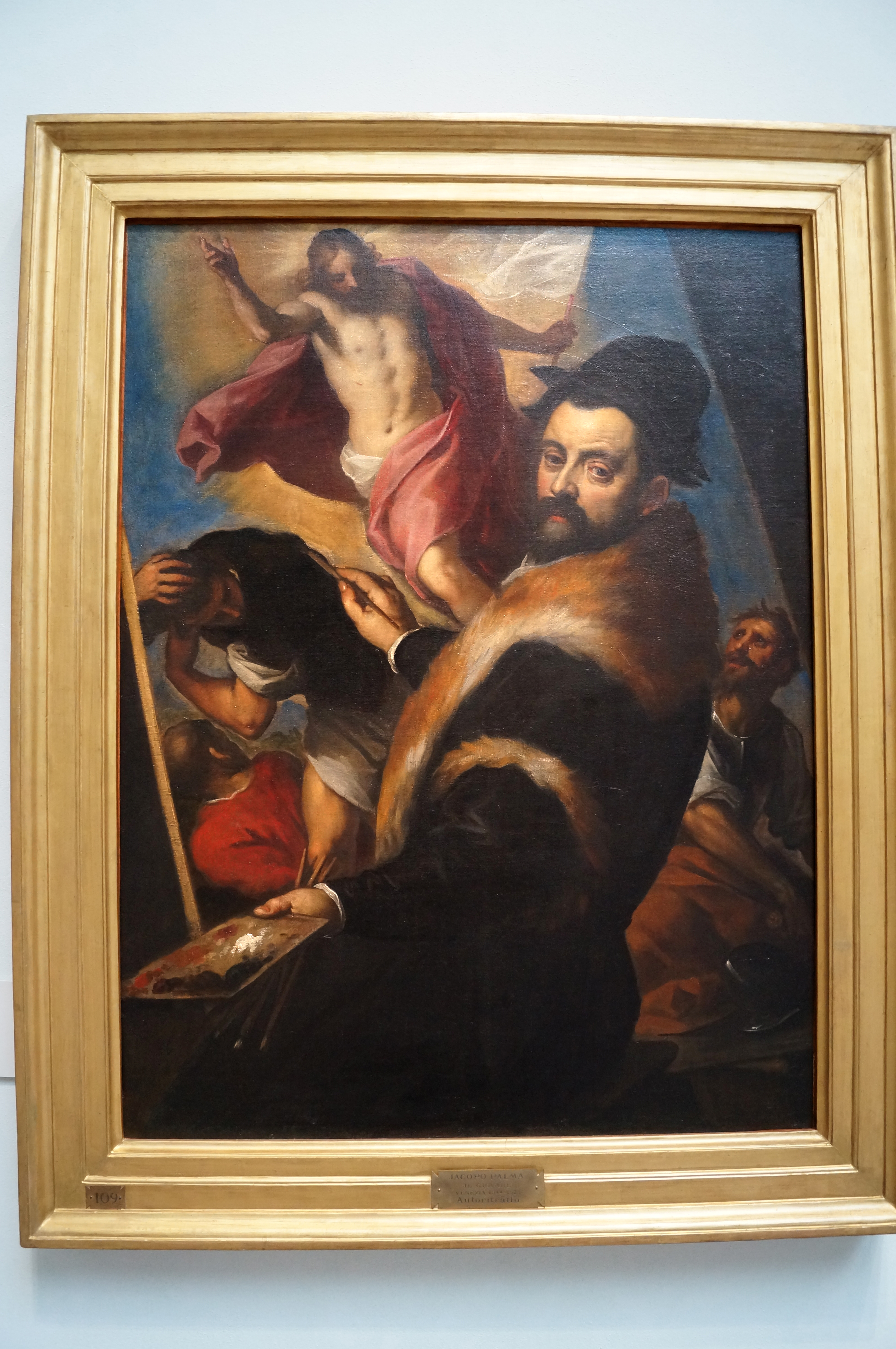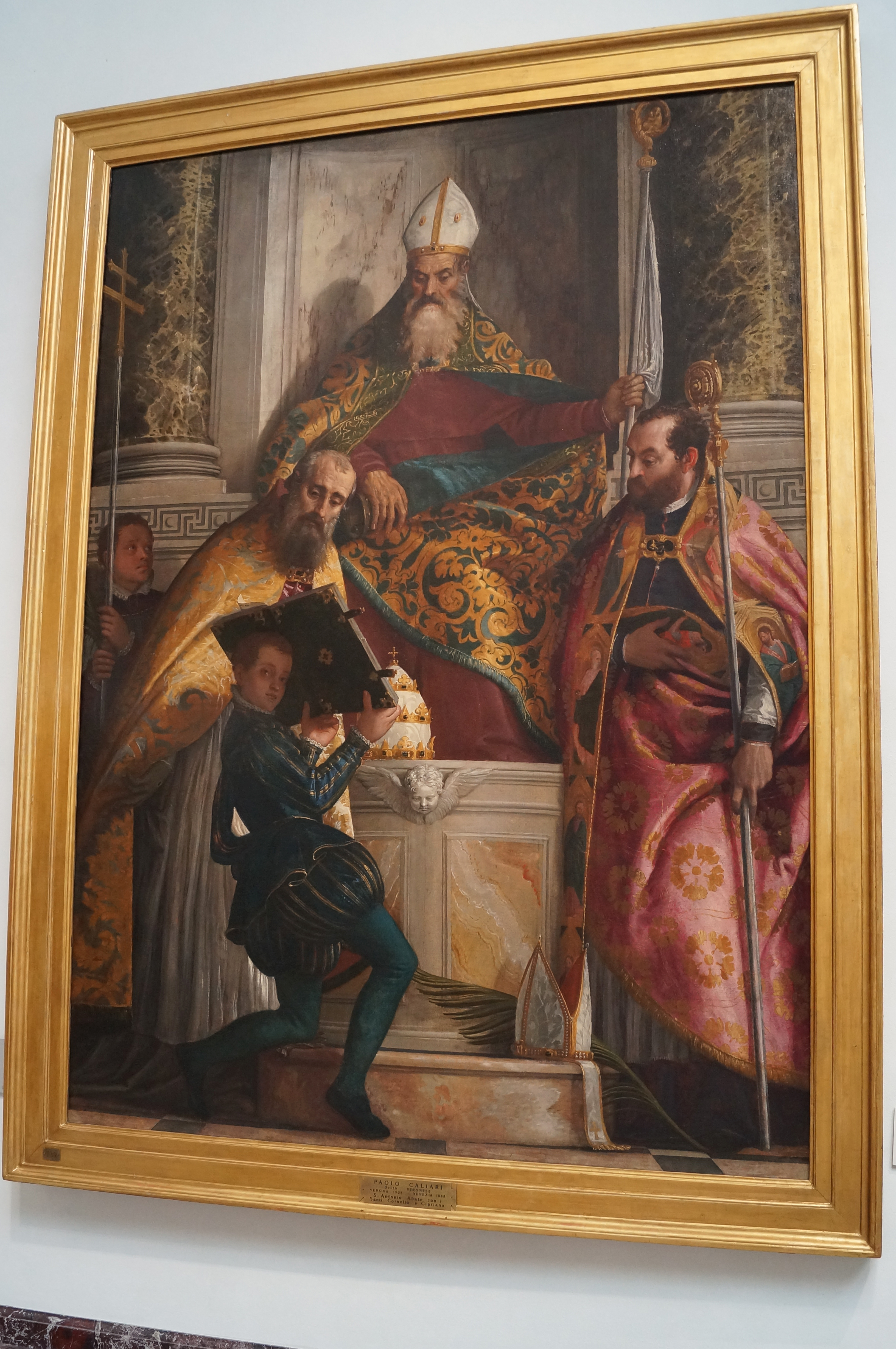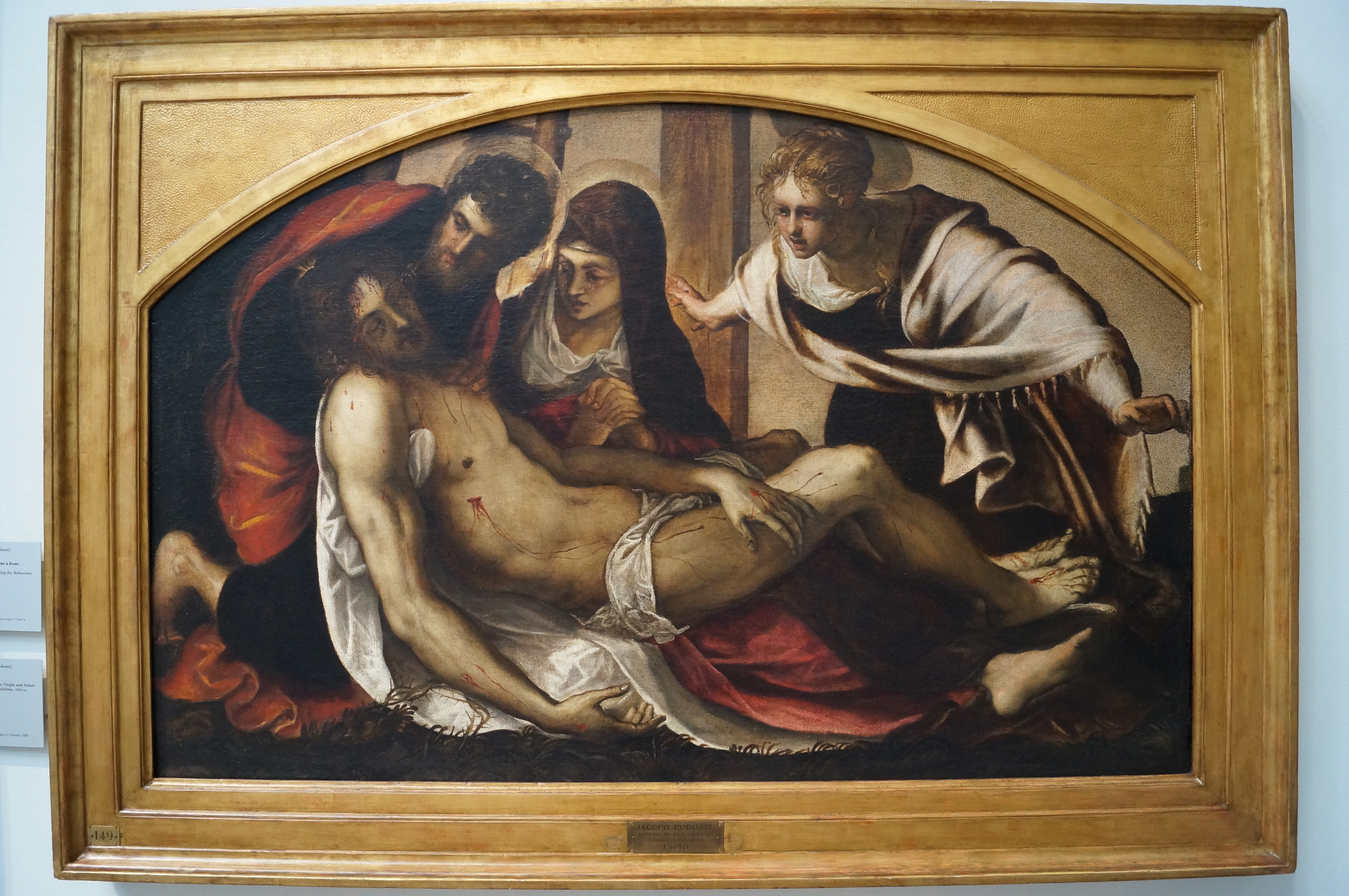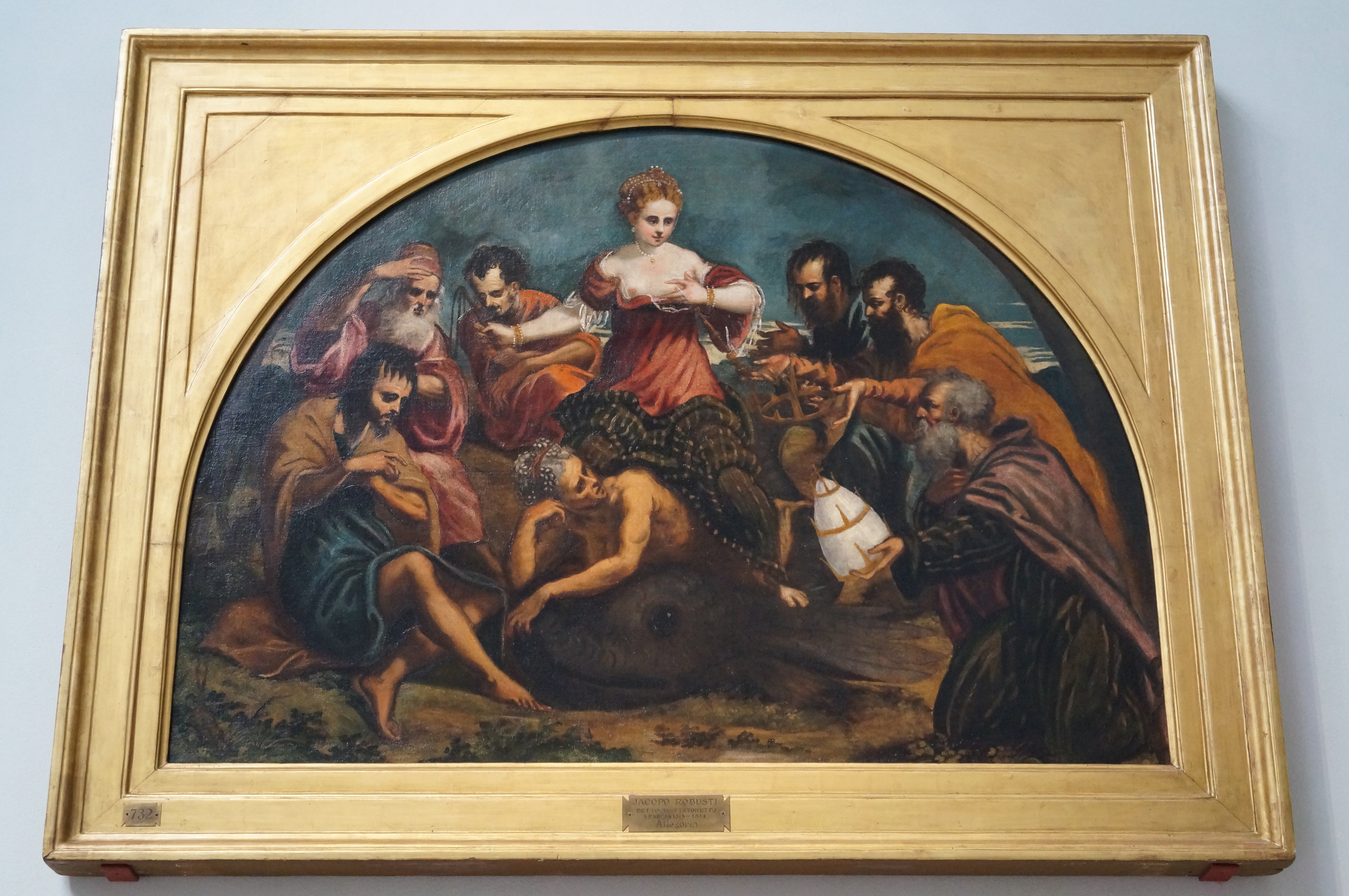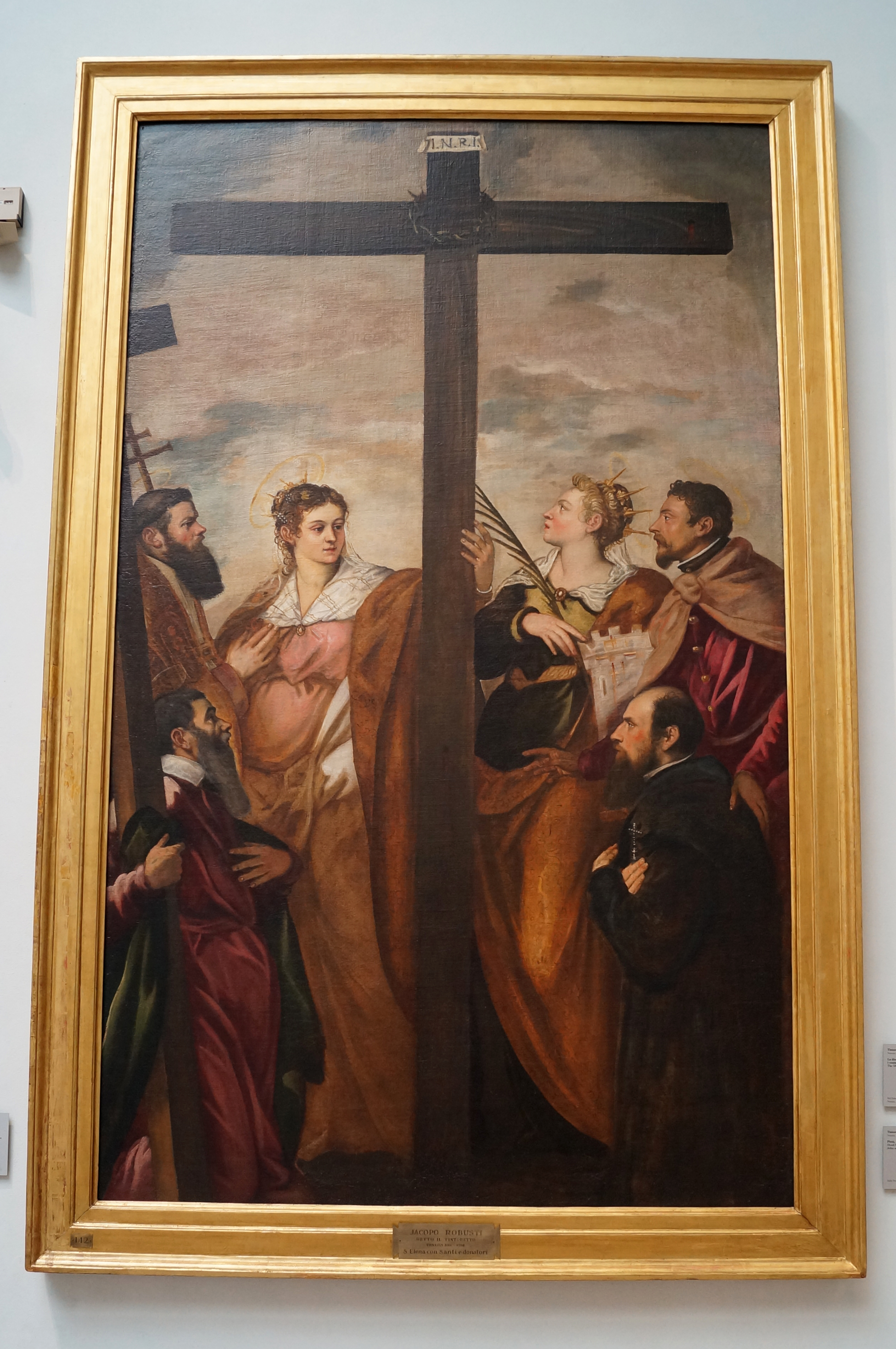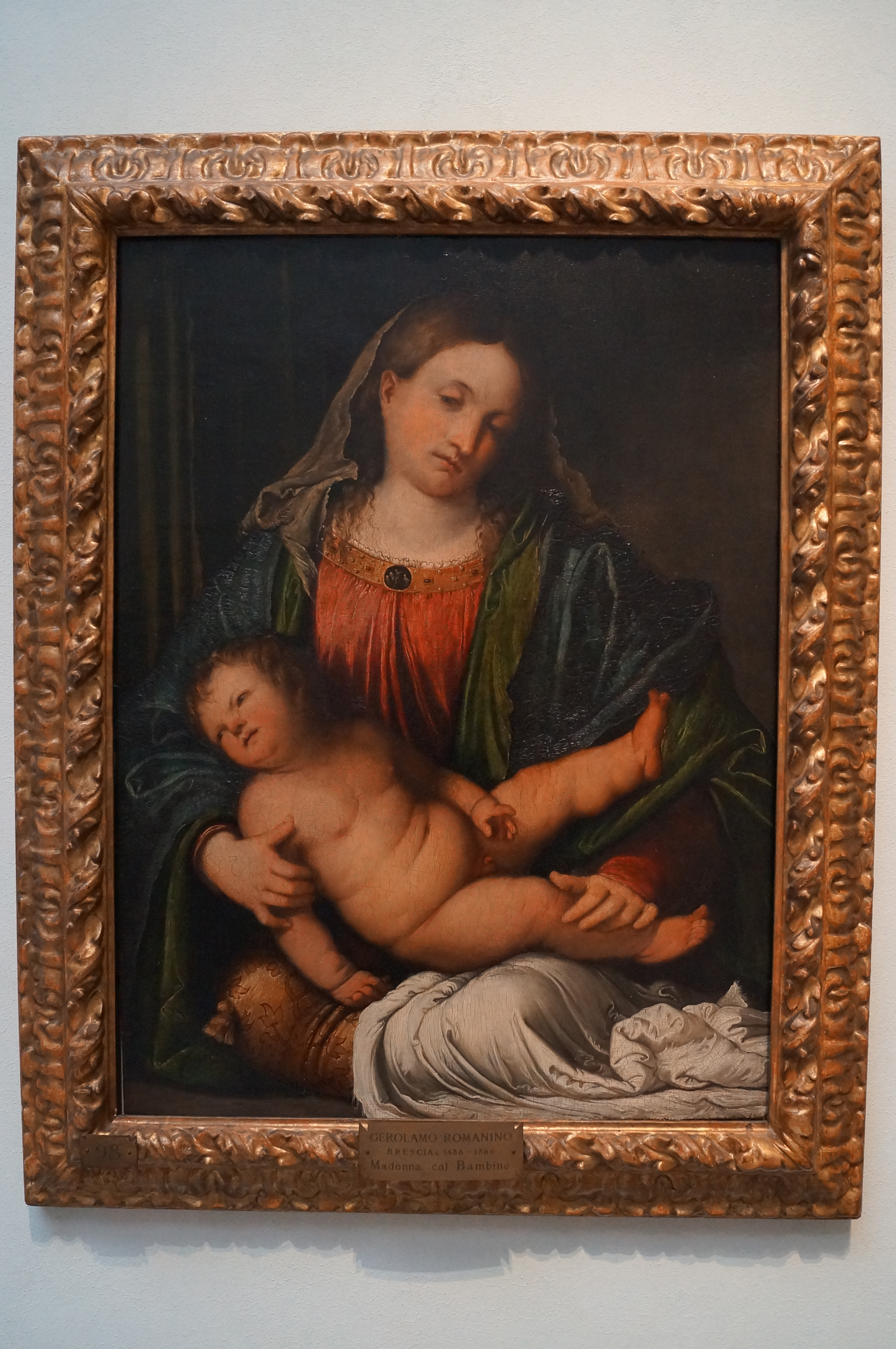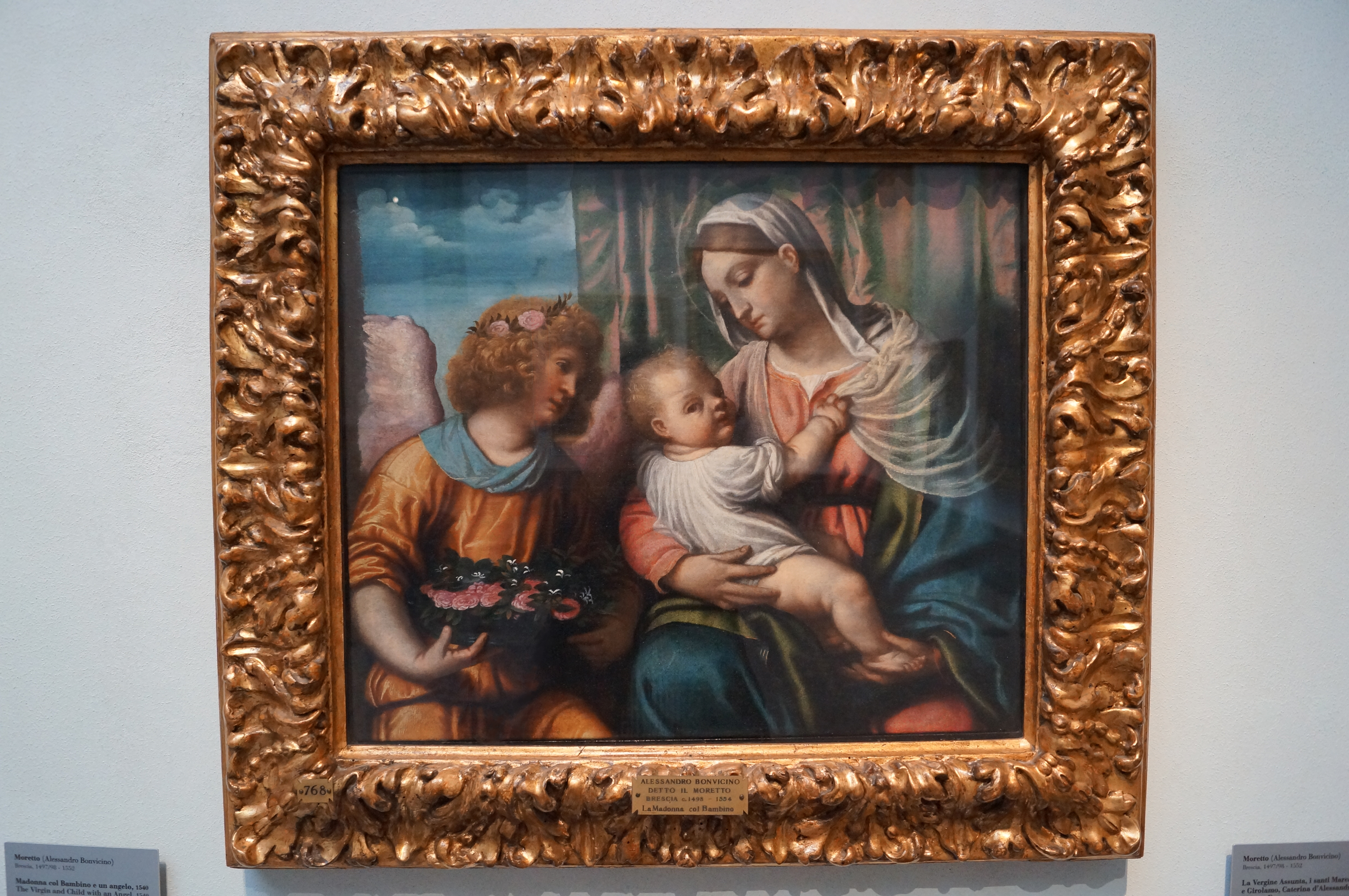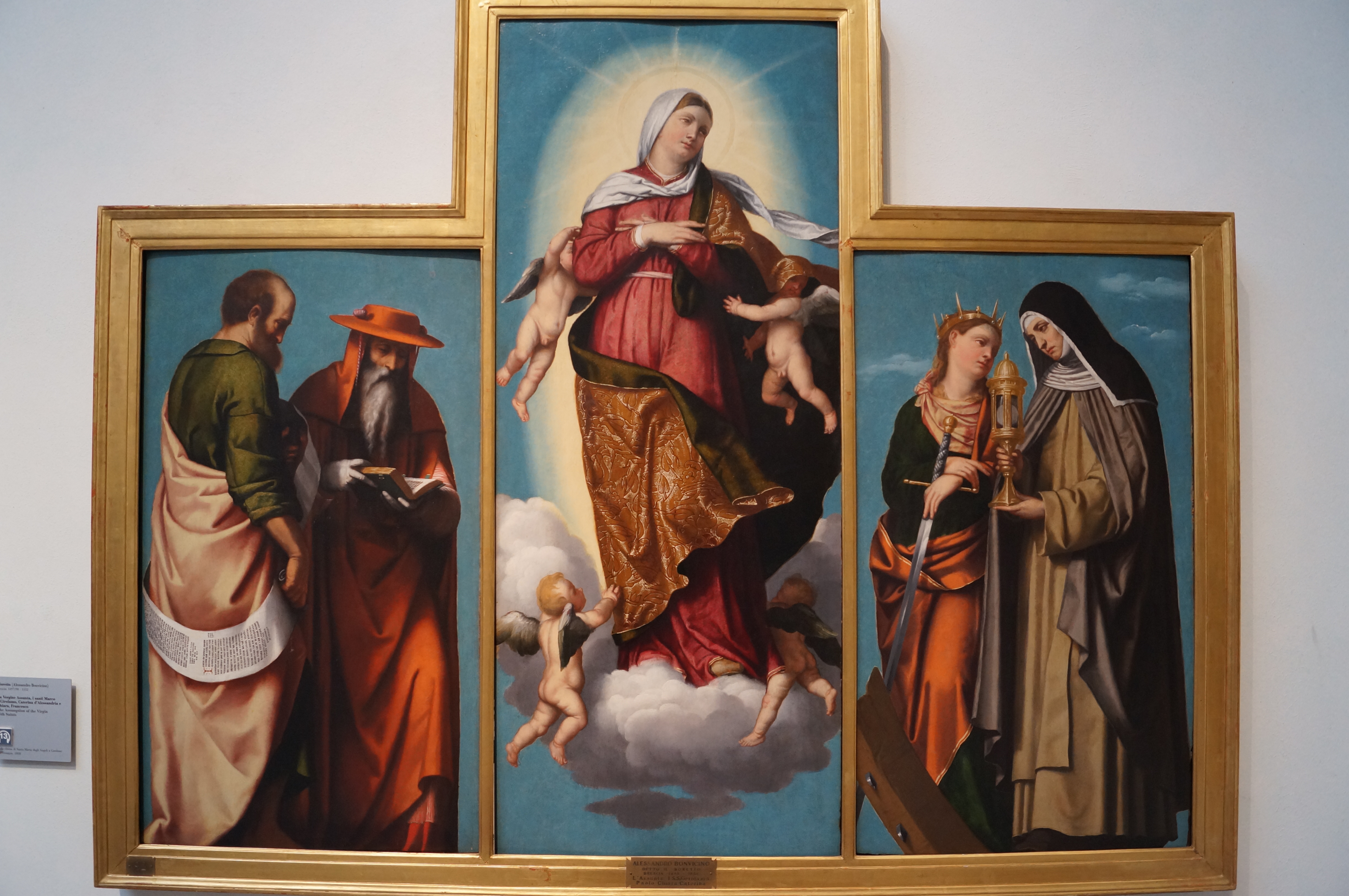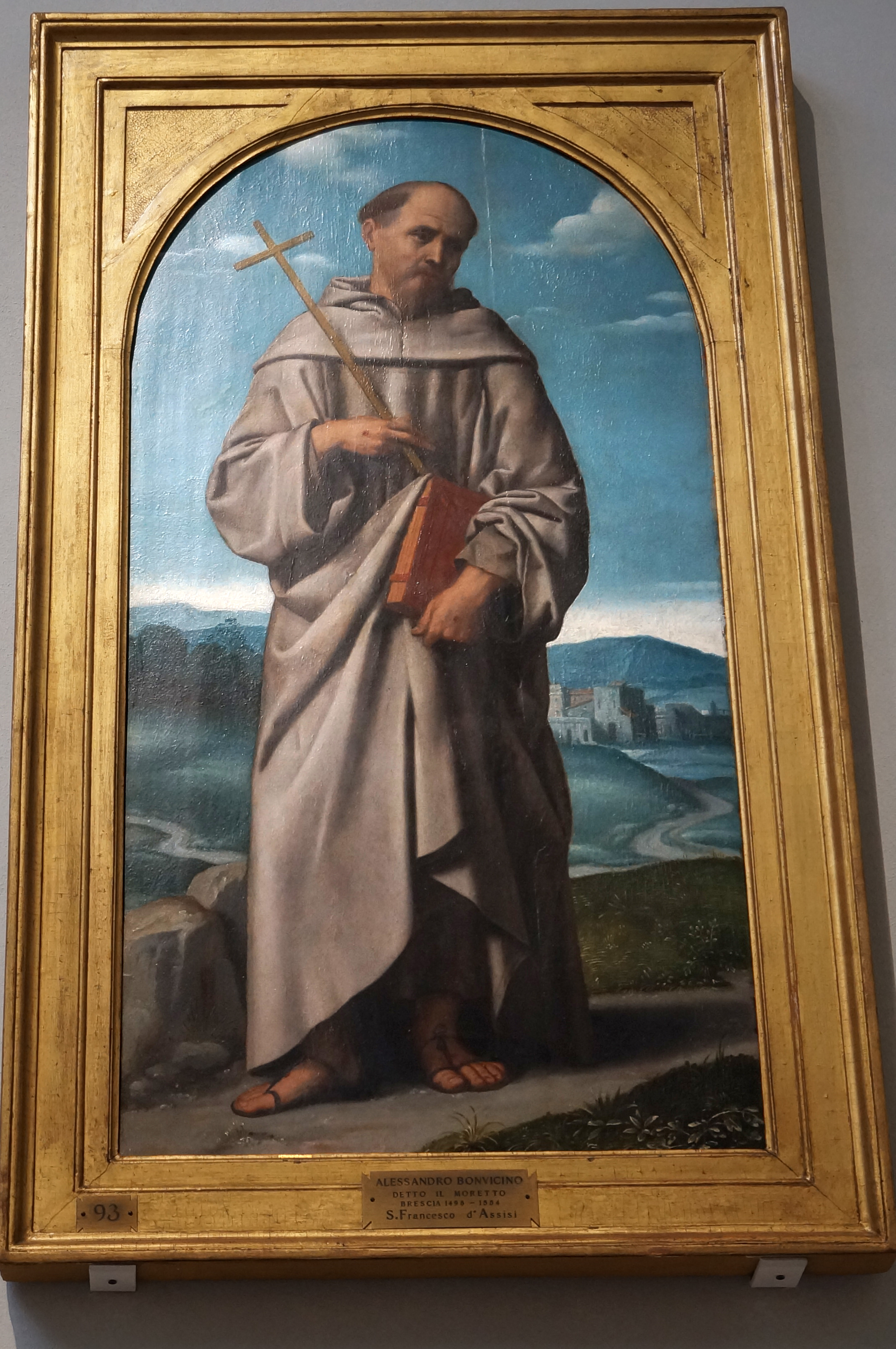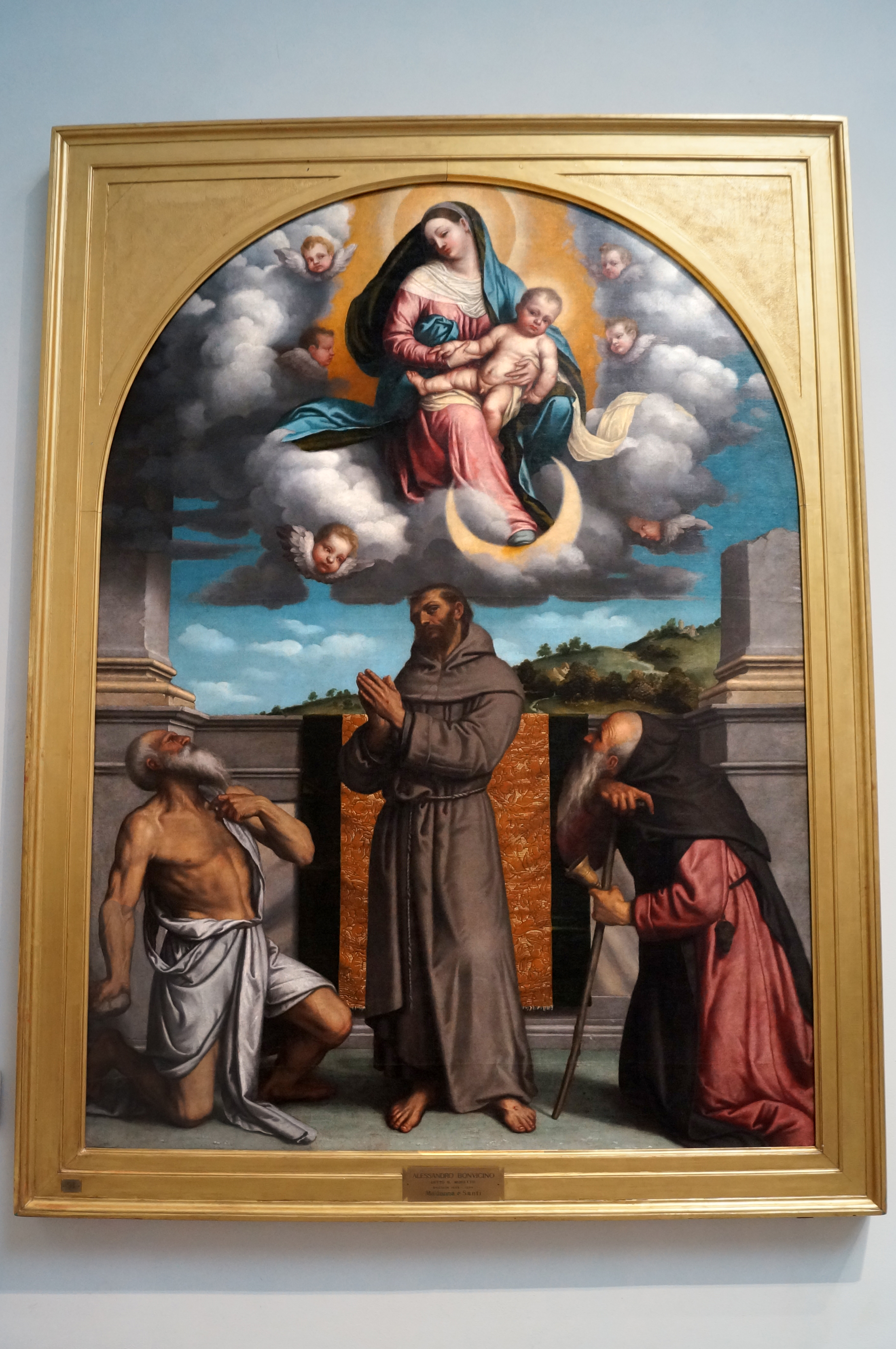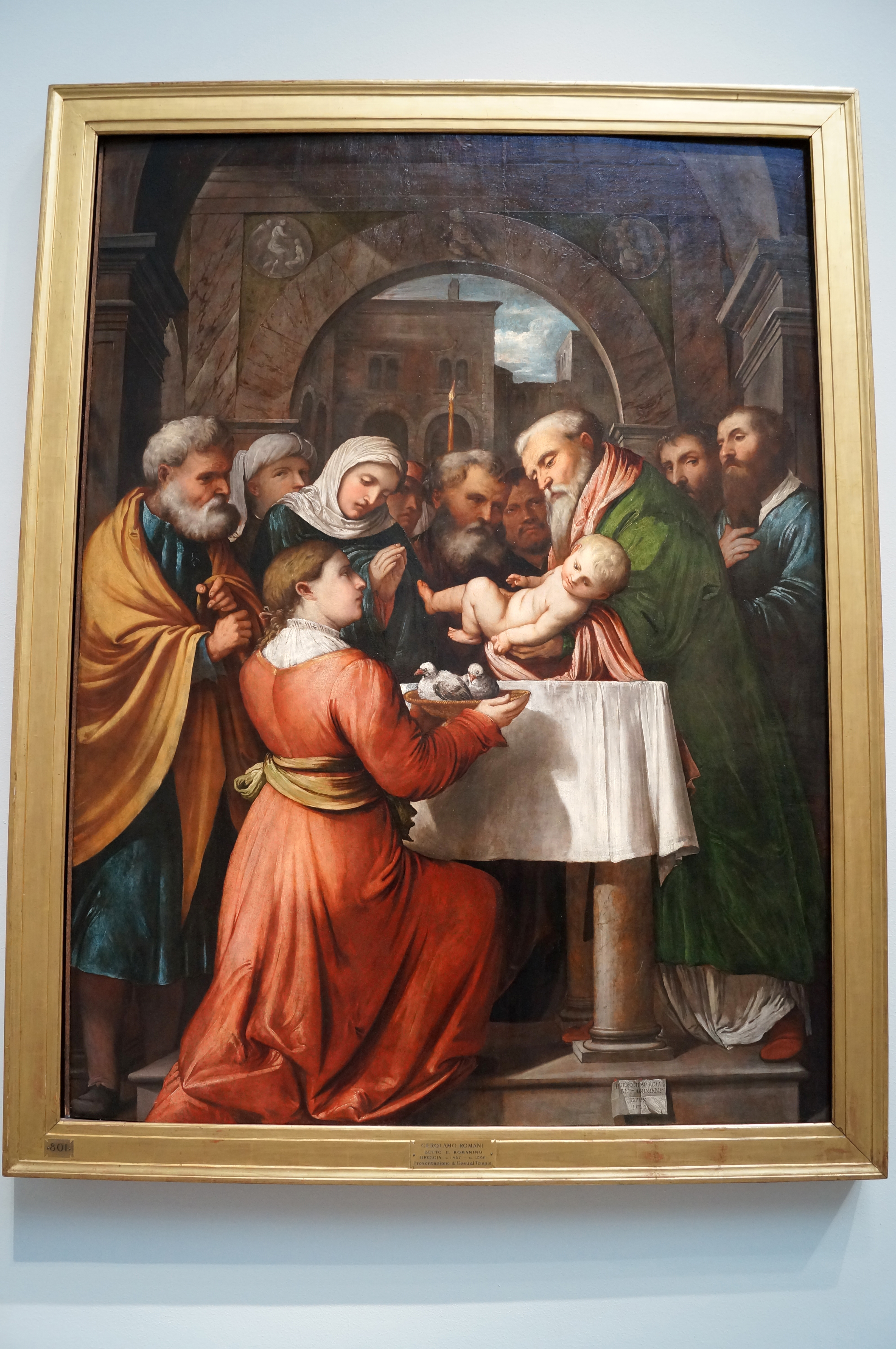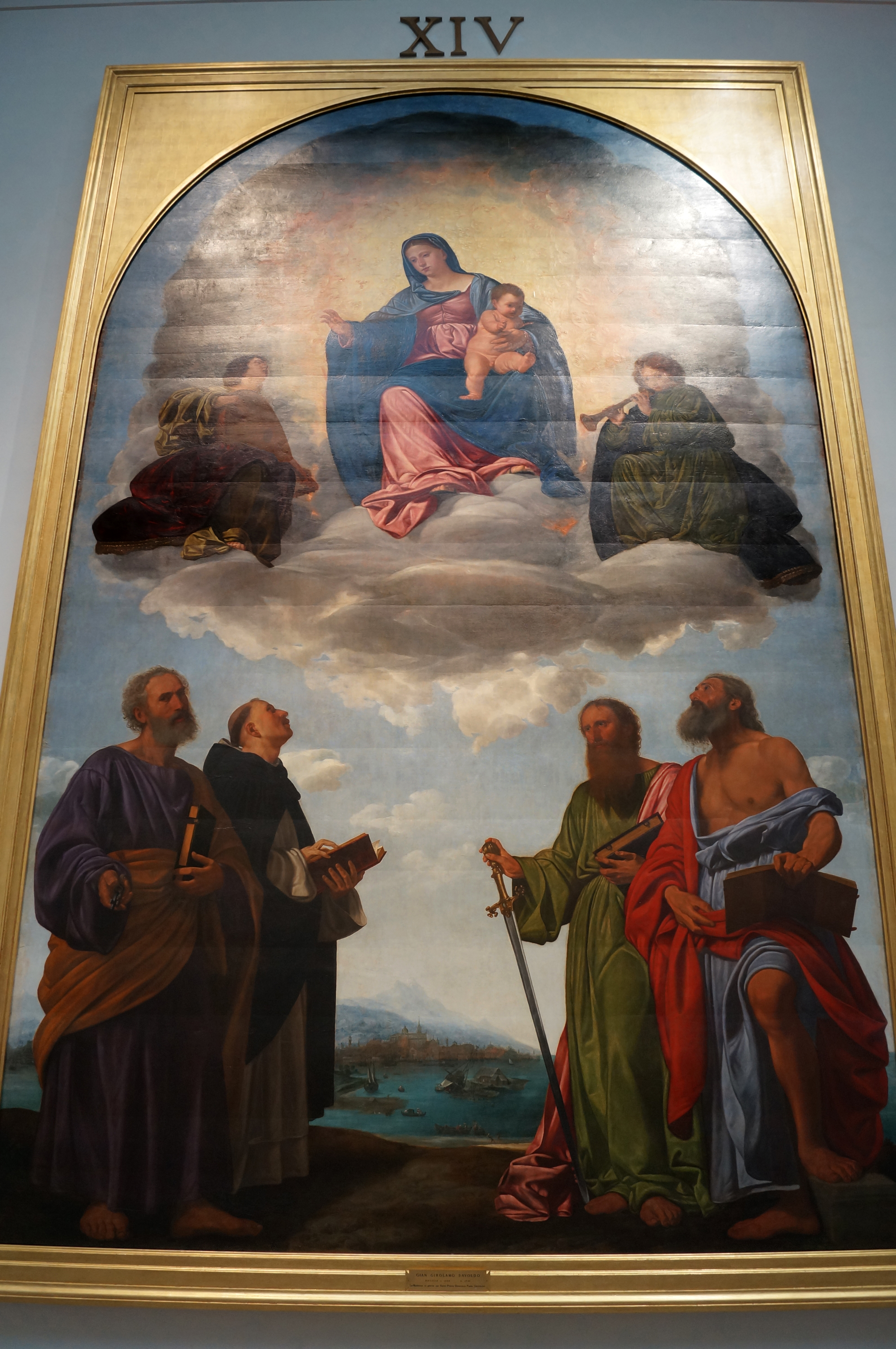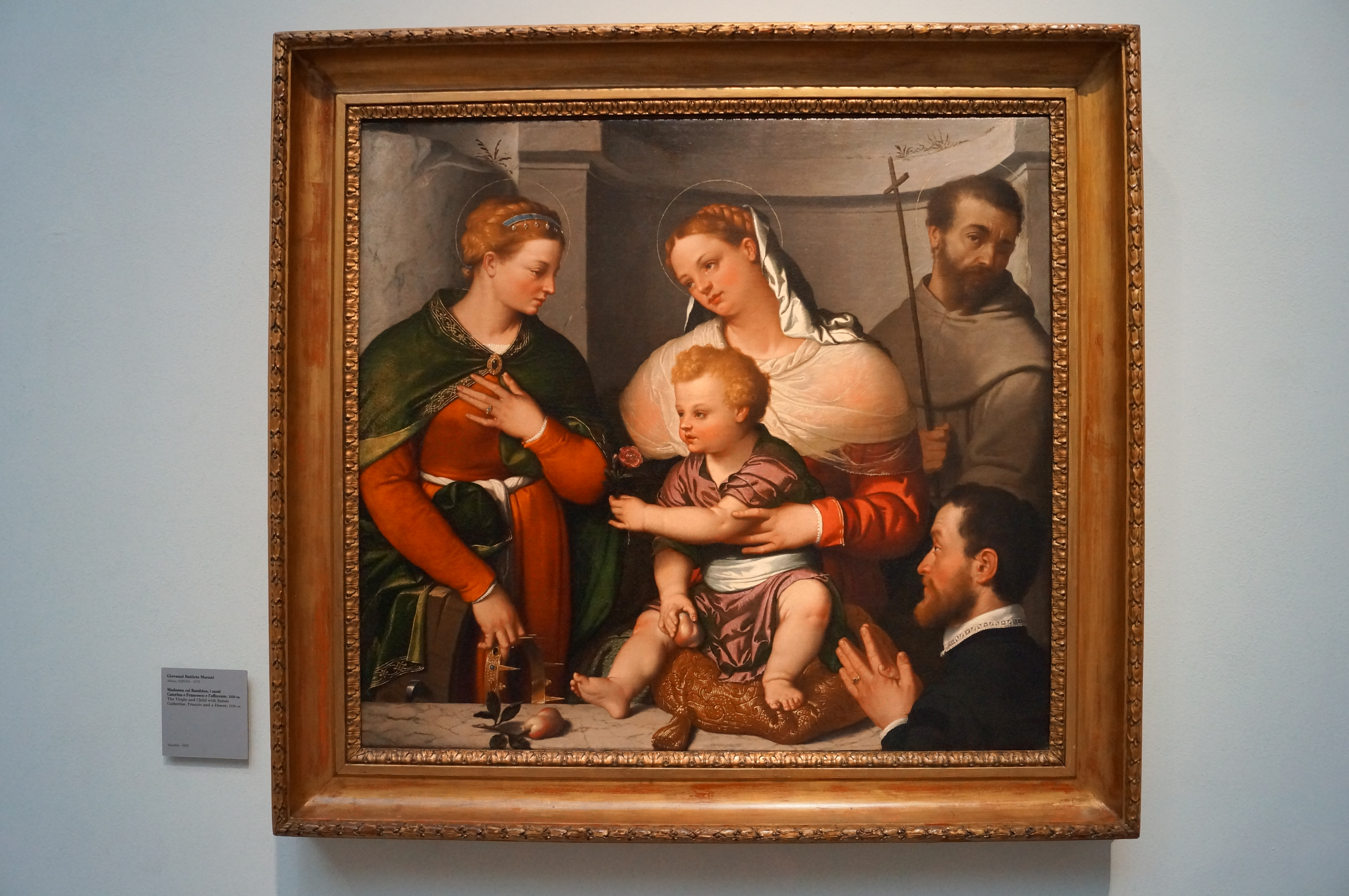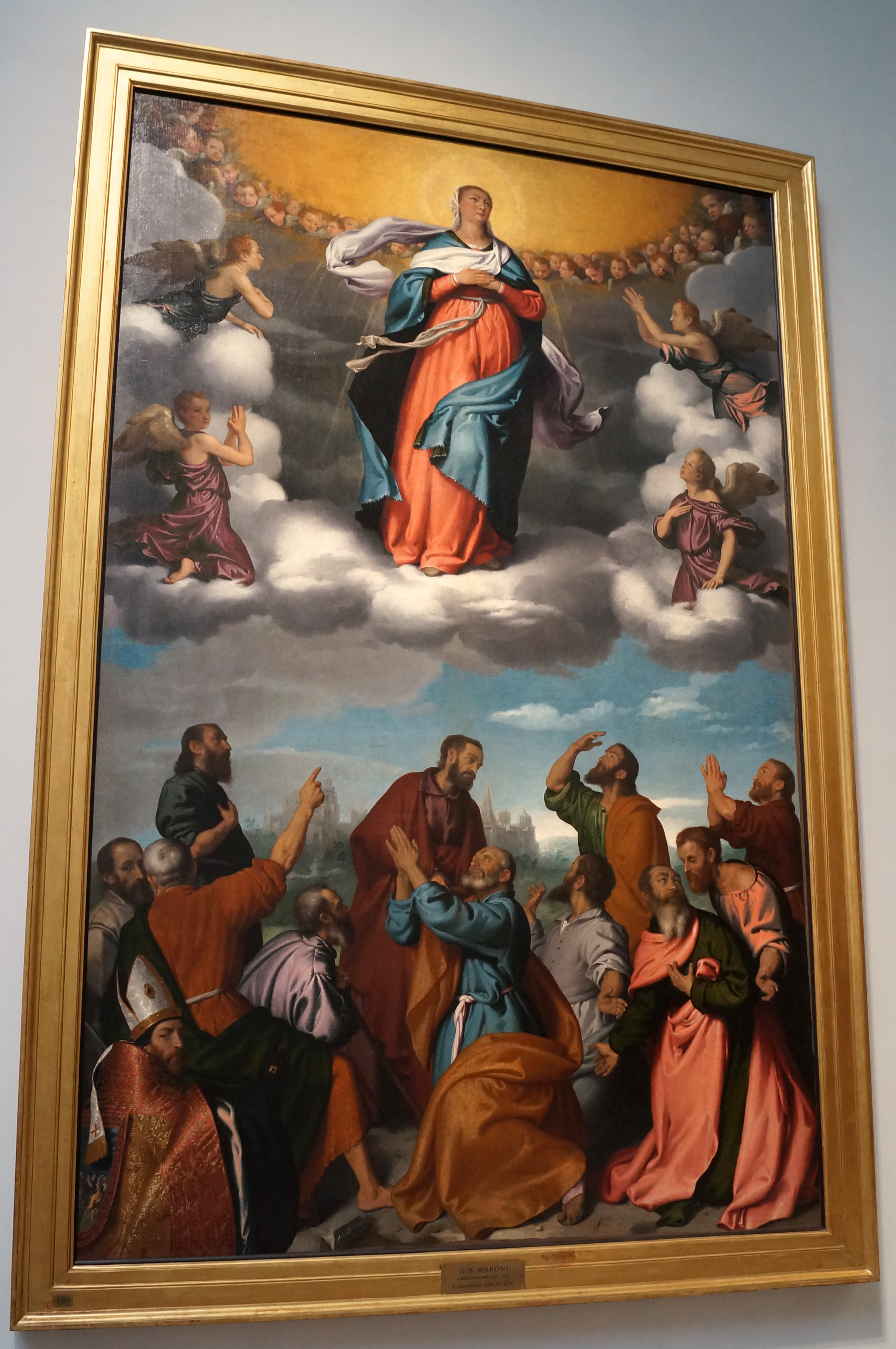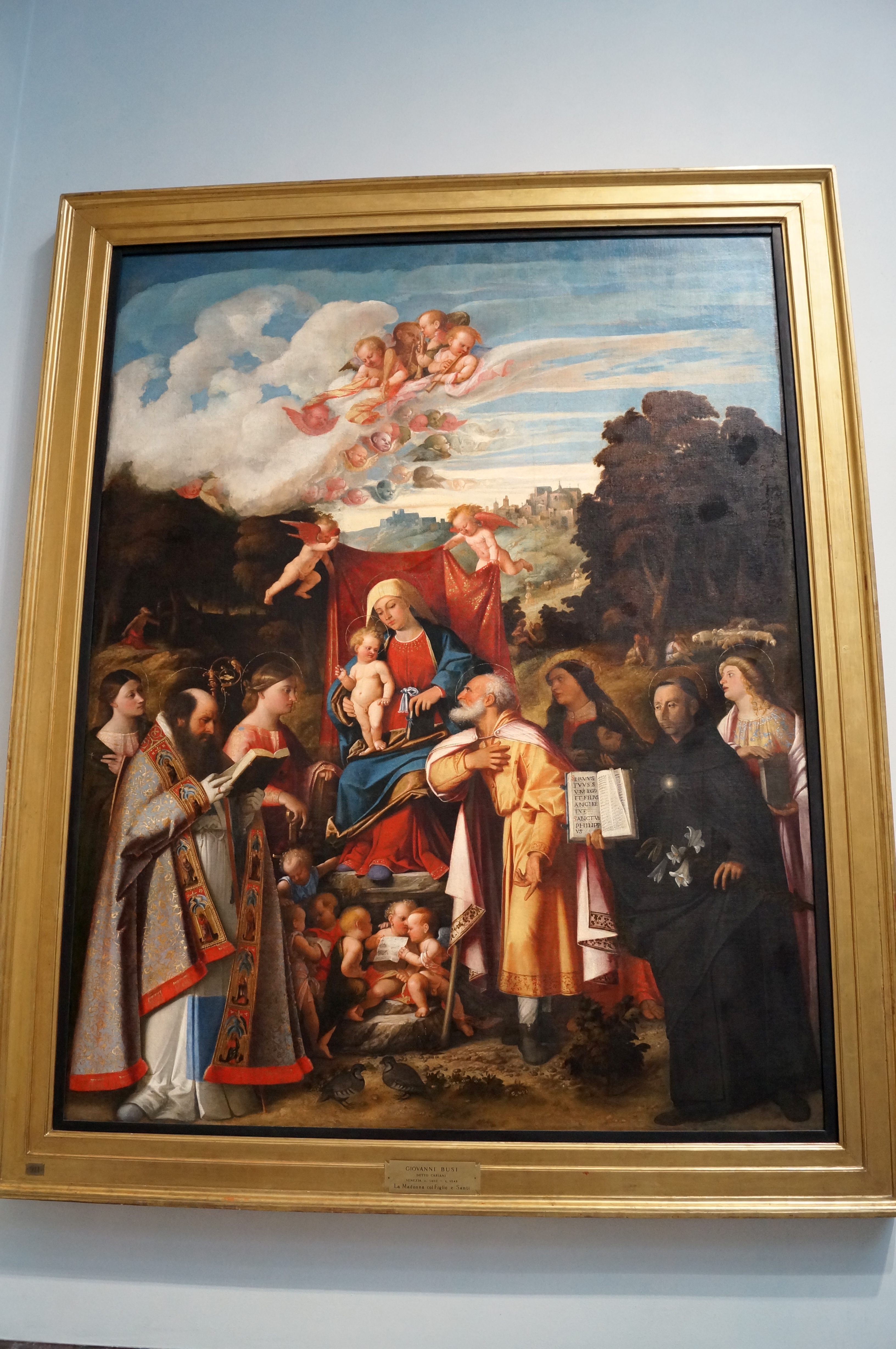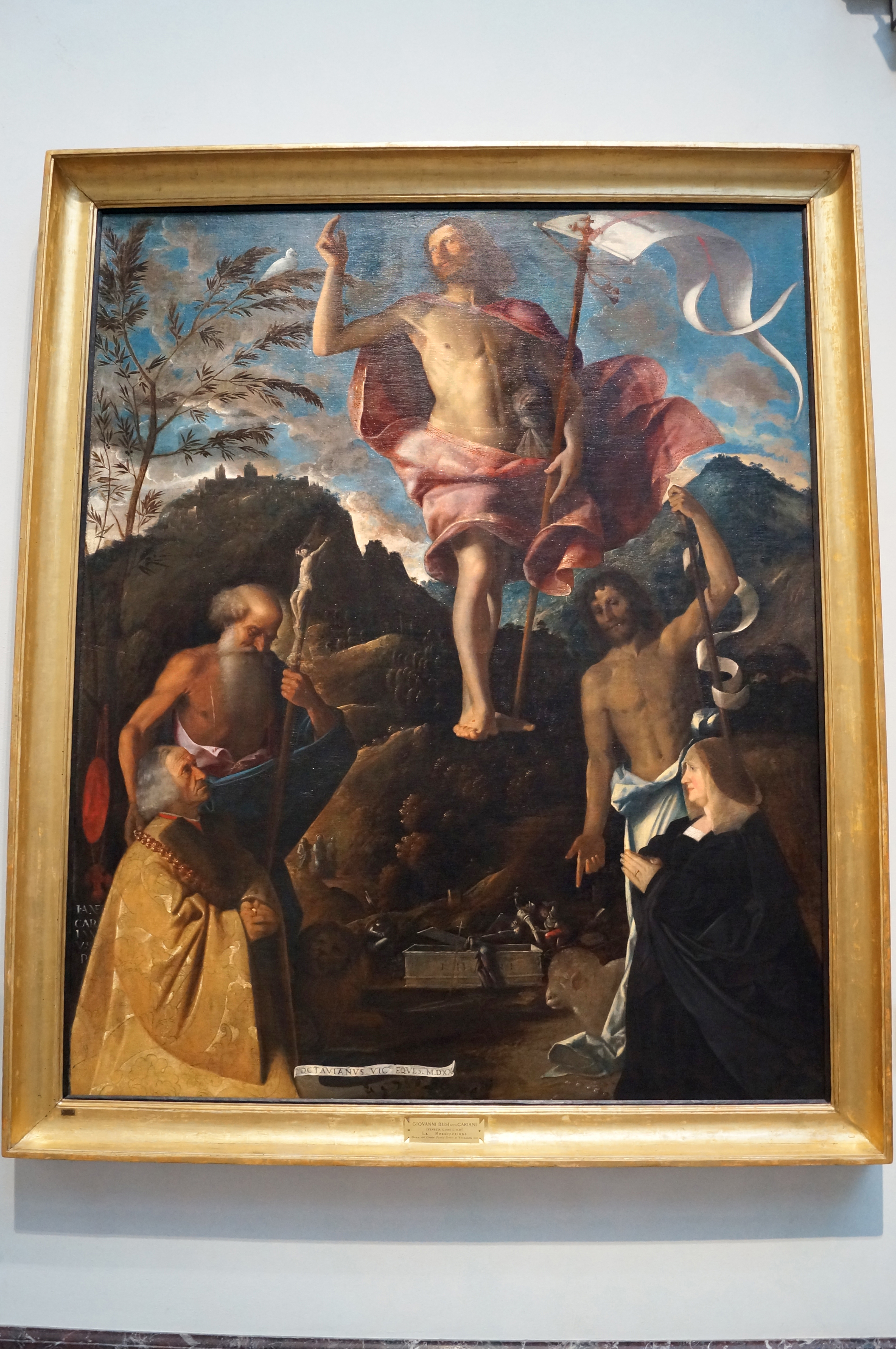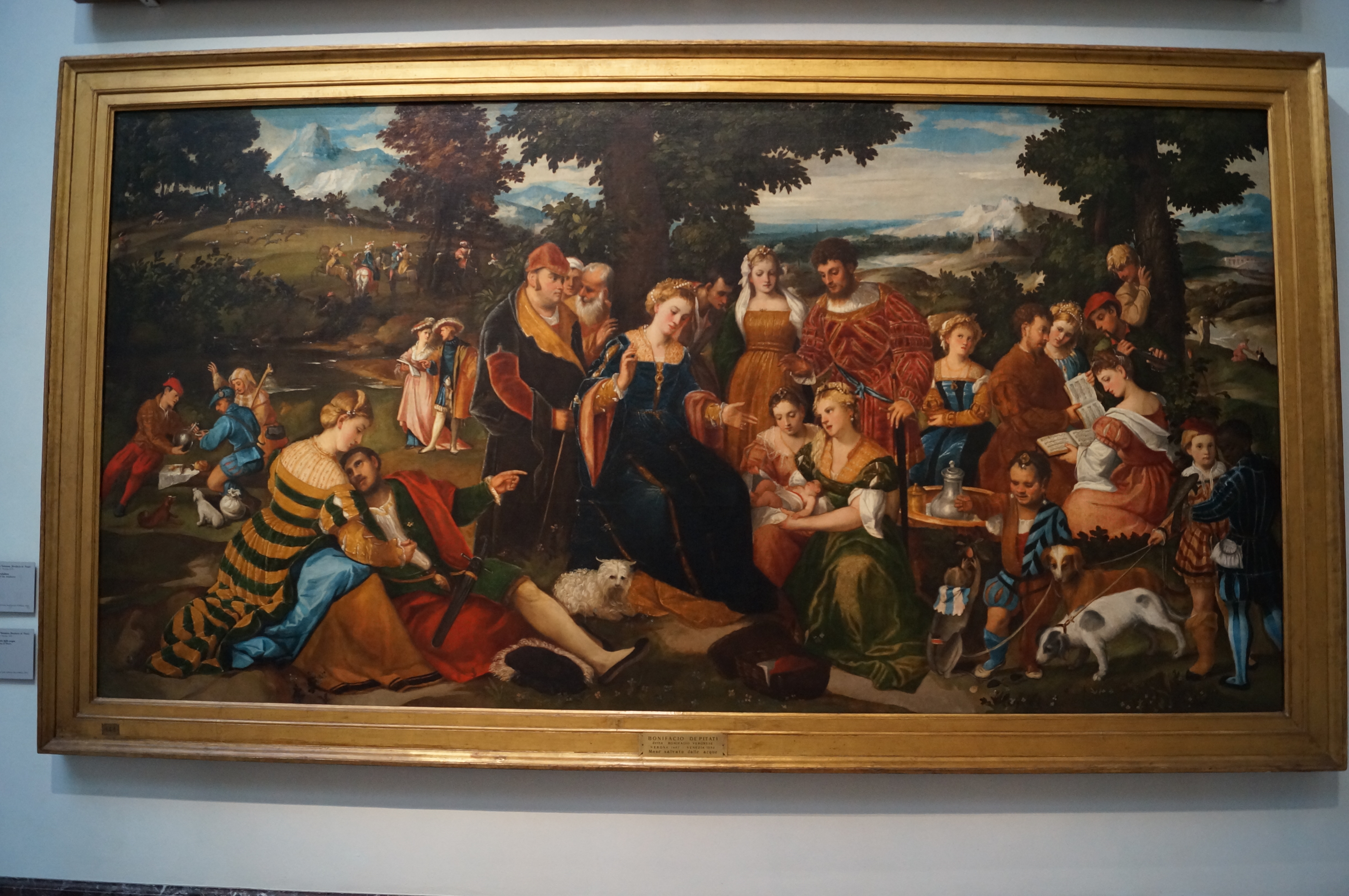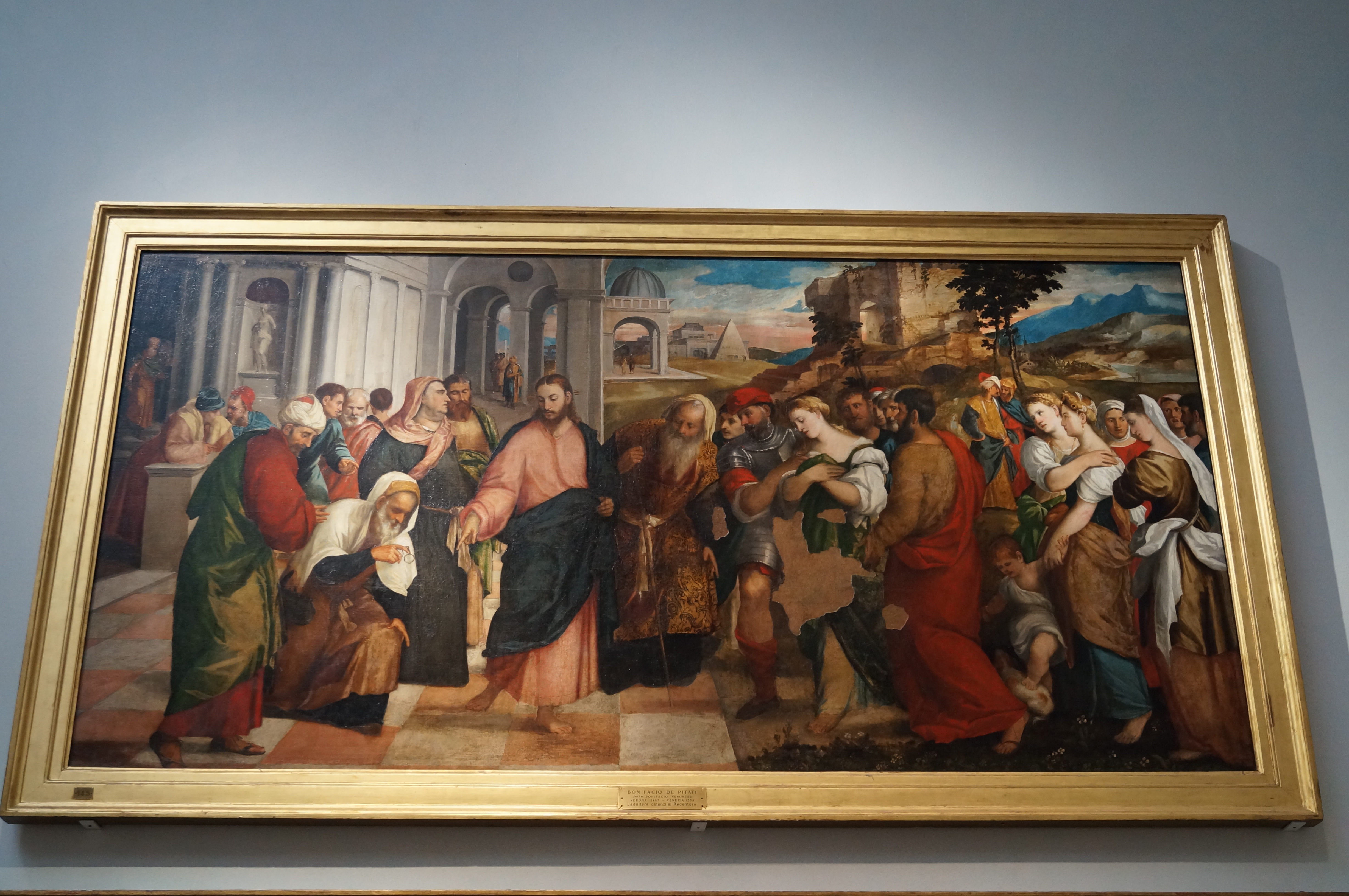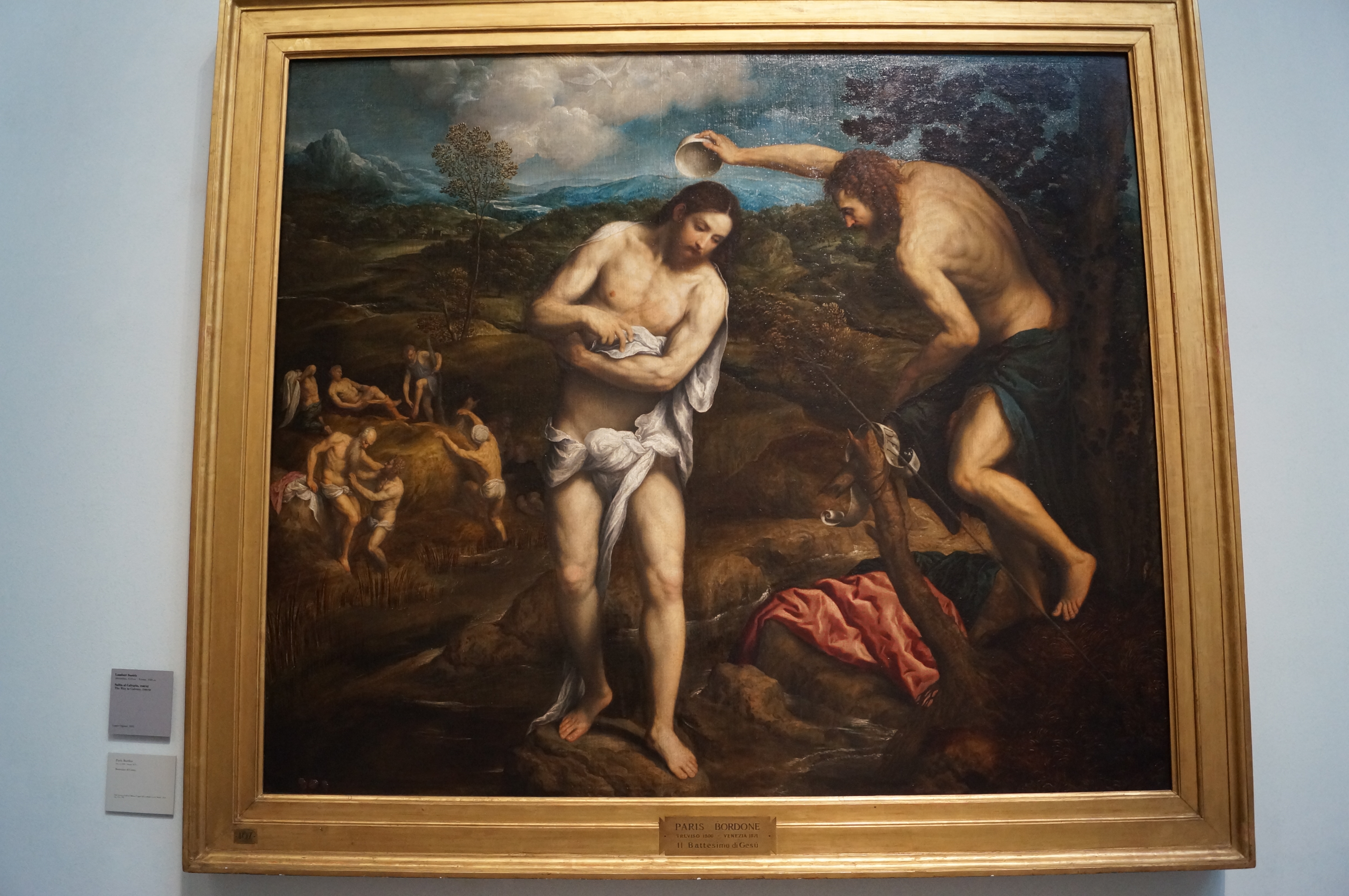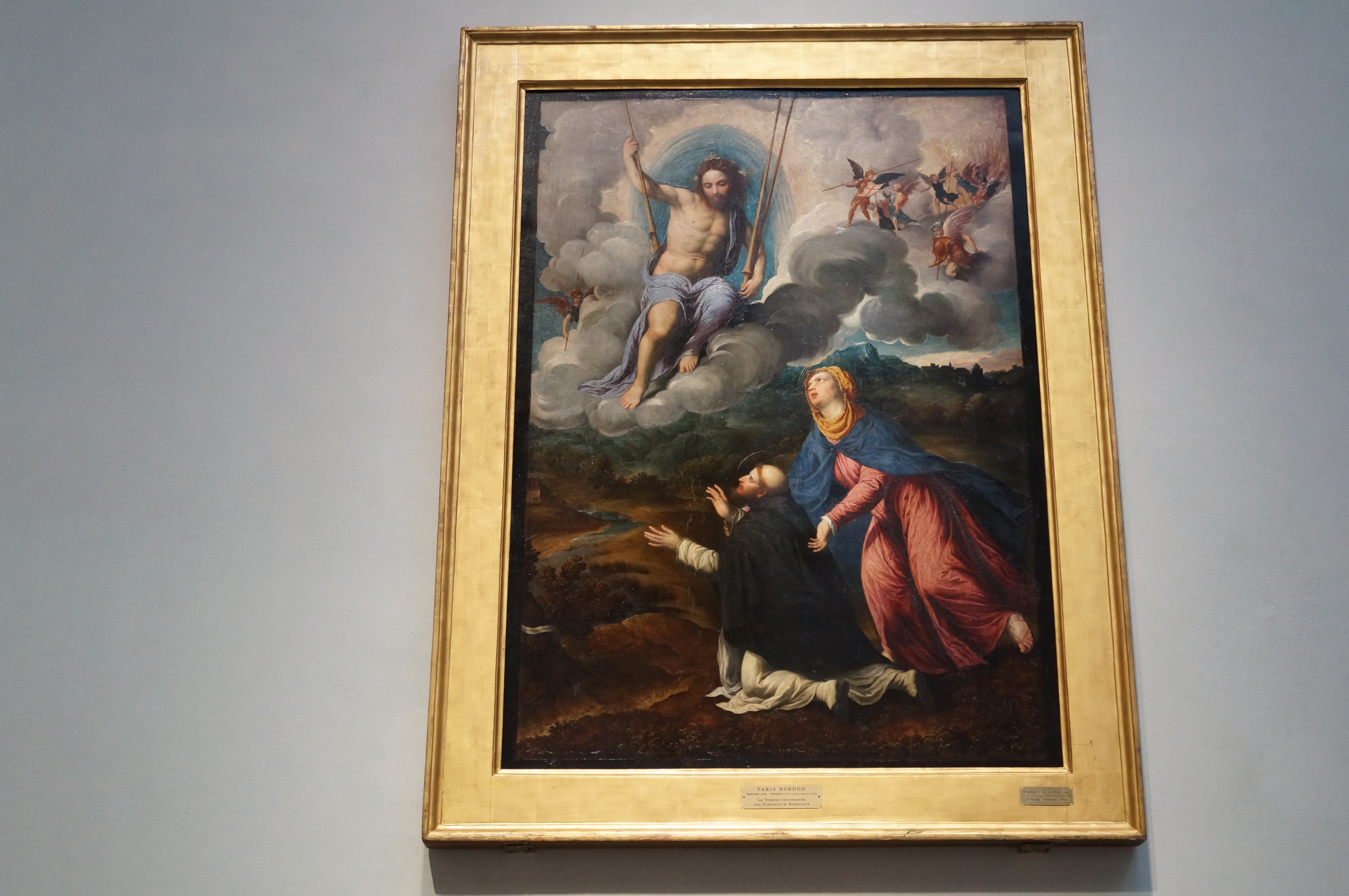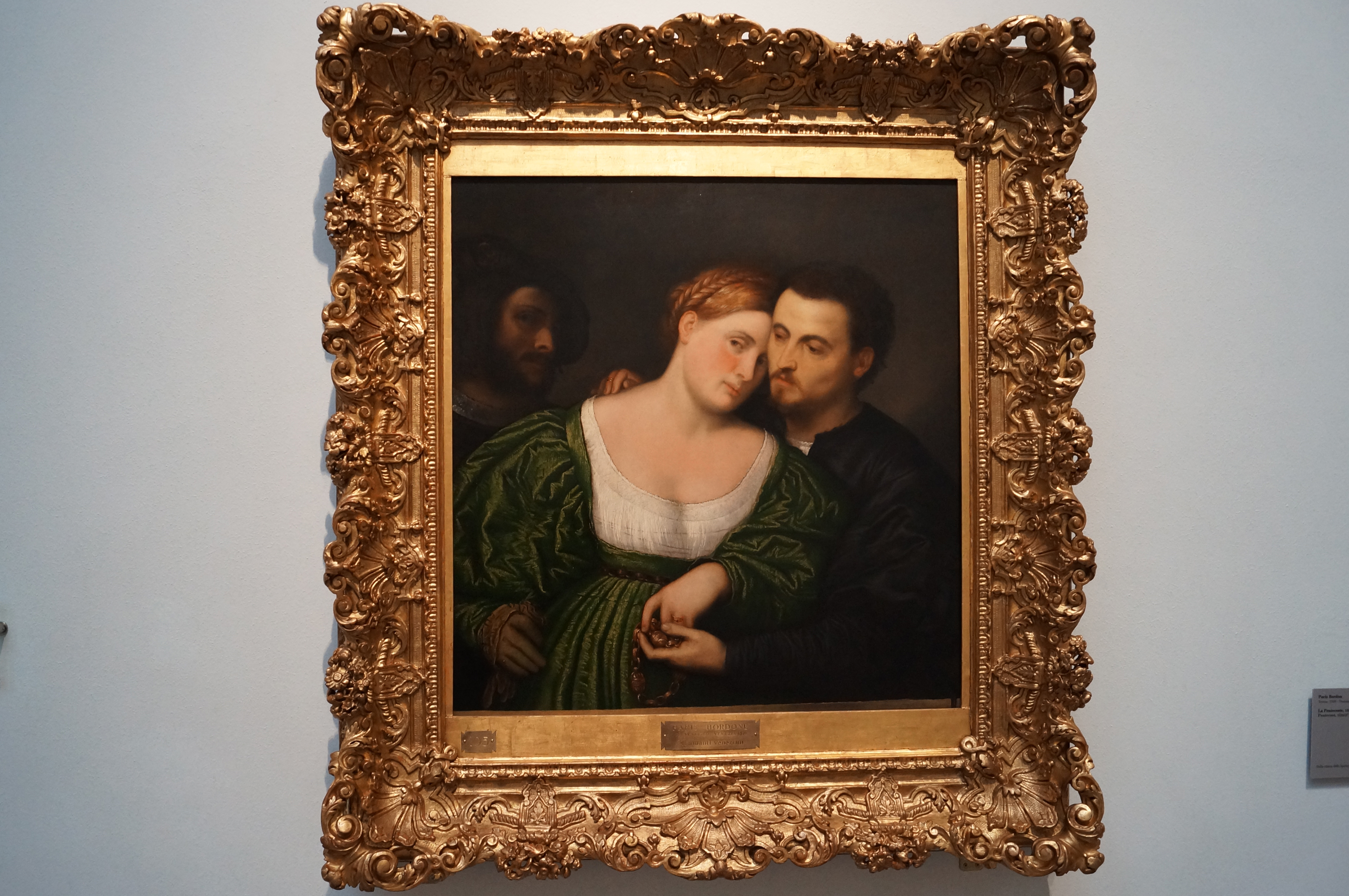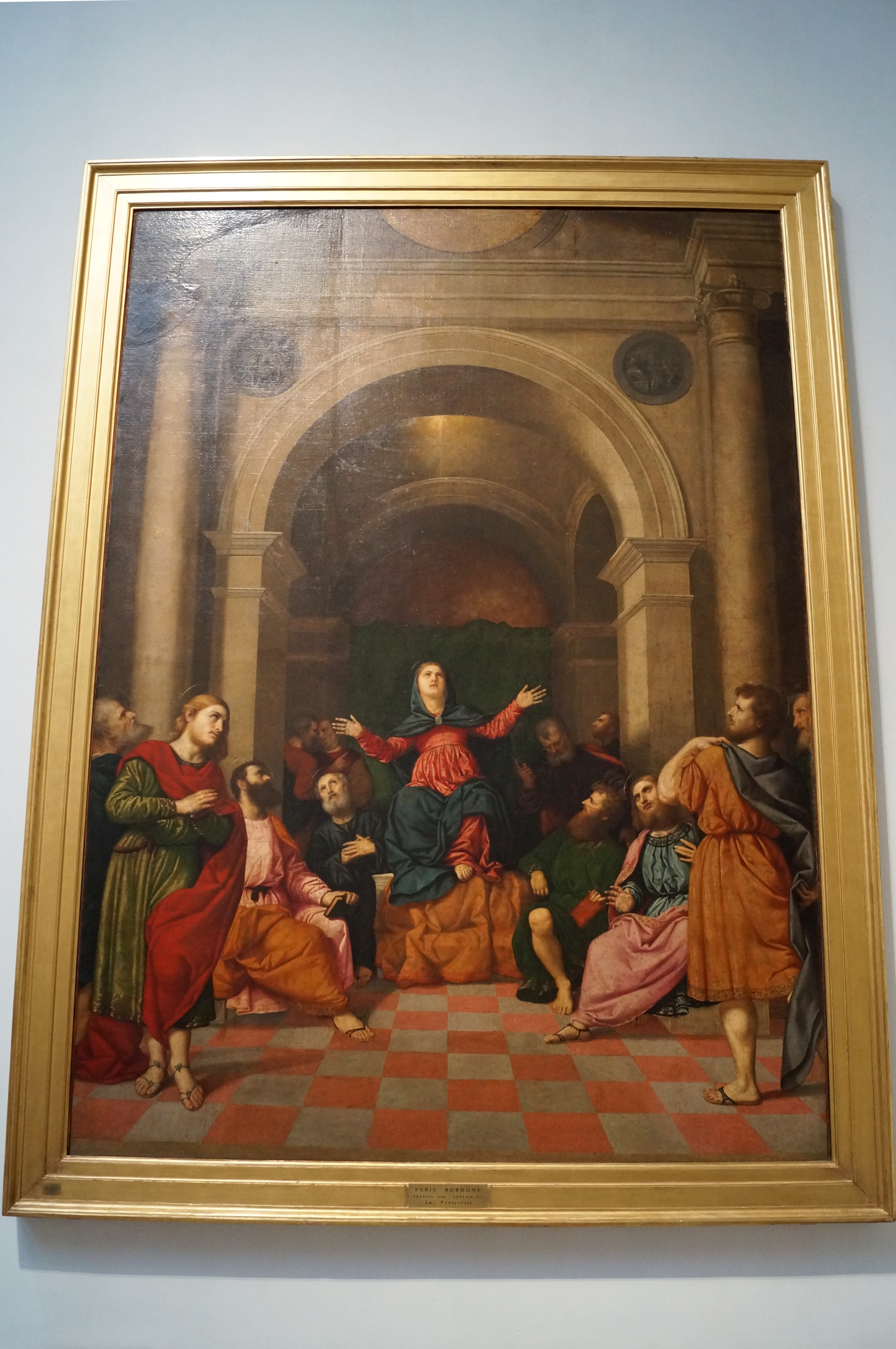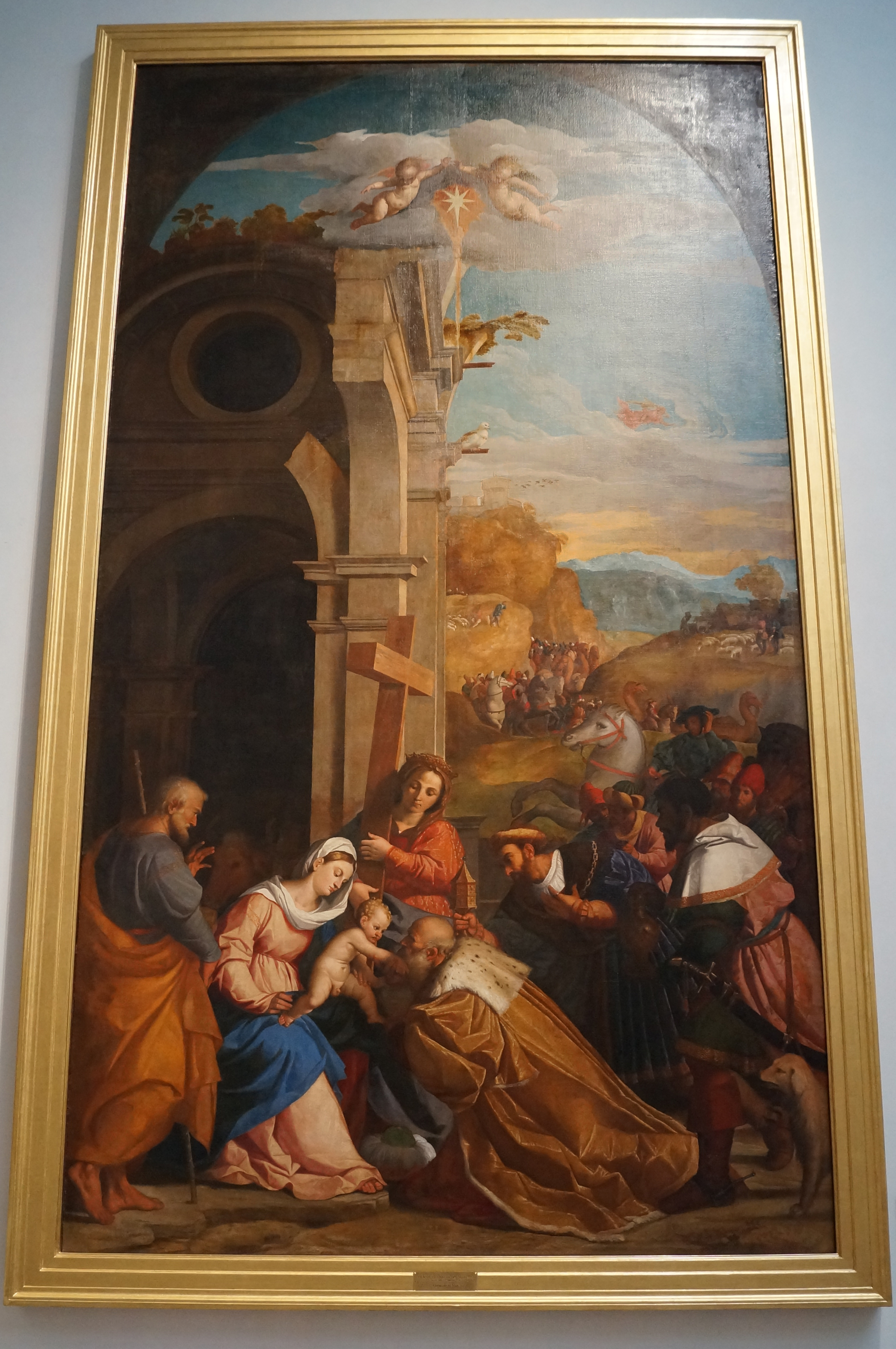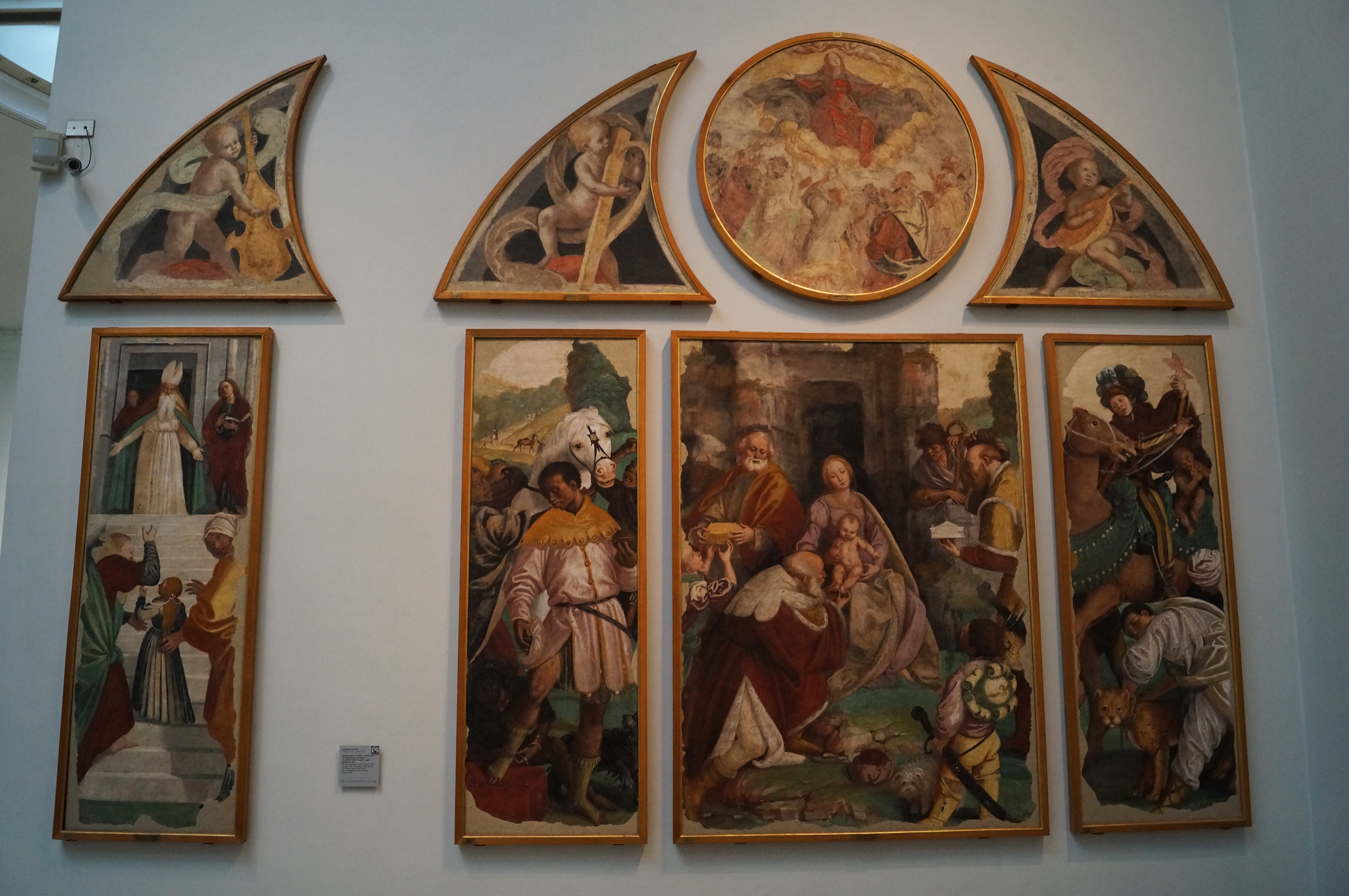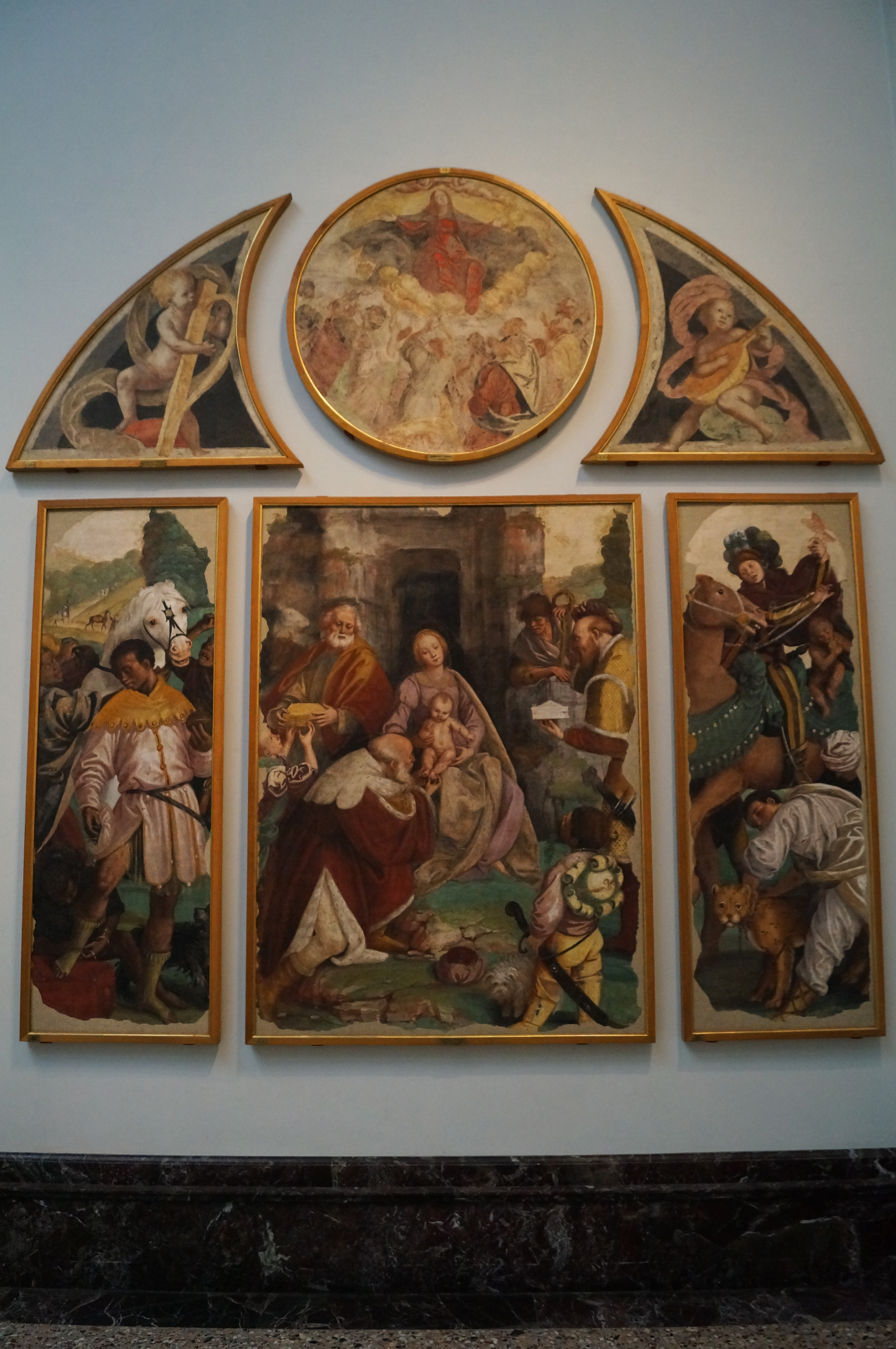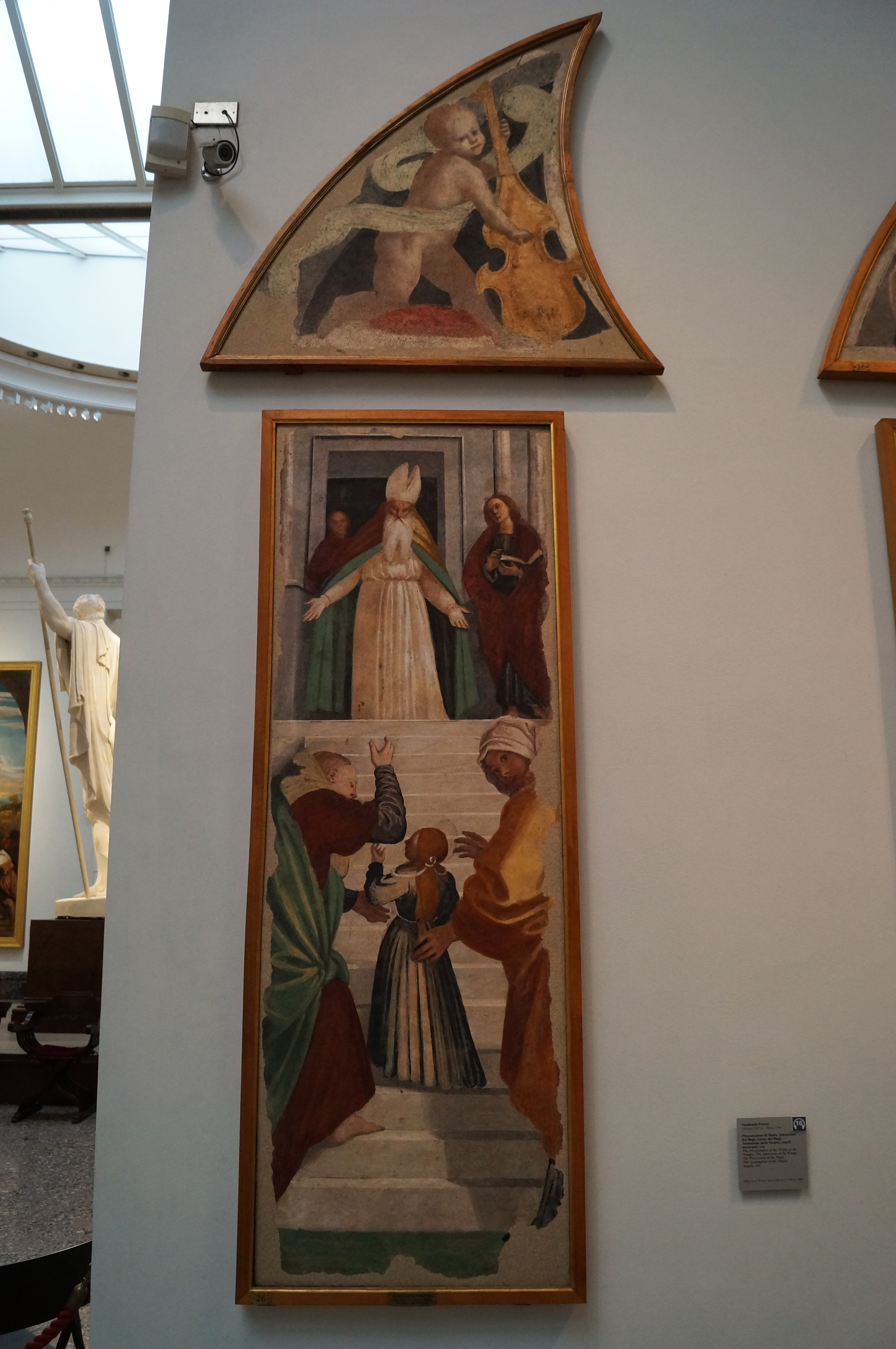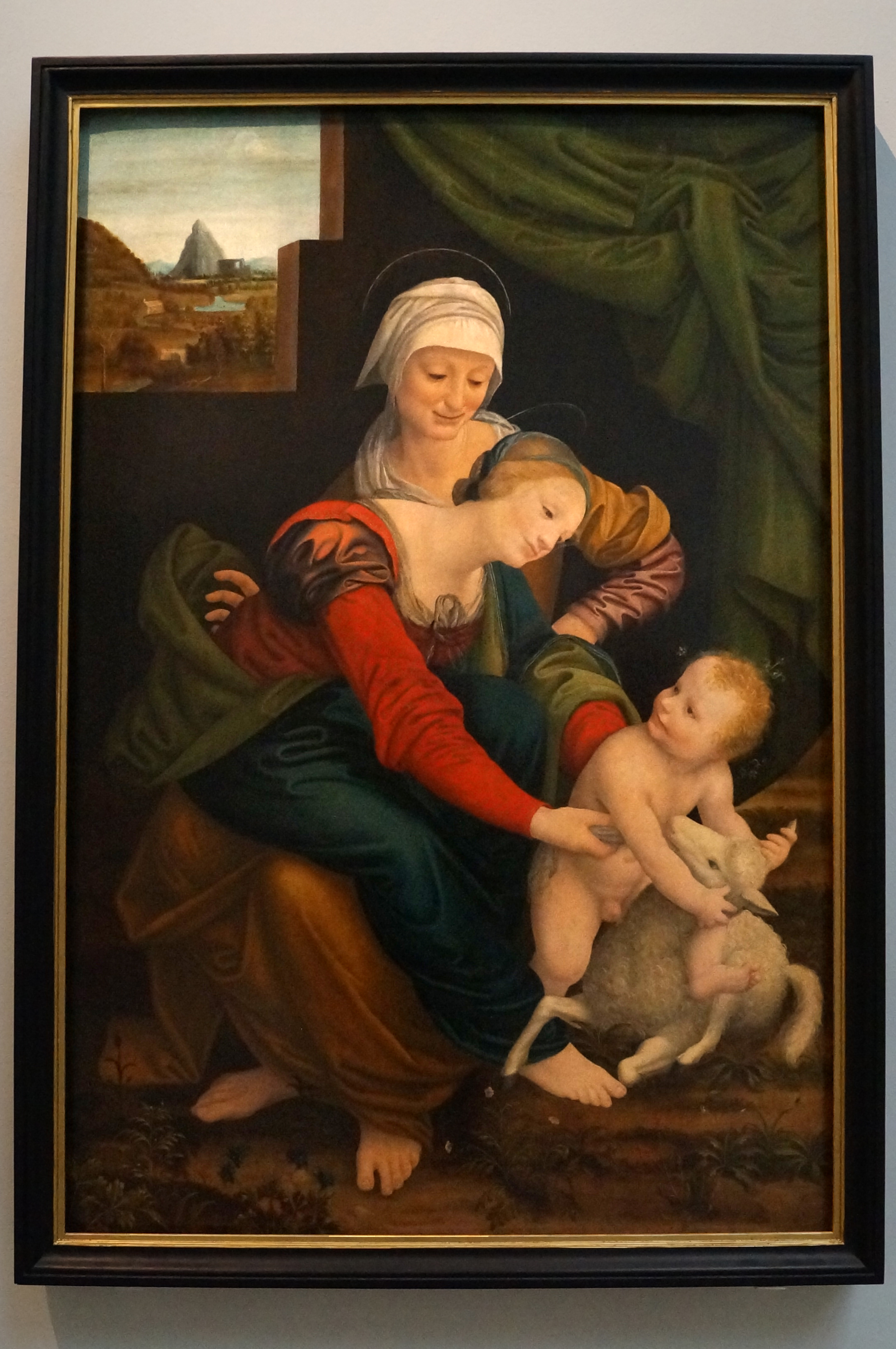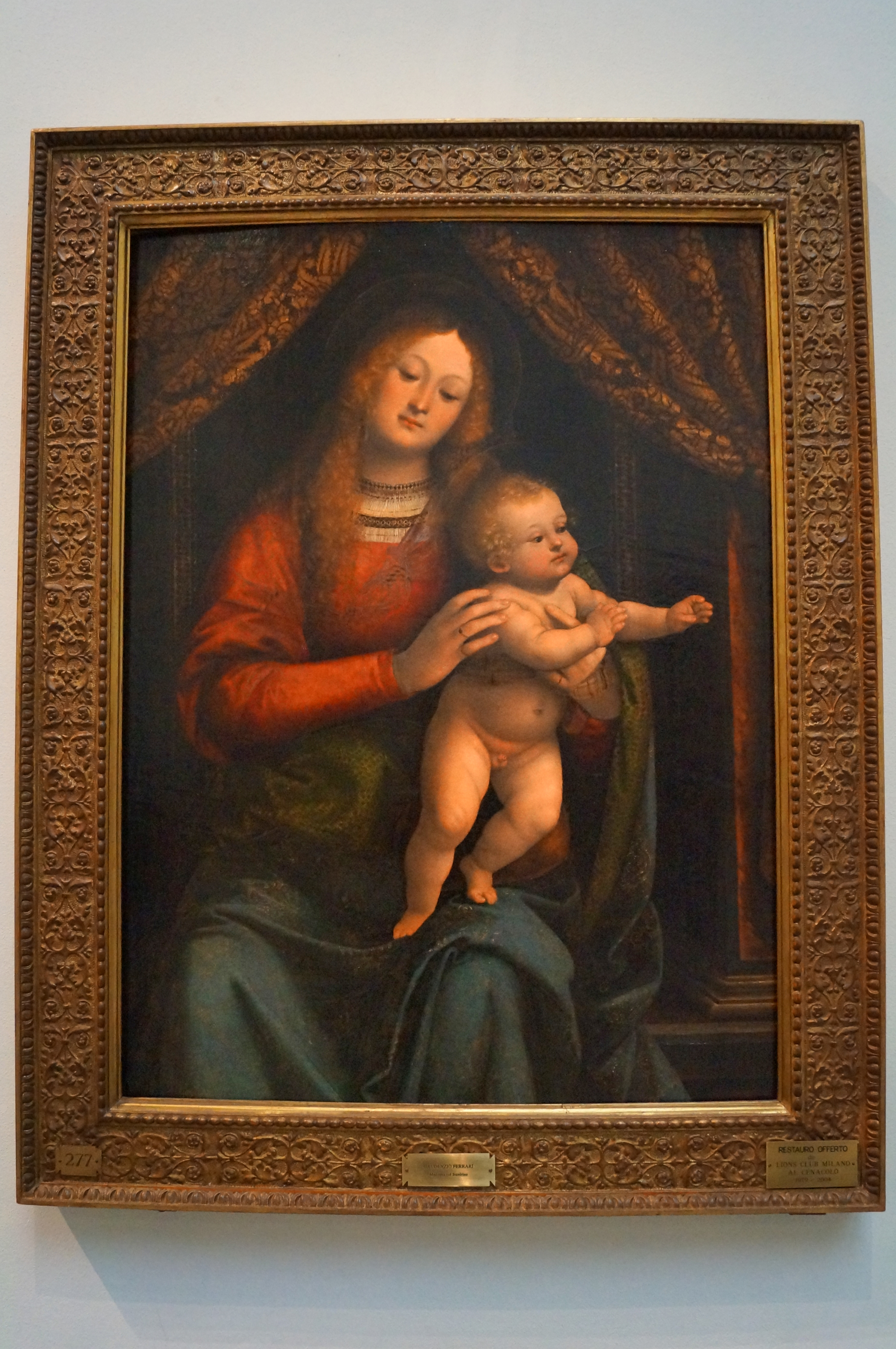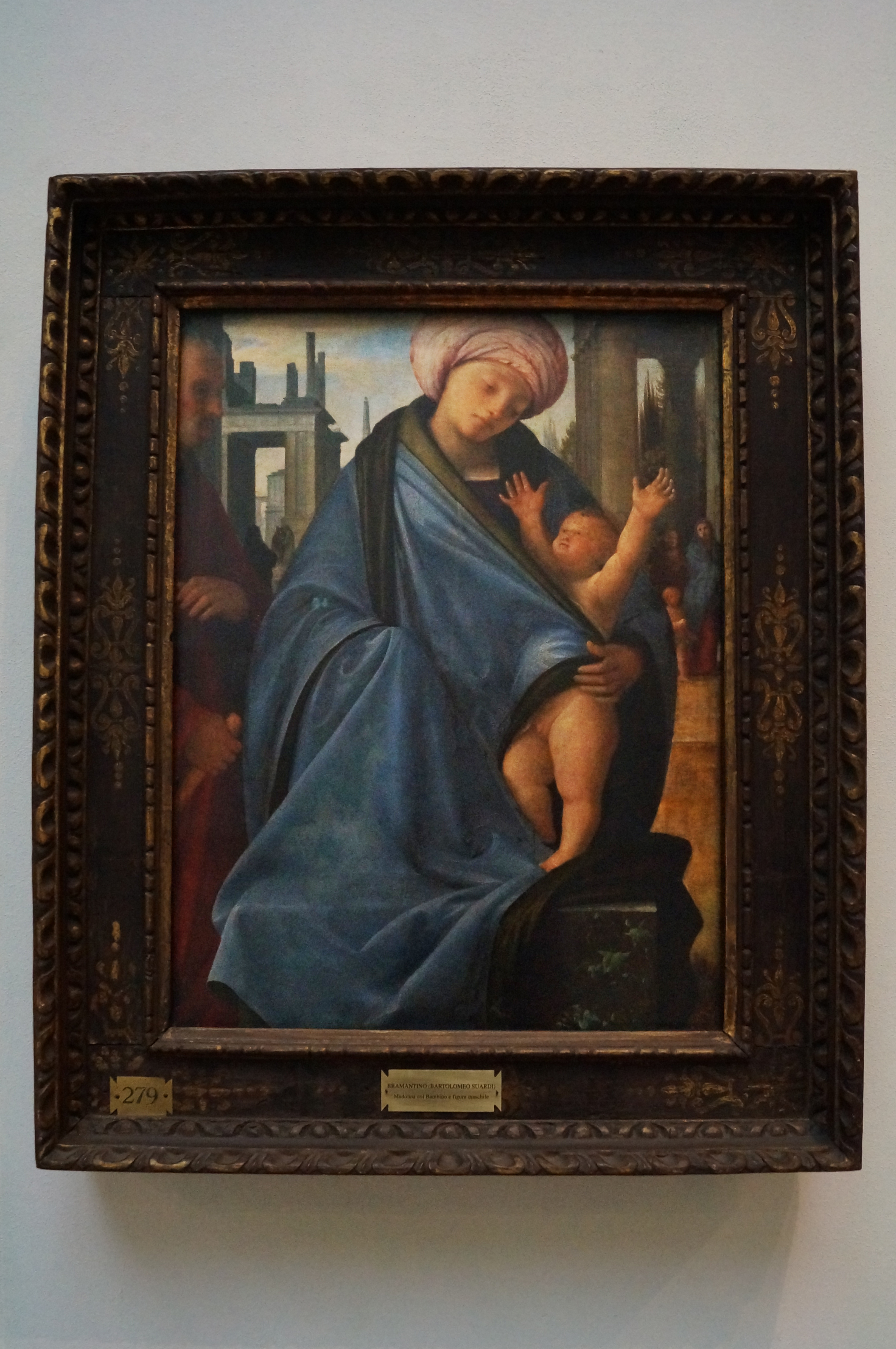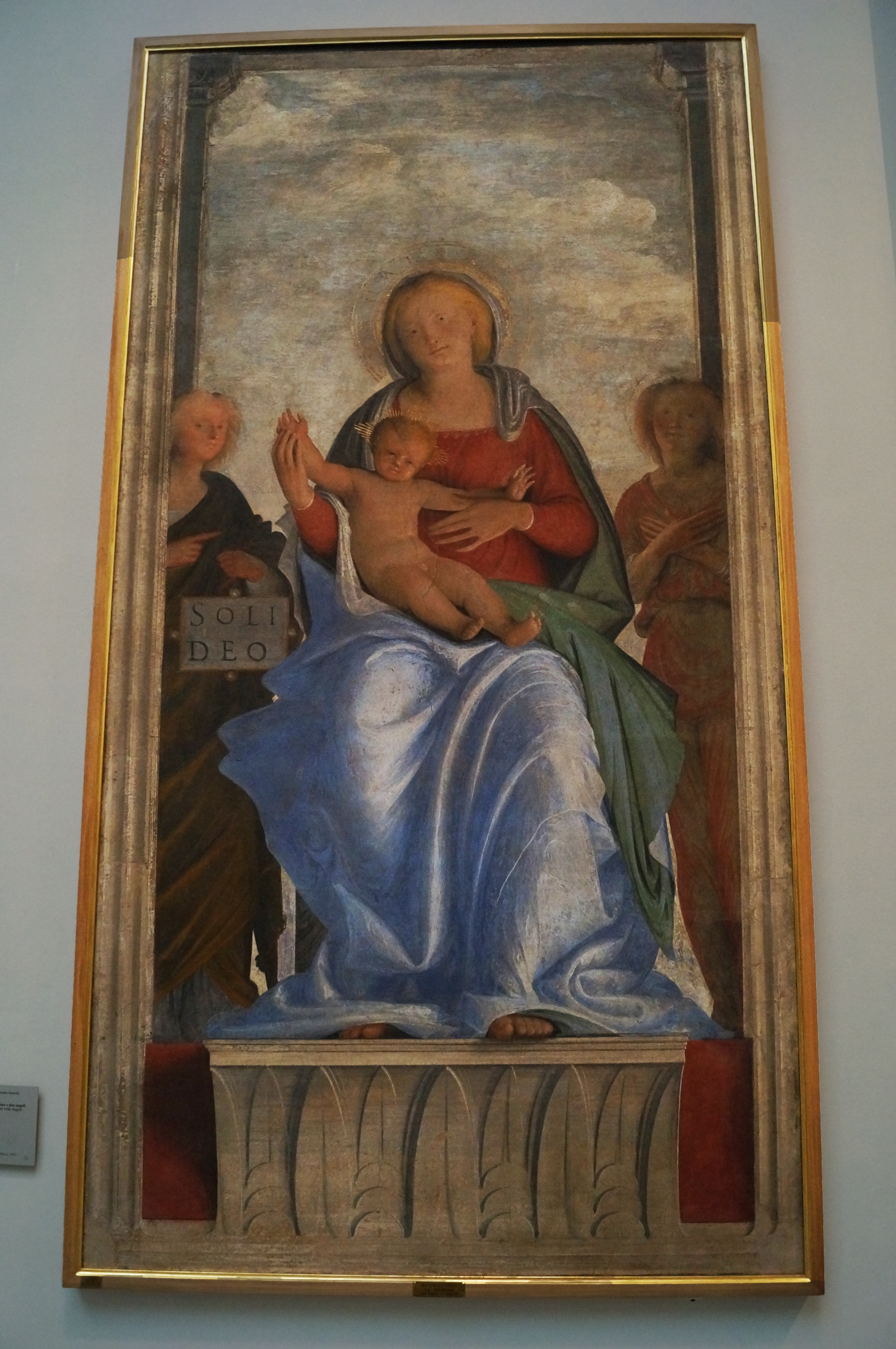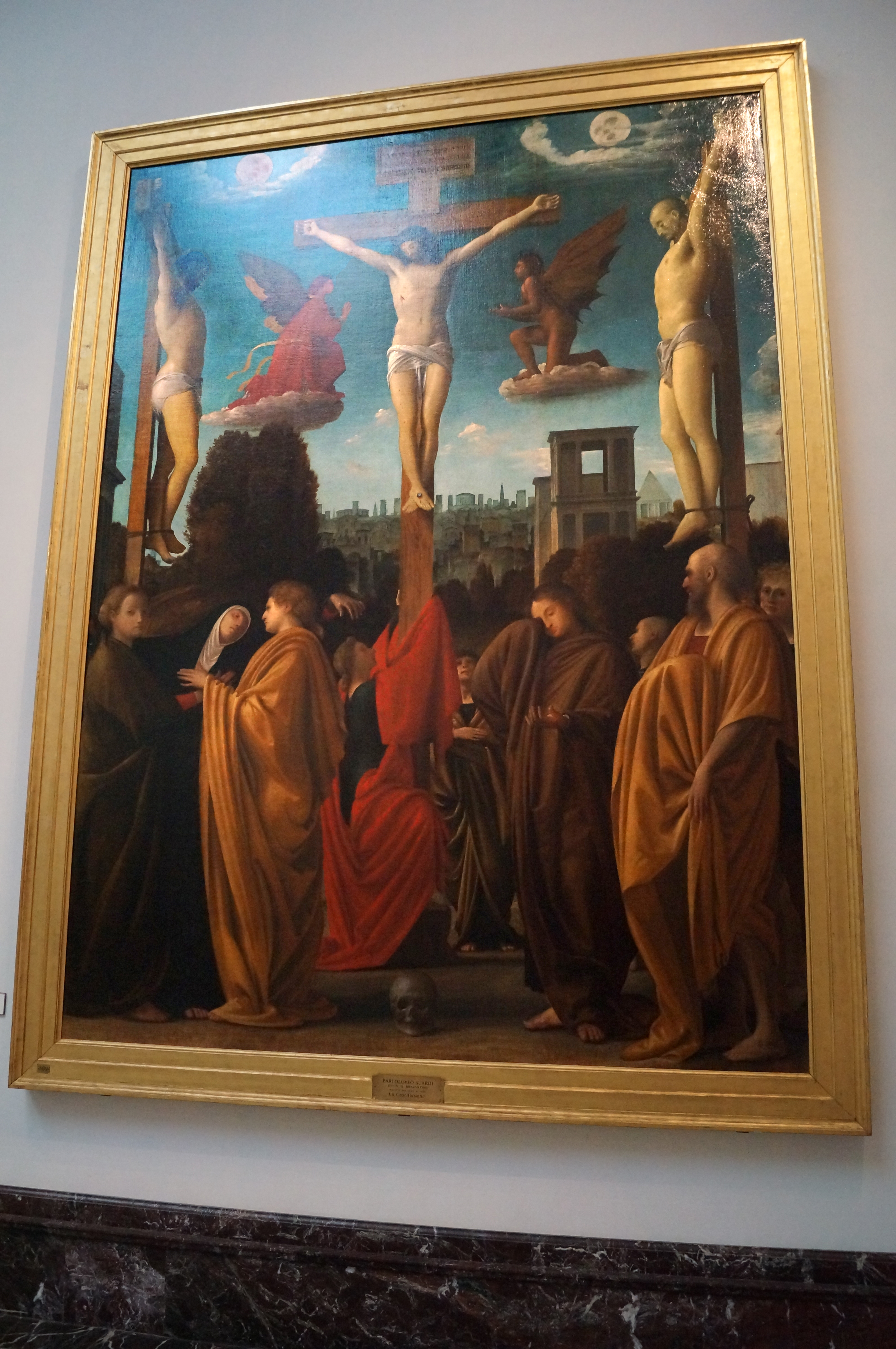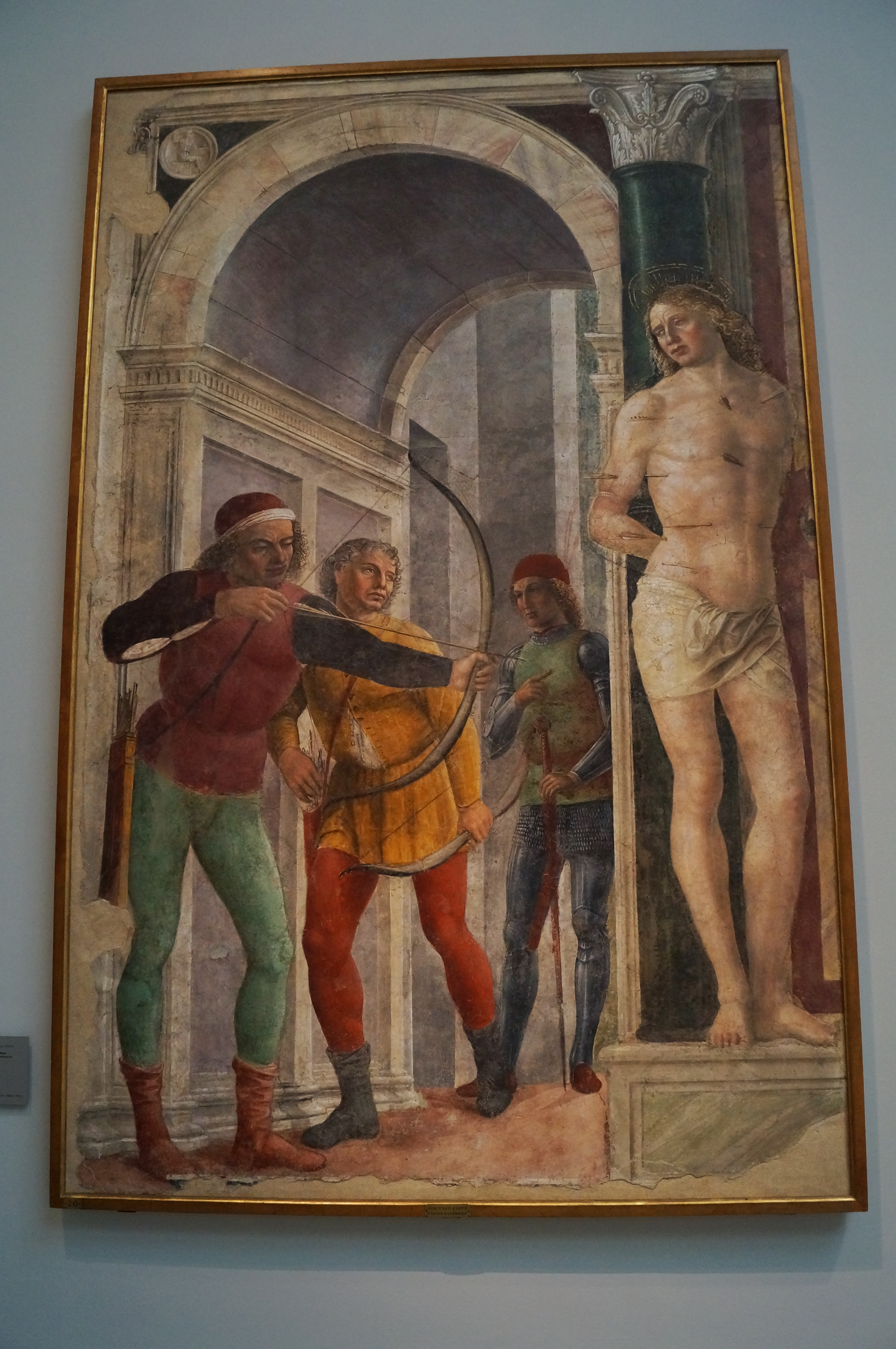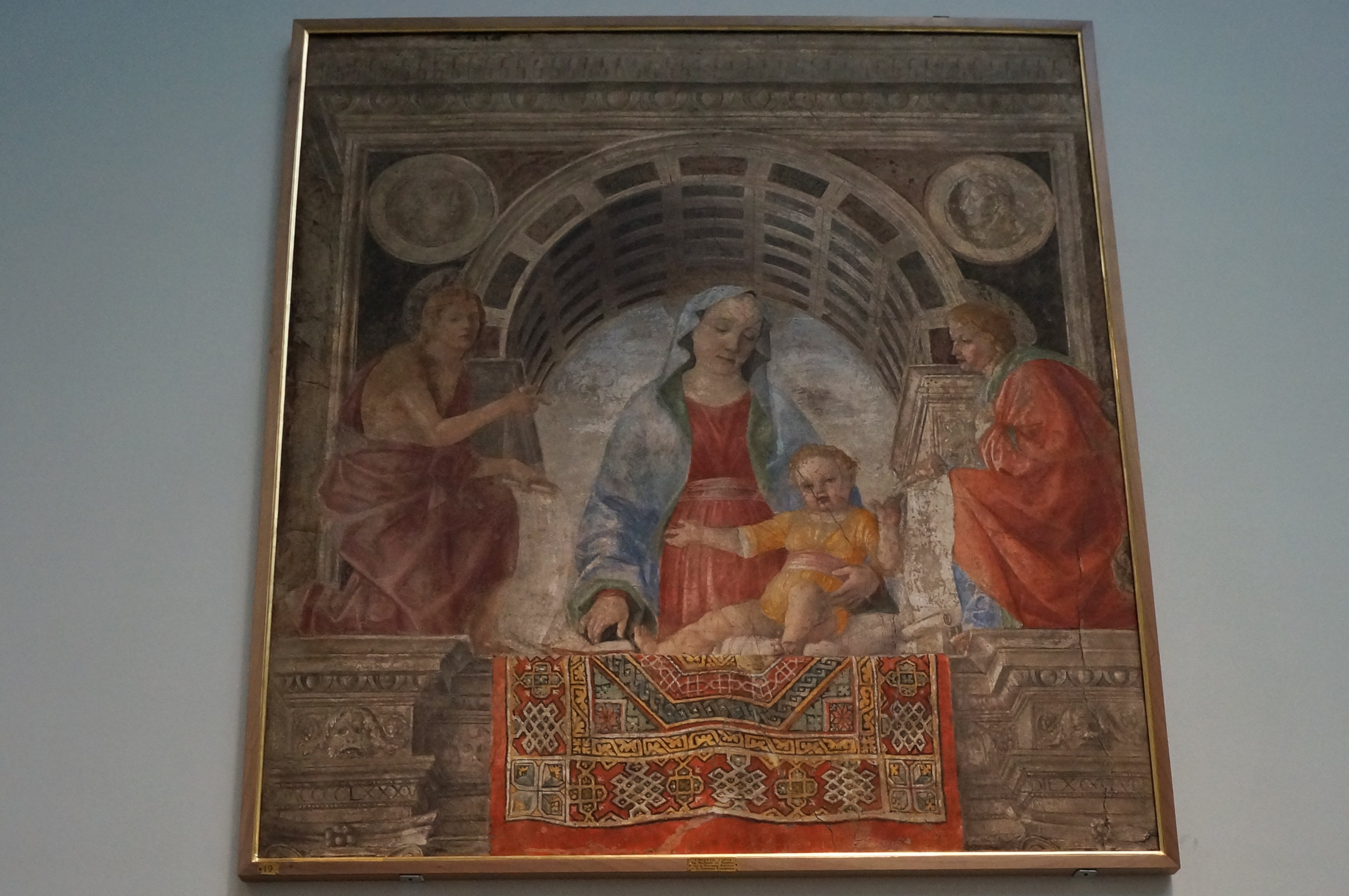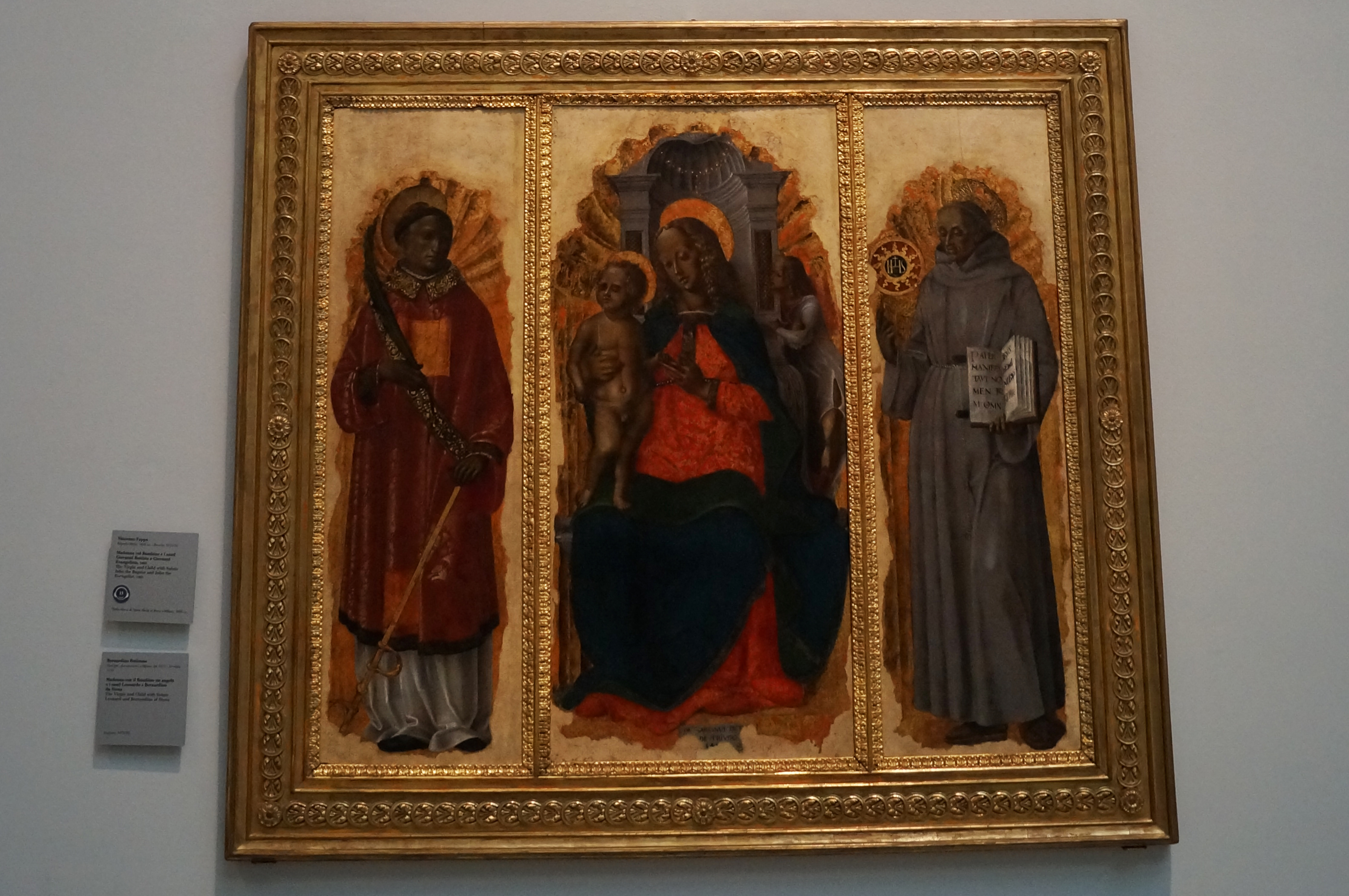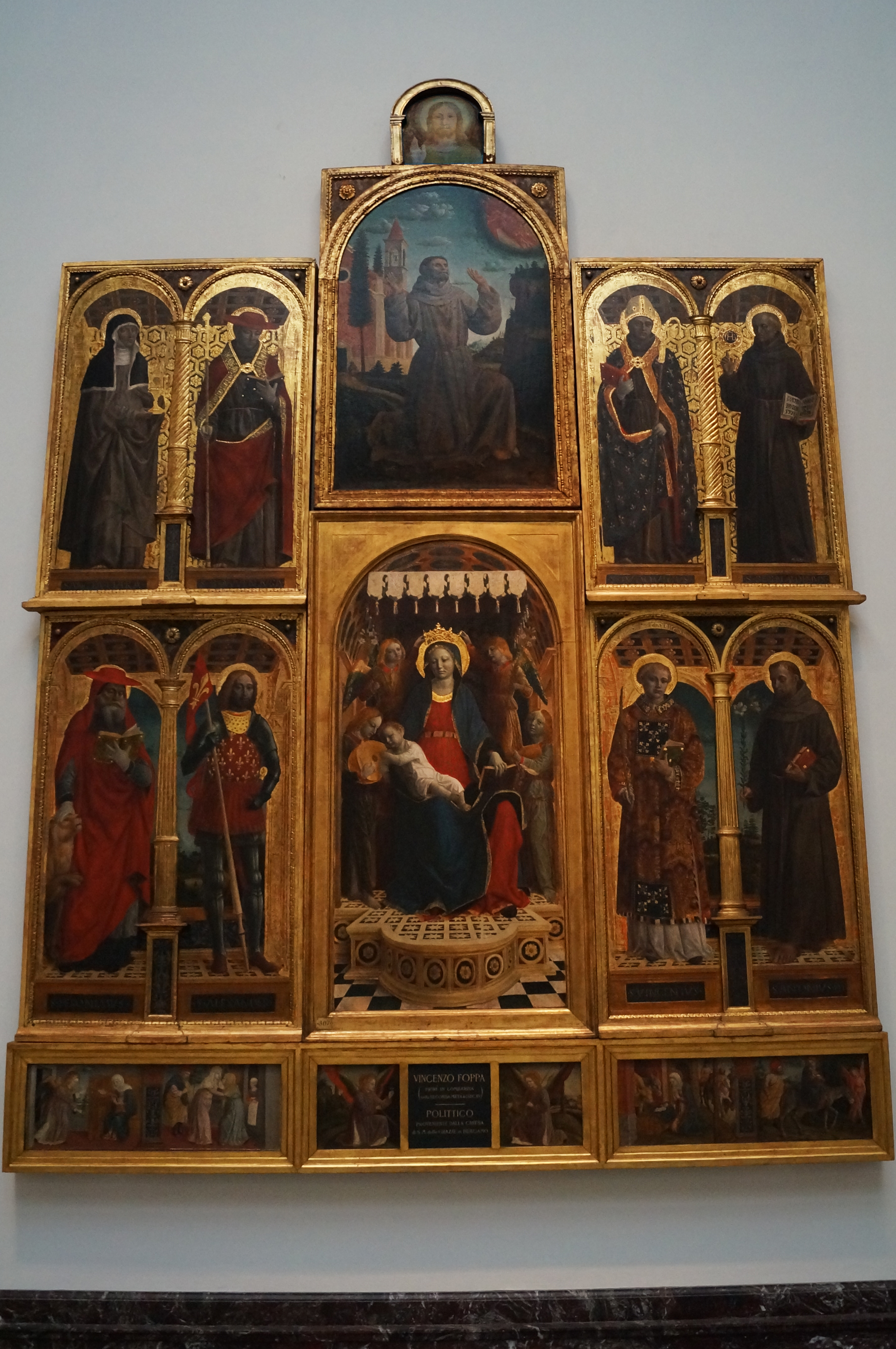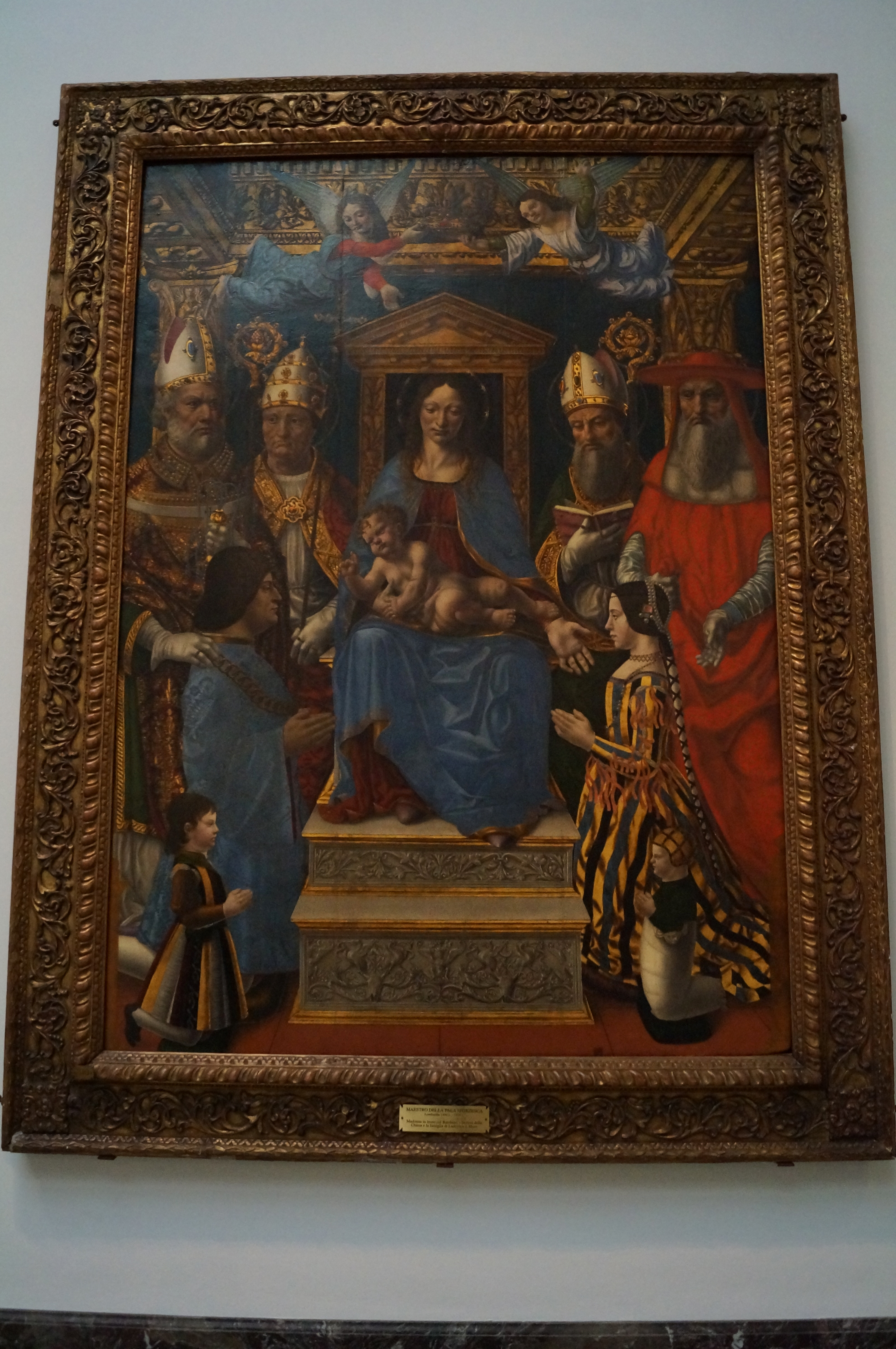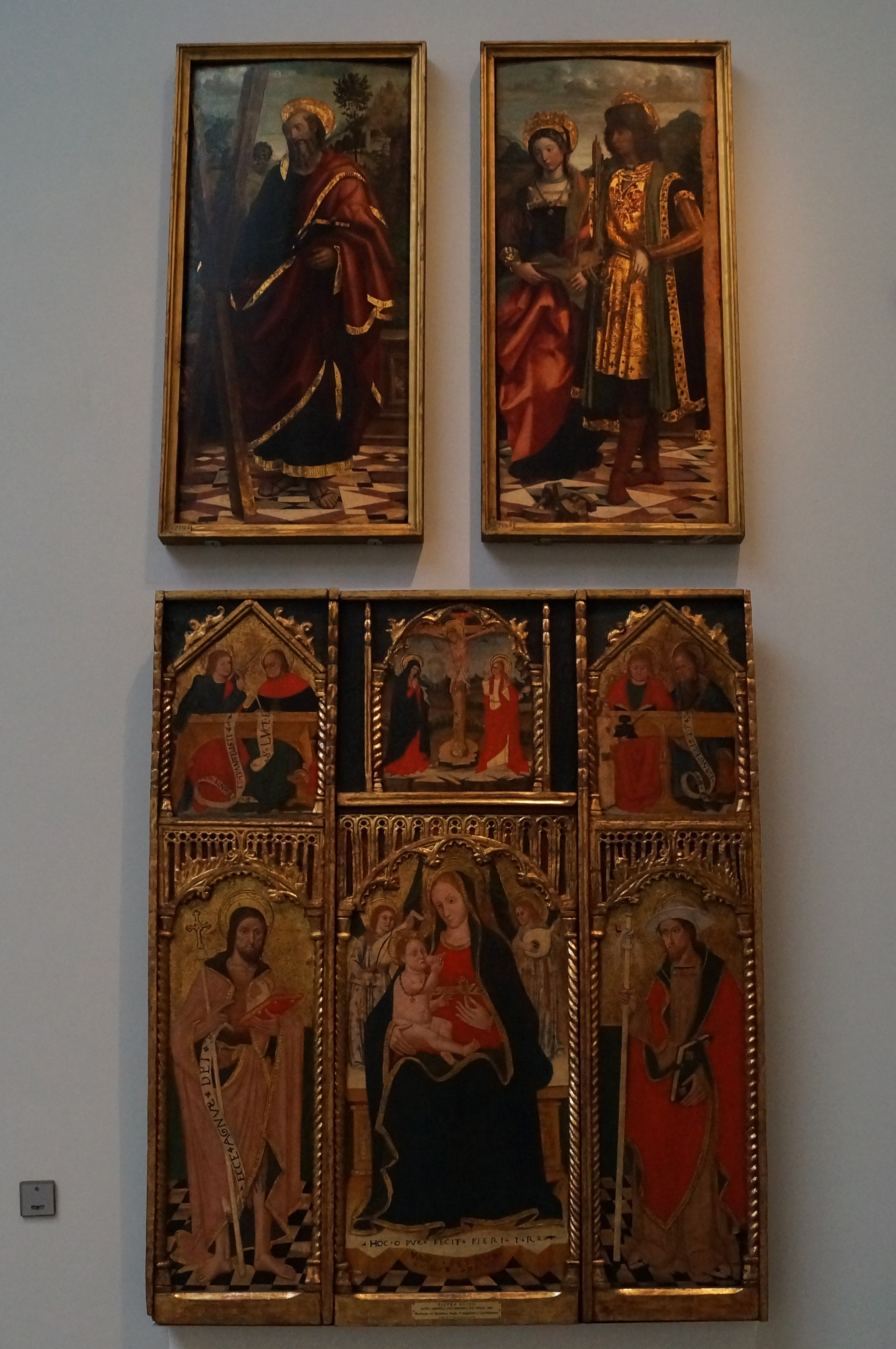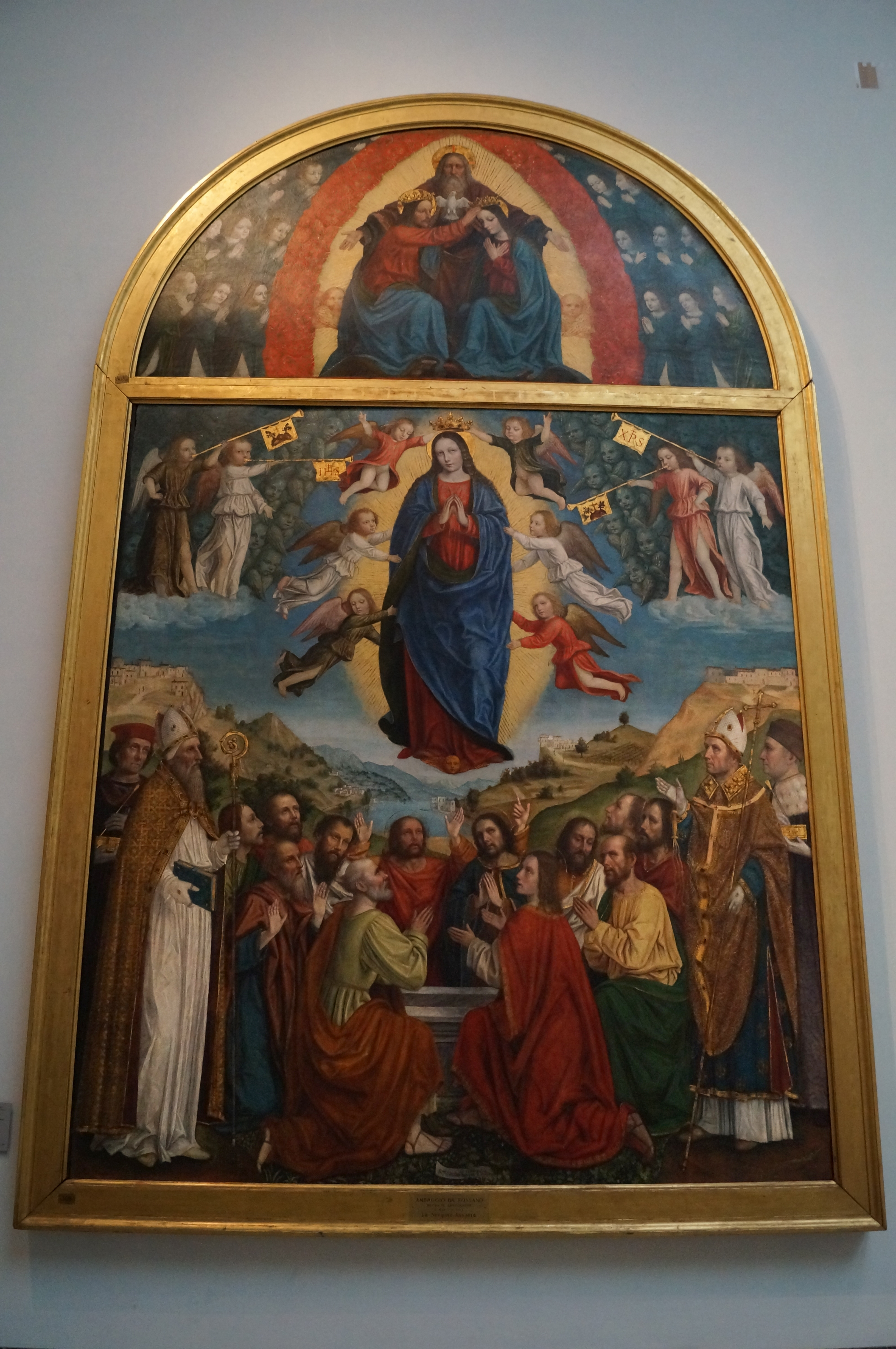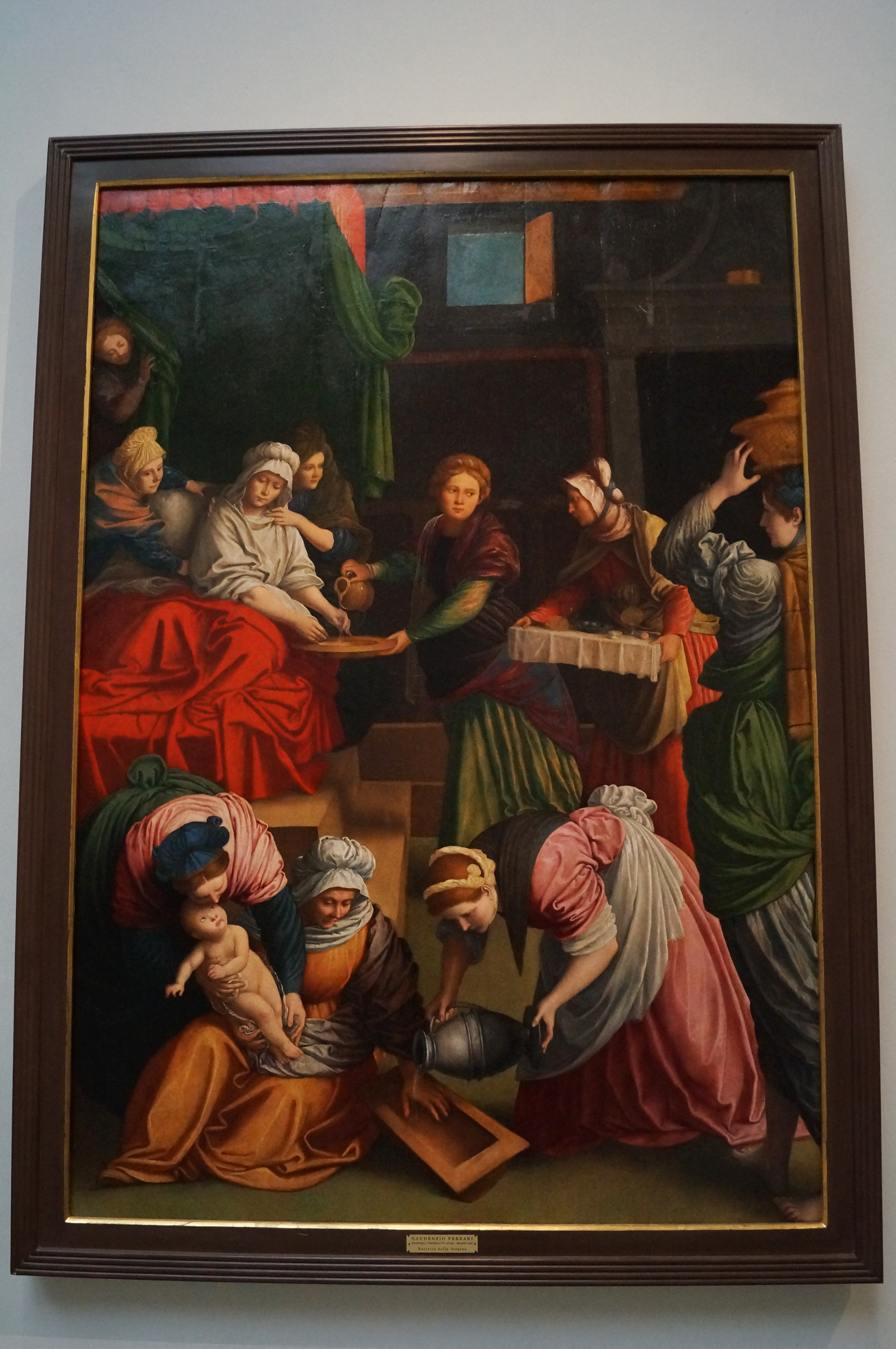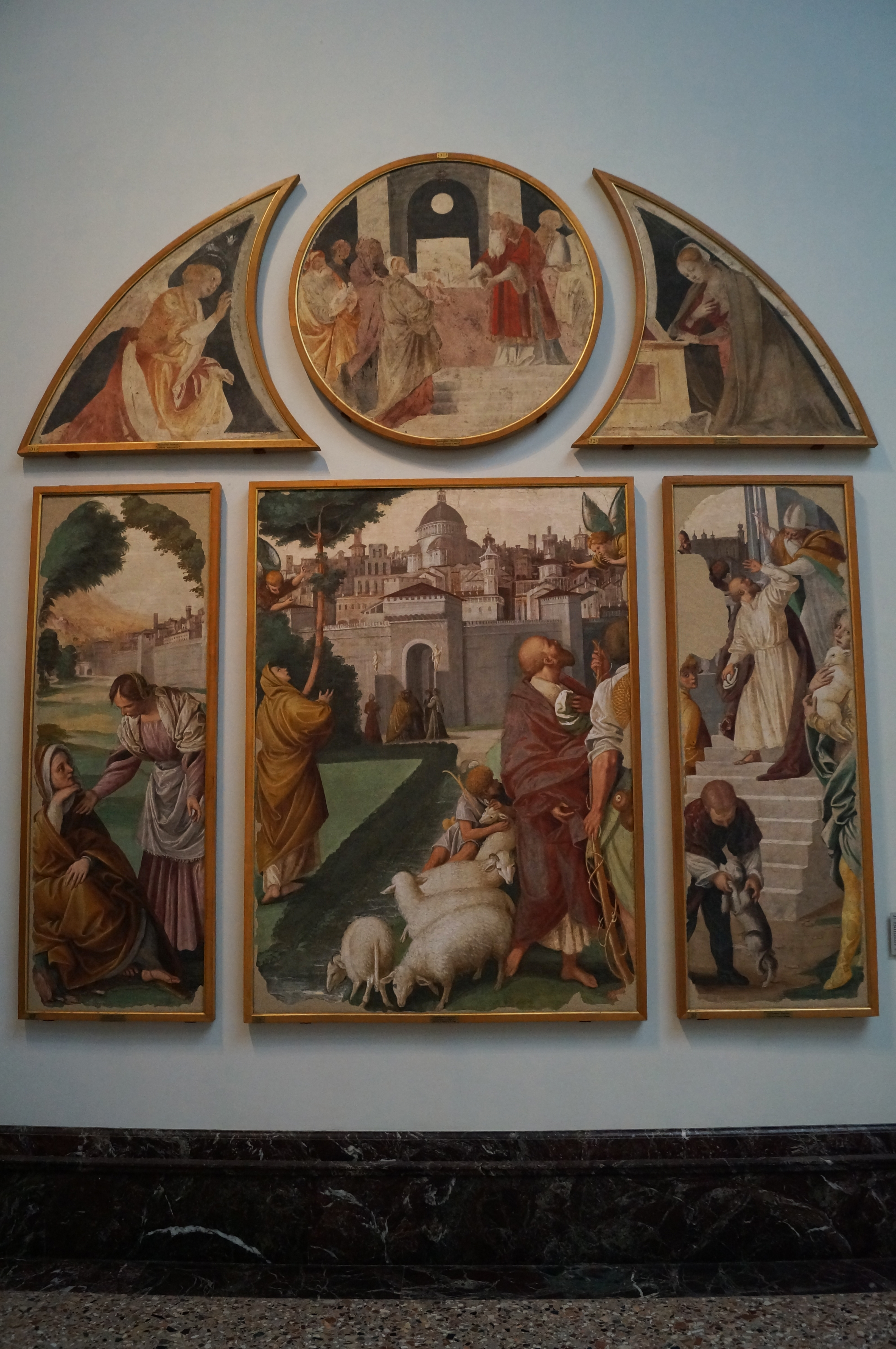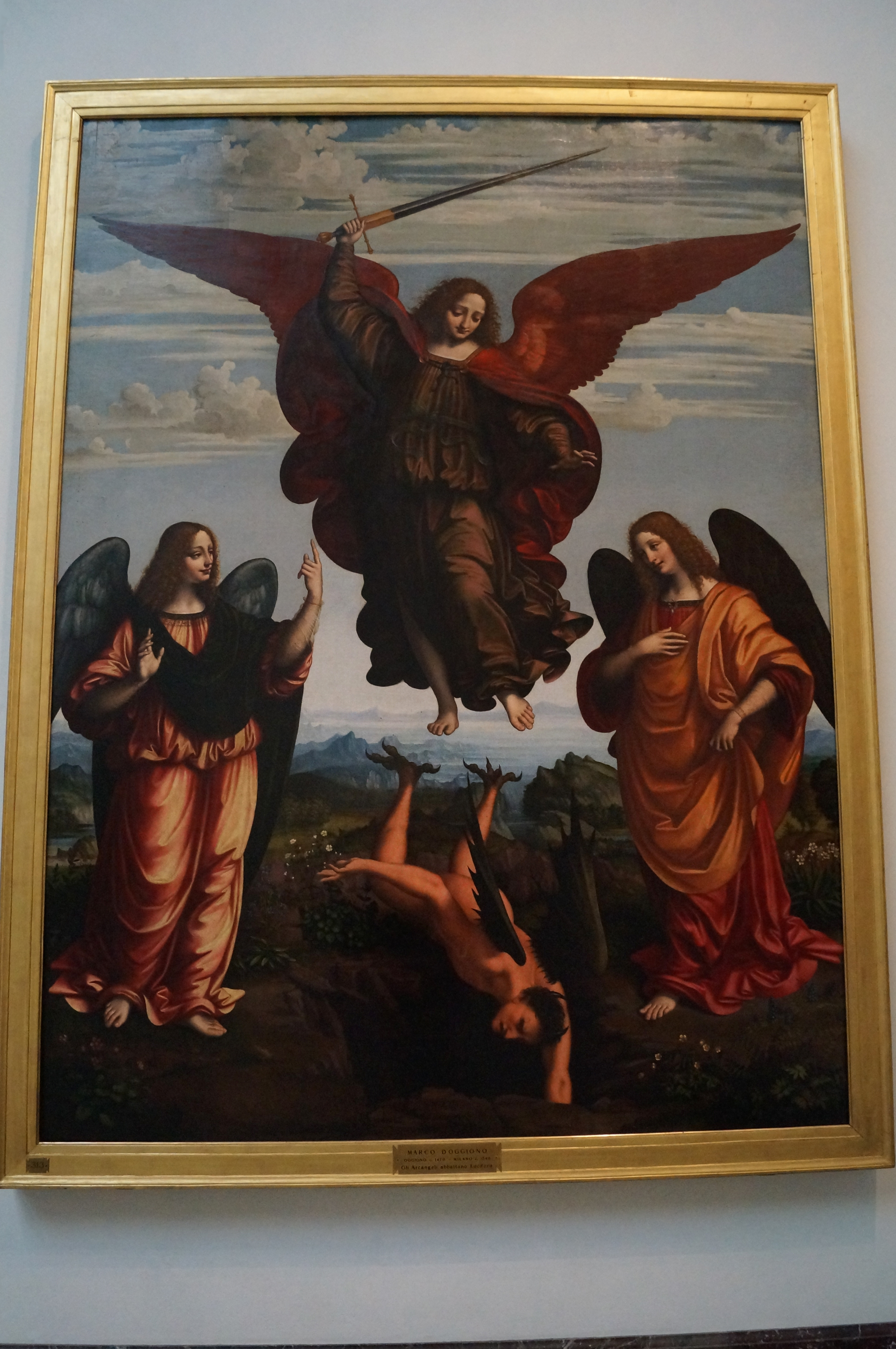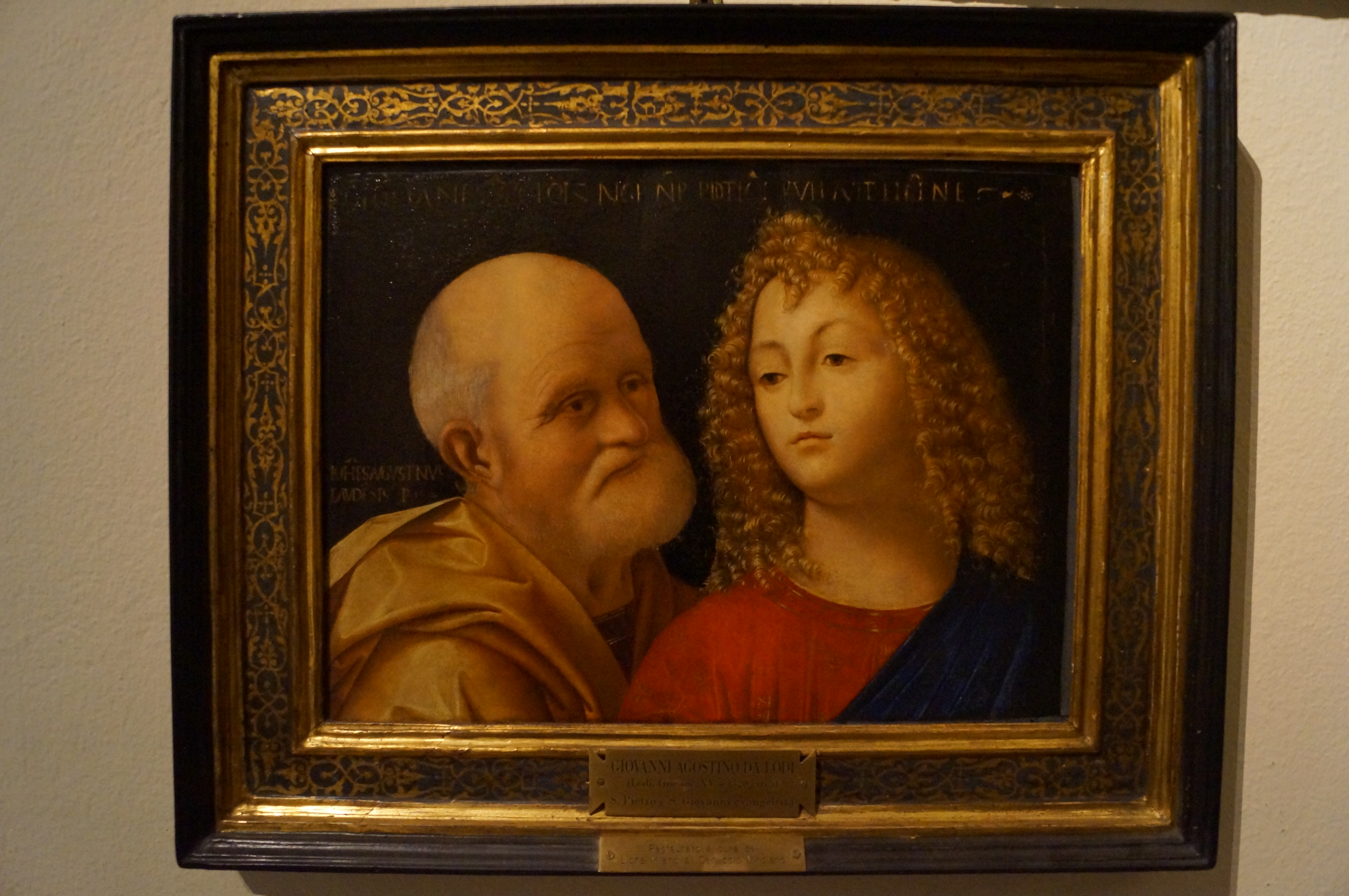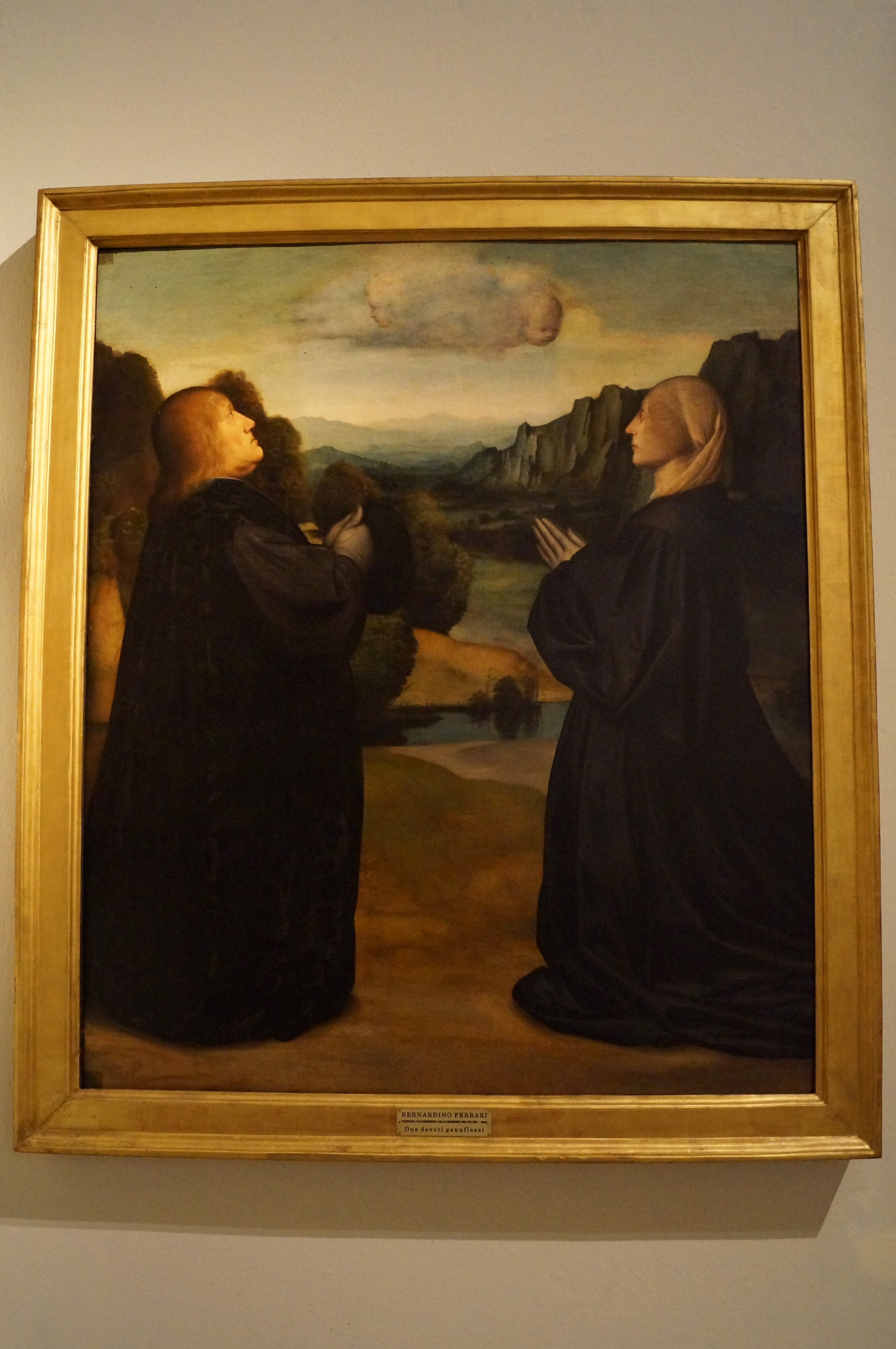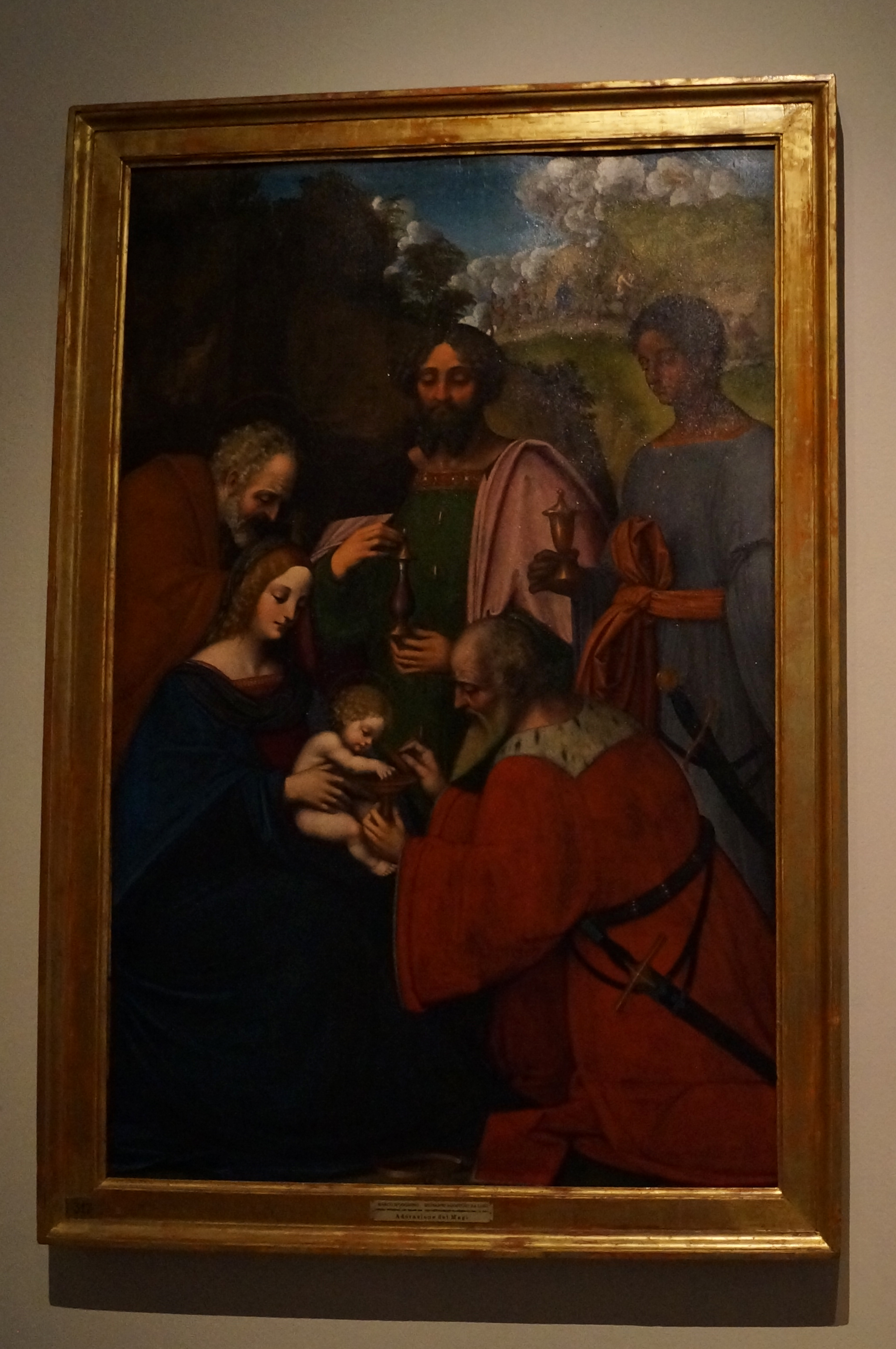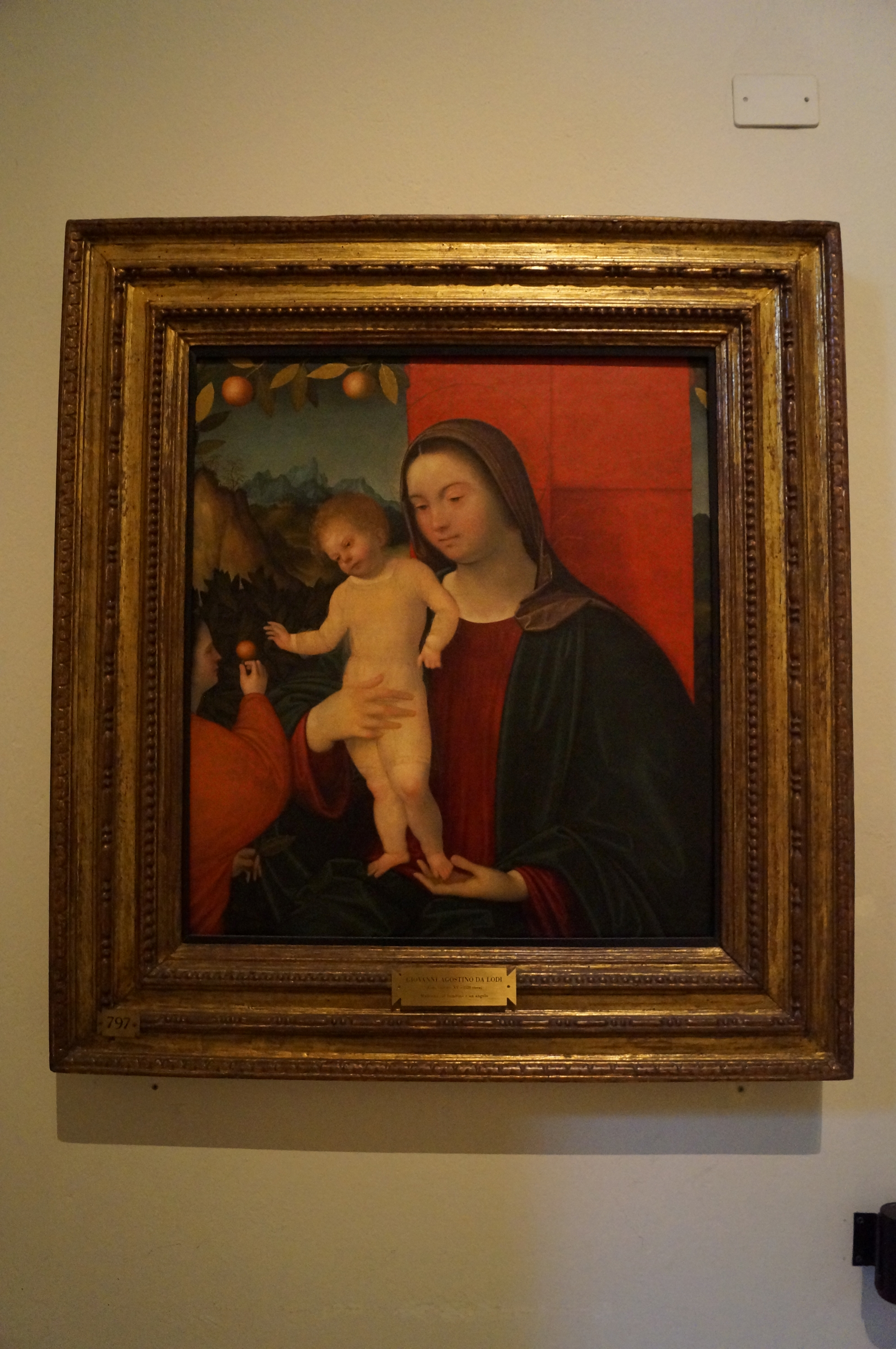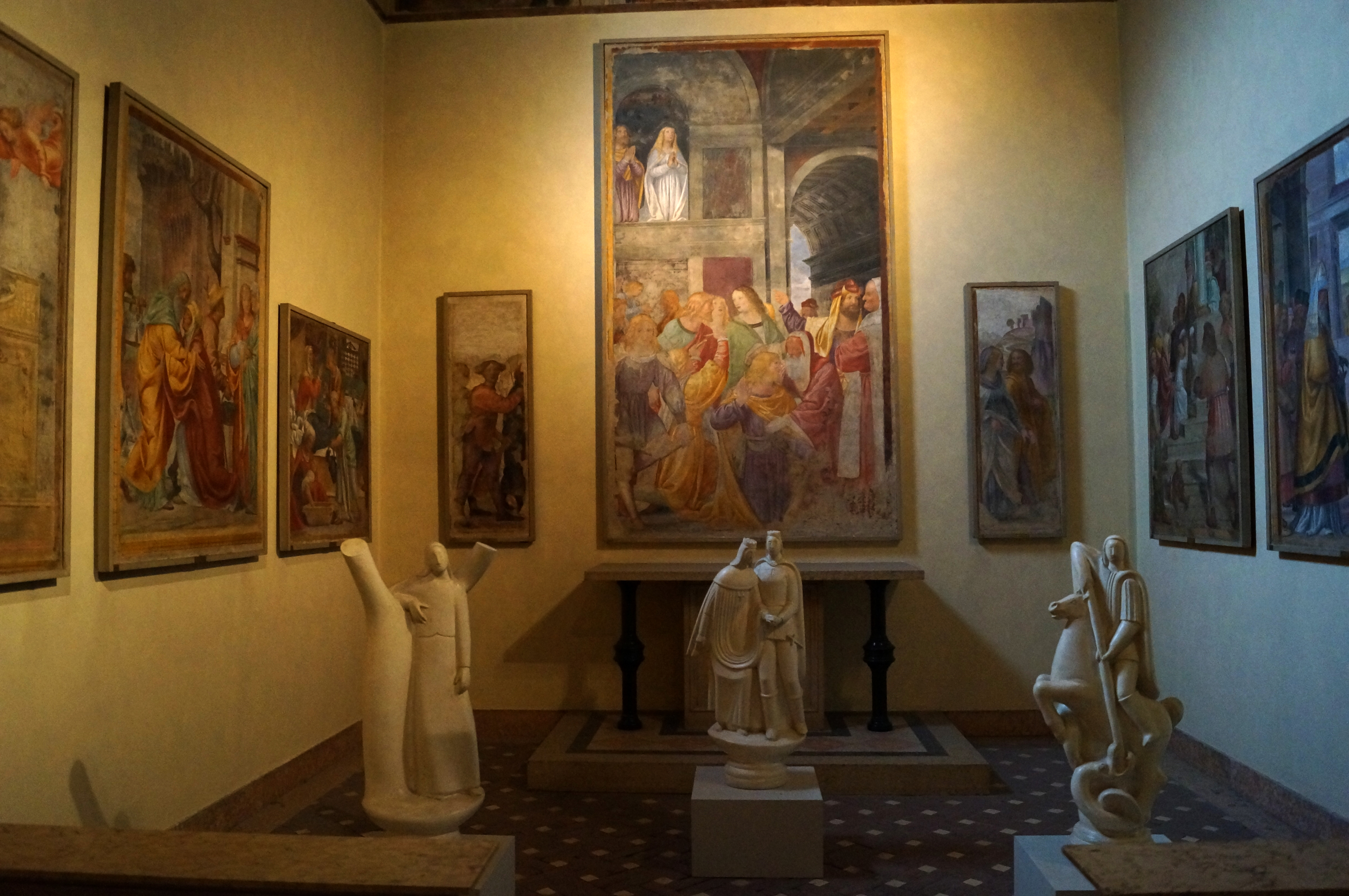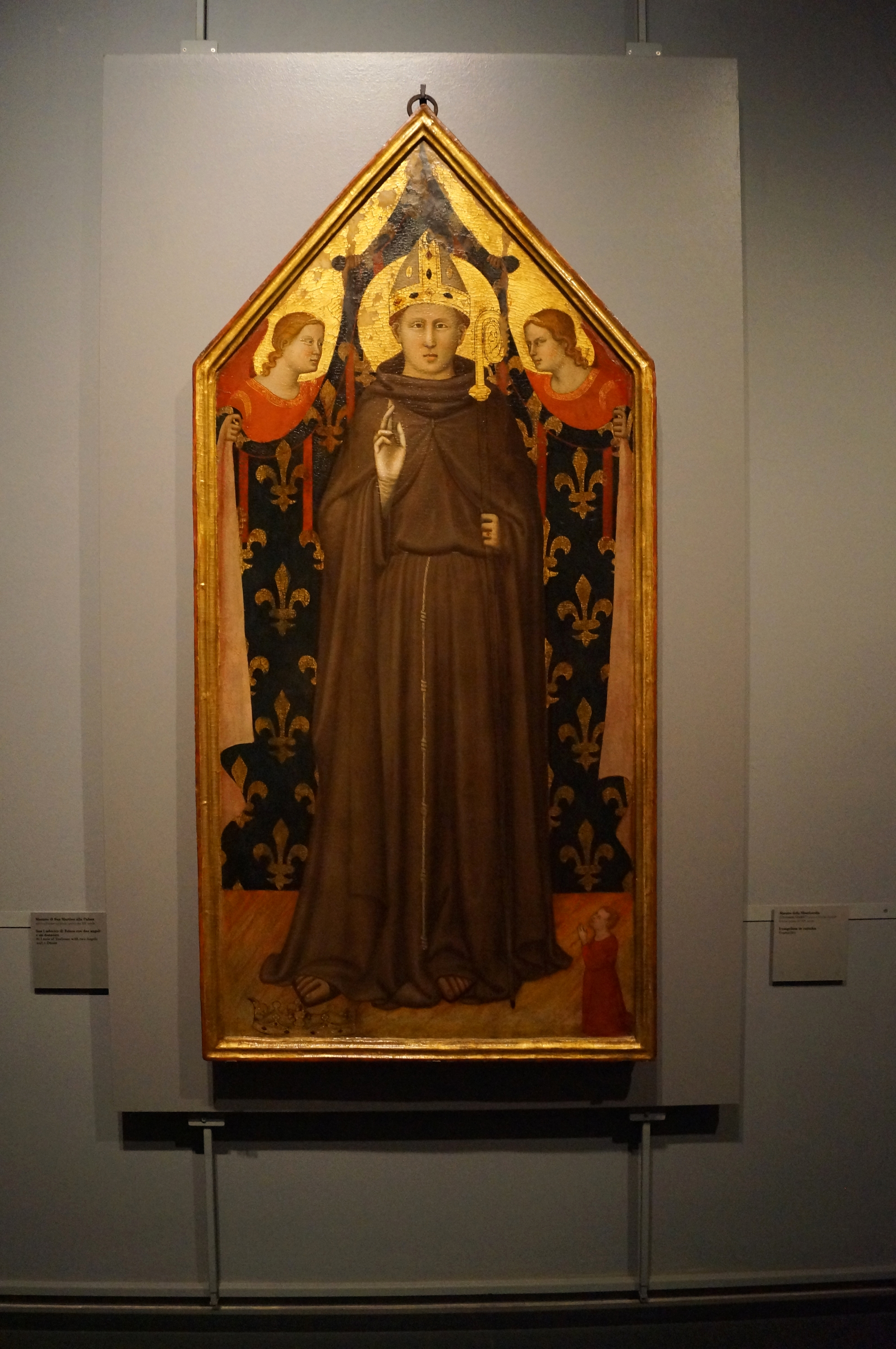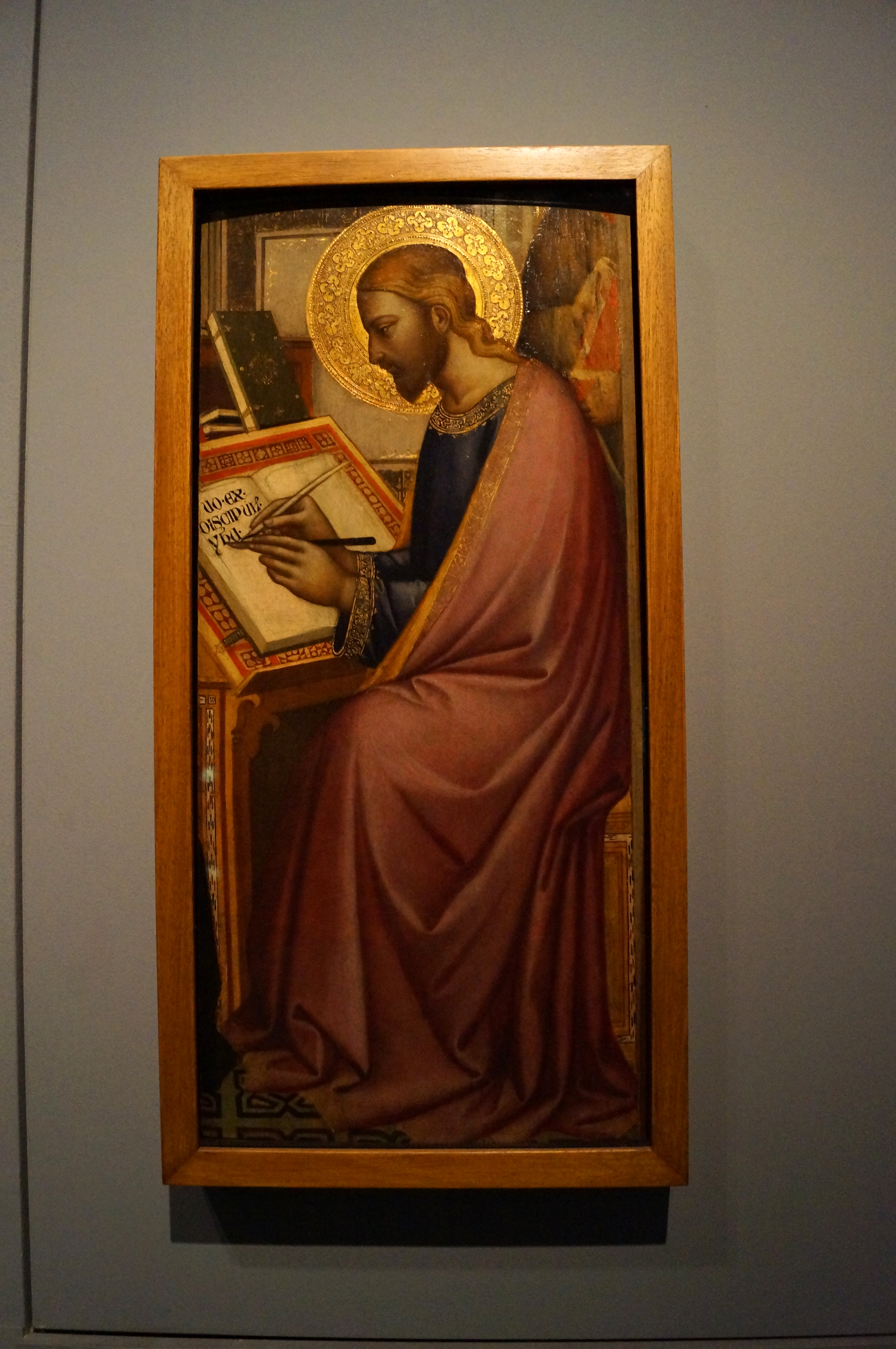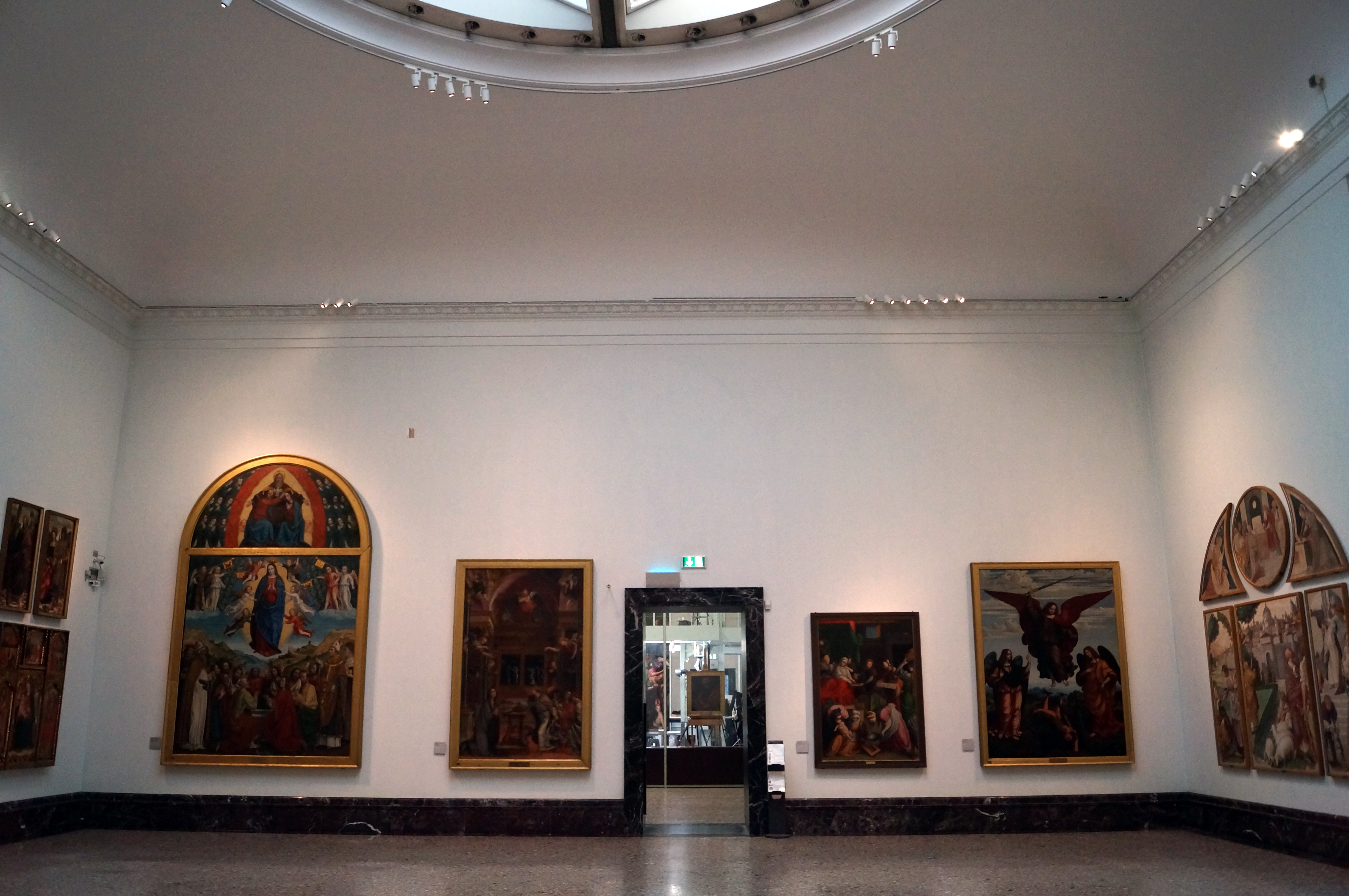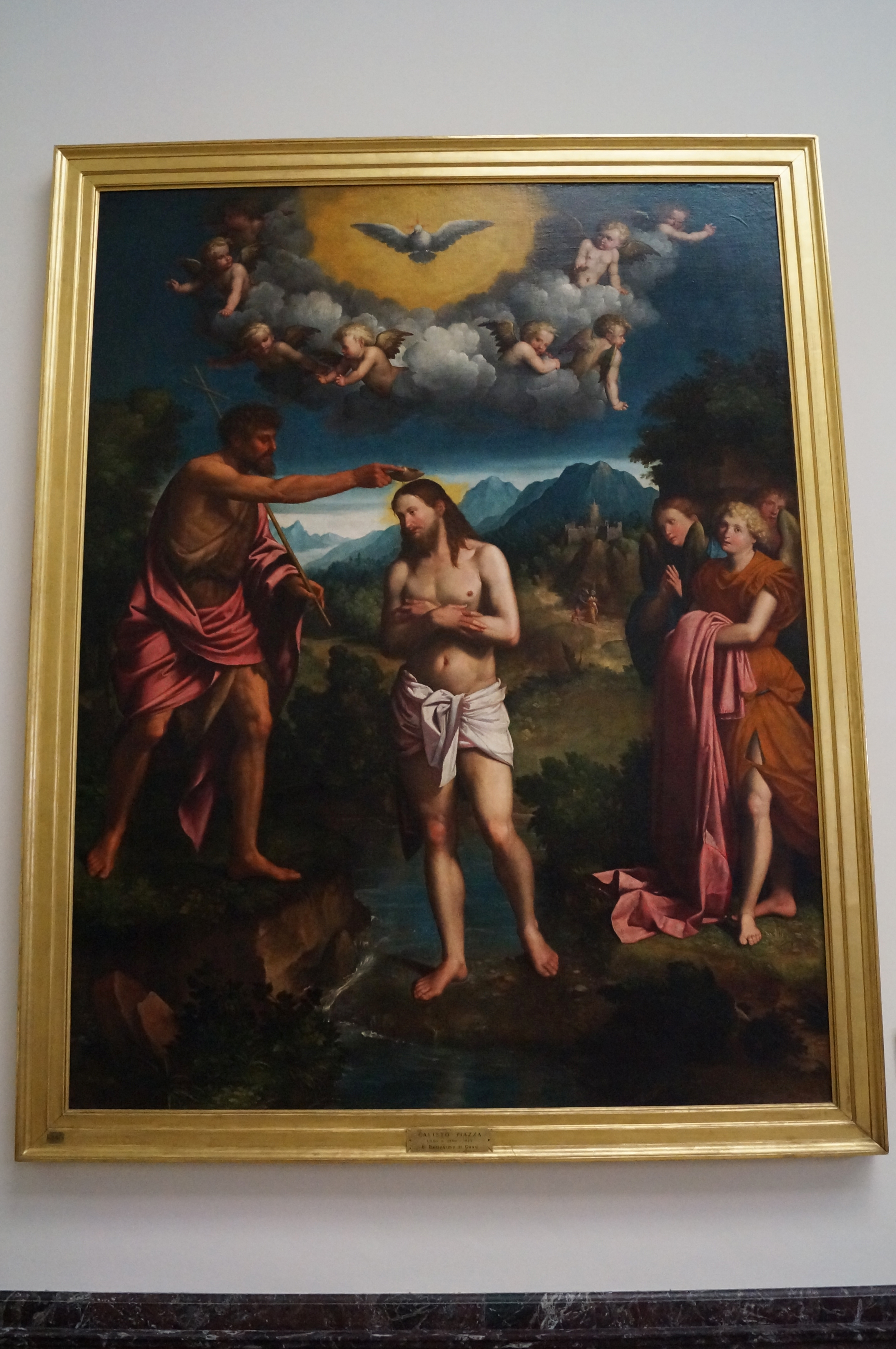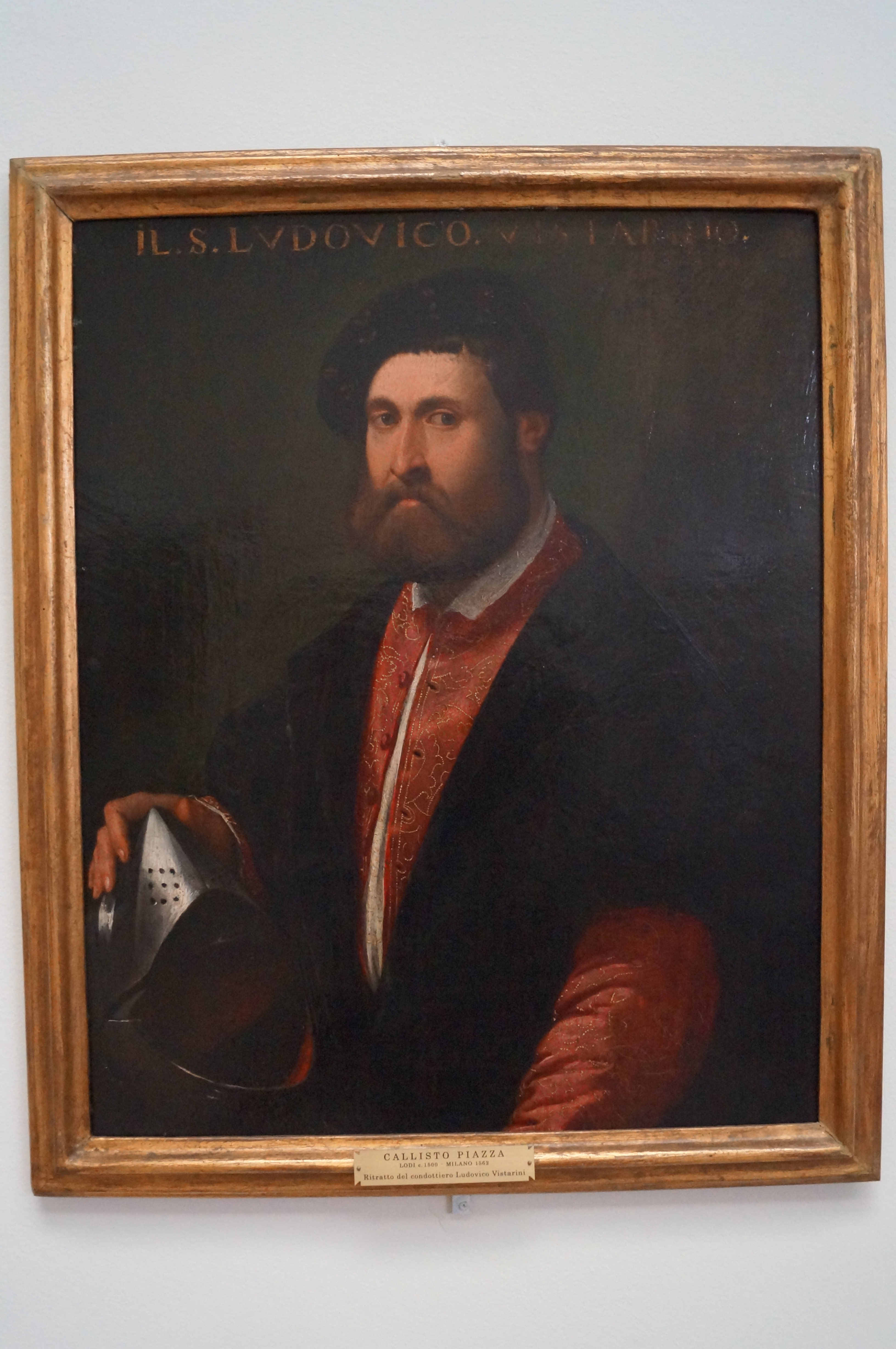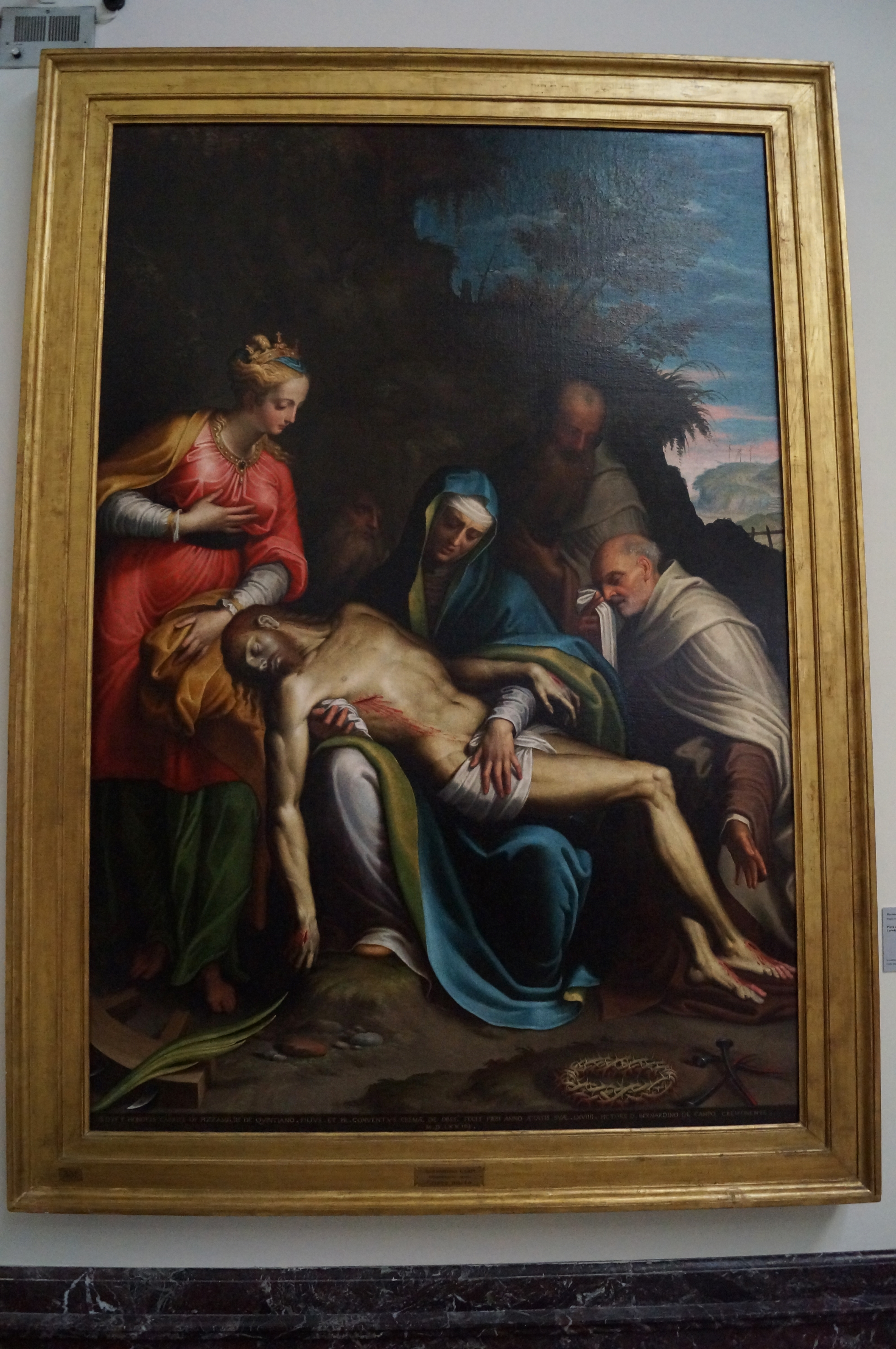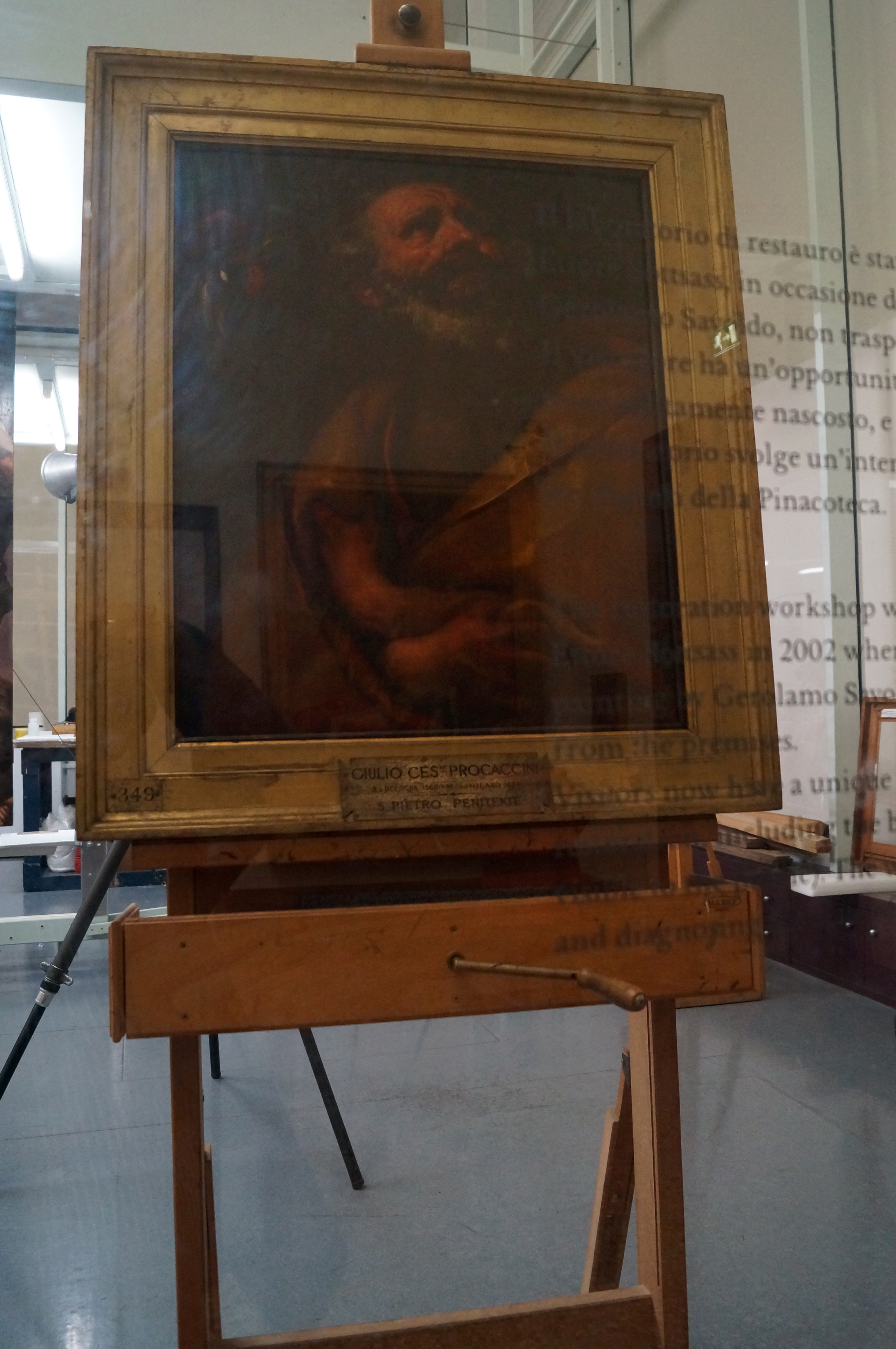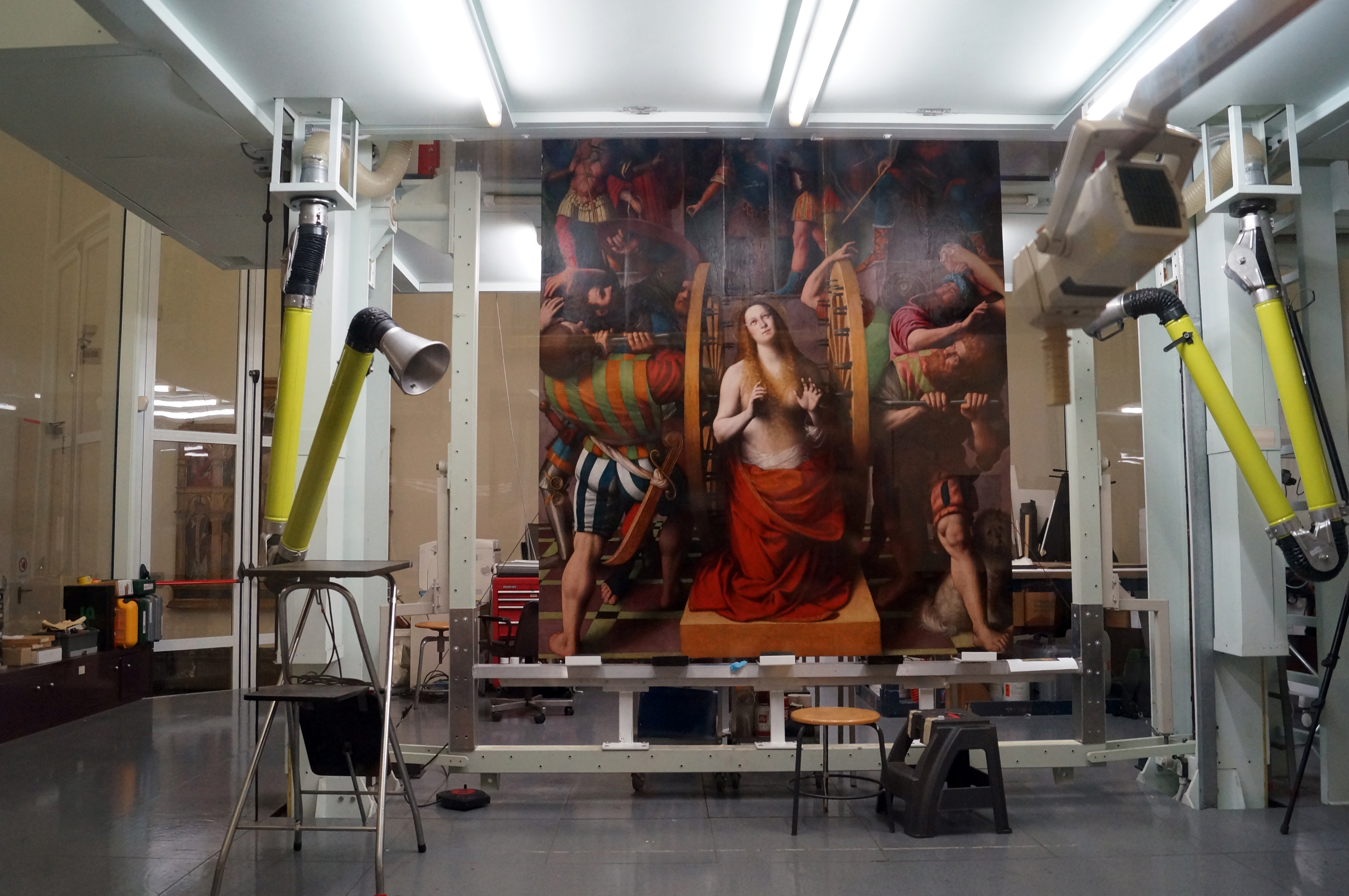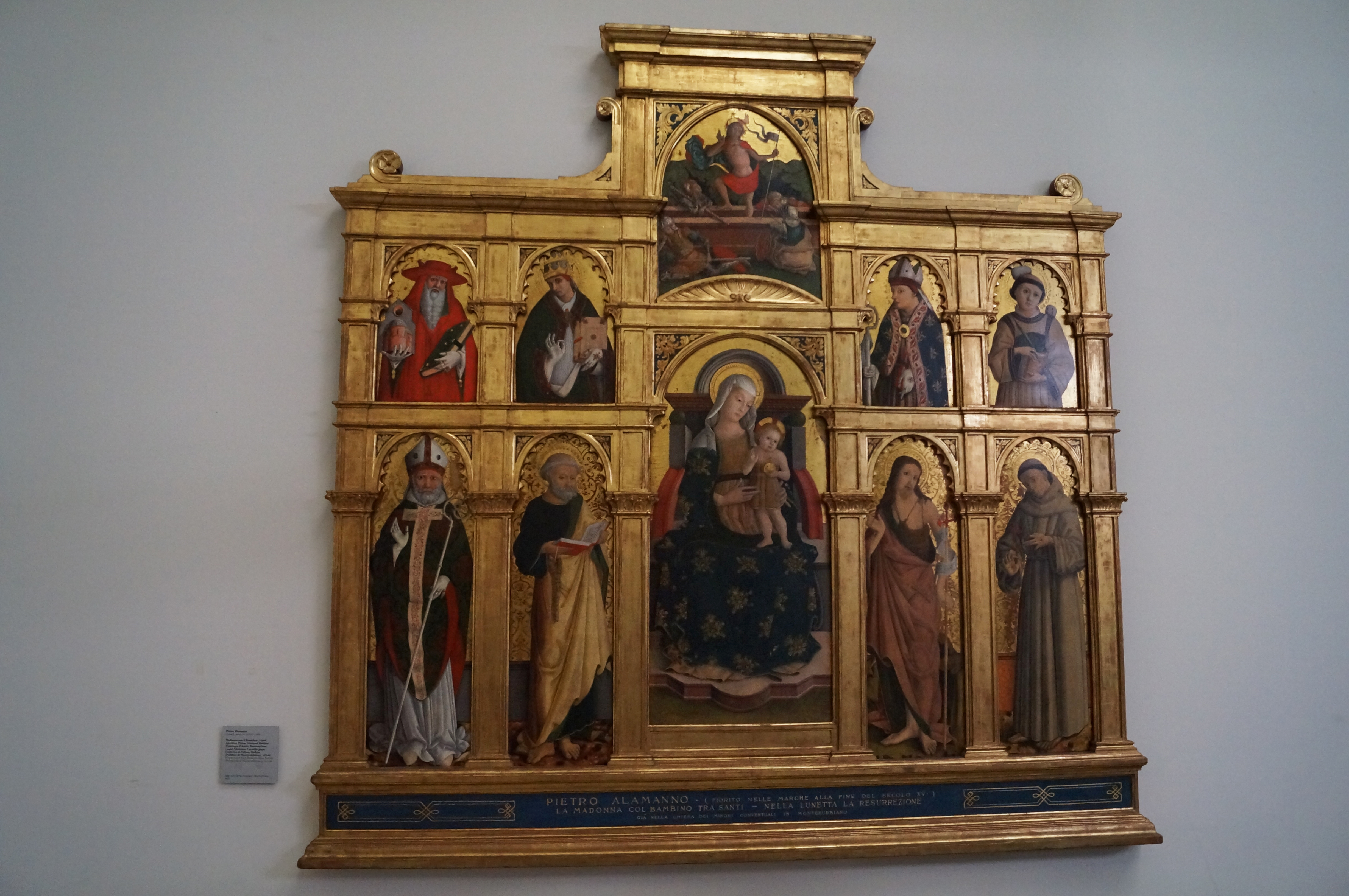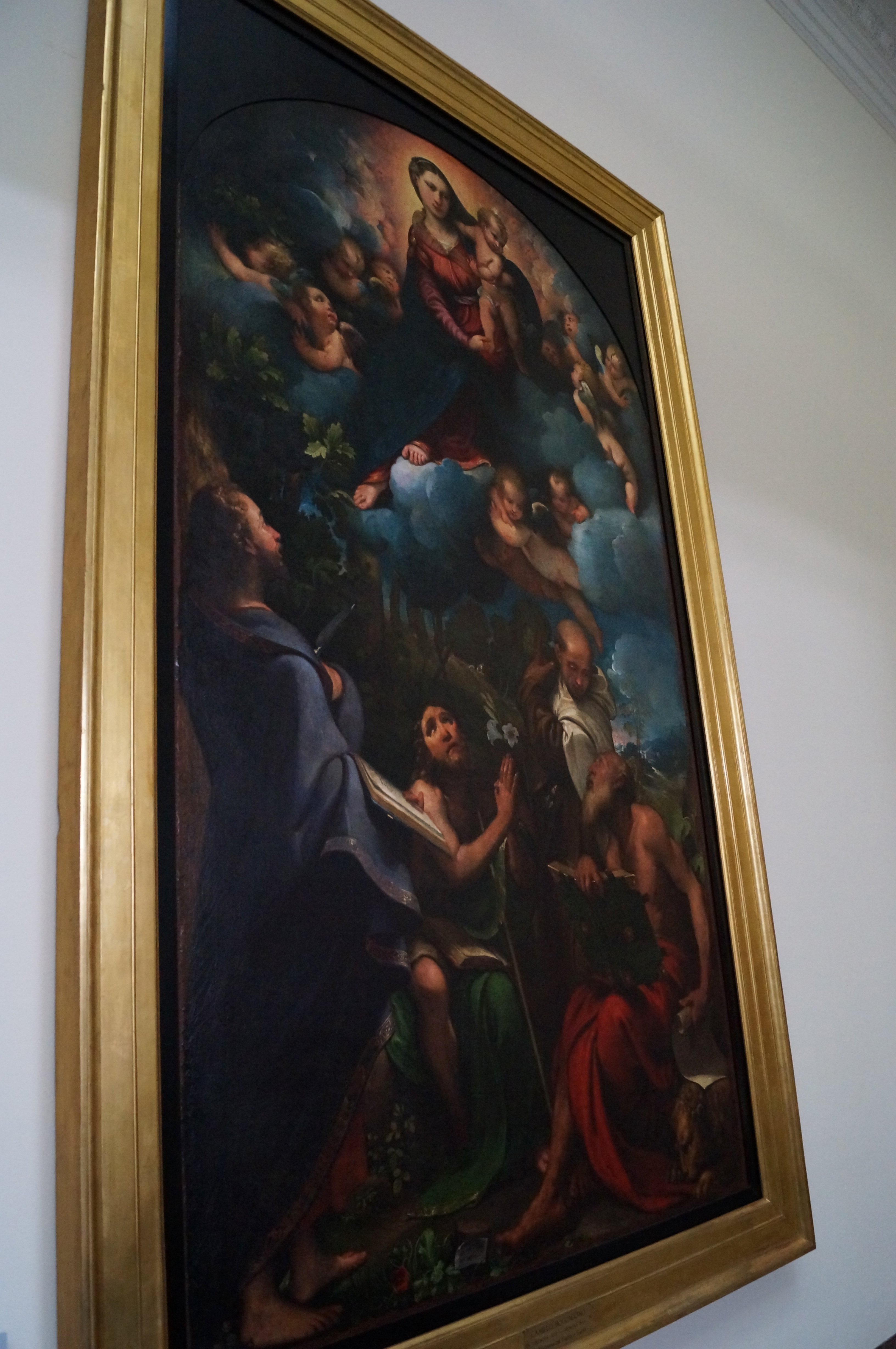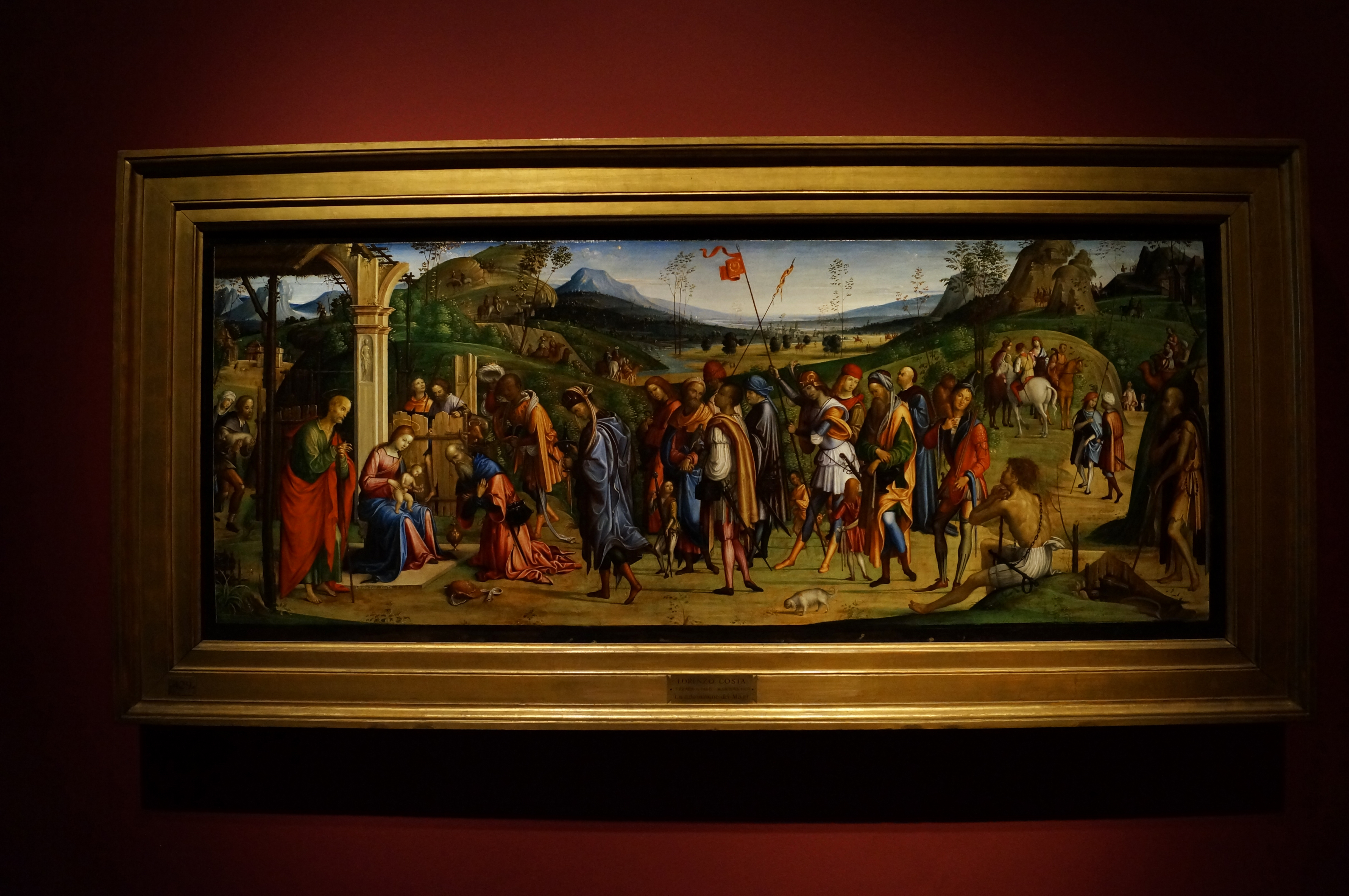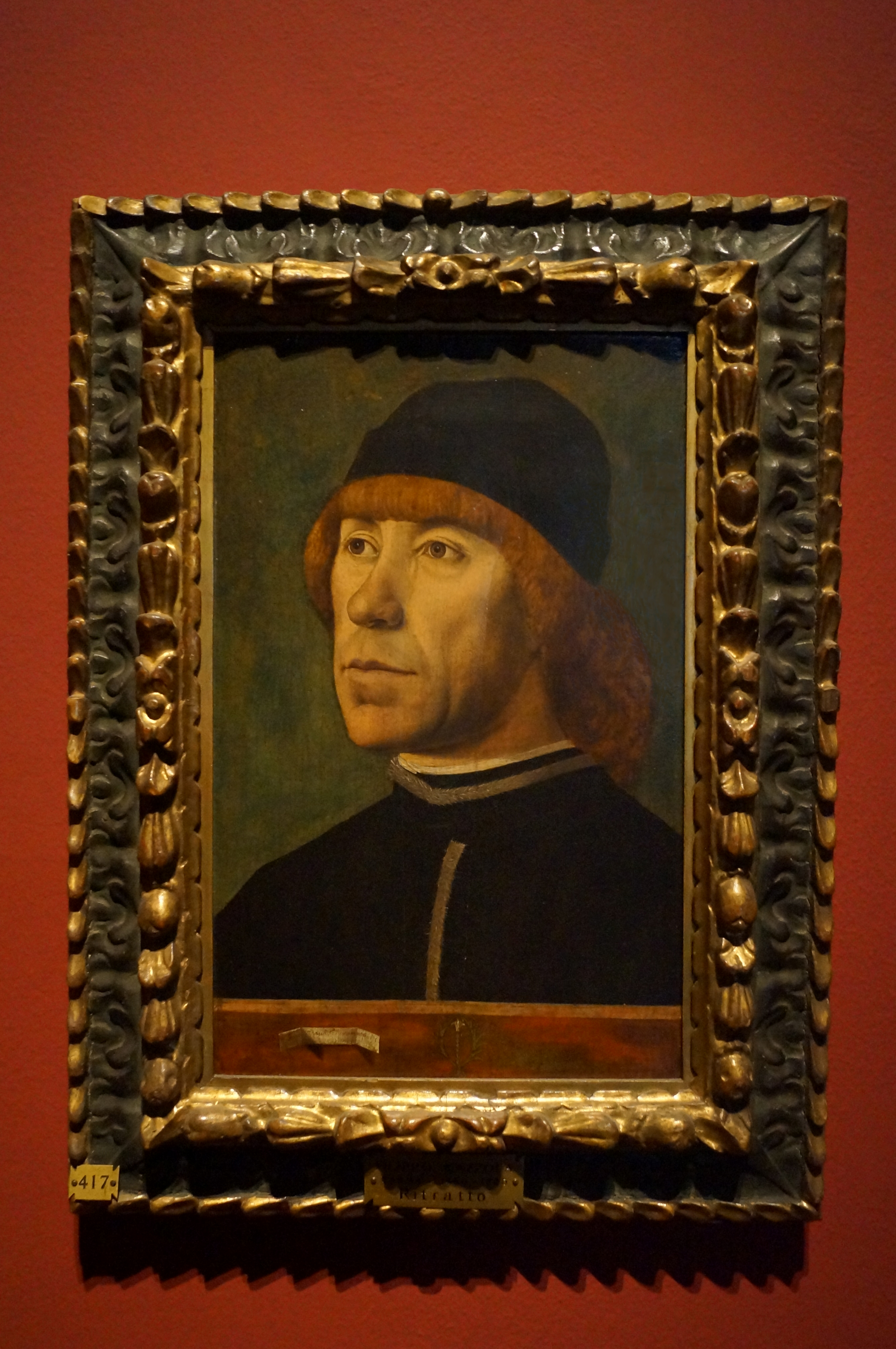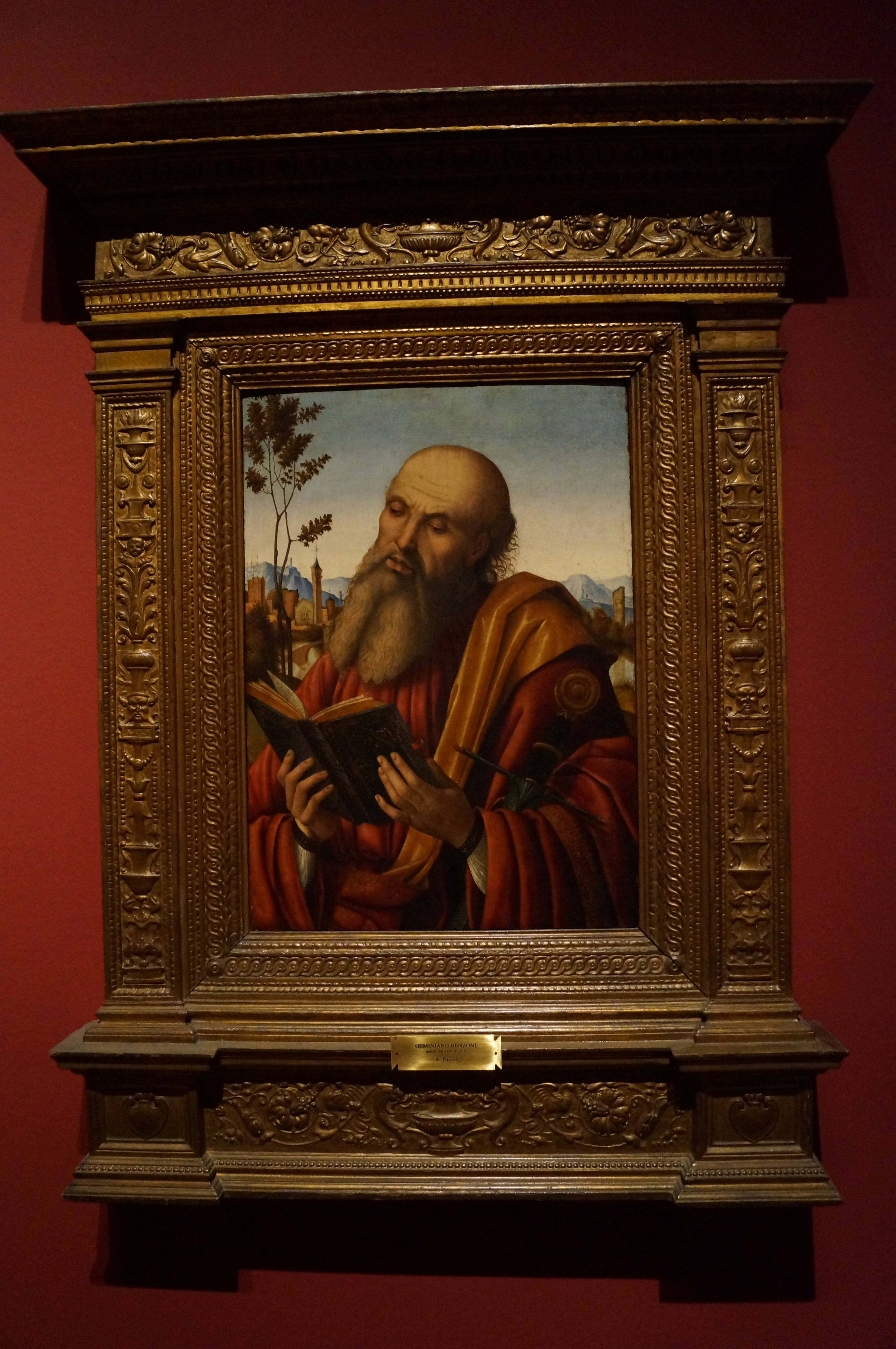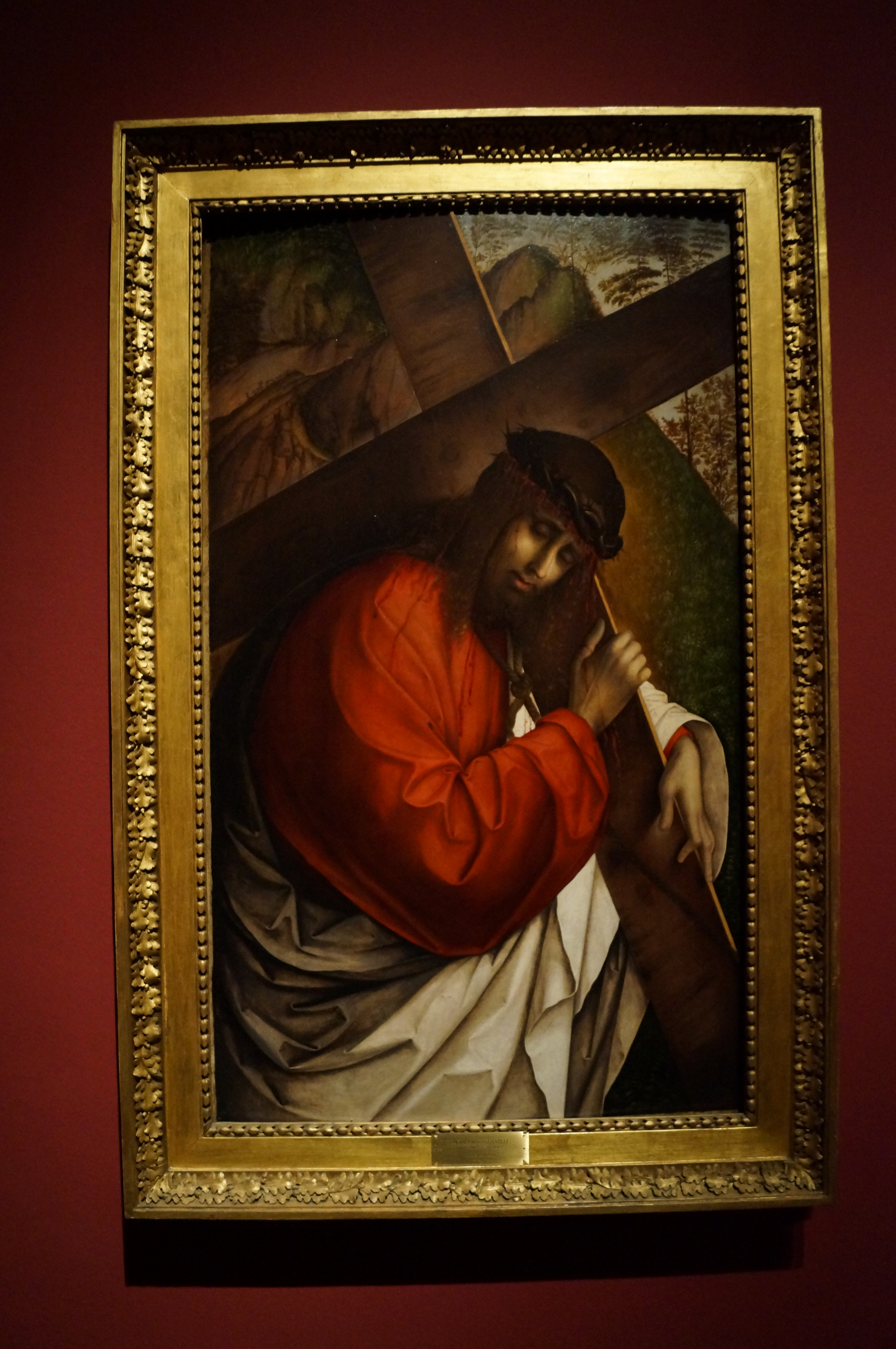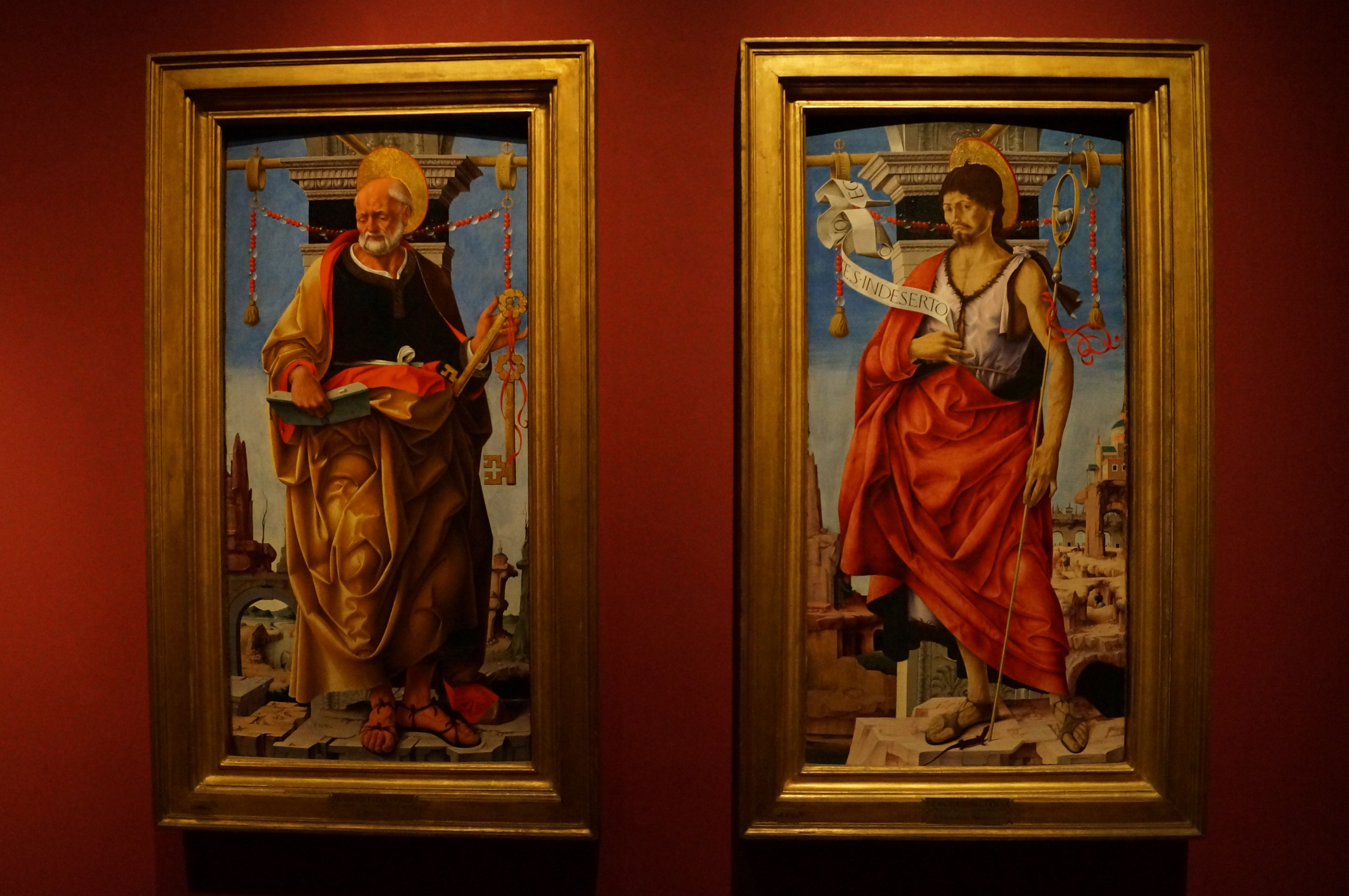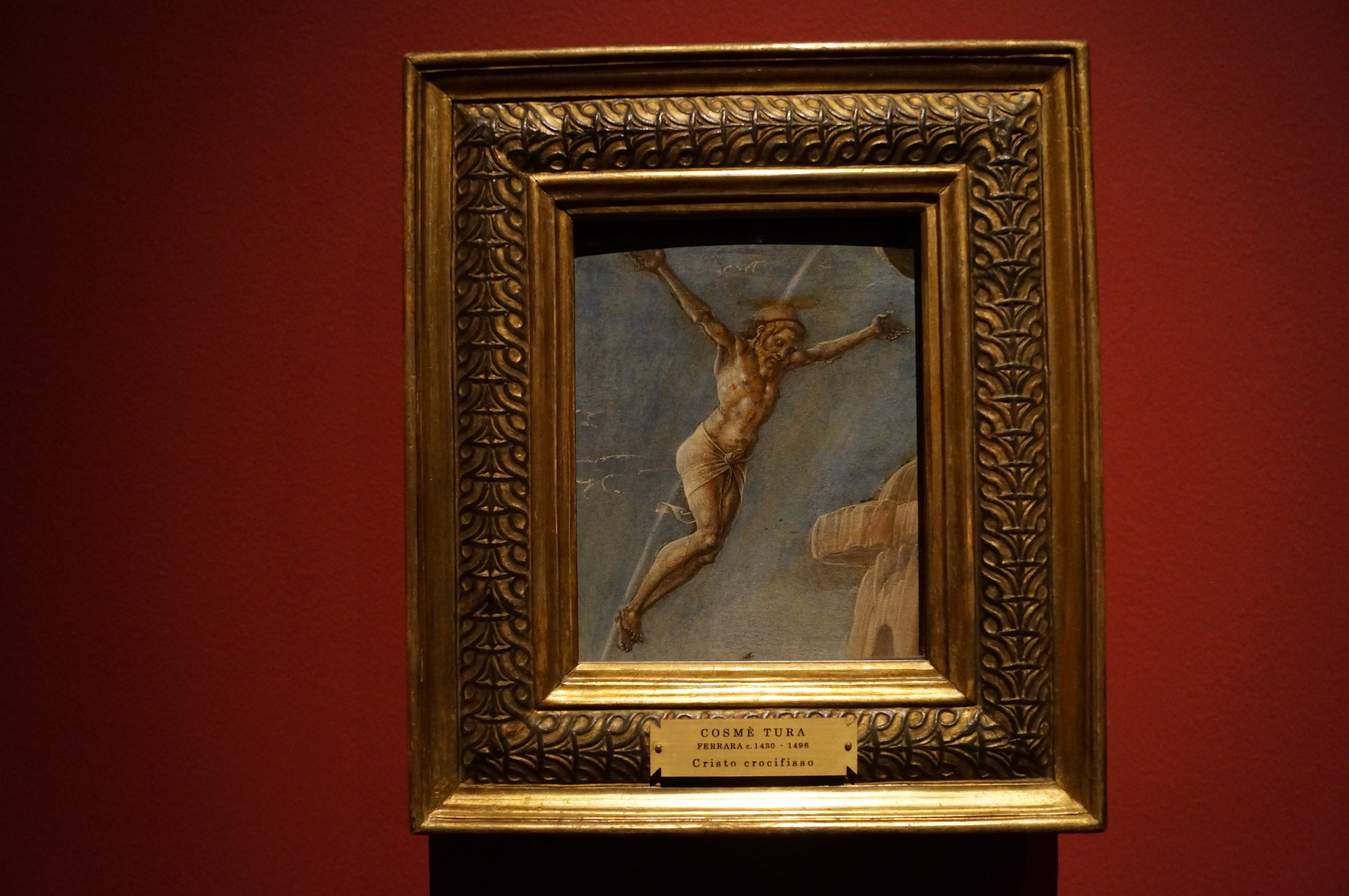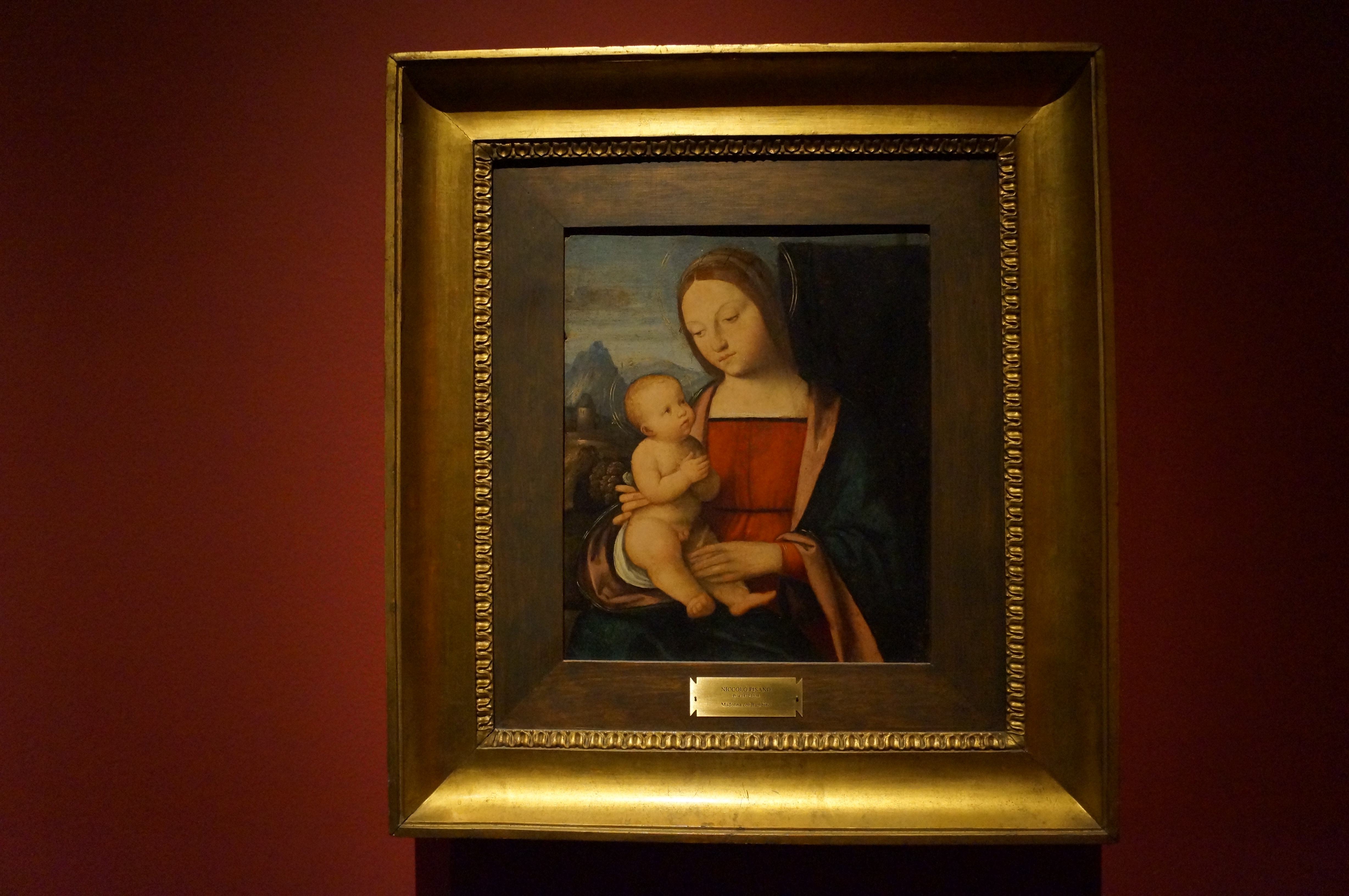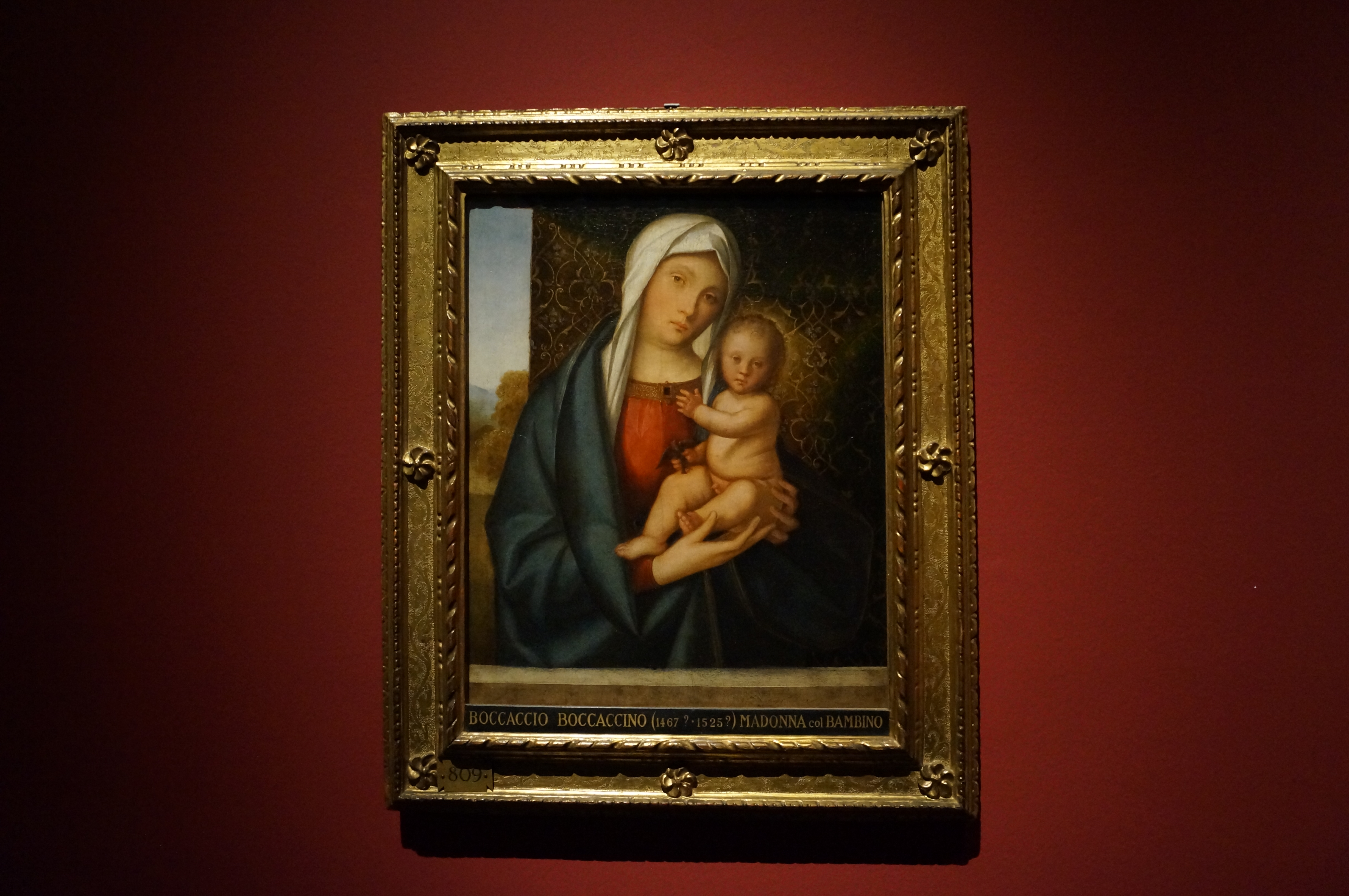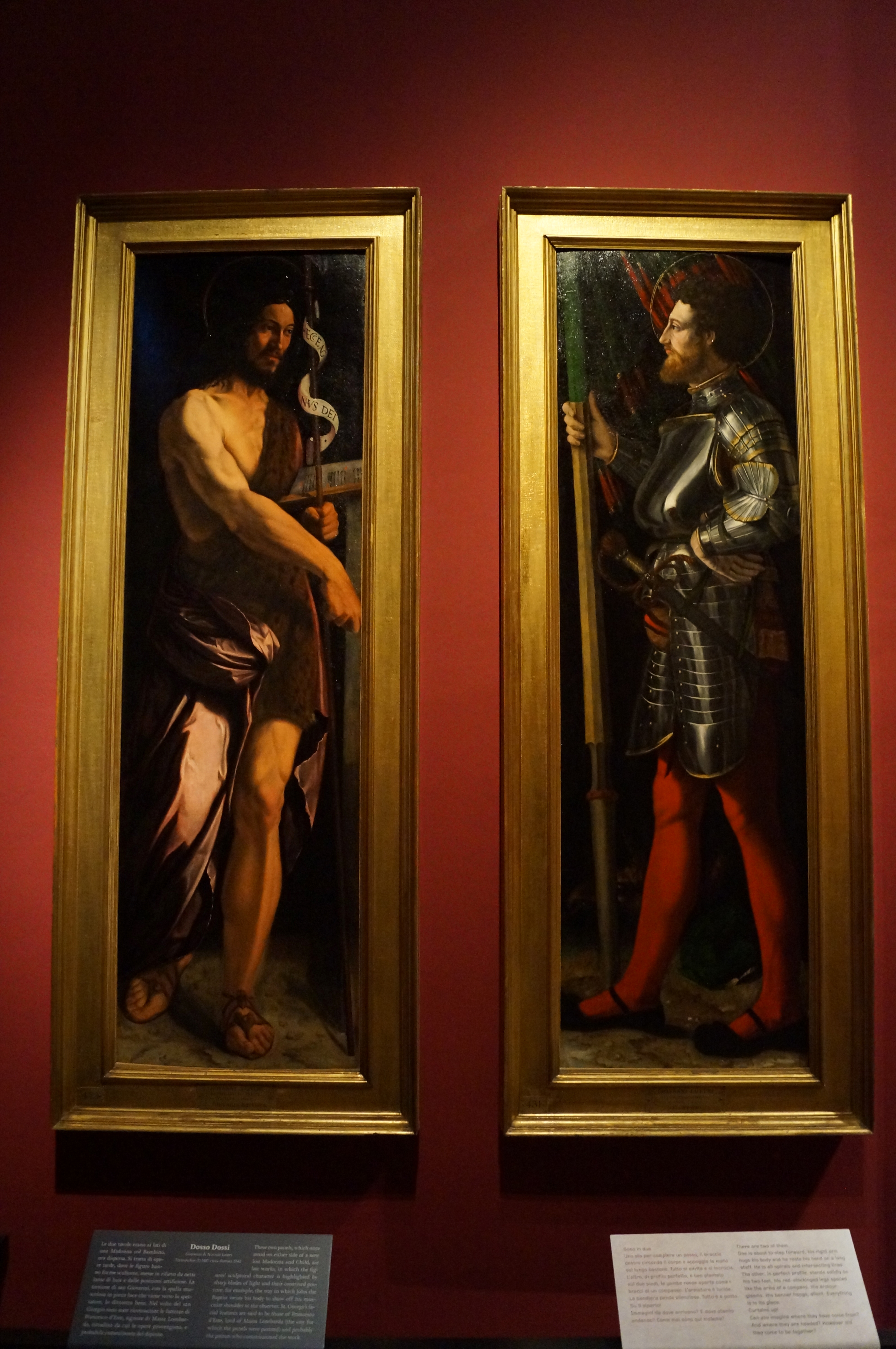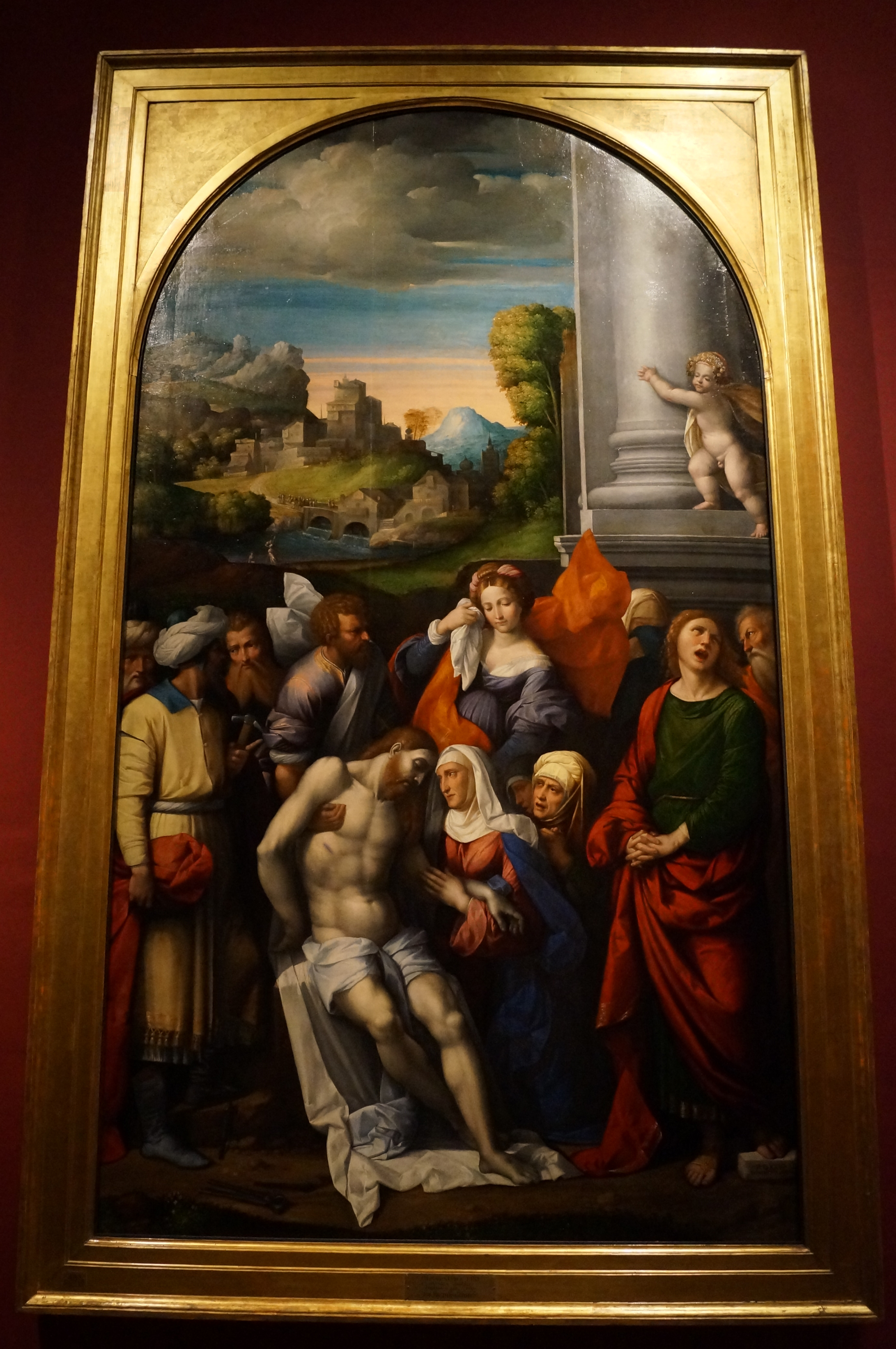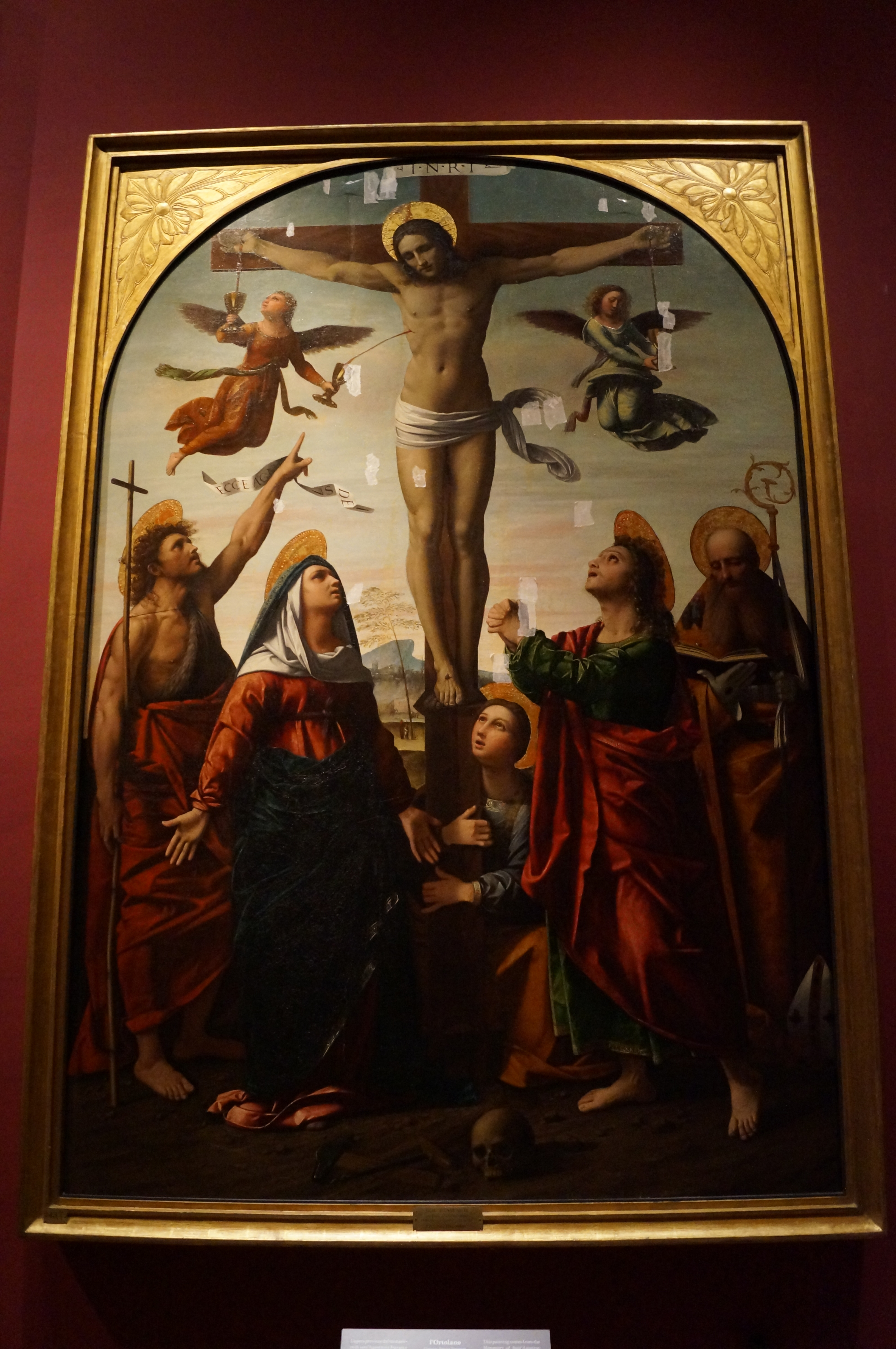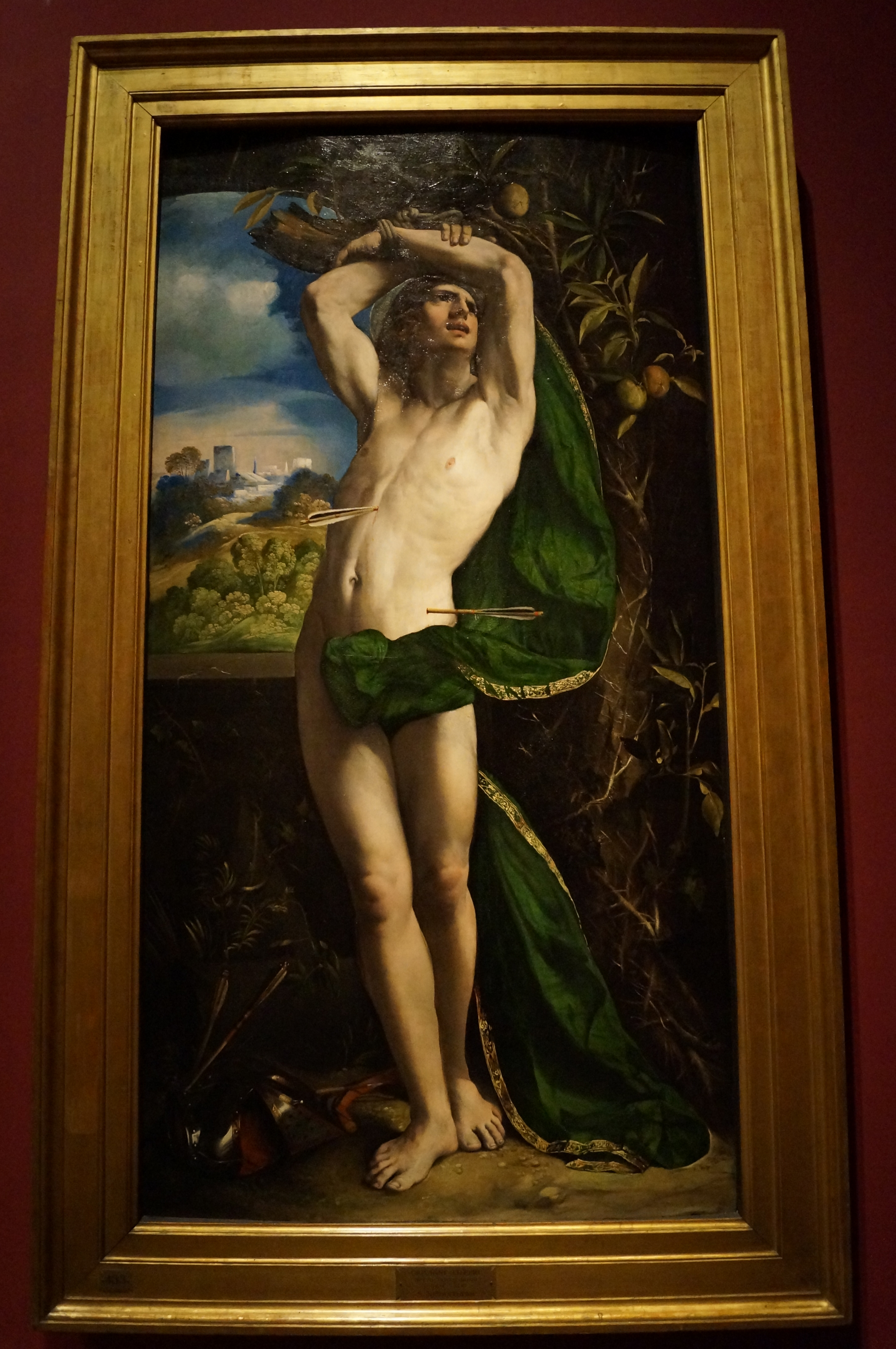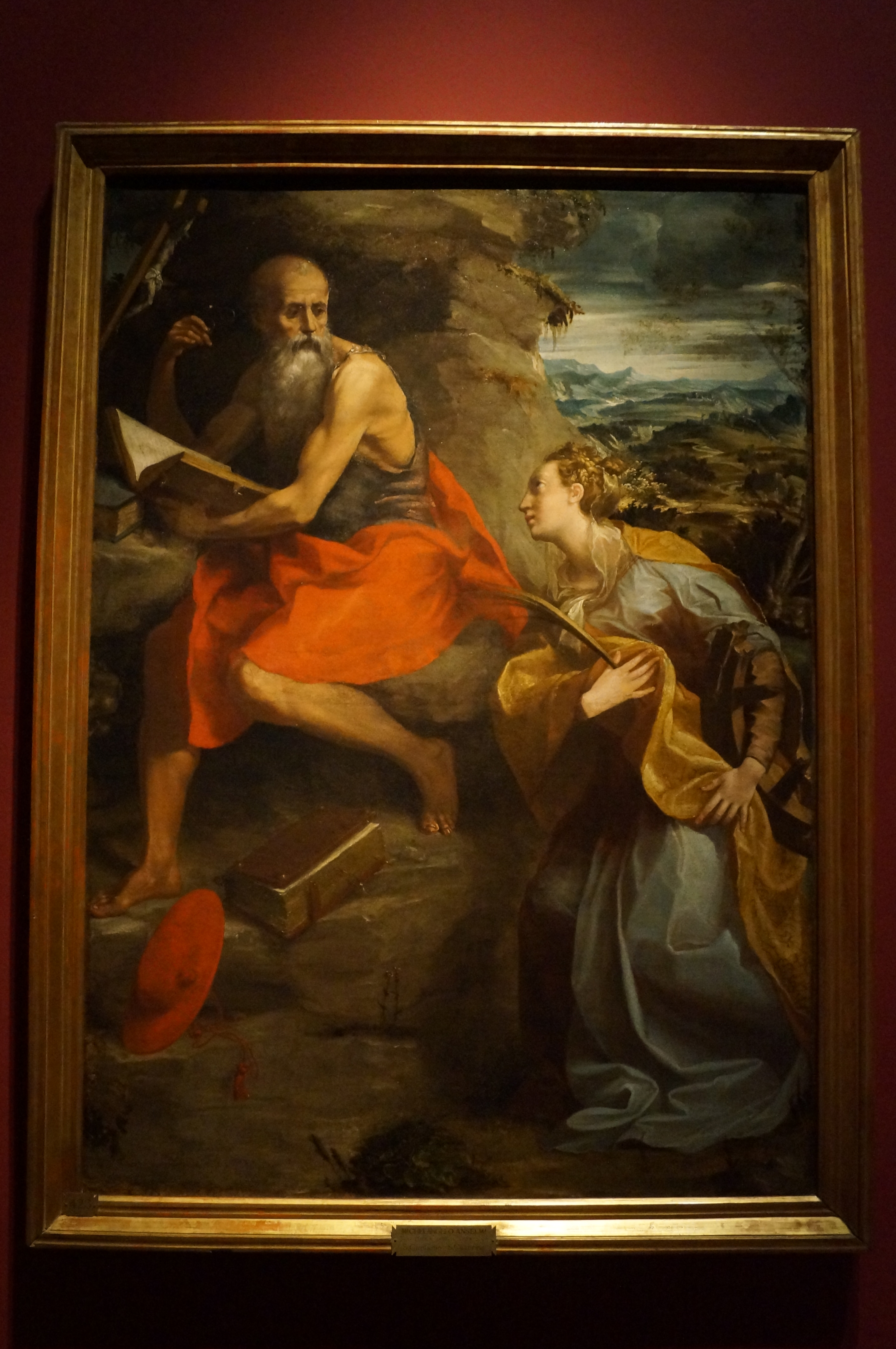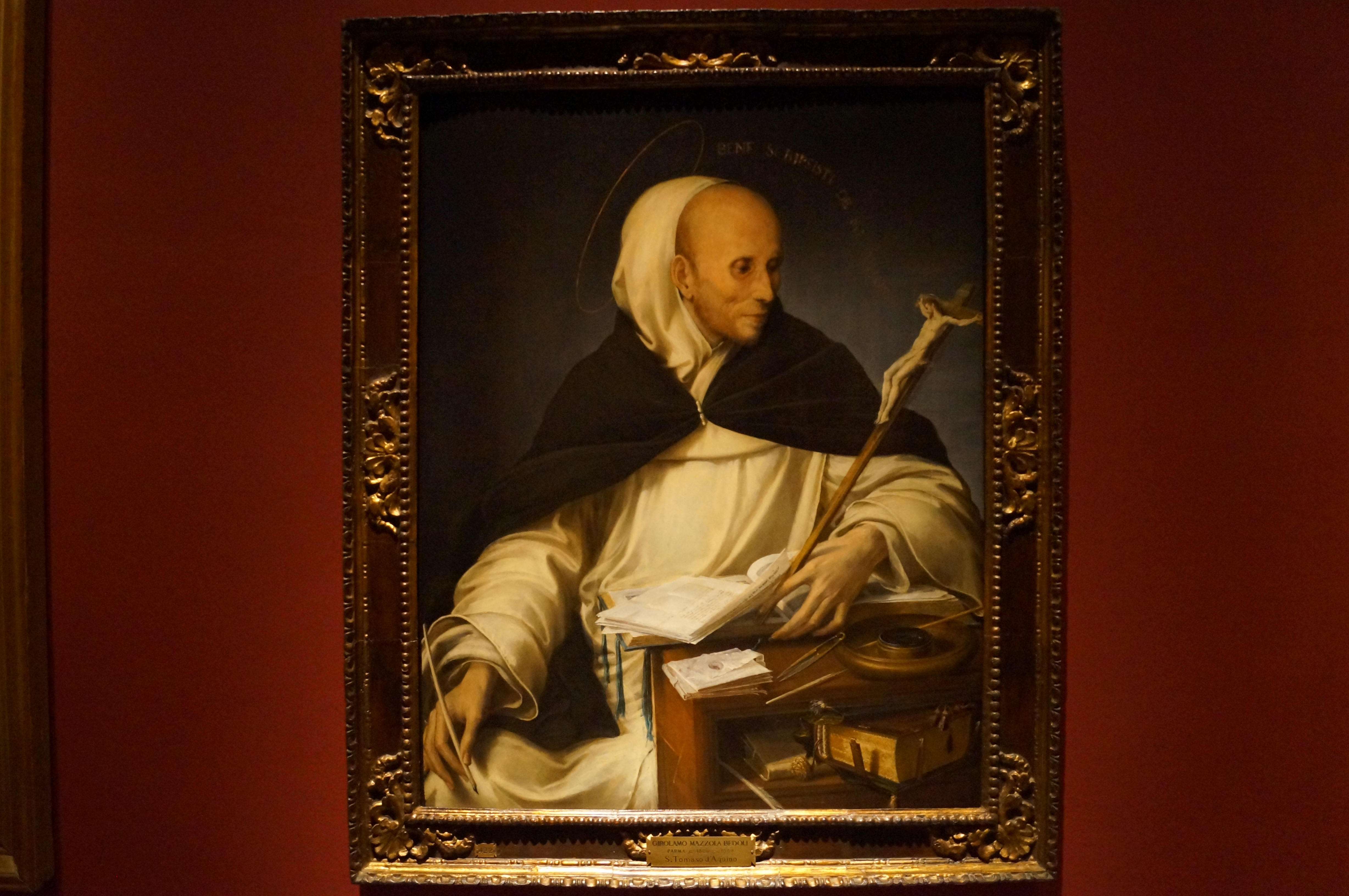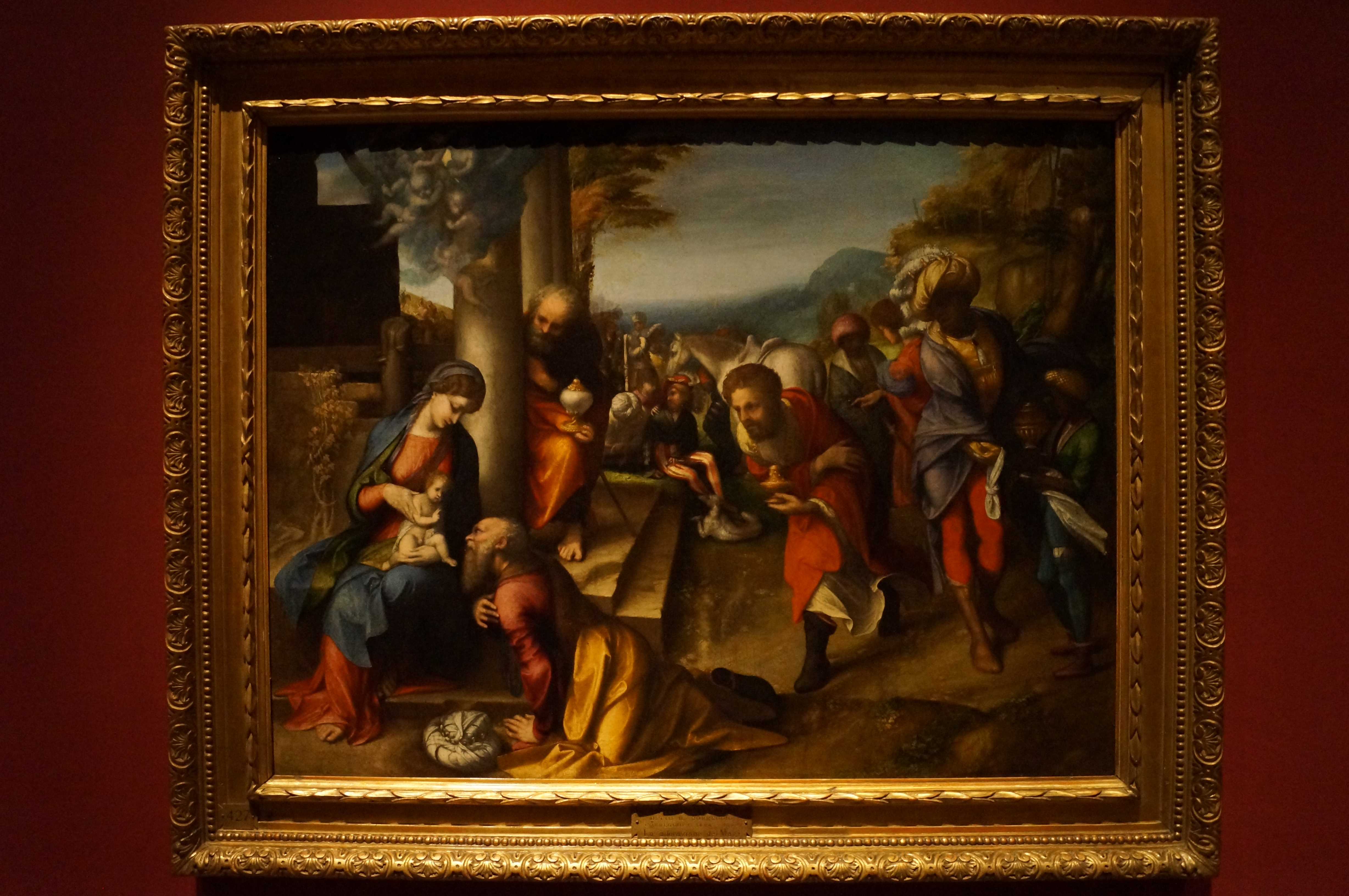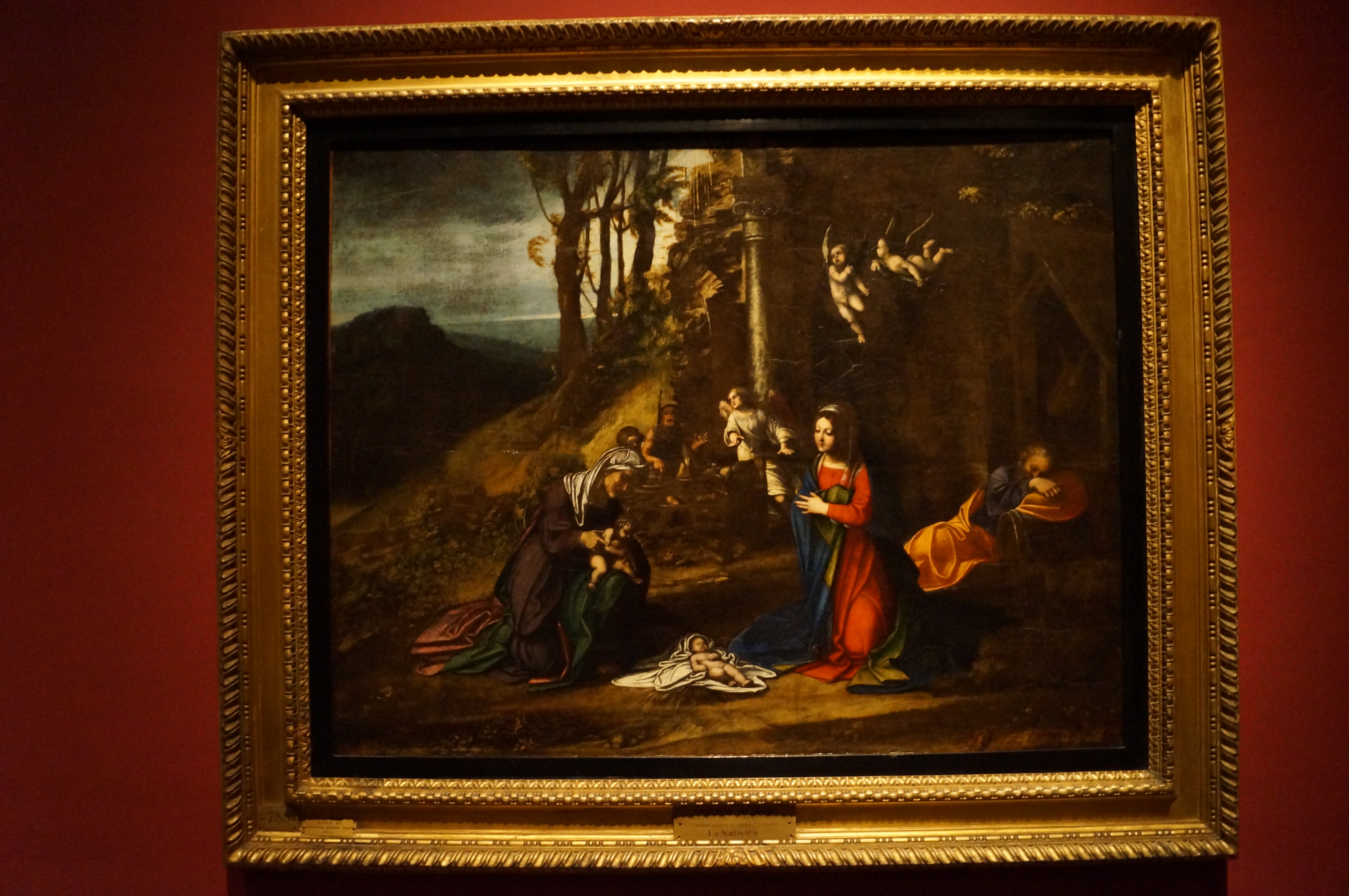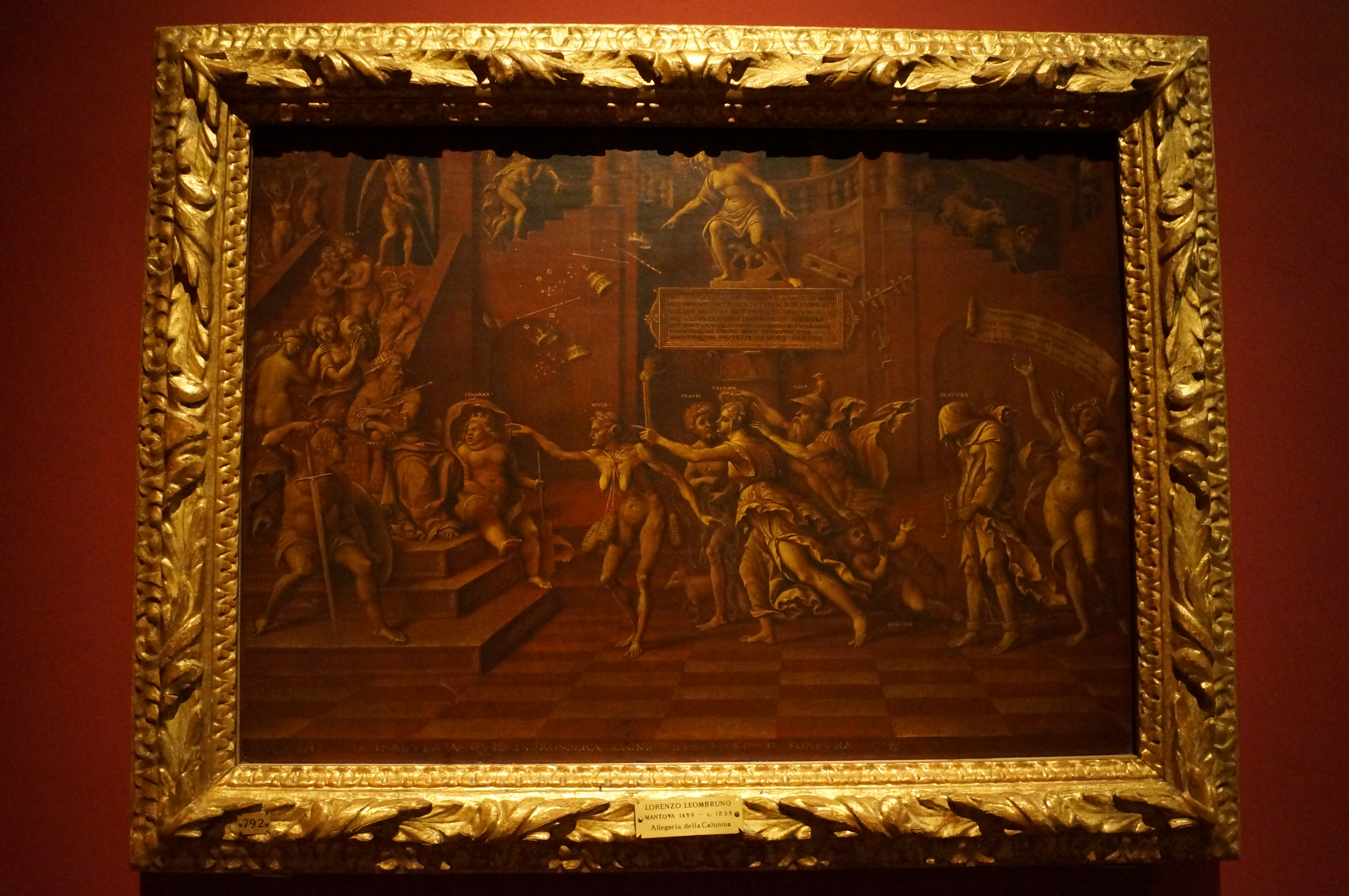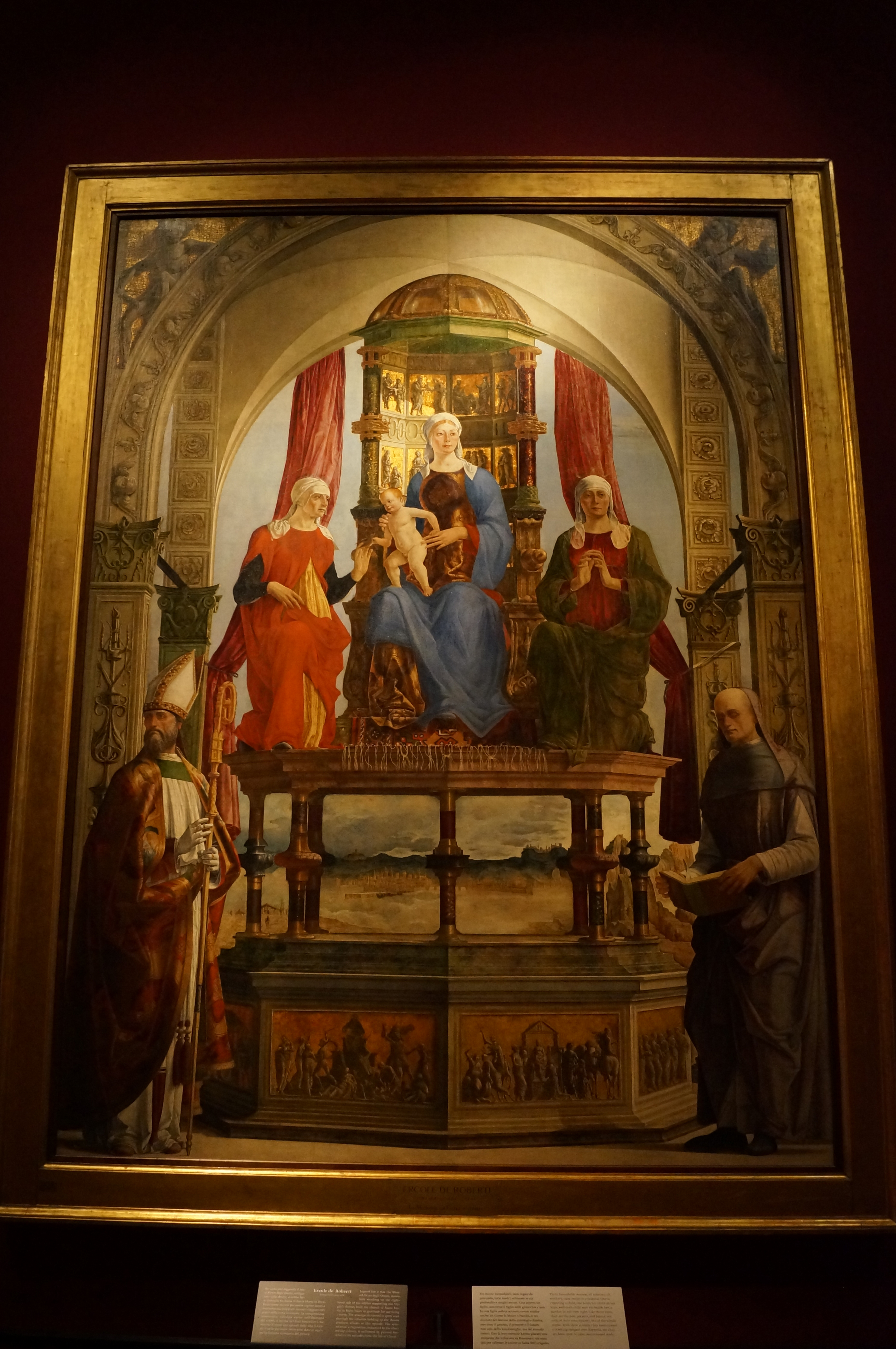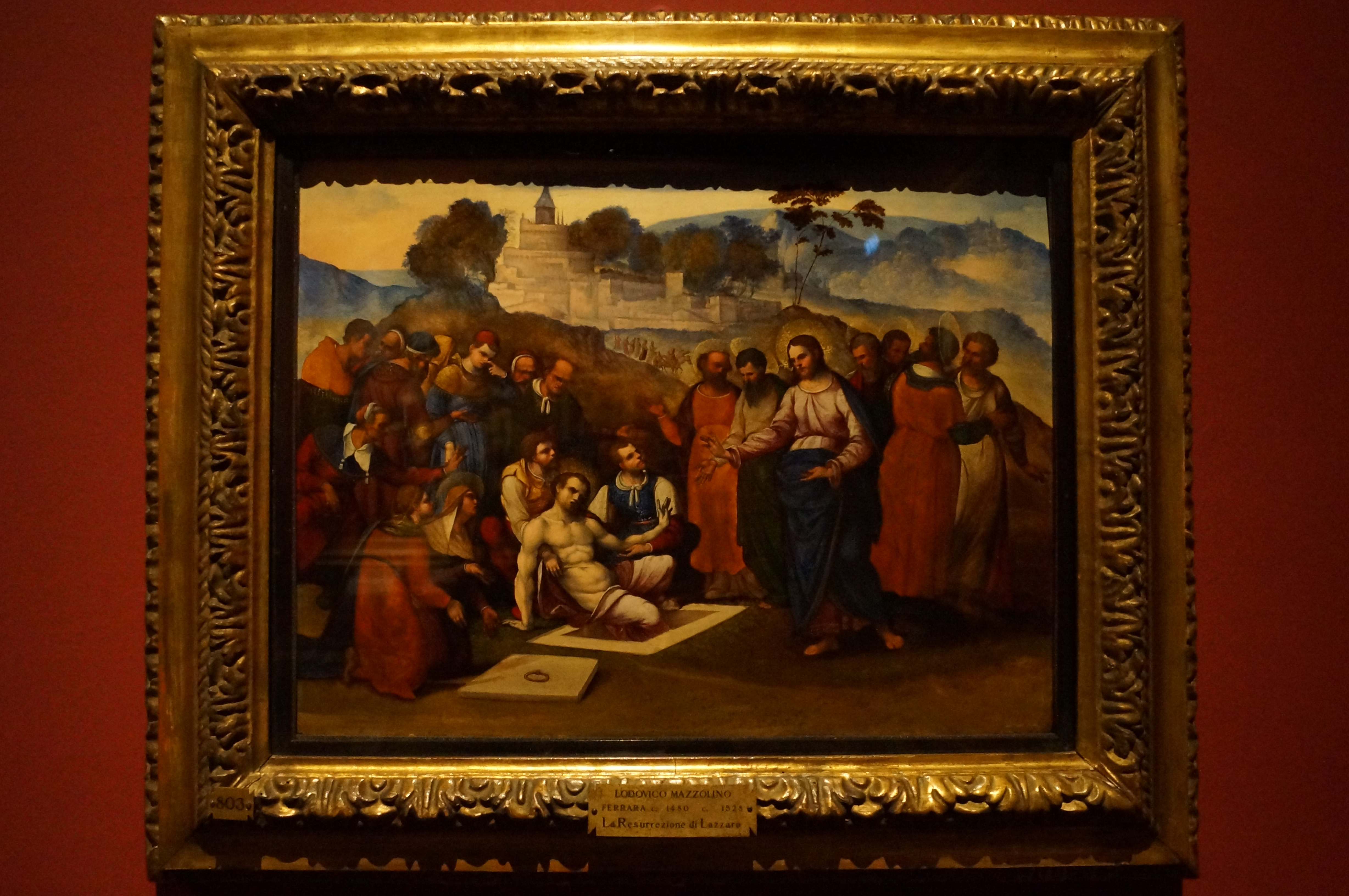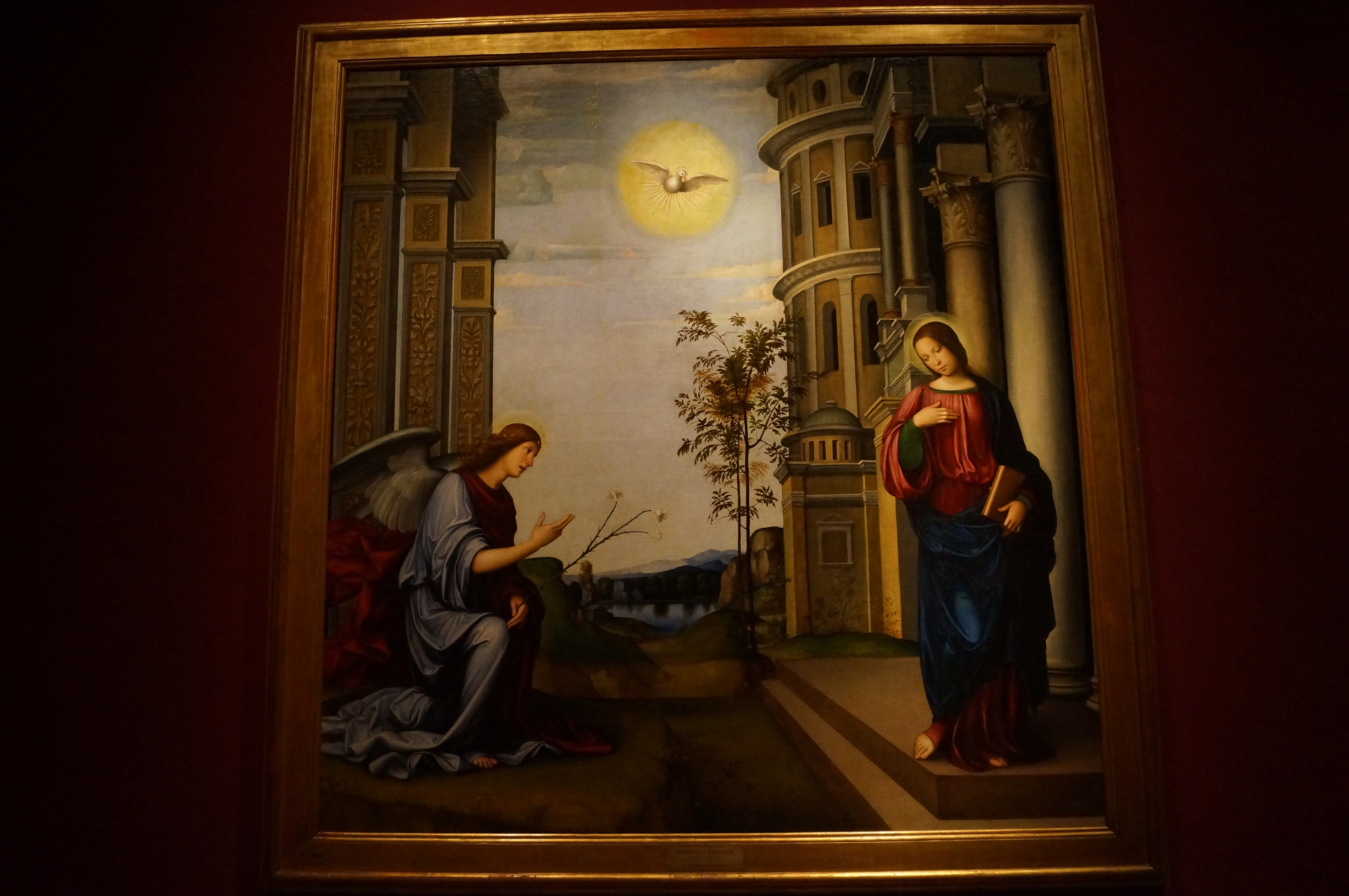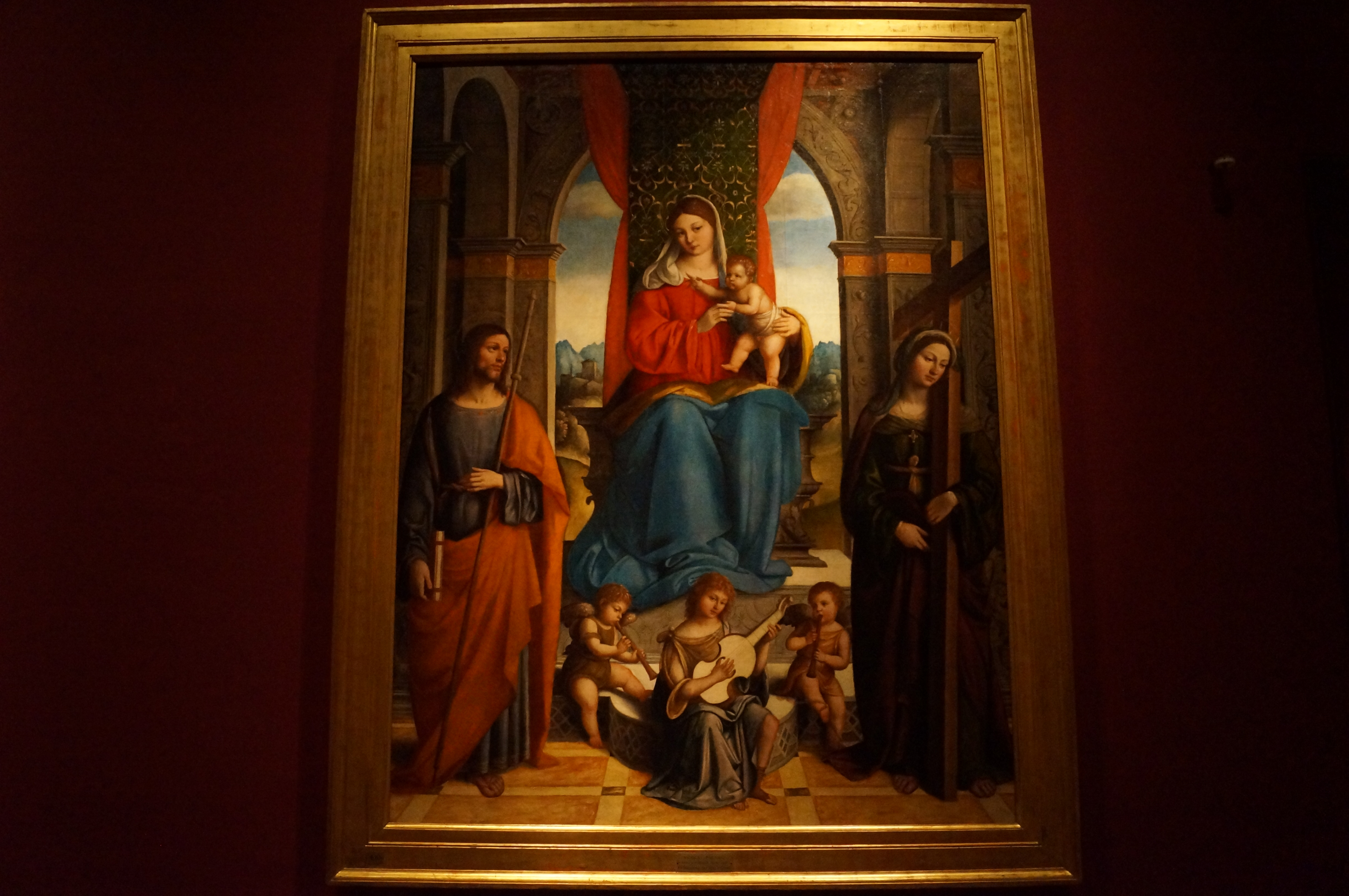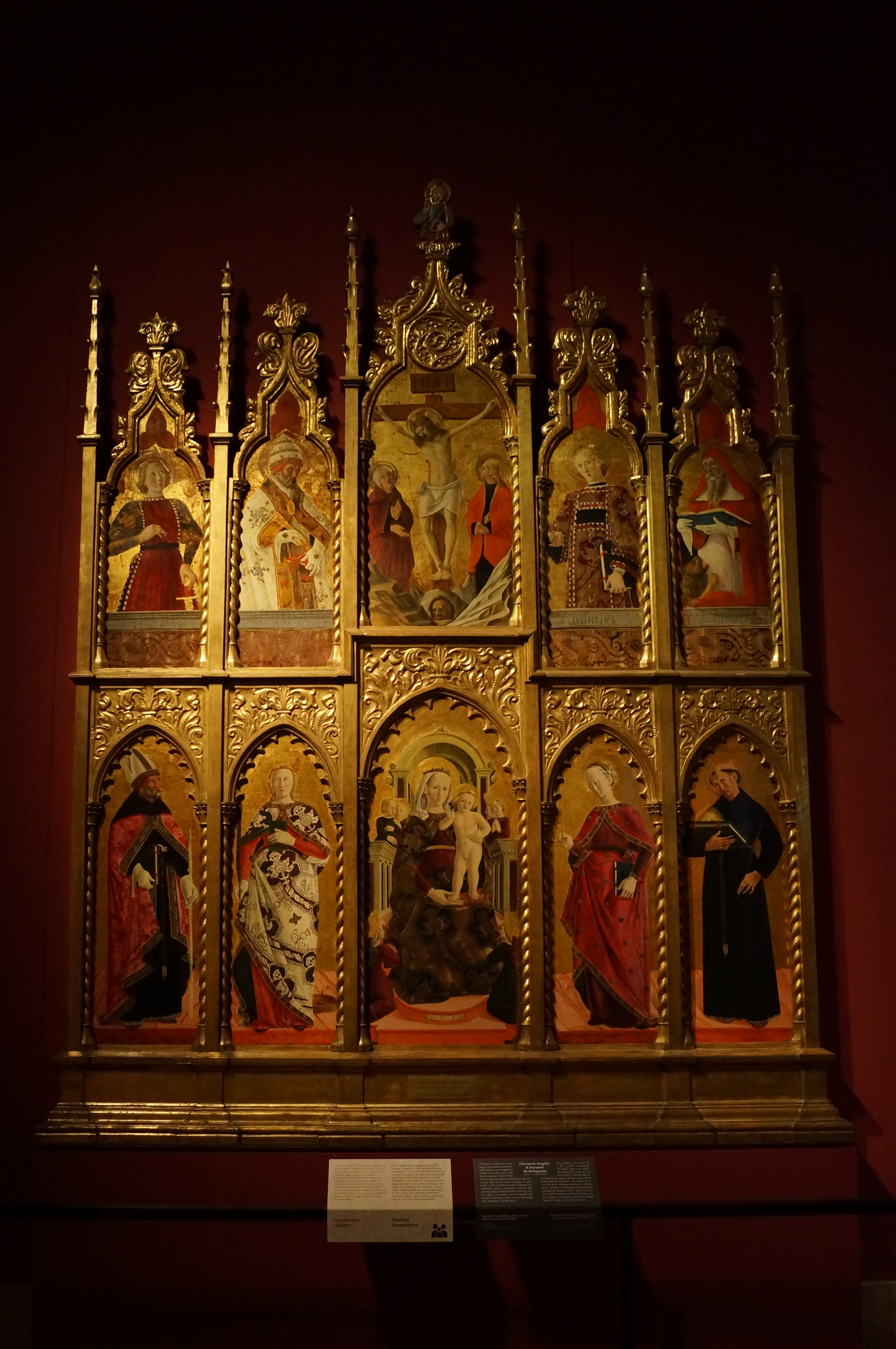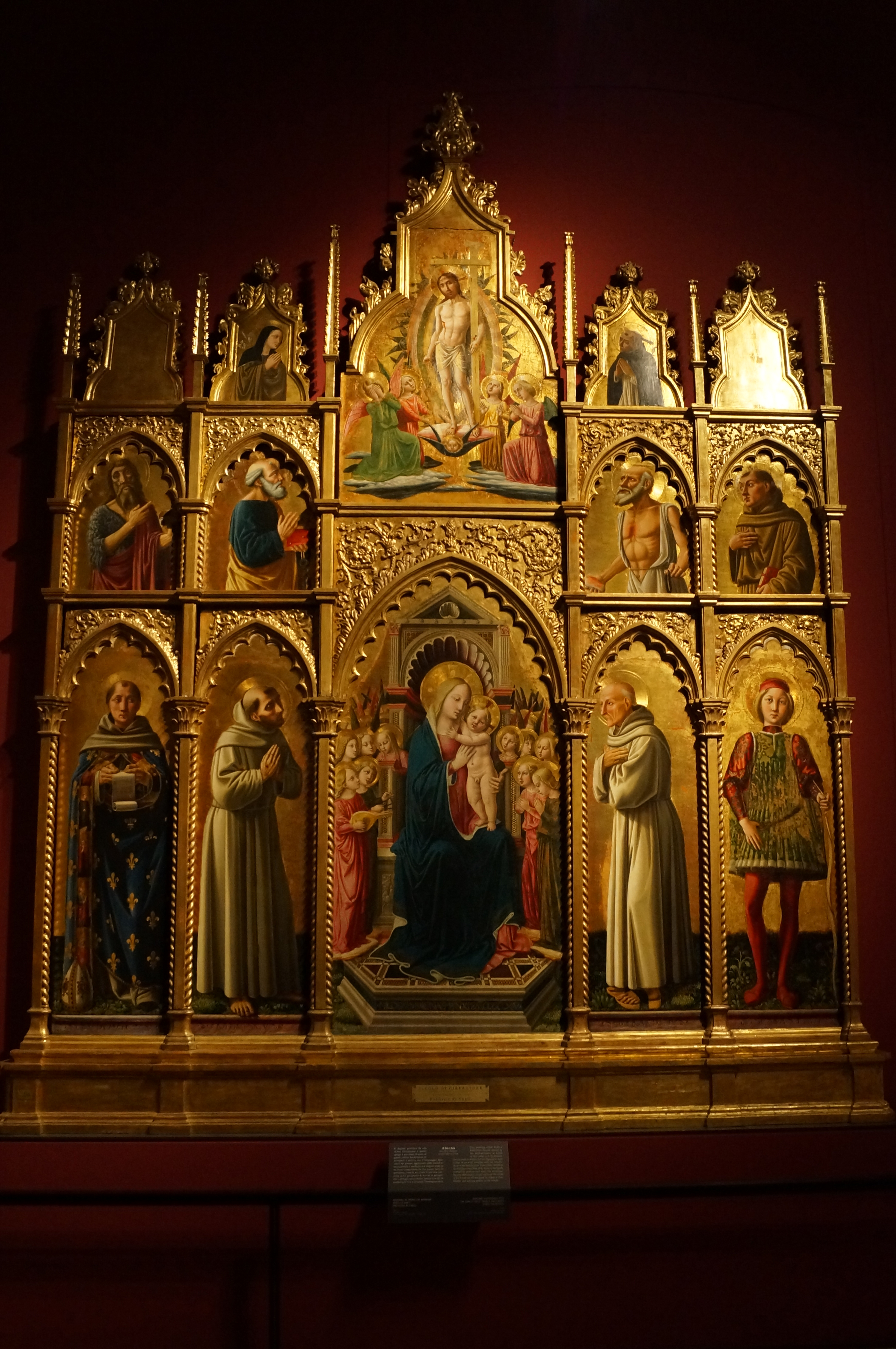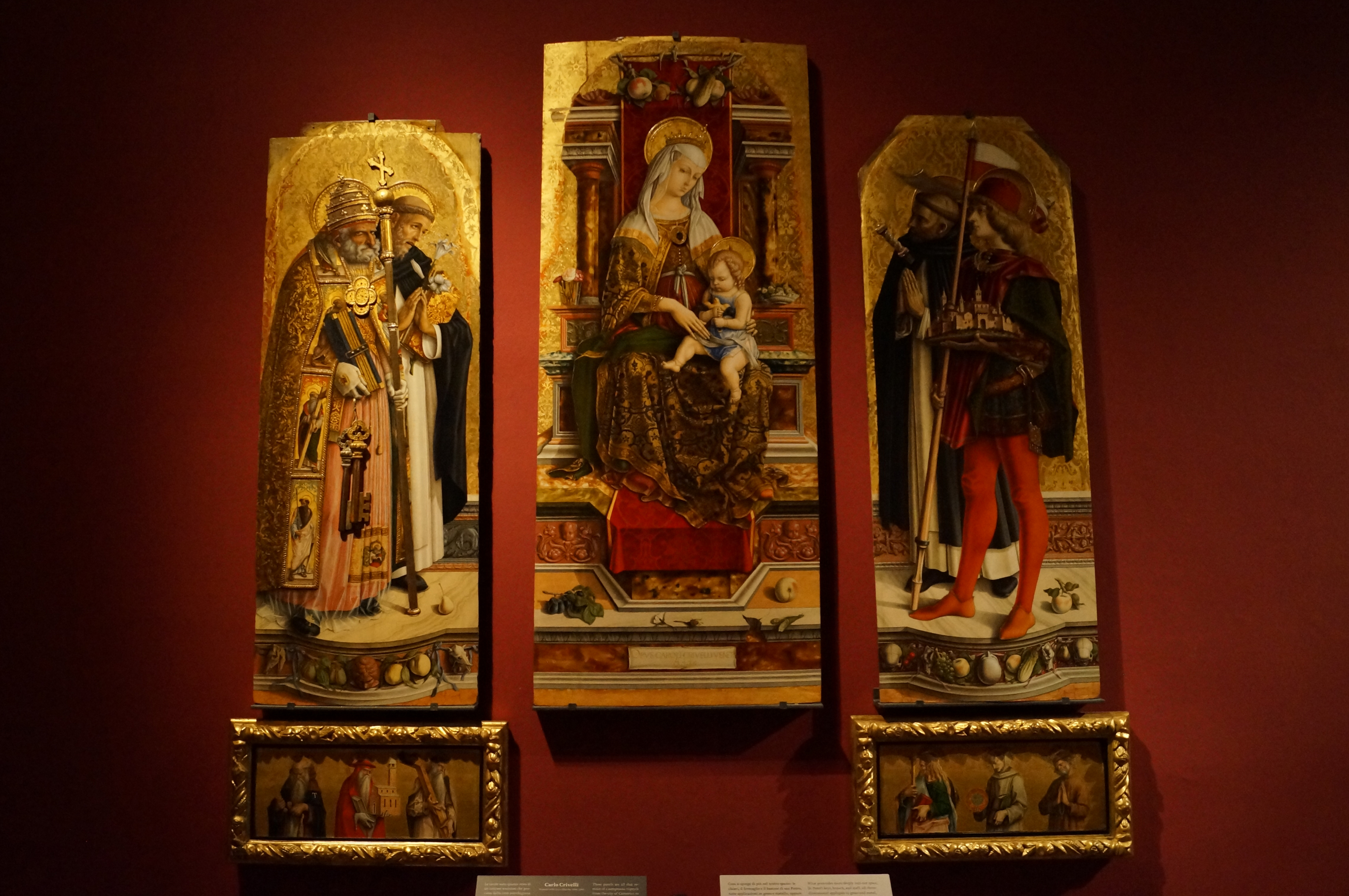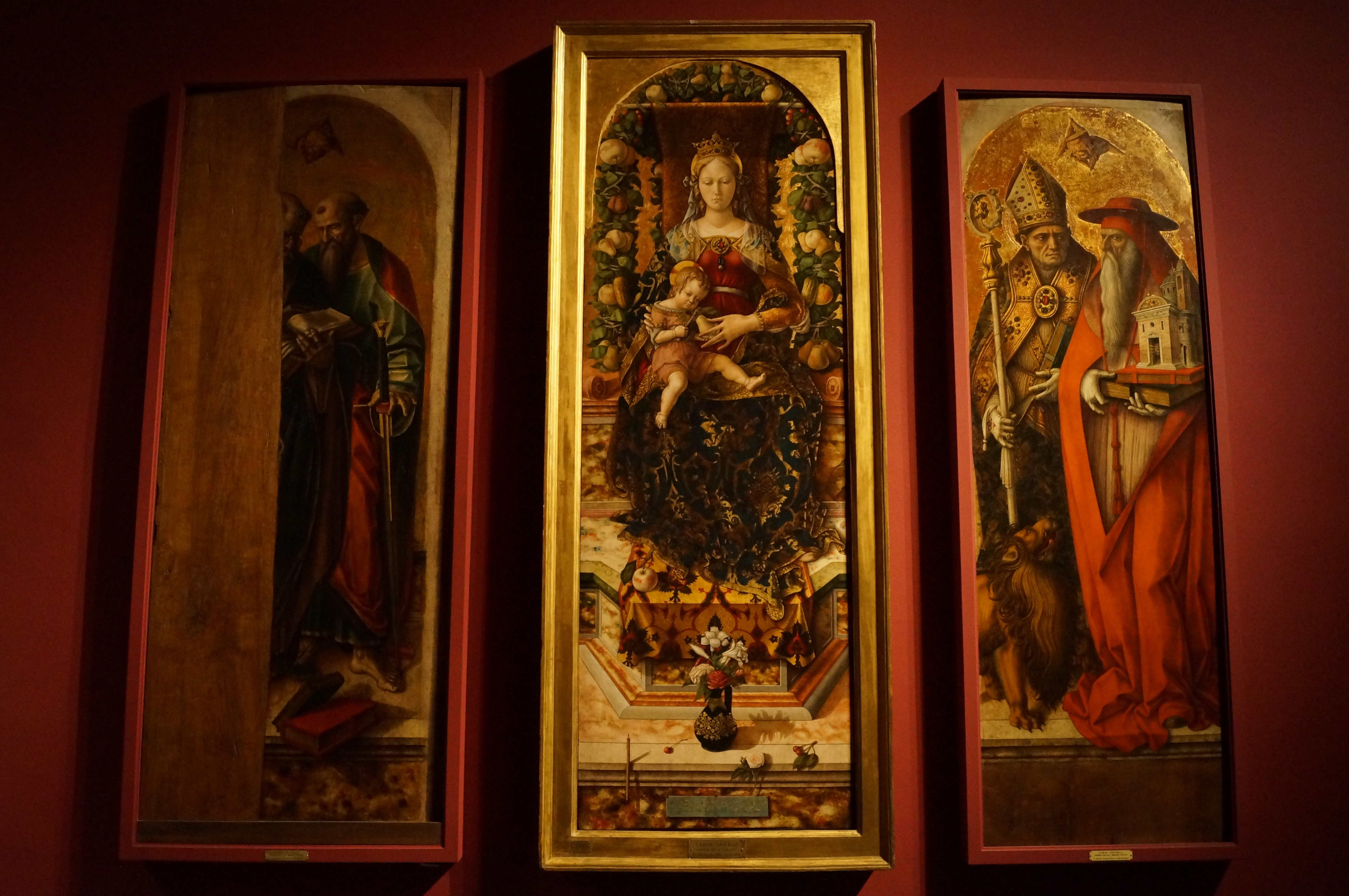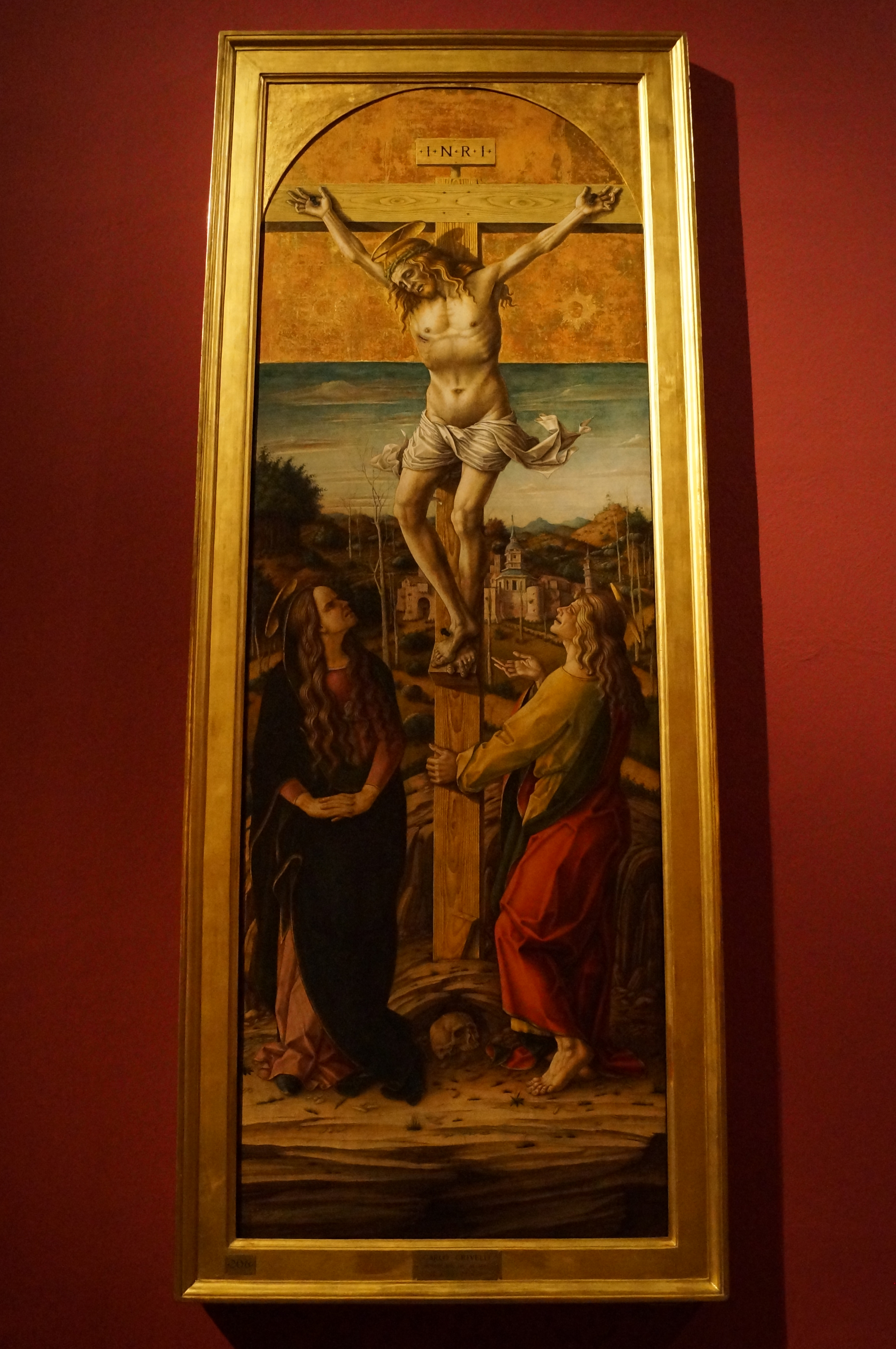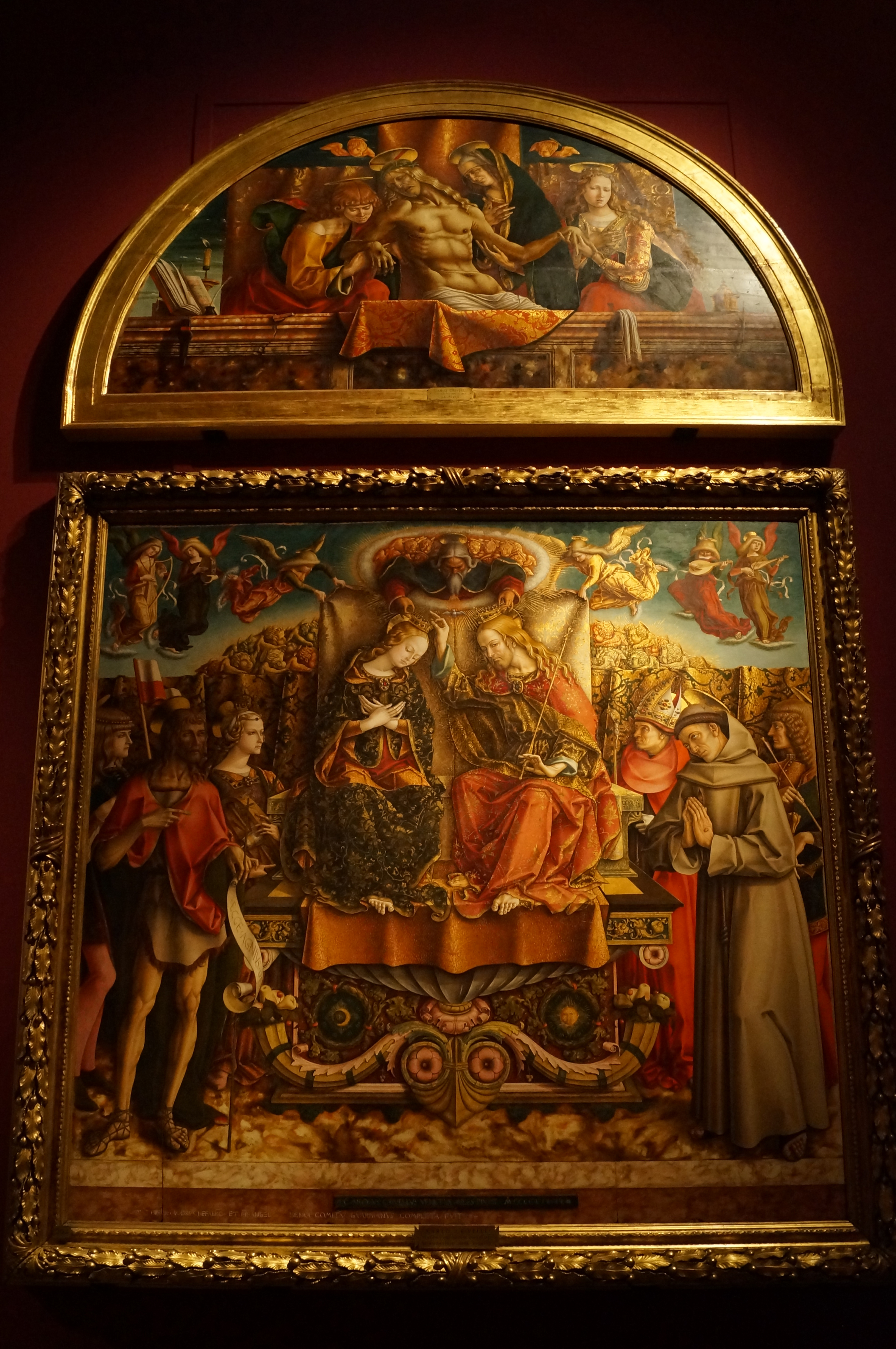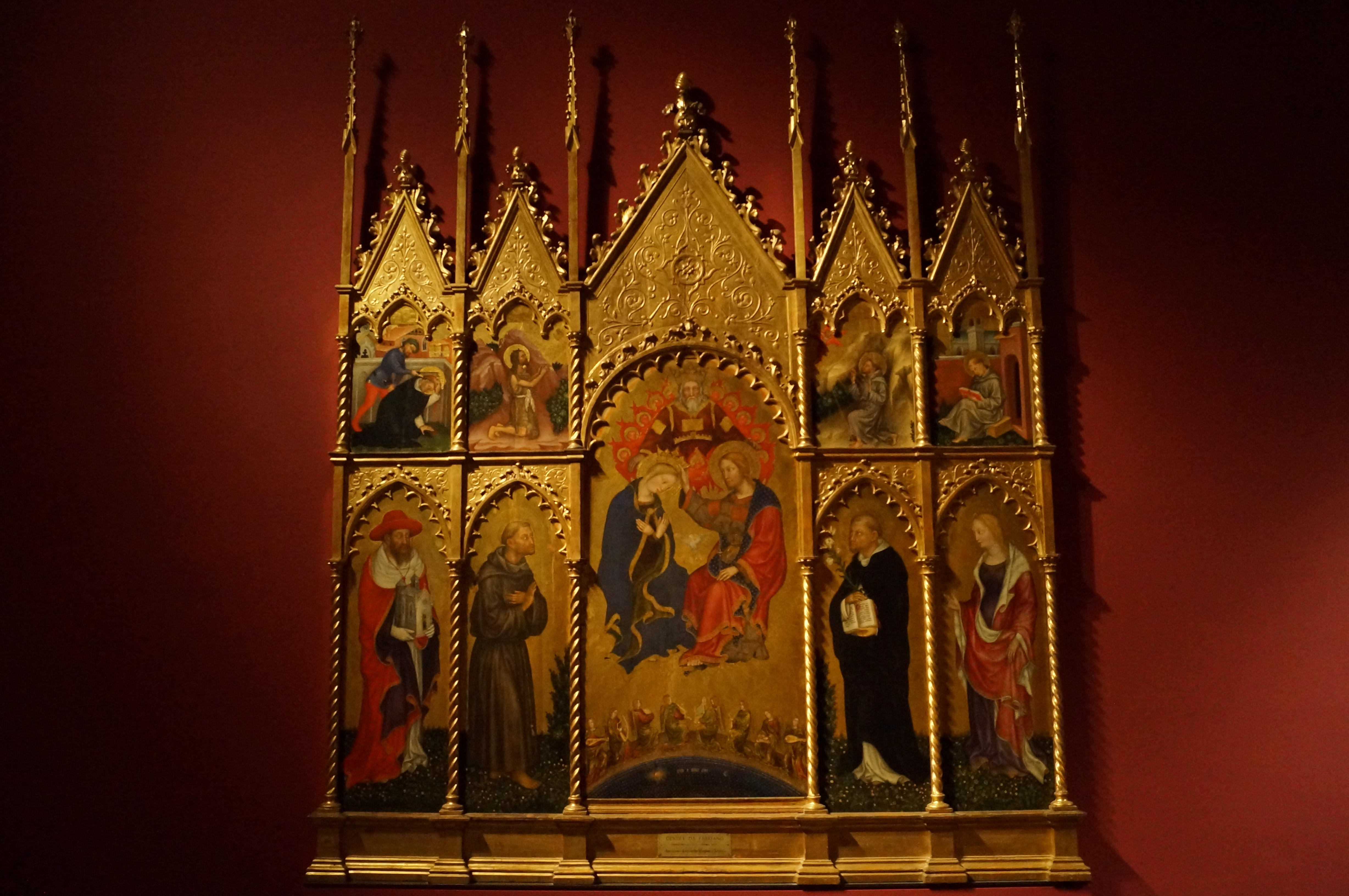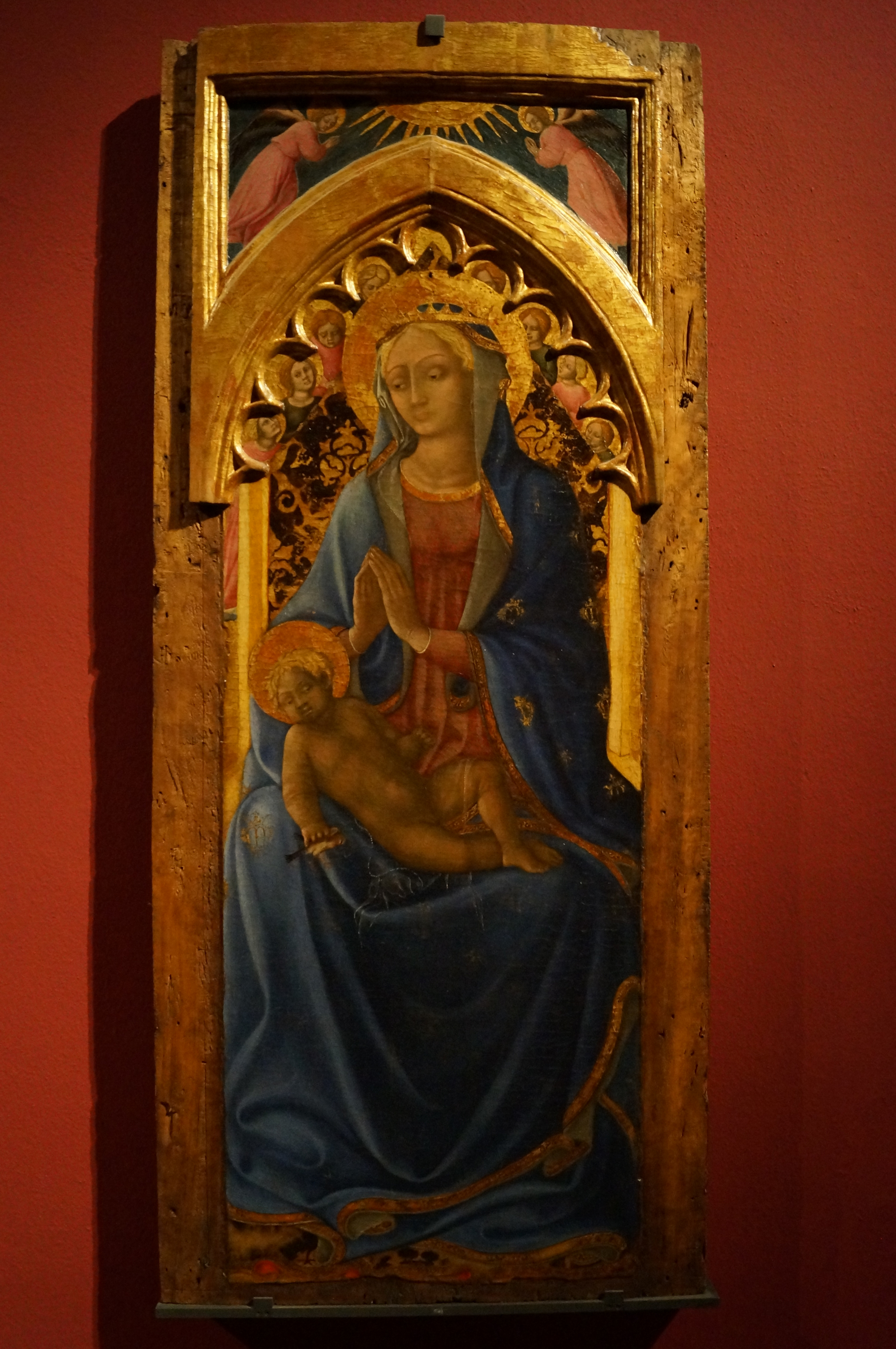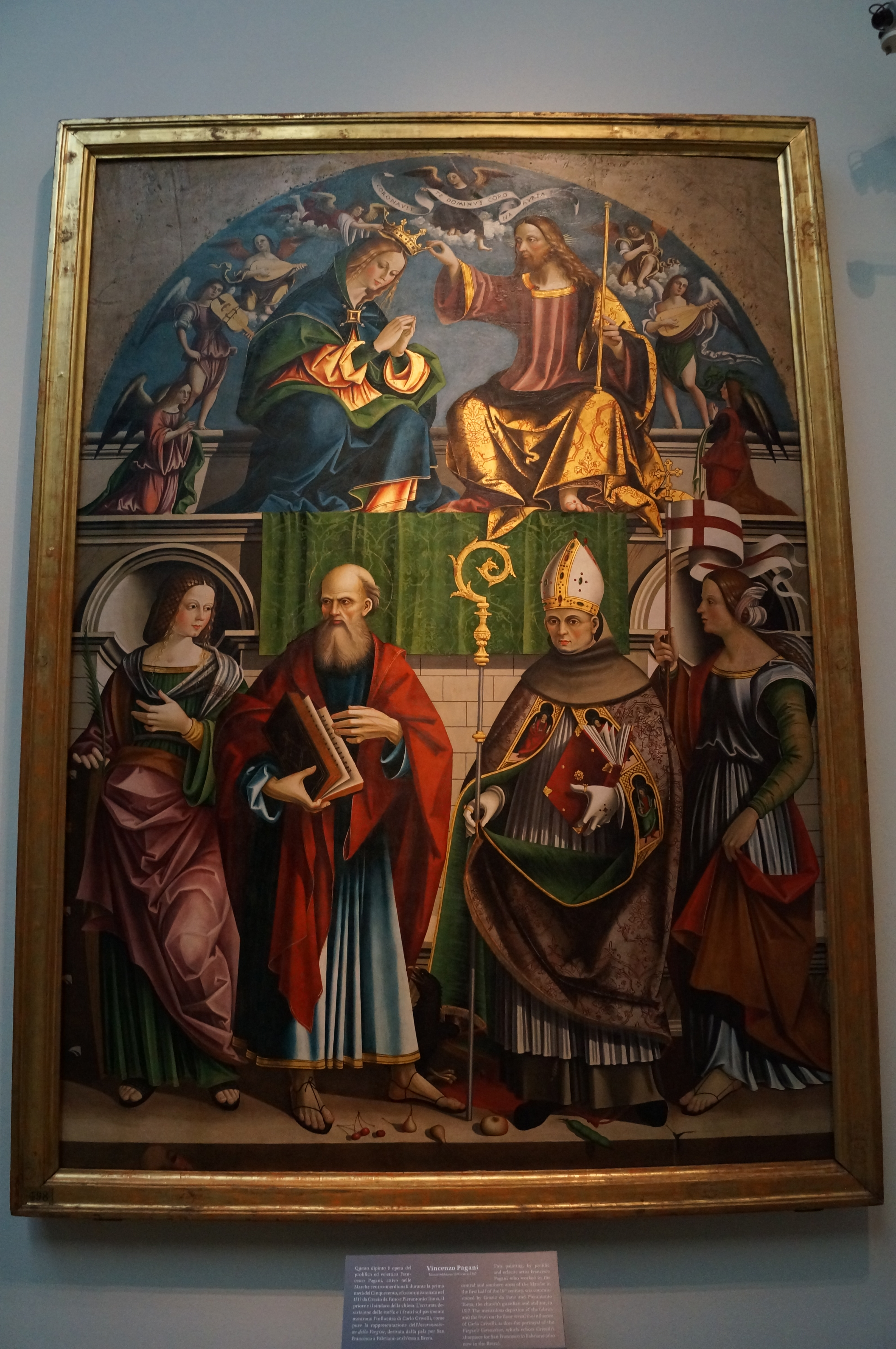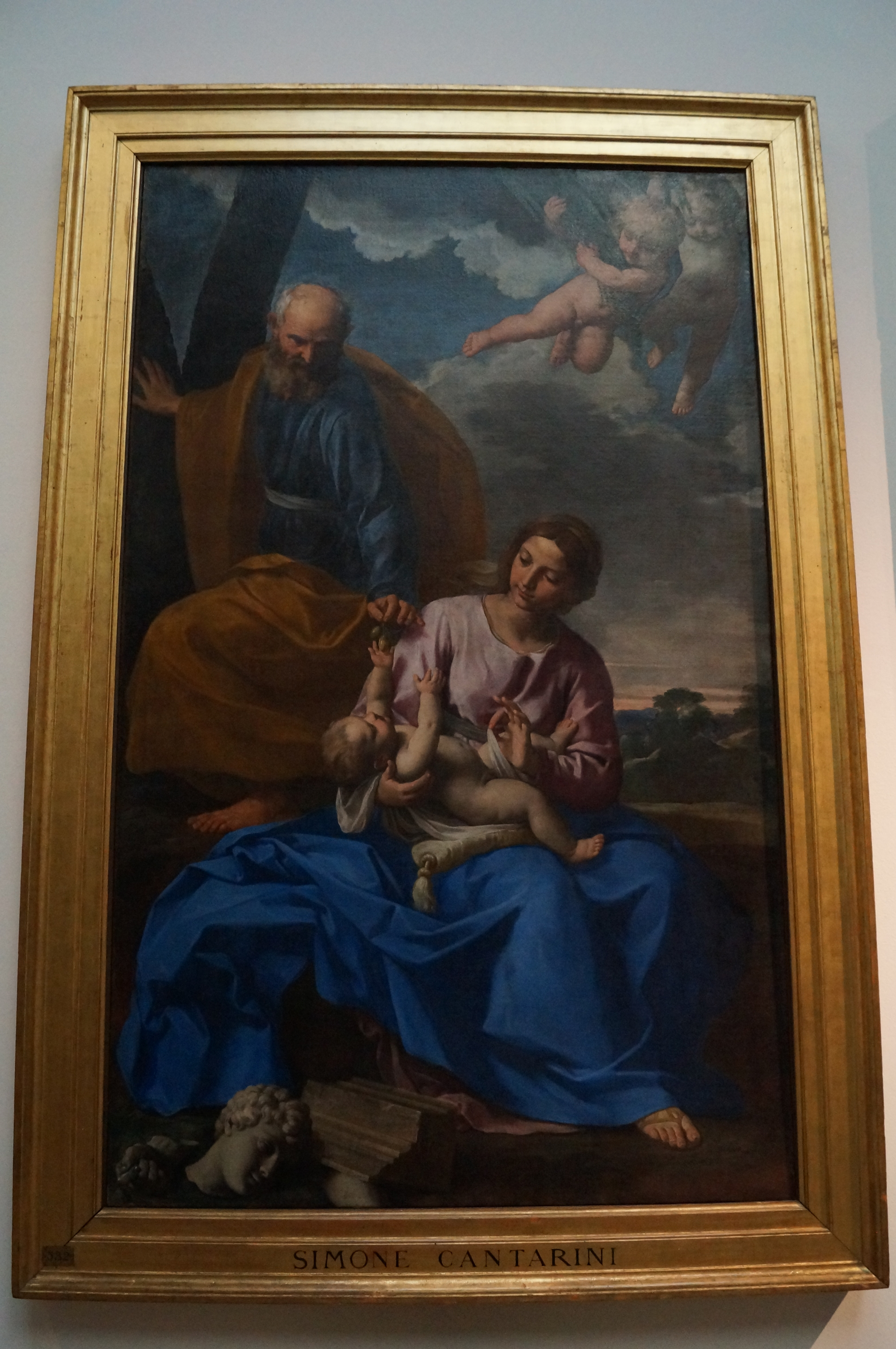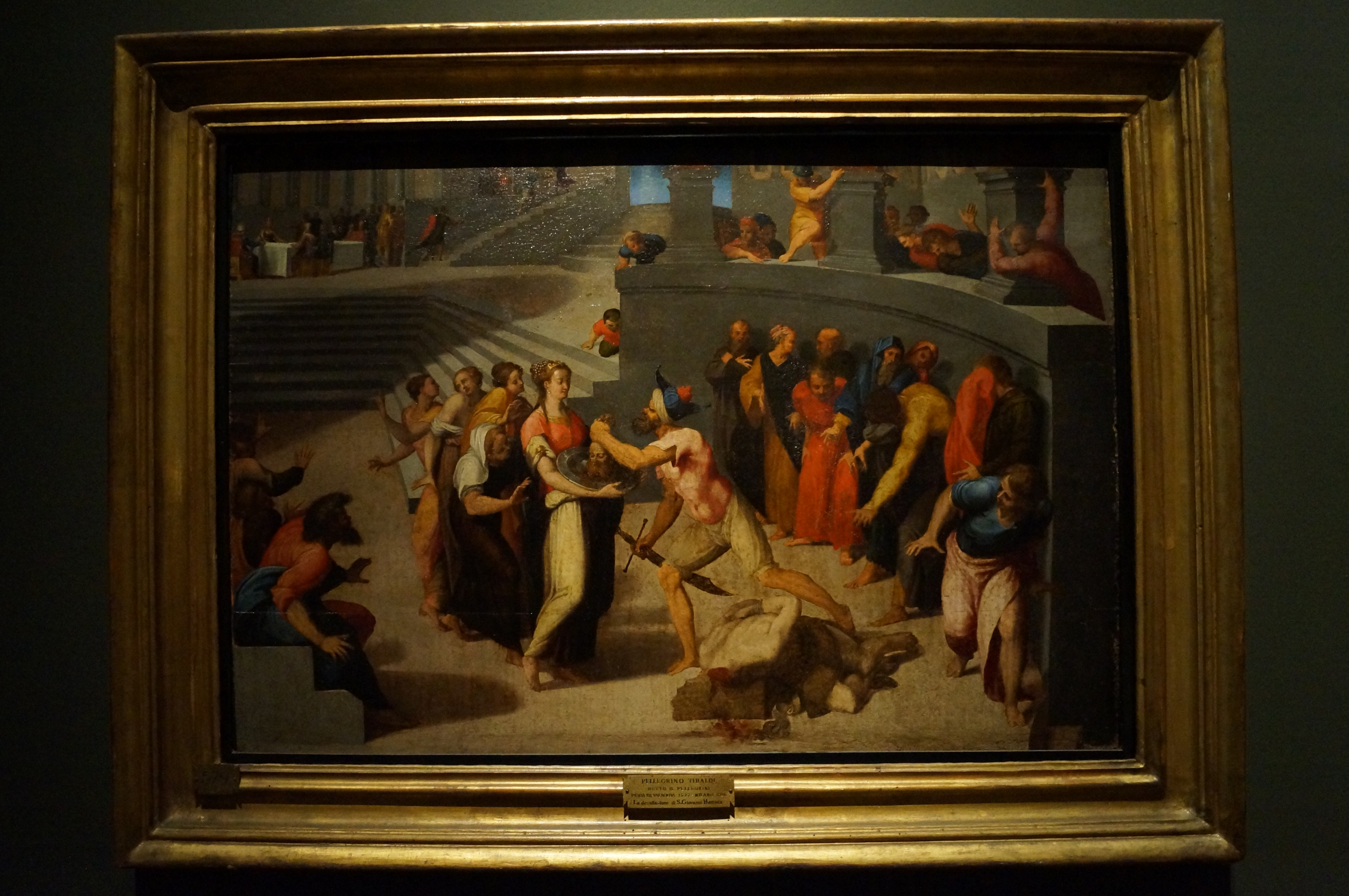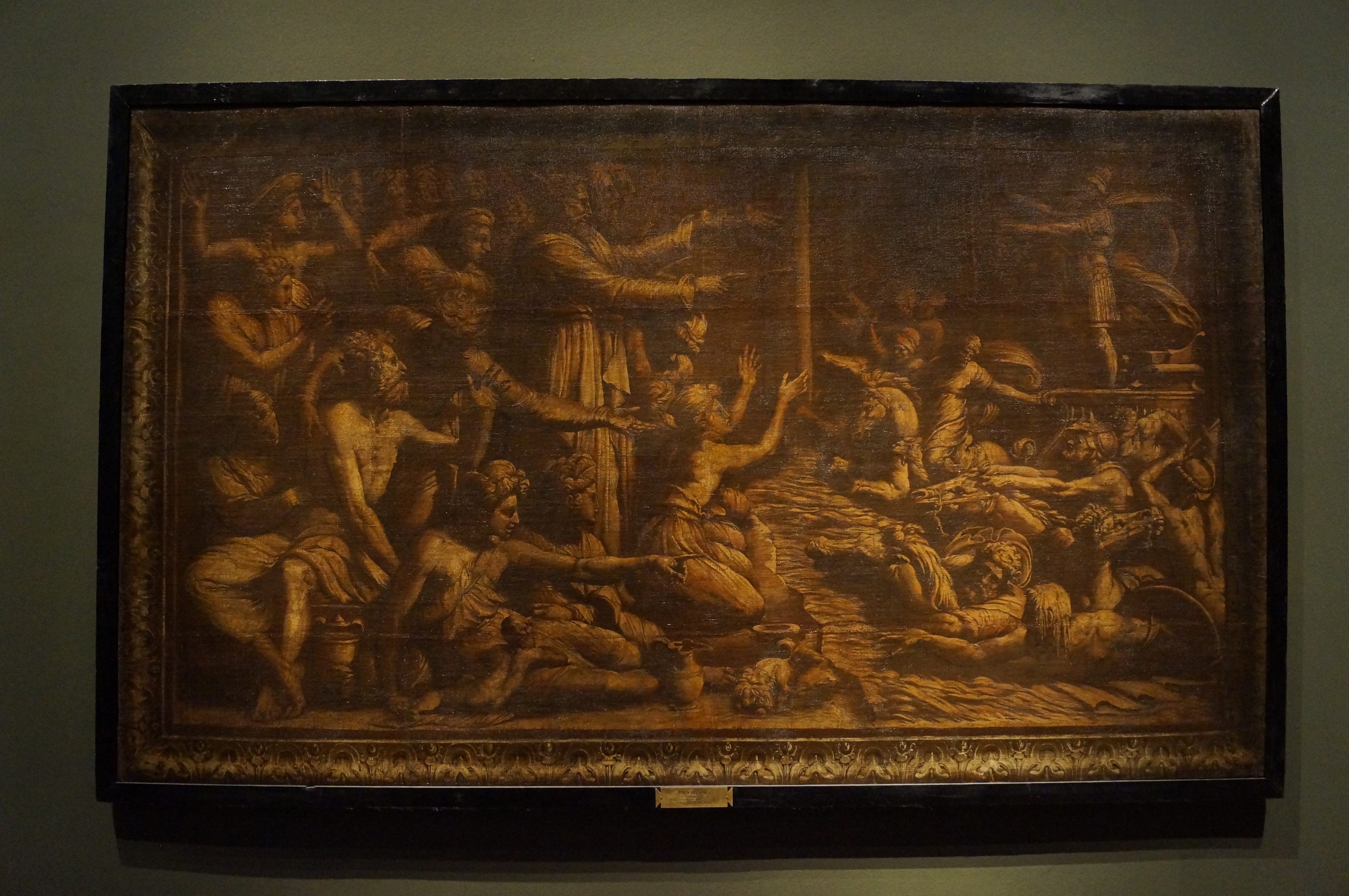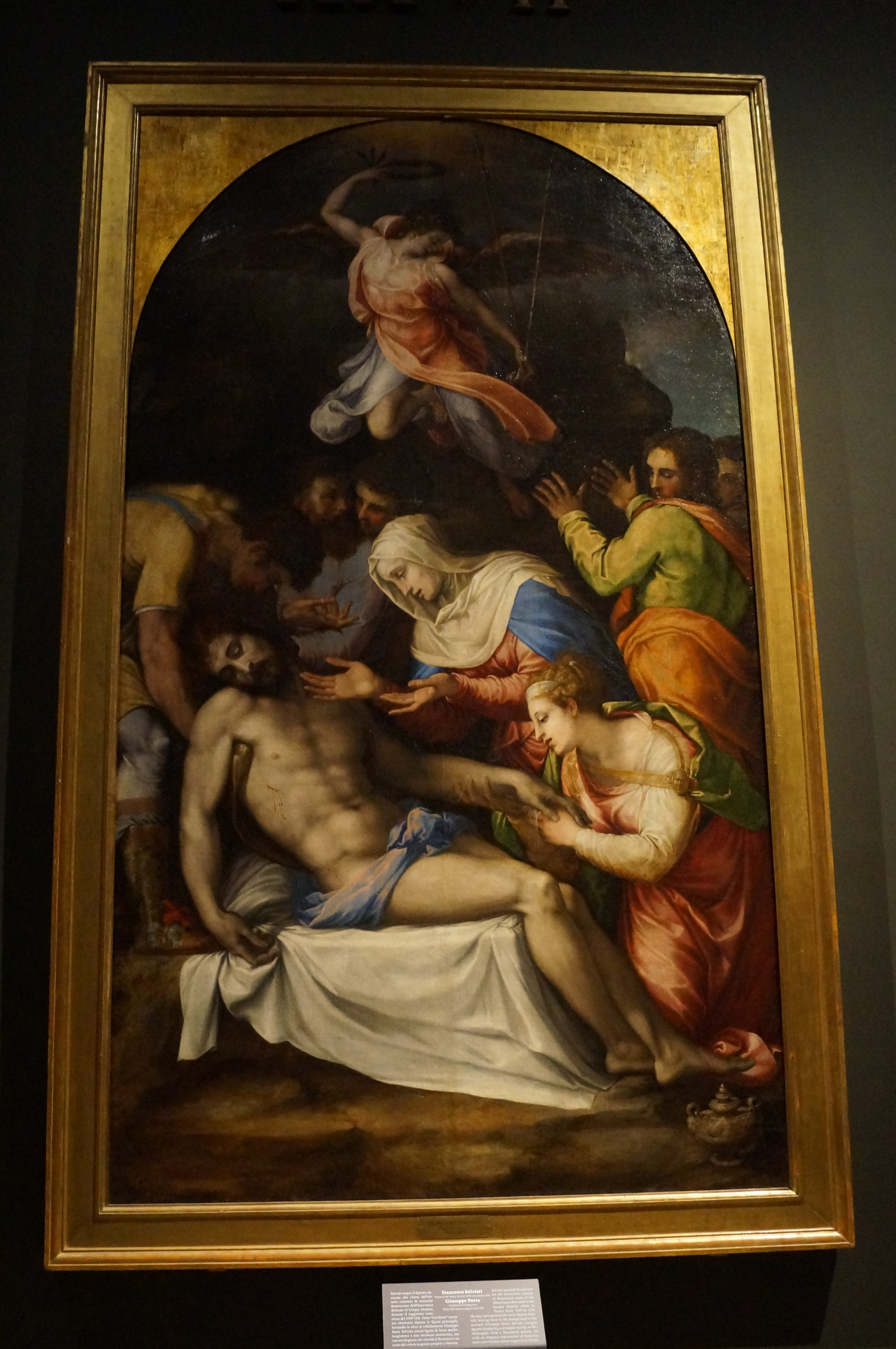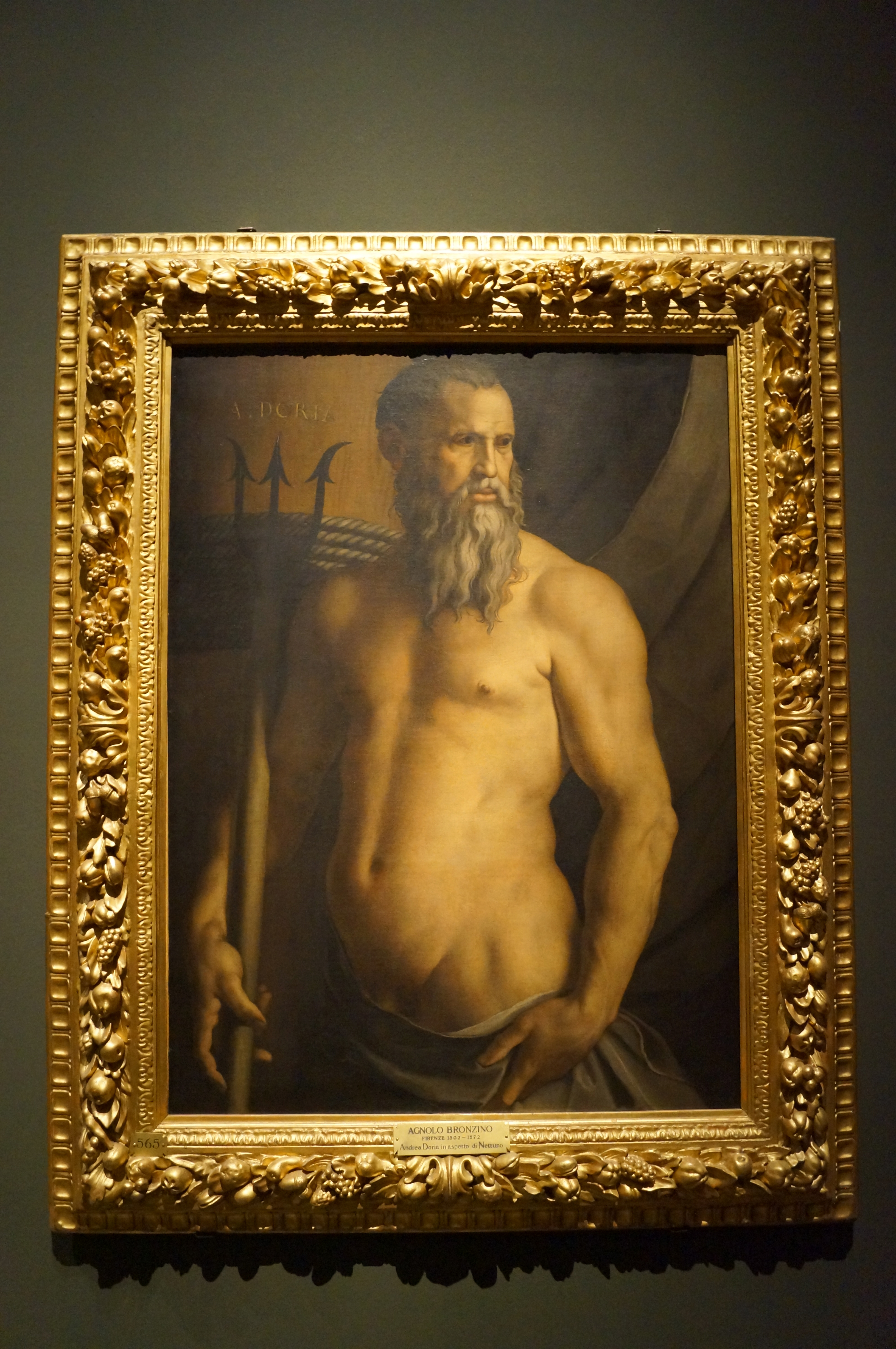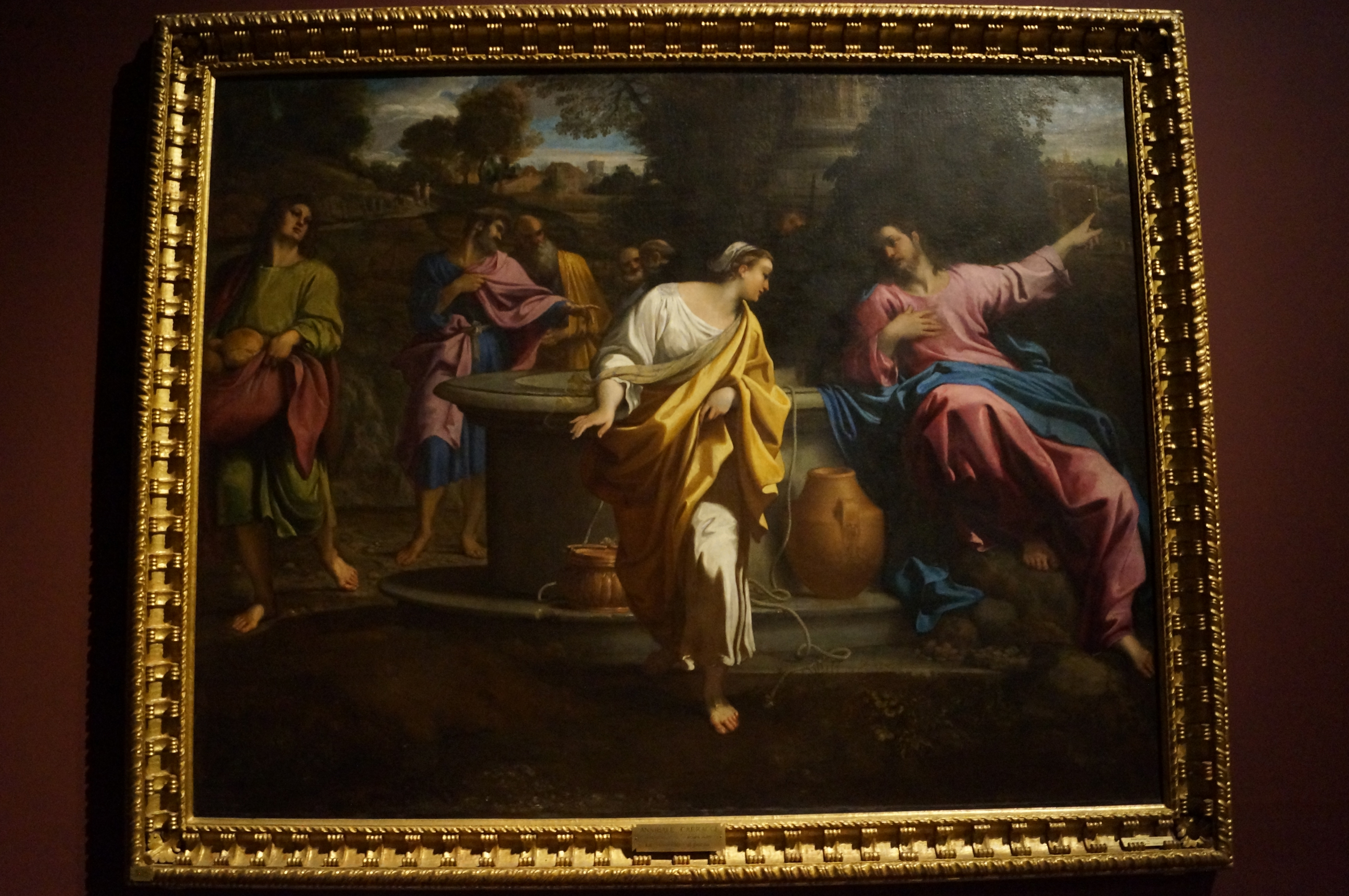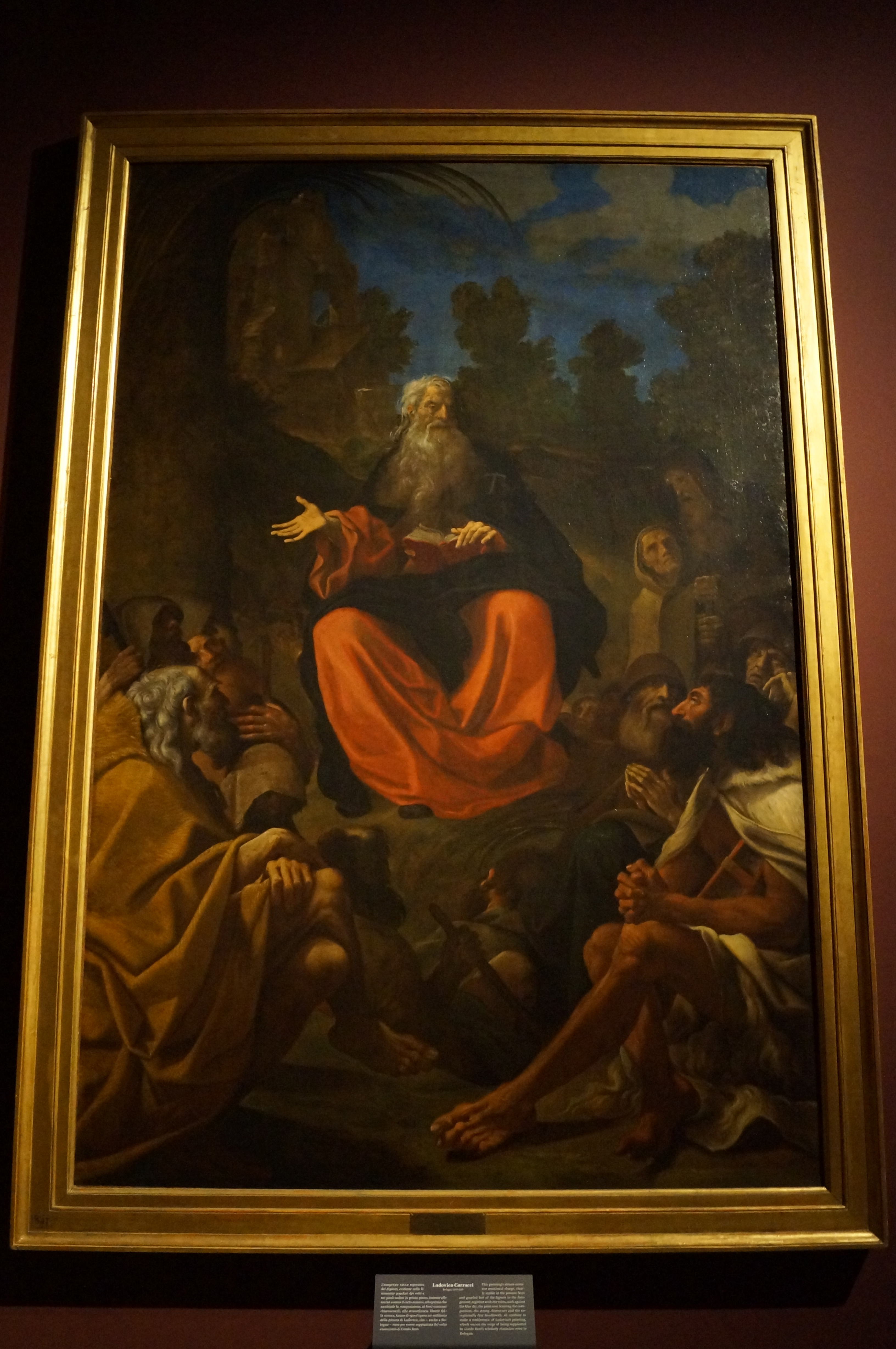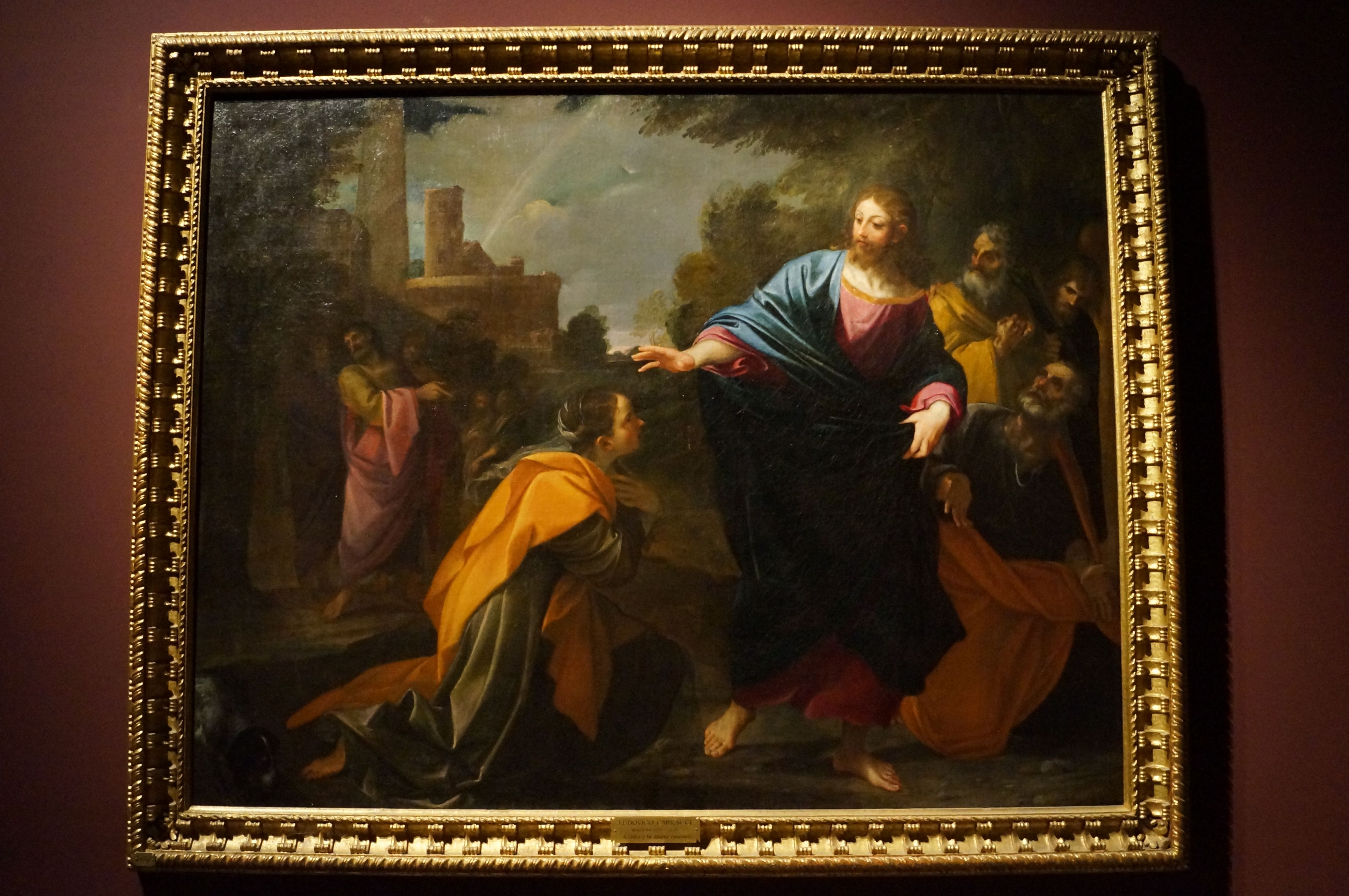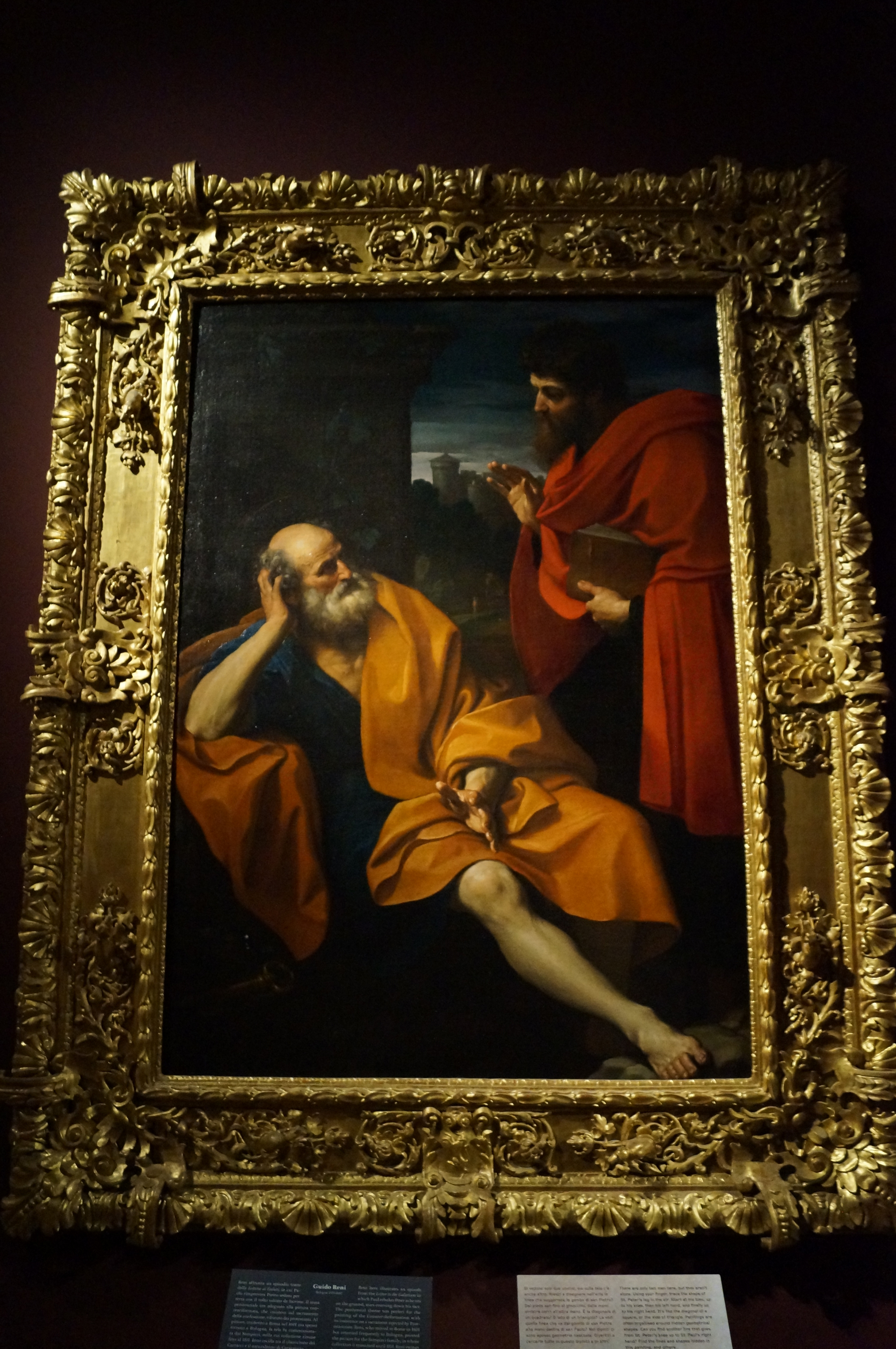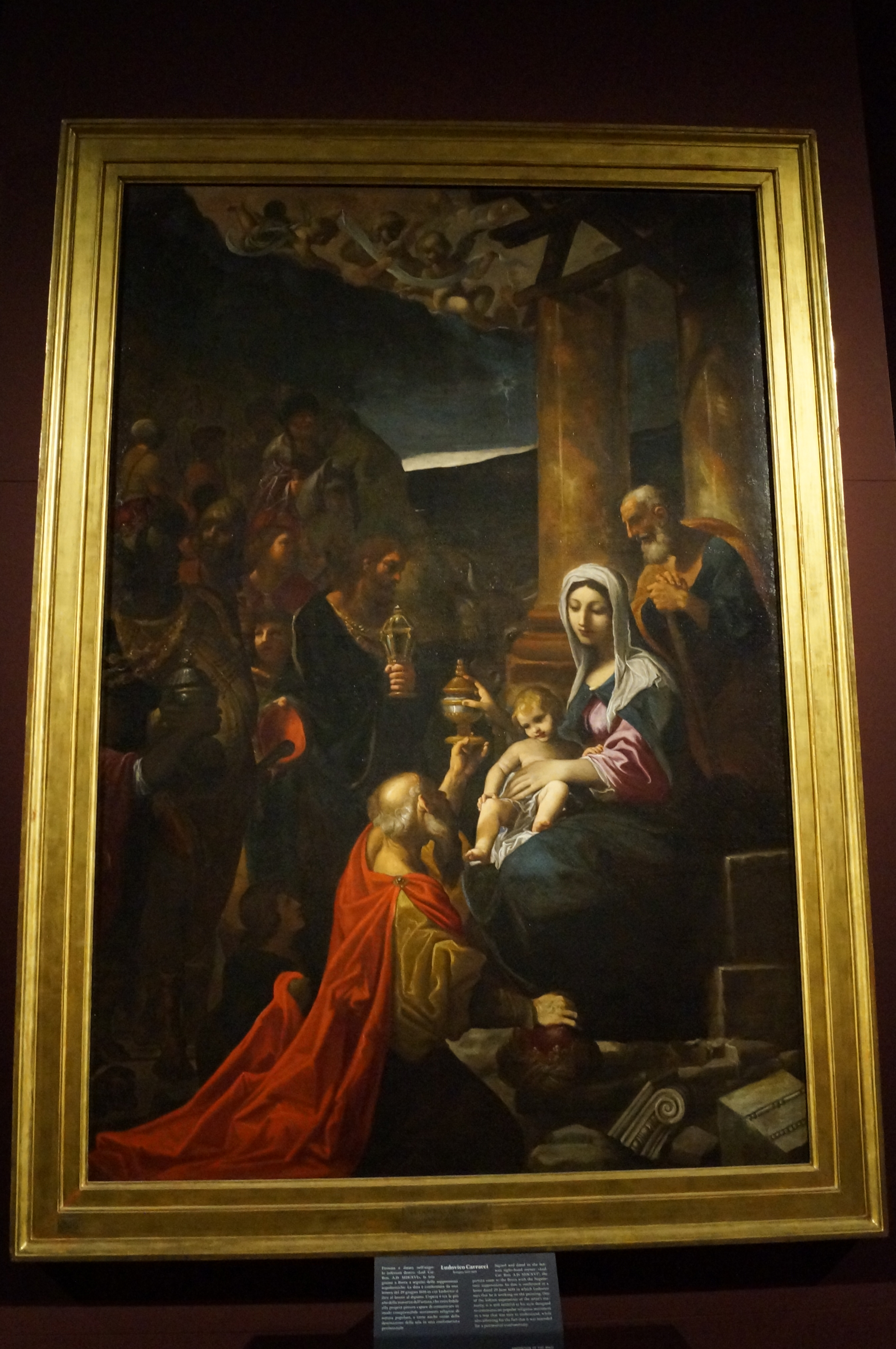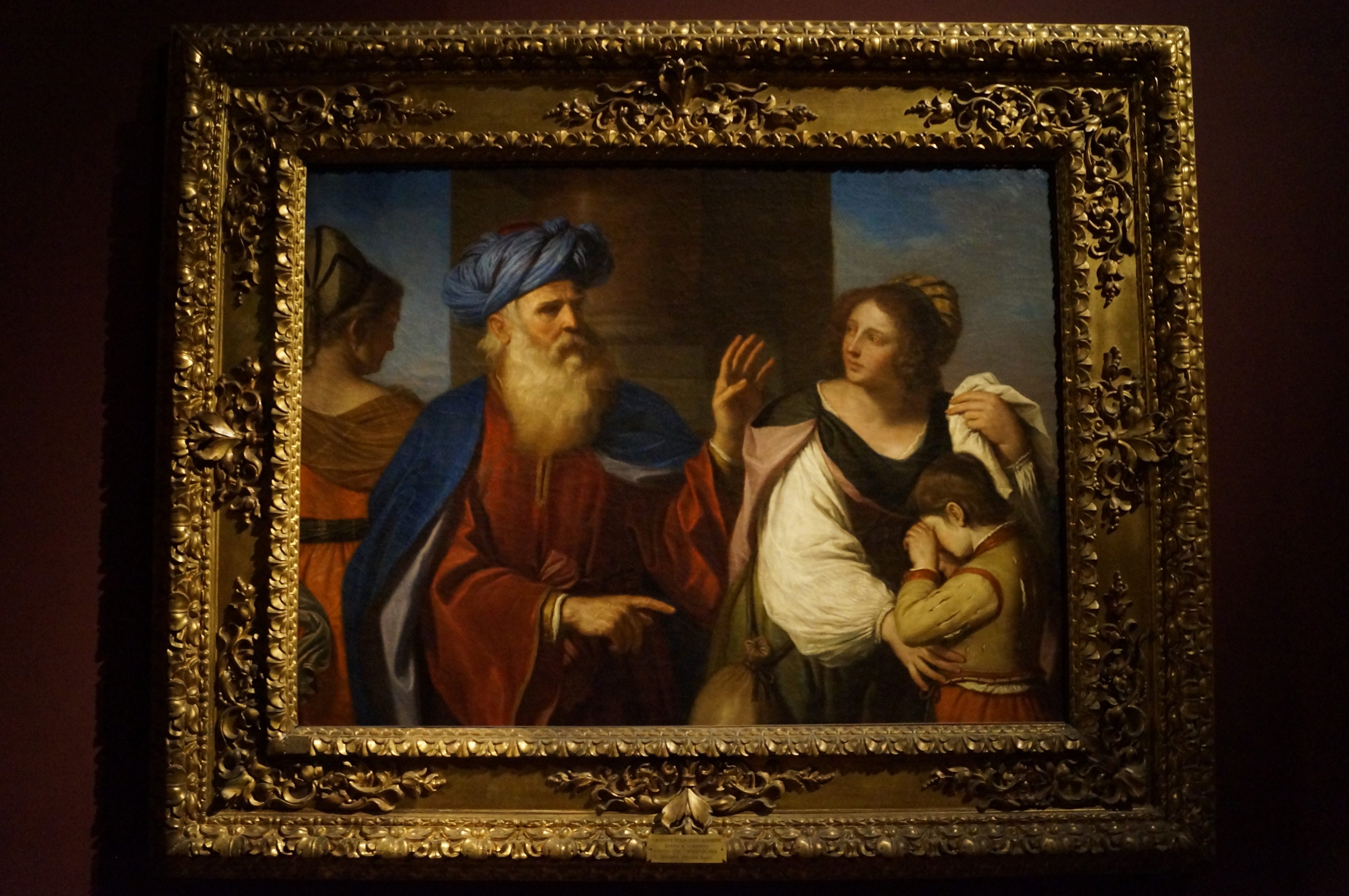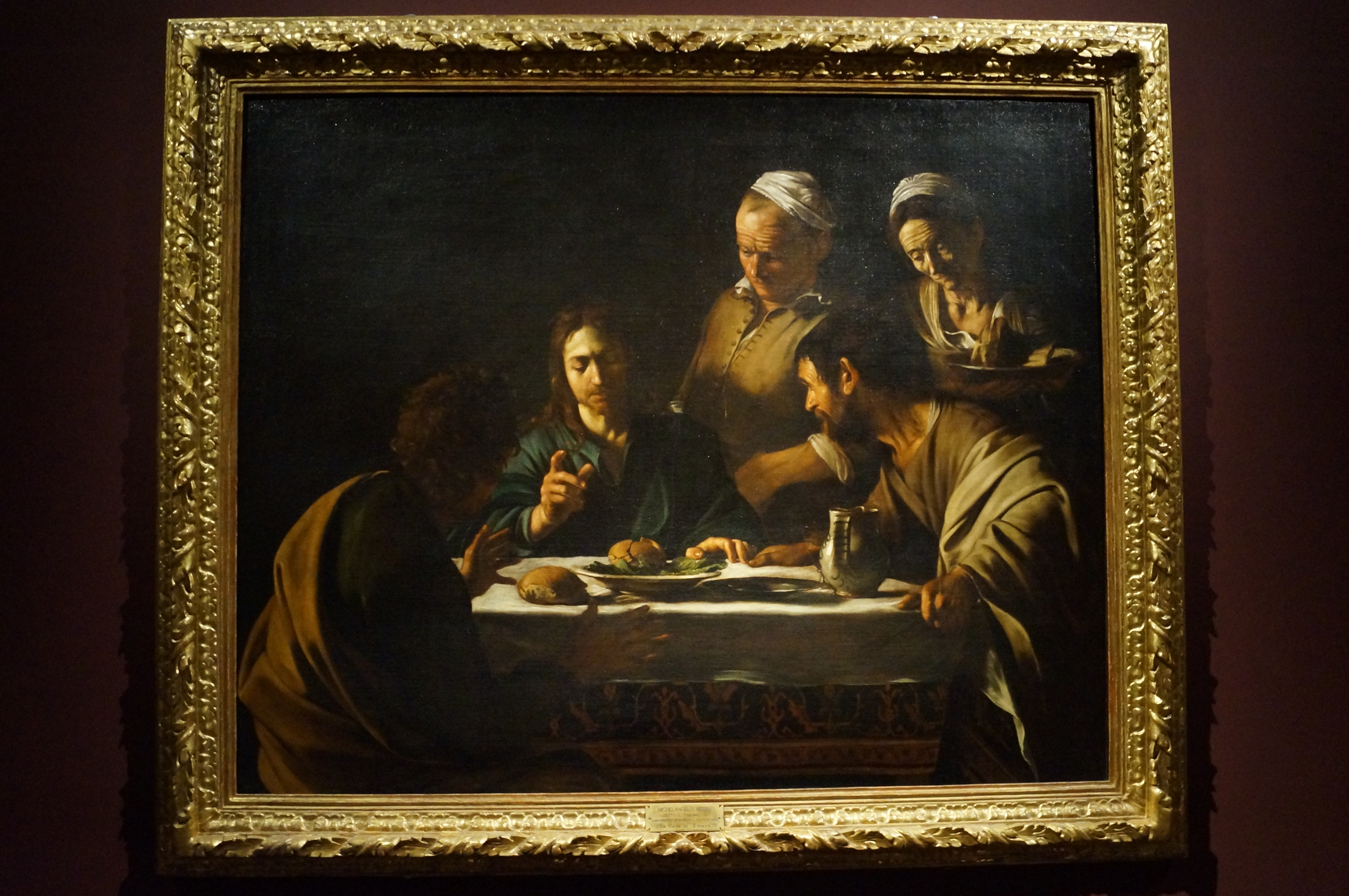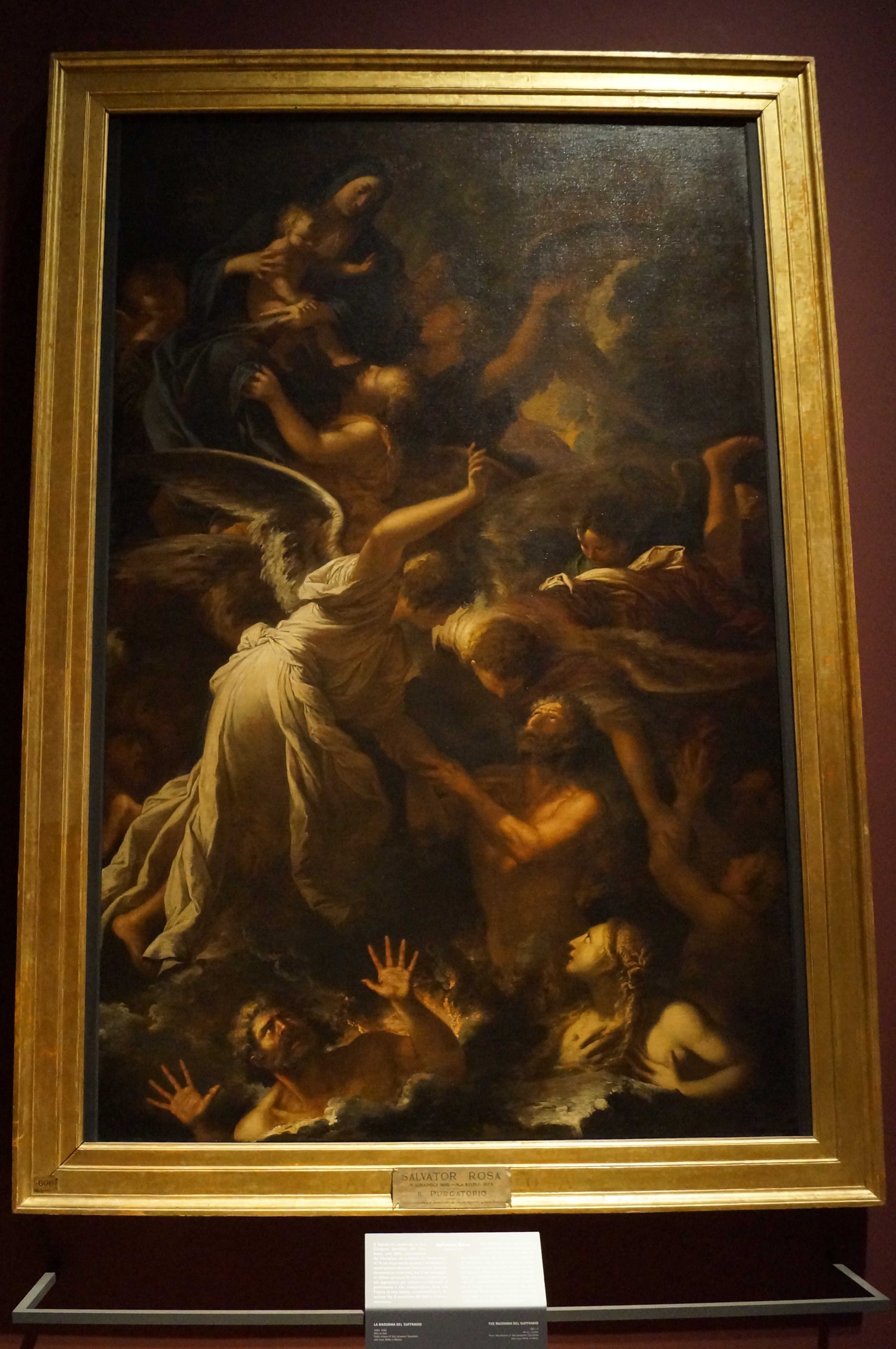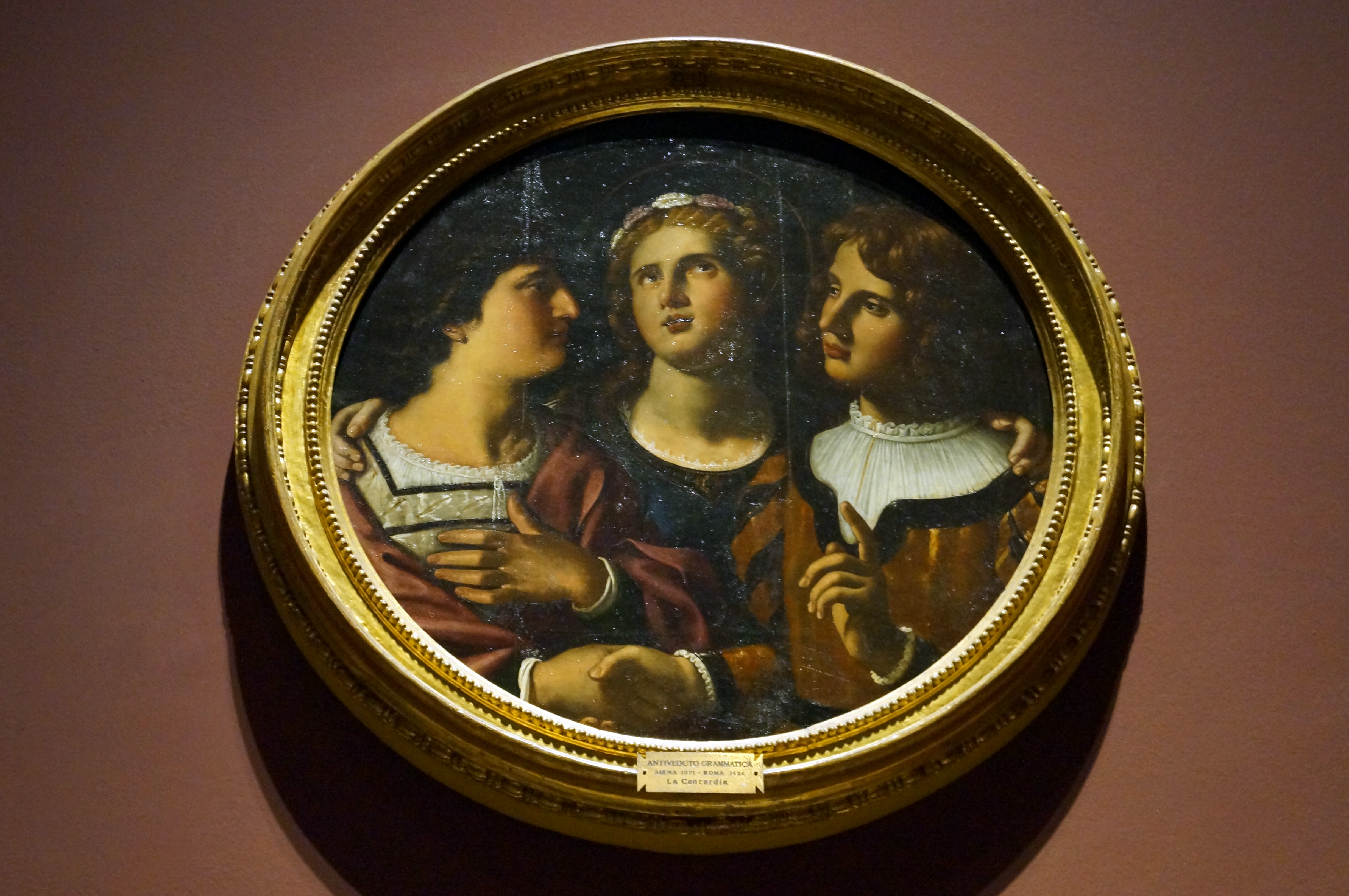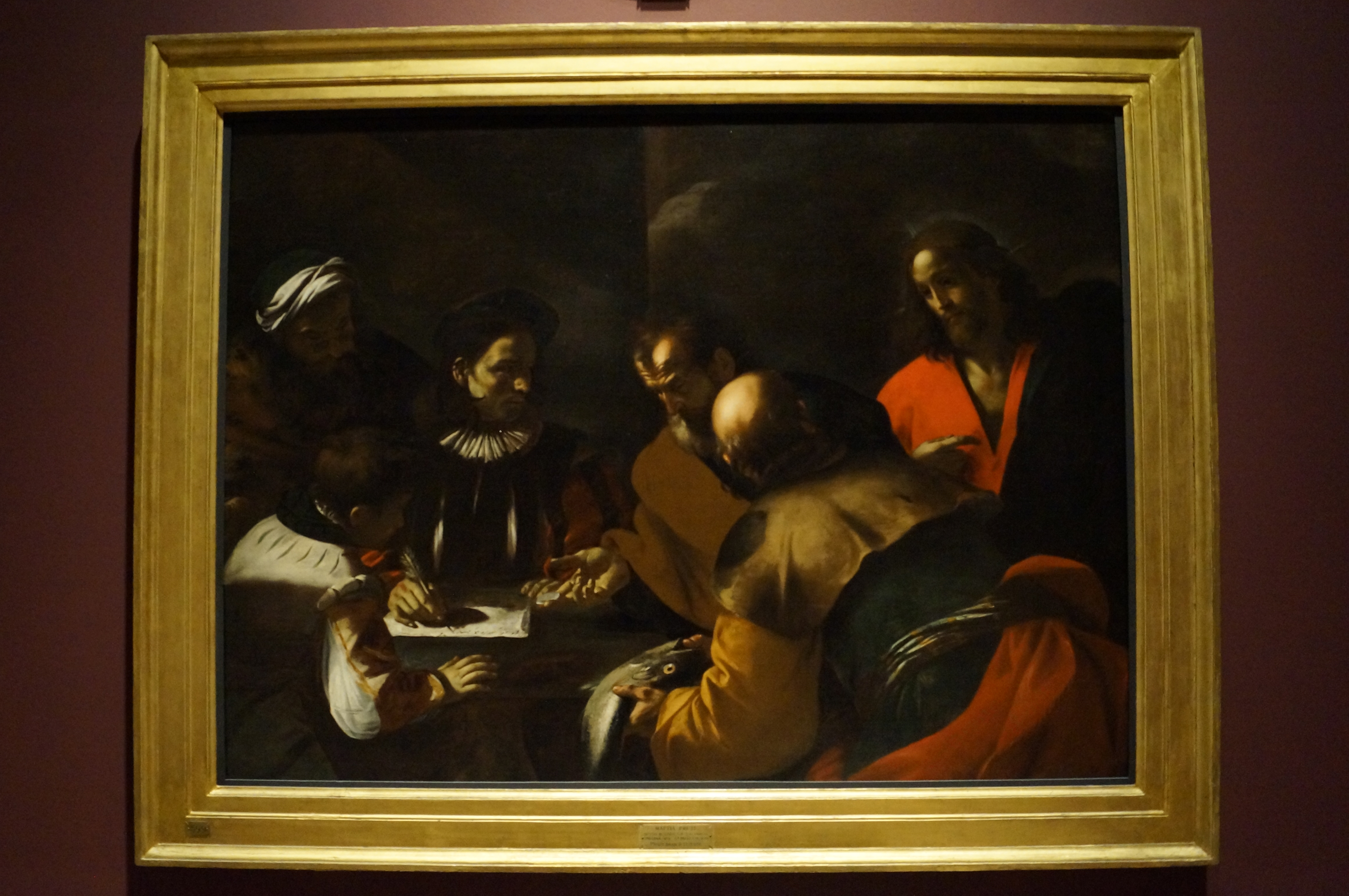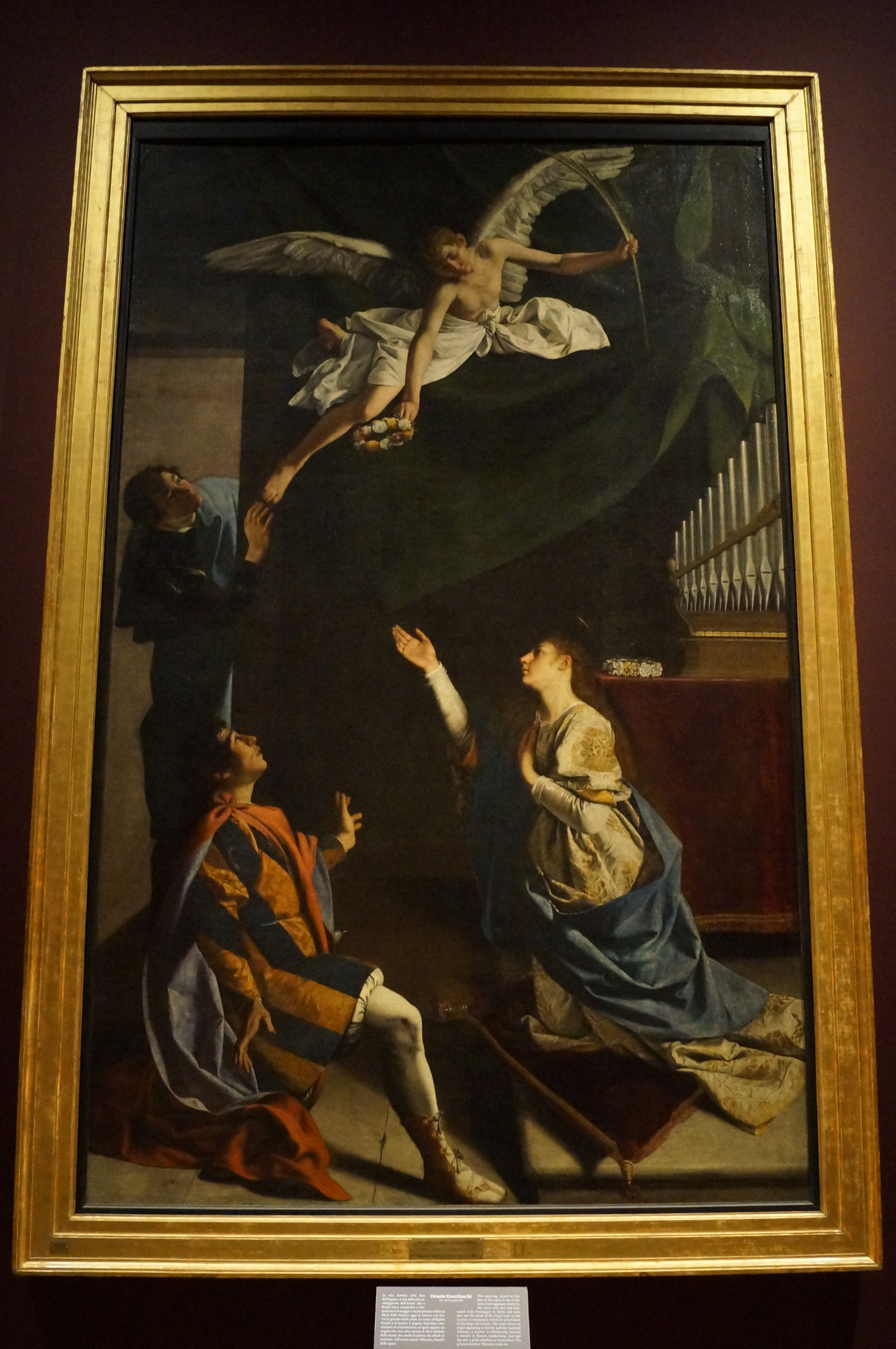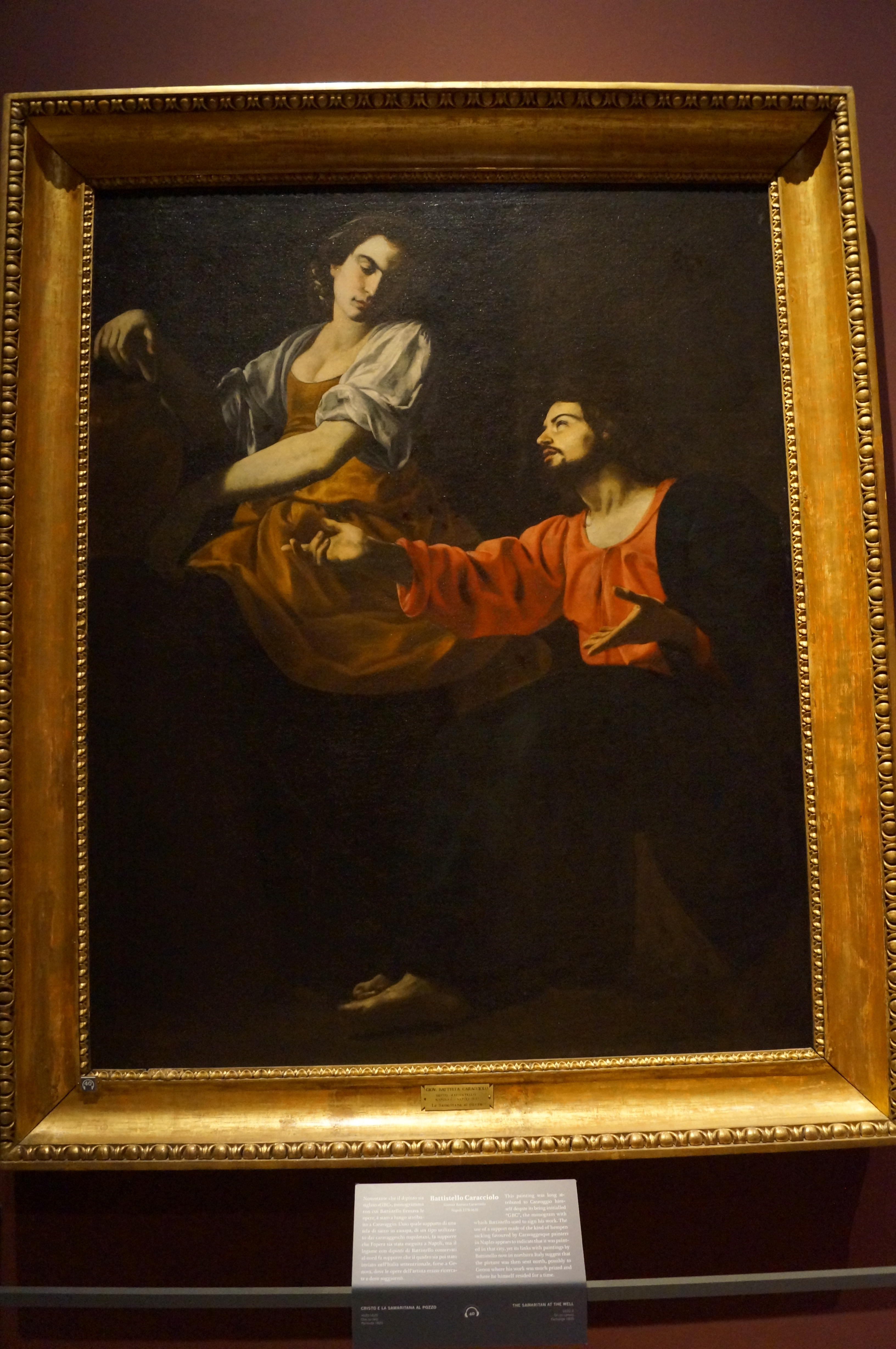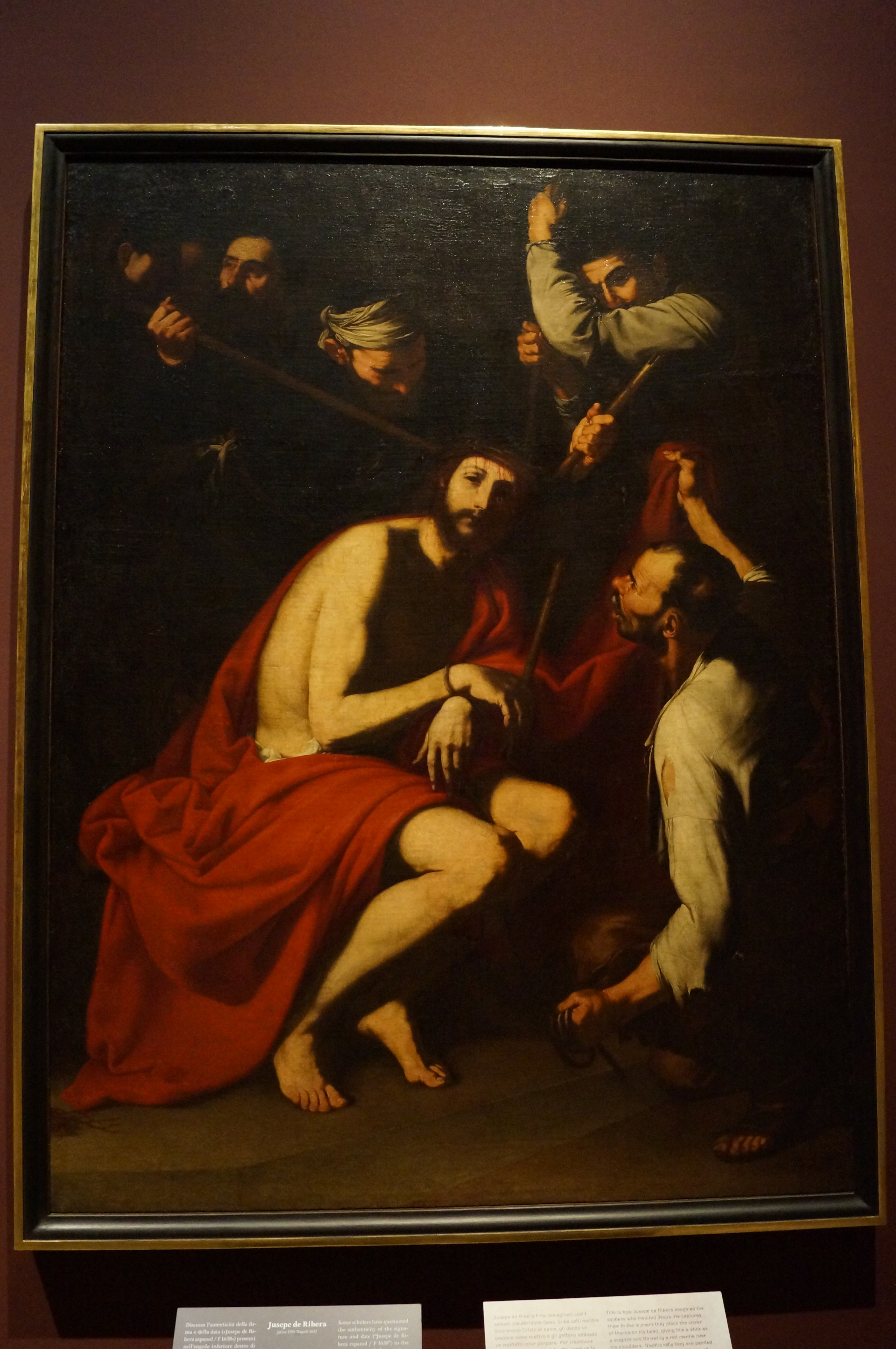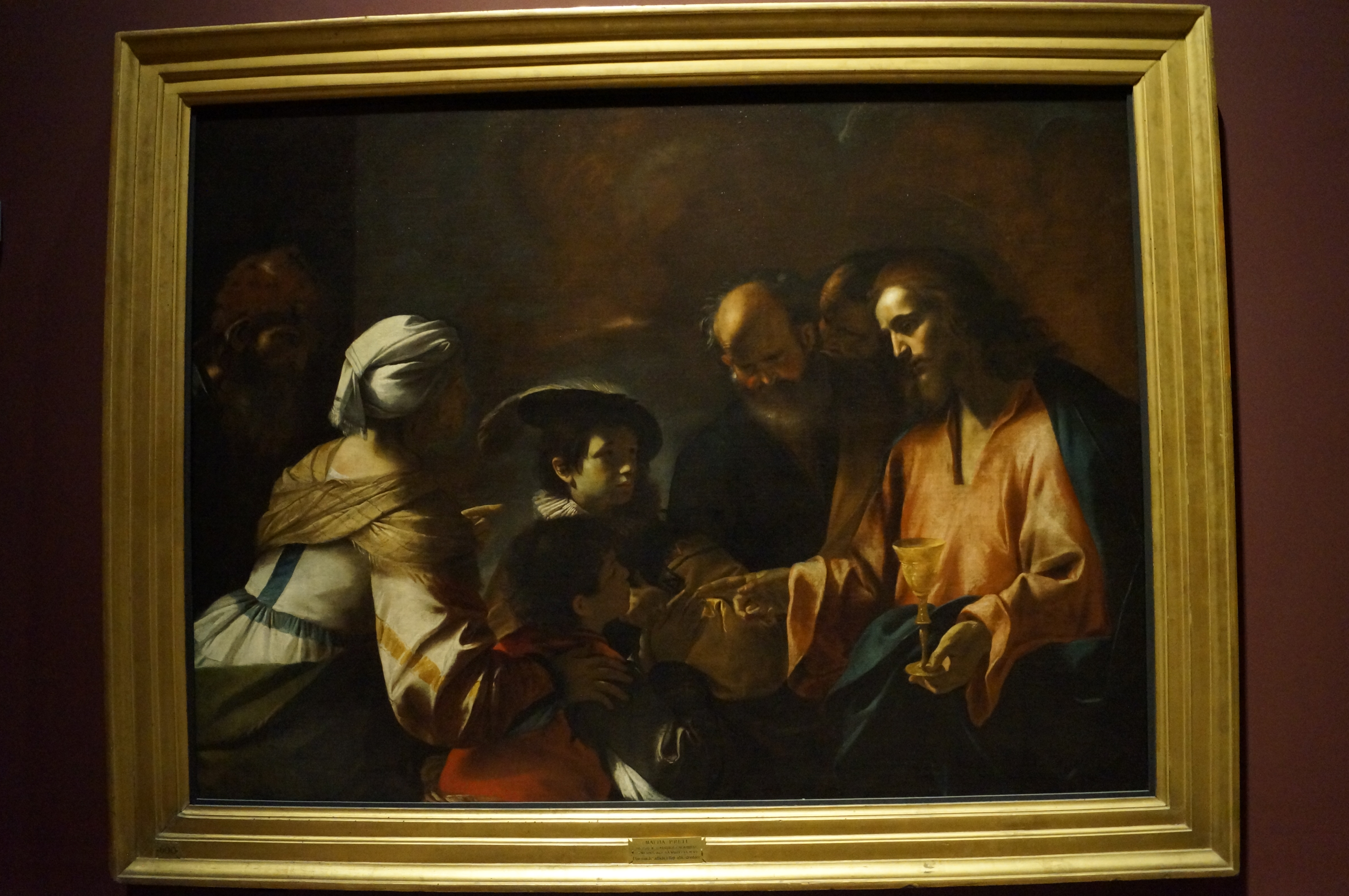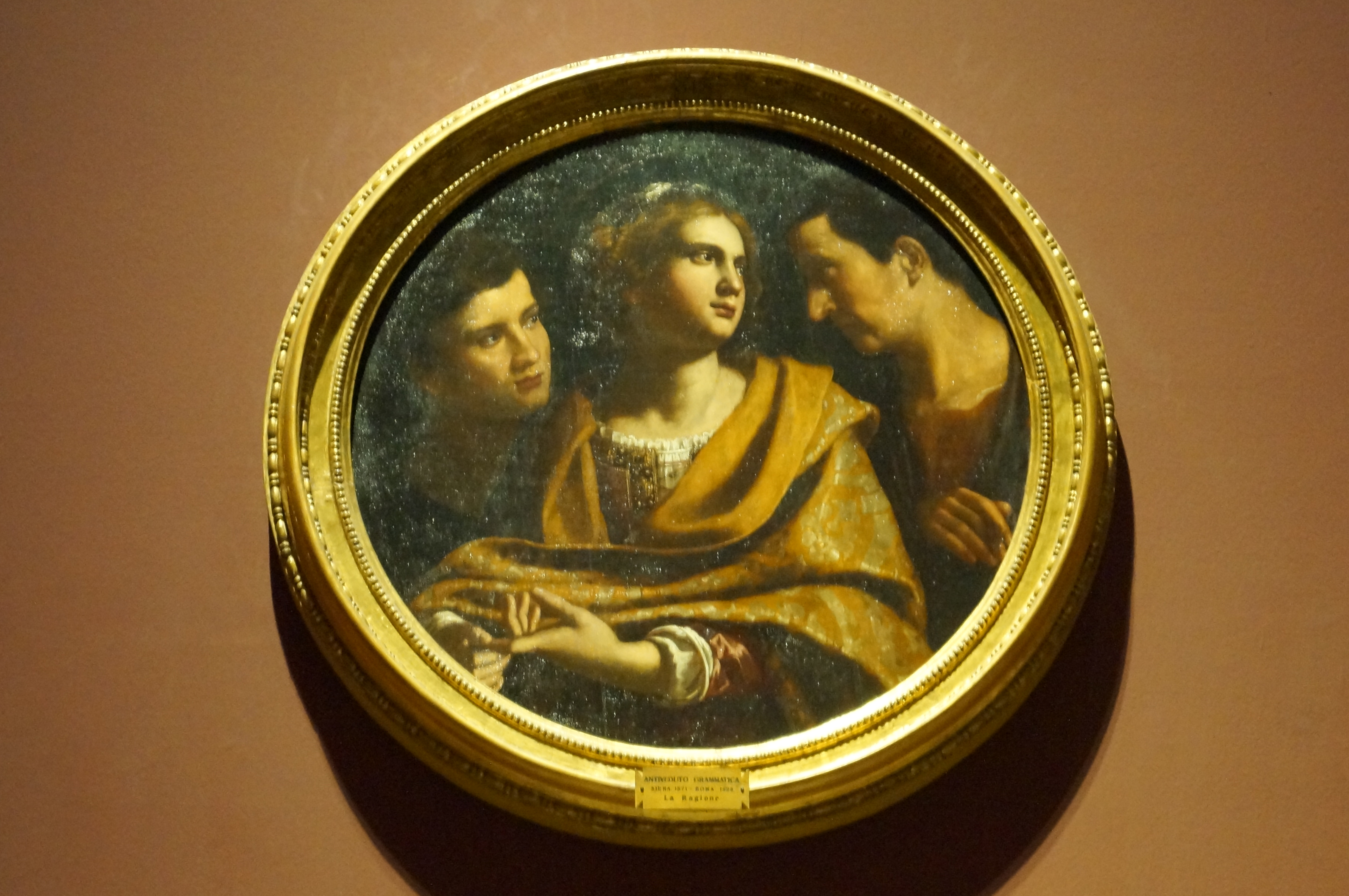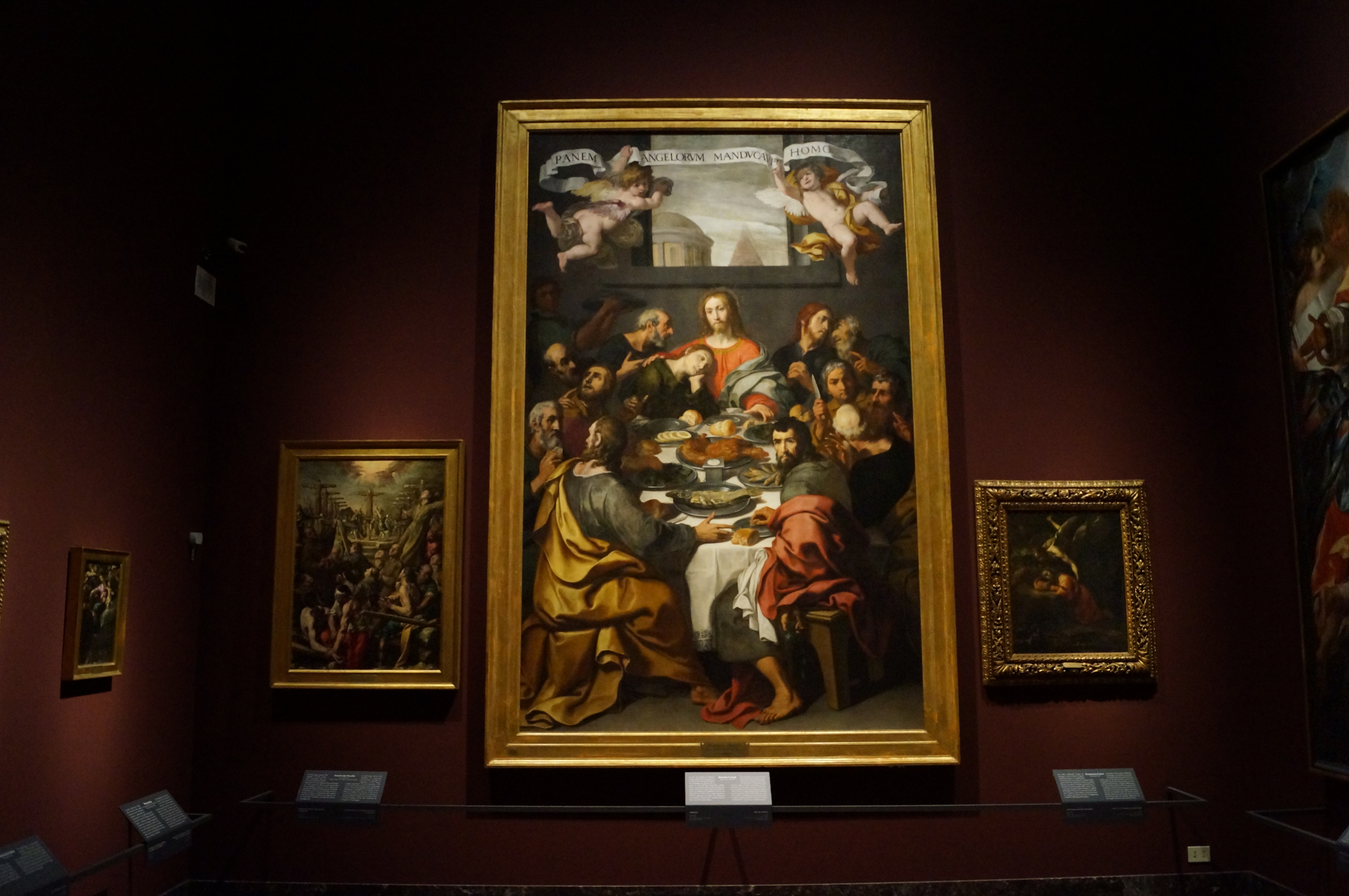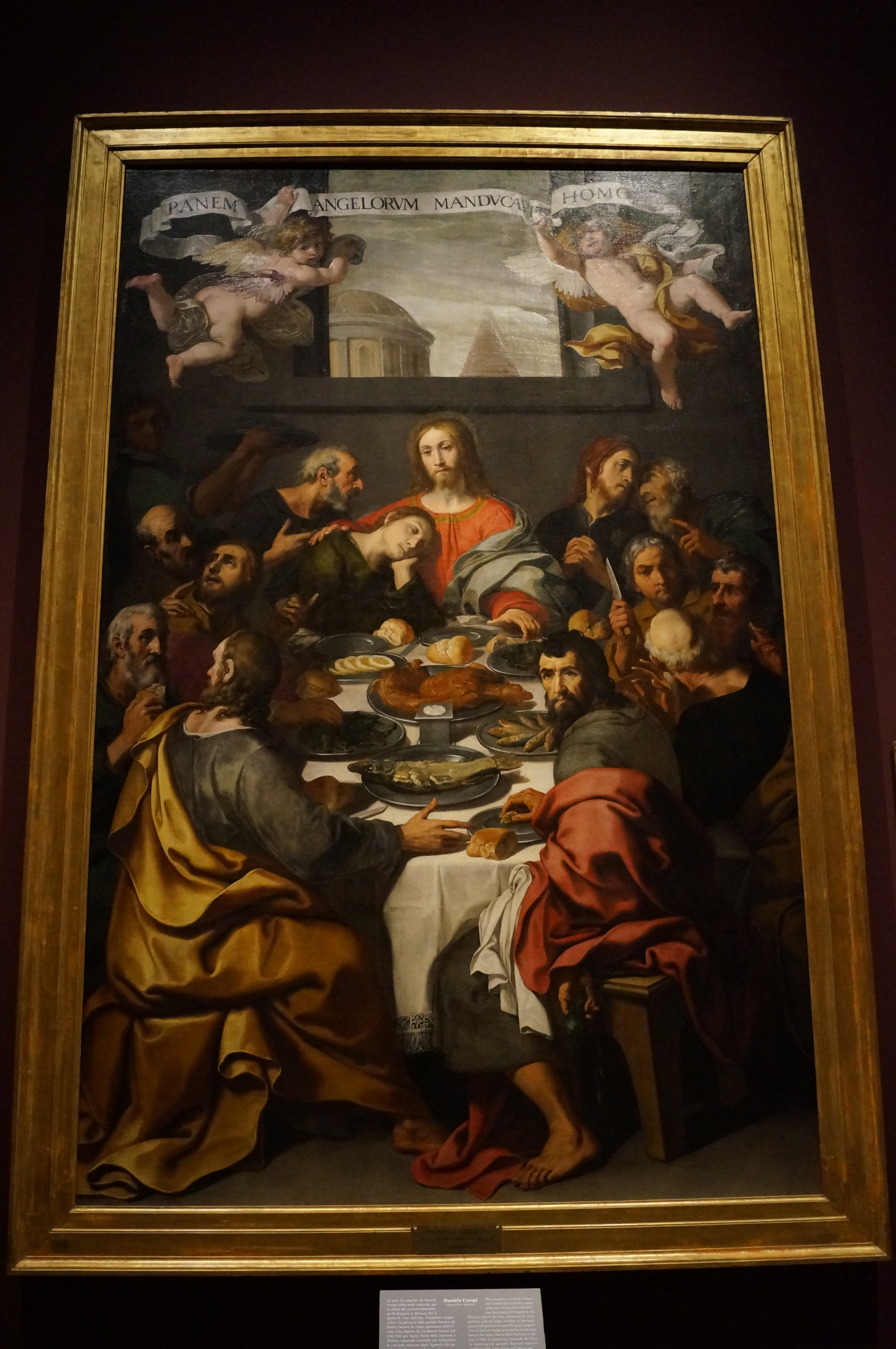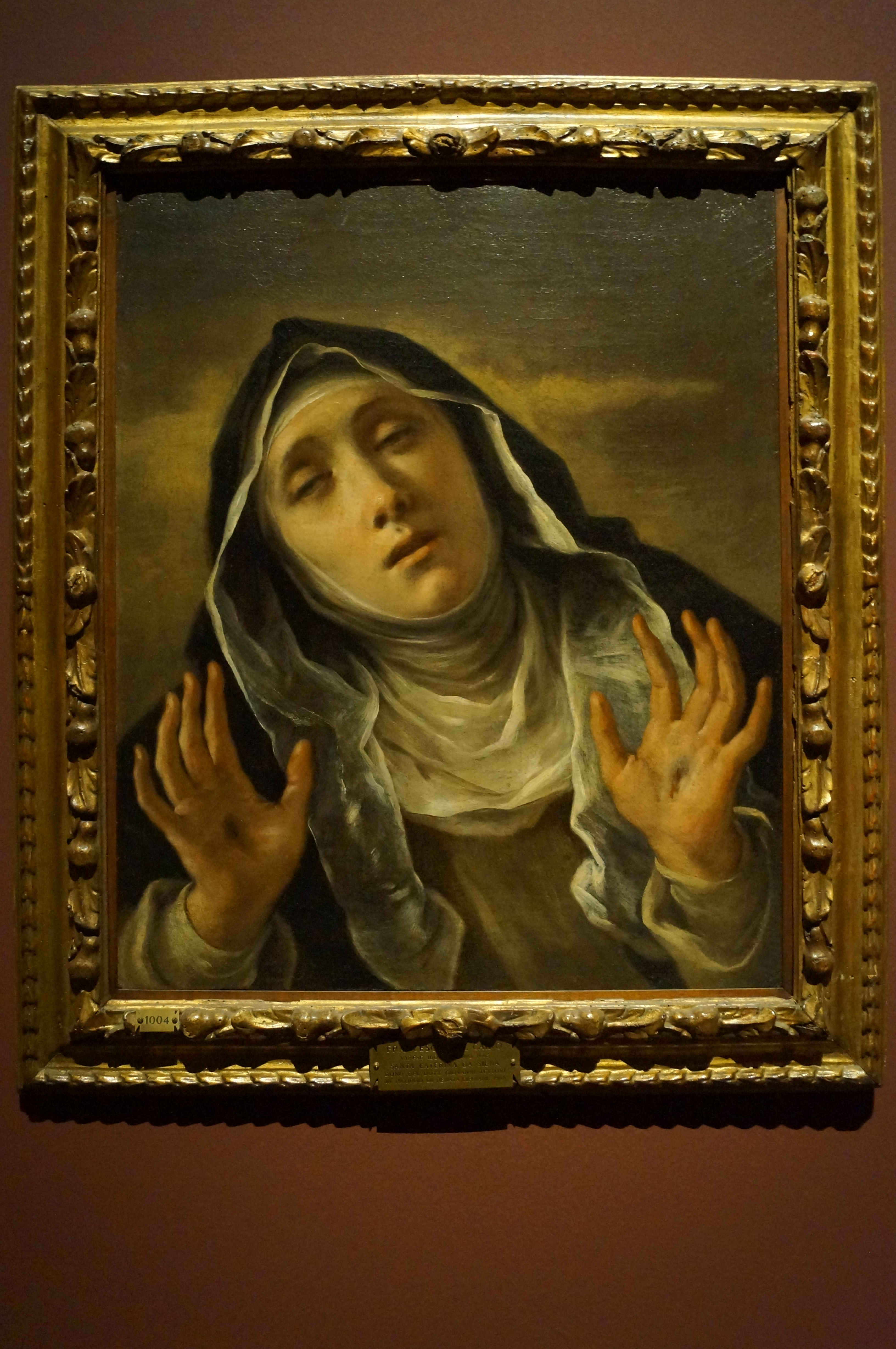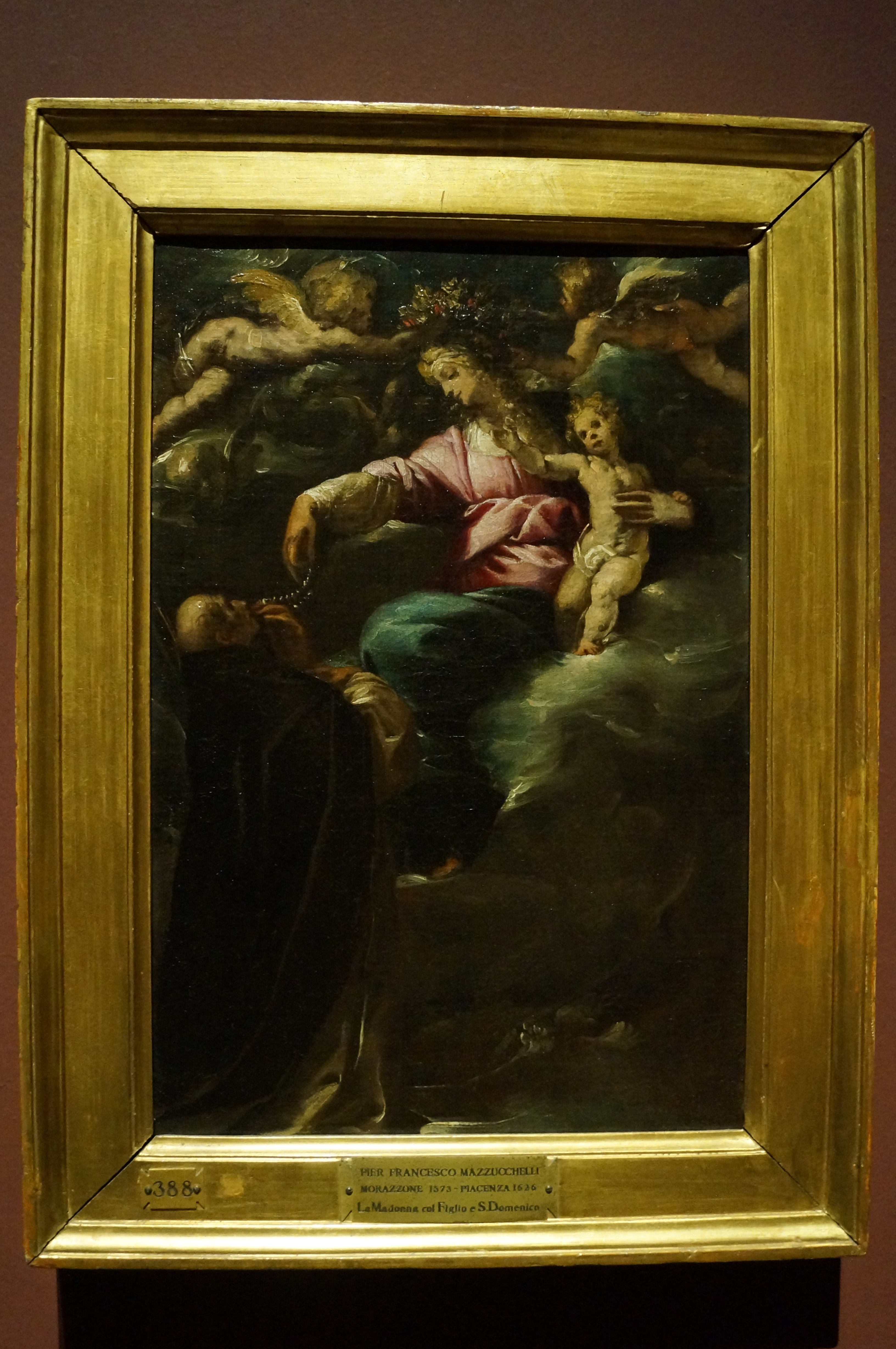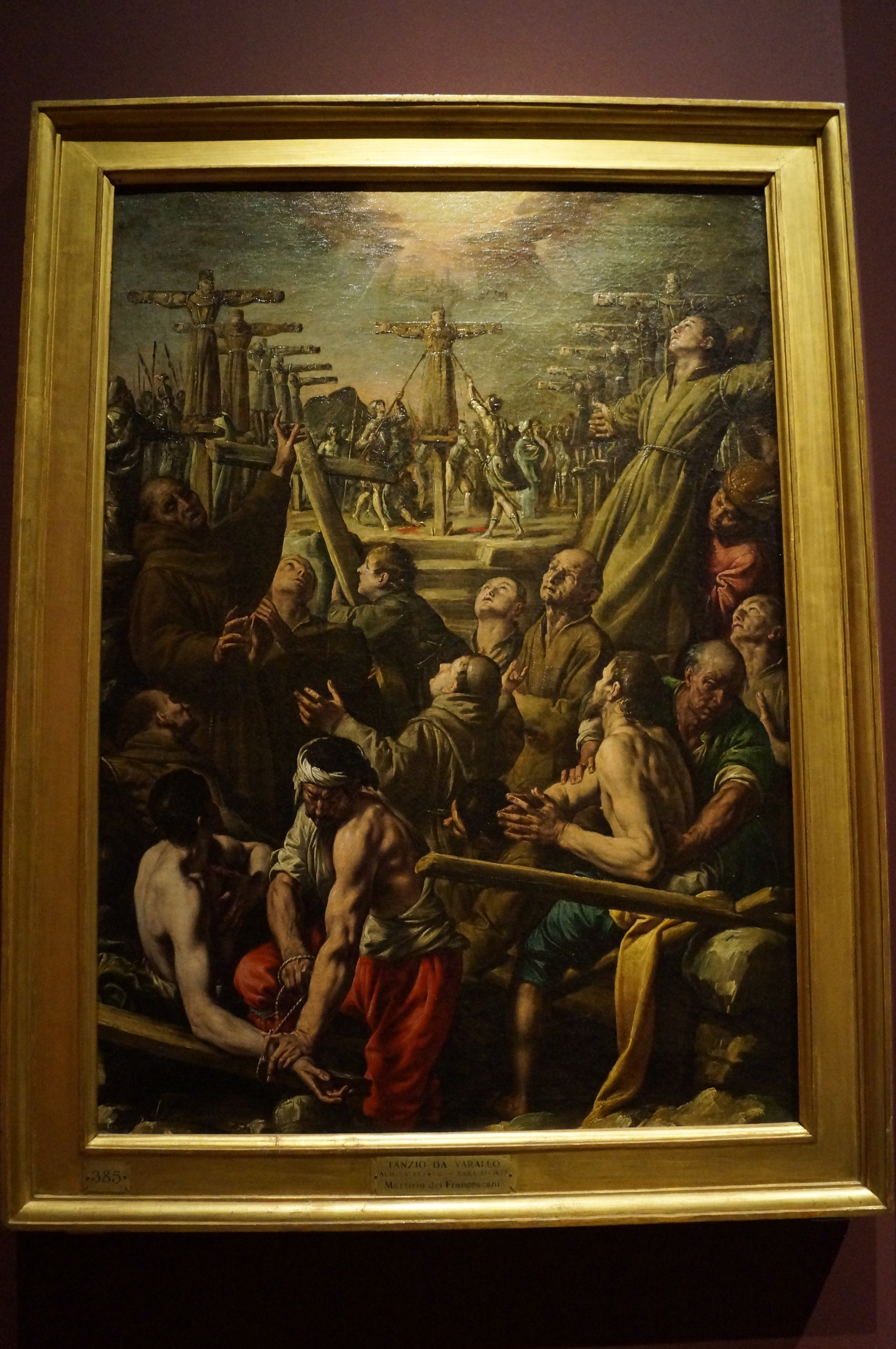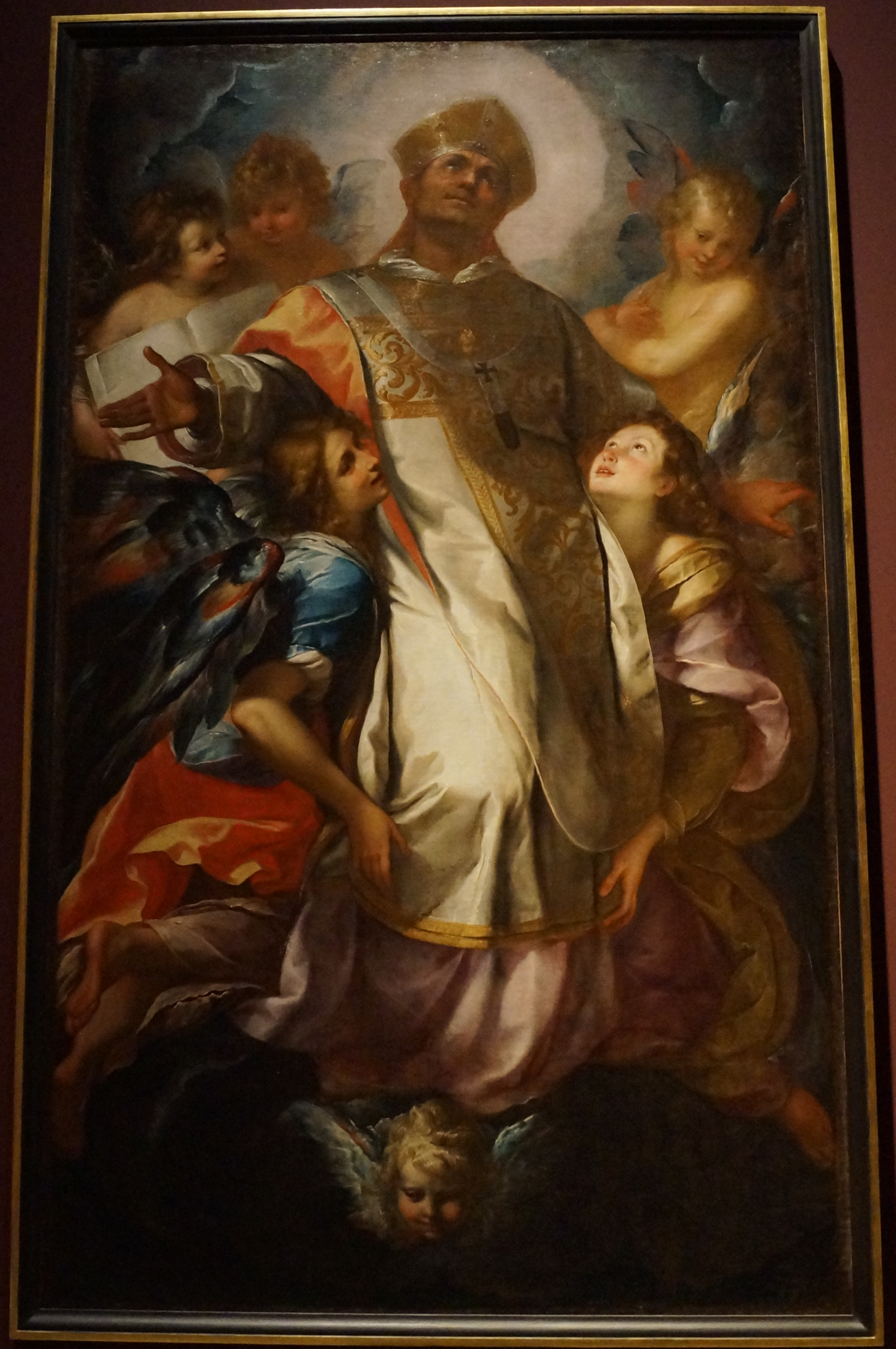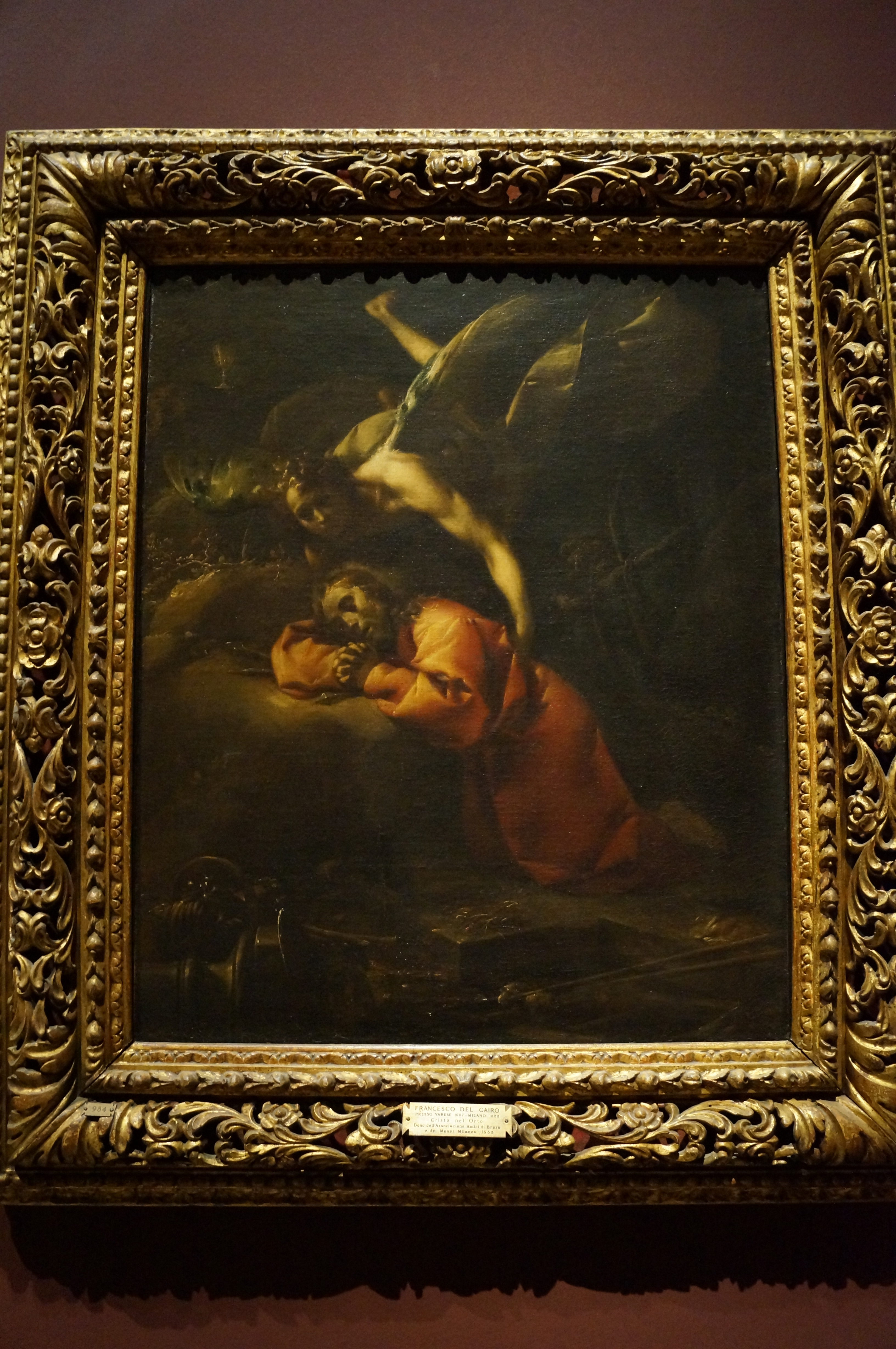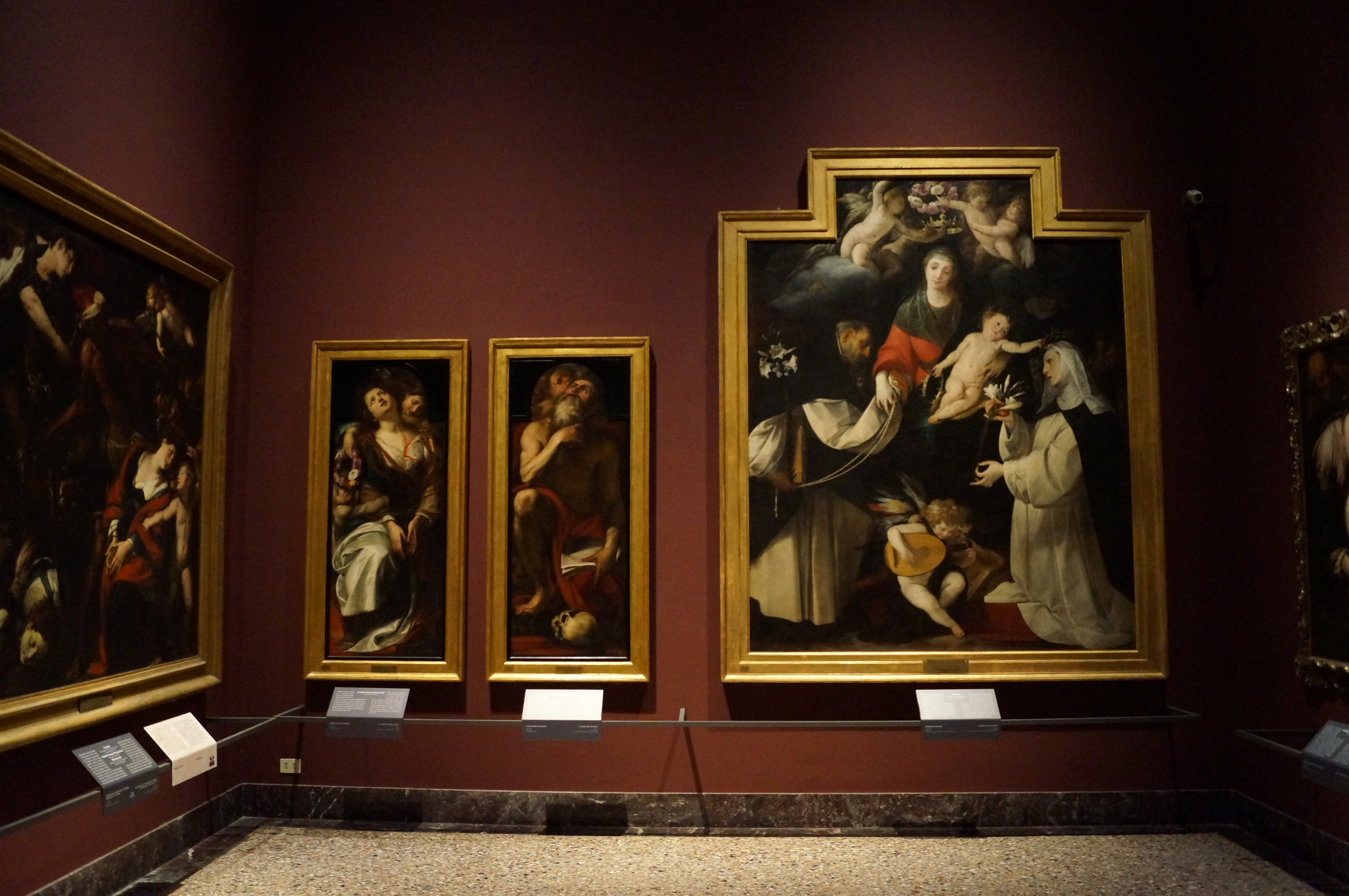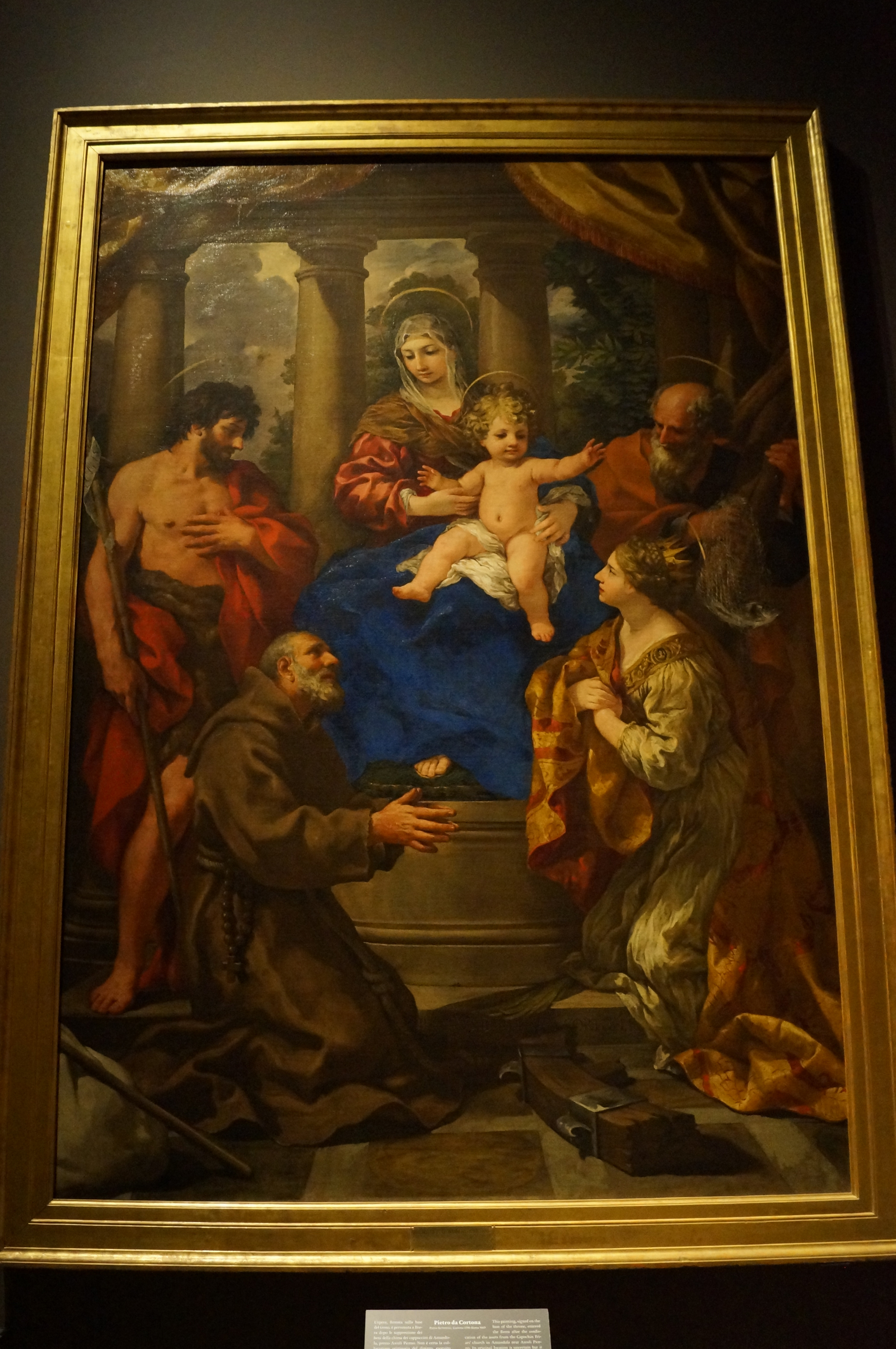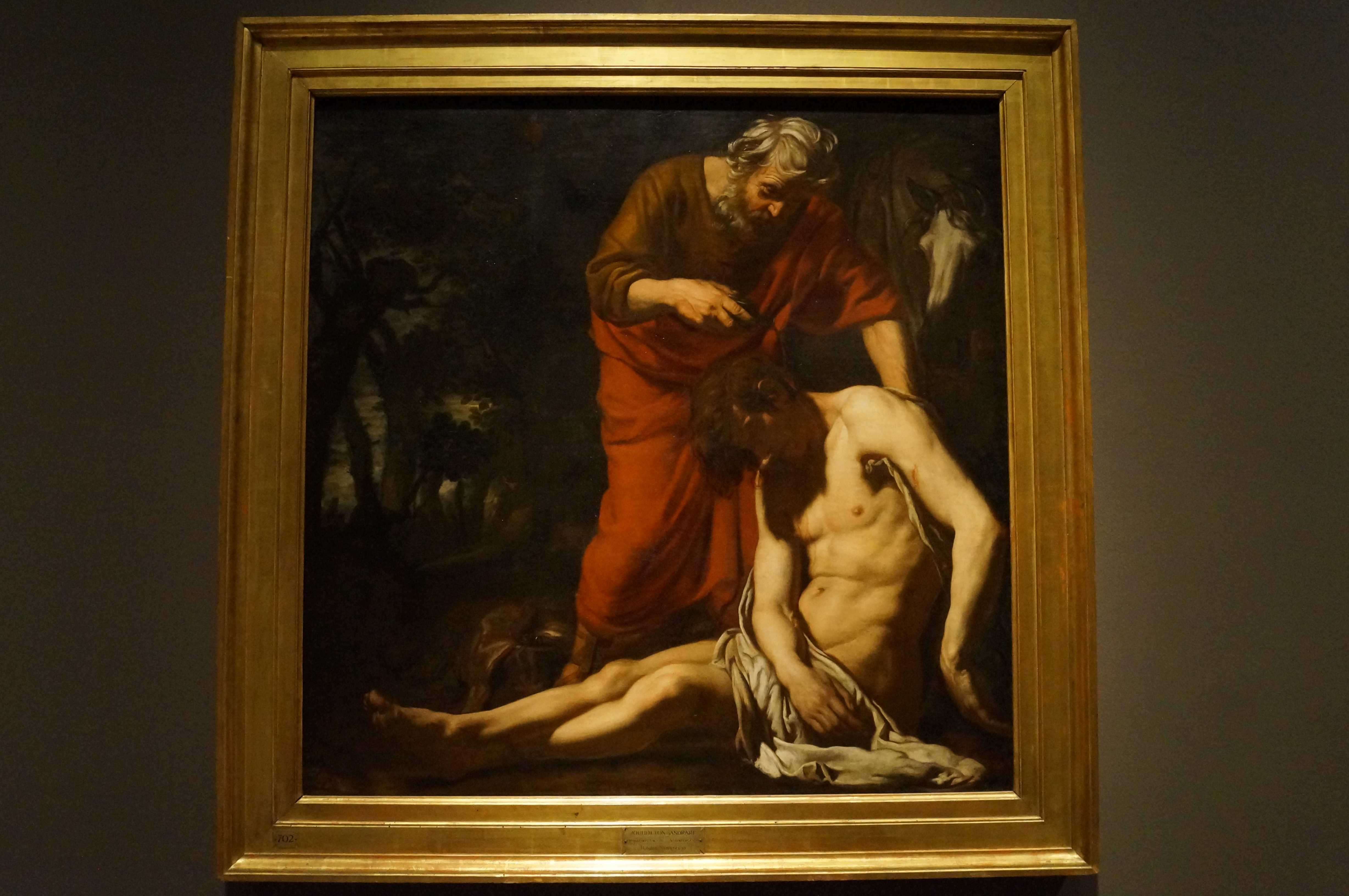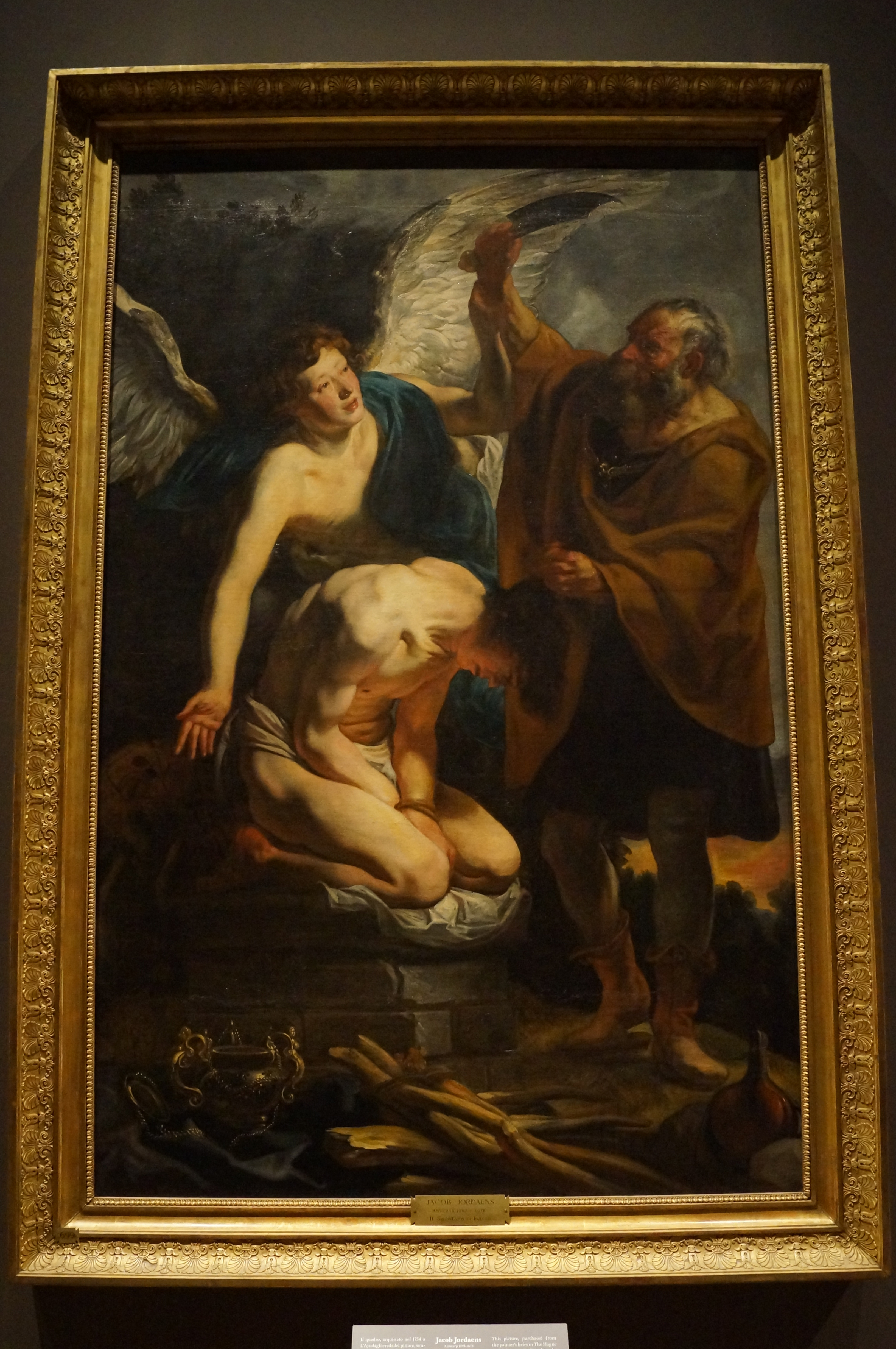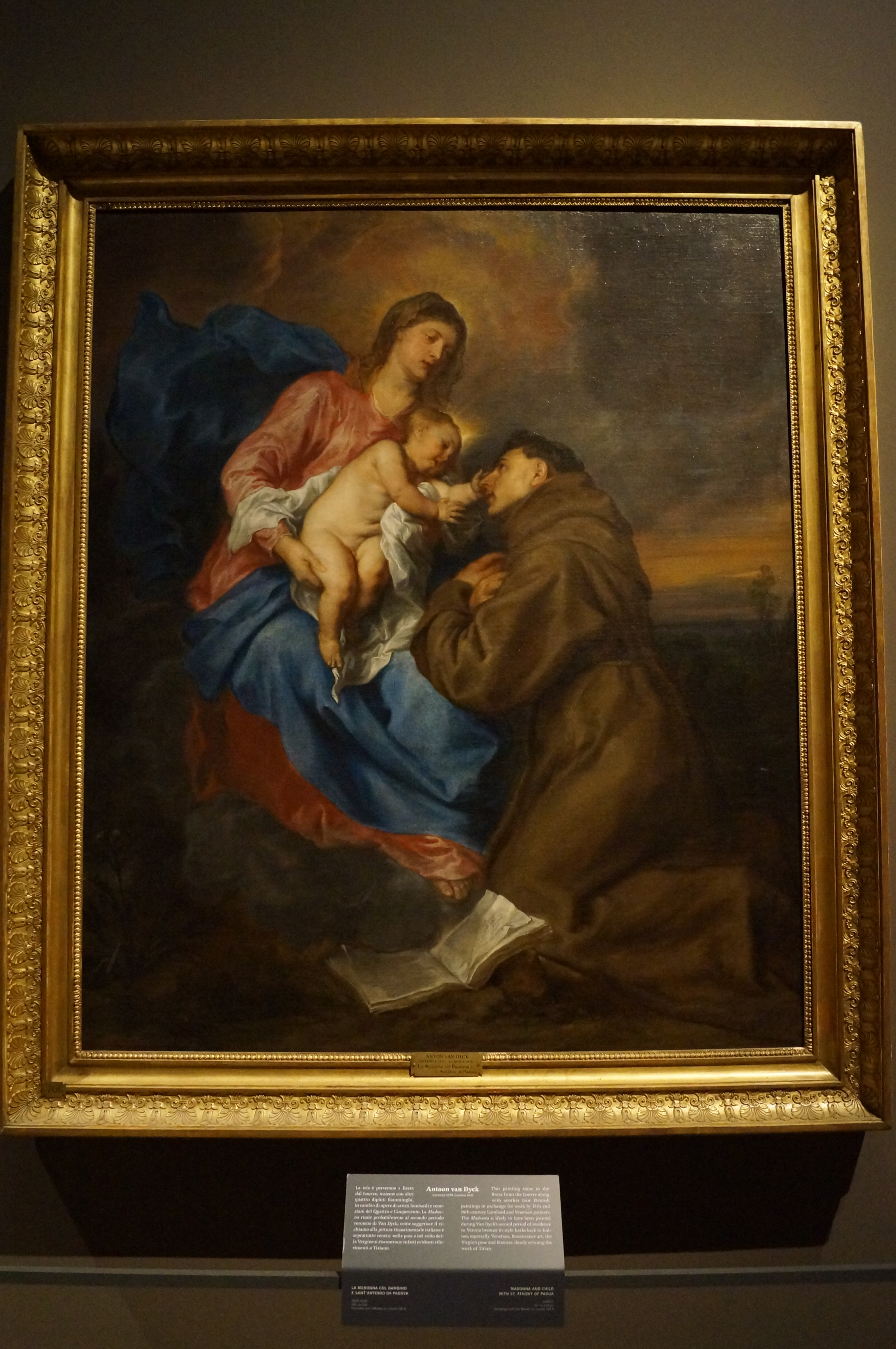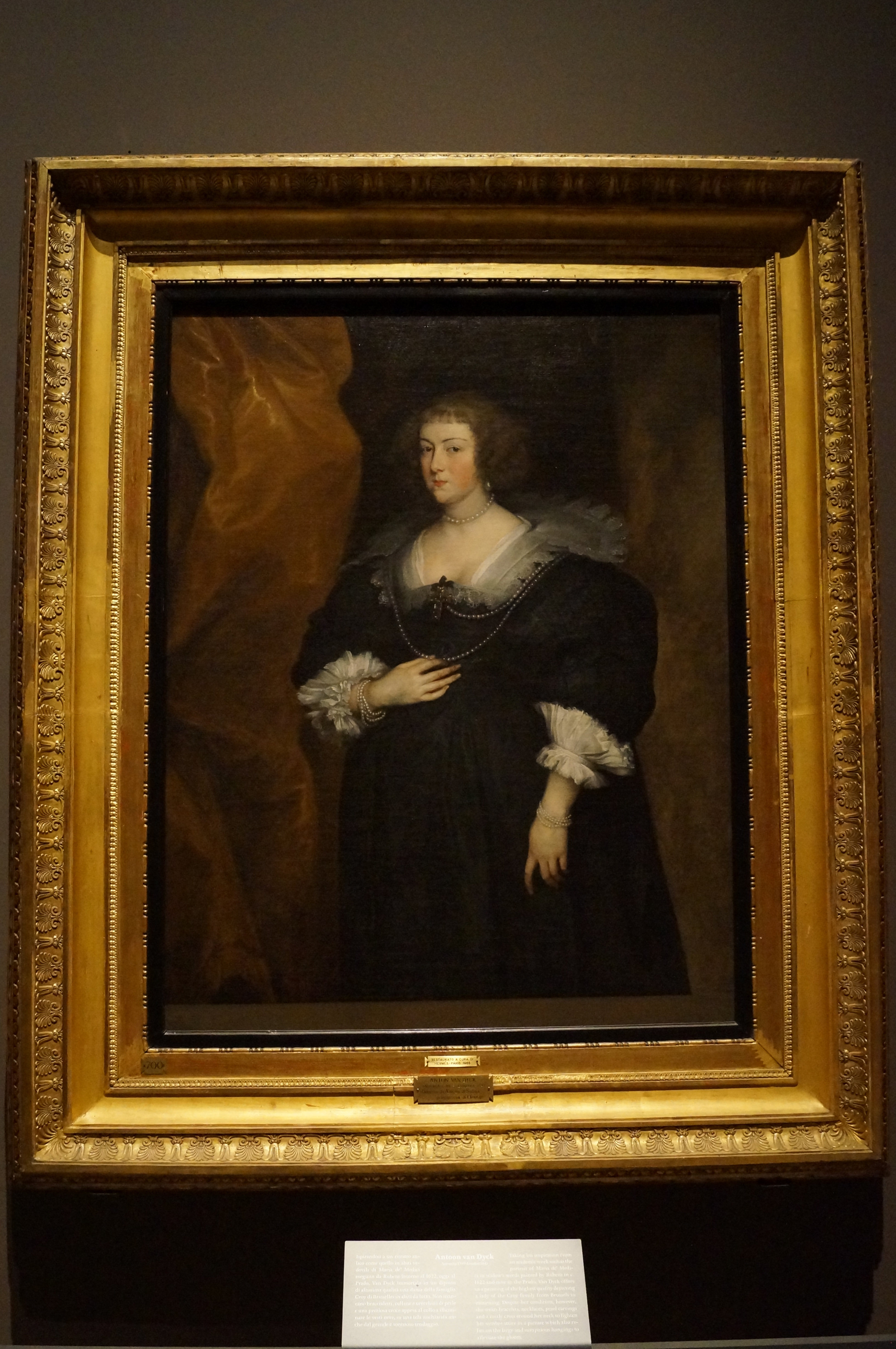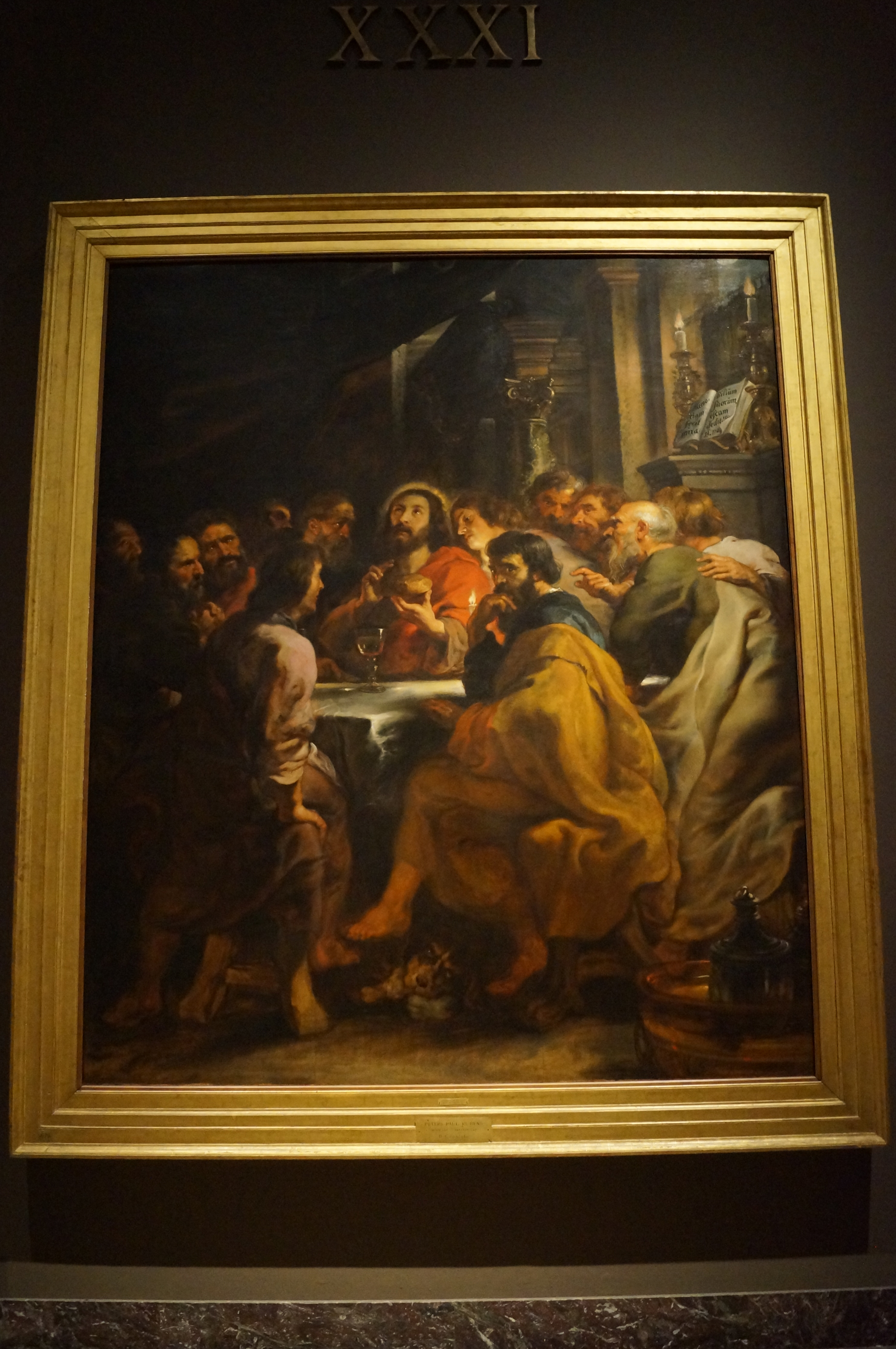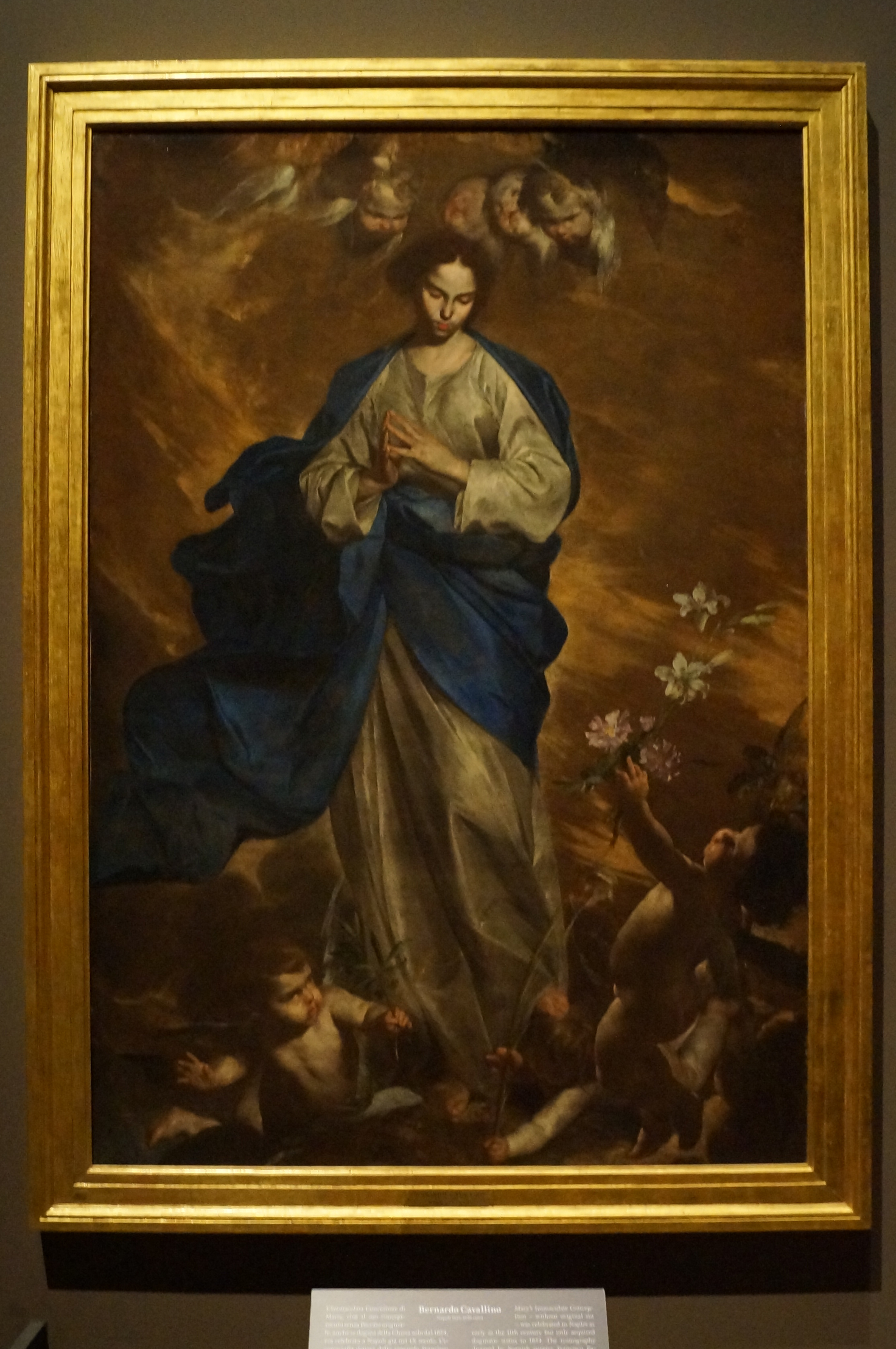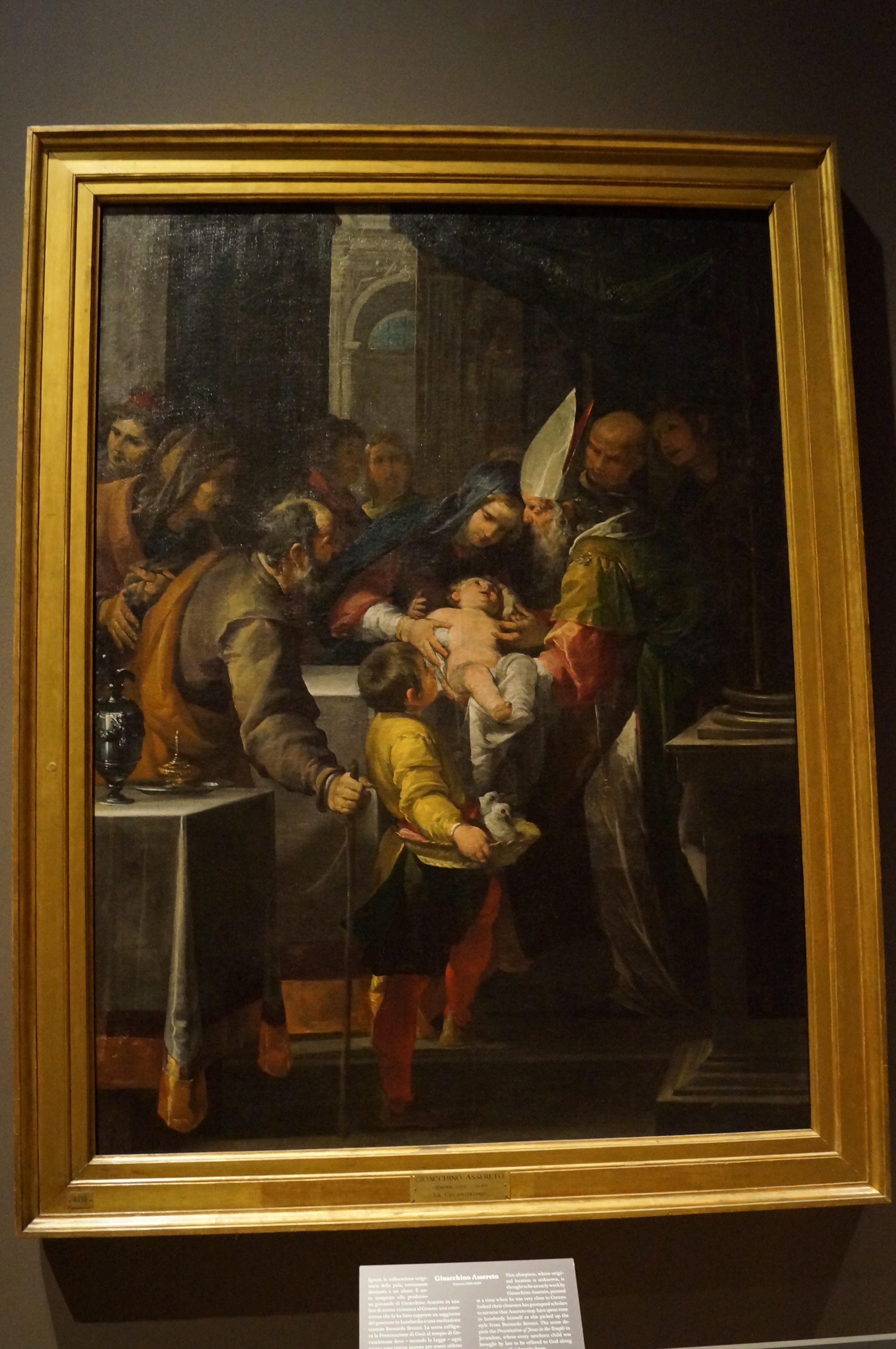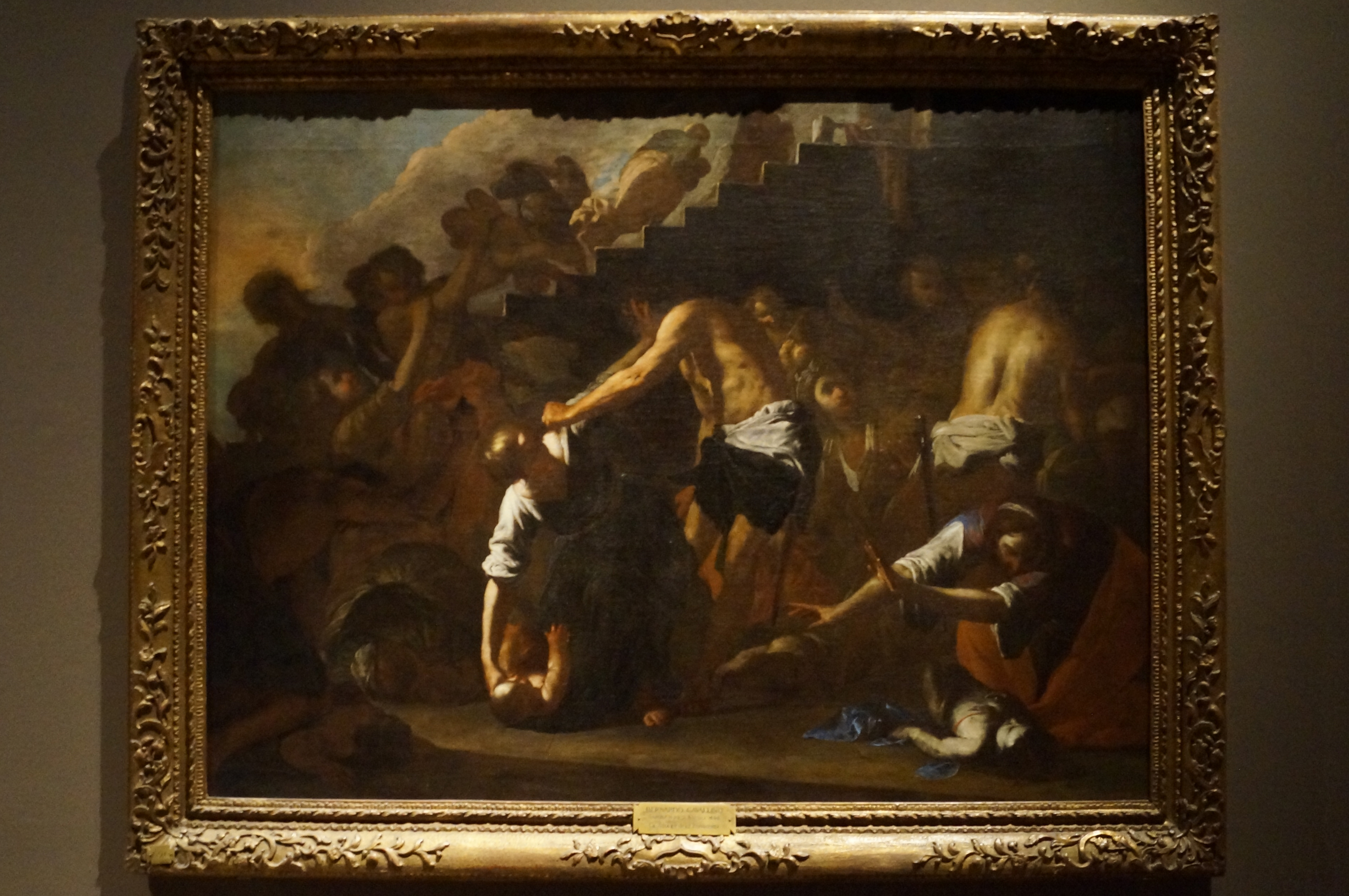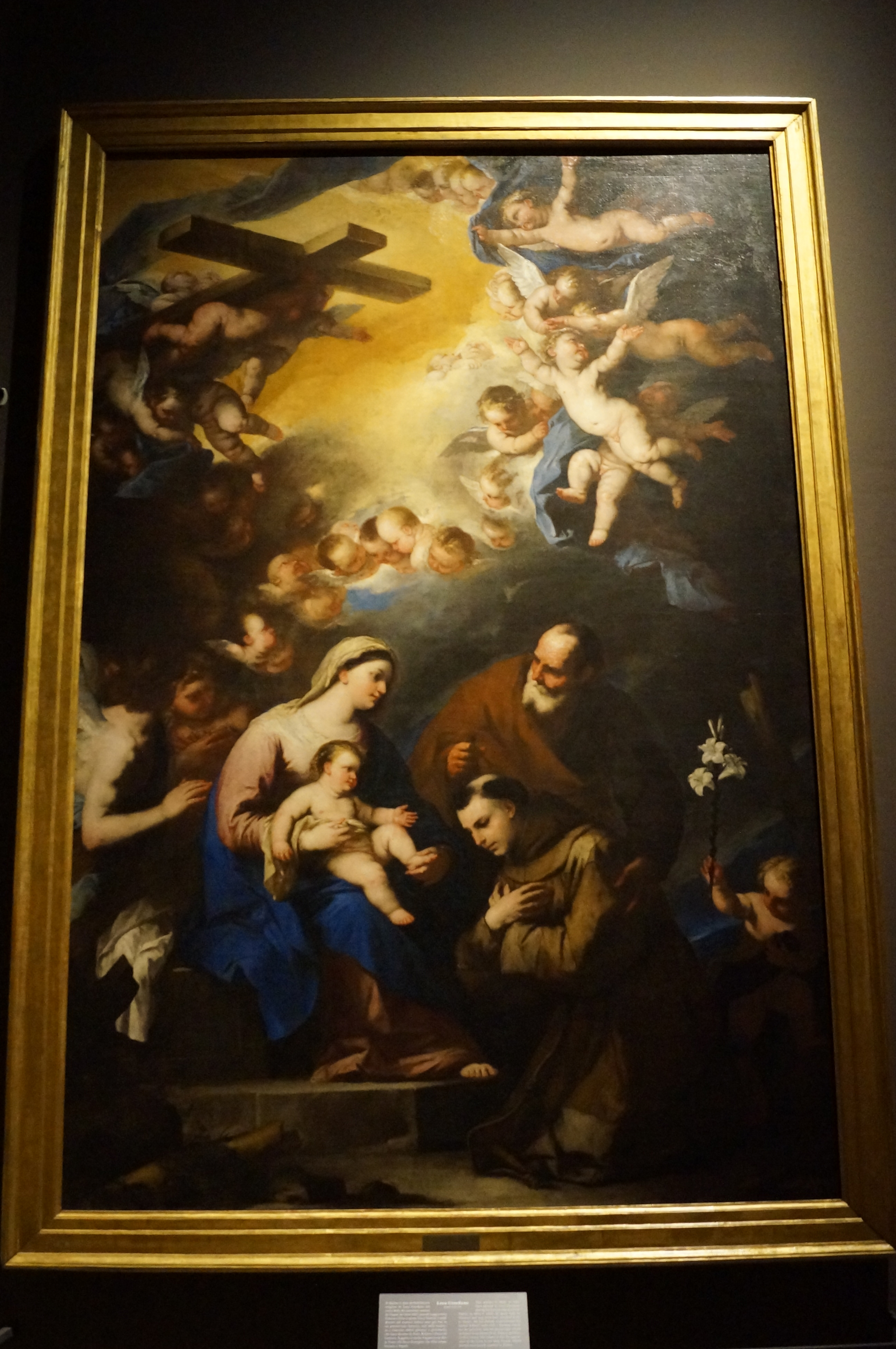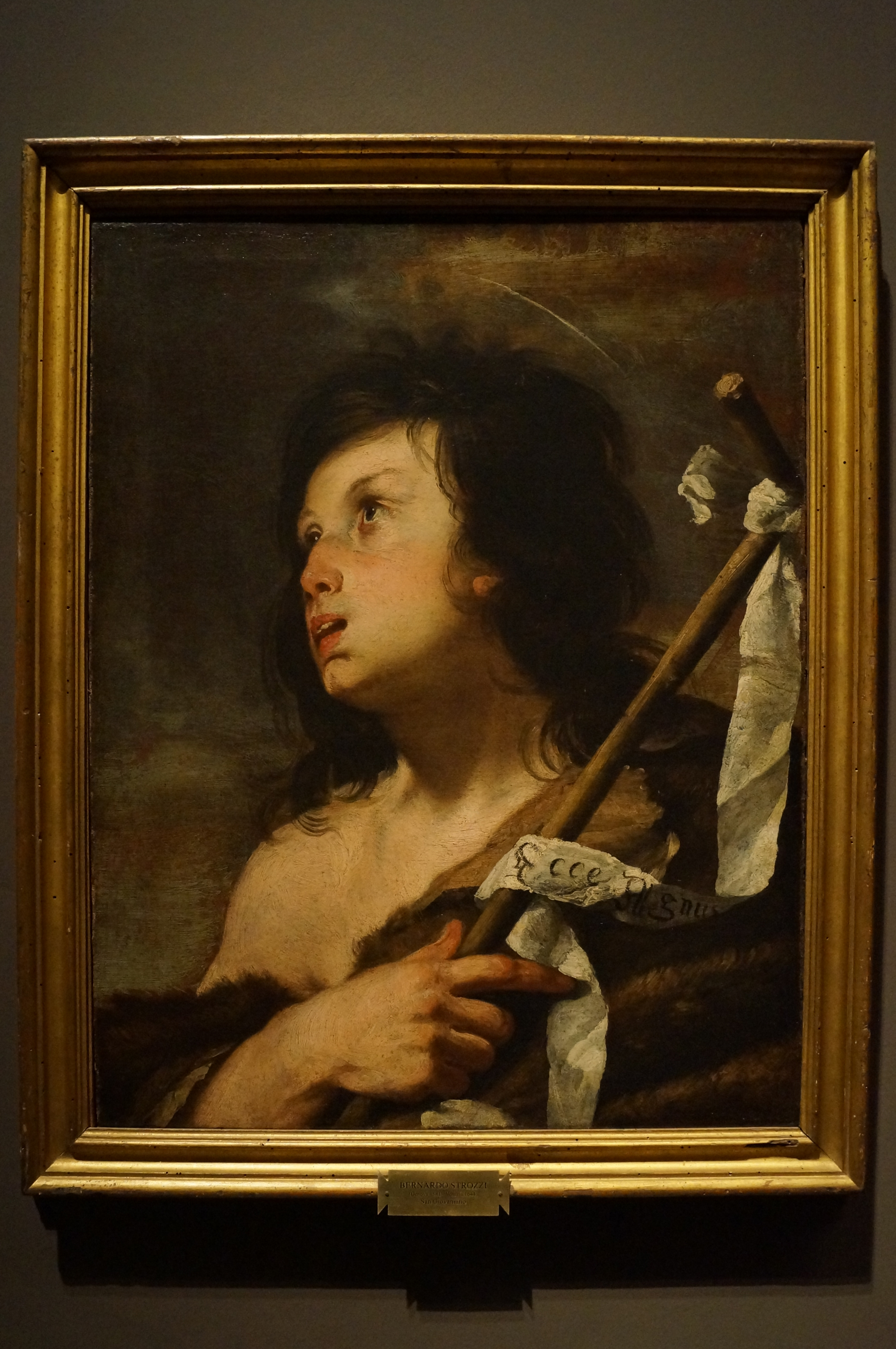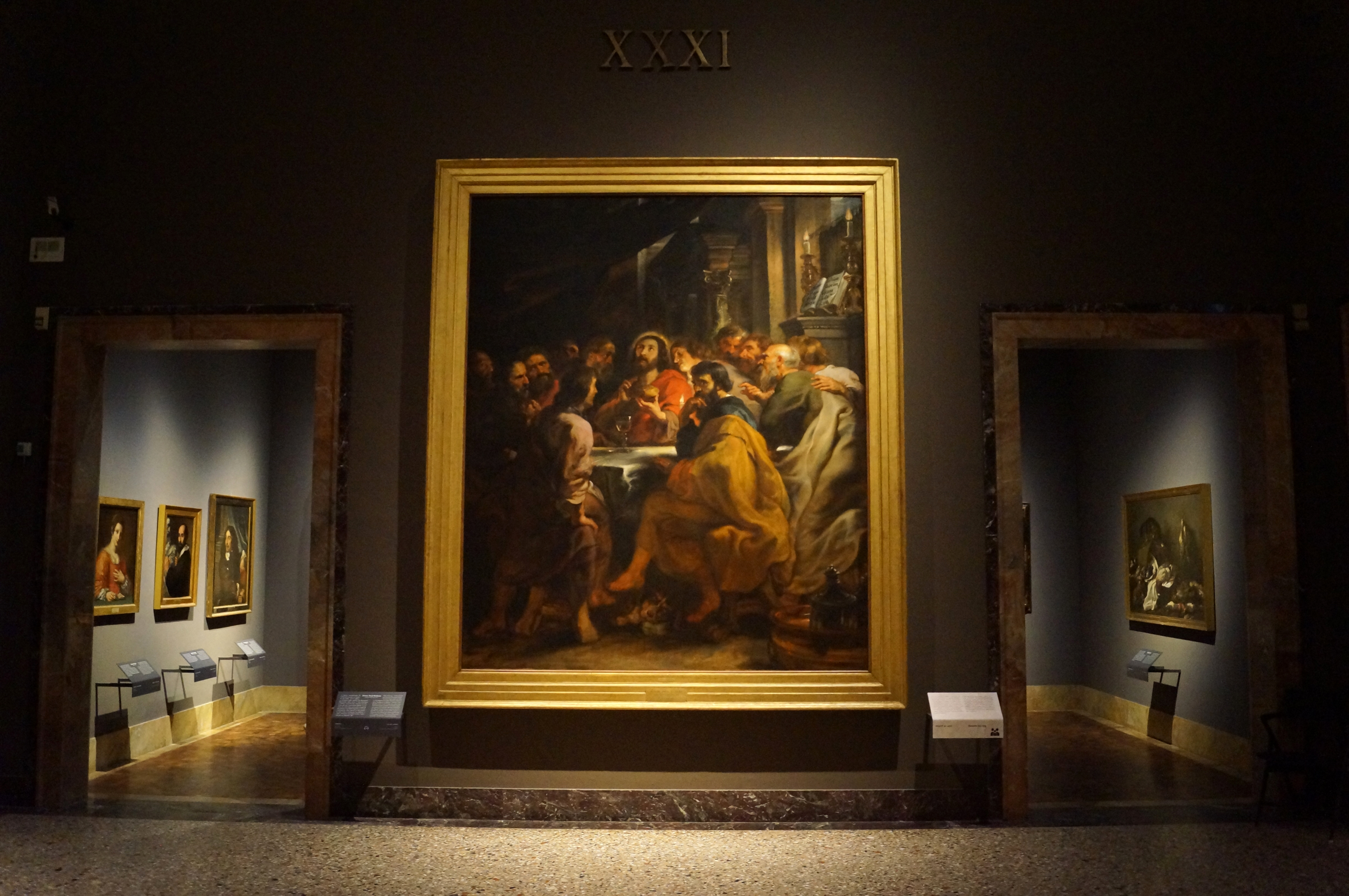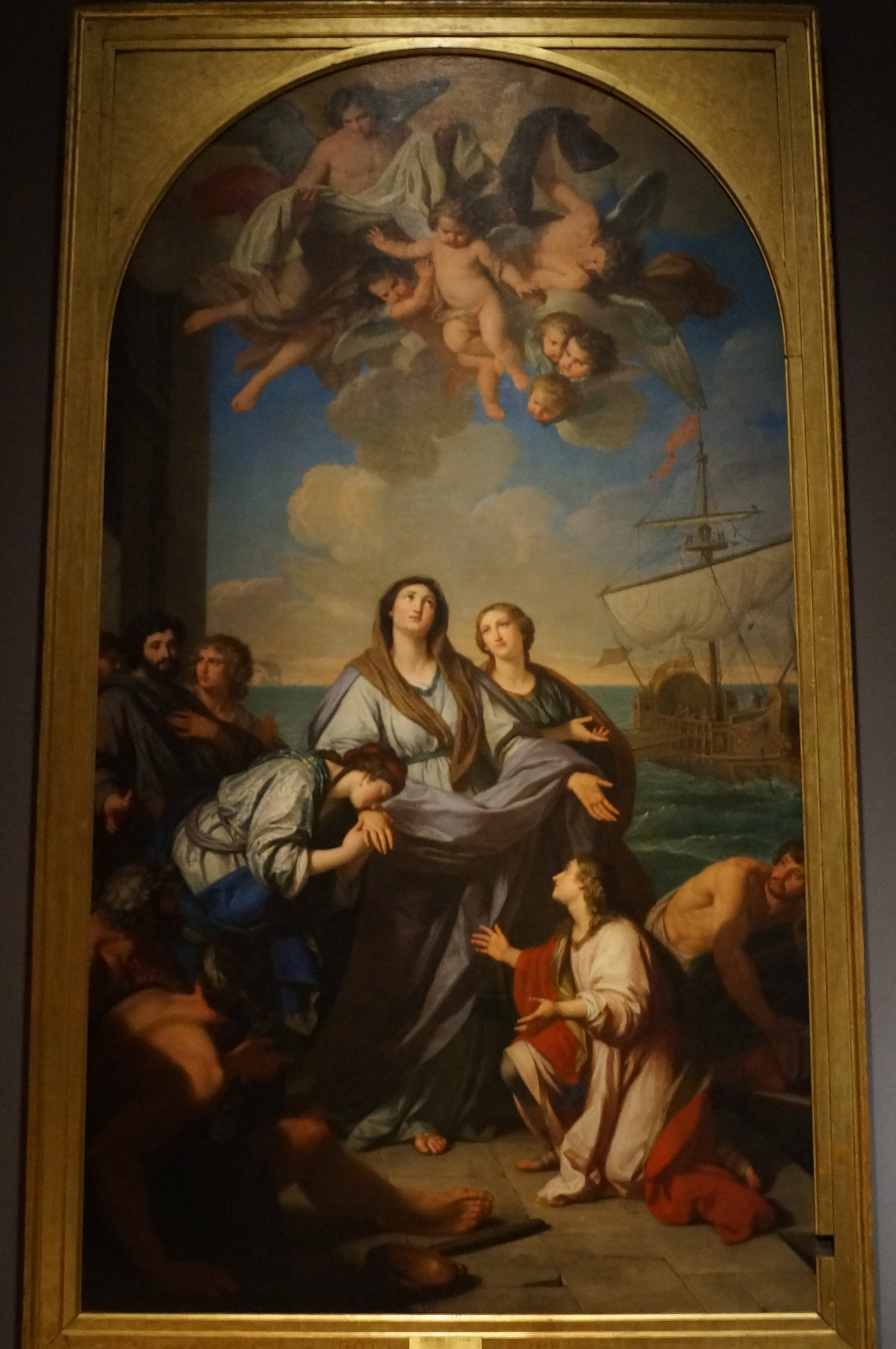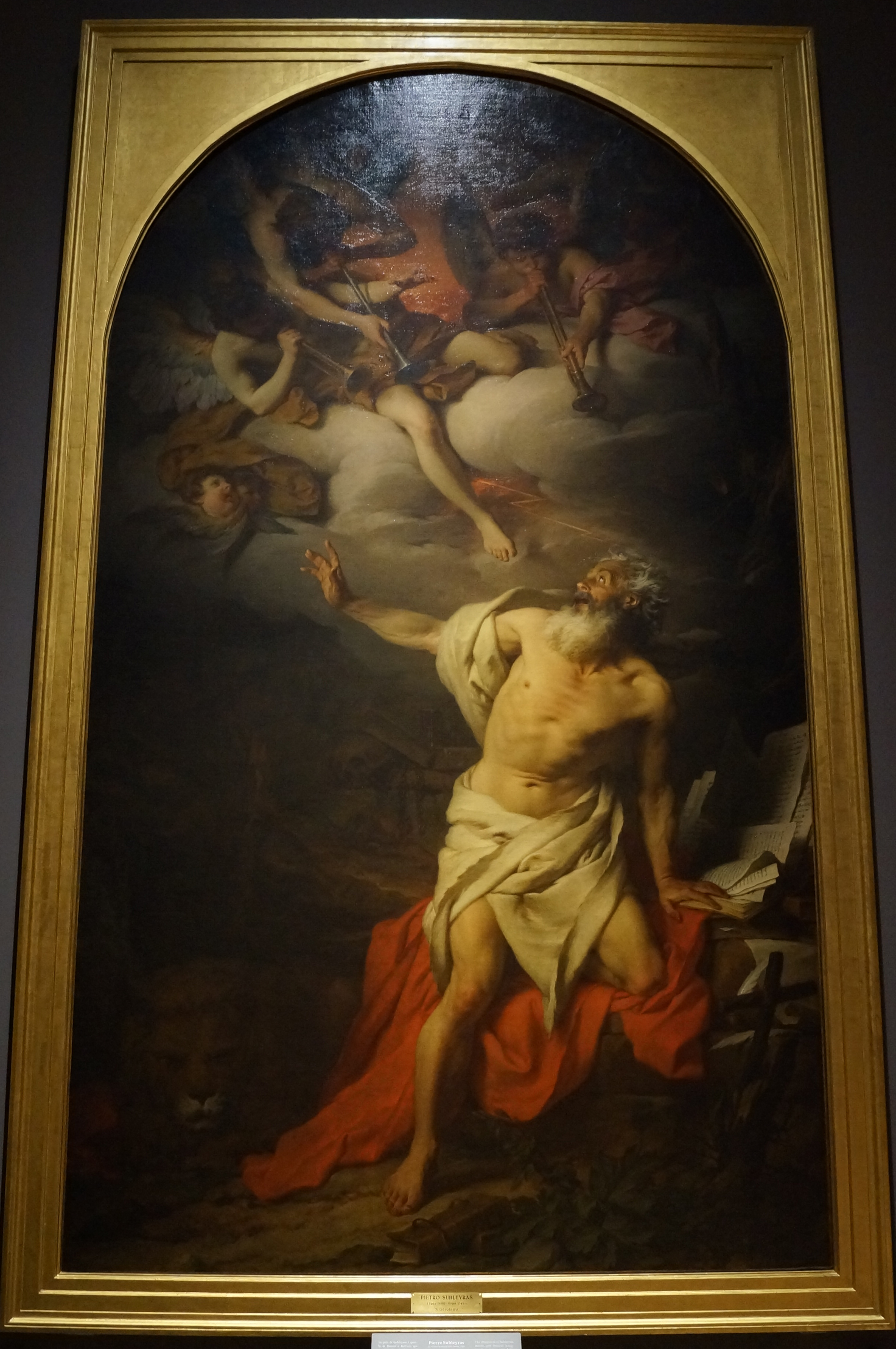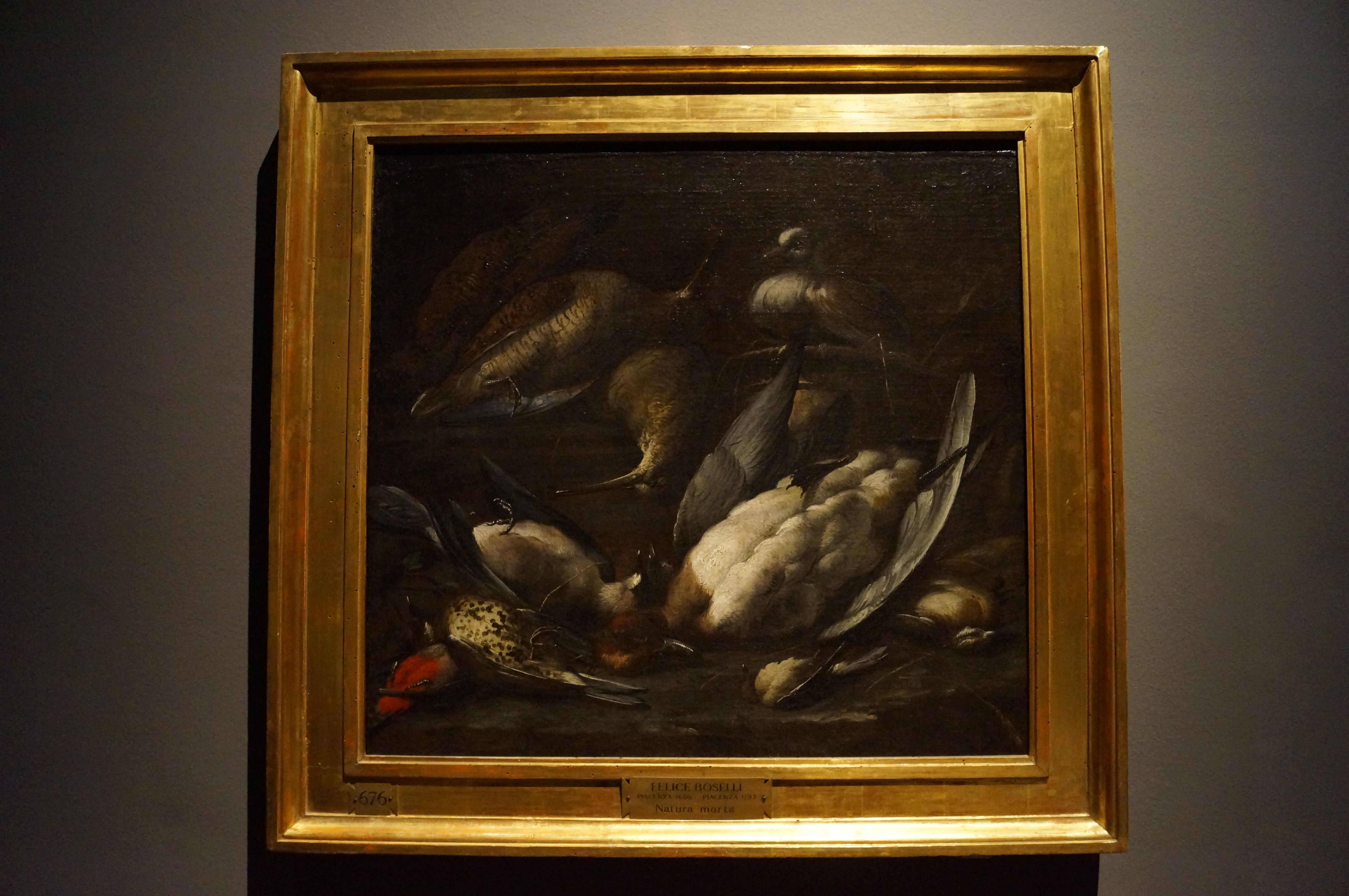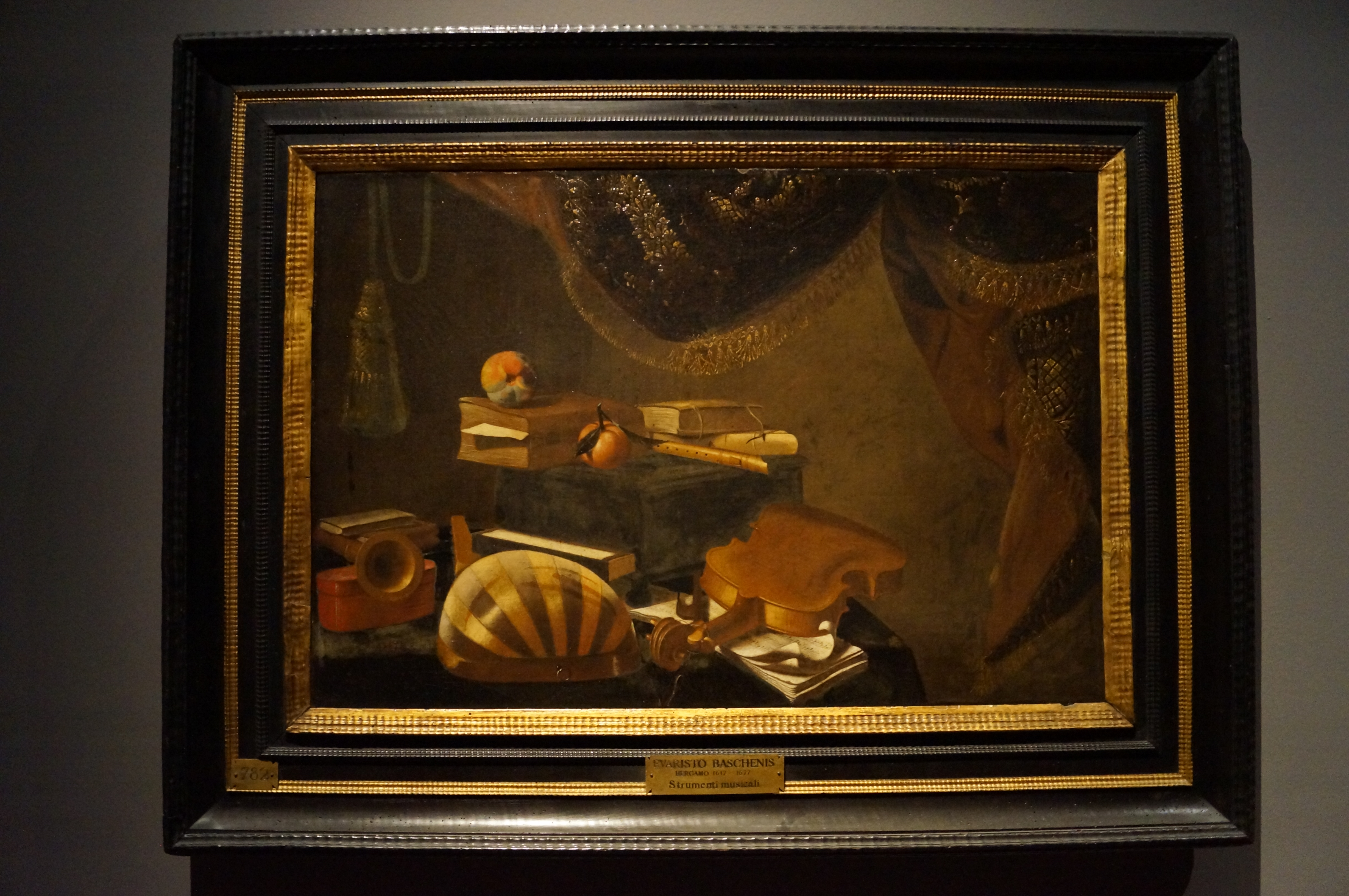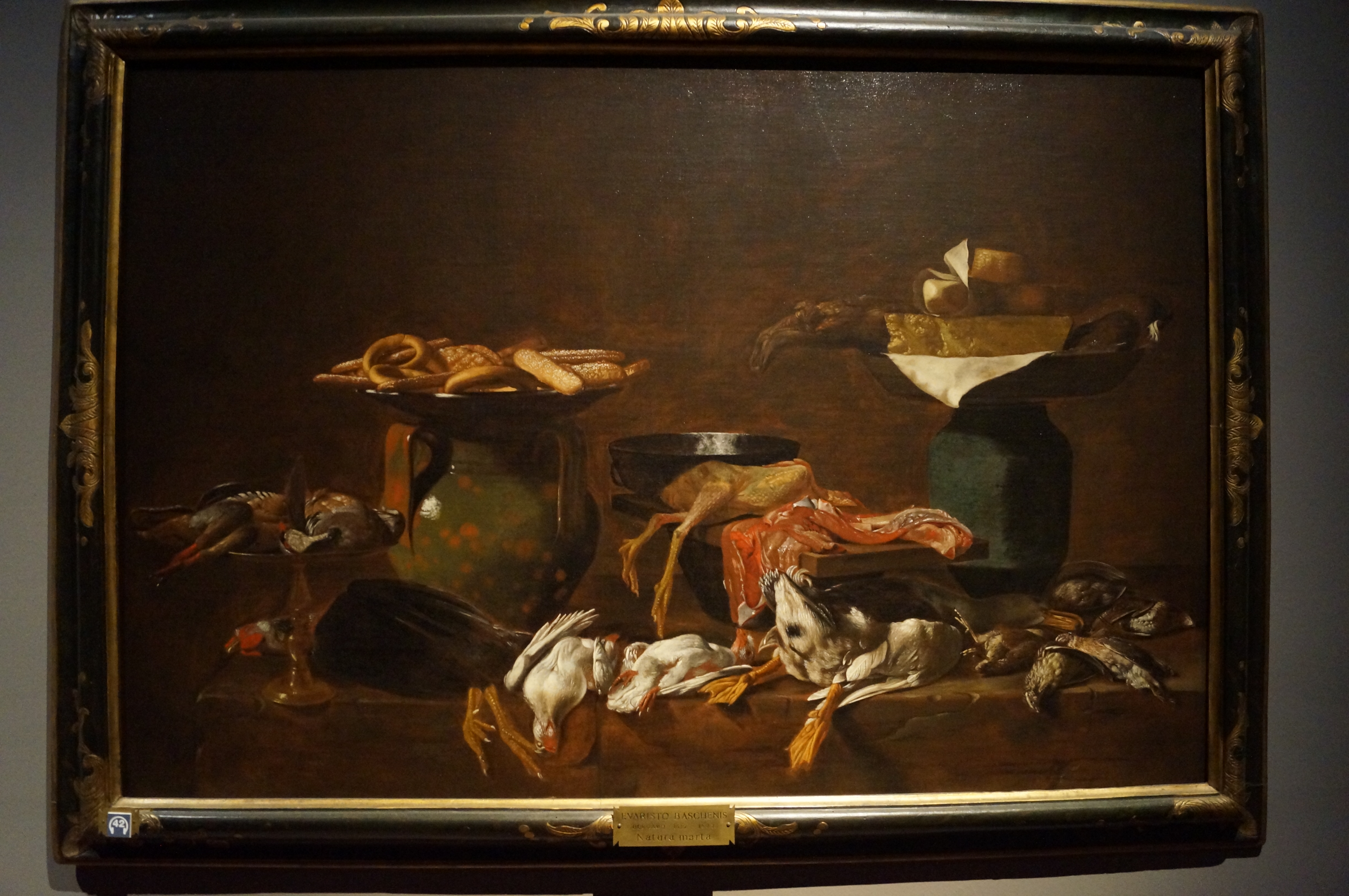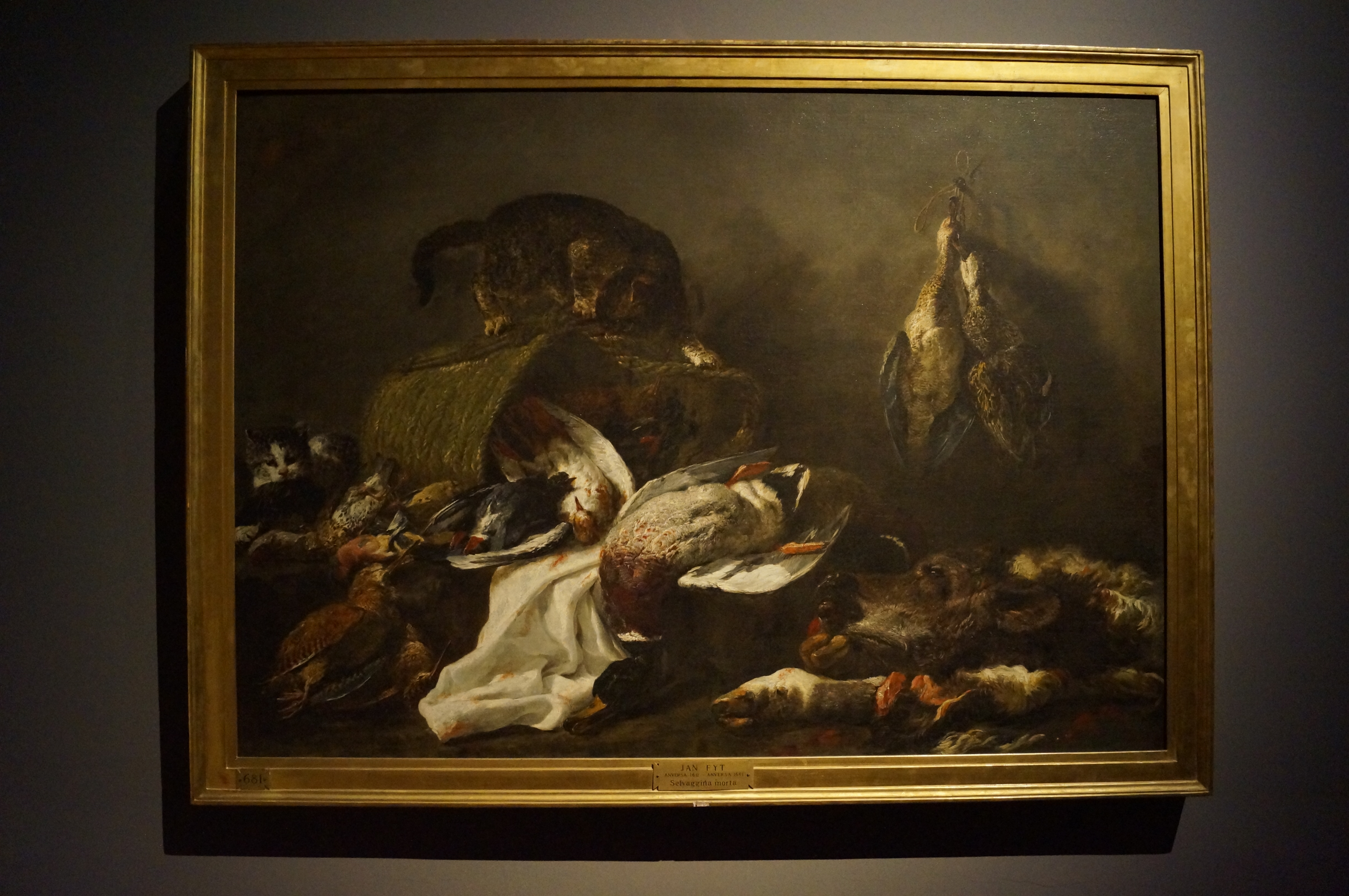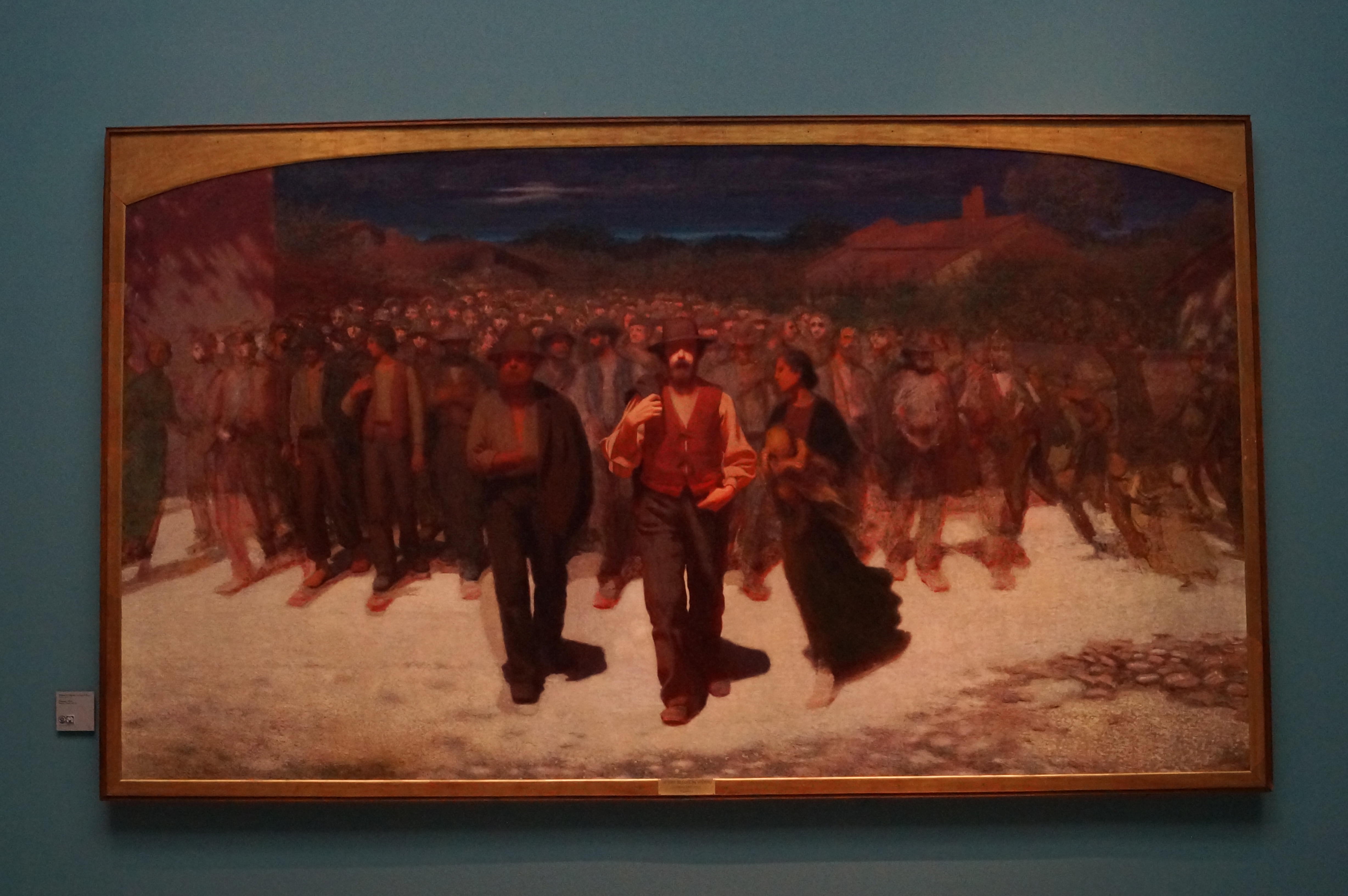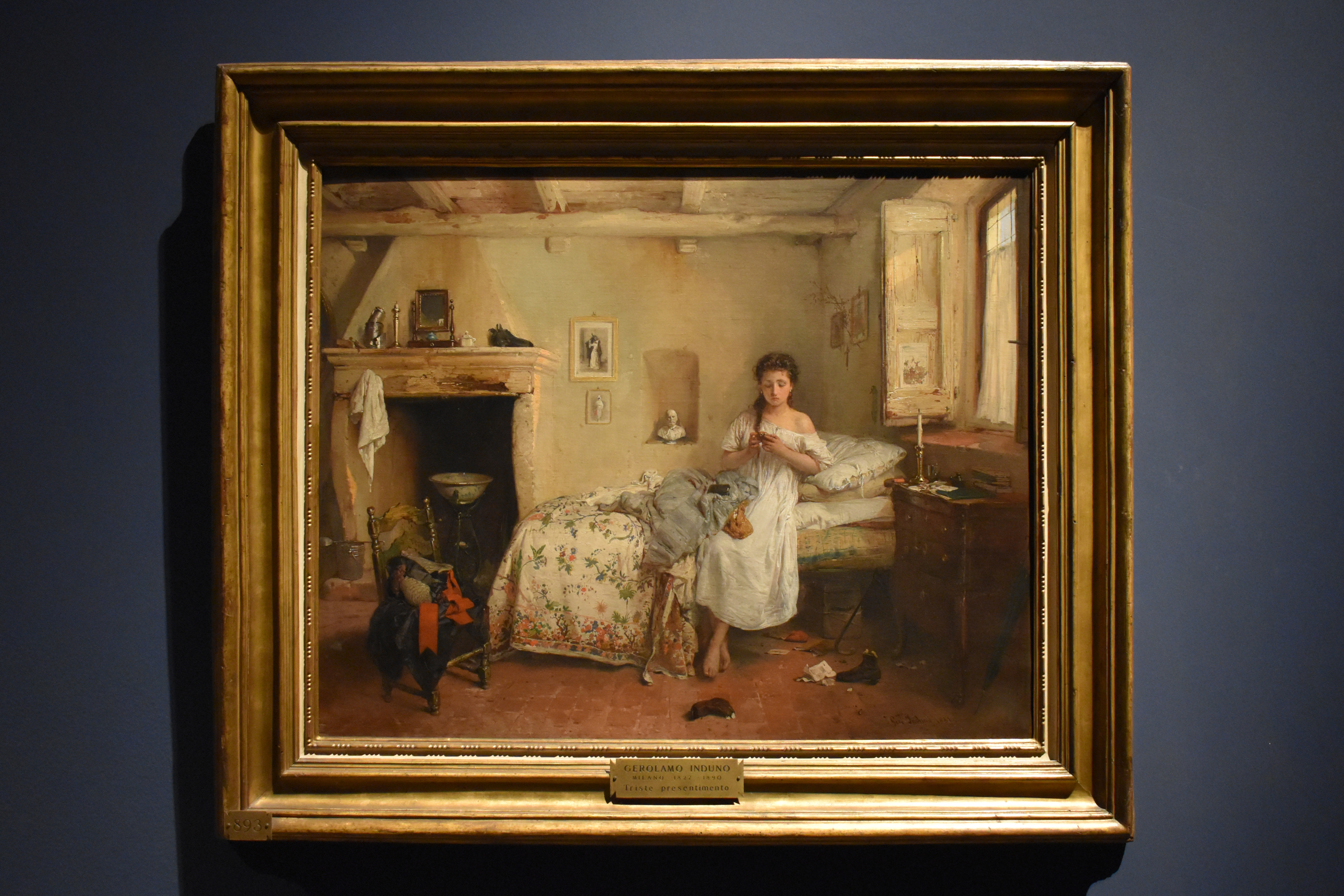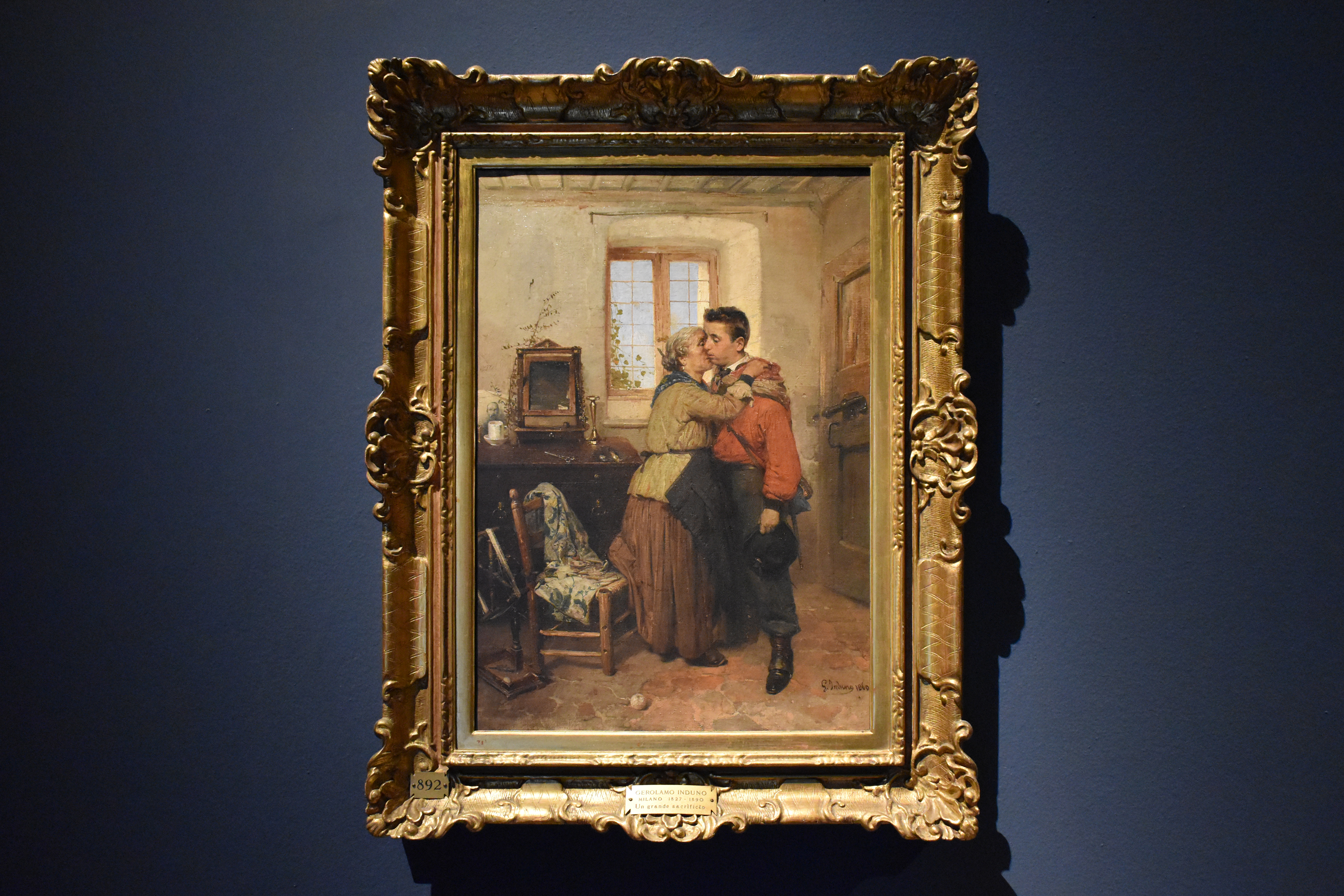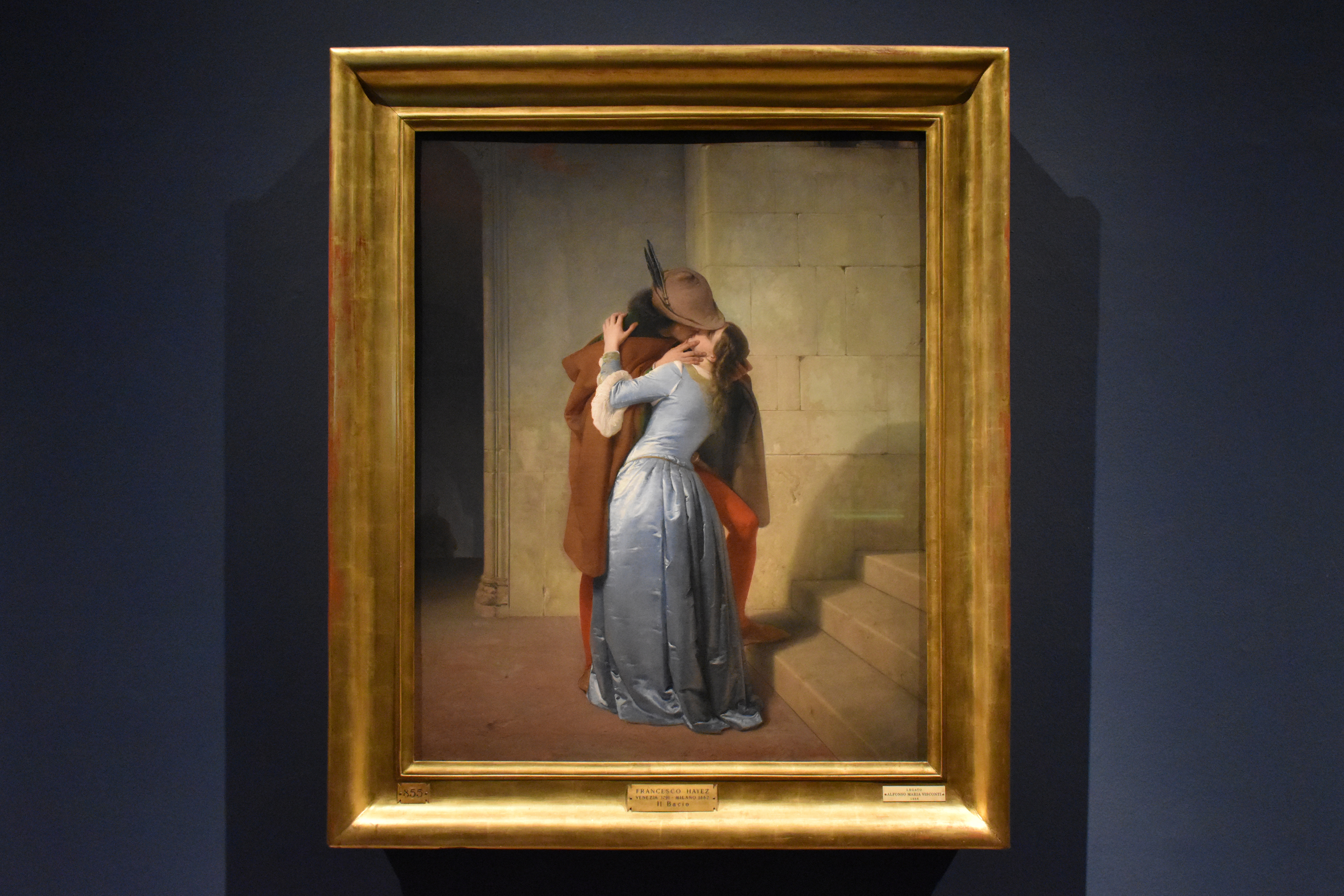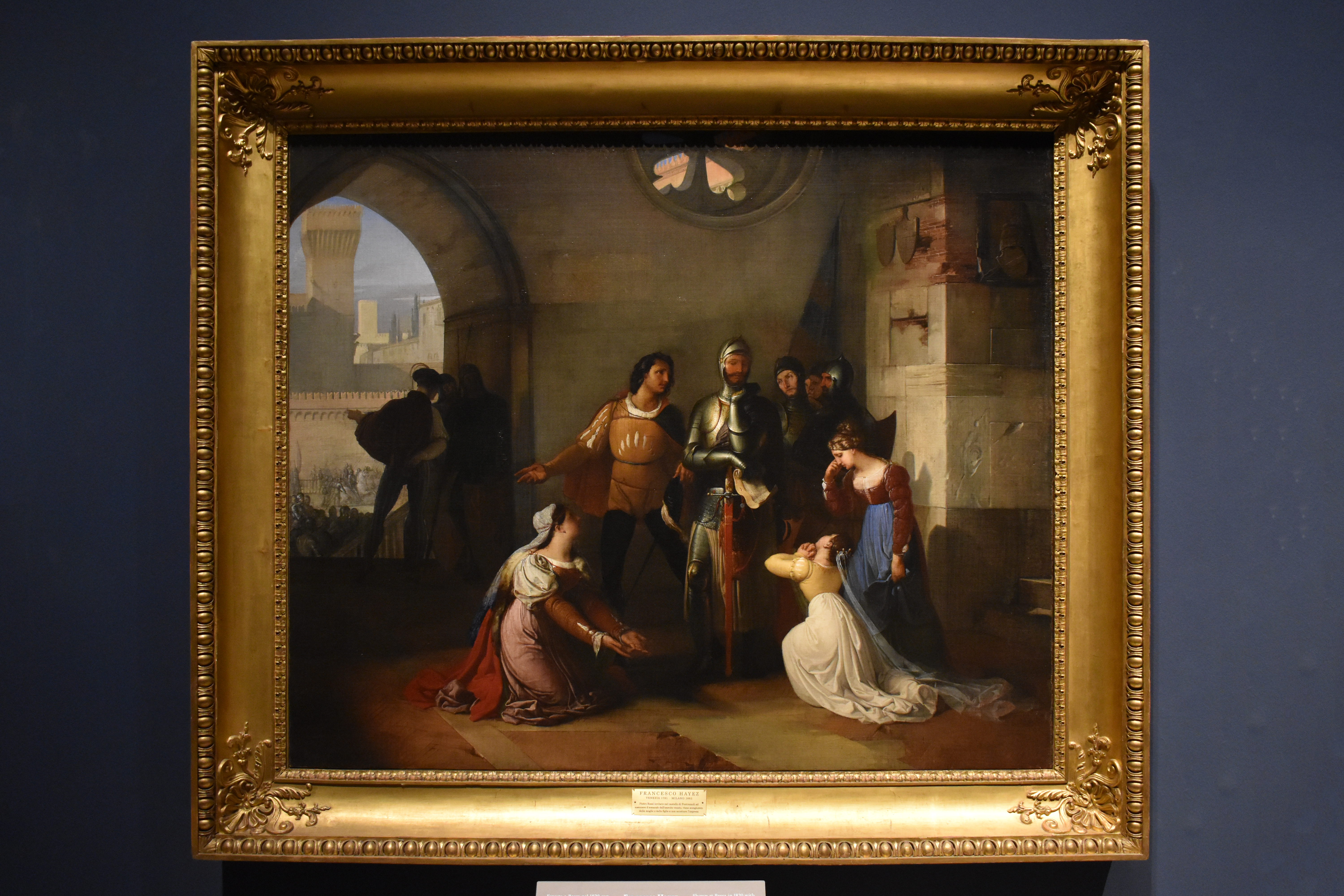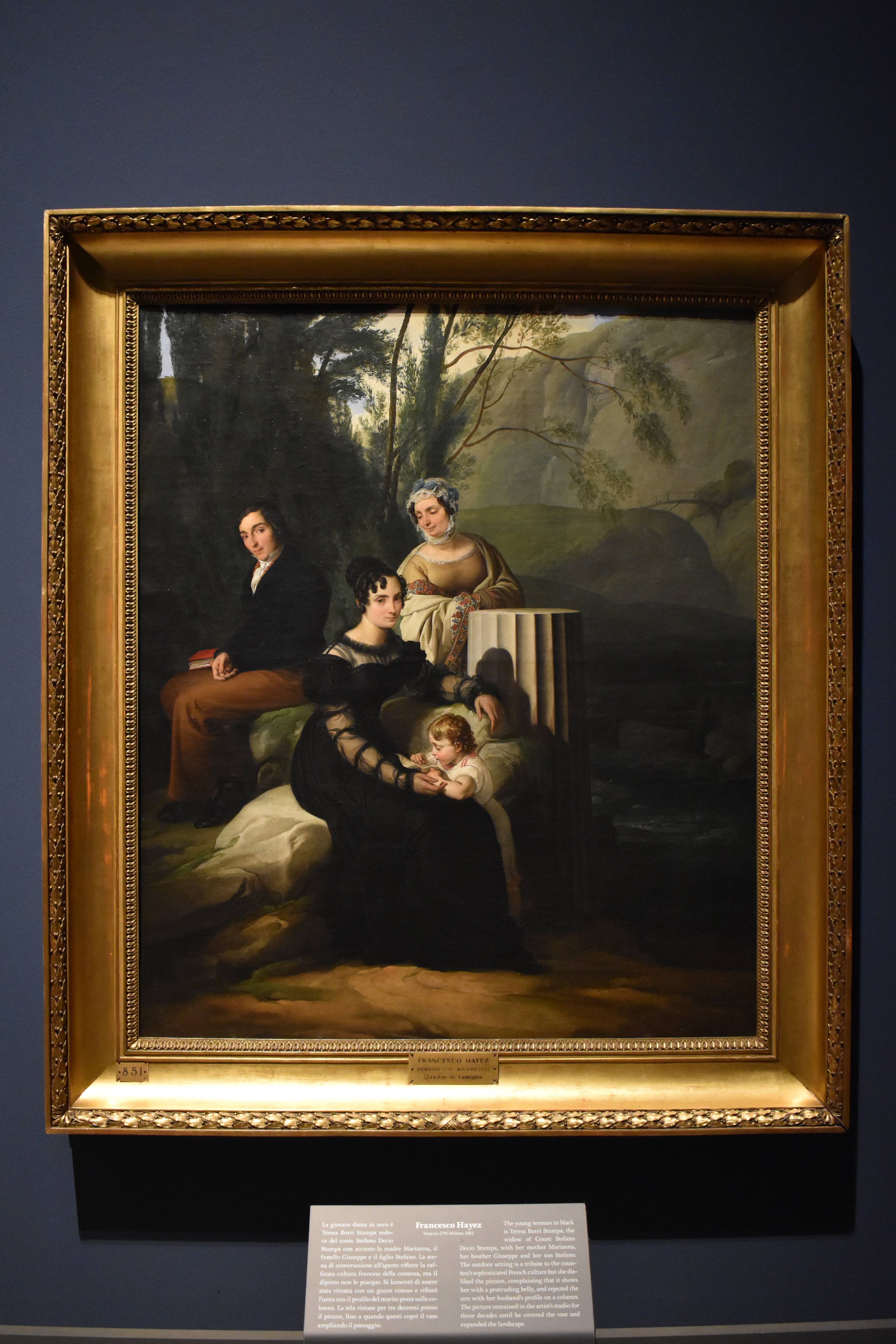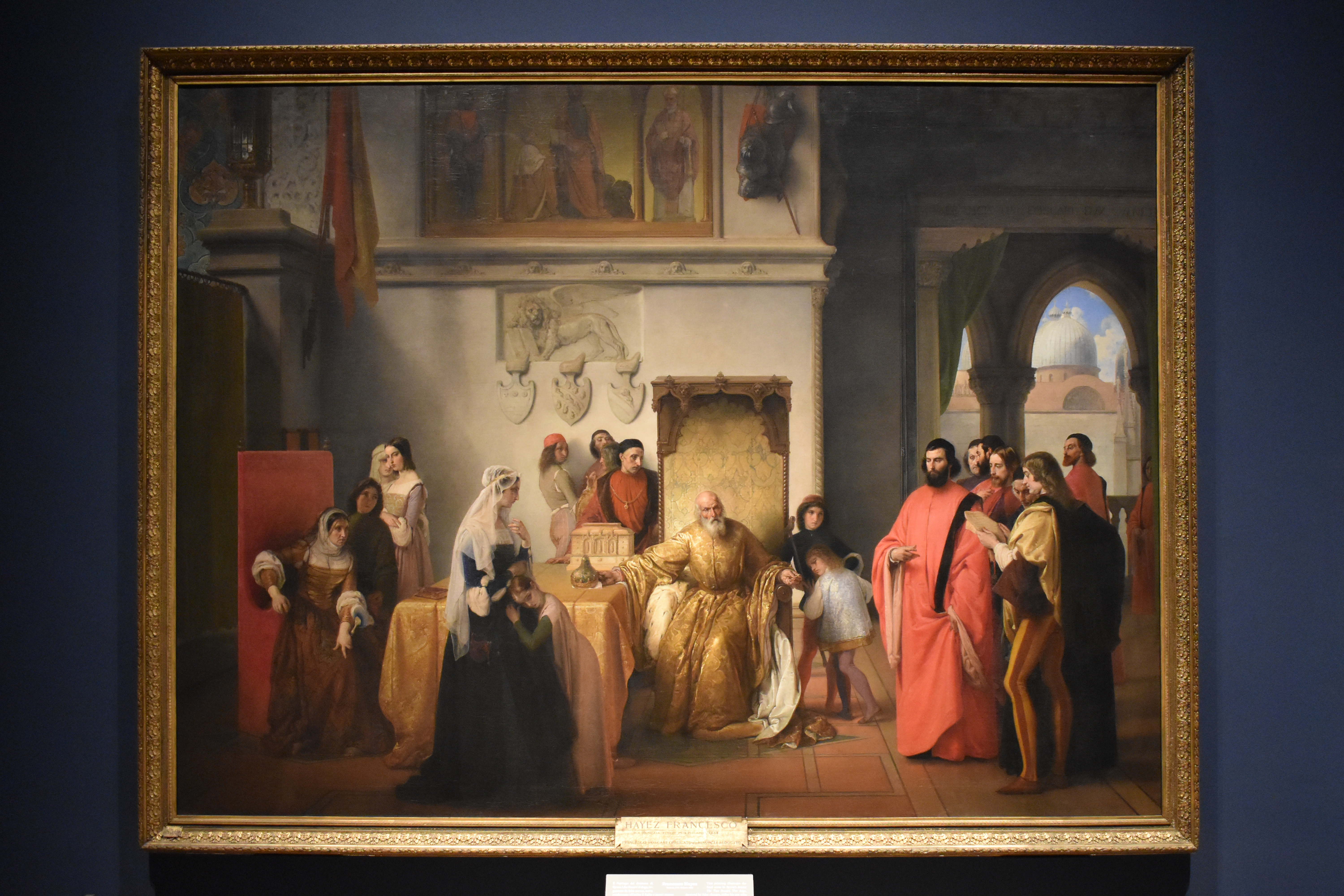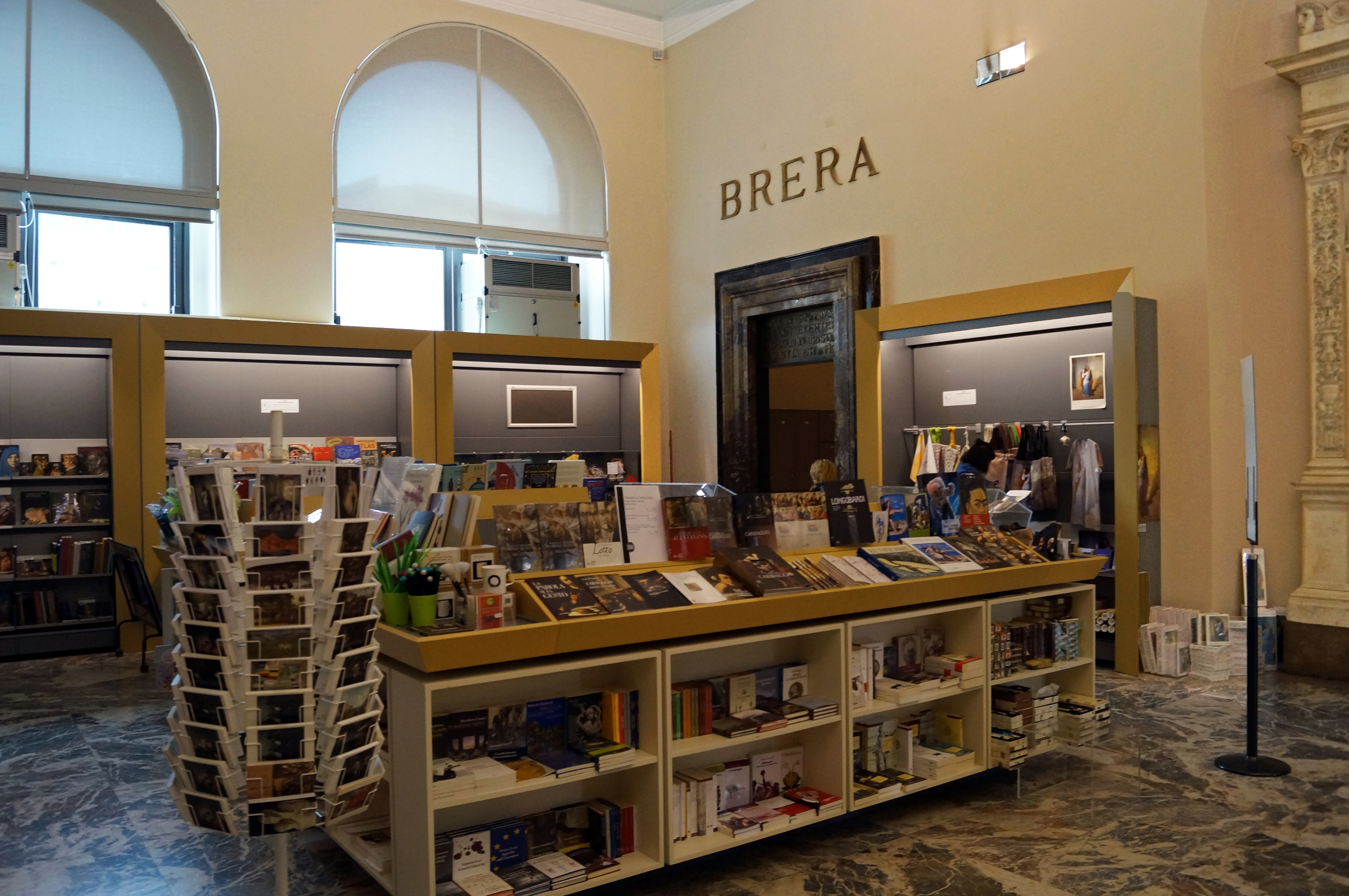Пинакотека Брера
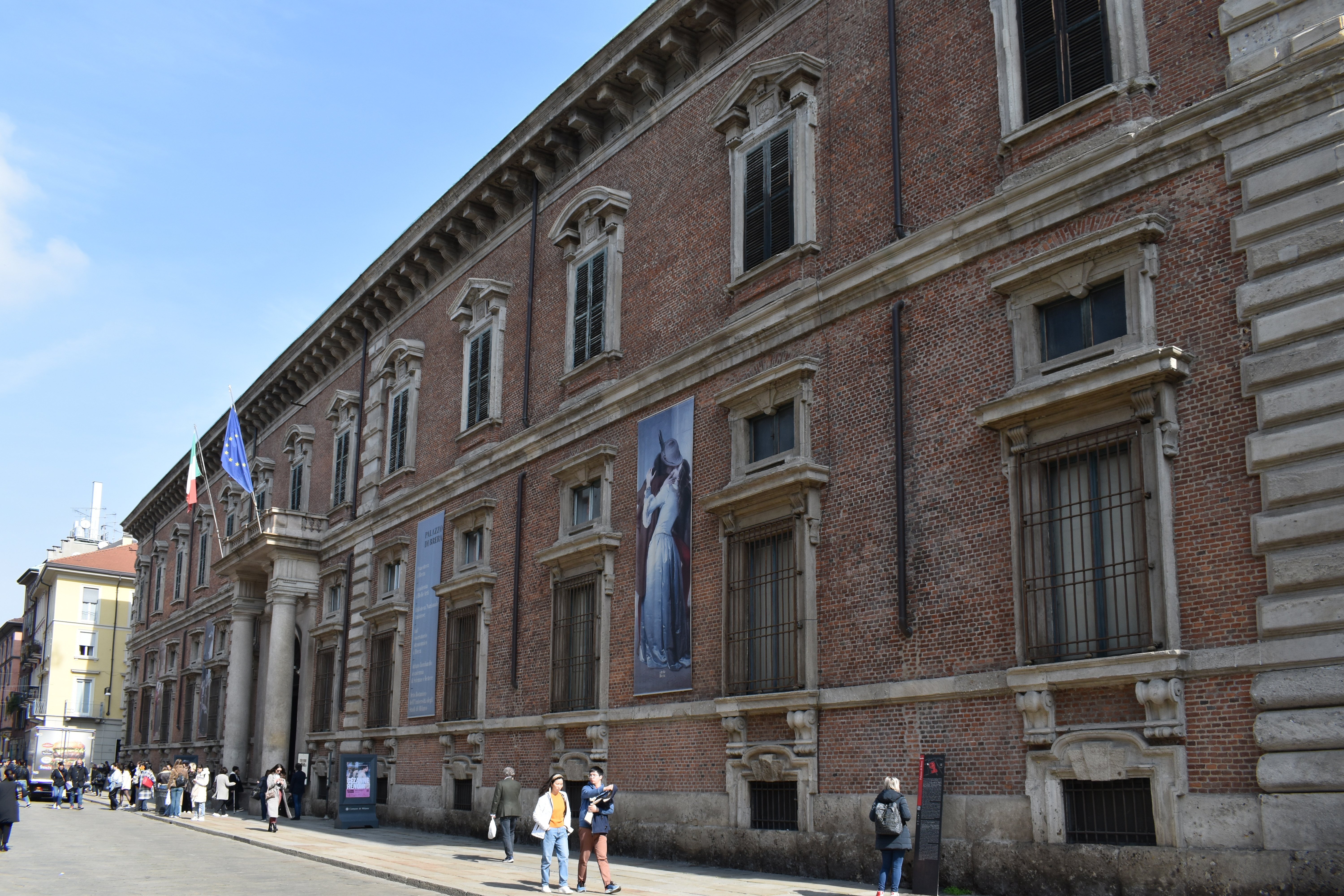 Внешний вид Академии изящных искусств с улицы Брера
Внешний вид Академии изящных искусств с улицы Брера
Пинакотека Брера – одна из крупнейших картинных галерей Европы, включающая в себя 38 залов, посвящённых произведениям искусства различных школ и эпох. Название "пинакотека" образовано от двух древнегреческих слов – "доска" и "хранилище". Дословно, пинакотека – место для хранения живописных изображений. Пинакотека Брера была названа так благодаря своему местоположению – располагается галерея в историческом квартале Брера, от итальянского слова "braida" или "brera", дословно переводимого как "земля, очищенная от деревьев". Корень слова тот же, что и у названия голландского города Бреда и английского слова "broad". Примерно около 900 года район Брера был расположен непосредственно у городских стен Милана. Квартал чётко очерчен улицами Понтаччио, Фатебенефрателли, Деи Джардини, Монте ди Пьета, Понте Ветеро и Меркато. В этом квартале находятся Академия изящных искусств Брера и Пинакотека Брера, что способствовало созданию своеобразной богемной атмосферы, благодаря чему квартал Брера иногда называют "миланским Монмартром"
Внуттренний двор Академии изящных искусств Брера
Строительство здание относится к концу XVI – началу XVII вв., к периоду итальянского барокко. Изначально палаццо принадлежало ордену умилиатов, затем после упразднения ордена, перешло к иезуитам, открывшим в пинакотеке университет. В конце XVI века здание стало непригодным для научной деятельности, и было принято решение о реконструкции палаццо. Возглавил работы итальянский архитектор Барокко – Франческо Мария Рикини. Работу над проектом замедлила эпидемия чумы, заканчивал реконструкцию уже сын Рикини – Джан Доменико. К моменту окончания работ орден иезуитов, которому принадлежало палаццо, был упразднён, и огромное здание перешло в собственность государства.
Парадная лестница Академии изящных искусств Брера
В 1776 году императрица Мария Австрийская подписывает приказ об основании Академии изящных искусств в квартале Брера, в здании будущей пинакотеки. В качестве научного пособия Академии, тогда же, в 1776 году открывается картинная галерея, коллекции которой стали наглядным пособием для молодых художников. В 1796 году на Апеннинский полуостров вторглась армия Наполеона и Милан вошёл в состав Королевства Италия. Естественно, эти исторические перемены затронули Академию и пинакотеку Брера. При императрице Австрийской, пинакотека существовала на доходы, получаемые от расформирования монастырей и монастырских орденов. С приходом Бонапарта, галерее присваивается статус общедоступного художественного музея. Коллекции Бреры пополняются фактически за счёт разграбления церковных и монастырских хранилищ – оттуда в пинакотеку французы вывозят произведения искусства, имеющие хоть какую-то ценность.
Лоджии дворца Брера (Palazzo Brera)
При владычестве Наполеона, в пинакотеке отводятся отдельные залы, целиком посвящённые различным изображениям императора. Жемчужиной «наполеоновской» коллекции стала бронзовая статуя императора, облачённого в древнеримскую тогу, работы известного скульптора Антонио Кановы. В 1859 году статуя была перенесена в центр двора палаццо, где её можно увидеть и сегодня. Официально пинакотека Брера открыла свои двери 20 апреля 1809 года. С концом бонапартистского режима, решением Венского конгресса в 1814 году, галерею обязали возвратить часть полотен их владельцам. Однако, музейные фонды продолжали расширяться и в 1882 году было принято решение о присвоении пинакотеке статуса самостоятельного культурного учреждения.
Первая мировая война не повредила Брере – коллекции перевезли в Рим, а здание военные действия не коснулись. А вот, во время Второй мировой, музею пришлось несладко. Милан подвергался постоянным бомбёжкам, в 30 залах галереи обрушились своды, нанеся ущерб бесценному памятнику архитектуры. Спасти произведения искусства удалось лишь благодаря усилиям директора музея – Фернанды Виттгенс. Для восстановления здания, в 1943 году галерея была закрыта и вновь открылась в 1950 году.
Сегодня пинакотека представляет собой настоящий музейный центр – здесь работает крупнейшая в Милане библиотека, действует школа ремесла и проводятся всевозможные искусствоведческие проекты и мероприятия. Именинникам в музее приготовлен сюрприз – в день рождения посетить галерею можно бесплатно, предъявив паспорт.
Коридор
Симоне да Корбетта (Simone da Corbetta)
Madonna and Child with St. Catherine, St. Ursula, St. George and the Patron, Theodoric of Chur
This fresco shows the Madonna and Child, St. Catherine, St. Ursula, St. George and the donor, Teodorico from Chur, Switzerland. The fresco is signed by Simone da Corbetta and comes from an outside wall of Santa Maria dei Servi, formerly located in today’s Corso Vittorio Emanuele and demolished in early 19th century to build the church of San Carlo. It is a devotional fresco of unexceptional quality in a style that precedes the international Gothic, but is closely linked to the history of Milan.
Бернардино Луини (Bernardino Luini)
Severe comforted by Driope and Tavaiano
Until recently thought to show the story of Daphne from Ovid’s Metamorphoses, wherein a young virgin prays to her father the river god to transform her into a tree to escape the advances of Apollo, recent research proves the panel is based on the poem Driadeo d’Amore by Luca Pulci in 1465, and to Lorenzo de’ Medici. The figure in the foreground is Severe, the young woman enclosed in a tree is the Dryad Driope, and the old shepherd Tavaiano, now changed into the river, consoles the young satyr.
Альтобелло Мелоне (Altobello Melone)
Adoration of the Shepherds
This fresco, which was damaged – especially in its upper part – when it was transferred onto canvas, may come from the former convent of the Colomba in Cremona. Altobello Melone is likely to have painted it sometime after completing his crucial work in Cremona cathedral. He interprets the Adoration, a religious subject, in a popular vein, strongly characterising his figures and focusing the light on the foreshortened body of the Christ Child.
Бернардино Кампи (Bernardino Campi)
Jesus Preaching to the Crowds
This fresco is part of a cycle from the Oratorio della Maddalena in the Monastery of San Colombano al Lambro near Lodi. It was partially detached and trasferred onto canvas in 1846, when the monastery was destroyed. The decoration of the oratory was commissioned from Bernardino in 1577 by the prior of the Certosa di Pavia on which San Colombano depended, but it was only begun in 1579 and completed in 1580. The artist used assistants to ensure that he could rapidly complete the demanding task.
Амброджо Бергоньоне (Bergognone)
Madonna and Child with the Father and angels
Il Bergognone was a painter from Fossano, a small village in southern Piedmont, active in Milan from 1472. Bergognone was very prolific, and his work can still be seen in several churches nearby, including San Simpliciano, although his best work is at the Certosa di Pavia. This fresco is much older fresco than his other frescoes in the Brera’s collections. When it was removed and transferred to canvas, it lost the image of God the Father at the top.
Пере Серра (Pere Serra)
Annunciation
This work is by a Spanish artist who worked in Catalonia in the latter halfof the 14th century, but was also active in Sardinia. It shows the Annunciation to Mary by the angel in a beautiful purple robe in a way that almost disappears after the Council of Trent (1545-63) – a tiny figure showing Jesus’ incarnation in the Virgin’s belly. The pictorial space is cramped: the vase of lilies, probably alluding to the virginity of Mary, seems to spill out towards us.
Николо ди Пьетро (Nicolò di Pietro)
Coronation of the Virgin
The Venetian artist Nicolò di Pietro is a characteristically late Gothic painter, which can be seen above all in the late Gothic architecture of the carved altarpiece. This panel shows the Coronation of the Virgin, with God the Father behind the couple, and, at the bottom, the figures of the donors. It is very naturalistic, and there is already a hint of portraiture in the donor figures, but it is still a naturalism of detail that does not combine into a single naturalistic image. the panel has a rich frame adorned with pinnacles and carvings. The small dimensions suggest a collocation in a minor altar, or to be used for private devotion. The can be dated around 1394-1404, and came to Pinacoteca as a donation from the Amici di Brera Association in memory of Fernanda Wittgens.
Якопо Беллини (Jacopo Bellini)
Madonna and Child
Jacopo Bellini was the father of Gentile and Giovanni and a great painter in his own right, unfairly overshadowed by his son Giovanni. Here can be seen in embryo the use of spatial representation by a late Gothic painter, shown by the way in which the Christ child tries to come out at us, as if trying to bless us. It is no coincidence that Jacopo gave his son, perhaps his firstborn (Giovanni was probably illegitimate) the name of Gentile, after his master Gentile da Fabriano.
Джентиле да Фабриано (Gentile da Fabriano)
Crucifixion
Gentile da Fabriano was the greatest painter of the late Italian Gothic, an itinerant artist who worked in Lombardy, Brescia, Venice, in the marche, Orvieto and Rome. His work shows the fluid llines that are characteristic of the late Gothic, lines without right angles, the waves of colour and a near absence of naturalistic imagery. There is no vegetation, animal or plants – a characteristic of the late Gothic shown clearly in painting of this period.
Стефано да Верона (Stefano da Verona)
Adoration of the Magi
Stefano da Verona, is the quintessence of the International Gothic style – the shapes and lines are similar to those of Gentile da Fabriano – but there is a profusion of detail. In the procession of the Magi come to worship Mary we recognise the darl-skinned figures, we see camels as well as a beautiful peacock. There are even huntersin the background, a detail absent from the Biblical narrative. The painting is signed in what seem to be raised characters, next to a bunch of carnations.
Антонио Виварини (Antonio Vivarini)
Praglia Polyptych
This is fully preserved Late Gothic polittico by Antonio Vivarini and his brother-in-law Giovanni d’Alemagna, who worked in Padua and the Veneto, and created for the Benedictine abbey of Praglia, shown by the saints Benedict and Scholastica that signal Benedictine devotion. It shows an increasing naturalism, and the Christ child has a three-dimensionality that suggests a Tuscan influence. The orange colour dominates, but this is actually the base over which was applied the original gold.
Бернардо Дадди (Bernardo Daddi)
San Lorenzo
Bernardo Daddi led a flourishing Florentine workshop with a large output, unlike those of Ambrogio Lorenzetti or Giovanni da Milano, whose workshops produced far less. This work is a fragment where the gold background has been scraped off at a time when the painting itself was not considered interesting - the gold was far more precious and removed to be reused or sold. Fortunately they did not remove the painted surface as well.
Джованни да Милано (Giovanni da Milano)
Christ enthroned with angels in Adoration
Giovanni da Milano is the most significant Lombard painter of the 14th century and arguably the most important painter active in Florence in the second half of the 14th century. He originally came from a small town near Como, moved first to Milan and then to Florence, where he painted the Rinuccini Chapel in the sacristy of the Basilica of Santa Croce and the extraordinary Pietà now at the Galleria dell’Accademia. The Brera panel was painted as the centrepiece of an altar for an unknown church around 1360.
Мастерская Сан Верано (Maestro di San Verano)
St. Veranus with two angels, and six stories from the Saint's Legend
This panel painting by a Tuscan master of the third quarter of the 13th century shows 6th century Bishop surrounded by six episodes from his life in a style still strongly marked by Byzantine tradition. The scenes to the left and the right of the saint represent his life, a subsequent miracle and the appearance of angels at the front of his body. It comes from the collection of Paolo Gerli, the Milanese industrialist responsible for the Castello Sforzesco’s acquisition of Bramantino’s tapestries.
Джованни Баронцио (Giovanni Baronzio)
Stories from the life of St. Columba
These panels show three scenes from the life of St. Columba. Baronzio is considered the most famous painter of 14th century Rimini, and the panels, painted around 1345, may have belonged to an altarpiece of the Cathedral of Rimini.
In the first St. Columba defends her Christian faith in front of the Emperor Aurelian.
In the second St. Columba tames the bear brought to kill her and the bear, now shown as a kind of teddy bear, attacks the man who had brought him.
In the end, the only option is to behead her.
Амброджо Лоренцетти (Ambrogio Lorenzetti)
Madonna and Child
This panel is already modern, as witnessed by the Christ child, still bound tightly as a mummy, but struggling with a certain naturalness, very different to the Byzantine world shown by the panel of The Master of San Verano in the same room. The panel has suffered, so that we see the colour of the underlying layer of preparation, especially on the face of the Madonna. Nevertheless, what remain is the ruin of a masterpiece of italian painting from the first half of the 14th century.
Андреа ди Бартоло (Andrea di Bartolo)
Polyptych of the Coronation of the Virgin the Redeemer Blessing
This is a complete, reconstructed polyptych, intended to stand on an altar, with various compartments. During the 15th century the polyptych gradually lost ground. First in Florence and then elsewhere the single square panel became fashionable, although as late as the 16th century Titian painted the Averoldi Polyptych as a polyptych. Andrea di Bartolo was a prolific Siennese painter whose polyptych shows the coronation of the Virgin with Saints Catherine, Paul, Peter, and probably Augustine.
Джамболонья, Джованни да Болонья (Giovanni da Bologna)
Madonna and Child with Angels
This work shows the Madonna of Humility, with the Madonna sitting on an area that is both naturalistic, but also still symbolic – a spherical surface on which the Virgin is seated. Even though its gold ground places the work in the 14th century the movement towards naturalism is apparent. Just as Ambrogio Lorenzetti is more natural than San Verano, Giovanni da Bologna pioneers a trend that will continue for centuries.
Maestro del Crocifisso di Pesaro
Madonna and Child and Annunciation
This anonymous artist is known chiefly for his Crucifixion in the Pesaro seminary. The figure of the Virgin in the centre of the composition is not enthroned but sits in a flowery meadow, echoing the theme of the Madonna of Humility. The monogram ‘TS’ repeated twice in gold on a red ground probably refers to the School of Silk Cloth Weavers in Venice which commissioned the picture, the school’s patronage suggested by the sophisticated damask mantle in the foreground.
Барнаба да Модена (Barnaba da Modena, Barnaba Agocchiari)
Adoration of the Shepherds
Barnaba da Modena was an artist from modena and then Emilia, who also worked in southern Piedmont and Liguria. This work belongs to the artist’s Ligurian period and shows the Adoration of Christ by the shepherds, with St. Joseph separated from the family group, seated on a saddle. The angular drapery of the madonna show the importance Barnaba da Modena gives to the Byzantine tradition, while developing a naturalistic style seen not only in the sleeping sheep who sleep but those eating grass.
Pittore modenese, XIV secolo
San Girolamo e Adorazione dei Magi
Лоренцо Венециано (Lorenzo Veneziano)
Madonna and Child with St. Antony the Abbot, St. John the Baptist, St. Andrew, St. Victor, St. Catherine of Alexandria, St. Nicholas, St. Mark and St. Lucy
This small polyptych shows how the tradition of bizantine painting still persisted in venice in the second half of the 14th century. fortunately the piece still has its original woodwork with gothic carvings. At the centre is the Virgin and Child surrounded by angel musicians in a precious throne. The altarpiece was probably in the convent of Santa Maria della Celestia in Venice and possibly intended for private devotion of a nun, as it is rather small for a church.
Circle of Perugino
Madonna and Child with angels
Brera has two strengths in Renaissance painting – Lombardy and the Veneto. By contrast, the Florentine and Tuscan Renaissance is less well represented as when Brera was founded Napoleon’s forces could not con scate works from Tuscany, but had to limit themselves to the territory they controlled – Lombardy, Veneto and Marche. Together with the other paintings in this room, which are largely fragments, this work gives a sense of the transition to the Renaissance.
Беноццо Гоццоли (Benozzo Gozzoli)
San Domenico revives Napoleone Orsini
This panel is a predella, which runs along the bottom of a polittico and often, but not always, is devoted to specific narratives. Above there is an iconic image (in this case now at the National Gallery, London), a story appears below in the predella. It shows two episodes, the accident that causes the death of Napoleon Orsini who had fallen from his horse and was trampled, and then the miracle whereby St. Dominic returns the child - recognized by the red and blue robe - to his family.
Беноццо Гоццоли (Benozzo Gozzoli)
Christ the man of Sorrows between the Virgin Mary and St. John the Evangelist
The work is an Imago pietatis, with Christ shown dead, standing upright in a pink sarcophagus flanked by the Virgin mary and St. John. The gold background is still used for the haloes, but otherwise the sky is shown naturalistically. This episode is not present in the Gospels, and suggests an image made for meditation, as in the Pietà of Giovanni Bellini in Room 6.
Maestro di Pratovecchio
Madonna and Child
This panel was originally meant for private devotion. The child places his feet on a windowsill and holds a scroll on which is written Ego sum lux mundi (I am the light of the world). It is attributed to the Maestro di Pratovecchio, known for his careful figurative use of colour and light, very different from that of Filippo Lippi or Botticelli. Here we can see the development of Renaissance space, even if stylistically the artist has not completely embraced the Florentine innovations.
Педро Берругете (Pedro Berruguete)
Christ in the tomb with two angels (From the church of Santa Maria delle Grazie in Sant’Agata Feltria)
Pedro Berruguete is a Spanish painter who moved to Urbino and according to some is responsible for painting the hands of Federico da Montefeltro of Urbino in Pala by Piero della Francesca in Room 24. It comes originally from the convent of San Girolamo in Sant’Agata Feltria, and Rimini in Romagna, and was once thought to be by Raphael but later convincingly attributed to Pedro Berruguete, and can be compared with the painting by Girolamo da Treviso the Elder in Room VI.
Фра Карневале (Fra' Carnevale, Bartolomeo di Giovanni Corradini)
St. Peter
Here we see St. Peter front of an architectural background, with no presence of the sky or nature, but sculpted in three-dimensional space. Saint Peter is elderly, with the two keys of the church, standing on dry ground strewn with small stones, carefully detailed. Compare Fra Carnevale to the Polittico of Praglia by Antonio Vivarini and Giovanni d’Alemagna in Room IV nearby. Here we still have one foot in the late Gothic world where everything is much more synthetic.
Лука Синьорелли (Luca Signorelli)
Flagellation
The picture is one the two sides of the processional standard executed for the confraternity of the Raccomandati at Santa Maria del Mercato in Fabriano, which arrived in Brera, already separated, after the Napoleonic abolitions in 1811. The iconographic choices reflect precise instructions from the clients, who carried out charitable activities on the behalf of abandoned children – whence the image of the Madonna del Latte, i.e. the Virgin nursing the Child – and who practiced such forms of penitence as flogging themselves in public.
Лука Синьорелли (Luca Signorelli)
Madonna of the Milk
A pupil of Piero della Francesca, Signorelli has set the Flagellation in a space constructed according to the rules of perspective, laid out around the fulcrum of symmetry provided by the column and enclosed at the back by a splendid work of classical architecture. However, perfectly abreast of the innovations in the Florentine painting of the late 15th century and the solutions of Pollaiuolo and Botticelli, he shapes his figures and decorative details with a vibrant and nervous line, impressing on the composition a sense of animated dynamism that is wholly extraneous to Piero’s language. The work is dated to the period prior to the artist’s journey to Rome in 1482, probably sometime around 1475.
Пьетро Ориоли (Pietro Orioli)
Madonna and Child with two angeles.
Pietro di Francesco Orioli was a Sienese painter open to the modern influence of Renaissance painting, but only thirty years ago he was unknown to Italy’s best known art historians. The painting shows a Madonna with a child and two wingless angels. It shows the sky in the background, at a moment when Siena – we are still in the second half of the 15th century – continued to produce paintings with gold backgrounds reminiscent of the late Gothic period.
Альвизе Виварини (Alvise Vivarini)
Assumption of the Virgin.
This panel, in which we see the apostles watching the Virgin Mary ascending to heaven, is the work of relatively young Alvise Vivarini, the son of one of the members of the workshop Vivarini that produced the Polittico of Praglia in Room 4. The Vivarini family, along with the Bellini family, was one of the main families of painters in 15th century Venice, and they were often rivals. The workshop of the Vivarini is headquartered on the island of Murano.
Либерале да Верона (Liberale da Verona)
St. Sebastian.
The panel, which was executed around 1490 for the church of San Domenico in Ancona, has an unusual iconography that sets the martyrdom of the saint, represented in the traditional way bound to a tree and pierced by arrows, against the backdrop of a Venetian canal with gondolas. The background reflects a passion for narrative on the part of the artist, who had worked as an illuminator in Central Italy and developed an intense interest in lively descriptions and forthright and expressionistic graphic solutions. The figure of the saint, on the other hand, is characterized by a solemn monumentality that alludes to the painting of the same subject by Antonello da Messina (now in Dresden), from which the detail of the foreshortened column is also derived.
Марко Базаити (Marco Basaiti)
Compianto sul Cristo morto
Джироламо да Тревизо (Girolamo da Treviso/Girolamo Pennacchi)
Cristo morto sostenuto dagli angeli
La composizione, ispirata dal bassorilievo raffigurante la Pietà eseguito da Donatello per l’altare maggiore in Sant’Antonio a Padova, si staglia su un fondo scuro che rimanda ai modi della pittura fiamminga. Viene assegnata a Girolamo da Treviso, il cui linguaggio dalle forti valenze grafiche mostra una certa affinità con la bottega dei Vivarini e con la cauta modernità della loro pittura, in un periodo vicino al 1480.
L’opera fu acquistata per la Pinacoteca dalla raccolta torinese di Enrichetta Perelli Orlandi.
Джованни Беллини (Giovanni Bellini)
Madonna and Child (The Greek Madonna)
The picture, brought to Brera in 1808 with the Napoleonic requisitions, used to hang in the office of the Regulatori alla Scrittura in the Doge’s Palace in Venice. Commonly referred to as The Greek Madonna, after the monograms in Greek letters at the sides of the image, it was probably painted in the 1470s, slightly later than the Pietà on display in the same room: consequently it belongs to the moment of the artist’s definitive shift away from the influence of Mantegna and his incisive and trenchant style.
Джованни Беллини (Giovanni Bellini)
Pietà
The panel, dated to the years between 1465 and 1470, marks an evident emancipation of the artist from the influence of Andrea Mantegna, to whom he was linked not just by cultural affinities but also by close ties of kinship (they were brothers-in-law). The lesson of the Paduan artist is clearly visible in the incisiveness of the outlines and the sculptural plasticity of the figures, brought into the foreground to invade the space of the observer. Yet Bellini immerses the scene in an atmosphere of natural light, softening the tones and concentrating not so much on the construction of a rigorous perspective as on conveying the sorrowful humanity of the protagonists.In this way he creates a new language that will become, in the years to come, his personal and unmistakable stylistic mark. The work, which used to be in the Sampieri collection in Bologna, was donated to Brera in 1811 by the viceroy of Italy, Eugène de Beauharnais.
Андреа Мантенья (Andrea Mantegna)
Saint Luke Polyptych
The altarpiece of San Luca was made for the church of Santa Giustina in Padua from 1453 to 1454 and was one of Mantegna first works, and shows a lack of coordination in the sizes of the figures. It was created in a moment of intense dialogue between the two brothers-in-law, when Mantegna is marrying Giovanni Bellini’s sister Nicolosia. It demonstrates the adhesion of the monastery of Santa Giustina to the new Benedictine rule invented by Father Ludovico Barbo.
Выставочный зал
Андреа Мантенья (Andrea Mantegna)
The Dead Christ and Three Mourners
The most convincing hypothesis, despite the uncertainties stemming from the existence of several variants of the same subject, identifies the painting in Brera with the “foreshortened Christ” found in Mantegna’s studio at the time of his death, sold by his son Ludovico to Cardinal Sigismondo Gonzaga and inventoried among the property of the lords of Mantua in 1627. The subsequent fate of the painting is still a matter of debate among scholars, faced with a complicated series of changes of ownership only partially – and confusedly – documented: according to the most recent but not conclusive theory, the painting was sold in 1628 to Charles I of England along with the most valuable pieces in the Gonzaga collection; it then passed onto the antique market and into the collection of Cardinal Mazarin; on the latter’s dispersal it vanished for over a century. No more was heard of it until the beginning of the 19th century: in 1806, in fact, the secretary of the Accademia di Brera Giuseppe Bossi asked the sculptor Antonio Canova to act as a go-between in the purchase of his “sought-after Mantegna,” which finally made its way into the Pinacoteca in 1824. The iconography of the work, probably intended for the artist’s private devotion, refers to the compositional scheme of the Lamentation over the Dead Christ, in which mourners are gathered around the body prepared for burial, laid out on the stone of unction and already anointed with perfumes. The composition produces a great emotional impact, accentuated by the extreme foreshortening: Christ’s body is very close to the viewpoint of the observer who, looking at it, is drawn into the center of the drama; moreover, every detail is enhanced by the incisiveness of the lines, which compels the gaze to linger over the most terrible details, over the members stiffened in rigor mortis as well as the wounds, ostentatiously presented in the foreground as called for by the tradition of this type of image. It is an absolute peak in Mantegna’s production, a work whose expressive force, severe composure and masterly handling of the illusion of perspective have made it one of the best-known symbols of the Italian Renaissance.
Джованни Антонио Порденоне (Pordenone, Giovanni Antonio de' Sacchis)
Transfiguration
This panel shows an episode in the Gospel where the apostles, for the first time realise the divine nature of Jesus, who appears to them surrounded by brilliant light accompanied Moses and Elijah. Here we are now in modern painting, the painting after Giorgione. The work was painted the same year as the Pala Pucci by Pontormo, 1518, and not surprisingly Pordenone had made a trip in central Italy sometime earlier, so we can arguably see in this work the influence of Mannerism.
Альвизе Виварини (Alvise Vivarni)
Christ Blessing
This painting was clearly painted for private devotion. The style represents a later, more advanced stage of Alvise Vivarini’s career. Behind the head of the Redeemer you see light strokes, which create a kind of halo that characterises the face of Christ.
Андреа Соларио (Andrea Solario)
Madonna and Child with St. Joeph and St. Simeon
This painting comes from the church of San Pietro Martire in Murano. Signing it Andreas Mediolanensis, the artist himself to be Milanese. The landscape is influenced by Leonardo, but also by Giovanni Bellini, and can be seen as a bridge between Milan and Venice. When he returned from Venice Solario earned much renown in Milan – now dominated by the French – and was sent by the governor of Milan, Charles d’Amboise, to paint in the castle of his uncle, the archbishop of Rouen in Normandy.
Витторе Карпаччо (Vittore Carpaccio)
Presentation of the Virgin in the Temple
La Presentazione della Vergine al tempio insieme alla tela dello Sposalizio della Vergine, facevano parte di un più vasto ciclo dedicato alle Storie della Vergine commissionato all’artista dalla Confraternita degli Albanesi a Venezia e oggi disperso fra Milano, Bergamo (Accademia Carrara) e Venezia (Gallerie dell’Accademia): i dipinti, eseguiti intorno al 1502- 1505, erano destinati alla decorazione della sala dell’Albergo nella sede della Confraternita. Le opere testimoniano appieno le doti di narratore dell’artista e mostrano il suo vivo interesse per la descrizione minuta dei dettagli, che inserisce copiosamente nella raffigurazione mescolando con naturalezza motivi realistici, oggetti esotici ed elementi di pura fantasia. I due teleri dalla Scuola degli Albanesi passarono successivamente alla Scuola dei Pistori di Venezia, per poi giungere in Pinacoteca nel 1808 in seguito alle soppressioni napoleoniche.
Витторе Карпаччо (Vittore Carpaccio)
Marriage of the Virgin
In Carpaccio’s Marriage of the Virgin, you can see apocryphal story of Mary’s suitors breaking their sticks, also seen in Raphael’s masterpiece in Room XXIV, when Maria chooses the eldest suitor, Joseph, whose staff sprouts blossoms. The interior is panelled in marble and there is a carefully drawn menorah that shows the effort Carpaccio took to depict what were the exotic aspects of contemporary Venice, with its large and active Jewish population.
Витторе Карпаччо (Vittore Carpaccio)
The Disputation of Saint Stephen among the Doctors in the Sanhedrin
The canvas was part of a narrative cycle depicting Scenes from the Life of Saint Stephen executed for the Venetian seat of the confraternity dedicated to the saint and dispersed in 1806 following the Napoleonic abolitions. The confraternity, also known as the Scuola di Santo Stefano, was made up of members of the Wool Guild and at the outset held its meetings and services in the sacristy of the church of Santo Stefano. In 1476 the Scuola obtained permission from the friars of the nearby monastery to construct a chapel of their own and, in 1506, to decorate it as they chose. Between 1510 and 1520, Carpaccio painted canvases as decorations for the rooms, including the one now in Brera. The theme chosen stimulated the painter’s narrative vein, here applied to an exotic setting that allowed him to let his imagination run free and produce fanciful works of architecture – although there are echoes of existing structures, such as Verrocchio’s equestrian monument to Colleoni – and unusual Oriental costumes. On the other hand, a solid realism characterizes the representation of the figures in the foreground, where only three doctors wearing turbans are mixed up with numerous portraits of members of the confraternity. The handling of the composition and perspective is rigorous, as is evident from the construction of the portico in the foreground and the foreshortening of the volumes set on the steps.
Джованни Беллини (Giovanni Bellini)
Madonna and Child
The Madonna and Child, dated 1510, is the latest of the works by Bellini in Brera. When he painted it, Bellini was around eighty and one of the most prestigious figures of the Venetian Renaissance, a sort of charismatic patriarch who, at the end of his career, showed that he was able to take in and guide a new direction in style. The space of the picture is dominated by the monumental figure of the Virgin seated on a throne, wrapped in loose drapery that dilates the volume of her body in line with 15th-century schemes for construction of the image. But the harshness and incisiveness of line that characterized the Pietà hanging in the same room (1465-70) have vanished, and the entire composition is now built up out of color alone. Behind the Madonna stretches a landscape that is perhaps the true protagonist of the painting, pervaded by a warm luminosity that makes it look more like a magical evocation than a realistic description. With this painting, Bellini perfected the pictorial representation of that special atmosphere and natural light which were to characterize the whole of Venetian production in the 16th century, achieving this stylistic effect through a precise change in the technique of execution: in fact examination under infrared light, carried out during the restoration of 1987, revealed the almost total absence of preparatory drawing, reduced to a summary sketch without hatching or shading on which the image was constructed solely by the spreading of paint.
Чима да Конельяно (Cima da Conegliano, Giovanni Battista Cima, Conegliano Veneto)
St. Jerome in the desert
St. Jerome is a saint favoured by intellectuals as translator of the Latin bible. Here the lion is shown as a small cat. On the back is the inscription Opus Lamberti which has never been explained, as the work is considered on stylistic grounds to be by Cima da Conegliano. Nevertheless, Boschini, a 17th century art historian speaks of ‘A San Gerolamo hermitage, beautiful, Lamberti’s hand’. Future research may see the attribution changed.
Бартоломео Монтанья (Bartolomeo Montagna, Bartolomeo Cincani)
St. Jerome in the desert
Here the saint is in his cave, and we see in the foreground his red hat, as he had also been a cardinal. He is flanked by his customary lion, and set within a landscape. Near the bottom there is a lake, and a beautiful staircase on which monks can be seen climbing the stairs towards the church. The overarching theme of this group of paintings in Room VII is to immerse the figure in the landscape.
Spanish painter (?) active in northern Italy
Scenes from the life of St. Jerome: St. Francis in ecstasy with brother leo
This painting is still a mystery. It is an almost cinematic representation of St. Jerome, shown in different times and spaces. You see the saint three times but without explicit reference to the standard episodes. In the background you can see the stigmata received by St. Francis. This looks like a painting of a painter who is not Italian, although it is very Lombard, where there is a strong in uence of Bramantino, yet at he same time it also refers to Venice.
Иоганнес Хиспэнус (Johannes Hispanus)
Warrior Saint
Johannes Hispanus was a wandering artist who travelled in different regions of Italy. He was in Milan. He was near Mantova. He was in Casentino because there is a work in Poppi. This painting is very interesting because it is a copy of a saint from the now dispersed Altarpiece of San Cassiano Antonello da Messina painted for Venice, which makes the work all the more more interesting because it introduces us to the fragment of a lost painting by Antonello da Messina.
Лоренцо Лотто (Lorenzo Lotto)
Assumption of the Virgin
As in the painting of the same theme by Vivarini in Room VI, here we see St. Thomas, the doubting apostle, the last to arrive, running to ask Our Lady to leave behind her belt. Here you can see all Lotto’s humour as well as his realism. Notice the saint who puts on his glasses to see if the Virgin Mary has really ascended into heaven. This piece of an altarpiece goes back to the time when Lotto was already working in Rome, had painted in the Vatican and met Raphael.
Мишель да Верона (Michele da Verona)
The Crucifixion
At one time Michele was thought to have been the pupil of Domenico Morone; today, the range of influences that went into his formation is believed to include Diana, Alvise Vivarini and the late Giovanni Bellini. Thus he was not strictly a provincial product, but operated within the sphere of a strongly archaising purism. The Crucifixion is Michele's masterpiece, with its unusual cold colour and silvery reflections.
Чима да Конельяно (Cima da Conegliano, Giovanni Battista Cima)
St. Peter Martyr with Saints Nicholas of Bari and Benedict
The work was commissioned by the spice merchant Benedetto Carlone for the chapel of San Pietro Martire in the Venetian church of the Corpus Domini, where he wished to be buried; it came to Brera due to the Napoleonic requisitions. It is dated to 1505-06 and constitutes one of the artist’s most perfect and balanced works, which combines the model of the sacra conversazione devised by Giovanni Bellini with a representation of the landscape that reveals his precocious assimilation to Giorgione’s innovations. The presence of St. Peter is explained by the dedication of the chapel, while Benedict appears here as the patron saint of Benedetto Carlone.
Андреа Мантенья (Andrea Mantegna e aiuti)
St. Bernardino of Siena and angels
The painting portrays the saint in a central position. He holds the IHS monogram (referring to the name of Jesus) on a gold plate, which he usually displayed at the end of his sermons.[1] He stands on a platform covered with an oriental carpet. At his sides are two angels, and, above the architrave over his head, are four sitting or kneeling cherubims. The architrave carries the inscription "Huius lingua salus hominum", meaning "His word is the safety of men". The arch is decorated with festoons with flowers and fruit, a typical element of Mantegna's paintings in Padua, influenced by Francesco Squarcione. The basement has a cartouche with the date 1460 (according to others, 1468 or 1469).
Франческо Мороне (Francesco Morone)
The Virgin and Child with Saints Zeno and Nicholas
La pala fu eseguita per l’altare di San Zeno in San Giacomo della Pigna a Verona, da dove giunse a Brera in seguito alle soppressioni napoleoniche. La scelta delle soluzioni decorative e l’impostazione complessiva della composizione rimandano evidentemente all’esempio di Mantegna, anche se in quest’opera del 1502-1504 l’artista si mostra già orientato verso la semplificazione geometrica delle forme.
Бартоломео Монтанья (Bartolomeo Montagna, Bartolomeo Cincani)
Virgin and Child Enthroned with Saints and Angels
Signed and dated on the step: "OPVS/BARTHOLOMEI/MONTA/GNA MCCCCLX- XXXVIIII." The represented figures are Sts Andrew, Monica, Ursula, Sigismund and angel musicians. The large capitals in the background frieze are the initials of the Latin phrase meaning: "Implore God's grace for us." The medallion on the left portrays Matteo de' Pasti's profile plaque of Christ. Another Latin inscription on the step records a 1715 restoration, which does not seem to have much altered the painting. Preliminary drawings for this work are in the Uffizi and at Windsor Castle. Documented as having been in San Michele, Vicenza, it has been in the Brera since 1811.
Чима да Конельяно (Cima da Conegliano, Giovanni Battista Cima)
St. Peter Enthroned with Saints John the Baptist and Paul
This is one of the most advanced paintings by Cima da Conegliano, who although he does not have the same brilliance of Giovanni Bellini, has the ability to represent a landscape. It is the last painting that the artist realised for his native city in the province of Treviso. It was originally created on panel, and later transferred to canvas. Characteristic of Venetian altarpieces is angelic musician at the foot of the work, which recalls Rosso Fiorentino’s Angel musician.
Джакомо Пальма (Palma il Vecchio, Jacopo Negretti)
Saints Helen and Constantine, Saints Roch and Sebastian
Sant’Elena e San Costantino insieme alle due tavole San Rocco e San Sebastiano, costituivano il registro inferiore di un polittico eseguito attorno al 1520 – 1522 per l’altare maggiore di Santa Croce a Gerosa, presso Bergamo, che fu smembrato e messo in vendita insieme al resto degli arredi mobili dell’edificio; le tavole di Brera approdarono nella collezione del conte Francesco Melzi d’Eril, che nel 1813 le donò alla Pinacoteca. La presenza di Sant’Elena e del figlio, l’imperatore Costantino, si spiega con la dedicazione della chiesa alla Santa Croce, giacché secondo la leggenda il ritrovamento della reliquia della vera Croce si deve proprio alla madre dell’imperatore. Lo scomparto centrale del trittico è stato restaurato tra il 2006 e il 2008.
San Rocco insieme alle due tavole Sant’Elena e San Costantino e San Sebastiano, costituivano il registro inferiore di un polittico eseguito attorno al 1520 – 1522 per l’altare maggiore di Santa Croce a Gerosa, presso Bergamo, che fu smembrato e messo in vendita insieme al resto degli arredi mobili dell’edificio; le tavole di Brera approdarono nella collezione del conte Francesco Melzi d’Eril, che nel 1813 le donò alla Pinacoteca. La presenza di San Rocco e di San Sebastiano è stata messa sovente in rapporto con l’epidemia di pestilenza che colpì Bergamo tra il 1524 e il 1525; mentre altri studiosi attribuiscono la loro presenza al volere della committenza.
San Sebastiano insieme alle due tavole Sant’Elena e San Costantino e San Rocco, costituivano il registro inferiore di un polittico eseguito attorno al 1520 – 1522 per l’altare maggiore di Santa Croce a Gerosa, presso Bergamo, che fu smembrato e messo in vendita insieme al resto degli arredi mobili dell’edificio; le tavole di Brera approdarono nella collezione del conte Francesco Melzi d’Eril, che nel 1813 le donò alla Pinacoteca. La presenza di San Rocco e di San Sebastiano è stata messa sovente in rapporto con l’epidemia di pestilenza che colpì Bergamo tra il 1524 e il 1525; mentre altri studiosi attribuiscono la loro presenza al volere della committenza. La presenza di un ordine superiore con al centro una Madonna col Bambino oggi perduta, spiega senz’altro lo sguardo rivolto in alto del San Sebastiano.
Франческо Бонсиньори (Francesco Bonsignori)
St Louis and St Francis
Holding the Monogram of Christ
L’opera è segnalata da Vasari sul pulpito della chiesa di San Francesco dei Minori Osservanti di Mantova; in seguito alla chiusura al culto della chiesa (1797) il dipinto fu trasferito in palazzo Ducale a Mantova con l’erronea attribuzione a Mantegna, e di qui alla Pinacoteca di Brera. L’originaria posizione della tela ha determinato lo scorcio delle figure, dipinte per essere viste dal basso e rappresentate con nobile compostezza; il disegno fermo e la luce diffusa dominano la composizione, mentre il volto di San Francesco rivela l’abilità di Bonsignori come ritrattista, attività per la quale fu particolarmente apprezzato dai contemporanei.
Джентиле Беллини, Джованни Беллини (Gentile Bellini, Giovanni Bellini).
St Mark Preaching in Alexandria.
The huge canvas adorned the reception room of the Scuola Grande di San Marco in Venice, one of the city’s most prestigious and powerful confraternities. It was commissioned from Gentile Bellini in 1504 but was left incomplete on the death of the artist in 1507. We do not know what stage the picture had reached, but it was finished by his brother Giovanni, who was requested to do so in Gentile’s will. The attribution of the various parts of the work to each artist is still a matter of debate among scholars; however, the most widely held view assigns to Gentile the definition of the main lines of the scene, in which elements of Venetian architecture are superimposed on structures of clearly Mediterranean and Oriental derivation (for example the obelisks and the minarets of a mosque). These must have been familiar to the artist, who had been sent to work for Mehmed II at Constantinople in 1497. Giovanni, on the other hand, was probably responsible for the intense portraits of the members of the confraternity in the group on the left.
St Mark Preaching in Alexandria. Фрагмент.
St Mark Preaching in Alexandria. Фрагмент.
St Mark Preaching in Alexandria. Фрагмент.
Чима да Конельяно (Cima da Conegliano, Giovanni Battista Cima)
Madonna and Child Enthroned between Saints Sebastian, John the Baptist, Mary Magdalen, Roch and the Donors
La pala fu eseguita tra il 1487 e il 1488 per l’altare di San Giovanni Battista nel duomo di Oderzo, presso Treviso, su commissione della confraternita che aveva la custodia dell’altare. Nonostante la monumentalità dell’insieme, il dipinto mostra evidenti legami con una cultura conservatrice e arcaizzante, visibile nell’accorgimento medievale dei donatori ritratti in scala minore rispetto alle figure sacre (si tratta probabilmente dei membri della confraternita), nelle incertezze della costruzione prospettica e nella rigida articolazione di alcune fisionomie.
Джованни ди Никколо Мансуэти (Giovanni Mansueti)
Saint Mark Baptizing Anian
Il telero fu eseguito tra il 1519 e il 1524 per la Scuola Grande di San Marco a Venezia, che, a quella data, ospitava da più di un decennio la grande Predica del santo dipinta da Gentile e Giovanni Bellini. Per quella prestigiosa collocazione – e a una data così tarda – Mansueti elaborò una composizione di sapore quattrocentesco e di gusto decisamente tradizionalista, ancora dominata dalla ricerca di complesse soluzioni prospettiche e da una vivace vena narrativa che volentieri si sofferma su dettagli fantasiosi ed esotici: l’episodio sacro si perde così sul fondo della scena e passa quasi in secondo piano rispetto all’affollarsi di personaggi in abiti orientali e alla profusione di elementi decorativi dai colori squillanti. In primo piano sono raffigurati i membri della confraternita, committenti dell’opera.
Лоренцо Лотто (Lorenzo Lotto)
Pietà
Questo dipinto è un’importante testimonianza delle opere di Lotto nelle chiese del territorio di Treviso, eseguita in occasione del suo ultimo soggiorno in città. L’opera è quasi certamente identificabile con la pala che l’artista registra nel Libro dei Conti fra febbraio e luglio 1545, come destinata alla chiesa delle monache domenicane del convento di San Paolo a Treviso, dove rimase sino al 1811, quando il patrimonio fu disperso in seguito alle soppressioni napoleoniche. Si tratta di un’opera intensamente espressiva, che si lega all’accentuarsi delle inquietudini e delle riflessioni sulla morte da parte di un artista da sempre irrequieto e anticonformista, divenuto forse più cupo con l’approssimarsi della vecchiaia. Ciò spiegherebbe la scelta di un’iconografia nordica – con illustri precedenti in Roger Van der Weyden e in Botticelli – decisamente inconsueta in ambito veneziano: dal fondo scuro dell’immagine emerge il gruppo scultoreo e intensamente drammatico costituito dalla Vergine, dal Cristo e da San Giovanni. Bellissimo è il gioco delle mani tra la Vergine e il figlio morto o il parallelismo del braccio di Cristo crollato a terra e il braccio cascante della Vergine svenuta.
Джованни Контарини (Giovanni Contarini)
San Girolamo penitente
Nel San Gerolamo penitente della Pinacoteca di Brera il Contarini ottiene effetti di grande naturalezza, grazie all’impiego di una luce morbida, che percorre il corpo del vecchio in preghiera, indugia sul bel ritratto, penetra con toni profondi la veste e trascorre in un cielo tormentato, tutto tizianesco. Il dipinto pervenne alla Pinacoteca di Brera nel 1811, sottratto all’altare maggiore della chiesa di San Girolamo di Serravalle presso Treviso, a seguito della soppressione del convento di monache benedettine.
Паоло Веронезе (Veronese / Paolo Caliari)
L’Ultima Cena fu commissionata dalla Scuola veneziana del Santissimo Sacramento per la chiesa di Santa Sofia. Fu eseguita tra il 1570 e il 1580 e giunse in Pinacoteca nel 1811, in seguito alla soppressione della confraternita. L’impianto prospettico e i colori utilizzati paiono tanto singolari da aver spinto alcuni studiosi a mettere in dubbio l’autografia del dipinto e a ipotizzare l’intervento della bottega. L’episodio ha luogo entro uno spazio austero, abitato da personaggi abbigliati in modo sobrio e severo. Influenzato dalla coeva pittura di Tintoretto, Veronese divide asimmetricamente lo spazio e colloca la mensa e la figura di Cristo in posizione decentrata, costringendo l’occhio dello spettatore a cercare il soggetto della rappresentazione e a farsi coinvolgere così nel dramma raffigurato. Lontana dall’essere un prodotto di bottega, l’opera appare piuttosto come uno degli esemplari più significativi della produzione tarda dell’artista, realizzata quando, conclusosi ormai il Concilio di Trento, Veronese si avvicina nello stato d’animo e nelle scelte di stile ai fatti della pittura contemporanea, alle opere della maturità di Tiziano, Tintoretto e Bassano.
Паоло Веронезе (Veronese, Paolo Caliari)
The Baptism and the Temptation of Christ
La Chiesa di San Nicolò ai Frari conservava, prima della soppressione, un importante ciclo di dipinti del Veronese purtroppo smembrato e disperso in sedi diverse: tale ciclo attesta la maturità ma anche l’ultima grande impresa di carattere religioso del maestro. Per quello che attiene alla cronologia, la si ipotizza sulla base della data di riconsacrazione della chiesa nel 1582 e alla mancanza nella Guida del Sansovino del 1581, di notazioni sul ciclo di pitture.
Veronese sfoggia in quest’opera la sua abilità nell’allestire complesse rappresentazioni sfruttando espedienti teatrali, quali i giochi di luce o la gestualità esasperata. L’iconografia del dipinto riunisce i due soggetti del Battesimo e delle Tentazioni di Cristo. Il Cristo battezzato dal Battista e circondato di angeli è spostato completamente a sinistra, in un fumigare di luci che partono dalla colomba dello Spirito Santo. Attorno vi è una densa macchia frondosa, rotta da raggi che scendono dall’alto, creando effetti luministici nelle pieghe cangianti delle vesti. Tutta la zona destra, più della metà del dipinto, è destinata alla visione del paesaggio, in cui Cristo è tentato da Satana: le figure sono piccole nell’atmosfera umida e nebbiosa.
Паоло Веронезе (Veronese, Paolo Caliari)
The Feast in the House of Simon
Fu eseguito nel 1570 per il refettorio di San Sebastiano a Venezia, dove rimase fino al 1797. In seguito alla conquista napoleonica del Veneto, il telero fu a quel punto inviato a Parigi come bottino di guerra insieme ad altri diciassette dipinti: tra questi si ricorda la Cena in casa di Levi eseguita nel 1573 per il refettorio dei Santi Giovanni e Paolo a Venezia (oggi alle Gallerie dell’Accademia della stessa città). Entrambi i teleri rientrarono a Venezia con il definitivo ritorno del governo austriaco e la Cena in casa di Simone giunse a Brera nel 1817. A differenza dell’Ultima Cena eseguita dallo stesso artista ed esposta in questa sala, decisamente più sobria, il dipinto appartiene al gruppo di fastose scene di banchetto che Veronese eseguì nell’ottavo decennio del Cinquecento e che ambientò entro grandiose scenografie ispirate agli episodi più alti dell’architettura contemporanea: gli edifici realizzati in quegli anni da Palladio e Sansovino a Venezia e Vicenza. Il dipinto in esame mostra inoltre chiari riferimenti alle Nozze di Cana del Louvre, in particolare nella disposizione del tavolo ad U; la posizione di Cristo è invece spostata a sinistra per lasciare aperta al centro la veduta di un giardino con portale classico.
Паоло Веронезе (Veronese, Paolo Caliari)
Christ in the Garden of Gethsemane
The work, brought to Brera in 1808, has been identified with a canvas by Veronese documented by the sources in Santa Maria Maggiore at Venice. According to a recent hypothesis, it was one of the works donated by the nobleman Simone Lanzo to the nuns of Santa Maria Maggiore in 1584 “to adorn the great chapel.” It dates from around 1582-83, at a time close to the Baptism and Temptation of Christ. In this case too, the crucial part of the representation is located on one side of the canvas, with the figures in the foreground picked out from the darkness by the light of the Holy Spirit: the beam of light is combined with an unusual choice of iconography, with Christ fainting at the announcement of the Passion, which further accentuates the dramatic emphasis of the scene.
Якопо Бассано (Jacopo Bassano, Jacopo da Ponte)
St Roch and the Plague Victims
La tela proviene dalla chiesa di San Rocco a Vicenza, dove rimase fino all’espropriazione napoleonica. Si tratta con tutta probabilità di un ex voto dedicato a San Rocco, in occasione della cessazione dell’epidemia di peste del 1575.
Падованино, Алессандро Варотари (Padovanino, Alessandro Varotari)
The Victory of the Carnutesi over the Normans
La grande tela di Padovanino proviene dalla chiesa di Santa Maria Maggiore a Venezia e faceva parte di un più ampio ciclo decorativo che occupava quasi tutta la parete destra dell’edificio. Il dipinto narra della miracolosa vittoria dei Carnutesi (abitanti di Carnutum, nome latino di Chartres) sui Normanni che assediavano la città, avvenuta nel 911 grazie all’esposizione da parte del vescovo della reliquia del velo della Vergine. L’opera, molto lodata nelle fonti del Seicento e del Settecento, si colloca dopo il soggiorno romano dell’artista (1615) poiché risente della cultura romana del tardo Cinquecento; tuttavia, l’impianto generale del dipinto presenta molti riferimenti alla pittura veneziana, fra i quali si notano, in particolare, i precisi rimandi alla Battaglia di Spoleto di Tiziano, opera già nella Sala del Maggior Consiglio in palazzo Ducale a Venezia, andata perduta nell’incendio del 1577 ma assai conosciuta tramite le stampe.
Тинторетто, Якопо Робусти (Tintoretto, Jacopo Robusti)
The Finding of the Body of st Mare
Tommaso Rangone, “grand guardian” of the Scuola di San Marco in Venice, commissioned Tintoretto in 1562 to paint a cycle depicting episodes associated with the saint, which the artist had completed by 1566. The cycle of large canvases, one of which is the Pinacoteca’s Finding of the Body of Saint Mark, recounted not only the saint’s life but also miracles in which he is alleged to have had a hand. This painting shows the moment when, as the Venetians are busy removing corpses from tombs in their search for Saint Mark’s body, the saint appears to them and imperiously commands them to stop because his body has already been removed from the tomb at the end of the room and is lying at their feet. The presence of a man possessed by devils on the right of the composition adds to the miraculous tone of the episode, which is being observed by the patron Rangone clad in attire befitting his rank. The artist, a skilled narrator, depicts the miracle as though it were taking place on a stage, forcing his “actors” to adopt theatrical and emphatic poses. The observer, or in this case the spectator, is drawn into the heart of the action by the dizzying foreshortening that impresses a profound acceleration on the picture’s spatial depth accentuated by the play of light on the arcades; the dark is split by flashes of light, underscoring the crucial elements in the story, emphasising the volume of the figures and amplifying the unnatural, ghostly pallor of the corpses.
Выставочный зал
La grande tela di Padovanino proviene dalla chiesa di Santa Maria Maggiore a Venezia e faceva parte di un più ampio ciclo decorativo che occupava quasi tutta la parete destra dell’edificio. Il dipinto narra della miracolosa vittoria dei Carnutesi (abitanti di Carnutum, nome latino di Chartres) sui Normanni che assediavano la città, avvenuta nel 911 grazie all’esposizione da parte del vescovo della reliquia del velo della Vergine. L’opera, molto lodata nelle fonti del Seicento e del Settecento, si colloca dopo il soggiorno romano dell’artista (1615) poiché risente della cultura romana del tardo Cinquecento; tuttavia, l’impianto generale del dipinto presenta molti riferimenti alla pittura veneziana, fra i quali si notano, in particolare, i precisi rimandi alla Battaglia di Spoleto di Tiziano, opera già nella Sala del Maggior Consiglio in palazzo Ducale a Venezia, andata perduta nell’incendio del 1577 ma assai conosciuta tramite le stampe.
Palma il Giovane (Jacopo Negretti) Autoritratto
E’ il più antico tra gli autoritratti di Palma il Giovane, che qui si rappresenta con espressione decisa, il cappello e un vestito ornato di pelliccia e si rivolge allo spettatore in modo da far trasparire la propria coscienza di sé e del proprio mestiere, nonché una certa spavalderia. L’opera è databile intorno al 1580 per l’apparente età di circa trent’anni del pittore: datazione questa peraltro confermata dal confronto con altre opere dello stesso periodo e con la prima immagine nota di Palma, eseguita dall’amico Alessandro Vittoria. L’impostazione generale del quadro, la vigorosa immagine del Cristo della Resurrezione, e il punto di vista tanto ravvicinato da lasciar fuori parte della tela che l’artista sta dipingendo, rivelano la derivazione della pittura dell’artista da quella di Tintoretto, sua principale fonte di ispirazione.
Паоло Веронезе (Veronese / Paolo Caliari)
St Anthony Abbot with Saints Cornelius and Cyprian
The work was executed for the high altar of the church of Sant’Antonio Abate in Torcello, which was abolished and demolished in the Napoleonic period. In the absence of documentary information, the painting was dated on the basis of a stylistic analysis and it was assigned to the period between 1565 and 1571. The recent restoration has permitted a recovery of the vibrant tone of the original colours, removing any remaining doubts as to the authorship of the painting.
Тинторетто, Якопо Робусти (Tintoretto, Jacopo Robusti)
Pietà. Dead Christ with the Virgin and Saints John and Mary Magdalena.
Il dipinto era destinato a decorare una lunetta nel cortile delle Procuratie di San Marco a Venezia e, secondo i documenti, fu eseguito nel 1563 circa. E’ un’opera intensa e drammatica dove, secondo i dettami della Controriforma, tutti gli elementi – dal colore alla gestualità dei personaggi – concorrono a trasmettere allo spettatore una forte carica devozionale.
Тинторетто, Якопо Робусти (Tintoretto, Jacopo Robusti)
La Disciplina che tiene a freno i costumi (già Allegoria della Fortuna)
Attribuita a fasi alterne ad Andrea Schiavone e a Tintoretto, viene oggi collocata nella fase giovanile dell’attività di quest’ultimo, verso il 1544/1545. L’opera va identificata con una delle lunette che a Venezia decoravano la prima stanza della sede della Magistratura sopra i Conti. Il titolo, già nell’inventario napoleonico descrive l’opera come “Allegoria – si dice rappresentare la disciplina che regola i costumi”. L’antico titolo dunque (la Disciplina che tiene a freno i costumi) potrebbe adombrare una lettura di tipo morale: la figura centrale potrebbe essere infatti la Disciplina che con i doni (la corona e la tiara) e lo staffile, premia i virtuosi e colpisce i viziosi. Essa schiaccia una figura di vecchia, dall’evidente significato negativo, forse personificazione dell’Invidia, uno dei Vizi Capitali, sdraiata su di un delfino, che solitamente simboleggia il Favore, esatto contrario dell’Invidia a dimostrazione di una bilancia morale che funge da regolatrice.
Тинторетто, Якопо Робусти (Tintoretto, Jacopo Robusti)
Saint Helen, Barbara, Andrew, Macarius, another Saint and a Devote in Adoration of the Cross
Saints and a Donor Adoring the Cross
L’opera proviene dalla chiesa di Santa Croce a Milano ed è una delle prime giunte in Pinacoteca. La datazione più probabile fa risalire il dipinto al 1560 circa ma restano oscure le ragioni che portarono a Milano un dipinto dell’artista veneziano, di cui a oggi non si conosce alcun legame con la città lombarda: unico dato certo è costituito dalla presenza della tela in Santa Croce già nel 1674, circa un secolo dopo la sua esecuzione. La raffigurazione dei santi adoranti la Croce costituisce un tipico prodotto dell’iconografia devozionale della Controriforma cattolica.
Джироламо Романино (Romanio, Girolamo Romani)
Madonna col Bambino
Virgin and Child
L’opera, proveniente dalla collezione del cardinale Monti, è giunta a Brera nel 1895. Il colore del manto della Vergine, in origine azzurro, si è alterato e scurito per l’esposizione a una forte fonte di calore; i colori del volto della Vergine, del Bambino e del bellissimo brano del lenzuolo adagiato sul cuscino, sono fortunatamente intatti. E’ da collocarsi tra il 1517 e il 1518, subito dopo il soggiorno a Padova di Romanino che qui entrò in contatto con la pittura di Tiziano: tutte le opere di questi anni sono infatti caratterizzate da una esplicita adesione alla maniera del maestro veneziano e da una attenuazione dei toni espressionistici propri della precedente produzione di Romanino. Una copia dell’opera è conservata in collezione privata a Brescia.
Алессандро Бонвичино / Моретто да Брешиа (Moretto, Alessandro Bonvicino)
Madonna col Bambino e un angelo
The Virgin and Child with an Angel
Il dipinto, proveniente dalla collezione di Gustavo Frizzoni, mostra rapporti evidenti con altri dipinti di Moretto, ed è databile attorno al 1540. E’ fra le migliori composizioni sacre a mezze figure del pittore bresciano, un tema questo che ebbe molta fortuna come attestano le diverse repliche e varianti del soggetto. L’elevata qualità coloristica, fatta di trasparenze e colori vibranti, si accompagna alla raffinata trattazione del chiaroscuro e del modellato.
Алессандро Бонвичино / Моретто да Брешиа (Moretto, Alessandro Bonvicino)
The Assumption of the Virgin between Saints Jerome and Mark (?), Catherine of Alexandria and Clare; Saint Francis of Assisi
La Vergine Assunta tra i Santi Gerolamo e Marco, Caterina d’Alessandria e Chiara
Il polittico giunse a Brera dalla chiesa di Santa Maria degli Angeli a Gardone Val Trompia, officiata dai Frati Minori di San Bernardino, e fu eseguito attorno al 1530. Originariamente, era costituito da sei scomparti racchiusi da una “soasa” (cornice) lignea riccamente decorata, che è ancora conservata a Gardone; il registro superiore prevedeva, oltre alla tavola con la Vergine Assunta, i Santi Gerolamo e Marco, a sinistra, e le Sante Caterina d’Alessandria e Chiara a destra; il registro inferiore era composto dalla tavola con San Francesco, al centro affiancata da due pannelli attualmente conservati al Louvre: a sinistra San Bonaventura e sant’Antonio da Padova, a destra San Bernardino e San Ludovico di Tolosa. Gli scomparti giunsero a Brera nel 1808 ma poco dopo, nel 1812, le due tavole del registro inferiore furono trasferite al Museo del Louvre, dove tuttora si trovano.
Алессандро Бонвичино / Моретто да Брешиа (Moretto, Alessandro Bonvicino)
San Francesco d'Assisi
La Pinacoteca di Brera conserva una tela di Alessandro Bonvicino, detto il Moretto (1498ca-1554), raffigurante san Francesco, parte del Polittico dell'Assunta del 1529-1530 (vedi immagine a lato), già nella Chiesa di Santa Maria degli Angeli in Gardone Val Trompia (Brescia), oggi smembrato. La scheda del Sito della Pinacoteca così la descrive: La tavola di San Francesco faceva parte del registro inferiore di un polittico, giunto a Brera dalla chiesa di Santa Maria degli Angeli a Gardone Val Trompia, officiata dai Frati Minori di San Bernardino, ed eseguito attorno al 1530. Originariamente il polittico era costituito da sei scomparti racchiusi da una “soasa” (cornice) lignea riccamente decorata, che è ancora conservata a Gardone; il registro superiore prevedeva la tavola con la Vergine Assunta, i Santi Gerolamo e Marco, a sinistra, e le Sante Caterina d’Alessandria e Chiara a destra. Il registro inferiore invece comprendeva il San Francesco posto al centro, ed affiancato da due pannelli attualmente conservati al Louvre: a sinistra San Bonaventura e sant’Antonio da Padova, a destra San Bernardino e San Ludovico di Tolosa. Gli scomparti giunsero a Brera nel 1808 ma poco dopo, nel 1812, le due tavole del registro inferiore furono trasferite al Museo del Louvre, dove tuttora si trovano.
Алессандро Бонвичино / Моретто да Брешиа (Moretto, Alessandro Bonvicino)
Madonna and Child in Glory with Saints Jerome, Francis and Anthony of Egypt
Madonna con il Bambino in gloria e i Santi Girolamo, Francesco e Antonio Abate
L’opera fu eseguita per la chiesa di Santa Maria degli Angeli a Gardone Val Trompia, dalla quale giunse a Brera in seguito alle requisizioni napoleoniche del 1808. Dovrebbe risalire alla piena maturità dell’artista, attorno al 1543 circa, e mostra la sua tipica cromia argentea e traslucida.
Джироламо Романино (Romanio, Girolamo Romani)
The Presentation of Jesus in the Temple
The picture, one of the best preserved of Romanino’s works, is not documented by the sources until 1826, when it is mentioned in a guide to Brescia. So it is likely that it came originally from somewhere outside the city. In fact, in 1529, the year it was painted, Romanino was in Salò to execute a picture with Saint Anthony of Padua (now in the cathedral), and so it is plausible that the Presentation in the Temple was realized for a client in this area of Lake Garda. The rigorous symmetry of the scene and the architectural background reflect an adherence to the compositional formulas of Moretto, who had become a fundamental point of reference in Brescian painting in those years. The glowing and brilliant colors, on the other hand, betray the influence of Venetian painting, while in some of the faces of the figures in the background it is possible to discern an interest in portraiture that harks back to Titian.
Джованни Джироламо Савольдо (Giovanni Gerolamo Savoldo)
The Virgin and Child in Glory with Angels and Saints
Madonna in gloria con il Bambino, due angeli musicanti e i Santi Pietro, Domenico, Paolo e Girolamo. (Pala Pesaro)
L’enorme tavola, giunta a Brera nel 1811, è la più grande della Pinacoteca e tra quelle di maggiori dimensioni al mondo. Firmata sul masso in basso a destra, sotto il piede di san Gerolamo, fu realizzata fra il 1524 e il 1526, dal pittore bresciano allora residente a Venezia, per l’altare maggiore della chiesa conventuale di San Domenico a Pesaro. Il contratto stipulato nel 1524 fra Gerolamo Savoldo e Innocenzo da Imola, frate priore del convento domenicano, comprendeva anche l’esecuzione di una cimasa raffigurante la Pietà, concordemente identificata con Cristo morto sorretto da Giuseppe d’Arimatea, ora presso il Cleveland Museum of Art di Cleveland, ed una predella. La pala , uscita dal museo solo due volte – in occasione dei due conflitti mondiali – raffigura una visione mistica, il cui effetto scenografico è accentuato dalla scelta di usare un punto di vista ribassato e di portare in primissimo piano le quattro monumentali figure di santi: alle loro spalle si apre uno straordinario ritratto di Venezia. Nell’altissimo panorama della cultura figurativa veneziana del primo Cinquecento, la produzione del Savoldo si distingue soprattutto per essere incentrata sul problema della luce artificiale e naturale, che il recente restauro della Pala ha confermato essere il nodo portante delle sue composizioni. In alto la luce si irradia attorno alla Vergine e al Bambino dall’infinito affollarsi delle teste dei serafini, mentre in basso le figure dei quattro maestosi santi sono immersi nella luce terrena della laguna veneziana: Pietro, fondatore della Chiesa e Domenico, fondatore dell’ordine che commissionò l’imponente pala, a sinistra; Paolo e Gerolamo a destra.
Джованни Баттиста Морони (Giovanni Battista Moroni)
Madonna and Child with Saints Catherine and Francis and the Donor / Madonna con il Bambino e i Santi Caterina, Francesco e l’offerente
L’opera, giunta a Brera grazie ad uno scambio con Giuseppe Chinetti, fu probabilmente dipinta intorno al 1540-1550 in Sant’Alessandro a Bergamo. Costituisce una delle prime prove di una formula destinata a diventare caratteristica della maniera del pittore.
Джованни Баттиста Морони (Giovanni Battista Moroni)
Assunzione della Vergine / Assumption of the Virgin
L’opera giunse a Brera nel 1811 a seguito della soppressione del monastero femminile di San Benedetto a Bergamo ed era in origine la pala dell’altare maggiore. Eseguita attorno al 1570, l’opera è firmata in basso a sinistra “IO. BAP. MORONUS P.”, il precedente al quale si richiama è l’Assunta di Moretto nel Duomo Vecchio di Brescia.
Джованни Кариани (Cariani, Giovanni Busi)
Madonna and Child Enthroned with Angels between Saints Apollonia, Augustine, Catherine, Joseph, Grata, Philip Benizzi and Barbara
Madonna in trono e angeli tra i Santi Apollonia, Agostino, Caterina, Giuseppe, Grata, Filippo Benizzi e Barbara (o Adleida)
Il dipinto, in origine completato da una piccola predella con la Deposizione oggi in collezione privata, fu eseguito tra il 1517 e il 1518 per la chiesa di San Giovanni a Bergamo, dove rimase fino alle soppressioni napoleoniche. Rappresenta una Sacra Conversazione ambientata entro un luminoso paesaggio collinare, sullo sfondo del quale appare la “città alta” di Bergamo. Attorno alla Vergine si riuniscono, da sinistra, Sant’Apollonia, con la tenaglia con cui le furono strappati i denti, Sant’Agostino in abiti vescovili e Santa Caterina con la ruota dentata che le diede il martirio; a destra, dall’interno verso l’esterno, appaiono invece: San Giuseppe con il bastone del pellegrino, Santa Grata, che recuperò le reliquie de patrono di Bergamo Sant’Alessandro e che, pertanto, ne tiene fra le mani il capo decollato, San Filippo Benizzi e Santa Barbara, che regge il libro che leggeva durante la prigionia nella torre.
Джованни Кариани (Cariani, Giovanni Busi)
Resurrection of Christ between Saints Jerome and John the Baptist and the Donors Ottaviano and Domitilla Vimercati
Resurrezione di Cristo tra i Santi Girolamo e Giovanni Battista e gli offerenti Ottaviano e Domitilla Vimercati in orazione
L’opera fu donata a Brera dal suo ultimo proprietario, il conte Paolo Gerli nel 1957. Fu commissionata dal cavaliere Ottaviano Vimercati per la cappella di Santa Caterina in San Pietro di Crema, dove il nobiluomo aveva chiesto di esser sepolto. Il committente e la moglie Domitilla Lupi appaiono nella consueta posa degli offerenti, effigiati di profilo e introdotti alla visione mistica del Cristo Risorto da due santi protettori, Gerolamo e Giovanni Battista. L’iscrizione nel cartiglio dipinto nella parte bassa tramanda i nomi dell’artista e del committente e la data 1520.
Веронезе (Бонифацио де Питати), Bonifacio de' Pitati (Bonifacio Veronese)
Moses Saved from the Waters / Mosè salvato dalle acque
L’opera faceva parte del legato del cardinale Monti all’Arcivescovado di Milano del 1650 e rappresenta il ritrovamento di Mosè bambino, mostrato da un’ancella alla figlia del faraone. Tuttavia il dipinto può essere anche letto come la rappresentazione di una festa campestre, descritta nei particolari con gusto quasi fiammingo: sono riconoscibili alcuni episodi tradizionali della vita cortigiana come il concerto, il corteggiamento, le libagioni e la caccia. Su base stilistica, ma anche dalla lettura dell’abbigliamento dei personaggi, l’opera è databile ai primi anni quaranta del Cinquecento. Il tono festoso della scena e la forza espressiva del colore fanno ipotizzare la presenza di un collaboratore, forse da identificare con Domenico Biondo.
Веронезе (Бонифацио де Питати), Bonifacio de' Pitati (Bonifacio Veronese)
Christ and the Woman Taken in Adultery / Cristo e l’adultera
L’opera faceva parte del legato del cardinale Monti all’Arcivescovado di Milano del 1650 e giunse a Brera nel 1811, insieme ad un primo nucleo della collezione stessa. Appartiene alla tarda maturità dell’artista, che la eseguì attorno al 1550, e fu probabilmente completata dall’allievo Antonio Palma. Con grande vivacità Veronese si sofferma a descrivere i diversi personaggi assiepati attorno al Cristo e intenti a decifrare – addirittura con l’uso di occhiali – la sentenza “Chi è senza peccato scagli la prima pietra” che egli ha scritto per terra.
Парис Бордоне (Paris Bordon)
Battesimo di Cristo / Baptism of Christ
L’opera proviene dalla collezione del cardinale Cesare Monti, che fu trasferita all’Arcivescovado di Milano per legato testamentario nel 1650 e che approdò in parte a Brera nel 1811. Si tratta di un dipinto di notevole qualità che, a giudicare dal numero di repliche autografe a oggi note, dovette riscuotere grande favore presso i contemporanei. Risale con tutta probabilità all’epoca del soggiorno milanese di Paris Bordon, – documentato fra il 1548 e il 1551 – ed ideato insieme alle altre tele commissionate da Carlo da Rho, signore di Borghetto Lodigiano, per il suo palazzo. L’opera propone una composizione di grande compostezza e intensità espressiva, nella quale appaiono felicemente placate le forzature dinamiche proprie del manierismo nel quale il maestro si era formato.
Ламберт Сустрис (Lambert Sustris)
The Way to Calvary / The Road to Calvary / Salita al calvario
La tela è giunta a Brera, insieme alle altre opere del legato di Pietro Oggioni, nel 1855. Si tratta di un dipinto di notevole qualità pittorica, dove l’artista olandese dà prova della propria adesione al linguaggio manierista: il corteo che segue Cristo si snoda lungo una diagonale che attraversa l’intero primo piano e che imprime un forte senso dinamico all’intera composizione. Il movimento concitato delle figure è accentuato dall’accalcarsi dei corpi e dal fluire dei panneggi, mentre il tono drammatico della scena viene evidenziato dalle numerose citazioni dei maestri nordici con i quali Sustris si era formato: prima fra tutte la posa del Cristo caduto, con la mano appoggiata alla pietra, derivata dalla Passione di Dürer.
Парис Бордоне (Paris Bordon)
Holy Family with Saint Ambrose Presenting a Donor / Sacra Famiglia e Sant’Ambrogio che presenta un offerente
Si data al 1526 ma nulla si conosce sulla collocazione originaria e sull’identità del committente di questo dipinto: giunse infatti a Brera dall’Arcivescovado di Milano, dove era entrata nel 1650 insieme al resto del legato del cardinale Cesare Monti e da dove fu prelevata insieme ad un gruppo di altri dipinti dal direttore della Pinacoteca Giuseppe Bertini, nel 1896. Secondo la maniera veneta, la scena è ambientata in esterno e offre all’artista lo spunto per realizzare uno splendido paesaggio che guarda a Giorgione e a Tiziano: pienamente riuscito è anche il gruppo di personaggi, avvolti in abiti dai colori squillanti e atteggiati in pose che anticipano le complesse torsioni del gusto manierista; di altissima qualità, infine, il ritratto del donatore.
Парис Бордоне (Paris Bordon)
La Vergine raccomanda San Domenico al Redentore / The Virgin Commending Saint Dominic to the Redeemer
L’opera fu eseguita per il convento delle monache Domenicane di San Paolo a Treviso, dal quale giunse a Brera in seguito alle soppressioni napoleoniche. L’attività di Paris Bordon per il Convento delle Domenicane è accertata infatti negli anni 1557 e 1558 in base a documenti di pagamento per affreschi eseguiti in tre cappelle della chiesa; Vasari ricorda di aver incontrato Paris Bordon nel 1566 a Venezia e menziona il quadro di Brera.
Парис Бордоне (Paris Bordon)
Gli amanti
L’opera fu acquistata da Giovanni Prinetti nel 1890. Il dipinto raffigurerebbe il momento centrale del patto nuziale, secondo la prassi dell’epoca, ancora esente dalle formalizzazioni tridentine, per cui il terzo personaggio, che si vede sullo sfondo, sarebbe il testimone delle nozze, unica presenza necessaria per convalidare il matrimonio: una sorta di compare d’anello che diventava garante del patto nuziale. Lo conferma anche la cintura indossata dalla sposa, chiamata “paternostro”, simbolo dell’unità e saldezza matrimoniale.
Парис Бордоне (Paris Bordon)
Pentecost / Pentecoste
L’opera giunse a Brera nel 1808 a seguito della soppressione della chiesa dello Spirito Santo a Crema. La tela reca tracce di sagomatura mistilinea nella parte superiore verosimilmente dovute al suo inserimento in un nuovo altare, probabilmente barocco, che comportò il ritaglio di una porzione inferiore dell’opera a forma di lunetta. Fu portata al formato rettangolare originario forse tra il 1812 e il 1818. Appartiene alla produzione giovanile dell’artista e ne mostra l’adesione al linguaggio classico e monumentale elaborato a Roma nel primo decennio del secolo grazie al magistero di Raffaello e Michelangelo: la discesa dello Spirito Santo avviene entro una fastosa architettura di ispirazione classica, dove si muovono personaggi dalle pose solenni e dove rifulgono i rossi e i verdi squillanti delle vesti; tutta la scena è immersa in una calda atmosfera luminosa che rivela le origini venete dell’autore.
Джакомо Пальма Старший (Пальма иль Веккьо), Palma il Vecchio (Jacopo Negretti)
The Adoration of the Kings with Saint Helen / Adoration of the Magi in the Presence of Saint Helen / Adorazione dei Magi in presenza di Sant’Elena
La tela giunse a Brera nel 1811 a seguito della soppressione della chiesa di Sant’Elena in Isola a Venezia. La scena rappresentata segue fedelmente il racconto evangelico ad eccezione dell’inserimento al centro della scena della figura di Sant’Elena. La motivazione è prima di tutto da ricollegare al nome della chiesa: la pala infatti doveva essere collocata sull’altare maggiore. Sant’Elena è la madre di Costantino, l’imperatore che darà la pace alla cristianità. La sua presenza all’adorazione dei Re Magi rimanda al destino del Bambino, all’inizio dunque di quella redenzione dell’umanità che termina con la Resurrezione dopo la morte sulla croce, croce che la Santa sostiene proprio sopra il Bambino in evidenza e al centro della composizione. Opera di qualità discontinua, mostra una composizione complessa e articolata, dominata da un brano di architettura classica in rovina che chiude lo spazio in cui si muovono i protagonisti della scena sacra.
Гауденцио Феррари (Gaudenzio Ferrari)
Assumption of the Virgin, Musician Angels, Magus Balthazar, The Adoration of the Magi, Procession of the Magi.
Гауденцио Феррари (Gaudenzio Ferrari)
Гауденцио Феррари (Gaudenzio Ferrari)
Бернардино Ланини (Bernardino Lanino)
Madonna col Bambino, sant'Anna e l'agnello
Гауденцио Феррари (Gaudenzio Ferrari)
Madonna and Child / Madonna con il Bambino
Il dipinto fu acquistato per Brera nel 1890, da Anna Prinetti Esengrini ma non se ne conosce la provenienza originaria: l’ipotesi più accreditata lo considera parte di un trittico disperso, destinato a una chiesa di Vercelli, le cui ante laterali sarebbero costituite dalle tavole raffiguranti San Pietro e un donatore e San Giovanni Battista oggi conservate alla Galleria Sabauda di Torino; la tavola sarebbe comunque stata rifilata ai lati, dato che la copia antica del dipinto conservata al Museum der Bildenden Kunste di Lipsia conserva traccia anche dell’uccellino che il Bambino tenta di afferrare. Si ritiene eseguita attorno al 1514-1516, in una fase di intensa vicinanza ai modi di Leonardo da Vinci.
Брамантино (Бартоломео Суарди), Bramantino (Bartolomeo Suardi)
Madonna col Bambino e una figura maschile
Брамантино (Бартоломео Суарди), Bramantino (Bartolomeo Suardi)
Madonna and Child with Angels / Madonna con il Bambino e due angeli
L’opera decorava la facciata del palazzo della Ragione in piazza dei Mercanti a Milano. Se già al suo ingresso nella Pinacoteca di Brera l’opera è stata attribuita con certezza al Bramantino, più incerta è la datazione, riferita alla maturità dell’artista, o subito dopo il suo viaggio a Roma nel 1508. Come molte delle pitture eseguite per la decorazione di facciate, il dipinto è costruito per essere osservato dal basso; tuttavia, le figure non sono scorciate, sono presentate frontalmente e sono illuminate da fonti di luce diverse che rimandano alle indagini condotte da Leonardo per l’Ultima Cena di Santa Maria delle Grazie: un fascio di luce colpisce le gambe della Vergine, un altro, dal basso, produce un’ombra sul lato sinistro del podio, un altro ancora illumina dal fondo l’angelo di destra.
Брамантино (Бартоломео Суарди), Bramantino (Bartolomeo Suardi)
La Crocifissione
The painting is documented in Brera since 1806 but its provenance and original location are unknown. It has been suggested that the canvas came from Santa Maria di Brera, and so had entered the Pinacoteca directly, or from Milan Cathedral where, according to some, it had been put on display for a short time before being removed for its somewhat unorthodox iconography: in this case its execution would have been connected with movements of religious reform current in Milan at the beginning of the 16th century and taken up in circles close to the new French rulers and Marshal Giangiacomo Trivulzio. Other hypotheses, finally, postulate that the canvas was commissioned directly from Bramantino by Trivulzio himself, who had already turned to the artist for the cartoons of the cycle of tapestries dedicated to the Months (now in the Musei Civici del Castello Sforzesco). The work is one of the painter’s masterpieces, filled with symbolic references that have not been fully explained.
Брамантино (Бартоломео Суарди), Bramantino (Bartolomeo Suardi)
Crocifissione
Il dipinto è documentato a Brera dal 1806 ma la provenienza e la collocazione originaria restano ignote. Si è ipotizzato che la tela provenisse da Santa Maria di Brera, e quindi fosse entrata in Pinacoteca direttamente, oppure dal duomo di Milano, dove, secondo alcuni, sarebbe stata esposta per un breve periodo prima di essere tolta per la sua iconografia poco ortodossa: in questo caso la sua esecuzione sarebbe connessa ai movimenti di riforma religiosa circolanti a Milano nel primissimo Cinquecento, diffusi nelle cerchie vicine ai nuovi dominatori francesi e al maresciallo Giangiacomo Trivulzio. Altre ipotesi, infine, vorrebbero la tela commissionata direttamente a Bramantino dallo stesso Trivulzio, già committente dell’artista per i cartoni del ciclo di arazzi dedicato ai Mesi (ora ai Musei Civici del Castello Sforzesco). L’opera rappresenta uno dei capolavori dell’artista, densa di riferimenti simbolici oggi non del tutto chiariti.
Винченцо Фоппа (Vincenzo Foppa)
The Martyrdom of Saint Sebastian / Martirio di san Sebastiano
The work, datable to the second half of the 1480s, shows signs of Foppa’s interest in Bramante’s grasp of perspective and archeological taste, as is evident from the monumental architecture, constructed with a perspective that is more scenographic than rigorous and decorated with a classical capital and medallion, the saint’s pose, resembling an ancient statue, and, finally, the intense features of the executioners, where the echo of the Men-at-Arms in Casa Visconti-Panigarola is strong. The complex structure of the perspective can be appreciated thanks to the incisions visible on the plaster, where the artist’s change of mind in the right arm of the main figure can also be seen.
Винченцо Фоппа (Vincenzo Foppa)
Madonna and Child with Saints John the Baptist and John the Evangelist / Madonna con il Bambino fra San Giovanni Battista e San Giovanni Evangelista
L’affresco, datato 10 ottobre 1485, costituiva la sopraporta della sacrestia di Santa Maria di Brera e fu strappato prima del 1884. L’architettura, in cui è inserita la Madonna, costituiva la parte superiore di una più ampia decorazione, che includeva ai lati della porta, due lesene dipinte, sormontate da capitelli. L’impaginazione architettonica dell’affresco richiama i prototipi di Alberti e Mantegna. Come nel San Sebastiano, Foppa si concentra sull’effetto scenografico della composizione, accentuandone qui le valenze di illusionismo prospettico grazie allo scorcio da ” sottoinsu”: la Vergine appariva al devoto come affacciata a una sorta di balconata, a sua volta sovrastata da un arco monumentale dietro il quale si scorgeva uno spazio aperto; il cornicione aggettante, il tappeto che copre il parapetto e lo scorcio del sottarco rafforzavano l’effetto del trompe l’oeil, tanto efficace da essere ripreso da Bergognone, pochi anni dopo, in un affresco del transetto della Certosa di Pavia. La volta a lacunari, i medaglioni e il fregio di ispirazione antiquaria richiamano gli archi trionfali di epoca romana, in quegli anni presi a modello da Bramante ma anche, per esempio, da Leon Battista Alberti nella facciata di Sant’Andrea a Mantova.
Бернардино Бутиноне (Bernardino Butinone)
Madonna con il Bambino un angelo e i santi Leonardo e Bernardino da Siena
Protagonista del trittico è la Vergine, solennemente assestata su un prezioso trono marmoreo che si staglia sulla luce dello sfondo dorato. Sulle sue ginocchia si posa in piedi il Bambino, appena coperto da un leggero velo, ad accentuarne la completa nudità, segno tangibile del mistero dell'Incarnazione. La tavola di sinistra ospita un santo identificato come Leonardo, anche se misteriosamente connotato dall'attributo della palma – tradizionale simbolo del martirio – che non dovrebbe spettargli, almeno stando ai repertori agiografici. Nel pannello di destra si trova il più noto san Bernardino da Siena, vestito con il saio francescano e accompagnato dall’immancabile attributo del Nome di Gesù. Colpisce, nell'insieme, l'impostazione un po' rigida e arcaica delle figure, dovuta alla destinazione devozionale e liturgica dell'opera, realizzata per l'austero contesto della chiesa milanese dei Carmini.
Винченцо Фоппа (Vincenzo Foppa)
Polittico delle Grazie / The Grazie Polyptych
Madonna col Bambino e angeli, i santi Gerolamo, Alessandro, Vincenzo e Antonio da Padova. San Francesco riceve le stimmate, i santi Chiara, Bonaventura, Ludovico di Tolosa, Bernardino. Storie della Vergine. Cristo benedicente.
Il polittico, proveniente dalla chiesa francescana di Santa Maria delle Grazie a Bergamo, fu smembrato in occasione delle soppressioni napoleoniche e giunse a Brera nell’arco di un secolo; la carpenteria originaria si è conservata solo in parte, per esempio negli scomparti laterali del registro superiore, mentre la cornice che lo racchiude è successiva al 1896. Si tratta di uno dei capolavori dell’artista, una strepitosa macchina d’altare che abbaglia con la profusione degli ori e la preziosità di vesti e decorazioni, tradizionalmente riferita, per le sue connotazioni stilistiche e in assenza di elementi documentari, all’ottavo- nono decennio del Quattrocento. Recentemente, tuttavia, alcuni documenti hanno dimostrato che nel 1500 il mercante Martino Grassi donò alla chiesa cinquecento ducati per la realizzazione dell’ancona dell’altare maggiore, di cui si era già deliberata l’esecuzione; poiché negli anni venti dello stesso secolo Marcantonio Michiel descrisse il polittico di Foppa proprio sull’altare maggiore delle Grazie, si può credere che quest’ultimo sia identificabile con quello donato da Grassi, eseguito pertanto nei primissimi anni del XVI secolo; il polittico costituirebbe, in questo caso, l’esito di un’operazione volutamente arcaizzante, compiuta dal maestro bresciano alla fine della sua carriera probabilmente a seguito di precise indicazioni della committenza.
The polyptych, which comes from the Franciscan church of Santa Maria delle Grazie in Bergamo, was dismembered at the time of the Napoleonic abolitions and came to Brera within a century. Only part of the original structure has been preserved, for example the lateral compartments of the upper row, while the frame that encloses it dates from after 1896. It is one of the artist’s masterpieces, an extraordinary altarpiece that dazzles with its profusion of gold and the preciosity of the clothes and decorations and is traditionally assigned, for its stylistic features and in the absence of documentary evidence, to the eighth or ninth decade of the 15th century. Recently, however, documents have been found showing that in 1500 the merchant Martino Grassi donated 500 ducats to the church to pay for a work to be placed on the high altar, whose execution had already been decided on. Since in the 1520s Marcantonio Michiel described Foppa’s polyptych on the high altar of the Grazie, it is plausible that this was the one donated by Grassi, and therefore painted at the very beginning of the 16th century. In this case, the polyptych is a deliberately old-fashioned work, executed by the Brescian artist at the end of his career and probably on the basis of precise instructions supplied by the clients.
Maestro della Pala Sforzesca
Virgin and Child Enthroned with the Doctors of the Church and the family of Ludovico il Moro (“Sforza Altarpiece”)
Madonna in trono col Bambino, i dottori della Chiesa e la famiglia di Ludovico il Moro (Pala Sforzesca)
The Virgin and Child, the Doctors of the Church and the Familiy of Ludovico il Moro (Pala Sforzesca)
The polyptych, which comes from the Franciscan church of Santa Maria delle Grazie in Bergamo, was dismembered at the time of the Napoleonic abolitions and came to Brera within a century. Only part of the original structure has been preserved, for example the lateral compartments of the upper row, while the frame that encloses it dates from after 1896. It is one of the artist’s masterpieces, an extraordinary altarpiece that dazzles with its profusion of gold and the preciosity of the clothes and decorations and is traditionally assigned, for its stylistic features and in the absence of documentary evidence, to the eighth or ninth decade of the 15th century. Recently, however, documents have been found showing that in 1500 the merchant Martino Grassi donated 500 ducats to the church to pay for a work to be placed on the high altar, whose execution had already been decided on. Since in the 1520s Marcantonio Michiel described Foppa’s polyptych on the high altar of the Grazie, it is plausible that this was the one donated by Grassi, and therefore painted at the very beginning of the 16th century. In this case, the polyptych is a deliberately old-fashioned work, executed by the Brescian artist at the end of his career and probably on the basis of precise instructions supplied by the clients.
Пьетро Гвидо (Pietro Guido)
Madonna con il Bambino e angeli fra San Giovanni Battista e San Giacomo e Crocifissione fra gli Evangelisti
Interessante testimonianza di un longevo filone radicato nella pittura piemontese e ligure, l’opera in origine doveva avere dimensioni grandiose, poiché sicuramente era completa di predella, coronamento e forse anche di pilastrini laterali figurati. Pietro Guido svolse la sua lunga attività soprattutto nel ponente ligure, come divulgatore sempre più arcaizzante della tradizione di Giovanni Canavesio e dei Biasacci. Il polittico di Brera è ritenuto anteriore al 1515; gli angeli ai lati del trono e le coppie di Evangelisti sono citazioni, ormai tarde, dal polittico Della Rovere dipinto da Vincenzo Foppa per Santa Maria di Castello a Savona (1490). Si tratta di un generoso dono offerto alla Pinacoteca di Brera da Angelo Zegna, che ne ha finanziato il restauro eseguito nel 2014.
Амброджо Бергоньоне, Bergognone (Ambrogio da Fossano)
Coronation and Assumption of the Virgin / Assunzione della Vergine e Santi e Incoronazione della Vergine
I dipinti, che costituiscono l’ultimo incarico importante ricevuto da Bergognone prima della morte, giunsero a Brera in seguito alle soppressioni napoleoniche dal monastero olivetano di Santa Maria Incoronata a Nerviano. Giunto alla fine della sua fortunata carriera, l’artista recuperò soluzioni compositive già utilizzate, mostrando una certa stanchezza e scarsa vivacità narrativa nell’impaginazione del complesso; restano tuttavia di pregevole qualità la resa del paesaggio e la trattazione dei volti, per alcuni dei quali si è pensato a veri e propri ritratti. I due santi vescovi in primo piano possono essere identificati rispettivamente come San’Agostino e Sant’Ambrogio; nelle due figure alle loro spalle gli studiosi riconoscono San Gervasio e San Protasio, (o secondo alcuni i santi Cosma e Damiano) entrambi privi dei loro attributi iconografici. I volti di questi ultimi, insieme con quello, insolitamente caratterizzato di Sant’Ambrogio, sono probabilmente ritratti dei committenti della pala.
Бернардо Ценале (Bernardo Zenale)
Annunciazione
L’artista ha riunito intorno alla Vergine tredici angeli volanti, contrariamente alla versione evangelica che indicava il solo arcangelo Gabriele; ogni angelo reca oggetti simbolici allusivi al sacrificio di Cristo. La singolare scelta iconografica viene collegata dagli studiosi all’ “Apocalypsis Nova”, il testo visionario del beato Amedeo Mendez de Silva, che ebbe la massima diffusione a Milano all’inizio del Cinquecento. La provenienza originaria dell’opera è stata recentemente accertata sulla base di una menzione del Latuada, che la ricorda nella chiesa del convento di Santa Marta a Milano; un’altra ipotesi era stata indicata da Giovanni Romano nella cappella di San Giuseppe in Santa Maria della Pace. La tavola qui esaminata è stata confrontata con la Pala Busti, concordemente attribuita dalla critica all’orbita zenaliana. L’Annunciazione costituiva probabilmente il coronamento della decorazione a fresco in Santa Marta, che comprendeva anche figure di Santi nelle nicchie, che levati dalla chiesa nel 1761 furono portati a Brera nel 1808. La datazione dell’opera è da considerarsi post 1510 per la presenza, sullo sfondo, di due scene eseguite a monocromo raffiguranti Il peccato originale e La cacciata dei progenitori, tratti dalla serie di incisioni della Piccola Passione di Dürer.
Гауденцио Феррари (Gaudenzio Ferrari)
Birth of the Virgin Mary / Nascita di Maria Vergine
La Nascita della Vergine era la pala d’altare della cappella della Concezione di Maria nella chiesa di Santa Maria della Pace a Milano, appartenente ai Francescani Amadeiti. Tre anni dopo la soppressione del convento della Pace, decretata dal governo napoleonico nel 1805, gli affreschi di Gaudenzio con le Storie della Vergine, staccati a massello, entrarono a Brera. Il complesso della cappella della Concezione di Maria costituisce uno degli esiti più importanti dell’attività tarda di Gaudenzio Ferrari, segnata dalla volontà di aggiornamento sui modelli del manierismo centroitaliano. Nell’opera è stata riscontrata la presenza di un aiuto, più rilevante in secondo piano.
Гауденцио Феррари (Gaudenzio Ferrari)
Scenes from the Legend of Joachim and Anne / Storie di Gioacchino e Anna
Gli affreschi decoravano la cappella della Natività della Vergine nella chiesa di Santa Maria della Pace a Milano, dalla quale pervennero a Brera a seguito delle soppressioni napoleoniche; nel 1900, per esigenze conservative, furono riportati su supporto ligneo da Giuseppe Steffanoni. Nel 1523 Veronica Cavalcabò, moglie di Erasmo Trivulzio, destinò un’ingente somma al rinnovamento della cappella. La decorazione, tuttavia, risale agli anni 1541-1543, quando il figlio della coppia, Gaspare Trivulzio, affidò la commissione all’architetto Cristoforo Lombardo e a Gaudenzio Ferrari. Oltre agli affreschi, Gaudenzio eseguì la pala d’altare con la La Nascita della Vergine, già nella collezione Contini Bonacossi e recentemente acquistata dalla Pinacoteca di Brera.
Марко д'Оджоно (Marco d'Oggiono)
I tre Arcangeli / The Three Archangels
La pala giunse a Brera nel 1806, a seguito delle soppressioni napoleoniche, dalla chiesa delle monache agostiniane di Santa Marta a Milano, di cui sono noti i legami con la corrente spirituale ispirata all’Apocalypsis Nova di Amedeo Mendez da Silva. Il carteggio tra la superiora Arcangela Panigarola e Denis Bricconet, vescovo di Tolone e committente del dipinto, data I tre arcangeli al 1517, anno in cui veniva consacrato l’altare cui era destinato. L’opera fu conservata nel luogo d’origine anche dopo gli interventi di ristrutturazione del complesso attuati da Francesco Richini tra il 1621 e il 1624.
Джованни Агостино да Лоди (Giovanni Agostino da Lodi)
Saint Peter and Saint John the Evangelist / San Pietro e San Giovanni
Il piccolo dipinto, probabilmente parte di una predella, grazie alla presenza della firma è stato il punto di partenza per la ricostruzione della personalità di Giovanni Agostino da Lodi. La datazione dell’opera tiene conto degli evidenti rimandi alla cultura milanese tra XV e XVI secolo, dalla costruzione saldamente geometrica delle teste degli Uomini d’arme di Bramante ai gruppi di apostoli del Cenacolo leonardesco, fino alle figure di Bramantino: proprio per tali riferimenti di stile, il frammento di predella viene datato agli anni novanta del Quattrocento, poco prima del trasferimento di Giovanni Agostino a Venezia. Il dipinto fu acquistato nel 1913 dalla collezione di Carlo Bazzero Mattei di Milano.
Бернардино Луини (Bernardino Luini)
Madonna con il Bambino (Madonna del Roseto) / Madonna and Child (Madonna of the Rose-bush)
Si tratta del capolavoro giovanile dell’artista, acquistato per la Pinacoteca nel 1826 dalla collezione di Giuseppe Bianchi: non se ne conoscono né la provenienza né la vicenda collezionistica precedente, anche se è ipotesi tradizionalmente accettata che l’opera provenga dalla Certosa di Pavia, dove Luini operò attorno al primo decennio del Cinquecento. La tavola mostra l’intensità dei legami mantenuti dall’artista varesino con la tradizione tardogotica lombarda, dalla quale nasce l’accurata descrizione delle piante e dei fiori dello sfondo; al contempo, tuttavia, essa rivela l’adesione del maestro ai modi di Leonardo, dal quale egli riprende, oltre alla fisionomia della Vergine, la posa del Bambino, che alcuni hanno avvicinato ai disegni di Leonardo per la Madonna del gatto; Gesù è intento a stringere un fiore di aquilegia, che per il colore rossastro prefigura il sangue di Cristo e il dolore della Madre.
Бернардино Феррари (Bernardino Ferrari)
Due devoti genuflessi / Two knelt faithfuls
Giunto nelle raccolte in stato frammentario, il dipinto registra una vicenda conservativa molto complessa anche nella parte superstite, in origine appartenente a una pala di grandi dimensioni di cui costituiva parte della sezione inferiore. Già in precedenza un intervento più antico – forse settecentesco – aveva introdotto larghe modifiche nel paesaggio, aggiungendo la montagna all’estrema destra e la parte centrale della cortina rocciosa in corrispondenza dello sfondo al di là della figura della devota. Anche il cespuglio sul margine sinistro, contro cui si staglia la testa del gentiluomo, fa parte di quel lontano intervento. Il dipinto, appartenente alla collezione del generale Teodoro Lechi di Brescia, nel 1840, insieme a un ritratto del Moroni con il quale condivideva l’attribuzione, fu offerto in vendita dagli eredi alla Pinacoteca che tuttavia non aderì alla proposta. Fu quindi ceduto ai Bonomi di Milano, da cui passò per via ereditaria alla famiglia Cereda; fu infine venduto all’asta della Galleria Cereda-Bonomi (Parigi 1895), con l’attribuzione al Moroni che già l’accompagnava fin dal tempo della sua non controllabile appartenenza agli eredi Lechi.
Марко д'Оджоно (Marco d'Oggiono)
San Paolo / Saint Paul
Il dipinto proviene dalla chiesa milanese di Santa Maria della Pace, ma non si sa se giunse a Brera nel 1808 insieme alle opere recuperate dopo la soppressione del convento nel 1805. Faceva parte del polittico collocato sull’altar maggiore della chiesa. Tale polittico fu offerto dal vescovo di Bobbio Battista Bagarotti alla medesima chiesa: era costituito da otto scomparti, certamente disposti su due registri. La cronologia della tavola braidense può essere ricostruita, oltre che attraverso gli elementi formali, anche sui dati della sua accertata committenza da parte del vescovo Bagarotti. Nel suo testamento del 12 agosto del 1519, si parla della decorazione della cappella dell’Assunta presso la chiesa di Santa Maria della Pace, ma non dell’ancona dell’altar maggiore, dove egli stesso si fece ritrarre. Poichè la decorazione della cappella dovette probabilmente essere iniziata dopo le disposizioni testamentarie del Bagarotti, è forse ragionevole supporre che al momento della loro stesura l’ancona, nata dalla collaborazione tra Giovanni Agostino da Lodi e Marco d’Oggiono, doveva essere già stata ultimata. Queste considerazioni concordano in sostanza con la datazione dopo il 1515 cui Marani giungeva su basi stilistiche, ma consentono forse di spostarla a ridosso del 1519.
Марко д'Оджоно (Marco d'Oggiono) и Джованни Агостино да Лоди (Giovanni Agostino da Lodi)
Adorazione dei Magi
Il dipinto entrò a Brera a seguito della soppressione della chiesa francescana di Santa Maria della Pace a Milano, trasferita al demanio napoleonico nel 1805. Si hanno notizie dell’opera dalle guide sei-settecentesche, che attestano la presenza di questa e di numerose altre tavole nel refettorio della chiesa, dove erano confluite a seguito degli interventi di ammodernamento degli arredi e di ristrutturazione dell’edificio susseguitisi dalla fine del XVI secolo. Accantonata l’ipotesi che l’opera facesse parte del polittico dell’altare maggiore, gli studiosi ritengono che essa fosse destinata alla decorazione di una delle cappelle laterali dell’edificio, forse strutturata nella forma di un polittico, insieme ad altre tavole disperse, oppure organizzata entro un ciclo narrativo con tavole e affreschi nel genere di quello eseguito da Bernardino Luini in San Giorgio a Palazzo a Milano. La tavola è frutto della collaborazione fra Giovanni Agostino da Lodi e Marco d’Oggiono: al primo si assegna la concezione d’insieme e l’impaginazione del dipinto; al secondo la realizzazione dei visi della Vergine e del Bambino.
Марко д'Оджоно (Marco d'Oggiono) и Джованни Агостино да Лоди (Giovanni Agostino da Lodi)
Battesimo di Cristo / Baptism of Christ
Il dipinto entrò a Brera a seguito della soppressione della chiesa francescana di Santa Maria della Pace a Milano, trasferita al demanio napoleonico nel 1805. Si hanno notizie dell’opera dalle guide sei-settecentesche che attestano la presenza di questa e di numerose altre tavole nel refettorio della chiesa, dove erano confluite a seguito degli interventi di ammodernamento degli arredi e di ristrutturazione dell’edificio susseguitisi dalla fine del XVI secolo. Accantonata l’ipotesi che l’opera facesse parte del polittico dell’altare maggiore, gli studiosi ritengono che essa fosse destinata alla decorazione di una delle cappelle laterali dell’edificio, forse strutturata nella forma di un polittico, insieme ad altre tavole disperse, oppure organizzata entro un ciclo narrativo con tavole e affreschi nel genere di quello eseguito da Bernardino Luini in San Giorgio a Palazzo a Milano. La tavola è frutto della collaborazione fra Giovanni Agostino da Lodi e Marco d’Oggiono: al primo si assegna la concezione d’insieme e l’impaginazione del dipinto; al secondo la realizzazione della figura di Cristo.
Джованни Агостино да Лоди (Giovanni Agostino da Lodi)
Madonna col Bambino e un angelo
Выставочный зал
Maestro di San Martino alla Palma
San Ludovico di Tolosa con due angeli e un donatore / St Louis of Toulouse with two Angels and a Donor
Maestro della Misericordia (Giovanni Gaddi)
Evangelista in cattedra / Evangelista
Выставочный зал
Каллисто Пьяцца (Callisto Piazza)
Battesimo di Cristo / The Baptism of Christ
Il dipinto fu eseguito per la chiesa di Santa Caterina di Crema, dalla quale giunse a Brera, a seguito delle soppressioni napoleoniche, con un’attribuzione a Carlo Urbino. Ispirata alle atmosfere “sfumate” tipiche dei seguaci di Leonardo in Lombardia, la tela, in cui si risentono echi della cultura coloristica veneta, si rifaceva ad alcune delle più importanti versioni del Battesimo di Cristo all’epoca presenti a Milano: il dipinto realizzato da Cesare da Sesto per la Zecca di Milano e quello di Gaudenzio Ferrari in Santa Maria presso San Celso, di cui la tela braidense riprende lo schema compositivo, seppur rovesciato; il Battesimo di Brera si data attorno alla metà del quinto decennio del Cinquecento, pochi anni dopo l’esemplare di Gaudenzio, del 1540-1542 circa.
Каллисто Пьяцца (Callisto Piazza)
Ritratto del condottiero Ludovico Vistarini / Portrait of the warlord Ludovico Vistarini
Il ritratto fu acquistato dall’abate don Amanzio Cattaneo nel 1828. Sono presenti delle notizie relative al personaggio rappresentato nelle Memorie di Giovan Battista Molosso (1776). Nel palazzo del comune di Lodi invece esiste una copia seicentesca. Per la datazione è indicativa la presenza del copricapo imperiale indossato dal personaggio, che mentre conferma una data non anteriore al 1531 può al medesimo tempo alludere al passaggio in Lombardia di Carlo V avvenuto nel 1541.
Бернардино Кампи (Bernardino Campi)
Pietà con S. Caterina d'Alessandria i profeti Elia, Eliseo e Gabriele
Реставрация работы Джулио Чезаре Прокаччини "Святой Пётр кающийся"
Giulio Cesaprocaccini S. Pietro Penitente
Реставрационный зал
Пьетро Алеманно (Pietro Alemanno)
Monterubbiano Polyptych
Alemanno Pietro
Madonna con Bambino in trono, San Giovanni Battista, San Francesco d'Assisi, Sant'Agostino, San Pietro, San Ludovico di Tolosa, Santo Stefano, Resurrezione di Cristo, San Girolamo, San Cornelio papa
Il polittico, ricordato in un inventario della chiesa di San Francesco a Monterubbiano del 1728, fu requisito nel 1811 da Angelo Boccolari, professore dell’Accademia di Modena, dopo la soppressione delle congregazioni religiose. Inizalmente attribuito al Perugino, fu diviso in tre parti e entrò a far parte delle raccolte della Pinacoteca di Brera nel 1811; nell’inventario napoleonico fu distinto in tre gruppi, perchè ogni coppia di santi dell’ordine superiore e inferiore è dipinta su di un’unica tavola, così come i due soggetti centrali. I tre gruppi restarono esposti separatamente in sale diverse, con la generica attribuzione a ‘scuola marchigiana’ fino al 1912, quando furono riuniti e montati in una cornice in stile tardo quattrocentesco, con una sistemazione probabilmente diversa da quella originale. L’opera fu restituita a Pietro Alemanno da parte del Ricci nel 1907.
Камилло Бокаччино (Camillo Boccaccino)
Madonna and Child in Glory with Saints Bartholomew, John the Baptist, Albert and Jerome
Madonna con il Bambino in gloria e i Santi Bartolomeo, Giovanni Battista, Alberto e Gerolamo
L’opera fu eseguita nel 1532 per l’altare maggiore della chiesa di San Bartolomeo a Cremona, officiata dall’ordine carmelitano, ed è annoverata fra le più significative composizioni dell’artista. Il dipinto doveva essere completato da un’ancona, composta di colonne, capitelli e rilievi vari. Densa di citazioni dai maestri del classicismo cinquecentesco – l’esempio più evidente è nella figura della Vergine, tratta dalla Madonna Sistina di Raffaello – l’opera è stata restaurata nel 1997, rivelando la presenza di alcuni dettagli di notevole qualità quali la testa di San Gerolamo, oltre a una generale finezza di esecuzione.
Джованни Амброджо (Giovanni Ambrogio)
Figino Madonna and Child and Saints John the Evangelist and Michael
Madonna col Bambino e i Santi Giovanni Evangelista e Michele
Il dipinto proviene dalla chiesa di San Giovanni Evangelista nell’antico Collegio dei Dottori di Milano, presso il palazzo dei Giureconsulti, per la quale fu eseguito poco prima del 1590. Si tratta di un’opera di potente efficacia, nella quale Figino rielaborò con successo le diverse suggestioni classiciste assimilate durante il soggiorno romano: dallo studio degli affreschi della Sistina provengono il possente San Giovanni Evangelista così come il demonio di spalle nell’angolo a destra, mentre San Michele è ripreso da un prototipo di Raffaello destinato ad avere straordinario successo, il San Michele arcangelo oggi al Louvre, commissionato nel 1518 da papa Leone X Medici.
Лоренцо Коста Старший (Lorenzo Costa the Elder / Lorenzo Costa il Vecchio)
Adoration of the Magi Adorazione dei Magi
L’opera costituiva, in origine, la predella della pala d’altare di Francesco Francia, raffigurante la Natività di Cristo e santi, commissionata da Antonio Galeazzo Bentivoglio per la chiesa di Santa Maria della Misericordia a Bologna. Pala e predella giunsero a Brera nel 1809, mentre la cimasa con Cristo risorto tra la Vergine annunciata e l’angelo, restava nella collezione originaria; la pala ritornò a Bologna nel 1816. L’opera è caratterizzata da una composizione paratattica, dove l’azione si frammenta nei singoli episodi narrativi che animano il corteo dei magi e dove l’evento principale passa quasi in secondo piano, travolto dall’abbondanza di dettagli descrittivi e dall’esuberanza decorativa dei panneggi delle vesti; vi si riconoscono precisi echi della pittura fiorentina di fine Quattrocento.
Филиппо Маццола (Filippo Mazzola)
Portrait of a Man / Ritratto di uomo
Nel 1638 il dipinto veniva registrato nella collezione del cardinale Cesare Monti, una delle più importanti e prestigiose raccolte private milanesi del XVII secolo. Poco dopo, nel 1650, la tavola fu trasferita all’Arcivescovado di Milano insieme al resto della quadreria e lì rimase fino all’ingresso in Pinacoteca nel 1811. Il dipinto raffigura un personaggio maschile dal copricapo e veste nera su fondo verde. In basso è chiuso da una sorta di parapetto scuro, su cui campeggia un’insegna formata da un giglio in mezzo a due rami di palma le cui foglie portano all’estremità un frutto rosso, che non è stato possibile identificare. Non si conoscono né la committenza né la collocazione originaria del dipinto, che fu eseguito dal pittore parmigiano Filippo Mazzola attorno al nono decennio del Quattrocento. L’intenso ritratto, per la cura meticolosa nella resa dei dettagli e per la soluzione della luce e la gamma cromatica suggerisce la consuetudine del suo autore con la cultura fiamminga e con la lezione di Antonello da Messina, probabilmente conosciute direttamente grazie ad un soggiorno a Venezia.
Геминиано Беноци (Geminiano Benzoni)
Saint Paul
Il dipinto giunse in Pinacoteca nel 1932 grazie al lascito testamentario di Anna Fumagalli Sessa. Del suo autore, membro di una dinastia di artisti, poco si conosce, anche a causa dell’esiguo numero di opere attualmente attribuibili alla sua mano: il dipinto braidense ci appare comunque come un perfetto prodotto della cultura ferrarese del primo Cinquecento, dove la lezione di tagliente monumentalità di del Cossa e de Roberti si stempera in atmosfere addolcite e composte e dove trovano spazio suggestioni venete e fiamminghe.
Джованни Франческо Майнери (Giovan Francesco Maineri)
Severed Head of Saint John the Baptist / Testa di San Giovanni Battista
L’opera giunse a Brera nel 1921 dalla chiesa di Casatenovo (Lecco), cui venne donata da un collezionista milanese, ma le sue origini vengono rintracciate in aerea romagnola. Un chiaro riflesso del perduto prototipo leonardesco è stato ora osservato nel dipinto di Brera, dove il collo sezionato della testa si mostra in strettissimo rapporto con i disegni anatomici di Leonardo del 1489-1490 circa, quelli in cui vengono praticate diverse sezioni alle varie altezze delle membra umane per metterne in evidenza i fasci muscolari, l’ossatura e i vasi. La pittura magra ma finissima, l’intonazione chiara e luminosa, la perizia con cui sono rese le venature del piano di marmo, su cui appoggia la coppa, sono tutti elementi che inducono a ritenere ancora vivissima l’influenza esercitata sull’artista dall’arte di Ercole de Roberti (avendo operato a Mantova e a Ferrara) pur con un possibile prestito tipologico da Leonardo.
Франческо Заганелли (Francesco Zaganelli)
Christ Carrying the Cross
L’opera, in deposito dal 1940 presso la famiglia Litta Modignani, viene riferita dagli studiosi al secondo decennio del Cinquecento, quindi all’epoca in cui Francesco Zaganelli, cessata la collaborazione con il fratello Bernardino Zaganelli, si era stabilito definitivamente a Ravenna. Vi appare evidente il riferimento alla cultura di Albrecht Dürer, che visitò l’Italia due volte e che forse lasciò una sua opera nella città natale dell’artista: rimandano alla lezione del maestro fiammingo sia la durezza incisiva della linea di contorno, che incide i panneggi e rende con minuzia i dettagli di barba e capelli, sia il tono intensamente patetico dell’insieme.
Франческо дель Косса (Francesco del Cossa)
St Peter and St John the Baptist
These two panels were part of a polyptych which Francesco del Cossa and Ercole de' Roberti painted jointly for Floriano Griffoni's chapel in the church of San Petronio in Bologna. The two saints, displaying all the solidity of wooden sculpture, stand on rocky outcrops which serve to isolate them, almost like the base of a statue, from the bizarre landscape where arches with unstable keystones frame plains criss-crossed by rivers and dotted with buildings. Impossible domed edifices cling precariously to cliff edges and a walled city is perched atop an aqueduct. Yet as is so often the case with paintings of this period, many of the details are not simply products of the artist's fertile imagination but have specific symbolic meanings. The stork behind St. Peter, for instance, alludes to his mission as a "fisher of men."
The painting constitutes one of the wing of a large altarpiece executed around 1473 to a commission from the merchant Floriano Griffoni and intended for the family chapel in the Bolognese church of San Petronio.The polyptych, dedicated to St. Vincent Ferrer, was ordered just a few years after the saint’s canonization (1458) and painted by the artist in collaboration with Ercole de’ Roberti, who executed the small panels of the predella. The work remained in the Griffoni Chapel until 1725-30, when the individual panels were sold separately on the antique market and dispersed: the panels in Brera were acquired by the collector Giuseppe Cavalieri in 1893, at the suggestion of Adolfo Venturi, but was only through the insight of Roberto Longhi that, in 1934, the fragments in Brera, the National Gallery in London and the National Gallery in Washington were identified as parts of single, imposing structure, one of the cornerstones of Cossa’s production and Ferrarese Renaissance painting.
The painting constitutes one of the wing of a large altarpiece executed around 1473 to a commission from the merchant Floriano Griffoni and intended for the family chapel in the Bolognese church of San Petronio. The polyptych, dedicated to St. Vincent Ferrer, was ordered just a few years after the saint’s canonization (1458) and painted by the artist in collaboration with Ercole de’ Roberti, who executed the small panels of the predella. The work remained in the Griffoni Chapel until 1725-30, when the individual panels were sold separately on the antique market and dispersed: the panels in Brera were acquired by the collector Giuseppe Cavalieri in 1893, at the suggestion of Adolfo Venturi, but was only through the insight of Roberto Longhi that, in 1934, the fragments in Brera, the National Gallery in London and the National Gallery in Washington were identified as parts of single, imposing structure, one of the cornerstones of Cossa’s production and Ferrarese Renaissance painting.
Козимо Тура (Cosmè Tura)
Christ Crucified
Questa piccola tavola con Cristo Crocifisso giunse a Brera nel 1903 acquistata dall’antiquario veneziano Giuseppe Guetta. Si ritiene che l’opera sia un frammento di una tavola maggiore con San Girolamo penitente, della collezione Constabili, oggi alla National Gallery di Londra. Analizzando la tavola londinese e l’opera di Brera si è ipotizzato che il dipinto originale contenesse almeno un’altra figura, probabilmente un San Francesco in estasi, il cui culto era strettamente legato, nel corso del Quattrocento, a quello di San Gerolamo.
Никколо Пизано (Nicolò Pisano)
Madonna and Child
Questa piccola tavola risulta affine ad altri dipinti del Pisano, collocabili tutti nello stesso periodo di tempo. E’ evidente un riferimento alla poetica giorgionesca nello sfaldarsi del paesaggio, intriso di colore; mentre il taglio netto e scuro dello scollo della Vergine e il leggerissimo gonfiarsi delle forme, ormai travalicano gli esempi propri del protoclassicismo peruginesco.
Бокаччо Бокаччино (Boccaccio Boccaccino)
Madonna and Child Playing with a Little Bird
L’opera conferma l’intensità dei legami culturali e artistici intercorsi tra Lombardia e Veneto durante il XVI secolo, documentati con particolare evidenza dalla produzione dei pittori attivi in zone di confine quali Cremona e Brescia. Eseguita probabilmente attorno al 1510, la Madonna col Bambino appartiene al nucleo di opere realizzate dal Boccaccino durante il soggiorno a Venezia, iniziato nel 1509. Schiettamente veneto è l’impianto iconografico, con la Vergine posta sotto un baldacchino di tessuto finemente decorato dietro al quale si scorge il paesaggio: lo stesso schema si presentava, ad esempio, nelle Madonne di Giovanni Bellini, e viene perpetuato fino alla metà del secolo in opere di area bresciana, tra le quali la Madonna col Bambino di Moretto da Brescia, sempre a Brera. Più decisamente lombardo è invece l’uso del chiaroscuro, che conferisce alle forme una evidenza plastica e una solidità di evidente ascendenza padana. Il dipinto fu acquistato dalla Pinacoteca nel 1925.
Доссо Досси (Джованни ди Никколо де Лютери) / Dosso Dossi (Giovanni di Nicolò Luteri)
Saint John the Baptist
Insieme a San Giorgio costituiva il pannello laterale di un trittico, al cui centro era una Madonna con il Bambino e san Giovannino su tavola di cui si ha notizia sino al 1822. I riferimenti stilistici più immediati, per quest’opera, si colgono con La Stregoneria alla Galleria degli Uffizi a Firenze, che dovrebbe collocarsi intorno al 1542; analogo è il punto di cristallizzazione formale con cui l’ultimo Dosso “romanista” perviene anche mediante il viraggio della sua più consueta esuberanza cromatica verso tagli di luce nitidi e scultorei. Della tavola si conserva una copia a grandezza naturale nella chiesa di San Paolo a Massa Lombarda, quasi sicuramente commissionata nel 1838 dalla Congregazione Generale dei Luoghi Pii.
Saint George
Insieme a San Giovanni Battista costituiva il pannello laterale di un trittico, al cui centro era una Madonna con il Bambino e san Giovannino su tavola di cui si ha notizia sino al 1822. I riferimenti stilistici più immediati, per quest’opera, si colgono con La Stregoneria alla Galleria degli Uffizi a Firenze, che dovrebbe collocarsi intorno al 1542; analogo è il punto di cristallizzazione formale con cui l’ultimo Dosso “romanista” perviene anche mediante il viraggio della sua più consueta esuberanza cromatica verso tagli di luce nitidi e scultorei. Della tavola si conserva una copia a grandezza naturale nella chiesa di San Paolo a Massa Lombarda, quasi sicuramente commissionata nel 1838 dalla Congregazione Generale dei Luoghi Pii.
Франческо Сальвиати (Франческо де Росси) / Francesco Salviati (Francesco de' Rossi) / Compianto sul Cristo morto
Lamentation over the Dead Christ
Il dipinto attualmente di formato rettangolare era in origine centinato, ed è intessuto di riferimenti al linguaggio elaborato a Roma nei primi decenni del Cinquecento sui modelli di Raffaello e Michelangelo. E’ probabile che Salviati abbia dipinto solo le figure principali e che quelle sullo sfondo spettino invece al suo collaboratore Giuseppe Porta, che restò a Venezia dopo il ritorno di Salviati a Roma, nel 1541.
Ортолано (Джованни Баттиста Бенвенути) / Ortolano (Giovanni Battista Benvenuti)
Crucifixion with the Virgin and Saints John the Baptist, Mary Magdalene, John the Evangelist and Augustine
Eseguita per il monastero di Sant’Agostino a Ferrara, l’opera fu immessa sul mercato antiquario a seguito delle soppressioni napoleoniche e passò attraverso diverse raccolte private, fino a giungere all’antiquario romano Tavazzi dal quale fu acquistata nel 1905. Presenta una versione iconografica arcaizzante dell’evento, con gli angeli che raccolgono il sangue di Cristo, e risale con tutta probabilità al 1517: si ritiene la più antica composizione che a noi sia giunta dell’artista.
Доссо Досси (Джованни ди Никколо Лутери) / Dosso Dossi (Giovanni di Nicolò Luteri)
Saint Sebastian
La tavola, eseguita per la chiesa della Santissima Annunziata di Cremona, pervenne a Brera a seguito delle soppressioni napoleoniche. Gli studiosi propendono per una datazione prossima al 1526, in anni in cui l’artista emiliano, formatosi sull’esempio dei maestri ferraresi e veneziani, si avvicinava a Raffaello e a Michelangelo. Dai bagliori del paesaggio emerge infatti il corpo scultoreo del santo, atteggiato in una posa artificiosa e accompagnato dalle pieghe capricciose dello splendido manto verde.
Микеланджело Ансельми (Michelangelo Anselmi)
St. Jerome and St. Catherine of Alexandria.
Entered the Brera f rom the Lechi Collection in Brescia in 1829 but originally painted for the Chapel of St. Jerome in the church of San Francesco in Brescia. Michelangelo Anselmi was probably born in Lucca after his father was exiled from Parma on a charge of murder. At any rate he moved to Parma some time before 1521, achieving renown as a painter and working with Correggio and Parmigianino. This painting, which Luigi Morganti sold to the Brera in 1901, comes from the Chapel of the Conception in the church of San Francesco in Parma, which Anselmi frescoed from 1532 to 1534. St.Jerome, seated on a rock, turns to St. Catherine as she adores the Crucifix. It has been suggested that the patrons who commissioned the work may have been named after the saints depicted in the painting.
Джироламо Маццола Бедоли (Girolamo Mazzola Bedoli)
Portrait of a Friar Dressed as St. Thomas Aquinas
Girolamo Bedoli, Parmigianino's cousin-by-marriage, was so heavily influenced by his relative that the attribution of a number paintings is still open to debate. It is not known how this painting, one of Bedoli's finest, carne into the gallery's possession, but what is certain is that it is a portrait of a Dominican friar in the robes of St. Thomas Aquinas, one of the order's foremost saints. The painter's flowing, transparent brushwork has produced a memorably emaciated, almost translucent face with a thin, tawny beard, lost in contemplation of the crucified Christ. The painter uses a minimal yet varied palette, differentiating for instance between the white of the friar's habit, the white of the codex he is holding and the white of the scattered sheets of paper or the folded letter lying on the desk.
Корреджо (Антонио Аллегри) / Correggio (Antonio Allegri)
Adoration of the Magi
Here Correggio is already seeking fresh inspiration, for example in the work of Dosso, Leombruno and Mazzolino, to name only the painters whose work is on display in this room. A long procession moves forward from the left background. The main scene is set on the left while the centre of the picture is empty so that the observer's gaze is drawn towards the figure of a lansquenet seated at the far end of steps shown in strong perspective. The overall impression is one of dynamic instability to which the figures' fluctuating poses lend additional emphasis. Mary seems surprised by the unexpected homage from the king, the figure at the tip of a diagonal line formed by his two travelling companions, yet her surprise is offset by the painters fussy attention to such details as the ivy behind her.
Корреджо (Антонио Аллегри) / Correggio (Antonio Allegri)
Nativity of Jesus with Saint Elisabeth and the Infant Saint John
The picture was probably executed around 1512-1513, during the artist’s stay in Mantua, but we do not know for where or for whom it was painted. In the 17th century it belonged to the prestigious Roman collection of Cardinal Ludovisi, but then returned to the antique market and finally resurfaced in the collection of Benigno Crespi, sold at auction in Paris in 1913: it was on that occasion that the panel made its entrance into the Pinacoteca. It is a work dense in references to the great masters of the previous generation, such as Mantegna and Leonardo da Vinci – whose mellow chiaroscuro is adopted – but is also influenced by contemporary painters like Dosso Dossi and his compatriots Lorenzo Costa and Garofalo, from whom Correggio has taken the scheme of composition and the soft and sentimental tone of the figure of the Virgin.
Лоренцо Леонбруно (Lorenzo Leombruno)
Allegory of the Calumny
Il soggetto del dipinto, eseguito a monocromo con lumeggiature in oro, è tratto dalla descrizione del perduto dipinto di Apelle che raffigurava una complessa allegoria della Calunnia, tramandata da Luciano nel “Calumniae non temere credendum”. Il tema è coltissimo, in sintonia con il gusto dei committenti del dipinto che appartenevano a una delle più raffinate corti del Rinascimento italiano, quella dei Gonzaga di Mantova. Tra le varie opere ispirate alla “Calunnia” di Luciano, quella di Leombruno si presenta come la più complessa ed elaborata: sui gradini di un maestoso edificio appaiono le personificazioni del Tiranno, riconoscibile dalle orecchie d’asino, del Sospetto, la figura armata, e dell’Ignoranza, la donna cieca e grassa; la figura dai seni avvizziti che indica il Tiranno è l’Invidia, subito seguita da Calunnia che trascina per i capelli un bambino (Innocenza), accompagnata da Odio che la incorona, e da Frode; seguono la Penitenza, in ceppi, e la Verità. Dall’alto della sua postazione privilegiata, la Fortuna dispensa doni alle personificazioni malvagie e getta strumenti di tortura verso le allegorie positive: secondo alcuni studiosi si tratterebbe di una interpretazione negativa del tema antico, da leggere come la protesta dell’artista accantonato dalla corte dopo l’arrivo a Mantova di Giulio Romano, portatore di un più moderno e aggiornato linguaggio. La tavola fu acquistata per Brera dalla collezione di Benigno Crespi nel 1914.
Эрколе де Роберти (Ercole de Roberti)
Virgin and Child Enthroned with Saints Anne, Elisabeth, Augustine and the Blessed Pietro degli Onesti
The painting, also called the Portuense Altarpiece, was executed between 1479 and 1481 for the church of Santa Maria in Porto Fuori at Ravenna, served by the Canons Regular of the Lateran. In the 16th century it was transferred to San Francesco in the same city, from where it entered the Pinacoteca after the Napoleonic abolitions. Under a majestic work of architecture is located the octagonal podium on which the Virgin’s throne stands; the base is decorated with panels simulating antique bronze reliefs, on the lines of the ones made by Donatello for the altar of Il Santo in Padua. They represent the Slaughter of the Innocents, Adoration of the Magi and Presentation of Jesus in the Temple. At the sides of the throne appear St. Augustine, patron of the Lateran Order, on the left, and Pietro degli Onesti, its founder. The base of the throne is supported by columns through which an extraordinary stormy seascape is visible, probably alluding to the foundation of Santa Maria del Porto: on the voyage back to Ravenna from the Holy Land, Pietro degli Onesti had survived a shipwreck and promised the Virgin he would construct a large church as a votive offering for the miracle. The altarpiece constitutes one of the finest examples of the composed and classical monumentality attained by de’ Roberti, who here mutes the frenzied dynamism of the frescoes in Palazzo Schifanoia at Ferrara and adopts more solid and measured forms, in which the figures are handled with a robust plastic modeling and the artist’s nervous expressiveness remains confined to the decorations.
Людовико Маццолино (Ludovico Mazzolino)
Raising of Lazarus
Il dipinto fu acquistato nel 1914 dalla collezione di Begnino Crespi. Fu eseguito nella tarda maturità dell’artista e presenta alcune particolarità iconografiche di cui per ora non si conosce il significato: Lazzaro viene estratto da un sepolcro interrato mentre i personaggi del gruppo di sinistra manifestano atteggiamenti di vivace stupore e disgusto, piuttosto inconsueti per un tema religioso che non presenta chiavi di lettura ironiche o grottesche.
Франческо Франча (Франческо Райболини) / Francesco Francia (Francesco Raibolini)
Annunciation
L’opera appare come un vero e proprio manifesto di adesione al linguaggio di Perugino, di cui il Francia riprese le fisionomie dei personaggi così come il tono delicato e commosso della narrazione religiosa. Il dipinto in passato era sormontato da una cimasa, perduta, raffigurante il Padre Eterno. Solenne e classicamente equilibrata, la tela fu commissionata all’artista nel 1505, al momento del suo massimo successo presso la corte dei Gonzaga. Fu questo probabilmente il motivo che indusse il medico mantovano Antonio de Grado a incaricare l’artista di questa pala d’altare, da lui destinata alla cappella dell’Annunciata nella chiesa cittadina di San Francesco.
Никколо Пизано (Nicolò Pisano)
Madonna and Child with Saints James of Galicia and Helen
Il dipinto entrò in Brera nel 1811 mutilo del tondo superiore raffigurante la Pietà, ancora visibile nel 1773. Fu eseguito nel 1512 per l’altare maggiore di Santa Maria Annunziata a Ferrara, dove aveva sede la confraternita dei Battuti Neri e dove era custodita una reliquia della Croce di Cristo donata da Isabella d’Aragona intorno al 1508. Proprio la reliquia era divenuta l’occasione per allestire, all’interno dell’oratorio, un vasto programma decorativo ispirato alla Leggenda della Croce di Jacopo da Varagine, programma avviato con l’esecuzione di questo dipinto e successivamente completato da un ciclo di affreschi.
Джованни Анджело д’Антонио (Giovanni Angelo d'Antonio da Bolognola)
Madonna and Child with Angels, St. Augustine, St. Catherine, St. Apollonia and St. Nicholas of Tolentino, Cruxifixion, St. Peter, St. Lawrence, St. Jerome, St. Sebastian (Gualdo Tadino Polyptych)
This group is the result of a 19th century reassembly of panels from two different polyptychs, as we can tel1 from the fact that the light illuminating the upper and lower parts comes from opposite directions, but in any event the two polyptychs were painted only a few years apart. All of the panels reveal the same luminous brushwork, the artist's interest in conveying measured space through the shadows cast by figures and objects, and his attention to details communicating a sense of tenderness, such as the clasped hands of Virgin and the Christ Child.
Никколо ди Либераторе (Niccolò di Liberatore detto Alunno)
Madonna Enthroned with the Christ Child and Angels, St. Louis of Toulouse, St. Francis, St. Bernardino of Siena, St. Sebastian; Christ in the Eucharist, St. John the Baptist, St. Peter, St. Jerome, St. Anthony of Padua, St. Clare, St. Peter Martyr (Cagli Polyptych)
This painting comes from a Franciscan church, which accounts for the predominance of saints of that order in it. Its division into sections is archaic but the figurative style is that of an artist familiar with the innovations of the Renaissance. The Virgin, seated on a Renaissance throne that projects forward towards the observer, interacts with the slender, naked figure of Christ walking on a floor of clouds seen in perspective. Such naturalistic details as the foreshortened foot of St. Francis, the hands marked by tendons and veins, the miniature figures adorning St. Louis' cope and the scroll in his hands projecting into the observer's space, are all designed to impart a more lifelike and moving quality to the whole.
Карло Кривелли (Carlo Crivelli)
Camerino Triptych (Triptych of Saint Domenico)
The work came to the Pinacoteca from the Church of San Domenico in Camerino in 1811 after Napoleon’s spoliations. The composition comes from the polyptych of “Santi belli” executed in 1480 by Niccolò di Liberatore for the church of San Venanzio in Camerino, which in its turn is part of the typical Camerinese tradition. While transferring it, the original frame, which probably contained other scenes, was lost. Two of those scenes, the Announcing Angel and the Virgin Annunciate, also came to the Pinacoteca but were exchanged for other paintings. Two parts of the predella, however, remained at the Pinacoteca. As for the later Madonna della Candeletta, Crivelli engraves tiny decorative details, indulges in bold foreshortenings, and reveals a unitary and modern space beyond the archaic structure of the polyptych. However, this work, dated 1482, seems generally less exuberant and more natural.
The panel "Madonna of the Candeletta" came to Brera from the cathedral of San Domenico at Camerino together with a significant group of works: the panel with Saints Ansovinus and Jerome, not recognized at the time as part of the same polyptych and ceded to the Gallerie dell’Accademia in Venice, the Camerino Triptych and the Crucifixion, long thought to belong to the same decorative complex. According to the most recent hypothesis, the Madonna della Candeletta was originally the central compartment of a polyptych with two rows of panels, commissioned in 1488 for the high altar of Camerino Cathedral by the chaplain Bartolomeo di Angelo Consuli and probably damaged by the devastating earthquake that destroyed the cathedral in 1799. In spite of the mutilations and retouches that significantly modified its appearance over the course of the 19th century, the work is certainly one of the most mysterious and evocative in the Pinacoteca, a source of inexhaustible fascination owing to the profusion of decorative elements and the somewhat self-satisfied display of illusionistic foreshortenings with which Crivelli embellishes the entire composition, but without creating a credible and measurable space in perspective: a matchless example of the originality with which Crivelli reworked the cardinal principles of the Central Italian Renaissance.
Карло Кривелли (Carlo Crivelli)
Madonna and Child (Madonna of the Candle) St. Peter and St. Paul St. Ansovinus and St. Jerome.
The Madonna, her face an oval of unnatural perfection and her slender hands a model of sophistication, offers the Christ Child a pear, possibly symbolising the sweetness of Redemption. The two figures are set beneath a trellis of woven branches whose fruit alludes to Christ's Passion and death. The candle, held on the step by a drop of wax, and the vase of flowers and fruit on the step are intended to look like offerings from the observer, who is thus prompted to interact more closely with the painted space.
Карло Кривелли (Carlo Crivelli)
Crucifixion with the Virgin and Saint John the Evangelist
Il polittico fu smembrato a seguito dei gravi danni riportati durante il terremoto del 1799, che danneggiò gravemente anche il Duomo di Santa Maria Maggiore di Camerino. A Brera confluirono lo scomparto centrale raffigurante la Madonna della Candeletta, la Crocifissione con la Vergine e San Giovanni nonchè il pannello di destra del registro mediano, con I Santi Girolamo e Agostino; quest’ultimo fu poi ceduto alle Gallerie dell’Accademia di Venezia, ove tuttora si trova. Nel 1830, un fortunato ritrovamento fra le rovine del duomo permise di individuare il pannello frammentario con I santi Pietro e Paolo, anch’esso destinato alle Gallerie dell’Accademia di Venezia. La cronologia del polittico è resa certa dall’iscrizione: qui il Crivelli si dichiara “eques”, cavaliere, e tale titolo gli era stato conferito nel 1490 da Ferdinando principe di Capua.
Карло Кривелли (Carlo Crivelli)
Coronation
L’opera, con la cimasa raffigurante una Pietà, è giunta a Brera nel 1855 come legato testamentario di Pietro Oggioni. Le due tavole erano parte di un ancona smembrata alla fine del secolo XVIII quando la chiesa di San Francesco a Fabriano venne ricostruita. I documenti d’archivio inoltre, descrivono l’opera corredata altresì di una predella con varie figure di santi, fregi e dorature. Il complesso decorativo fu rimosso e alienato nel corso del Settecento, ma nulla è dato sapere delle vicende dei singoli pannelli dopo l’immissione sul mercato antiquario.
Джентиле да Фабриано (Gentile da Fabriano, Gentile di Niccolò di Giovanni di Massio)
Valle Romita Polyptych
Perhaps dismembered as early as the 18th century, the polyptych began to arrive in the Pinacoteca in 1811, following the abolition of the Observant hermitage of Santa Maria di Valdisasso, near Fabriano, from which came the five larger panels; the four smaller panels were acquired from a private collection in 1901. Among the hypotheses put forward by historians, the most suggestive ascribes the commission of the painting to Chiavello Chiavelli, lord of Fabriano, who had the monastery of Valdisasso restored in 1406 and selected it as the place for his own burial: in fact it is possible that, to decorate the renovated hermitage, the lord of Fabriano had ordered a large altarpiece with the theme dearest to the Observants, the Coronation of the Virgin surrounded by the founding saints of the order. If this were the case, the execution of the polyptych should be dated to between 1406 and 1414, the year in which Gentile da Fabriano left the Marche and moved to Brescia, in the service of Pandolfo Malatesta. This hypothesis appears to be confirmed by stylistic analysis of the painting, which reveals a firsthand knowledge, on Gentile’s part, of the works of Michelino da Besozzo, the other great exponent of the International Gothic: since Michelino’s presence in Venice is documented in 1410, at a time when Gentile paid frequent visits to the city, the date postulated for the polyptych in Brera is 1410-12. Exemplary of the artist’s Gothic style is the transformation of the sacred personages into elegant figures, sumptuously dressed in the clothing in fashion at the courts of the time. The sinuous outlines produce graceful traits corresponding to the aesthetic ideal of the early 15th century, while the meticulous representation of the naturalistic details is derived from Michelino da Besozzo.
Бартоломео ди Томмазо (Bartolomeo di Tommaso)
Madonna of the Sun. Adoration of the Christ Child.
This is one of the earliest works by a painter who enjoyed such an excellent reputation in his own lifetime that he was summoned to paint in the Vatican. The Virgin, seated on a throne draped in damask, adores the Christ Child, who clutches in his right hand what may be goldfinch, alluding to his future Passion. The space is compressed but the volumes are depicted with limpid highlights and the various materials such as the lining of the cloak, the double-pile velvet brocade and the veil on which the Christ Child lies are rendered in minute detail. The gold leaf in the background and the silver leaf of the tunic are applied in long strips to create a deliberately mimetic effect.
Винченцо Пагани (Vincenzo Pagani)
Incoronazione della Vergine con i santi Caterina d’Alessandria, Giovanni Evangelista, Bonaventura e Orsola
This painting, by prolific and eclectic artist Francesco Pagani who worked in the central and southern areas of the Marche in the first half of the 16th century, was commissioned by Grazio da Fano and Pierantonio Toma, the church’s guardian and auditor, in 1517 and entered the Brera after being confiscated by napoleon’s forces from the Franciscan church of the Maddalena in Ripatransone. The meticulous depiction of the fabrics and the fruit on the floor reveal the influence of Carlo Crivelli, as does the portrayal of the Virgin coronation, which echoes Crivelli’s altarpiece for San Francesco in Fabriano (also now in the Brera).
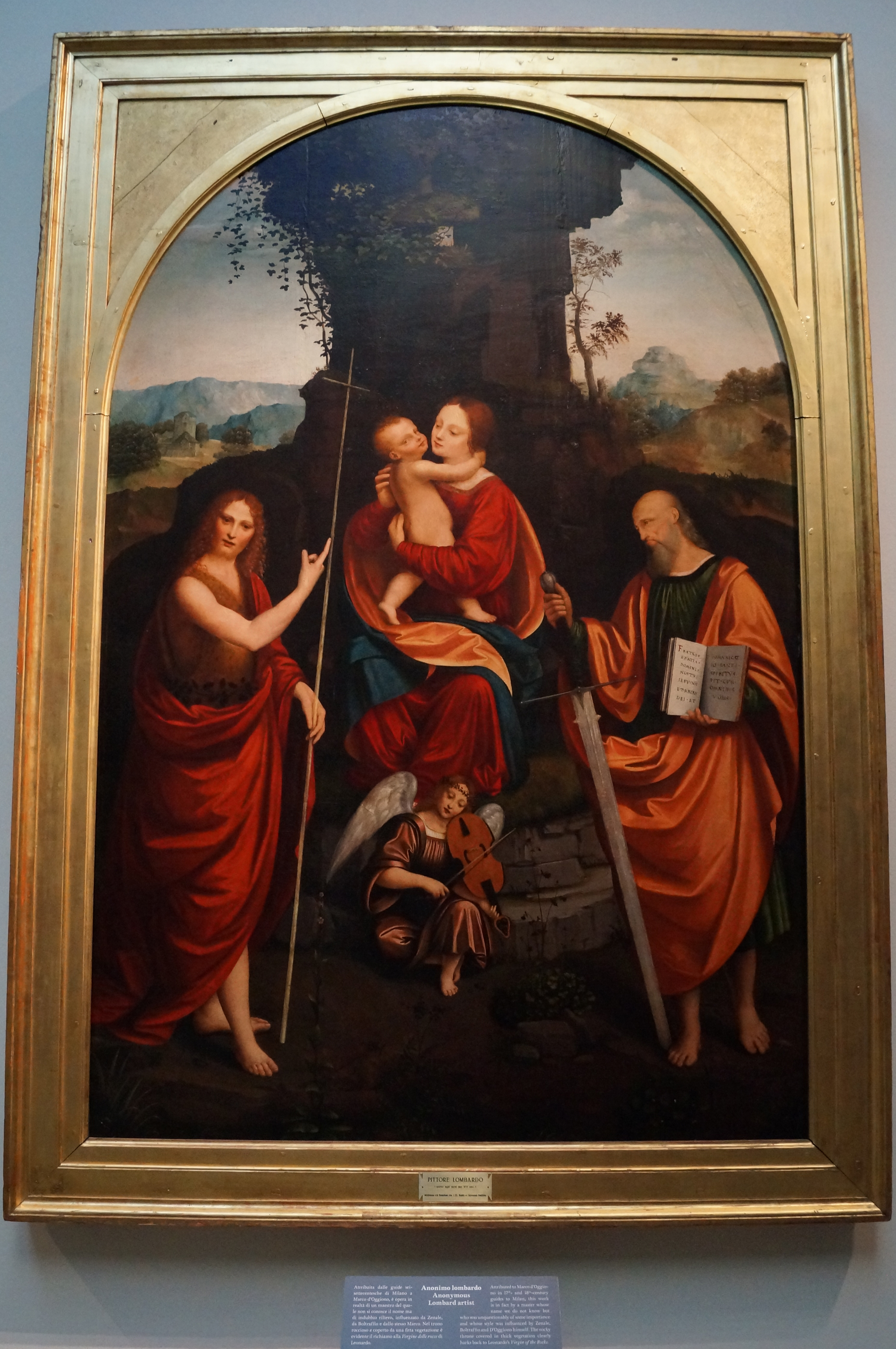 Неизвестный ломбардский художник (Anonymous Lombard Painter)
Неизвестный ломбардский художник (Anonymous Lombard Painter)
Madonna and child with Saint John the Baptist, St. Paul and an Angel Musician
The painting comes from the lost Milanese Church of San Paolo in Compito. Attributed to Marco d’Oggiono in 17th – and 18th century guides to Milan, this work is in fact by a master whose name we do not know, but who was unquestionably influenced by Zenale, Boltraffio and d’Oggiono himself. The rocky throne covered in thick vegetation clearly harks back to Leonardo’s Virgin of the Rocks. The picture is likely to have been painted between the 1510s and the 1520s.
Симоне Кантарини по прозвищу Пезарезе (Simone Cantarini called Il Pesarese)
The Holy Family. The Rest on the Flight into Egypt
Il dipinto, proveniente dalla chiesa delle suore Matris Domini di Bergamo, fu requisito nel 1811; proprio per la sua collocazione decentrata fu meno descritto dalle fonti storiografiche e quindi la sua fortuna critica è solo recente, nonostante la composizione fosse nota grazie ad un’acquaforte dello stesso Cantarini. La datazione viene collocata dagli studiosi indicativamente tra le opere maggiormente influenzate da Guido Reni, che accolse Simone Cantarini nella sua bottega a Bologna (1635-37) e il viaggio a Roma intrapreso dall’artista a cavallo tra il 1640 e il 1641, in seguito al quale è più evidente il legame con un classicismo neoraffaellesco derivato da Andrea Sacchi. Indizi di un aggiornamento sulle novità romane potrebbero trovarsi nella composizione monumentale del dipinto, sviluppata in verticale – soluzione singolare rispetto al tema del Riposo in Egitto – costruita dinamicamente sulla diagonale tracciata dalle figure di San Giuseppe e della Vergine, e i resti antichi in primo piano, che a livello simbolico rimandano alla caduta in frantumi degli idoli all’ingresso di Gesù nella terra d’Egitto (secondo la tradizione dei Vangeli Apocrifi basata sulla profezia di Isaia: 2,18). Nei colori vibranti e nelle lumeggiature dei panneggi si individuano inoltre la conoscenza di Nicolas Poussin ed influenze neovenete. Non è chiaro come la tela sia giunta a Bergamo, se commissionata direttamente dal convento oppure dono di una monaca. L’attività di Cantarini nella bergamasca è comunque documentata da altri dipinti , quali il Riposo durante la fuga in Egitto nella chiesa di Sant’Evasio a Pedrengo e l’Incoronazione della Vergine con i Santi Vincenzo e Benedetto nella basilica di Santa Maria Assunta a Gandino.

Death of Cleopatra
Dipinto tra i più celebri dell’artista romagnolo, proviene dalla collezione Spiridon di Roma ed è entrato in pinacoteca nel 1960 per donazione di Alberto Saibene, allora presidente dell’Associazione Amici di Brera. La datazione, ipotizzata su base stilistica, va fatta risalire alla tarda maturità dell’artista, negli anni del soggiorno viennese alla corte dell’imperatore Leopoldo I, in riferimento anche alla tela di analogo soggetto del Kusthistorisches Museum di Vienna, di cui la Cleopatra di Brera è probabilmente appena anteriore. La composizione è limpida e la luce chiara esalta morbidamente i volumi e le superfici rese con effetti quasi tattili. Nei dipinti di Cagnacci della sua fase matura è quasi del tutto assente l’azione, come invece era richiesto dai principi classicisti della pittura di storia; caratteristica rimproverata dai suoi contemporanei e che è invece oggi considerata uno degli aspetti più moderni della sua pittura. La rappresentazione del soggetto è originale e non retorica: la figura di Cleopatra è resa come una natura morta, in un interno luminoso e spoglio, dove nessun altro elemento suggerisce una “narrazione”; l’osservatore è portato invece ad una sorta di contemplazione del corpo della donna abbandonato sullo schienale di velluto rosso, stilisticamente descritto sublimando influenze reniane e caravaggesche.
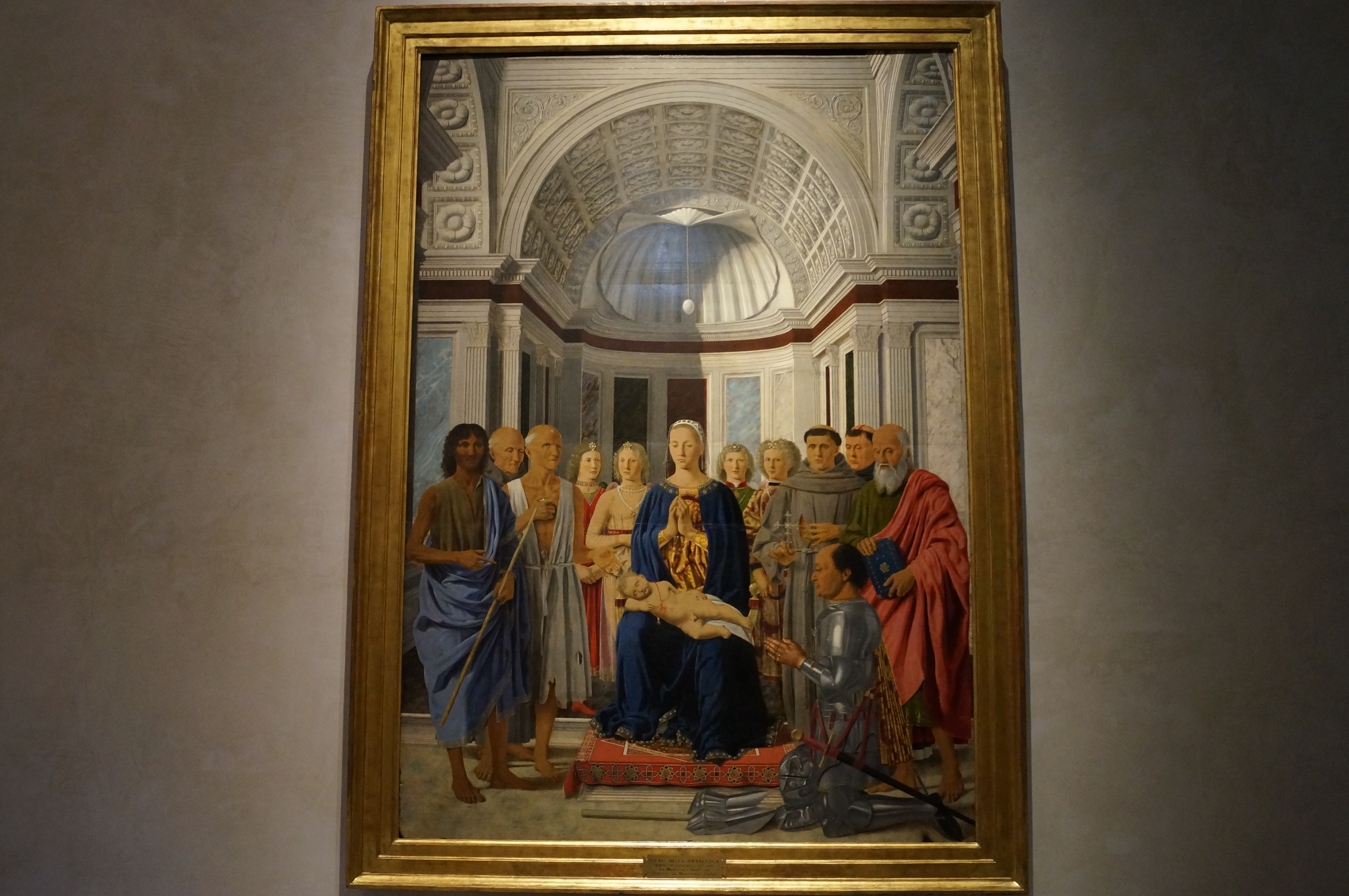 Пьеро делла Франческа (Piero della Francesca)
Пьеро делла Франческа (Piero della Francesca)
The Virgin with Child, Angels and Saints (Pala Montefeltro)
After the Napoleonic abolitions, the altarpiece came to Brera from the church of San Bernardino in Urbino, erected by Federico da Montefeltro to house his own grave. It is possible, but not certain, that the picture was originally painted for this location, and for the duke’s tomb. The interventions of restoration and recent studies have confirmed that the size of the work has been reduced and that the artist had intended the architecture to be more spacious and airy, with the figures gathered under the huge lantern of a dome. Despite the mutilation it has undergone, the work constitutes an exemplary result of the perspective research conducted by Central Italian artists in the late 15th century. The iconography is that of the Sacra Conversazione: at the center the Virgin is seated on a throne, holding the sleeping Child; around her are arranged, from the left, St. John the Baptist, St. Bernardine, St. Jerome beating his breast with a stone, St. Francis displaying the stigmata, St. Peter Martyr with the wound on his head and St. John the Evangelist. Behind them we see the archangels and, kneeling in front of the sacred group, Federico da Montefeltro in the dress of a military commander. In the altarpiece the private history of the client is intertwined with religious devotion and the public – and therefore political – purpose for which it was conceived, creating an image whose significance is still debated by scholars today. It is likely that Federico commissioned it after the birth of his heir, followed by the death of his wife Battista Sforza (1472), and that he wanted to underline the protection granted by the Virgin to his own dynastic authority through this work dense in symbols. It may no longer be possible for us to fully understand their meaning: for example, the ostrich’s egg represents the miraculous maternity of the Virgin but is also a heraldic emblem of the Montefeltro family; the sleeping Child alludes to maternity and at the same time to death, supporting the hypothesis of the funerary destination of the work.
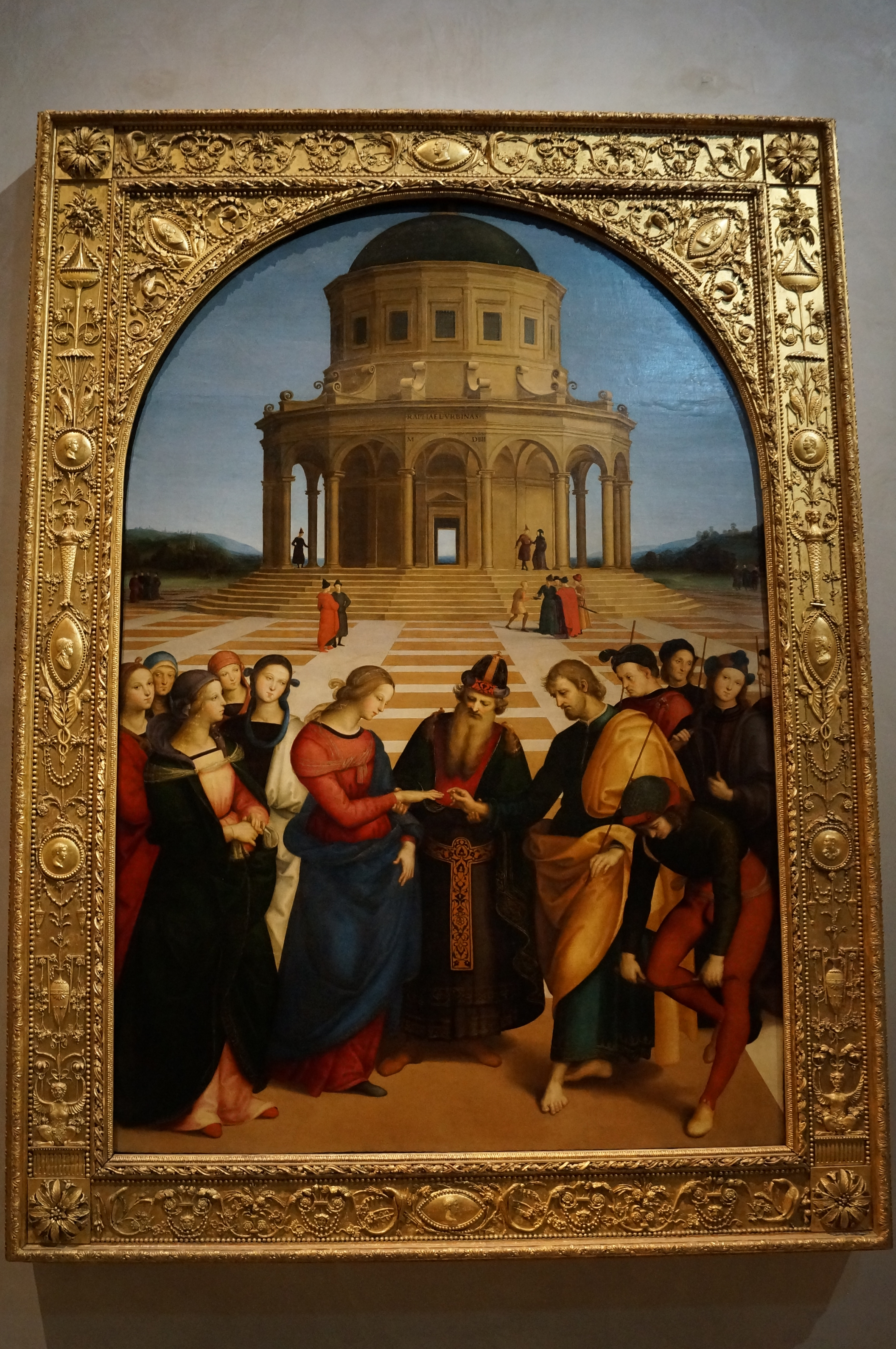 Рафаэль Санти (Raffaello Sanzio, Raphael)
Рафаэль Санти (Raffaello Sanzio, Raphael)
The Marriage of the Virgin
The painting, dating from 1504, was moved from the Church of San Francesco in Città di Castello to the Pinacoteca in 1805. Raphael painted the Marriage of the Virgin having in mind the altarpiece with the same subject by Perugino, which is conserved at the Musée des Beaux-Arts in Caen. Raphael took inspiration from it, using its composition structure and iconography to obtain a result of incredible and unachievable perfection. Infrared reflectography reveals a dense set of lines converging on the temple door. These lines define the image perspective system, fully abiding by the recommendations contained in the De prospectiva pingendi (On the Perspective of Painting) by Piero della Francesca. Thanks to this artifice, the temple becomes the visual centre of the composition. The figures are placed in a semicircle, and their position balances the convex line of the architecture, which has been painted with such a precision that scholars have speculated the existence of a wood model. All elements are connected to each other by mathematical relations of proportion and placed according to a clear, logical hierarchical order, while Perugino had only juxtaposed the composition elements within a correct perspective structure. The realisation of this coherent organism perfectly demonstrate Raphael’s vision. He intended beauty as an abstract order of geometrical representation and thought that artists had the duty of “making things not as Nature makes them, but as Nature should.”
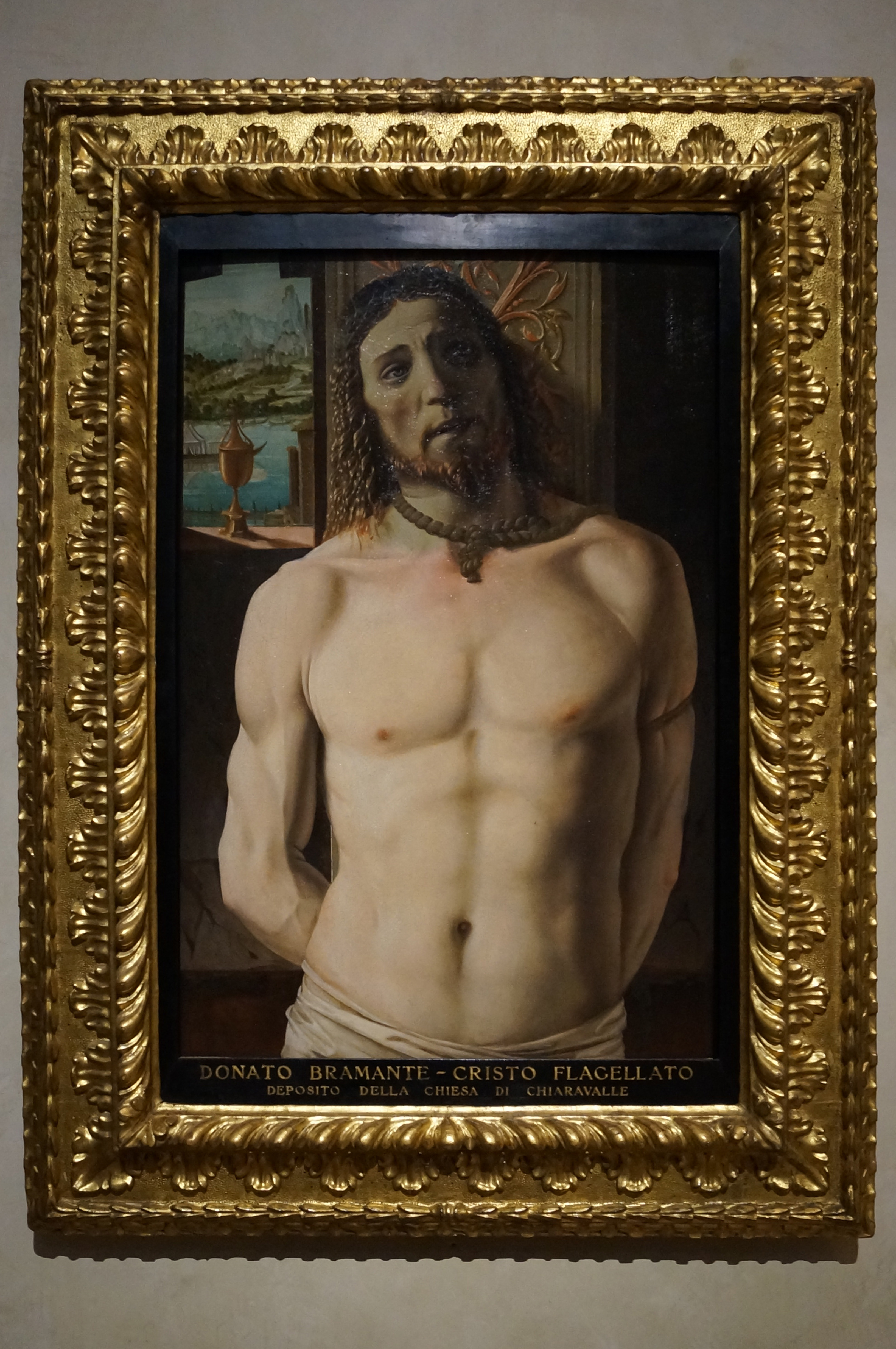 Донато Браманте (Donato Bramante, Donato di Pascuccio)
Донато Браманте (Donato Bramante, Donato di Pascuccio)
Christ at the Column
Bramante was trained in Urbino, a center of mathematical studies where the use of perspective had been developed as a form of controlled organization of painted space. Moving to Milan, he took this research further, seeking visual and illusionistic effects that were intended to stir the emotions of the observer: the Christ at the Column can be considered a manifesto of this innovative language, which allowed Lombard artistic culture to adopt unprecedented solutions in the Renaissance mold. On his arrival at the court of Ludovico il Moro, Bramante worked as an architect at Santa Maria presso San Satiro, where the lack of physical space in which to locate the hemicycle of the chancel led him to create a fake vault in stucco that simulated a spatial extension of the walls of the church: the same idea of space created through trompe-l’oeil constitutes the main theme of the painting in Brera, where a number of compositional devices – the sculptural body occupying the foreground, the window, the pillar extending beyond the physical limits of the picture – suggest the existence of a large room in which Christ is being tormented. Bramante was stimulated by his encounter with the works of Leonardo, who was painting the Last Supper in Milan and investigating the communicative potential of movements of the body and expressions of the face: thus in the Christ at the Column the sculptural plasticity derived from the culture of Urbino is enriched with details of naturalism, such as the constriction of the flesh by the bindings and the transparent tears, whose effects on the emotions of observers were something for which no allowance had been made in Bramante’s training. It was probably executed in the early 1490s.
Пеллегрино Тибальди (Pellegrino Tibaldi, Pellegrino Pellegrini)
The Decollation of the Baptist
L’opera faceva parte della predella di una pala d’altare dedicata a San Giovanni Battista insieme ad altre due tavolette: la Visitazione oggi alla Galleria Nazionale delle Marche a Urbino e la Nascita del Battista in collezione privata. Sulla base delle indicazioni fornite dal Vasari, che menzionava l’esistenza di una predella sotto al Battesimo di Cristo in Sant’Agostino ad Ancona, gli studiosi ritengono che il dipinto di Brera facesse parte di un unico complesso decorativo allestito da Tibaldi per la chiesa marchigiana, probabilmente attorno al sesto decennio del Cinquecento. J. Winkelmann, che anticipa le tavolette al 1554 – 1555, non esclude che esse potessero essere collegate ad un’altra pala, dedicata anch’essa a San Giovanni Battista, realizzata per la chiesa di San Ciriaco proprio sopra palazzo Ferretti ad Ancona.
Перино дель Вага (Пьеро Буонаккорси) / Perin del Vaga (Pietro Bonaccorsi)
The Crossing of the Red Sea
Acquistata nel 1826 da Gaspare Porta come opera di Polidoro da Caravaggio, solo negli ultimi anni – e in seguito all’intervento di restauro – è stata assegnata con sicurezza a Perin del Vaga. L’episodio del passaggio da parte degli Ebrei del Mar Rosso, che si richiuse improvvisamente sull’esercito del faraone, è stato identificato con il “monocromo color bronzo” che secondo Vasari, l’artista eseguì durante il soggiorno fiorentino del 1522 – 1523 per ringraziare il cappellano di San Lorenzo della sua generosa ospitalità.
Франческо Сальвиати (Франческо де Росси) / Francesco Salviati (Francesco de' Rossi)
Lamentation over the Dead Christ
La tela braidense venne eseguita durante il soggiorno veneziano del Salviati tra il 1539 ed il 1540 per la Chiesa del Corpus Domini, soppressa insieme all’annesso monastero con decreto del 25 aprile 1810, su commissione di Bernardo Moro. In seguito alla soppressione della chiesa entrò in Pinacoteca nel 1811. Il dipinto attualmente di formato rettangolare era in origine centinato, ed è intessuto di riferimenti al linguaggio elaborato a Roma nei primi decenni del Cinquecento sui modelli di Raffaello e Michelangelo. E’ probabile che Salviati abbia dipinto solo le figure principali e che quelle sullo sfondo spettino invece al suo collaboratore Giuseppe Porta, che restò a Venezia dopo il ritorno di Salviati a Roma, nel 1541.
Аньоло Бронзино (Аньоло ди Козимо ди Мариано) / Bronzino (Agnolo di Cosimo)
Portrait of Andrea Doria in the Guise of Neptune
Il dipinto risulta acquistato nel 1898 da Alfredo Rovelli, erede della raccolta del collezionista e scrittore comasco Paolo Giovio. Per Marani (1992) probabilmente esso venne acquistato direttamente presso Bronzino dal Giovio per il proprio Museo, comprendente ritratti di uomini illustri. Un ritratto di Andrea Doria compare infatti in un elenco di quadri spediti al Museo di Borgo Vico del Giovio. Andrea Doria (1466/68-1560), ammiraglio al servizio di Clemente VII e di Carlo V, è trasformato allegoricamente in Nettuno, dio del mare: seminudo, con il tridente, rimanda ai modelli della statuaria classica. L’autografia dell’opera è indiscussa mentre controversa appare la datazione.
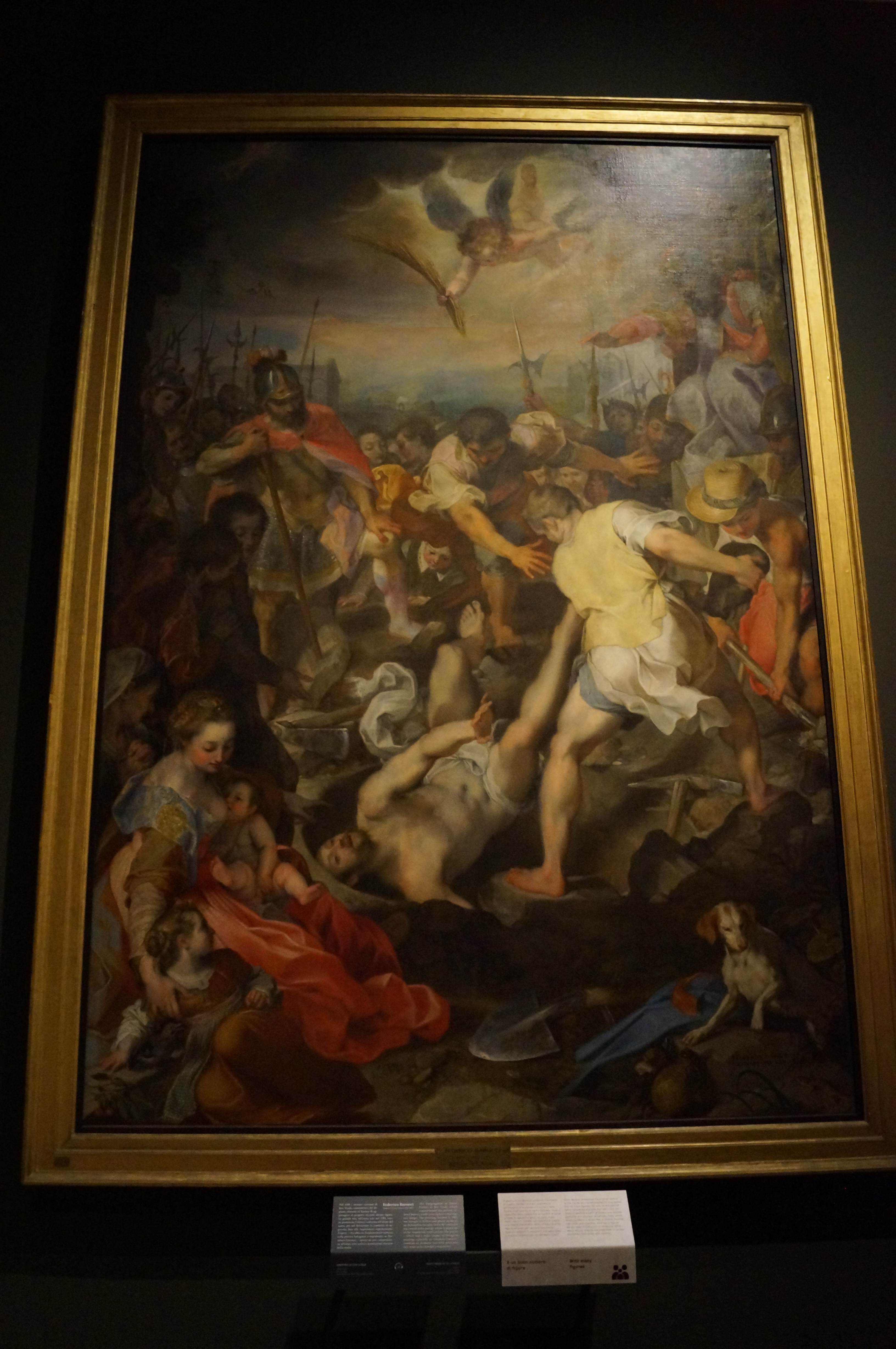
Martyrdom of Saint Vitalis
Il Barocci portò a termine nel 1583 il dipinto commissionatogli dai monaci Cassinesi di S. Vitale a Ravenna. Il dipinto fu collocato inizialmente sopra l’altare del santo e poi trasferito in sagrestia, dove rimase fino al 1811, quando entrò a far parte della Pinacoteca a seguito delle requisizioni napoleoniche. Numerosi sono i disegni che testimoniano il passaggio dall’idea iniziale all’esecuzione definitiva, in accordo col volere dei monaci che, rispetto al disignum inizialmente propostogli dall’artista, desideravano pluribus figuris augere et accrescere. Dal punto di vista stilistico, si tratta del dipinto di più avanzata penetrazione nord-italiana del Barocci i cui influssi su Annibale Carracci sono stati più volte sottolineati dalla storiografia. La scena del martirio assume termini lievemente aulici e quasi piacevoli che mascherano parzialmente la crudezza dell’evento narrato: si veda la dolcezza espressa nel gioco della bambina con la gazza e le ciliegie, allegoria che data alla fine di aprile il martirio del santo ravennate.
 Джироламо Дженга / Girolamo Genga
Джироламо Дженга / Girolamo Genga
Disputation over the Immaculate Conception
The picture constitutes the central panel of a larger decorative complex, commissioned in 1513 for the high altar of the church of Sant’Agostino at Cesena and dismembered during the renovations of the building in the late 18th century: it originally included a predella with Scenes from the Life of Saint Augustine (part of which came to Brera but was sold to private individuals), a finial with the Annunciation (still in its original location) and two figures of Blessed Augustinians (now lost). The polyptych was executed between 1516 and 1518, in an already mature phase of the versatile activity of this artist, who was a painter and architect and who in his precocious contacts with the Roman milieu in the early years of the century assimilated the classical language of the artists operating there, especially Raphael and Michelangelo. On these premises he formulated a bizarre and eccentric style that made him one of the most illustrious representatives of Mannerist culture.
Аннибале Карраччи / Annibale Carracci
Christ and the Samaritan Woman
Francesco Sampieri, a resident of Bologna who had fallen on hard times, sold the family picture gallery in 1811. The seven masterpieces that were the pride of the collection were bought by the Kingdom of Italy’s interior minister for the Brera. This picture, together with Agostino’s Christ and the Woman Taken in Adultery and Ludovico’s Christ and the Canaanite Woman, belonged to a small series commissioned by Abbot Astorre Sampieri. Annibale painted the picture before going to Rome in 1595.
Лодовико Карраччи / Ludovico Carracci
Saint Anthony the Abbot Preaching to the Hermits
This painting’s almost excessive emotional charge, clearly visible in the peasant faces and gnarled feet of the figures in the foreground, together with the ruins, stark against the blue sky, the palm tree framing the composition, the strong chiaroscuro and the exceptionally free bruswork, all combine to make it emblematic of Ludovico’s painting, which was on the verge of being supplanted by Guido Reni’s scholarly classicism even in Bologna.
Лодовико Карраччи / Ludovico Carracci
Christ and the Canaanite Woman
The three pictures in the series, two of which are on display here, shared the horizontal format appropriate for overdoors and all depicted Gospel stories in which Christ has dealings with a woman. Ludovico – who worked with his cousins Annibale and Agostino on a fresco cycle also commissioned by Abbot Sampieri in the palazzo in Bologna for which the set was intended – illustrates the story of a mother from Canaan who insists with Jesus that He exorcise her daughter.
Гвидо Рени / Guido Reni
Paul Rebukes the Repentant Peter
Reni here illustrates an episode from the Letter to the Galatians in which Paul rebukes Peter as he sits on the ground, tears coursing down his face. The penitential theme was perfect for the painting of the Counter-reformation with its insistence on a sacrament rejected by Protestantism. Reni, who moved to Rome in 1601 but returned frequently to Bologna, painted the picture for the Sampieri family, in whose collection it remained until 1811. Reni swings between the classicism of the Carraccis and the naturalism of Caravaggio.
Лодовико Карраччи / Ludovico Carracci
Adoration of the Magi
Signed and dated in the bottom right-hand corner: «Lod. Car. Bon. A.D. MDCXVI», the picture came to the Brera with the Napoleonic suppressions. Its date is confirmed in a letter dated 29 June 1616 in which Ludovico says that he is working on the painting. One of the loftiest expressions of the artist’s maturity, it is still faithful to his style designed to communicate popular religious sentiment in a way that was easy to understand, while also allowing for the fact that it was intended for a peintential confraternity.
Гверчино (Джованни Франческо Барбьери) / Guercino (Giovan Francesco Barbieri)
Abraham Casting out Hagar and Ishmael
Guercino sets the story of Abraham, aged 100, casting out the slave Hagar and their son Ishmael to comply with his first wife Sarah’s demands on a stage conjuring up the world of melodrama which also inspires the figures’rhetorical gestures. Formerly in the Sampieri collection along with other masterpieces of Bolognese painting now in the Brera, this painting was commissioned from Guercino by the Cento Community in 1657 as a gift fot Lorenzo Imperiali, the cardinal legate of Ferrara.
Караваджо (Микелаанджело Меризи да Каравааджо) / Caravaggio (Michelangelo Merisi)
Supper at Emmaus
Caravaggio painted the Supper at Emmaus between 1605 and 1606, in other words between the end of his time in Rome and his final flight from the city after being found guilty of murder. He managed to sell it, through the good offices of Ottavio Costi, to Marquis Patrizi and it was still in that aristocratic family’s palazzo in Rome in 1939, when it was purchased for the Pinacoteca by the Associazione Amici di Brera. The depiction of the table with a carpet draped over it is a typical device of Caravaggio’s, found also in the first version of this subject which the artist had tackled earlier in a picture now in the National Gallery in London. Compared to the earlier version, this painting displays a greater intimacy and a plainer palette combined with a dramatic, almost theatrical treatment of light, underscoring the sacred nature of the moment.
Сальватор Роза / Salvator Rosa
The Madonna del Suffragio
This painting once graced the church of San Giovanni Decollato alle Case Rotte, the seat of the Confraternita dei Disciplini, a sodality of “consolers” whoassisted criminals before and during their execution. The drama and excitement of the scene, its message the last hope of salvation and redemption, was designed to persuade the felons either to repent or to resign themselves to their fate. Rosa mentions the painting in a letter, allowing us to date it to some time between November 1661 and March of the following year.
Антиведуто Грамматика / Antiveduto Gramatica
St. Cecilia between St. Tiburtius and Valerianus
These two tondos, companion pieces formerly in the Marchesi Mattei’s important collection in Rome and once attributed to Ludovico Carracci’s pupil Lucio massari, were attributed by Federico Zeri to Antiveduto, a Tuscan artist active in Rome. St. Cecilia depicted with her husband and brother-in-law was a popular theme in the early 17th century but the picture has also been interpreted (halo notwithstanding) as Concordia, testifying to the complexity of the iconography.
Маттиа Прети / Mattia Preti
Saint Peter paying the Tribute Money
The story is set in Capernaum. The tax collectors ask Peter for the tribute money paid by Jews wishing to enter the Temple. Jesus orders Peter to fish in the lake, where he would find the coin with which to pay the tribute in a fish’s mouth. While in Rome, Preti was in touch with the adepts of the “manfrediana methodus“, the method of painter Bartolomeo Manfredi based on the study of Caravaggio’s work with a view to selecting typical figures for use in other compositions which, though new, were still painted in the master’s spirit.
Орацио Джентилески / Orazio Gentileschi
The Martyrs Cecilia, Valerian and Tiburtius Visited by an Angel
This painting, signed on the base of the organ, is one of the most Caravaggesque works by this artist who met and associated with Caravaggio in Rome and who also saw the Death of the Virgin now in the Louvre, a composition which he echoes here in the large red curtain. The scene shows an angel appearing to Cecilia and her husband Valerian, a convert to Christianity, bearing a wreath of flowers symbolising marriage but also a palm alluding to martyrdom. The groom’s brother Tiburtius looks on.
Battistello (Giovan Battista Caracciolo)
The Samaritan at the Well
This painting was long attributed to Caravaggio himself despite its being initialled “GBC”, the monogram with which Battistello used to sign his work. The use of a support made of the kind of hempen sacking favoured by Caravaggesque painters in Naples appears to indicate that it was painted in that city, yet its links with paintings by Battistello now in northern Italy suggest that the picture was then sent north, possibly to Genoa where his work was much prized and where he himself resided for a time.
Хосе де Рибера (Спаньолетто) / Spagnoletto (Jusepe de Ribera)
Christ Mocked and Crowned with Thorns
Some scholars have questioned the authenticity of the signature and date (“Jusepe de Ribera espanol / F 1638”) in the bottom right-hand corner of the painting, which may be a workshop copy of a lost original. Ribera, also known by the nickname of Spagnoletto, moved to Naples in 1616, becoming one of the city’s Caravaggesque artists most loyal to the master’s naturalism.
Маттиа Прети / Mattia Preti
A Mother Entrusting Her Sons to Christ
Preti painted this picture and its companion piece, the Tribute Money, while a young man in Rome when he was still very much an adept of the Caravaggesque style, as we can see from his handling of light, his models and his themes: he treats religious subjects almost as though they were genre paintings. There is some debate over the subject matter, but it may refer to the time Jesus berated His apostles for sending away mothers bringing their children to Him: “Suffer the little children to come unto me”.
Антиведуто Грамматика / Antiveduto Gramatica
Dispute of St. Catherine (?)
The subject here is a matter for debate. It may depict St Domitilla with St. Nereus and St. Achilleus if it is linked to the transfer of the three saint’s relics to Santa Maria in Vallicella in Rome in 1597 (but the men have neither armor nor haloes), St. Constance with St. John and St. Paul (though here again the haloes are missing), or the Dispute of St. Catherine in that the saint is shown between two philosophers counting, a gesture traditionally associated with her.
Выставочный зал
Даниэле Креспи / Daniele Crespi
The Last Supper
The painting was executed for the Benedictine church of Brugora, in Brianza, which was abolished in 1805: on that date it became the property of the Accademia di Brera, which transferred it to the Pinacoteca in 1809. Regarding the choice of a raised point of view, the artist was certainly influenced by the Last Supper painted by Gaudenzio Ferrari for the church of La Passione in Milan. However, concerning the grouping of the apostles’ heads and the vitality displayed by the figures, Crespi’s painting also draws on the version executed by Leonardo in Santa Maria delle Grazie. The work is assigned to Crespi’s late maturity.
Франческо Кайро / Francesco Cairo
St. Catherine of Siena
This painting, an exceptional example of Francesco Cairo’s work intended for private devotion, is dominated by ochre, light yellow and bluish grey hues. Echos of Cairo’s troubled life, marked by crime and financial difficulty despite his accolades from the court of the House of Savoy, may be detected in the tragic melancholy of his figures.
Мораццоне (Пьер Франческо Мациуккелли) / Morazzone (Pier Francesco Mazzucchelli)
Madonna of the Rosary with the ChristChild, St. Dominic and two Angels
In this preparatory work for the altarpiece in the Certosa di Pavia, for which Morazzone was paid in 1617, the artist adopts a traditional pyramid design, the wreath with which the angels are crowning the Virginbeing its apex. In the carefully devised composition, the sweeping gesture with which the Virgin offers the rosary to St. Dominiccounterbalances the Christ Child’s presence on her lap. The light focuses on the Virgin, the clouds and the childish bodies rendered with soft and glistening brushwork.
Танцио да Варалло (Антонио д'Энрико) / Tanzio da Varallo (Antonio d’Enrico)
The Martyrdom of Franciscan Friars in Nagasaki
In 1627 Pope Urban VIII beatified 23 Franciscan missionaries crucified in Nagasaki in 1597. Tanzio sought inspiration for this painting, with its strong dramatic impact, in an engraving and an account by Spanish friar Marcelo de Ribadeneira entitled Life and Deeds of the Martyrs in Japan. The picture, which comes from Varallo where Tanzio was working on the Sacro Monte, testifies to his loyalty to the Lombard tradition while also revealing the influence of Caravaggio.
Джулио Чезаре Прокаччини / Giulio Cesare Procaccini
Saint Charles in Glory
The date of this painting, once the altarpiece in the Cattaneo Adorno family chapel in the church of San Francesco ad Albaro in Genoa, is the subject of some debate. It appears to be a youthful work by Procaccini who is known to have been in Genoa in 1618, although he had already worked for his authoritative patron Gian Carlo Doria prior to that date. Charles Borromeo, who was canonised on 1 November 1610, is surrounded by angels in a splendid array of dazzling colours.
Франческо Кайро / Francesco Cairo
Christ in the Garden of Gethsemane
Formerly in the Cugini collection in Bergamo, this picture may have been painted prior to Cairo’s move to the court of the House of Savoy. The artist frequently tackled this theme early on his career, but this version is slightly different on account of the presence in the foreground of a still-life with with the Instruments of the Passion. The treatment of the angel’s hair shows that he was familiar with Procaccini’s work and the naked arm echoes the style of Tanzio da Varallo, while the metallic appearance of the angel’s raiment is peculiar to Cairo.
Выставочный зал
Pietro da Cortona (Pietro Berrettini)
Madonna and Child with Saints John the Baptist, Felix of Cantalice, Andrew and Catherine
L’opera giunse a Brera in seguito alla soppressione dei beni della chiesa dei Cappuccini di Amandola, presso Ascoli Piceno, dove era documentato a partire dal 1728; le vicende precedenti non sono note, ma l’ipotesi più accreditata lo considera eseguito attorno al 1628 – 1629 su commissione di Antonio Barberini, fratello di papa Urbano VIII e membro dell’ordine. Il restauro del dipinto nel 1985 ha mostrato la presenza di numerosi pentimenti e varianti.
Иоахим фон Зандрарт Старший / Joachim von Sandrart
The Good Samaritan
Signed and dated bottom centre, this painting is by Joachim von Sandrart, a German whose contribution to art history was crucial but who was also an engraver and painter in his own right.
In this painting he merges an eclectic assortment of stimuli from Classical statuary (the nude on the right), while the landscape in the background owes a debt to Lorrain and the nuanced atmosphere echoes Titian’s work. The picture once belonged to the painter Andrea Appiani, a curator at the Brera.
Якоб Йорданс / Jacob Jordaens
The Sacrifice of Isaac
This picture, purchased from the painter’s heirs in The Hague in 1734, was transferred to the Sanssouci Palace in Potsdam, where it was requisitioned by the French as a Rubens and taken to the Louvre. It came to the Brera as part of an exchange, and was correctly identified here as a work by Jordaens. There is some dispute over its date, but the artist’s use of sober blues and browns, akin to those used in other works of the period, suggests that it is likely to have been painted in 1625 or 1626.
Антонис ван Дейк / Antoon van Dyck
Madonna and Child with Saint Anthony of Padua
L’opera è giunta a Brera nel 1813 dal Museo del Louvre, insieme ad altri quattro dipinti fiamminghi e risale ad anni compresi fra il 1630 e il 1632, dopo la conclusione del soggiorno genovese dell’artista. Si avvicina per lo stile alla pittura italiana del Cinquecento e di Tiziano in particolare.
Антонис ван Дейк / Antoon van Dyck
Portrait of a Lady
Eseguito verso il 1635, questo dipinto rappresenta una donna adorna di splendidi gioielli: a lungo identificata, secondo le ipotesi più recenti con un membro della famiglia du Croy di Bruxelles. L’opera si ispira all’iconografia del ritratto vedovile codificata nelle Fiandre della prima metà del Seicento, e in particolare a quello di Maria de’ Medici dipinto da Rubens verso il 1622.
Питер Пауль Рубенс / Pieter Paul Rubens
The Last Supper
It was one of the five Flemish paintings sent to Brera in 1813 in exchange for several works taken from Milan by Napoleon, and comes from the chapel of the Santissimo Sacramento in the church of St. Romuald at Malines, for which it was commissioned by Catherine Lescuyer to commemorate the death of her father. Executed between 1630 and 1632, it was completed by two predellas with scenes from the Passion of Christ, currently in the Musée des Beaux- Arts in Dijon. The work, like many others from the late production of Rubens, was executed with the help of assistants: it is painted in a warm and intense style, in which bold lines shape forms framed in a composition of majestic classical equilibrium. The influence of 16th-century Italian painting, especially that of the Veneto, is evident.
Бернардо Каваллино / Bernardo Cavallino
The Virgin Immaculate
Mary’s Immaculate Conception – without original sin – was celebrated in Naples as early as the 11th century but only acquired dogmatic status in 1854. The iconography dictated by Spanish painter Francisco Pacheco – a girl in a white gown with a blue mantle, her hands joined in prayer over her breast – became the official and hugely popular image of the Immaculate Conception following the Council of Trent, particularly in Spain and Naples. Cavallino himself tackled the theme on numerous occasions.
Джоаккино Ассерето / Gioacchino Assereto
The Presentation in the Temple
This altarpiece, whose original location is unknown, is thought to be an early work by Gioacchino Assereto, painted at a time when he was very close to Cerano. Indeed their closeness has prompted scholars to surmise that Assereto may have spent time in Lombardy himself or else picked up the style from Bernardo Strozzi. The scene depicts the Presentation of Jesus in the Temple in Jerusalem, where every newborn child was brought by law to be offered to God along with two sacrificial turtle doves.
Бернардо Каваллино / Bernardo Cavallino
Strage degli innocenti
There is so little documentary evidence for this Neapolitan painter, who painted only one known work, that the reconstruction of his career is based on attribution alone. This picture, once part of the Perrino collection in Naples, shows us how Cavallino set out from the Caravaggesque manner of Artemisia Gentileschi and Vouet in order to turn gradually towards a richer painterly style and a more jewel-like palette inspired by Rubens’ Herodias and the work of Sir Anthony van Dyck.
Лука Джордано / Luca Giordano
The Holy Family Venerated By St. Anthony of Padua
This picture is likely to have been painted by Luca Giordano during his known absence from Naples in 1664–5, when he spent time in Florence and may even have travelled as far as Venice. He has already contaminated his master Ribera’s style with a Baroque search for the painterly and the picturesque which he learnt from Mattia Preti, Rubens and Pietro da Cortona. The subject is also the appearance of the Cross to the Holy Family, which proved enormously popular in Naples.
Бернардо Строцци / Bernardo Strozzi
The Young Saint John the Baptist
The exquisite quality of such details as the saint’s hand, his complexion, the scroll and the cross-shaped staff have persuaded scholars that this is an autograph work. The dark background, the saint’s hair and his camelskin all suggest that it was painted before Bernardo Strozzi moved to Venice and discovered the Venetian masters’ use of colour, thus it may be dated to some time between 1620 and 1625.
Выставочный зал
Джузеппе Боттай / Giuseppe Bottani
St. Paula of Rome Departs for the Holy Land
This painting shares with Batoni’s altarpiece both the handling of light and the inspiration of Raphael’s art. Batoni himself may even have put forward the name of his friend and frequent collaborator Bottani for the church’s one altarpiece still unassigned. When the Hieronymites were suppressed, the church was deconsecrated and its property impounded. The altarpieces were among the first works to go to Brera, where a varied collection was being put together in support of the Accademia di Belle Arti’s teaching programme.
Пьер Сюблейра / Pierre Subleyras
Vision of St. Jerome
The altarpieces of Subleyras, Batoni and Bottani hanging here were painted for the side altars in the Hieronymite church of Santi Cosma e Damiano. The church was renovated in 1738 by Abbot Paolo Alessandro Serponti who commissioned the work from artists active in Rome. Work by prestigious painters close to the order began to arrive in Milan in 1739, the flow only ceasing in 1745. In this signed and dated painting the artist is influenced by the Italian artistic tradition of the 17th century.
Джованни Баттиста Тьеполо / Giambattista Tiepolo
Our Lady of Mount Carmel with St. Simon Stock, St.Teresa of Avila, St. Albert of Vercelli, the Prophet Elijah and the Souls in Purgatory
In this canvas painted for the Confraternity of the Suffragio del Carmine in Venice (its members are processing in the background), Our Lady of Carmel presents the scapular (or tunic) to Simon Stock, the order’s first general, while Jesus holds a habit ensuring the wearer swift passage through Purgatory. Originally a hermit community (ideally founded by Elijah, in the background) the Carmelites received a rule from St. Albert. Theresa of Avila founded the Discalced Carmelites.
Кандидо Витали (Candido Vitali)
Game with a Live Pigeon
Once attributed to a Flemish artist and then to Felice Boselli from Piacenza, this painting and its companion piece (Game with Hare), have now been given to Candido Vitali, a Bolognese painter who specialised in the genre. After studying under Lorenzo Pasinelli in Bologna and Carlo Cignani in Forlì, Vitali started to show his work at the age of 30, achieving immense popularity not only in Italy but also in northern Europe. Still-life as a genre originated in Flemish painting in the second half of the 16th century.
Эваристо Баскенис (Evaristo Baschenis)
Still Life with Musical Instruments (Bombard, Mandola, Violin, Flute, Sheet of Tableture, Casket, Books, Aples, with Curtain)
On the table, starting on the left, we see a low-pitched shawn, a mandora, a violin with a bow and a tablature, a system of musical notation for string instruments. Books, fruit and a flute before a curtain complete the composition constructed on the basis of strict scientific rules reflecting the treatises on perspective and the wooden marquetry of the 15th century. Such naturalistic details as the fingerprints in the dust on the mandora may be interpreted as a warning pointing to the inexorable passage of time.
Эваристо Баскенис (Evaristo Baschenis)
Kitchen Still Life
The work was acquired in 1915 from a private collection in Bergamo by the director of the Pinacoteca, Ettore Modigliani, who had tried for a long time to get hold of a kitchen scene definitely by the artist – and therefore signed – to represent both aspects of his production of still lifes at Brera. The canvas depicts a table top on which various kinds of games as well as jugs and fruit stands are ranged: these have contrasting surfaces and materials, in which the light is reflected in various ways. The artist’s major interest in this painting was the brightness of colours and the play with the objects’ perspective.
Ян Фейт (Johannes Fyt)
Still Life with a Cat
This painting has been in the Brera since 1813 together with its companion piece, Still life with a Crossbow, signed bottom left: “Jan Fyt”. The Flemish artist Jan Fyt was an oustanding painter of animals, his work much appreciated for its meticulous attention to detail. The still life genre also spawned a flourishing market in Italy and was one of the most popular genres with a broad variety of patrons.
Джузеппе Пеллицца да Вольпедо / Pellizza da Volpedo (Giuseppe Pellizza)
Human Flood
На картине изображена молодая женщина, которая только что проснулась и сразу же взяла в руки маленький портрет своего любимого. Её тревожит плохое предчувствие, что с женихом могло случится что-то нехорошее. Художник Джироламо Индуно, преимущественно, изображал на своих полотнах военный быт гарибальдийцев (добровольцев, бившихся в 40 – 60-х годах 19 в. под предводительством Гарибальди за освобождение Италии от австрийского ига и за её национальное объединение). Поэтому есть большая вероятность, что женихом героини картины является именно гарибальдиец, следовательно, её опасения не напрасны. Несмотря на скромную обстановку и беспорядок в комнате, женщина изображена с определенной степенью торжественности. В наше время картина прославилась тем, что портрет в руках женщины очень похож на смартфон. Интернет-пользователи шутили, что художник заглянул в будущее и изобразил девушку, набирающую смс.
Джироламо Индуно (Gerolamo Induno). Плохое предчувствие. 1862 год
Композиция картины явно напоминает "Поцелуй Хайеса", показанный годом ранее, но здесь наше внимание привлекают более приземленные, актуальные темы, такие как мать, целующая сына на прощание, когда он отправляется сражаться за Гарибальди. Художник и его брат Доменико также были последователями Гарибальди, а личный опыт Джероламо позволял ему иллюстрировать жестокие сражения и в то же время писать более радостные сцены, сочетающие патриотические идеалы с торжеством семейных уз.
Джироламо Индуно (Gerolamo Induno). Большая жертва. 1860
Полотно "Поцелуй" было представлено на выставке в 1859 году, которая проходила через несколько месяцев после въезда в Милан Виктора Эммануила II и Наполеона III и праздновала успешное завершение борьбы Рисорджименто, но попало в Пинакотеку Брера только в 1886 году, как наследство от Альфонсо Марии Висконти, который заказал картину. Это, возможно, одна из самых знаковых и тиражируемых итальянских картин XIX века, созданных с целью символизировать любовь к родине и жажду жизни молодых людей, вышедших из Второй войны за независимость и возлагавших большие надежды на своих новых правителей. Картина имела оглушительный успех благодаря своим как патриотическим ценностям, так и средневековому вдохновению сюжета, характерному для романтического вкуса того времени; публика была в восторге от смелого Поцелуя, а также патриотического посыла, заложенного в цветах: красные чулки, зеленый отворот на плаще и сине-белое платье указывают на флаги Италии и Франции. Хайес написал и другие версии этой картины, которые сейчас находятся в различных европейских коллекциях.
Франческо Айец (Francesco Hayez). Поцелуй. 1859
Выставленная в Брера в 1820 году под названием "Пьетро Росси, владыка Пармы, лишенный своих владений Скалигерами, повелителями Вероны, посланный защищать замок Понтремоли и принять командование венецианской армией, которая должна была выступить против его врагов, его жена и две дочери слезно умоляют его отказаться от командования", эта картина была названа манифестом романтической живописи за введение новизны современной исторической темы.
Франческо Айец (Francesco Hayez). Pietro Rossi. 1818-1820
Молодая женщина в черном – Тереза Борри Стампа, вдова графа Стефано Децио Стампа, со своей матерью Марианной, братом Джузеппе и сыном Стефано. Обстановка на открытом воздухе – дань утонченной французской культуре графини, но ей не понравилась картина, она жаловалась, что на ней она изображена с выпирающим животом, и отвергла урну с профилем мужа на колонне. Картина оставалась в мастерской художника в течение трех десятилетий, пока он не закрыл вазу и не расширил пейзаж.
Франческо Айец (Francesco Hayez). Портрет семьи Борри Стампа. 1822
Эта картина иллюстрирует финальную сцену в драме Байрона "Два Фоскари". Дож, обманутый ложными обвинениями, ссылает своего сына, который умирает до того, как заговор раскрывается. Услышав новость о том, что вражеская фракция объявила о его отстранении от должности, убитый горем дож безжизненно падает на пол. Айец сочувственно изображает дожа, как и другие трагические фигуры. Насыщенность картины вдохновила Джузеппе Верди на одноименную оперу.
Франческо Айец (Francesco Hayez). Отстранение дожа Франческо Фоскари (Два Фоскари). 1844
The famous painting, which remained in the possession of the painter’s heirs until the 1940s, was donated to Brera in 1986 by the Sprind company. It dates from 1895-96 and represents a defining moment in the production of Pellizza da Volpedo, linked to the maturation of the artist’s political and social consciousness and to the experimentation with new means of expression conducted in the circles of Divisionist painting. The execution of the monumental scene of the Flood of striking laborers was preceded by a series drawings, cartoons and sketches grouped together under the title of Ambassadors of Hunger. But the canvas was left incomplete by the dissatisfied artist, who returned to the subject in 1898 in a new painting, the March of the Workers or Fourth Estate (now at Museo del Novecento, Milan), finished in 1901-02 and became the manifesto of the demands of the proletariat.
